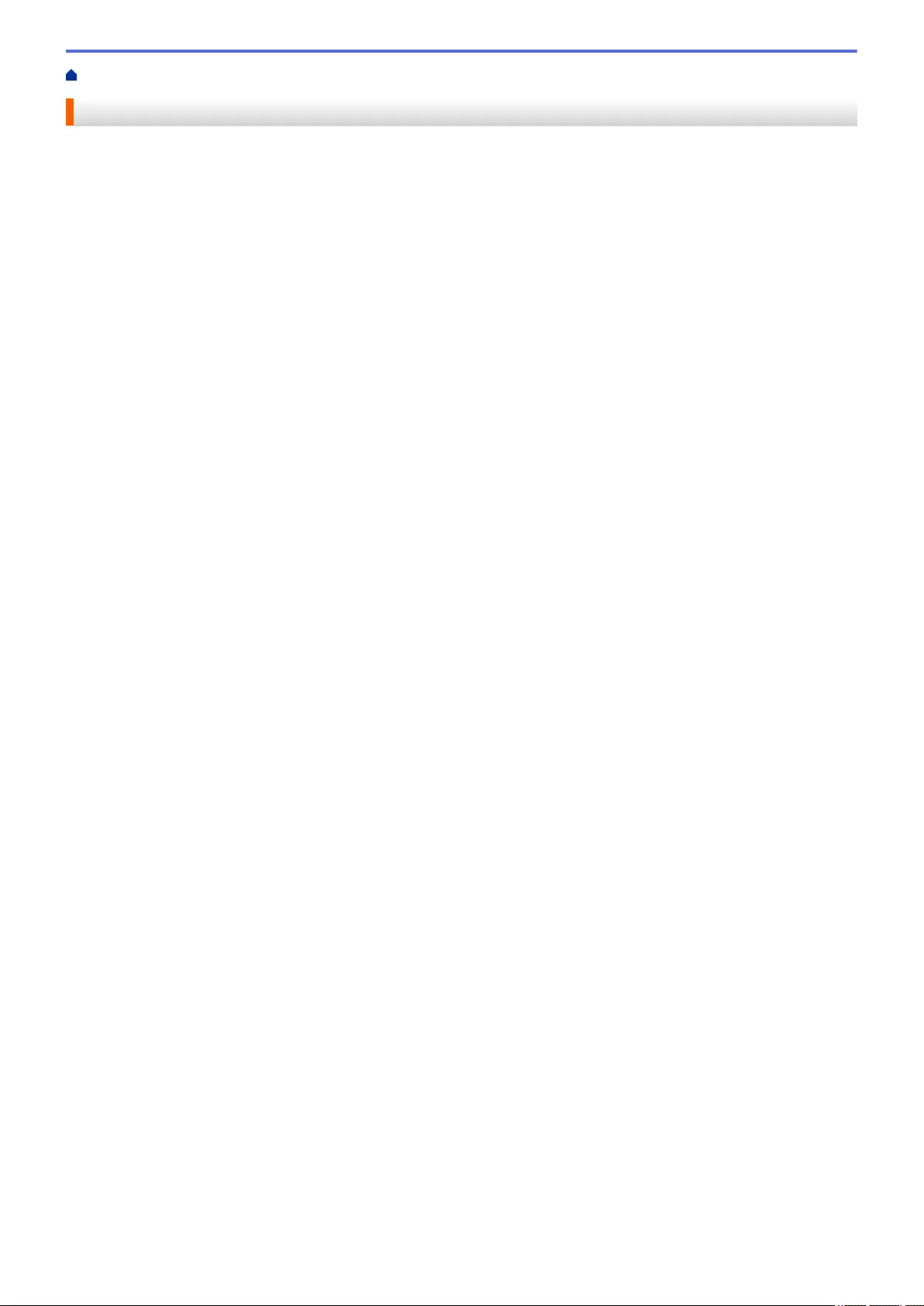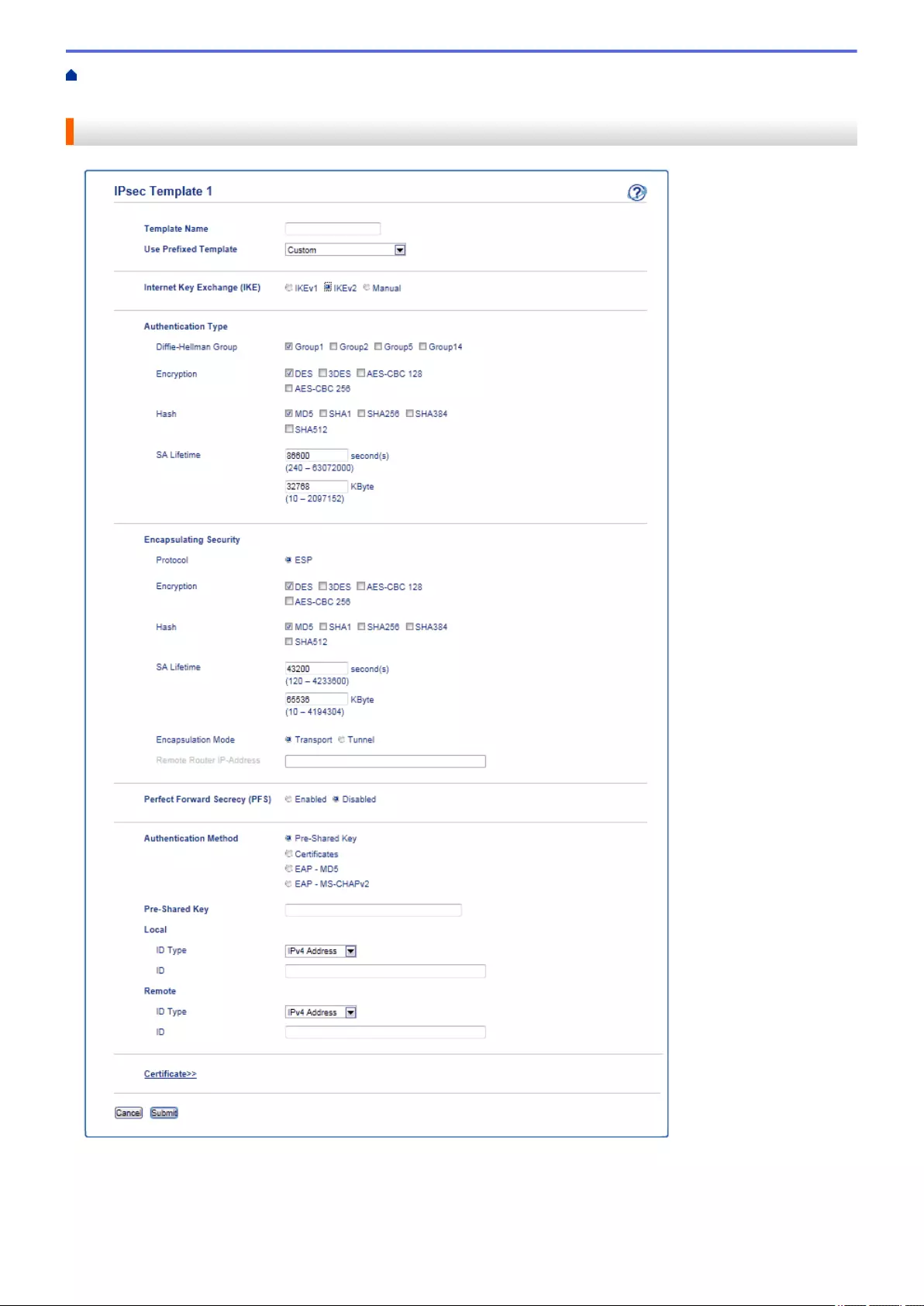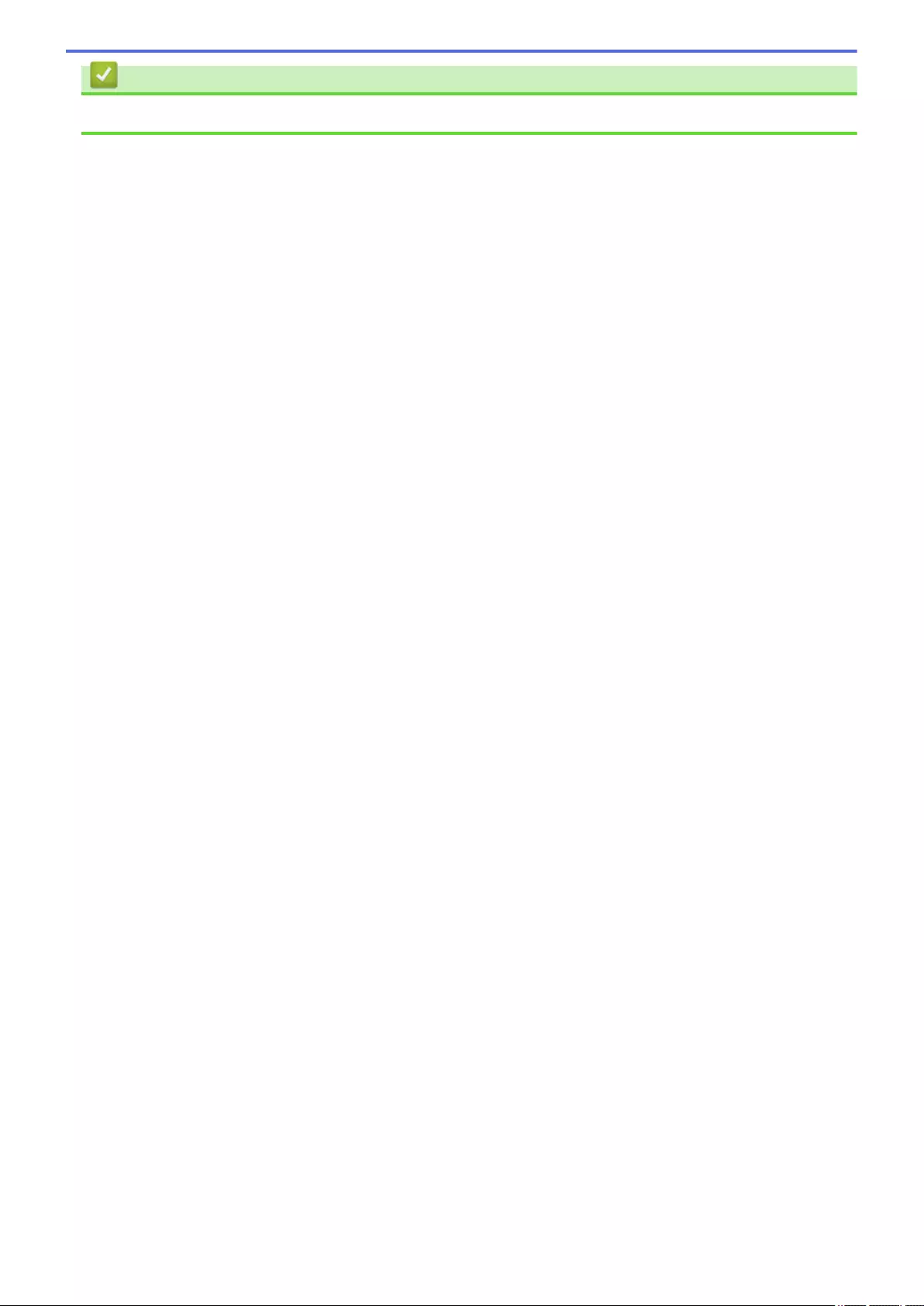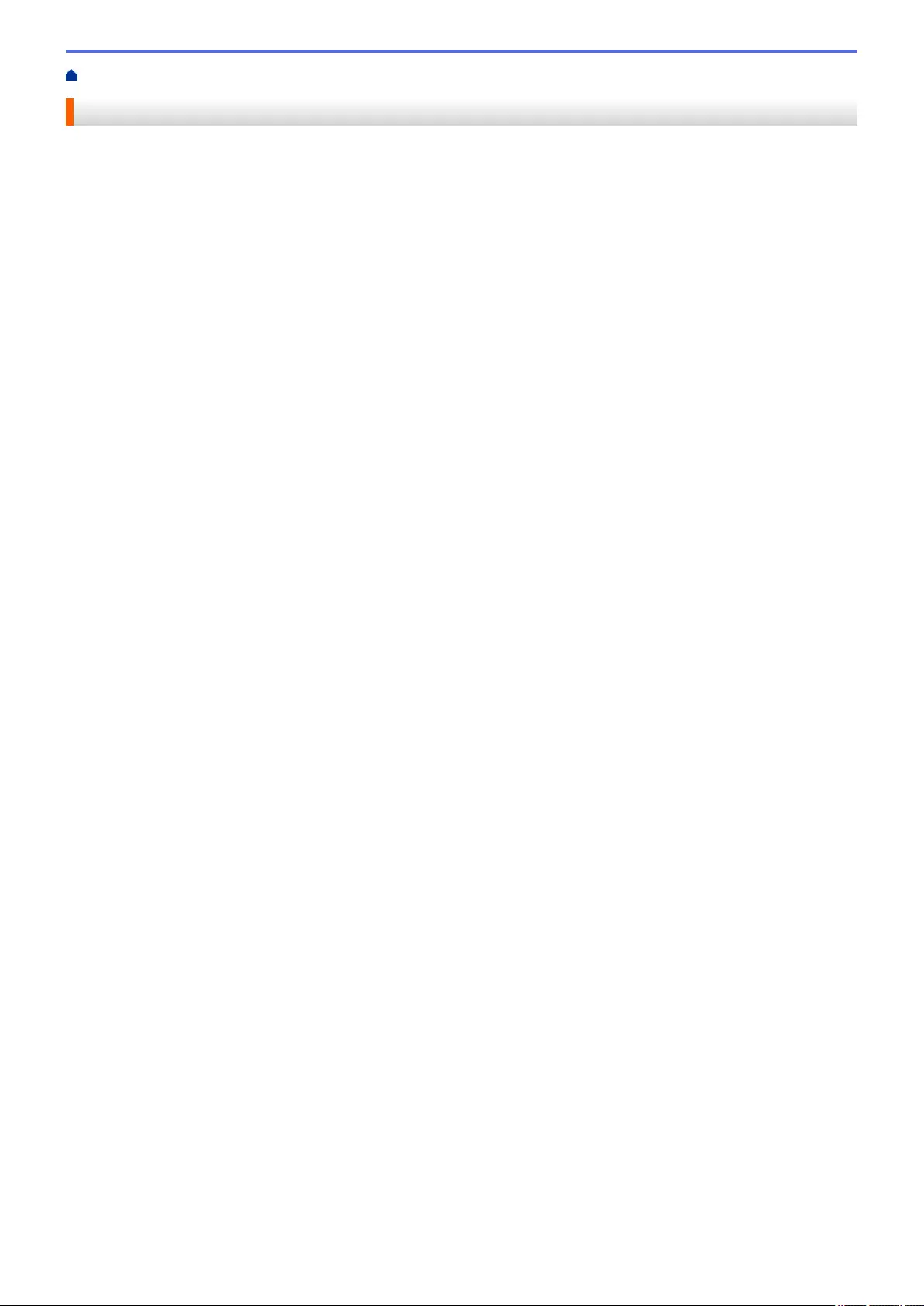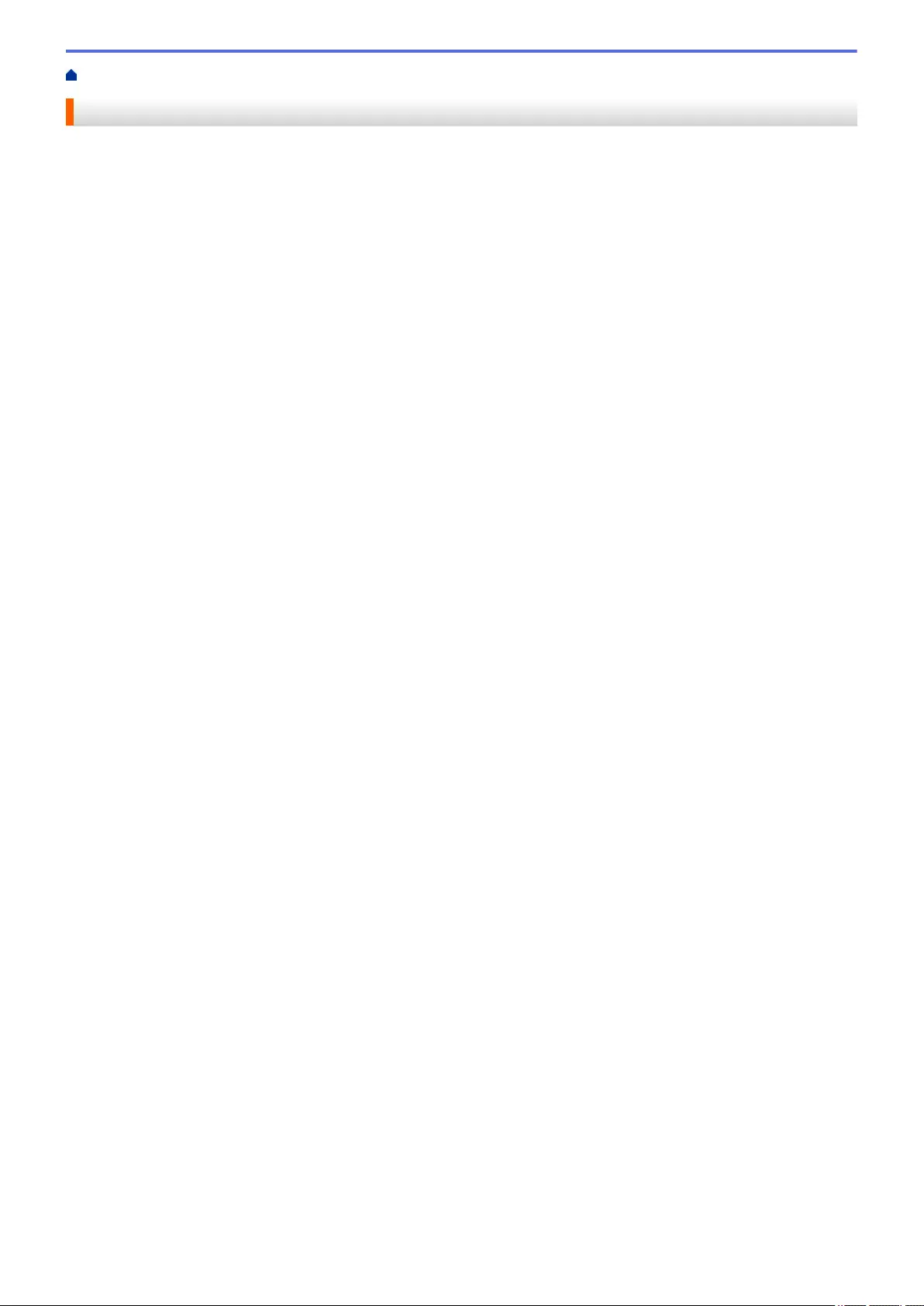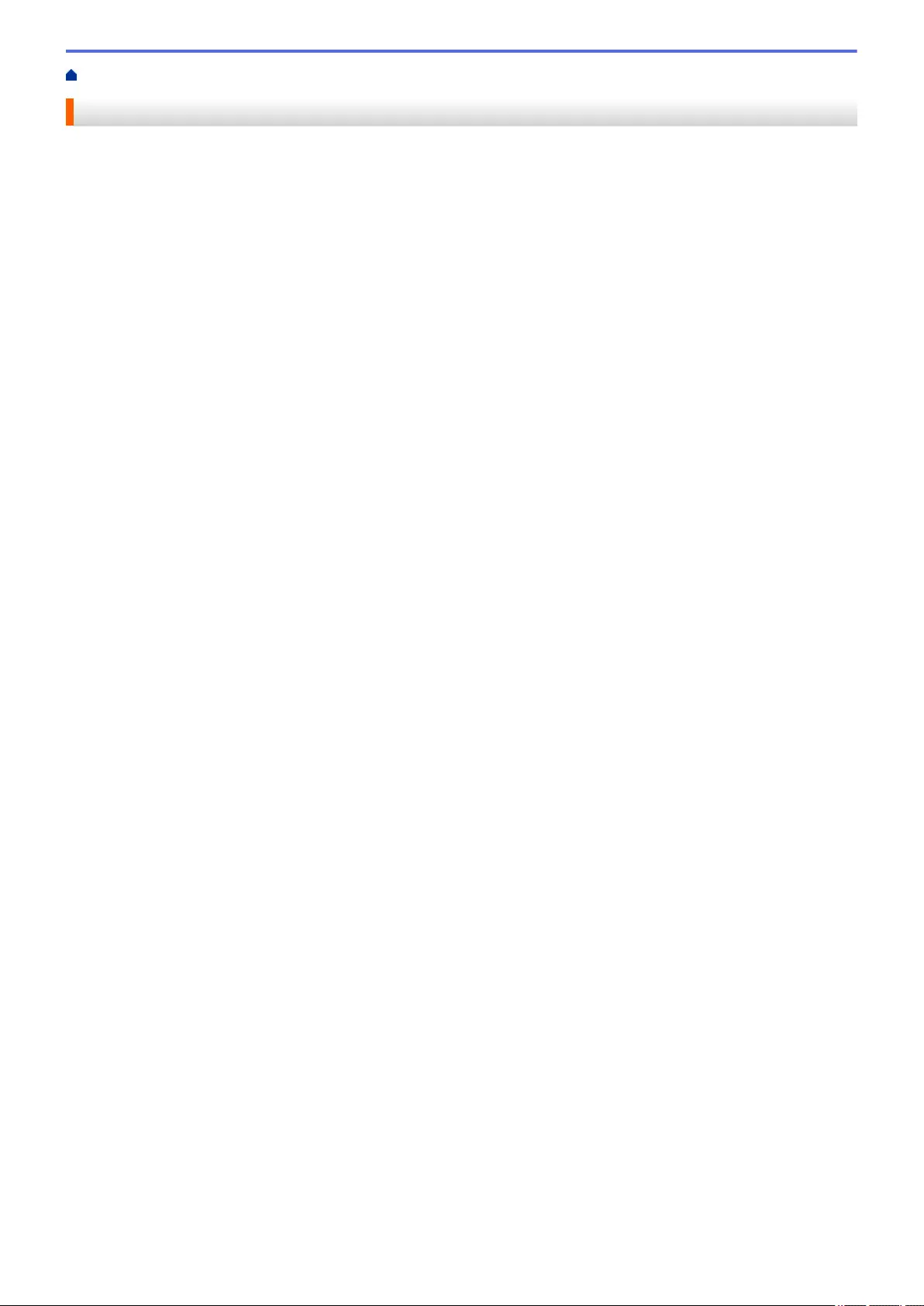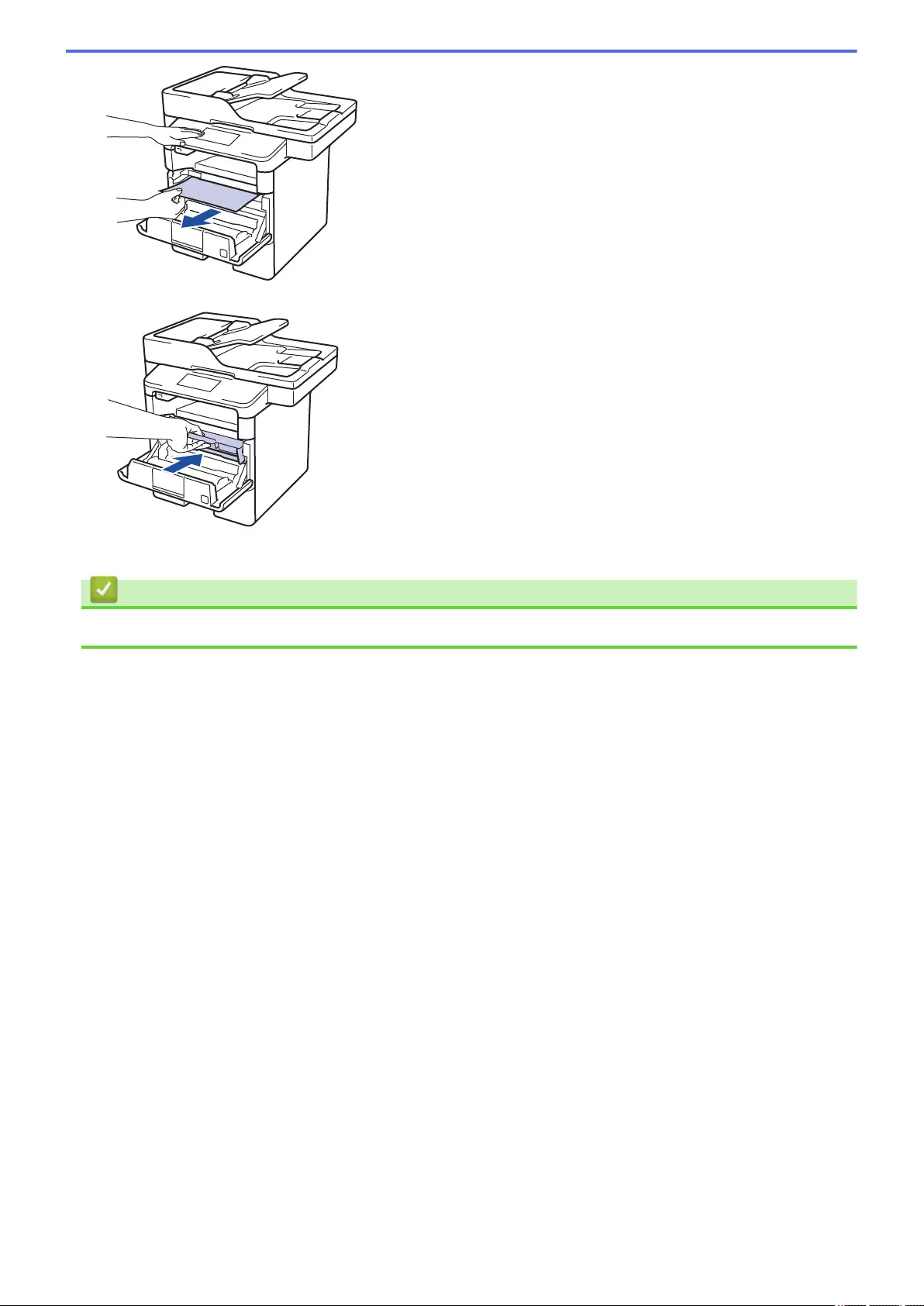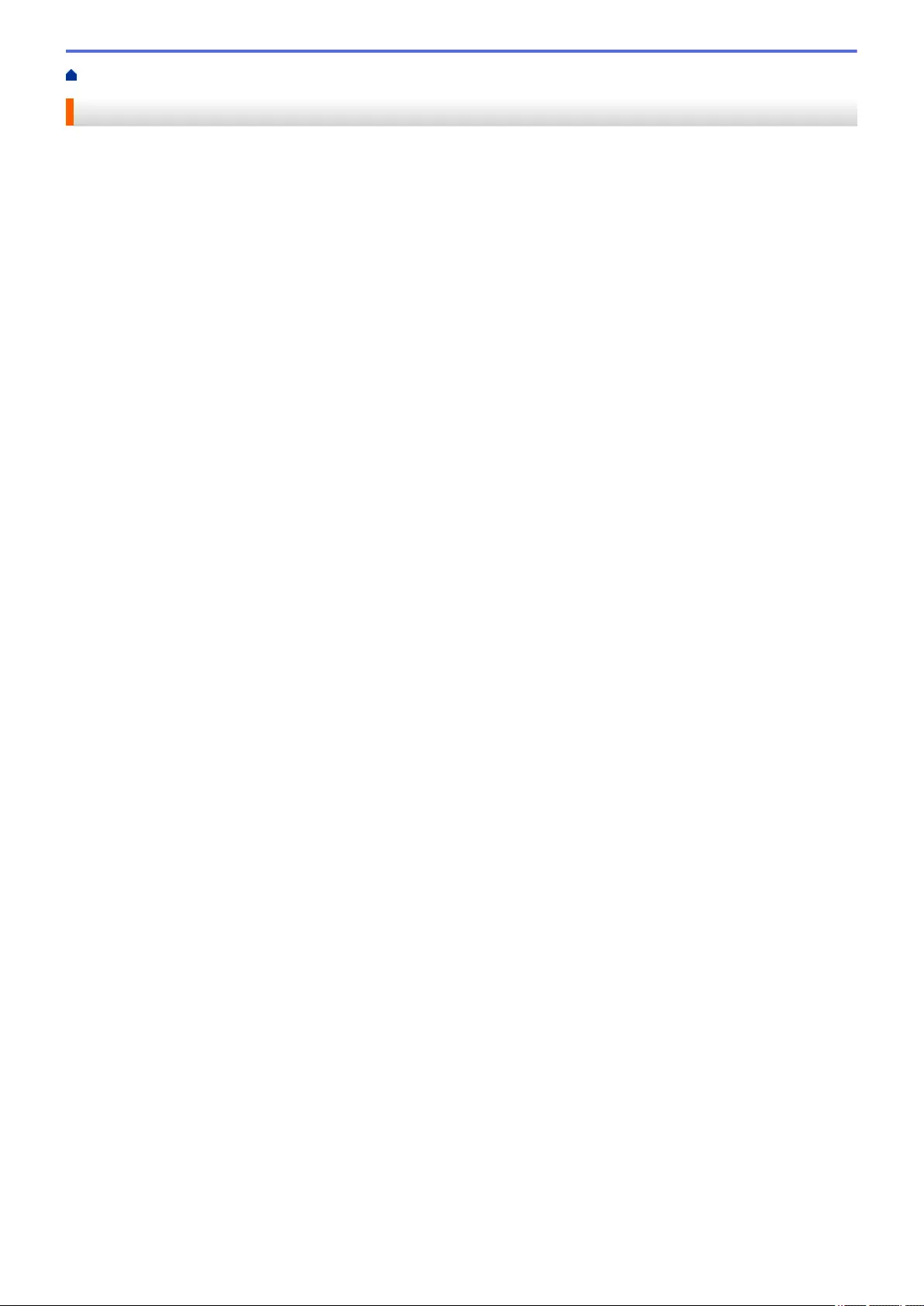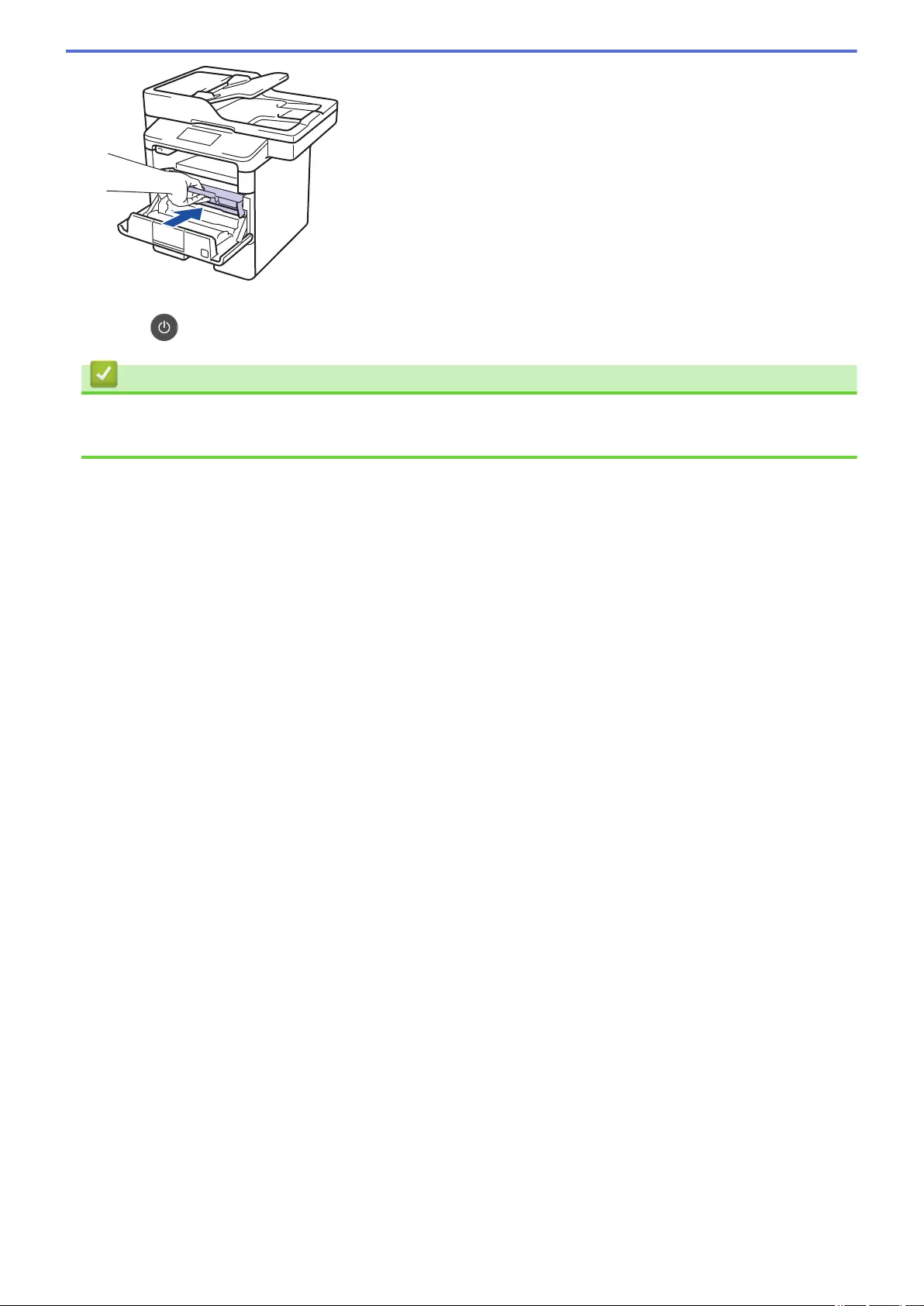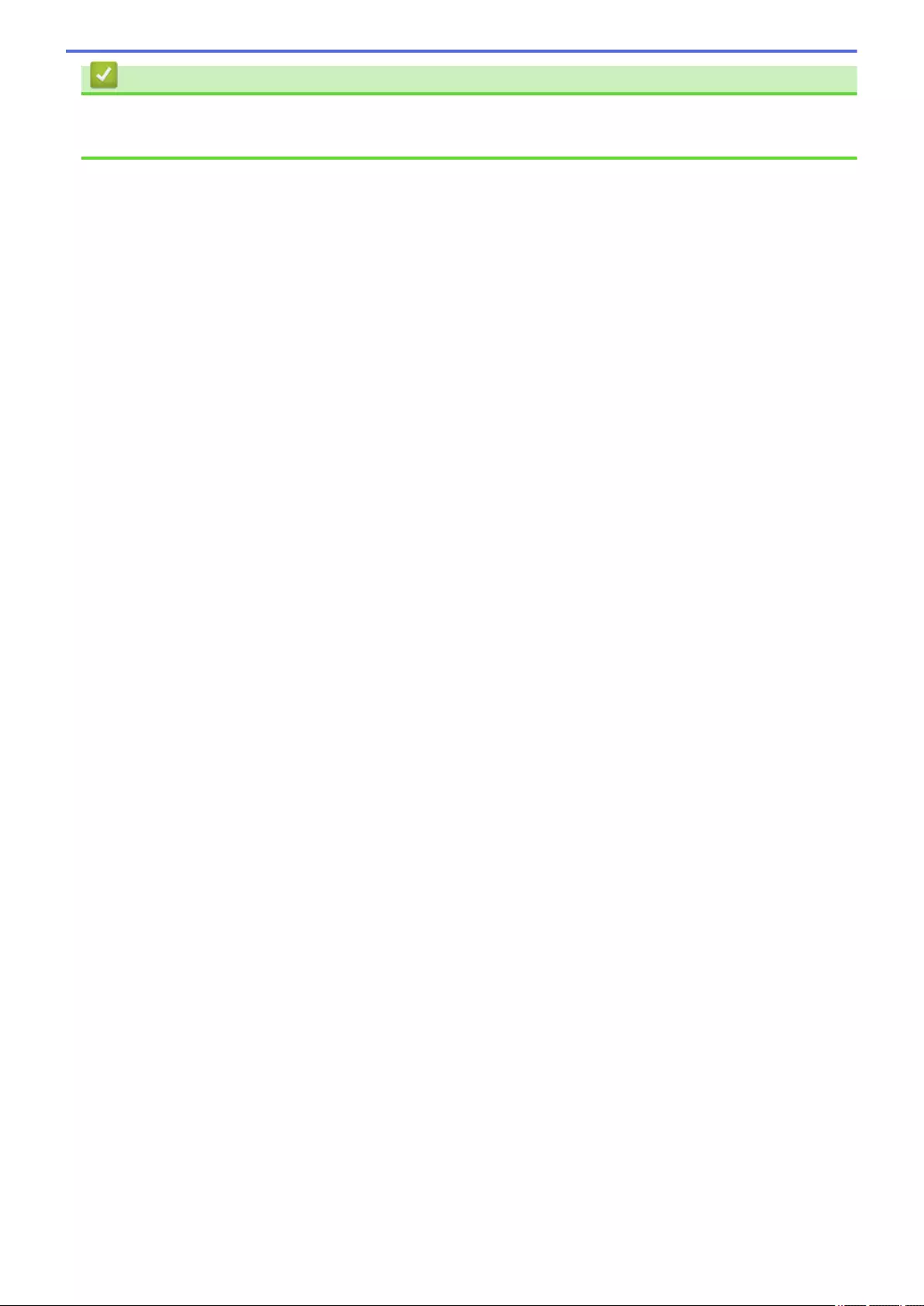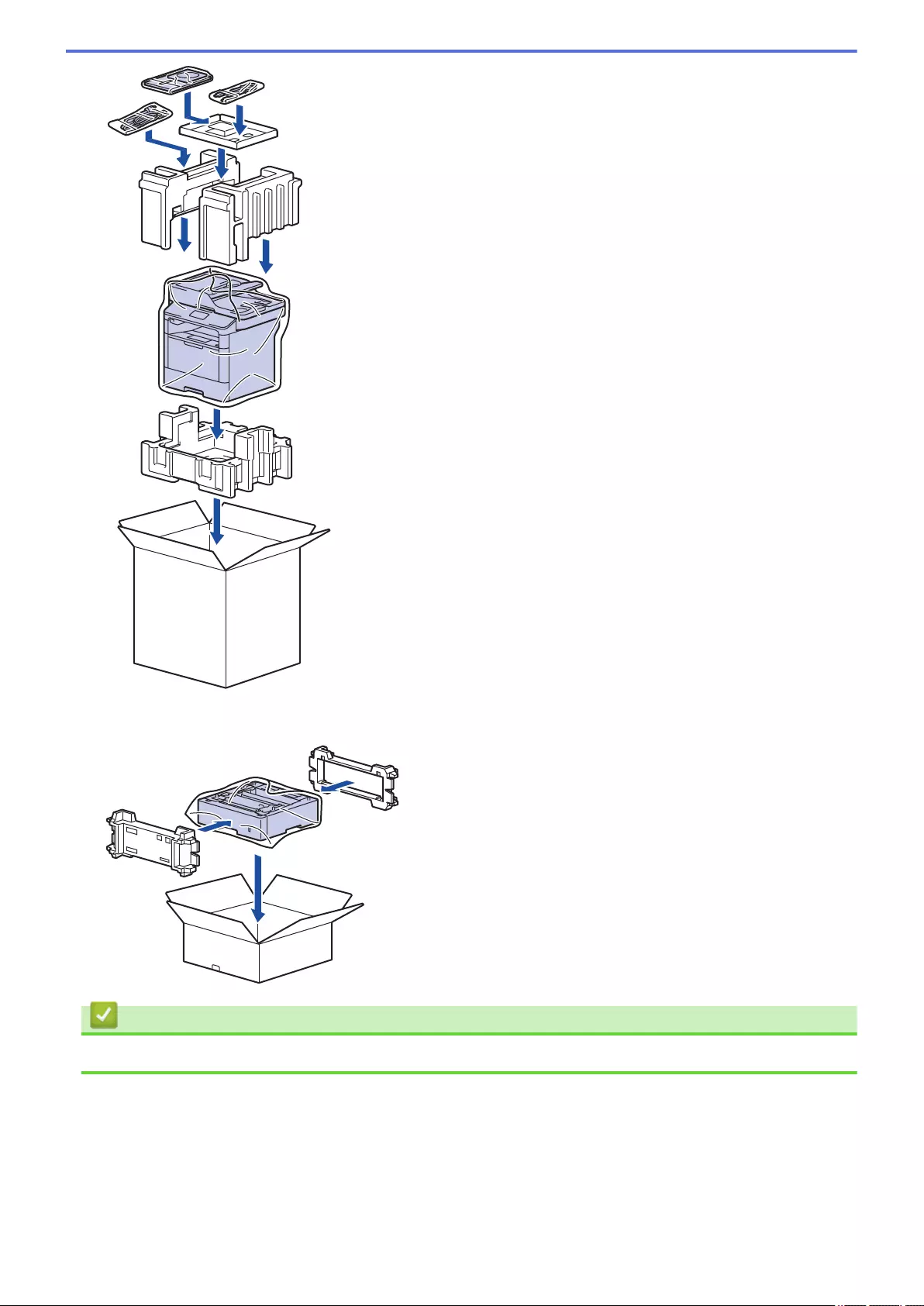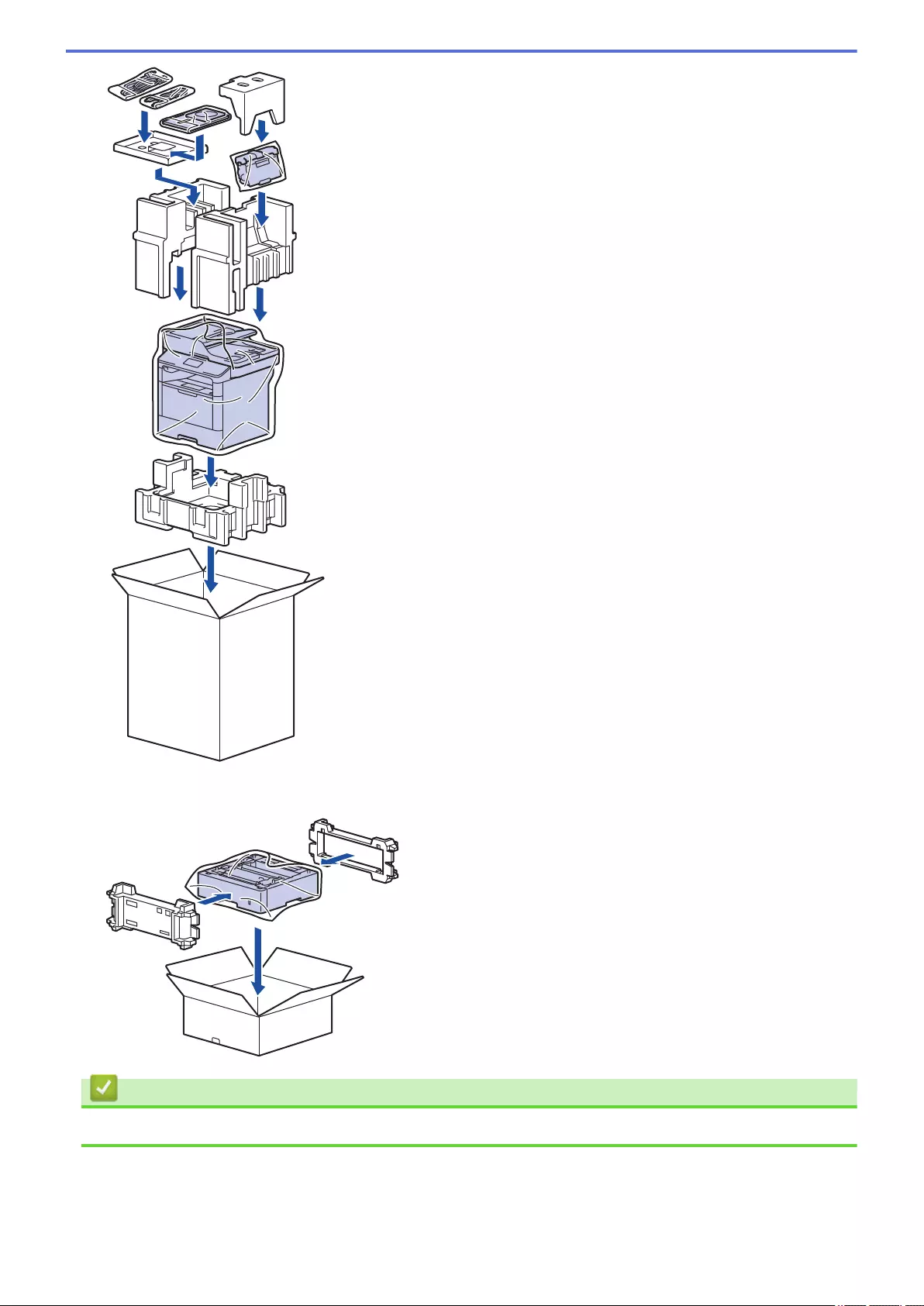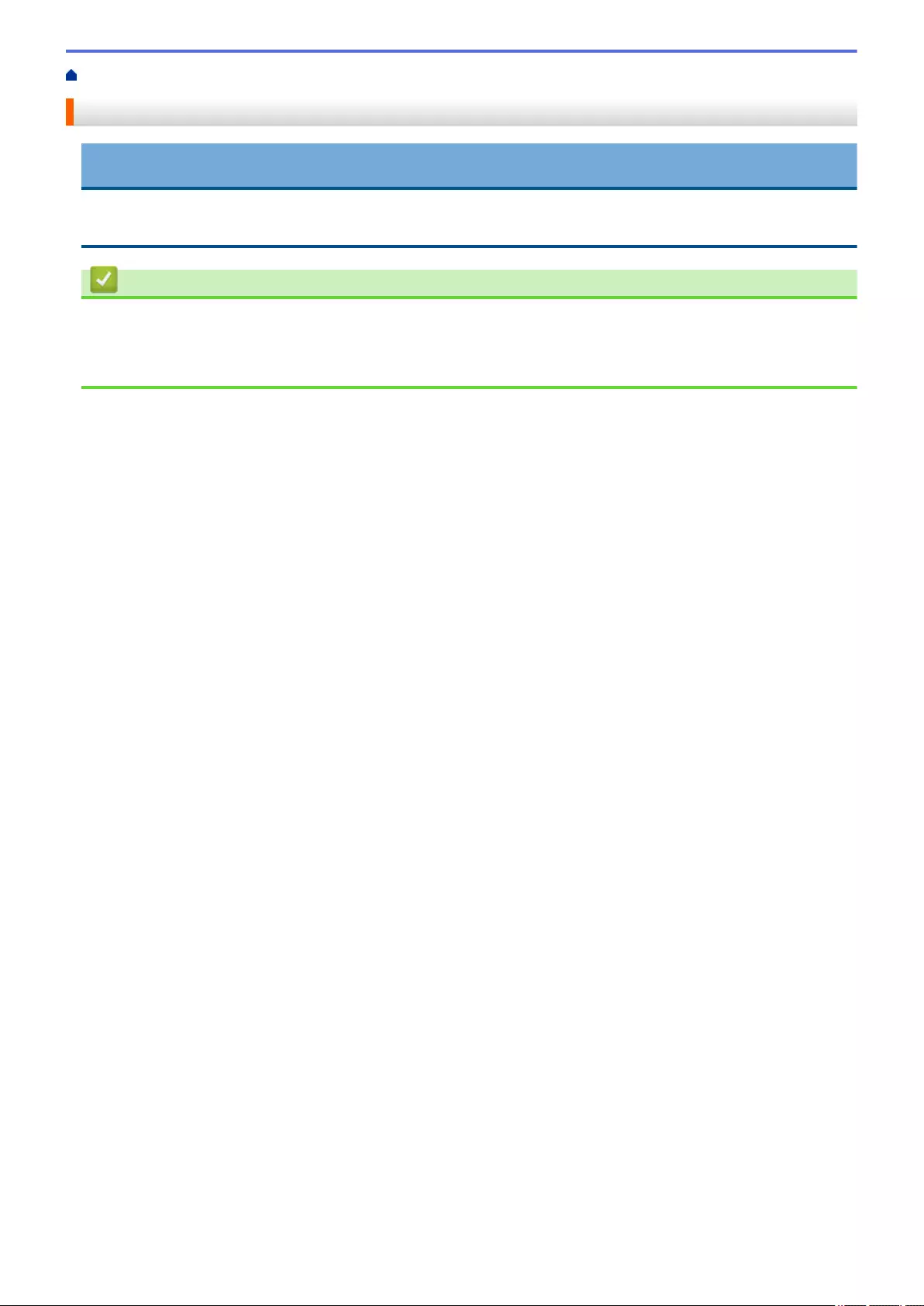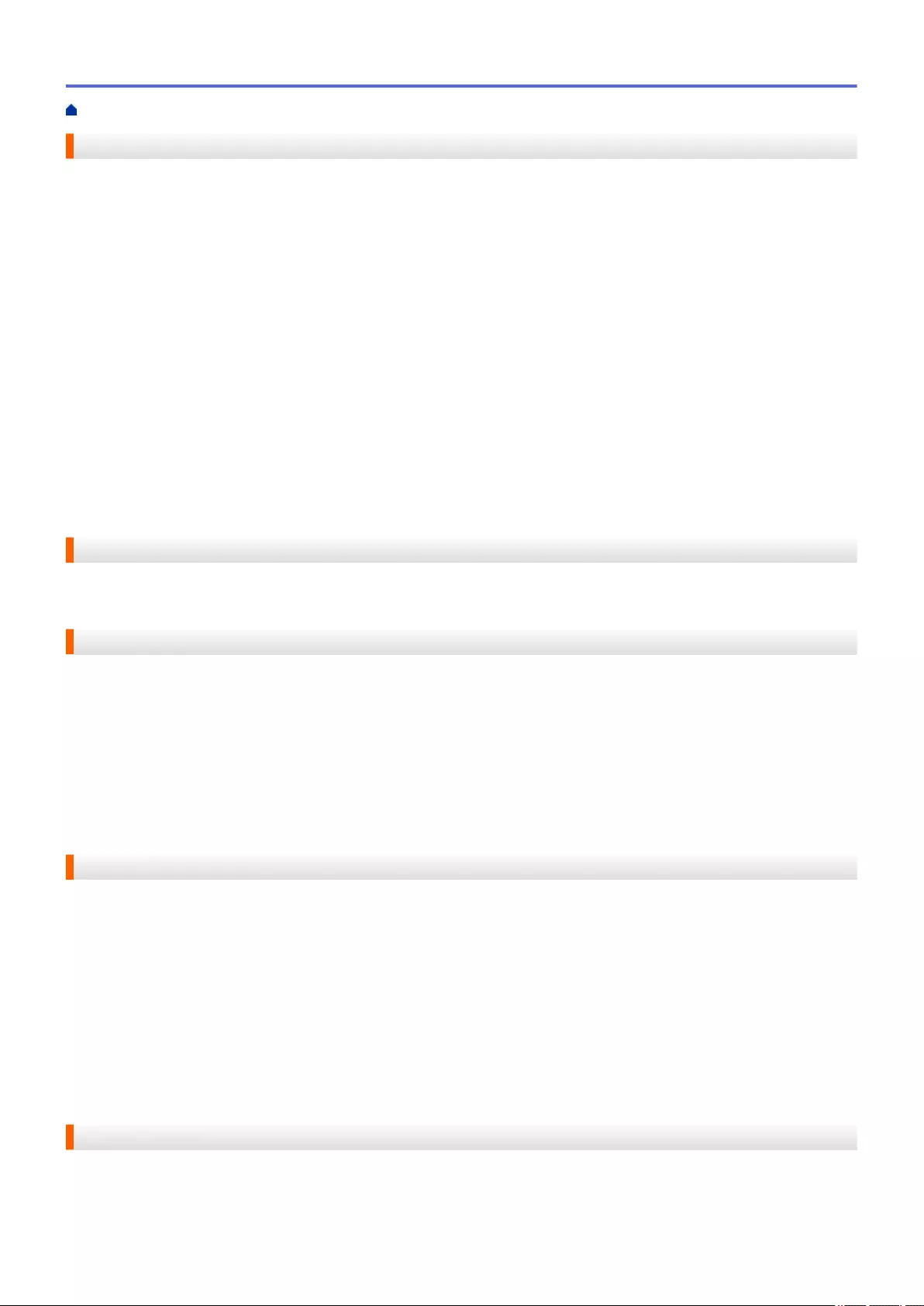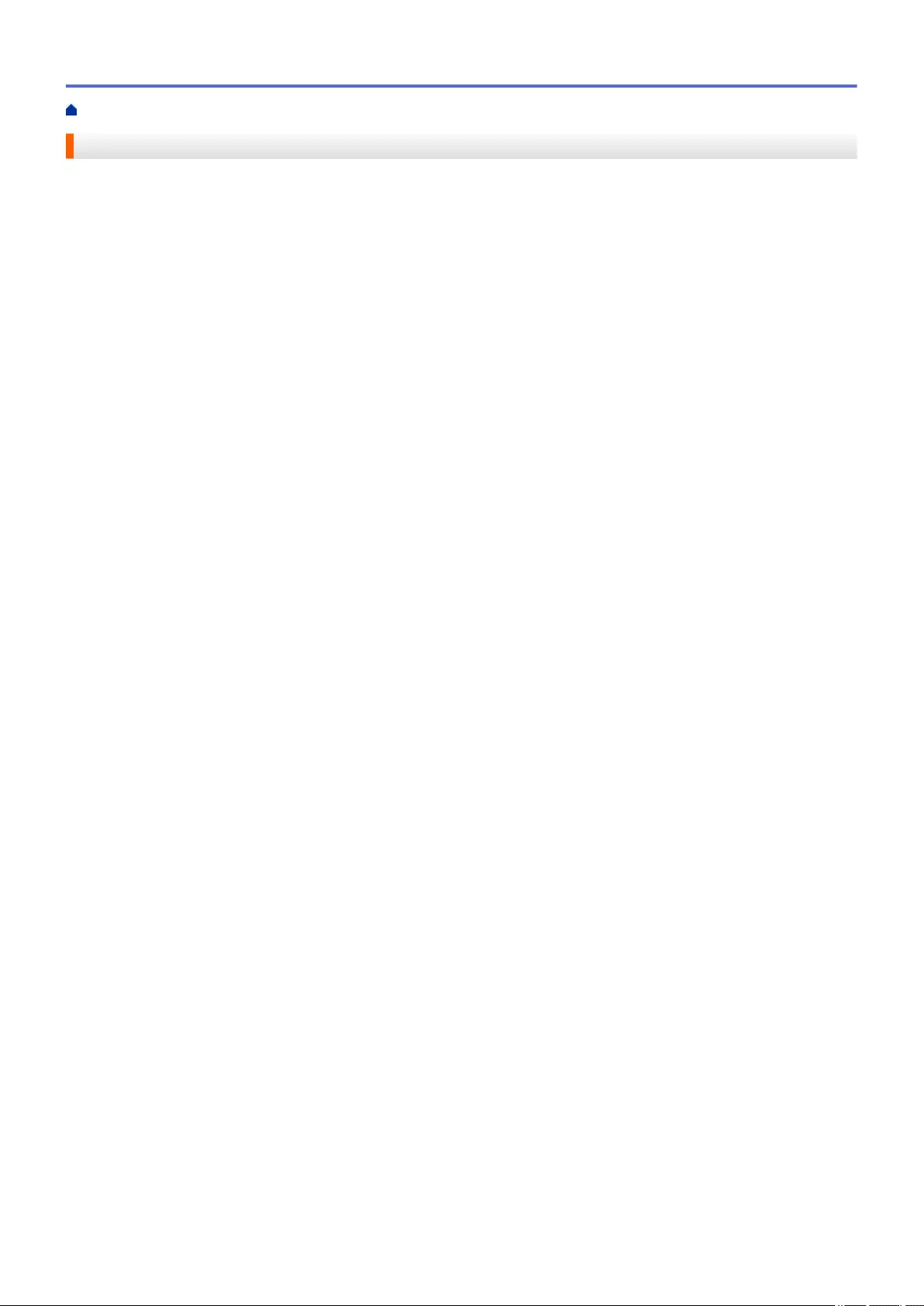Table of Contents
- Online User's Guide MFC-L6750DW/MFC-L6900DW
- Table of Contents
- Before You Use Your Brother Machine
- Introduction to Your Brother Machine
- Paper Handling
- Print
- Print from Your Computer (Windows)
- Print a Document (Windows)
- Print More Than One Page on a Single Sheet of Paper (N in 1) (Windows)
- Print as a Poster (Windows)
- Print on Both Sides of the Paper (Windows)
- Print as a Booklet (Windows)
- Secure Print (Windows)
- Use a Macro from Your Computer (Windows)
- Use a Preset Print Profile (Windows)
- Change the Default Print Settings (Windows)
- Print a Document Using the BR-Script3 Printer Driver (PostScript® 3™ Language Emulation) (Windows)
- Monitor the Status of the Machine from Your Computer (Windows)
- Print Settings (Windows)
- Print from Your Computer (Mac)
- Print a Document (Mac)
- Print on Both Sides of the Paper (Mac)
- Print More Than One Page on a Single Sheet of Paper (N in 1) (Mac)
- Secure Print (Mac)
- Print a Document Using the BR-Script3 Printer Driver (PostScript® 3™ language emulation) (Mac)
- Monitor the Status of the Machine from Your Computer (Mac)
- Print Options (Mac)
- Print One Page Duplicates on Different Types of Paper
- Cancel a Print Job
- Test Print
- Print from Your Computer (Windows)
- Scan
- Scan Using the Scan Button on Your Brother Machine
- Scan Photos and Graphics
- Save Scanned Data to a Folder as a PDF File
- Save Scanned Data to a USB Flash Drive
- Scan to an Editable Text File (OCR)
- Scan to Email Attachment
- Send Scanned Data to an Email Server
- Scan to FTP
- Scan to SSH FTP (SFTP)
- Scan to Network (Windows)
- Scan to SharePoint
- Web Services for Scanning on Your Network (Windows Vista SP2 or greater, Windows 7 and Windows 8)
- Change Scan Button Settings from ControlCenter4 (Windows)
- Change Scan Button Settings from ControlCenter2 (Mac)
- Configure Certificate for Signed PDF
- Disable Scanning from Your Computer
- Scan from Your Computer (Windows)
- Scan Using ControlCenter4 Home Mode (Windows)
- Scan Using ControlCenter4 Home Mode (Windows)
- Select Document Type Using ControlCenter4 Home Mode (Windows)
- Change Scan Size Using ControlCenter4 Home Mode (Windows)
- Crop a Scanned Image Using ControlCenter4 Home Mode (Windows)
- Print Scanned Data Using ControlCenter4 Home Mode (Windows)
- Scan to an Application Using ControlCenter4 Home Mode (Windows)
- Save Scanned Data to a Folder as a PDF File Using ControlCenter4 Home Mode (Windows)
- Scan Both Sides of a Document Automatically Using ControlCenter4 Home Mode (Windows)
- Scan Settings for ControlCenter4 Home Mode (Windows)
- Scan Using ControlCenter4 Home Mode (Windows)
- Scan Using ControlCenter4 Advanced Mode (Windows)
- Scan Photos and Graphics Using ControlCenter4 Advanced Mode (Windows)
- Save Scanned Data to a Folder as a PDF File Using ControlCenter4 Advanced Mode (Windows)
- Scan Both Sides of a Document Automatically Using ControlCenter4 Advanced Mode (Windows)
- Scan Both Sides of an ID Card Using ControlCenter4 Advanced Mode (Windows)
- Scan to Email Attachment Using ControlCenter4 Advanced Mode (Windows)
- Scan to an Editable Text File (OCR) Using ControlCenter4 Advanced Mode (Windows)
- Scan Settings for ControlCenter4 Advanced Mode (Windows)
- Scan Using Nuance™ PaperPort™ 14SE or Other Windows Applications
- Scan Using Windows Photo Gallery or Windows Fax and Scan
- Scan Using ControlCenter4 Home Mode (Windows)
- Scan from Your Computer (Mac)
- Scan Using ControlCenter2 (Mac)
- Scan Using ControlCenter2 (Mac)
- Save Scanned Data to a Folder as a PDF File Using ControlCenter2 (Mac)
- Scan Both Sides of a Document Automatically Using ControlCenter2 (Mac)
- Scan Both Sides of an ID Card Using ControlCenter2 (Mac)
- Scan to Email Attachment Using ControlCenter2 (Mac)
- Scan to an Editable Text File (OCR) Using ControlCenter2 (Mac)
- Scan Using TWAIN-Compliant Applications (Mac)
- Scan Using ControlCenter2 (Mac)
- Configure Scan Settings Using Web Based Management
- Scan Using the Scan Button on Your Brother Machine
- Copy
- Fax
- Send a Fax
- Send a Fax
- Send a 2-sided Fax from the ADF
- Send a Fax Manually
- Send a Fax at the End of a Conversation
- Send the Same Fax to More than One Recipient (Broadcasting)
- Send a Fax in Real Time
- Send a Fax at a Specified Time (Delayed Fax)
- Add a Cover Page to Your Fax
- Cancel a Fax in Progress
- Check and Cancel a Pending Fax
- Fax Options
- Receive a Fax
- Receive Mode Settings
- Receive Modes Overview
- Choose the Correct Receive Mode
- Set the Number of Rings Before the Machine Answers (Ring Delay)
- Set the F/T Ring Time (Pseudo/Double-ring)
- Set Easy Receive
- Shrink Page Size of an Oversized Incoming Fax
- Set the 2-sided Printing for Received Faxes
- Set the Fax Receive Stamp
- Receive a Fax at the End of a Telephone Conversation
- Memory Receive (Remote Fax) Options
- Forward Incoming Faxes to Another Machine
- Set the Machine to Dial a Cell Phone or Pager Number When Receiving Faxes
- Store Incoming Faxes in the Machine's Memory
- Change Memory Receive Options
- Turn Off Memory Receive
- Print a Fax Stored in the Machine's Memory
- Use PC-Fax Receive to Transfer Received Faxes to Your Computer (Windows only)
- Remote Fax Retrieval
- Receive Mode Settings
- Voice Operations and Fax Numbers
- Telephone Services and External Devices
- Fax Reports
- PC-FAX
- Send a Fax
- Print Data Directly from a USB Flash Drive
- Network
- Get Started
- Network Management Software and Utilities
- Additional Methods of Configuring Your Brother Machine for a Wireless Network
- Before Configuring Your Brother Machine for a Wireless Network
- Configure Your Machine for a Wireless Network
- Configure Your Machine for a Wireless Network Using the One Push Method of Wi-Fi Protected Setup™ (WPS)
- Configure Your Machine for a Wireless Network Using the PIN Method of Wi-Fi Protected Setup™ (WPS)
- Configure Your Machine for a Wireless Network in Ad-Hoc Mode (For IEEE 802.11b/g/n)
- Configure Your Machine for a Wireless Network Using the Machine's Control Panel Setup Wizard
- Configure Your Machine for a Wireless Network When the SSID Is Not Broadcast
- Configure Your Machine for an Enterprise Wireless Network
- Use Wi-Fi Direct®
- Print or Scan from Your Mobile Device Using Wi-Fi Direct
- Configure Your Wi-Fi Direct Network
- Wi-Fi Direct Network Configuration Overview
- Configure Your Wi-Fi Direct Network Using the One-Push Method
- Configure Your Wi-Fi Direct Network Using the One-Push Method of Wi-Fi Protected Setup™ (WPS)
- Configure Your Wi-Fi Direct Network Using the PIN Method
- Configure Your Wi-Fi Direct Network Using the PIN Method of Wi-Fi Protected Setup™ (WPS)
- Configure Your Wi-Fi Direct Network Manually
- Advanced Network Features
- Print the Network Configuration Report
- Configure Your Mail Server Settings Using Web Based Management
- Configure the Brother Machine for Email or Internet Fax (I-Fax)
- I-Fax Options
- Use the Send Fax to Server Feature
- Print the WLAN Report
- Configure and Operate LDAP Search
- Synchronize Time with the SNTP Server Using Web Based Management
- Technical Information for Advanced Users
- Security
- Lock the Machine Settings
- Network Security Features
- Before Using Network Security Features
- Secure Function Lock 3.0
- Use Active Directory Authentication
- Use LDAP Authentication
- Manage Your Network Machine Securely Using SSL/TLS
- Introduction to SSL/TLS
- Certificates and Web Based Management
- Supported Security Certificate Features
- Create and Install a Certificate
- Manage Multiple Certificates
- Manage Your Network Machine Securely Using Web Based Management
- Manage Your Network Machine Securely Using BRAdmin Professional (Windows)
- Print Documents Securely Using SSL/TLS
- Manage Your Network Machine Securely Using IPsec
- Send or Receive an Email Securely
- Use IEEE 802.1x Authentication for a Wired or a Wireless Network
- Store Print Log to Network
- Mobile/Web Connect
- ControlCenter
- Troubleshooting
- Error and Maintenance Messages
- Document Jams
- Paper Jams
- Printing Problems
- Improve the Print Quality
- Telephone and Fax Problems
- Network Problems
- Error Messages
- Use the Network Connection Repair Tool (Windows)
- Where Can I Find My Brother Machine's Network Settings?
- I Cannot Complete the Wireless Network Setup Configuration
- My Brother Machine Cannot Print, Scan, or PC-FAX Receive over the Network
- I Want to Check that My Network Devices are Working Correctly
- Other Problems
- Check the Machine Information
- Reset Your Brother Machine
- Routine Maintenance
- Machine Settings
- Change Machine Settings from the Control Panel
- In the Event of Power Failure (Memory Storage)
- General Settings
- Adjust the Machine's Volume
- Change for Daylight Saving Time Automatically
- Set Sleep Mode Countdown
- About Deep Sleep Mode
- Set Auto Power Off Mode
- Set the Date and Time
- Set the Time Zone
- Adjust the LCD Backlight Brightness
- Change How Long the LCD Backlight Stays On
- Set Your Station ID
- Set Tone or Pulse Dialing Mode (For Canada)
- Reduce Toner Consumption
- Add a Prefix to Every Fax Number
- Prevent Dialing a Wrong Number (Dial Restriction)
- Reduce Printing Noise
- Change the Language on the LCD
- Save Your Favorite Settings as a Shortcut
- Print Reports
- Settings and Features Tables
- Change Machine Settings from Your Computer
- Change Machine Settings from the Control Panel
- Appendix
- Glossary
Brother MFCL5800DW User Manual
Displayed below is the user manual for MFCL5800DW by Brother which is a product in the Multifunctionals category. This manual has pages.
Related Manuals

Online User's Guide
MFC-L6750DW
MFC-L6900DW
© 2019 Brother Industries, Ltd. All rights reserved.

Table of Contents
Before You Use Your Brother Machine ............................................................................................... 1
Applicable Models .......................................................................................................................................... 2
Definitions of Notes ........................................................................................................................................ 3
Notice - Disclaimer of Warranties (USA and Canada) ................................................................................... 4
Trademarks .................................................................................................................................................... 5
Important Note ............................................................................................................................................... 6
Introduction to Your Brother Machine................................................................................................. 7
Before Using Your Machine ........................................................................................................................... 8
Control Panel Overview ................................................................................................................................. 9
Touchscreen LCD Overview......................................................................................................................... 11
How to Navigate the Touchscreen LCD ....................................................................................................... 15
Settings Screen Overview............................................................................................................................ 17
Setting the Home Screen ............................................................................................................................. 18
Access Brother Utilities (Windows) .............................................................................................................. 19
Uninstall the Brother Software and Drivers (Windows) ...................................................................... 21
Paper Handling.................................................................................................................................... 22
Load Paper................................................................................................................................................... 23
Load and Print Using the Paper Tray ................................................................................................. 24
Load and Print Using the Multi‑purpose Tray (MP Tray) .................................................................... 31
Paper Settings.............................................................................................................................................. 39
Change the Paper Size and Paper Type............................................................................................ 40
Select the Tray to Be Used For Printing ............................................................................................. 41
Change the Check Paper Size Setting............................................................................................... 42
Recommended Print Media ......................................................................................................................... 43
Load Documents .......................................................................................................................................... 44
Load Documents in the Automatic Document Feeder (ADF) ............................................................. 45
Load Documents on the Scanner Glass............................................................................................. 47
Unscannable and Unprintable Areas ........................................................................................................... 48
Using Special Paper..................................................................................................................................... 49
Print ...................................................................................................................................................... 50
Print from Your Computer (Windows)........................................................................................................... 51
Print a Document (Windows).............................................................................................................. 52
Print More Than One Page on a Single Sheet of Paper (N in 1) (Windows)...................................... 54
Print as a Poster (Windows)............................................................................................................... 55
Print on Both Sides of the Paper (Windows) ...................................................................................... 56
Print as a Booklet (Windows) ............................................................................................................. 59
Secure Print (Windows)...................................................................................................................... 61
Use a Macro from Your Computer (Windows).................................................................................... 62
Use a Preset Print Profile (Windows) ................................................................................................. 63
Change the Default Print Settings (Windows) .................................................................................... 66
Print a Document Using the BR-Script3 Printer Driver (PostScript® 3™ Language Emulation)
(Windows) .......................................................................................................................................... 68
Monitor the Status of the Machine from Your Computer (Windows) .................................................. 69
Print Settings (Windows) .................................................................................................................... 70
Print from Your Computer (Mac) .................................................................................................................. 74
Home > Table of Contents
i

Print a Document (Mac) ..................................................................................................................... 75
Print on Both Sides of the Paper (Mac).............................................................................................. 76
Print More Than One Page on a Single Sheet of Paper (N in 1) (Mac) ............................................. 78
Secure Print (Mac) ............................................................................................................................. 79
Print a Document Using the BR-Script3 Printer Driver (PostScript® 3™ language emulation)
(Mac) .................................................................................................................................................. 80
Monitor the Status of the Machine from Your Computer (Mac) .......................................................... 81
Print Options (Mac) ............................................................................................................................ 83
Print One Page Duplicates on Different Types of Paper .............................................................................. 88
Cancel a Print Job........................................................................................................................................ 89
Test Print ...................................................................................................................................................... 90
Scan...................................................................................................................................................... 91
Scan Using the Scan Button on Your Brother Machine ............................................................................... 92
Scan Photos and Graphics................................................................................................................. 93
Save Scanned Data to a Folder as a PDF File .................................................................................. 95
Save Scanned Data to a USB Flash Drive......................................................................................... 97
Scan to an Editable Text File (OCR) .................................................................................................. 99
Scan to Email Attachment ................................................................................................................ 101
Send Scanned Data to an Email Server........................................................................................... 103
Scan to FTP ..................................................................................................................................... 105
Scan to SSH FTP (SFTP) ................................................................................................................ 110
Scan to Network (Windows) ............................................................................................................. 118
Scan to SharePoint .......................................................................................................................... 123
Web Services for Scanning on Your Network (Windows Vista SP2 or greater, Windows 7 and
Windows 8)....................................................................................................................................... 128
Change Scan Button Settings from ControlCenter4 (Windows)....................................................... 133
Change Scan Button Settings from ControlCenter2 (Mac) .............................................................. 136
Configure Certificate for Signed PDF ............................................................................................... 140
Disable Scanning from Your Computer ............................................................................................ 141
Scan from Your Computer (Windows)........................................................................................................ 142
Scan Using ControlCenter4 Home Mode (Windows) ....................................................................... 143
Scan Using ControlCenter4 Advanced Mode (Windows)................................................................. 160
Scan Using Nuance™ PaperPort™ 14SE or Other Windows Applications....................................... 177
Scan Using Windows Photo Gallery or Windows Fax and Scan...................................................... 182
Scan from Your Computer (Mac)................................................................................................................ 185
Scan Using ControlCenter2 (Mac) ................................................................................................... 186
Scan Using TWAIN-Compliant Applications (Mac)........................................................................... 199
Configure Scan Settings Using Web Based Management......................................................................... 202
Set the Scan File Name Using Web Based Management................................................................ 203
Set the Scan Job Email Report Using Web Based Management .................................................... 204
Copy ................................................................................................................................................... 205
Copy a Document ...................................................................................................................................... 206
Enlarge or Reduce Copied Images ............................................................................................................ 208
Make N in 1 Copies Using the Page Layout Feature ................................................................................. 209
Sort Copies ................................................................................................................................................ 211
Copy an ID Card ........................................................................................................................................ 212
Copy on Both Sides of the Paper (2-sided Copy) ...................................................................................... 213
Home > Table of Contents
ii

Copy Options ............................................................................................................................................. 215
Fax ...................................................................................................................................................... 217
Send a Fax................................................................................................................................................. 218
Send a Fax ....................................................................................................................................... 219
Send a 2-sided Fax from the ADF.................................................................................................... 221
Send a Fax Manually........................................................................................................................ 222
Send a Fax at the End of a Conversation ........................................................................................ 223
Send the Same Fax to More than One Recipient (Broadcasting) .................................................... 224
Send a Fax in Real Time .................................................................................................................. 226
Send a Fax at a Specified Time (Delayed Fax)................................................................................ 227
Add a Cover Page to Your Fax......................................................................................................... 228
Cancel a Fax in Progress ................................................................................................................. 231
Check and Cancel a Pending Fax.................................................................................................... 232
Fax Options ...................................................................................................................................... 233
Receive a Fax ............................................................................................................................................ 234
Receive Mode Settings .................................................................................................................... 235
Memory Receive (Remote Fax) Options .......................................................................................... 245
Remote Fax Retrieval....................................................................................................................... 253
Voice Operations and Fax Numbers .......................................................................................................... 259
Voice Operations .............................................................................................................................. 260
Store Fax Numbers .......................................................................................................................... 268
Set up Groups for Broadcasting ....................................................................................................... 272
Dial Access Codes and Credit Card Numbers ................................................................................. 276
Telephone Services and External Devices................................................................................................. 277
Voice Mail ......................................................................................................................................... 278
Distinctive Ring................................................................................................................................. 279
External TAD (Telephone Answering Device)................................................................................... 283
External and Extension Telephones ................................................................................................. 286
Multi-line Connections (PBX) ........................................................................................................... 292
Fax Reports................................................................................................................................................ 293
Print a Transmission Verification Report .......................................................................................... 294
Print a Fax Journal ........................................................................................................................... 295
PC-FAX ...................................................................................................................................................... 296
PC-FAX for Windows........................................................................................................................ 297
PC-FAX for Mac ............................................................................................................................... 320
Print Data Directly from a USB Flash Drive .................................................................................... 323
Compatible USB Flash Drives.................................................................................................................... 324
Print Data Directly from a USB Flash Drive or Digital Camera Supporting Mass Storage......................... 325
Create a PRN File for Direct Printing (Windows) ....................................................................................... 327
Network .............................................................................................................................................. 328
Get Started................................................................................................................................................. 329
Supported Basic Network Features.................................................................................................. 330
Network Management Software and Utilities ............................................................................................. 331
Learn about Network Management Software and Utilities ............................................................... 332
Additional Methods of Configuring Your Brother Machine for a Wireless Network .................................... 333
Before Configuring Your Brother Machine for a Wireless Network................................................... 334
Configure Your Machine for a Wireless Network.............................................................................. 335
Home > Table of Contents
iii

Configure Your Machine for a Wireless Network Using the One Push Method of Wi-Fi Protected
Setup™ (WPS).................................................................................................................................. 336
Configure Your Machine for a Wireless Network Using the PIN Method of Wi-Fi Protected
Setup™ (WPS).................................................................................................................................. 337
Configure Your Machine for a Wireless Network in Ad-Hoc Mode (For IEEE 802.11b/g/n) ............. 340
Configure Your Machine for a Wireless Network Using the Machine's Control Panel Setup Wizard344
Configure Your Machine for a Wireless Network When the SSID Is Not Broadcast ........................ 346
Configure Your Machine for an Enterprise Wireless Network .......................................................... 348
Use Wi-Fi Direct®............................................................................................................................. 350
Advanced Network Features...................................................................................................................... 359
Print the Network Configuration Report............................................................................................ 360
Configure Your Mail Server Settings Using Web Based Management............................................. 361
Configure the Brother Machine for Email or Internet Fax (I-Fax) ..................................................... 364
I-Fax Options.................................................................................................................................... 379
Use the Send Fax to Server Feature................................................................................................ 384
Print the WLAN Report..................................................................................................................... 388
Configure and Operate LDAP Search .............................................................................................. 391
Synchronize Time with the SNTP Server Using Web Based Management ..................................... 394
Technical Information for Advanced Users................................................................................................. 398
Gigabit Ethernet (Wired Network Only) ............................................................................................ 399
Reset the Network Settings to the Factory Settings......................................................................... 401
Security .............................................................................................................................................. 402
Lock the Machine Settings ......................................................................................................................... 403
About Using Setting Lock ................................................................................................................. 404
Network Security Features......................................................................................................................... 408
Before Using Network Security Features ......................................................................................... 409
Secure Function Lock 3.0................................................................................................................. 410
Use Active Directory Authentication ................................................................................................. 417
Use LDAP Authentication................................................................................................................. 422
Manage Your Network Machine Securely Using SSL/TLS............................................................... 426
Manage Your Network Machine Securely Using IPsec .................................................................... 459
Send or Receive an Email Securely................................................................................................. 477
Use IEEE 802.1x Authentication for a Wired or a Wireless Network ............................................... 483
Store Print Log to Network ............................................................................................................... 488
Mobile/Web Connect......................................................................................................................... 494
Use Web Services from Your Brother Machine.......................................................................................... 495
Use Brother Web Services......................................................................................................................... 496
Print with Google Cloud Print™.................................................................................................................. 498
Print with AirPrint........................................................................................................................................ 499
Print with Mopria™...................................................................................................................................... 500
Print and Scan from a Mobile Device......................................................................................................... 501
Print and Scan Using Near-Field Communication (NFC)........................................................................... 502
ControlCenter .................................................................................................................................... 503
ControlCenter4 (Windows)......................................................................................................................... 504
Change the Operation Mode in ControlCenter4 (Windows) ............................................................ 505
Scan Using ControlCenter4 Home Mode (Windows) ....................................................................... 507
Scan Using ControlCenter4 Advanced Mode (Windows)................................................................. 508
Home > Table of Contents
iv

Set Up the Brother Machine Using ControlCenter4 (Windows) ....................................................... 509
Create a Custom Tab Using ControlCenter4 Advanced Mode (Windows)....................................... 511
ControlCenter2 (Mac)................................................................................................................................. 513
Scan Using ControlCenter2 (Mac) ................................................................................................... 514
Set Up the Brother Machine Using ControlCenter2 (Mac) ............................................................... 515
Troubleshooting ................................................................................................................................ 517
Error and Maintenance Messages ............................................................................................................. 518
Transfer Your Faxes or Fax Journal Report ..................................................................................... 524
Document Jams ......................................................................................................................................... 528
Document is Jammed in the Top of the ADF Unit ............................................................................ 529
Document is Jammed under the Document Cover .......................................................................... 530
Remove Small Scraps of Paper Jammed in the ADF ...................................................................... 531
Paper Jams ................................................................................................................................................ 532
Paper is Jammed in the MP tray ...................................................................................................... 533
Paper is Jammed in the Paper Tray ................................................................................................. 534
Paper is Jammed in the Back of the Machine .................................................................................. 536
Paper is Jammed inside the Machine .............................................................................................. 538
Paper is Jammed in the 2-sided Tray............................................................................................... 540
Printing Problems....................................................................................................................................... 543
Improve the Print Quality............................................................................................................................ 545
Telephone and Fax Problems .................................................................................................................... 549
Set Dial Tone Detection.................................................................................................................... 553
Set Telephone Line Compatibility for Interference and VoIP Systems ............................................. 554
Network Problems...................................................................................................................................... 555
Error Messages ................................................................................................................................ 556
Use the Network Connection Repair Tool (Windows) ...................................................................... 558
Where Can I Find My Brother Machine's Network Settings? ........................................................... 559
I Cannot Complete the Wireless Network Setup Configuration........................................................ 560
My Brother Machine Cannot Print, Scan, or PC-FAX Receive over the Network............................. 562
I Want to Check that My Network Devices are Working Correctly ................................................... 564
Other Problems .......................................................................................................................................... 565
Check the Machine Information ................................................................................................................. 567
Reset Your Brother Machine ...................................................................................................................... 568
Reset Functions Overview ............................................................................................................... 569
Routine Maintenance ........................................................................................................................ 570
Replace Supplies ....................................................................................................................................... 571
Replace the Toner Cartridge ............................................................................................................ 573
Replace the Drum Unit ..................................................................................................................... 576
Reset the Drum Counter .................................................................................................................. 579
Clean the Machine ..................................................................................................................................... 580
Clean the Scanner............................................................................................................................ 582
Clean the Touchscreen LCD ............................................................................................................ 583
Clean the Corona Wire..................................................................................................................... 584
Clean the Drum Unit......................................................................................................................... 586
Clean the Paper Pick-up Rollers ...................................................................................................... 590
Check the Remaining Life of Parts............................................................................................................. 592
Pack and Ship Your Machine ..................................................................................................................... 593
Home > Table of Contents
v

Pack the Machine and the Toner Cartridge Together ....................................................................... 594
Pack the Machine and the Toner Cartridge Separately.................................................................... 596
Replace Periodic Maintenance Parts ......................................................................................................... 599
Machine Settings............................................................................................................................... 600
Change Machine Settings from the Control Panel ..................................................................................... 601
In the Event of Power Failure (Memory Storage) ............................................................................. 602
General Settings............................................................................................................................... 603
Save Your Favorite Settings as a Shortcut....................................................................................... 620
Print Reports .................................................................................................................................... 623
Settings and Features Tables........................................................................................................... 626
Change Machine Settings from Your Computer......................................................................................... 644
Change Machine Settings Using Web Based Management ............................................................ 645
Change the Machine Settings Using Remote Setup ........................................................................ 650
Appendix............................................................................................................................................ 662
Specifications ............................................................................................................................................. 663
How to Enter Text on Your Brother Machine .............................................................................................. 670
Supplies ..................................................................................................................................................... 671
Accessories................................................................................................................................................ 672
Brother Numbers........................................................................................................................................ 673
FAQs (Frequently Asked Questions)................................................................................................ 674
For Customer Service ...................................................................................................................... 675
Glossary............................................................................................................................................. 676
Home > Table of Contents
vi

Home > Before You Use Your Brother Machine > Definitions of Notes
Definitions of Notes
We use the following symbols and conventions throughout this User's Guide:
WARNING WARNING indicates a potentially hazardous situation which, if not avoided, could
result in death or serious injuries.
CAUTION CAUTION indicates a potentially hazardous situation which, if not avoided, may
result in minor or moderate injuries.
IMPORTANT IMPORTANT indicates a potentially hazardous situation which, if not avoided, may
result in damage to property or loss of product functionality.
NOTE NOTE specifies the operating environment, conditions for installation, or special
conditions of use.
Tips icons indicate helpful hints and supplementary information.
Electrical Hazard icons alert you to possible electrical shock.
Fire Hazard icons alert you to the possibility of a fire.
Hot Surface icons warn you not to touch hot machine parts.
Prohibition icons indicate actions you must not perform.
Bold Bold style identifies buttons on the machine's control panel or computer screen.
Italics Italicized style emphasizes an important point or refers you to a related topic.
Courier New Courier New font identifies messages shown on the machine's LCD.
Related Information
•Before You Use Your Brother Machine
3

Home > Before You Use Your Brother Machine > Notice - Disclaimer of Warranties (USA and Canada)
Notice - Disclaimer of Warranties (USA and Canada)
BROTHER’S LICENSOR(S), AND THEIR DIRECTORS, OFFICERS, EMPLOYEES OR AGENTS
(COLLECTIVELY BROTHER’S LICENSOR) MAKE NO WARRANTIES, EXPRESS OR IMPLIED, INCLUDING
WITHOUT LIMITATION THE IMPLIED WARRANTIES OF MERCHANTABILITY AND FITNESS FOR A
PARTICULAR PURPOSE, REGARDING THE SOFTWARE. BROTHER’S LICENSOR(S) DOES NOT
WARRANT, GUARANTEE OR MAKE ANY REPRESENTATIONS REGARDING THE USE OR THE RESULTS
OF THE USE OF THE SOFTWARE IN TERMS OF ITS CORRECTNESS, ACCURACY, RELIABILITY,
CURRENTNESS OR OTHERWISE. THE ENTIRE RISK AS TO THE RESULTS AND PERFORMANCE OF THE
SOFTWARE IS ASSUMED BY YOU. THE EXCLUSION OF IMPLIED WARRANTIES IS NOT PERMITTED BY
SOME STATES IN THE USA AND SOME PROVINCES IN CANADA. THE ABOVE EXCLUSION MAY NOT
APPLY TO YOU.
IN NO EVENT WILL BROTHER’S LICENSOR(S) BE LIABLE TO YOU FOR ANY CONSEQUENTIAL,
INCIDENTAL OR INDIRECT DAMAGES (INCLUDING DAMAGES FOR LOSS OF BUSINESS PROFITS,
BUSINESS INTERRUPTION, LOSS OF BUSINESS INFORMATION, AND THE LIKE) ARISING OUT OF THE
USE OR INABILITY TO USE THE SOFTWARE EVEN IF BROTHER’S LICENSOR HAS BEEN ADVISED OF
THE POSSIBILITY OF SUCH DAMAGES. BECAUSE SOME STATES IN THE USA AND SOME PROVINCES IN
CANADA DO NOT ALLOW THE EXCLUSION OR LIMITATION OF LIABILITY FOR CONSEQUENTIAL OR
INCIDENTAL DAMAGES, THE ABOVE LIMITATIONS MAY NOT APPLY TO YOU. IN ANY EVENT BROTHER’S
LICENSOR’S LIABILITY TO YOU FOR ACTUAL DAMAGES FROM ANY CAUSE WHATSOEVER, AND
REGARDLESS OF THE FORM OF THE ACTION (WHETHER IN CONTRACT, TORT (INCLUDING
NEGLIGENCE), PRODUCT LIABILITY OR OTHERWISE), WILL BE LIMITED TO $50.
Related Information
•Before You Use Your Brother Machine
4

Home > Before You Use Your Brother Machine > Trademarks
Trademarks
BROTHER is either a trademark or a registered trademark of Brother Industries, Ltd.
Microsoft, Windows, Windows Vista, Windows Server, SharePoint, Internet Explorer, Outlook, PowerPoint, Active
Directory, OneNote, Windows phone and OneDrive are either registered trademarks or trademarks of Microsoft
Corporation in the United States and/or other countries.
Apple, Mac, Safari, iPad, iPhone, iPod touch and OS X are trademarks of Apple Inc., registered in the United
States and other countries.
AirPrint is a trademark of Apple Inc.
Nuance and PaperPort are trademarks or registered trademarks of Nuance Communications, Inc. or its affiliates
in the United States and/or other countries.
PostScript and PostScript 3 are either registered trademarks or trademarks of Adobe Systems Incorporated in
the United States and/or other countries.
Wi-Fi CERTIFIED, Wi-Fi, Wi-Fi Alliance, Wi-Fi Direct and Wi-Fi Protected Access are registered trademarks of
Wi-Fi Alliance®.
WPA, WPA2, Wi-Fi Protected Setup and Wi-Fi Protected Setup logo are trademarks of Wi-Fi Alliance®.
Flickr is a registered trademark of Yahoo! Inc.
Android, Google Cloud Print, Google Drive, Google Play, Picasa Web Albums and Google Chrome are
trademarks of Google Inc. Use of these trademarks is subject to Google Permissions.
Mopria is a trademark of Mopria Alliance, Inc.
UNIX is a registered trademark of The Open Group in the United States and other countries.
Linux is the registered trademark of Linus Torvalds in the U.S. and other countries.
Intel is a trademark of Intel Corporation in the U.S. and/or other countries.
Evernote is a trademark of Evernote Corporation and used under a license.
Each company whose software title is mentioned in this manual has a Software License Agreement specific to its
proprietary programs.
Any trade names and product names of companies appearing on Brother products, related documents
and any other materials are all trademarks or registered trademarks of those respective companies.
Related Information
•Before You Use Your Brother Machine
5

Home > Before You Use Your Brother Machine > Important Note
Important Note
• Do not use this product outside the country of purchase as it may violate the wireless telecommunication and
power regulations of that country.
• Not all models are available in all countries.
• Windows XP in this document represents Windows XP Professional, Windows XP Professional x64 Edition
and Windows XP Home Edition.
• Windows Server 2003 in this document represents Windows Server 2003, Windows Server 2003 x64 Edition,
Windows Server 2003 R2 and Windows Server 2003 R2 x64 Edition.
• Windows Server 2008 in this document represents Windows Server 2008 and Windows Server 2008 R2.
• Unless otherwise specified, the screens in this manual are from Windows 7 and OS X v10.9.x. Screens on
your computer may vary depending on your operating system.
• The contents of this guide and the specifications of this product are subject to change without notice.
• Not all features are available in countries subject to applicable export restrictions.
Related Information
•Before You Use Your Brother Machine
6

Home > Introduction to Your Brother Machine > Before Using Your Machine
Before Using Your Machine
Before attempting any printing operation, confirm the following:
• Make sure you have installed the Brother software and drivers.
• For USB or network cable users: Make sure the interface cable is physically secure.
Simultaneous printing, scanning and faxing
Your machine can print from your computer while sending or receiving a fax into memory or while scanning a
document into the computer. Fax sending will not be stopped during printing from your computer. However, when
the machine is copying or receiving a fax on paper, it pauses the printing operation, and then continues printing
when copying or fax receiving has finished.
Firewall (Windows)
If your computer is protected by a firewall and you are unable to network print, network scan, or PC-FAX, you
may need to configure the firewall settings. If you are using the Windows Firewall and you installed the Brother
software and drivers from the CD-ROM, the necessary firewall settings have already been set. If you are using
any other personal firewall software, see the User's Guide for your software or contact the software
manufacturer.
Related Information
•Introduction to Your Brother Machine
8

Home > Introduction to Your Brother Machine > Control Panel Overview
Control Panel Overview
4
321 5
1. Near Field Communication (NFC) Reader (available only for certain models)
You can use card authentication by touching the IC card to the NFC Reader on the control panel.
If your Android™ device supports the NFC feature, you can print from your device or scan documents to your
device in the same way.
2. Touchscreen Liquid Crystal Display (LCD)
Access menus and options by pressing them on the touchscreen.
3. Touchpanel
(Back)
Press to go back to the previous menu.
(Home)
• Press to return to the Home screen.
• While the machine is in Sleep Mode, the Home icon blinks.
(Cancel)
Press to cancel an operation (available when lit).
Dial Pad (Numerical buttons)
Press the numbers on the touchpanel to dial telephone or fax numbers and to enter the number of copies.
4. Power On/Off
• Turn on the machine by pressing .
• Turn off the machine by pressing and holding down . The LCD displays [Shutting Down] for a few
seconds before going off. If you have an external telephone or TAD connected, it is always available.
5. (WiFi)
(For infrastructure mode)
When the WiFi light is on, your Brother machine is connected to a wireless access point. When the WiFi light
blinks, the wireless connection is down, or your machine is in the process of connecting to a wireless access
point.
(For Ad-Hoc mode)
The WiFi LED is always off.
9

Home > Introduction to Your Brother Machine > Touchscreen LCD Overview
Touchscreen LCD Overview
You can select from two types of screens to set the Home screen: Function screens and Shortcuts screen. When
a Function screen is displayed, swipe left or right or press d or c to display the other Function screens.
The Home screen displays the machine’s status when the machine is idle. This screen is also called the Ready
Mode screen. When displayed, this screen indicates that your machine is ready for the next command.
If Active Directory Authentication or LDAP Authentication is enabled, the machine's control panel will be locked.
The available features vary depending on your model.
Function screens
The Function screens provide access to features, such as Fax, Copy and Scan.
11

Shortcuts screen
Create Shortcuts for frequently-used operations, such as sending a fax, copying, scanning and using Web
Connect.
Eight Shortcuts tabs are available with six Shortcuts on each Shortcuts tab. A total of 48 Shortcuts are
available.
1. Modes
• [Fax]
Press to access Fax mode.
• [Copy]
Press to access Copy mode.
• [Scan]
Press to access Scan mode.
• [Secure Print]
Press to access the [Secure Print] option.
12

• [Web]
Press to connect the Brother machine to an Internet service. For more detailed information, see the Web
Connect Guide. Go to your model's Manuals page on the Brother Solutions Center at
support.brother.com to download the guide.
• [Apps]
Press to connect the Brother machine to the Brother Apps service. For more detailed information, see the
Web Connect Guide. Go to your model's Manuals page on the Brother Solutions Center at
support.brother.com to download the guide.
•[USB]
Press to access the Direct Print and Scan to USB menus.
• [2 in 1 ID Copy]
Press to access the 2 in 1 ID Copy option.
2. or (Wireless Status)
Press to configure wireless settings.
If you are using a wireless connection, a four-level indicator displays the current wireless signal strength.
0 Max
3. (Toner)
Displays the remaining toner life. Press to access the [Toner] menu.
4. (Settings)
Press to access the [Settings] menu.
If Setting Lock has been turned on, a lock icon appears on the LCD. You must unlock the machine to
change settings.
5. Date & Time
Displays the date and time set on the machine.
6. [Shortcuts]
Press to access the [Shortcuts] screen.
7. (Function screens)
Press to access the Function screens.
13

New Fax
When [Fax Preview] is set to [On], the number of new faxes you received into the memory appears at the
top of the screen.
Warning icon
The warning icon appears when there is an error or maintenance message; press to view it,
and then press to return to Ready Mode.
NOTE
This product adopts the font of ARPHIC TECHNOLOGY CO., LTD.
Related Information
•Introduction to Your Brother Machine
14

Home > Introduction to Your Brother Machine > How to Navigate the Touchscreen LCD
How to Navigate the Touchscreen LCD
Press your finger on the LCD to operate it. To display and access all the options, swipe left, right, up, down or
press d c or a b on the LCD to scroll through them.
The following steps explain how to change a machine setting. In this example, the LCD Backlight setting is
changed from [Light] to [Med].
IMPORTANT
DO NOT press the LCD with a sharp object, such as a pen or stylus. It may damage the machine.
NOTE
DO NOT touch the LCD immediately after plugging in the power cord or turning on the machine. Doing this
may cause an error.
1. Press [Settings].
2. Press [All Settings].
3. Swipe up or down or press a or b to display the [General Setup] option, and then press [General
Setup].
4. Swipe up or down or press a or b to display the [LCD Settings] option, and then press [LCD
Settings].
5. Press [Backlight].
15

Home > Introduction to Your Brother Machine > Settings Screen Overview
Settings Screen Overview
Press to view the current machine status on the LCD.
Use the Settings menu to access all of your Brother machine's settings.
The available features vary depending on your model.
1. Toner
• Displays the remaining toner life.
• Press to access the [Toner] menu.
2. Network (For wired network models)
• Press to set up a network connection.
• A four level indicator on the screen displays the current wireless signal strength if you are using a wireless
connection.
3. Date & Time
Displays the date and time set on the machine.
Press to access the [Date & Time] menu.
4. Screen Settings
Press to access the [Screen Settings] menu.
5. All Settings
Press to access a menu of all machine settings.
6. Tray Setting
Press to change the paper size and paper type settings.
7. Wi-Fi Direct (For wireless network models)
Press to set up a Wi-Fi Direct network connection.
Fax Preview (For MFC models without wireless network functionality)
• Display the Fax Preview status.
• Press to access the Fax Preview setting.
Related Information
•Introduction to Your Brother Machine
17

Home > Introduction to Your Brother Machine > Setting the Home Screen
Setting the Home Screen
Set the Home screen to either [Basic Functions], [More1], [More2], [Shortcuts 1], [Shortcuts
2], [Shortcuts 3], [Shortcuts 4], [Shortcuts 5], [Shortcuts 6], [Shortcuts 7] or
[Shortcuts 8].
When the machine is idle or you press , the touchscreen will return to the screen you set.
1. Press [Settings] > [Screen Settings] > [Home Screen].
2. Swipe up or down or press a or b to display the screen settings, and then press the setting you want.
3. Press .
The machine will go to your chosen Home screen.
Related Information
•Introduction to Your Brother Machine
18

Home > Introduction to Your Brother Machine > Access Brother Utilities (Windows)
Access Brother Utilities (Windows)
Brother Utilities is an application launcher that offers convenient access to all Brother applications installed on
your computer.
1. Do one of the following:
• (Windows XP, Windows Vista, Windows 7, Windows Server 2003, Windows Server 2008 and Windows
Server 2008 R2)
Click (Start) > All Programs > Brother > Brother Utilities.
• (Windows 8 and Windows Server 2012)
Tap or click (Brother Utilities) either on the Start screen or the desktop.
• (Windows 8.1 and Windows Server 2012 R2)
Move your mouse to the lower left corner of the Start screen and click (if you are using a touch-
based device, swipe up from the bottom of the Start screen to bring up the Apps screen).
When the Apps screen appears, tap or click (Brother Utilities).
2. Select your machine (where XXXX is the name of your model).
3. Choose the operation you want to use.
19

Home > Introduction to Your Brother Machine > Access Brother Utilities (Windows) > Uninstall the Brother
Software and Drivers (Windows)
Uninstall the Brother Software and Drivers (Windows)
1. Do one of the following:
• (Windows XP, Windows Vista, Windows 7, Windows Server 2003, Windows Server 2008 and Windows
Server 2008 R2)
Click (Start) > All Programs > Brother > Brother Utilities.
• (Windows 8 and Windows Server 2012)
Tap or click (Brother Utilities) either on the Start screen or the desktop.
• (Windows 8.1 and Windows Server 2012 R2)
Move your mouse to the lower left corner of the Start screen and click (if you are using a touch-
based device, swipe up from the bottom of the Start screen to bring up the Apps screen).
When the Apps screen appears, tap or click (Brother Utilities).
2. Click the drop-down list, and then select your model name (if not already selected). Click Tools in the left
navigation bar, and then click Uninstall.
Follow the instructions in the dialog box to uninstall the software and drivers.
Related Information
•Access Brother Utilities (Windows)
21

Home > Paper Handling > Load Paper > Load and Print Using the Paper Tray > Load Plain Paper,
Letterhead, Colored Paper, Thin Paper and Recycled Paper in the Paper Tray
Load Plain Paper, Letterhead, Colored Paper, Thin Paper and Recycled
Paper in the Paper Tray
• If the Check Size setting is set to On and you pull the paper tray out of the machine, a message appears
on the LCD asking if you want to change the paper size and paper type. Change the paper size and paper
type settings if needed, following the LCD instructions.
• When you load a different size and type of paper in the tray, you must change the Paper Size and Paper
Type settings in the machine or on your computer, also.
1. Pull the paper tray completely out of the machine.
2. Press and slide the paper guides to fit the paper.
Press the green release levers to slide the paper guides.
25

For Legal or Folio size paper, press the release button (1) in the bottom of the paper tray or the release
lever (2) in the back of the tray, and then pull out the back of the paper tray. (Legal and Folio size paper are
not available in some regions.)
For trays with a release button:
1
For trays with a release lever:
2
3. Fan the stack of paper well.
4. Load paper in the paper tray with the printing surface face down.
When you use Letterhead or Preprinted paper, load the paper in the correct orientation as shown in the
illustrations.
Paper Orientation for Letterhead and Preprinted Paper
For 1-sided printing
• face down
• top edge toward the front of the paper tray
For automatic 2-sided printing (long edge binding)
• face up
• bottom edge toward the front of the paper tray
26

• DO NOT load different sizes and types of paper in the paper tray at the same time. Doing this may
cause the paper to jam or misfeed.
• When you use Letterhead or Preprinted paper for 2-sided printing, change the machine's setting by
completing the following step:
- Press [Settings] > [All Settings] > [Printer] > [2-sided] > [Single Image] >
[2-sided Feed].
5. Make sure the paper is below the maximum paper mark (b b b).
Overfilling the paper tray will cause paper jams.
6. Slowly push the paper tray completely into the machine.
7. Lift the support flap to prevent paper from sliding off the output tray.
Related Information
•Load and Print Using the Paper Tray
27

Home > Paper Handling > Load Paper > Load and Print Using the Paper Tray > Load Thick Paper in the
Paper Tray
Load Thick Paper in the Paper Tray
• If the Check Size setting is set to On and you pull the paper tray out of the machine, a message appears
on the LCD asking if you want to change the paper size and paper type. Change the paper size and paper
type settings if needed, following the LCD instructions.
• When you load a different size and type of paper in the tray, you must change the Paper Size and Paper
Type settings in the machine or on your computer, also.
1. Pull the paper tray completely out of the machine.
2. Press and slide the paper guides to fit the paper.
Press the green release levers to slide the paper guides.
28

For Legal or Folio size paper, press the release button (1) in the bottom of the paper tray or the release
lever (2) in the back of the tray, and then pull out the back of the paper tray. (Legal and Folio size paper are
not available in some regions.)
For trays with a release button:
1
For trays with a release lever:
2
3. Fan the stack of paper well.
4. Load paper in the paper tray with the printing surface face down.
DO NOT load different sizes and types of paper in the paper tray at the same time. Doing this may cause
the paper to jam or misfeed.
5. Make sure the paper is below the maximum paper mark (b b b).
Overfilling the paper tray will cause paper jams.
6. Slowly push the paper tray completely into the machine.
7. Open the machine's back cover (the face up output tray).
29

8. Open the paper stopper (Available only for certain models).
9. Send your print job to the machine.
Change your print preferences in the Print dialog box before sending the print job from your computer.
10. Close the paper stopper (Available only for certain models).
11. Close the back cover (the face up output tray) until it locks in the closed position.
Related Information
•Load and Print Using the Paper Tray
30

Home > Paper Handling > Load Paper > Load and Print Using the Multi‑purpose Tray (MP Tray)
Load and Print Using the Multi‑purpose Tray (MP Tray)
You can load up to ten envelopes, letterhead, colored paper, thin paper, thick paper, thicker paper, recycled
paper, Bond paper, labels, or up to 50 sheets of plain paper in the MP tray.
•Load Paper in the Multi‑purpose Tray (MP Tray)
•Load and Print Thick Paper and Labels Using the MP Tray
•Load and Print on Envelopes Using the MP Tray
•Printing Problems
•Error and Maintenance Messages
31

Home > Paper Handling > Load Paper > Load and Print Using the Multi‑purpose Tray (MP Tray) > Load
Paper in the Multi‑purpose Tray (MP Tray)
Load Paper in the Multi‑purpose Tray (MP Tray)
When you load a different size and type of paper in the tray, you must change the Paper Size and Paper Type
settings in the machine or on your computer, also.
1. Lift the support flap to prevent paper from sliding off the face down output tray.
2. Open the MP tray and lower it gently.
3. Pull out the MP tray support (1) and unfold the flap (2).
1
2
4. Slide the MP tray paper guides to fit the width of the paper you are using. If the paper guide on the right side
has a lever, press it and slide the paper guide.
32

5. Load paper with the printing surface face up in the MP tray. When you use Letterhead or Preprinted paper,
load the paper in the correct orientation as shown in the illustrations.
1
Make sure the paper is below the maximum paper mark (1).
Paper Orientation for Letterhead and Preprinted Paper
For 1-sided printing
• face up
• top edge first
For automatic 2-sided printing (long edge binding)
• face down
• bottom edge first
When you use Letterhead or Preprinted paper for 2-sided printing, change the machine's setting by
completing the following step:
• Press [Settings] > [All Settings] > [Printer] > [2-sided] > [Single Image] > [2-
sided Feed].
Related Information
•Load and Print Using the Multi‑purpose Tray (MP Tray)
33

Home > Paper Handling > Load Paper > Load and Print Using the Multi‑purpose Tray (MP Tray) > Load
and Print Thick Paper and Labels Using the MP Tray
Load and Print Thick Paper and Labels Using the MP Tray
When the back cover (face up output tray) is pulled down, the machine has a straight paper path from the MP
tray through to the back of the machine. Use this paper feed and output method when you print on thick paper
or labels.
When you load a different size and type of paper in the tray, you must change the Paper Size and Paper Type
settings in the machine or on your computer, also.
1. Open the machine's back cover (the face up output tray).
2. Open the paper stopper (Available only for certain models).
3. On the front of the machine, open the MP tray and lower it gently.
4. Pull out the MP tray support (1) and unfold the flap (2).
34

1
2
5. Slide the MP tray paper guides to fit the width of the paper that you are using. If the paper guide on the right
side has a lever, press it and slide the paper guide.
6. Load paper or labels in the MP tray.
1
• Make sure the paper is below the maximum paper mark (1).
• Load paper into the MP tray with the printing surface face up.
7. Send your print job to the machine.
Change your print preferences in the Print screen before sending the print job from your computer.
8. Close the paper stopper (Available only for certain models).
9. Close the back cover (the face up output tray) until it locks in the closed position.
Related Information
•Load and Print Using the Multi‑purpose Tray (MP Tray)
35

Home > Paper Handling > Load Paper > Load and Print Using the Multi‑purpose Tray (MP Tray) > Load
and Print on Envelopes Using the MP Tray
Load and Print on Envelopes Using the MP Tray
You can load up to ten envelopes in the MP tray.
Before loading, press the corners and sides of the envelopes to make them as flat as possible.
When you load a different size and type of paper in the tray, you must change the Paper Size and Paper Type
settings in the machine or on your computer, also.
1. Open the machine's back cover (the face up output tray).
2. Open the paper stopper (Available only for certain models).
3. On the front of the machine, open the MP tray and lower it gently.
4. Pull out the MP tray support (1) and unfold the flap (2).
36

1
2
5. Slide the MP tray paper guides to fit the width of the envelopes that you are using. If the paper guide on the
right side has a lever, press it and slide the paper guide.
6. Load envelopes in the MP tray.
1
Load up to 10 envelopes in the MP tray with the printing surface face up. Make sure the envelopes are
below the maximum paper mark (1). Loading more than 10 envelopes may cause paper jams.
7. Send your print job to the machine.
Change your print preferences in the Print dialog box before sending the print job from your computer.
Settings Options for Envelopes
Paper Size Com-10
DL
C5
Monarch
Media Type Envelopes
Env. Thick
Env. Thin
37

Home > Paper Handling > Paper Settings > Change the Paper Size and Paper Type
Change the Paper Size and Paper Type
When you change the size and type of the paper you load in the tray, you must change the Paper Size and
Paper Type settings on the LCD at the same time.
1. Press [Settings] > [All Settings] > [General Setup] > [Tray Setting] > [Paper
Type].
2. Swipe up or down or press a or b to display the paper tray options, and then press the option you want.
3. Swipe up or down or press a or b to display the paper type options, and then press the option you want.
4. Press .
5. Swipe up or down or press a or b to display the [Paper Size] option, and then press [Paper Size].
6. Swipe up or down or press a or b to display the paper tray options, and then press the option you want.
7. Swipe up or down or press a or b to display the paper size options, and then press the option you want.
8. Press .
Related Information
•Paper Settings
40

Home > Paper Handling > Paper Settings > Select the Tray to Be Used For Printing
Select the Tray to Be Used For Printing
Change the default tray the machine will use for printing copies, received faxes, and print jobs from your
computer.
1. Press [Settings] > [All Settings] > [General Setup] > [Tray Setting].
2. Swipe up or down or press a or b to display the [Tray Use: Copy], [Tray Use: Fax], or [Tray Use:
Print] option, and then press the option you want.
3. Swipe up or down or press a or b to display the option you want, and then press it. For example, when you
select the [MP>T1] option, the machine pulls paper from the MP tray until it is empty, and then from Tray 1.
4. Press .
• When you make a copy using the ADF and give priority to multiple trays, the machine looks for the tray
with the most suitable paper and pulls paper from that tray.
• When you make a copy using the scanner glass, your document is copied from the higher priority tray
even if more suitable paper is in another paper tray.
• (MFC models) Use the following sizes of paper for printing faxes: Letter, A4, Legal, Folio, Mexico Legal
or India Legal. When an appropriate size is not in any of the trays, the machine stores received faxes
and [Size Mismatch] appears on the touchscreen.
• (MFC models) If the tray is out of paper and received faxes are in the machine’s memory, [No Paper]
appears on the touchscreen. Load paper in the empty tray.
Related Information
•Paper Settings
41

Home > Paper Handling > Paper Settings > Change the Check Paper Size Setting
Change the Check Paper Size Setting
When you turn on your machine's Check Size setting, the machine displays a message when you remove a
paper tray or load paper using the MP tray, asking if you changed the paper size and paper type.
The default setting is On.
1. Press [Settings] > [All Settings] > [General Setup] > [Tray Setting] > [Check
Size].
2. Press [On] or [Off].
3. Press .
Related Information
•Paper Settings
42

Home > Paper Handling > Recommended Print Media
Recommended Print Media
To get the best print quality, we recommend using the paper listed in the table.
Paper Type Item
Plain Paper Xerox 4200DP 20 lb
Hammermill Laser Print
(24 lb = 90 g/m2)
Recycled Paper No specific brand recommended
Labels Avery laser labels white #5160
Envelopes No specific brand recommended
Related Information
•Paper Handling
43

Home > Paper Handling > Load Documents > Load Documents in the Automatic Document Feeder (ADF)
Load Documents in the Automatic Document Feeder (ADF)
Use the ADF when copying or scanning multiple-page, standard-sized documents.
• The ADF can hold the following pages and feed each sheet individually:
- (MFC-L6750DW)
up to 70 pages
- (MFC-L6900DW)
up to 80 pages
• Use standard 20 lb (80 g/m2) paper.
• Make sure documents with correction fluid or written in ink are completely dry.
IMPORTANT
• DO NOT leave thick documents on the scanner glass. If you do this, the ADF may jam.
• DO NOT use paper that is curled, wrinkled, folded, ripped, stapled, paper-clipped, pasted, or taped.
• DO NOT use cardboard, newspaper, or fabric.
• To avoid damaging your machine while using the ADF, DO NOT pull on the document while it is feeding.
Document Sizes Supported
Length: 5.8 to 14.0 in. (147.3 to 355.6 mm)
Width: 4.1 to 8.5 in. (105 to 215.9 mm)
Weight: 17 to 24 lb (64 to 90 g/m2)
1. Unfold the ADF document output support flap.
2. Fan the pages well.
3. Stagger the pages of your document and load it face up and top edge first, into the ADF as shown in the
illustration.
4. Adjust the paper guides to fit the width of your document.
45

Home > Paper Handling > Load Documents > Load Documents on the Scanner Glass
Load Documents on the Scanner Glass
Use the scanner glass to fax, copy, or scan one page at a time.
Document Sizes Supported
Length: • (MFC-L6750DW/MFC-L6900DW)
Up to 14 in. (355.6 mm)
Width: Up to 8.5 in. (215.9 mm)
Weight: Up to 4.4 lb (2 kg)
To use the scanner glass, the ADF must be empty.
1. Lift the document cover.
2. Place the document on the scanner glass face down.
3. Place the corner of the page in the upper left corner of the scanner glass.
4. Close the document cover.
If the document is a book or is thick, gently press on the document cover.
Related Information
•Load Documents
47

Home > Paper Handling > Unscannable and Unprintable Areas
Unscannable and Unprintable Areas
The figures in the table show maximum unscannable and unprintable areas from the edges of the most
commonly-used paper sizes. These measurements may vary depending on the paper size or settings in the
application you are using.
1
3
24
Do not attempt to scan, copy, or print into these areas; your output will not reflect anything in these areas.
Usage Document Size Top (1)
Bottom (3)
Left (2)
Right (4)
Fax (Sending) Letter, Legal 0.12 in. (3 mm) 0.16 in. (4 mm)
A4 0.12 in. (3 mm) (ADF)
0.04 in. (1 mm)
(Scanner Glass)
0.12 in. (3 mm)
Copy 1Letter, Legal 0.16 in. (4 mm) 0.16 in. (4 mm)
A4 0.16 in. (4 mm) 0.12 in. (3 mm)
Scan Letter 0.12 in. (3 mm) 0.12 in. (3 mm)
A4 0.12 in. (3 mm) Approximately 0.12 in. (3
mm)
Legal Approximately 0.12 in. (3
mm)
Approximately 0.12 in. (3
mm)
Print Letter, Legal 0.16 in. (4.2 mm) 0.16 in. (4.2 mm)
A4 0.16 in. (4.2 mm) 0.16 in. (4.2 mm)
Related Information
•Paper Handling
•Printing Problems
1a single copy or a 1 in 1 copy
48

Home > Paper Handling > Using Special Paper
Using Special Paper
Always test paper samples before purchasing them to ensure desirable performance.
• DO NOT use inkjet paper; it may cause a paper jam or damage your machine.
• If you use bond paper, paper with a rough surface, or paper that is wrinkled or creased, the paper may exhibit
degraded performance.
Store paper in its original packaging and keep it sealed. Keep the paper flat and away from moisture, direct
sunlight and heat.
IMPORTANT
Some types of paper may not perform well or may cause damage to your machine.
DO NOT use paper:
• that is highly textured
• that is extremely smooth or shiny
• that is curled or warped
• that is coated or has a chemical finish
• that is damaged, creased or folded
• that exceeds the recommended weight specification in this guide
• with tabs and staples
• with letterheads using low temperature dyes or thermography
• that is multipart or carbonless
• that is designed for inkjet printing
If you use any of the types of paper listed above, they may damage your machine. This damage is not
covered under any Brother warranty or service agreement.
Related Information
•Paper Handling
49

Home > Print > Print from Your Computer (Windows)
Print from Your Computer (Windows)
•Print a Document (Windows)
•Print More Than One Page on a Single Sheet of Paper (N in 1) (Windows)
•Print as a Poster (Windows)
•Print on Both Sides of the Paper (Windows)
•Print as a Booklet (Windows)
•Secure Print (Windows)
•Use a Macro from Your Computer (Windows)
•Use a Preset Print Profile (Windows)
•Change the Default Print Settings (Windows)
•Print a Document Using the BR-Script3 Printer Driver (PostScript® 3™ Language
Emulation) (Windows)
•Monitor the Status of the Machine from Your Computer (Windows)
•Print Settings (Windows)
51

Home > Print > Print from Your Computer (Windows) > Print a Document (Windows)
Print a Document (Windows)
1. Select the print command in your application.
2. Select Brother XXX-XXXX (where XXXX is the name of your model), and then click the printing properties or
preferences button.
The printer driver window appears.
3. Make sure you have loaded the correct size paper in the paper tray.
4. Click the Paper Size drop-down list, and then select your paper size.
5. In the Orientation field, select the Portrait or Landscape option to set the orientation of your printout.
If your application contains a similar setting, we recommend that you set the orientation using the
application.
6. Type the number of copies (1-999) you want in the Copies field.
7. Click the Media Type drop-down list, and then select the type of paper you are using.
8. To print multiple pages on a single sheet of paper or print one page of your document on multiple sheets,
click the Multiple Page drop-down list, and then select your options.
9. Change other printer settings if needed.
10. Click OK.
11. Complete your print operation.
52

Home > Print > Print from Your Computer (Windows) > Print More Than One Page on a Single Sheet of
Paper (N in 1) (Windows)
Print More Than One Page on a Single Sheet of Paper (N in 1)
(Windows)
1. Select the print command in your application.
2. Select Brother XXX-XXXX (where XXXX is the name of your model), and then click the printing properties or
preferences button.
The printer driver window appears.
3. In the Orientation field, select the Portrait or Landscape option to set the orientation of your printout.
If your application contains a similar setting, we recommend that you set the orientation using the
application.
4. Click the Multiple Page drop-down list, and then select the 2 in 1, 4 in 1, 9 in 1, 16 in 1, or 25 in 1 option.
5. Click the Page Order drop-down list, and then select your page order.
6. Click the Border Line drop-down list, and then select your border line type.
7. Change other printer settings if needed.
8. Click OK.
9. Complete your print operation.
Related Information
•Print from Your Computer (Windows)
•Print Settings (Windows)
54

Home > Print > Print from Your Computer (Windows) > Print as a Poster (Windows)
Print as a Poster (Windows)
Enlarge your print size and print the document in poster mode.
1. Select the print command in your application.
2. Select Brother XXX-XXXX (where XXXX is the name of your model), and then click the printing properties or
preferences button.
The printer driver window appears.
3. Click the Multiple Page drop-down list, and then select the 1 in 2x2 Pages, 1 in 3x3 Pages, 1 in 4x4 Pages,
or 1 in 5x5 Pages option.
4. Select the Print cut-out line check box, if needed.
Print cut-out line
Prints a faint cut-out line around the printable area so that you can easily cut it out.
5. Change other printer settings if needed.
6. Click OK.
7. Complete your print operation.
Related Information
•Print from Your Computer (Windows)
•Print Settings (Windows)
55

Home > Print > Print from Your Computer (Windows) > Print on Both Sides of the Paper (Windows)
Print on Both Sides of the Paper (Windows)
• Select Letter, Legal, Mexico Legal, India Legal or Folio sized paper when using the automatic 2-sided
printing function.
• Make sure the back cover is closed.
• If paper is curled, straighten it and put it back in the paper tray.
• Use regular paper or thin paper. DO NOT use bond paper.
• If the paper is too thin, it may wrinkle.
• When you use the manual 2-sided printing function, it is possible there may be paper jams or poor print
quality.
1. Select the print command in your application.
2. Select Brother XXX-XXXX (where XXXX is the name of your model), and then click the printing properties or
preferences button.
The printer driver window appears.
3. In the Orientation field, select the Portrait or Landscape option to set the orientation of your printout.
If your application contains a similar setting, we recommend that you set the orientation using the
application.
4. Click the 2-sided / Booklet drop-down list, and then select the 2-sided or 2-sided (Manual) option.
Option Description
2-sided(Available only for
certain models)
Automatically prints on both sides of the paper.
2-sided (Manual) The machine prints all the even-numbered pages on one side of the paper
first. Then, the printer driver instructs you (with a pop-up message) to
reinsert the paper.
5. Click the 2-sided Settings button.
6. Select one of the options from the 2-sided Type menu.
When 2-sided is selected, four types of 2-sided binding are available for each orientation:
56

Option for Portrait Description
Long Edge (Left)
Long Edge (Right)
Short Edge (Top)
Short Edge (Bottom)
Option for Landscape Description
Long Edge (Top)
Long Edge (Bottom)
57

Option for Landscape Description
Short Edge (Right)
Short Edge (Left)
7. Select the Binding Offset check box if you want to specify the offset for binding in inches or millimeters.
8. Click OK.
9. Change other printer settings if needed.
10. Do one of the following:
• For automatic 2-sided printing, click OK again, and then complete your print operation.
• For manual 2-sided printing, click OK again and follow the on-screen instructions.
If the paper is not feeding correctly, it may be curled. Remove the paper, straighten it, and put it back in the paper
tray.
Related Information
•Print from Your Computer (Windows)
•Print Settings (Windows)
58

Home > Print > Print from Your Computer (Windows) > Print as a Booklet (Windows)
Print as a Booklet (Windows)
Use this option to print a document in booklet format using 2-sided printing. The document's pages will be
arranged according to the correct page number and will allow you to fold the print output at the center, without
having to change the order of the printed pages.
• Select Letter, Legal, Mexico Legal, India Legal or Folio sized paper when using the automatic 2-sided
printing function.
• Make sure the back cover is closed.
• If paper is curled, straighten it and put it back in the paper tray.
• Use regular paper or thin paper. DO NOT use bond paper.
• If the paper is too thin, it may wrinkle.
• When you use the manual 2-sided printing function, it is possible there may be paper jams or poor print
quality.
1. Select the print command in your application.
2. Select Brother XXX-XXXX (where XXXX is the name of your model), and then click the printing properties or
preferences button.
The printer driver window appears.
3. In the Orientation field, select the Portrait or Landscape option to set the orientation of your printout.
If your application contains a similar setting, we recommend that you set the orientation using the
application.
4. Click the 2-sided / Booklet drop-down list, and then select the Booklet or Booklet (Manual) option.
Option Description
Booklet (Available only for certain models) Automatically prints as a booklet.
Booklet (Manual) Manually prints as a booklet.
5. Click the 2-sided Settings button.
6. Select one of the options from the 2-sided Type menu.
There are two types of 2-sided binding directions available for each orientation:
59

Option for Portrait Description
Left Binding
Right Binding
Option for Landscape Description
Top Binding
Bottom Binding
7. Select one of the options from the Booklet Printing Method menu.
Option Description
All Pages at
Once
Every page will be printed in booklet format (four pages to every piece of paper, two pages
per side). Fold your printout in the center to create the booklet.
Divide into
Sets
This option prints the whole booklet in smaller individual booklet sets, allowing you to fold at
the center of the smaller individual booklet sets without having to change the order of the
printed pages. You can specify the number of sheets in each smaller booklet set (from
1-15). This option can be helpful when folding a printed booklet that has a large number of
pages.
8. Select the Binding Offset check box if you want to specify the offset for binding in inches or millimeters.
9. Click OK.
10. Change other printer settings if needed.
11. Do one of the following:
• For automatic booklet printing, click OK again, and then complete your print operation.
• For manual booklet printing, click OK again and follow the on-screen instructions.
Related Information
•Print from Your Computer (Windows)
•Print Settings (Windows)
60

Home > Print > Print from Your Computer (Windows) > Secure Print (Windows)
Secure Print (Windows)
Use Secure Print to ensure that confidential or sensitive documents do not print until you enter a password on
the machine's control panel.
• The secure data is deleted from the machine when you turn off the machine.
1. Select the print command in your application.
2. Select Brother XXX-XXXX (where XXXX is the name of your model), and then click the printing properties or
preferences button.
The printer driver window appears.
3. Click the Advanced tab.
4. Click the Settings button in the Secure Print field.
5. Select the Secure Print check box.
6. Type your four-digit password in the Password field, and then click OK.
You must set a separate password for each document.
7. Click OK.
8. Complete your print operation.
9. On the machine's control panel, swipe left or right or press d or c to display the [Secure Print] option,
and then press [Secure Print].
10. Swipe up or down or press a or b to display user names, and then press your user name.
The LCD displays the list of secured jobs for your name.
11. Swipe up or down or press a or b to display the print job, and then press it.
12. Enter your four-digit password, and then press [OK].
13. Enter the number of copies you want.
14. Press [Start].
The machine prints the data.
After you print the secured data, it will be cleared from the machine's memory.
Related Information
•Print from Your Computer (Windows)
61

Home > Print > Print from Your Computer (Windows) > Use a Macro from Your Computer (Windows)
Use a Macro from Your Computer (Windows)
If you have stored the electronic forms (macros) in your machine's memory, you can use the macro to print the
data as an overlay on the print job you want.
1. Select the print command in your application.
2. Select Brother XXX-XXXX (where XXXX is the name of your model), and then click the printing properties or
preferences button.
The printer driver window appears.
3. Click the Advanced tab.
4. Click the Other Print Options button.
5. Select Macro.
6. Click the Macro Settings button.
7. Enter Macro ID and Macro Name you want to use.
8. Select Insert Macro Command.
9. Select the page to overlay the macro data.
Option Description
All Pages Lets you insert the macro onto all pages.
Page Lets you insert the macro onto a specific page. Select this option, and then enter a
page number within the range 1 to 255.
Add to Top of Page Send the macro data to the top of the page.
Add to End of Page Send the macro data to the bottom of the page.
When Booklet has been selected, the Page setting in Insert Macro Command is disabled.
10. Click OK.
11. Click OK to return to the printer driver window.
12. Click OK.
13. Complete your print operation.
The macro data is printed as an overlay.
Related Information
•Print from Your Computer (Windows)
•Print One Page Duplicates on Different Types of Paper
62

Home > Print > Print from Your Computer (Windows) > Use a Preset Print Profile (Windows)
Use a Preset Print Profile (Windows)
Print Profiles are presets designed to give you quick access to frequently-used printing configurations.
1. Select the print command in your application.
2. Select Brother XXX-XXXX (where XXXX is the name of your model), and then click the printing properties or
preferences button.
The printer driver window appears.
3. Click the Print Profiles tab.
4. Select your profile from the print profile list.
The profile settings are shown on the left side of the printer driver window.
5. Do one of the following:
• If the settings are correct for your print job, click OK.
• To change the settings, go back to the Basic or Advanced tab, change settings, and then click OK.
To display the Print Profiles tab at the front of the window the next time you print, select the Always show
Print Profiles tab first. check box.
Related Information
•Print from Your Computer (Windows)
63

Home > Print > Print from Your Computer (Windows) > Use a Preset Print Profile (Windows) > Create or
Delete Your Print Profile (Windows)
Create or Delete Your Print Profile (Windows)
Add up to 20 new print profiles with customized settings.
1. Select the print command in your application.
2. Select Brother XXX-XXXX (where XXXX is the name of your model), and then click the printing properties or
preferences button.
The printer driver window appears.
3. Click the Basic tab and the Advanced tab, and configure the print settings you want for the new Print Profile.
4. Click the Print Profiles tab.
5. Do one of the following:
To create a new print profile:
a. Click Add Profile.
The Add Profile dialog box appears.
b. Type the new profile name in the Name field.
c. Click the icon you want to use to represent this profile from the icon list.
d. Click OK.
The new Print Profile name is added to the list in the Print Profiles tab.
To delete a print profile that you created:
a. Click Delete Profile.
The Delete Profile dialog box appears.
b. Select the profile you want to delete.
c. Click Delete.
d. Click Yes.
e. Click Close.
Related Information
•Use a Preset Print Profile (Windows)
65

Home > Print > Print from Your Computer (Windows) > Change the Default Print Settings (Windows)
Change the Default Print Settings (Windows)
When you change print settings from within a program, the changes apply only to the items you are printing in
that program, at that time. To select print settings to use for all of your Windows programs, all the time, use these
steps to change the default print settings.
1. Do one of the following:
• (For Windows XP and Windows Server 2003)
Click Start > Printers and Faxes.
• (For Windows Vista and Windows Server 2008)
Click (Start) > Control Panel > Hardware and Sound > Printers.
• (For Windows 7 and Windows Server 2008 R2)
Click (Start) > Devices and Printers.
• (For Windows 8)
Move your mouse to the lower right corner of your desktop. When the menu bar appears, click Settings,
and then click Control Panel. In the Hardware and Sound group, click View devices and printers.
• (For Windows Server 2012)
Move your mouse to the lower right corner of your desktop. When the menu bar appears, click Settings,
and then click Control Panel. In the Hardware group, click View devices and printers.
• (For Windows Server 2012 R2)
Click Control Panel on the Start screen. In the Hardware group, click View devices and printers.
2. Right-click the Brother XXX-XXXX icon (where XXXX is your model name), and then select Printer
properties. If printer driver options appear, select your printer driver.
3. Click the General tab, and then click the Printing Preferences... or Preferences... button.
The printer driver dialog box appears.
• To configure the tray settings, click the Device Settings tab.
• To change the printer port, click the Ports tab.
4. Select the print settings you want to use as defaults for all of your Windows programs.
5. Click OK.
6. Close the printer properties dialog box.
Related Information
•Print from Your Computer (Windows)
•Configure the Optional Tray Settings (Windows)
•Print Settings (Windows)
66

Home > Print > Print from Your Computer (Windows) > Change the Default Print Settings
(Windows) > Configure the Optional Tray Settings (Windows)
Configure the Optional Tray Settings (Windows)
Access your machine's Properties to auto-detect your machine's Optional Tray and serial number.
The printer driver automatically detects the Optional Tray during the driver installation. If you added the
Optional Tray after the driver installation, follow these steps.
1. Do one of the following:
• (For Windows XP and Windows Server 2003)
Click Start > Printers and Faxes.
• (For Windows Vista and Windows Server 2008)
Click (Start) > Control Panel > Hardware and Sound > Printers.
• (For Windows 7 and Windows Server 2008 R2)
Click (Start) > Devices and Printers.
• (For Windows 8)
Move your mouse to the lower right corner of your desktop. When the menu bar appears, click Settings,
and then click Control Panel. In the Hardware and Sound group, click View devices and printers.
• (For Windows Server 2012)
Move your mouse to the lower right corner of your desktop. When the menu bar appears, click Settings,
and then click Control Panel. In the Hardware group, click View devices and printers.
• (For Windows Server 2012 R2)
Click Control Panel on the Start screen. In the Hardware group, click View devices and printers.
2. Right-click the Brother XXX-XXXX icon (where XXXX is your model name), and then select Printer
properties. If printer driver options appear, select your printer driver.
3. Select the Device Settings tab.
4. Click the Auto Detect button.
The Optional Tray and the machine's serial number are automatically detected.
5. Click the Apply button.
The Auto Detect function is not available under the following machine conditions:
• The machine power switch is off.
• The machine is in an error state.
• The machine is in a network shared environment.
• The cable is not connected to the machine correctly.
Related Information
•Change the Default Print Settings (Windows)
67

Home > Print > Print from Your Computer (Windows) > Print a Document Using the BR-Script3 Printer
Driver (PostScript® 3™ Language Emulation) (Windows)
Print a Document Using the BR-Script3 Printer Driver (PostScript® 3™
Language Emulation) (Windows)
The BR-Script3 printer driver lets you print PostScript® data more clearly.
To install the PS driver (BR-Script3 printer driver), launch Brother's installation CD-ROM, select Custom in
Select Machine section, and then check PS Driver check box.
1. Select the print command in your application.
2. Select Brother XXX-XXXX BR-Script3 (where XXXX is the name of your model), and then click the printing
properties or preferences button.
The printer driver window appears.
3. Click the Layout, Paper/Quality, or Secure Print tab to change basic print settings.
Click the Layout or Paper/Quality tab, and then click the Advanced... button to change advanced print
settings.
4. Click OK.
5. Complete your print operation.
Related Information
•Print from Your Computer (Windows)
68

Home > Print > Print from Your Computer (Windows) > Monitor the Status of the Machine from Your
Computer (Windows)
Monitor the Status of the Machine from Your Computer (Windows)
The Status Monitor utility is a configurable software tool for monitoring the status of one or more devices,
allowing you to get immediate notification of errors.
• To display the Status Monitor icon on your task tray, click the button. The (Status Monitor) icon
will appear in the small window. Drag the icon to the task tray.
• Do one of the following:
- Double-click the icon in the task tray.
- (Windows XP, Windows Vista and Windows 7)
Click (Start) > All Programs > Brother > Brother Utilities.
Click the drop-down list and select your model name (if not already selected). Click Tools in the left
navigation bar, and then click Status Monitor.
- (Windows 8)
Click (Brother Utilities), and then click the drop-down list and select your model name (if not
already selected). Click Tools in the left navigation bar, and then click Status Monitor.
- (Windows 8.1)
Move your mouse to the lower left corner of the Start screen and click (if you are using a touch-
based device, swipe up from bottom of the Start screen to bring up the Apps screen). When the Apps
screen appears, tap or click (Brother Utilities), and then click the drop-down list and select your
model name (if not already selected). Click Tools in the left navigation bar, and then click Status
Monitor.
Troubleshooting
Click the Troubleshooting button to access the troubleshooting website.
Visit the Genuine Supplies website
Click the Visit the Genuine Supplies website button for more information on Brother genuine supplies.
When you enable Status Monitor, if you selected Automatic Firmware Update during installation, this
feature will detect and download any updates for your machine.
Related Information
•Print from Your Computer (Windows)
•Printing Problems
69

Home > Print > Print from Your Computer (Windows) > Print Settings (Windows)
Print Settings (Windows)
Basic Tab
1. Paper Size
Select the size of the paper you want to use. You can either choose from standard paper sizes or create a
custom paper size.
2. Orientation
Select the orientation (portrait or landscape) of your printout.
If your application contains a similar setting, we recommend that you set the orientation using the application.
3. Copies
Type the number of copies (1-999) that you want to print in this field.
Collate
Select this option to print sets of multi-page documents in the original page order. When this option is
selected, one complete copy of your document will print, and then reprint according to the number of
copies you choose. If this option is not selected, then each page will print according to the number of
copies chosen before the next page of the document is printed.
4. Media Type
Select the type of media you want to use. To achieve the best print results, the machine automatically adjusts
its print settings according to the selected media type.
70

5. Resolution
Select the print resolution. As print resolution and speed are related, the higher the resolution, the longer it
will take to print the document.
6. Print Settings
Select the type of document you want to print.
Manual Settings...
Specify advanced settings such as brightness, contrast, and other settings.
Graphics
Use Printer Halftone
Select this option to use the printer driver to express halftones.
Brightness
Specify the brightness.
Contrast
Specify the contrast.
Graphics Quality
Select either Graphics or Text for the best print quality, based on the type of document you are
printing.
Improve Gray Printing
Select this option to improve the image quality of shaded areas.
Improve Pattern Printing
Select this option to improve the pattern printing if printed fills and patterns are different from the
fills and patterns you see on your computer screen.
Improve Thin Line
Select this option to improve the image quality of thin lines.
Use System Halftone
Select this option to use Windows to express halftones.
TrueType Mode
Mode
Select how the fonts are processed for printing.
Use Printer TrueType Fonts
Select whether to use built-in fonts for the font processing.
7. Multiple Page
Select this option to print multiple pages on a single sheet of paper or print one page of your document on
multiple sheets.
Page Order
Select the page order when printing multiple pages on a single sheet of paper.
Border Line
Select the type of border to use when printing multiple pages on a single sheet of paper.
8. 2-sided / Booklet
Select this option to print on both sides of the paper or print a document in booklet format using 2-sided
printing.
2-sided Settings button
Click this button to select the type of 2-sided binding. Four types of 2-sided bindings are available for each
orientation.
71

9. Paper Source
Select the paper source setting according to your print conditions or purpose.
First Page
Select the paper source to use for printing the first page.
Other Pages
Select the paper source to use for printing the second and subsequent pages.
Advanced Tab
1. Scaling
Select these options to enlarge or reduce the size of the pages in your document.
Fit to Paper Size
Select this option to enlarge or reduce the document pages to fit a specified paper size. When you select
this option, select the paper size you want from the drop-down list.
Free
Select this option to enlarge or reduce the document pages manually. When you select this option, type a
value into the field.
2. Reverse Print
Select this option to rotate the printed image 180 degrees.
72

3. Use Watermark
Select this option to print a logo or text on your document as a watermark. Select one of the preset
watermarks, add a new watermark, or use an image file you have created.
4. Header-Footer Print
Select this option to print the date, time and PC login user name on the document.
5. Toner Save Mode
Select this feature to conserve toner by using less toner to print documents; printouts appear lighter, but are
still legible.
6. Secure Print
This feature ensures that confidential or sensitive documents do not print until you enter a password on the
machine's control panel.
7. Administrator
This feature allows you to change the administrator password and restrict various printing functions.
8. User Authentication
This feature allows you to confirm the restrictions for each user.
9. Other Print Options button
Macro
Select this feature to print an electronic form (macro), which you have stored in your machine's memory,
as an overlay on the print job.
Density Adjustment
Specify the print density.
Improve Print Output
Select this option to reduce the amount of paper curling and improve the toner fixing.
Skip Blank Page
Select this option to allow the printer driver to automatically detect blank pages and exclude them from
printing.
Print Text in Black
Select this option when you want to print color text in black.
Print Archive
Select this option to save the print data as a PDF file to your computer.
Eco settings
Select this option to reduce printing noise.
Related Information
•Print from Your Computer (Windows)
•Print a Document (Windows)
•Print More Than One Page on a Single Sheet of Paper (N in 1) (Windows)
•Print as a Poster (Windows)
•Print on Both Sides of the Paper (Windows)
•Print as a Booklet (Windows)
•Use a Preset Print Profile (Windows)
•Change the Default Print Settings (Windows)
73

Home > Print > Print from Your Computer (Mac)
Print from Your Computer (Mac)
•Print a Document (Mac)
•Print on Both Sides of the Paper (Mac)
•Print More Than One Page on a Single Sheet of Paper (N in 1) (Mac)
•Secure Print (Mac)
•Print a Document Using the BR-Script3 Printer Driver (PostScript® 3™ language
emulation) (Mac)
•Monitor the Status of the Machine from Your Computer (Mac)
•Print Options (Mac)
74

Home > Print > Print from Your Computer (Mac) > Print a Document (Mac)
Print a Document (Mac)
1. Make sure you have loaded the correct size paper in the paper tray.
2. From an application, such as Apple TextEdit, click the File menu, and then select Print.
3. Select Brother XXX-XXXX (where XXXX is your model name).
4. Type the number of copies you want in the Copies field.
5. Click the Paper Size pop-up menu, and then select your paper size.
6. Select the Orientation option that matches the way you want the document to print.
7. Click the application pop-up menu, and then select Print Settings.
The Print Settings options appear.
8. Click the Media Type pop-up menu, and then select the type of paper you are using.
9. Change other printer settings, if needed.
10. Click Print.
Related Information
•Print from Your Computer (Mac)
•Print Options (Mac)
75

Home > Print > Print from Your Computer (Mac) > Print on Both Sides of the Paper (Mac)
Print on Both Sides of the Paper (Mac)
• Select Letter, Legal, Mexico Legal, India Legal or Folio sized paper when using the automatic 2-sided
printing function.
• Make sure the back cover is closed.
• If paper is curled, straighten it and put it back in the paper tray.
• Use regular paper or thin paper. DO NOT use bond paper.
• If the paper is too thin, it may wrinkle.
• When you use the manual 2-sided printing function, it is possible there may be paper jams or poor print
quality.
1. From an application, such as Apple TextEdit, click the File menu, and then select Print.
2. Select Brother XXX-XXXX (where XXXX is your model name).
3. Select the Orientation option that matches the way you want the document to print.
4. For automatic 2-sided printing, do the following:
a. Click the application pop-up menu, and then select Layout.
The Layout setting options appear.
b. In the Two-Sided section, select the Short-Edge binding or Long-Edge binding option.
c. Change other printer settings, if needed.
d. Click Print.
5. For manual 2-sided printing, do the following:
a. Click the application pop-up menu, and then select Paper Handling.
The Paper Handling options appear.
b. In the Pages to Print pop-up menu, select Even Only.
c. Change other print settings, if needed.
d. Click the Print button.
e. After the machine prints the even-numbered pages, remove the printed pages from the output paper tray.
f. Make sure the pages are completely flat, and put the paper back in the tray, blank side facing down.
g. Repeat steps 1-3, selecting the same printer and settings you used to print the even-numbered pages.
h. Click the application pop-up menu, and then select Paper Handling. The Paper Handling options
appear.
i. In the Pages to Print pop-up menu, select Odd Only.
j. Click Print.
76

Home > Print > Print from Your Computer (Mac) > Print More Than One Page on a Single Sheet of Paper
(N in 1) (Mac)
Print More Than One Page on a Single Sheet of Paper (N in 1) (Mac)
1. From an application, such as Apple TextEdit, click the File menu, and then select Print.
2. Select Brother XXX-XXXX (where XXXX is your model name).
3. Click the application pop-up menu, and then select Layout.
The Layout setting options appear.
4. Click the Pages per Sheet pop-up menu, and then select the number of pages to print on each sheet.
5. Select the Layout Direction option.
6. Click the Border pop-up menu, and then select your border line type.
7. Change other printer settings if needed.
8. Click Print.
Related Information
•Print from Your Computer (Mac)
•Print Options (Mac)
78

Home > Print > Print from Your Computer (Mac) > Secure Print (Mac)
Secure Print (Mac)
Use Secure Print to ensure that confidential or sensitive documents do not print until you enter a password on
the machine's control panel.
• The secure data is deleted from the machine when you turn off the machine.
1. From an application, such as Apple TextEdit, click the File menu, and then select Print.
2. Select Brother XXX-XXXX (where XXXX is your model name).
3. Click the application pop-up menu, and then select the Secure Print option. The Secure Print options
appear.
4. Select the Secure Print check box.
5. Type your user name, job name and a four-digit password.
6. Click Print.
7. On the machine's control panel, swipe left or right or press d or c to display the [Secure Print] option,
and then press [Secure Print].
8. Swipe up or down or press a or b to display user names, and then press your user name.
The LCD displays the list of secured jobs for your name.
9. Swipe up or down or press a or b to display the print job, and then press it.
10. Enter your four-digit password, and then press [OK].
11. Enter the number of copies you want.
12. Press [Start].
The machine prints the data.
After you print the secured data, it will be cleared from the machine's memory.
Related Information
•Print from Your Computer (Mac)
79

Home > Print > Print from Your Computer (Mac) > Print a Document Using the BR-Script3 Printer Driver
(PostScript® 3™ language emulation) (Mac)
Print a Document Using the BR-Script3 Printer Driver (PostScript® 3™
language emulation) (Mac)
The BR-Script3 printer driver lets you print PostScript® data more clearly.
• Go to your model's Downloads page on the Brother Solutions Center at support.brother.com to download
the PS driver (BR-Script3 printer driver).
• Make sure you have added the BR-Script3 printer driver from Print & Scan or Printers & Scanners in the
System Preferences list on your Mac.
1. Make sure you have loaded the correct size paper in the paper tray.
2. From an application, such as Apple TextEdit, click the File menu, and then select Print.
3. Select your machine.
4. Type the number of copies you want in the Copies field.
5. Click the Paper Size pop-up menu, and then select your paper size.
6. Select the Orientation option that matches the way you want the document to print.
7. Click the print options pop-up menu, and then click Printer Features.
The Printer Features options appear.
8. Click the Print Quality pop-up menu, and then select the resolution.
9. Click the Media Type pop-up menu, and then select the type of paper you are using.
10. Change other printer settings, if needed.
11. Click Print.
Related Information
•Print from Your Computer (Mac)
80

Home > Print > Print from Your Computer (Mac) > Monitor the Status of the Machine from Your Computer
(Mac)
Monitor the Status of the Machine from Your Computer (Mac)
The Status Monitor utility is a configurable software tool for monitoring the status of a device, allowing you to get
immediate notification of error messages, such as paper empty or paper jam, at preset update intervals. You can
also access Web Based Management.
1. Click the System Preferences menu, select Print & Scan or Printers & Scanners, and then select your
machine.
2. Click the Options & Supplies button.
3. Click the Utility tab, and then click the Open Printer Utility button.
Status Monitor starts.
Troubleshooting
Click the Troubleshooting button to access the troubleshooting website.
Visit the Genuine Supplies website
Click the Visit the Genuine Supplies website button for more information on Brother genuine supplies.
Updating the machine's status
To view the latest machine status while the Status Monitor window is open, click the icon. You can set
the interval at which the software updates machine status information. Click Brother Status Monitor in
the menu bar, and then select Preferences.
Web Based Management (Network Connection Only)
Access the Web Based Management System by clicking the machine icon on the Status Monitor screen.
You can use a standard Web Browser to manage your machine using HTTP (Hyper Text Transfer
Protocol).
Related Information
•Print from Your Computer (Mac)
81

Home > Print > Print from Your Computer (Mac) > Print Options (Mac)
Print Options (Mac)
Page Setup
1. Paper Size
Select the size of the paper you want to use. You can either choose from standard paper sizes or create a
custom paper size.
2. Orientation
Select the orientation (portrait or landscape) of your printout.
If your application contains a similar setting, we recommend that you set the orientation using the application.
3. Scale
Type a value into the field to enlarge or reduce the pages in your document to fit the selected paper size.
83

Layout
1. Pages per Sheet
Select the number of pages to print on a single sheet of paper.
2. Layout Direction
Select the page order when printing multiple pages on a single sheet of paper.
3. Border
Select the type of border to use when printing multiple pages on a single sheet of paper.
4. Two-Sided (Available only for certain models)
Select whether to print on both sides of the paper.
5. Reverse page orientation
Select this option to rotate the printed image 180 degrees.
6. Flip horizontally
Select this option to reverse the printed image on the page horizontally from left to right.
84

Paper Handling
1. Collate pages
Select this option to print sets of multi-page documents in the original page order. When this option is
selected, one complete copy of your document will print, and then reprint according to the number of copies
you choose. If this option is not selected, then each page will print according to the number of copies chosen
before the next page of the document is printed.
2. Pages to Print
Select which pages you want to print (even pages or odd pages).
3. Page Order
Select the page order.
4. Scale to fit paper size
Select this option to enlarge or reduce the pages in your document to fit the selected paper size.
5. Destination Paper Size
Select the paper size to print on.
6. Scale down only
Select this option if you want to reduce the pages in your document when they are too large for the selected
paper size. If this option is selected and the document is formatted for a paper size that is smaller than the
paper size you are using, the document will be printed at its original size.
85

Print Settings
1. Media Type
Select the type of media you want to use. To achieve the best print results, the machine automatically adjusts
its print settings according to the selected media type.
2. Print Quality
Select the print resolution you want. Because print quality and speed are related, the higher the quality, the
longer it will take to print the document.
3. Paper Source
Select the paper source setting according to your print conditions or purpose.
4. Advanced
Toner Save Mode
Select this feature to conserve toner by using less toner to print documents; printouts appear lighter, but
are still legible.
Graphics Quality
Select either Graphics or Text for the best print quality, based on the type of document you are printing.
Improve Print Output
Select this option to reduce the amount of paper curling and improve the toner fixing.
Density Adjustment
Specify the print density.
Quiet Mode
Select this option to reduce printing noise.
Other Print Options
Skip Blank Page
Select this option to allow the printer driver to automatically detect blank pages and exclude them from
printing.
86

Secure Print
1. Secure Print
This feature ensures that confidential or sensitive documents do not print until you enter a password on the
machine's control panel.
Related Information
•Print from Your Computer (Mac)
•Print a Document (Mac)
•Print on Both Sides of the Paper (Mac)
•Print More Than One Page on a Single Sheet of Paper (N in 1) (Mac)
87

Home > Print > Print One Page Duplicates on Different Types of Paper
Print One Page Duplicates on Different Types of Paper
Use the Carbon Copy function to make multiple copies of the same print data, as if printing on carbon paper.
Send the data to individual paper trays that you pre-loaded with different paper types or colors.
For example, you may want to set the machine to send your print data to Tray1, which you have pre-loaded with
blue colored paper, and then reprint the data in a certain location on the page from the MP Tray, which you have
pre-loaded with yellow colored paper that already contains text.
If you load blue paper in Tray 1 and yellow paper in the MP tray, the printer will automatically feed paper for
Sheet 1 from Tray 1 and Sheet 2 from the MP Tray.
If you enable the Carbon Copy function, the machine will always make copies automatically.
(Windows)
The carbon copy function also allows you to select a different printing macro for each page.
1. Press [Settings] > [All Settings] > [Printer] > [Carbon Menu] > [Carbon Copy] > [On].
2. Swipe up or down or press a or b to display the [Copies] option, and then press the [Copies] option.
3. Enter the number of copies you want, and then press [OK].
4. Swipe up or down or press a or b to display the [Copy1 Tray] option, and then press the [Copy1 Tray]
option.
5. Swipe up or down or press a or b to display the paper tray you want to configure the [Copy1 Tray] option,
and then press the paper tray.
(Windows)
a. Swipe up or down or press a or b to display the [Copy1 Macro] option, and then press the [Copy1
Macro] option.
b. Swipe up or down or press a or b to display the ID number of macro you want to use, and then press it.
6. Repeat these steps until you have selected all the tray settings for each copy.
7. Send your print job to the machine.
Related Information
•Print
•Use a Macro from Your Computer (Windows)
88

Home > Scan > Scan Using the Scan Button on Your Brother Machine
Scan Using the Scan Button on Your Brother Machine
•Scan Photos and Graphics
•Save Scanned Data to a Folder as a PDF File
•Save Scanned Data to a USB Flash Drive
•Scan to an Editable Text File (OCR)
•Scan to Email Attachment
•Send Scanned Data to an Email Server
•Scan to FTP
•Scan to SSH FTP (SFTP)
•Scan to Network (Windows)
•Scan to SharePoint
•Web Services for Scanning on Your Network (Windows Vista SP2 or greater, Windows 7
and Windows 8)
•Change Scan Button Settings from ControlCenter4 (Windows)
•Change Scan Button Settings from ControlCenter2 (Mac)
•Configure Certificate for Signed PDF
•Disable Scanning from Your Computer
92

Home > Scan > Scan Using the Scan Button on Your Brother Machine > Scan Photos and Graphics
Scan Photos and Graphics
Send scanned photos or graphics directly to your computer.
Use the Scan button on the machine to make temporary changes to the scan settings. To make permanent
changes, use Brother's ControlCenter software.
1. Load your document.
2. Press [Scan].
3. Swipe left or right to display [to Image].
4. Press [to Image].
The icon moves to the middle of the touchscreen and is highlighted in blue.
5. Press [to Image].
6. If the machine is connected over the network, swipe up or down or press a or b to display the computer
where you want to send data, and then press the computer name.
If the LCD prompts you to enter a PIN for the computer, enter the four-digit PIN on the LCD, and then press
[OK].
7. Do one of the following:
• To change the scan settings, press [Options], and then go to the next step.
• To use the default scan settings, press [Start].
The machine starts scanning. If you are using the machine's scanner glass, follow the touchscreen
instructions to complete the scanning job.
To change scan settings, a computer with Brother's Control Center software installed must be connected to
the machine.
8. To scan both sides of the document (MFC-L6750DW/MFC-L6900DW):
• Press [2-sided Scan], and then select the document type.
93

Option Description
2-sided Scan: Long Edge
2-sided Scan: Short Edge
9. Select the scan settings you want to change:
•[Scan Settings]
•[Scan Type]
•[Resolution]
•[File Type]
•[Document Size]
•[Brightness]
•[Contrast]
•[ADF Auto Deskew]
•[Skip Blank Page]
•[Remove Background Color]
(available only for the [Color] and [Gray] options)
To save the settings as a shortcut, press [Save as Shortcut].
10. Press [OK].
11. Press [Start].
The machine starts scanning. If you are using the machine's scanner glass, follow the touchscreen
instructions to complete the scanning job.
Related Information
•Scan Using the Scan Button on Your Brother Machine
•Change Scan Button Settings from ControlCenter4 (Windows)
•Change Scan Button Settings from ControlCenter2 (Mac)
94

Home > Scan > Scan Using the Scan Button on Your Brother Machine > Save Scanned Data to a Folder as
a PDF File
Save Scanned Data to a Folder as a PDF File
Scan documents and save them to a folder on your computer as PDF files.
Use the Scan button on the machine to make temporary changes to the scan settings. To make permanent
changes, use Brother's ControlCenter software.
1. Load your document.
2. Press [Scan].
3. Swipe left or right to display [to File].
4. Press [to File].
The icon moves to the middle of the touchscreen and is highlighted in blue.
5. Press [to File].
6. If the machine is connected over the network, swipe up or down or press a or b to display the computer
where you want to send data, and then press the computer name.
If the LCD prompts you to enter a PIN for the computer, enter the four-digit PIN on the LCD, and then press
[OK].
7. Do one of the following:
• To change the scan settings, press [Options], and then go to the next step.
• To use the default scan settings, press [Start].
The machine starts scanning. If you are using the machine's scanner glass, follow the touchscreen
instructions to complete the scanning job.
To change scan settings, a computer with Brother's Control Center software installed must be connected to
the machine.
8. To scan both sides of the document (MFC-L6750DW/MFC-L6900DW):
• Press [2-sided Scan], and then select the document type.
Option Description
2-sided Scan: Long Edge
95

Option Description
2-sided Scan: Short Edge
9. Select the scan settings you want to change:
•[Scan Settings]
•[Scan Type]
•[Resolution]
•[File Type]
•[Document Size]
•[Brightness]
•[Contrast]
•[ADF Auto Deskew]
•[Skip Blank Page]
•[Remove Background Color]
(available only for the [Color] and [Gray] options)
To save the settings as a shortcut, press [Save as Shortcut].
10. Press [OK].
11. Press [Start].
The machine starts scanning. If you are using the machine's scanner glass, follow the touchscreen
instructions to complete the scanning job.
Related Information
•Scan Using the Scan Button on Your Brother Machine
•Change Scan Button Settings from ControlCenter4 (Windows)
•Change Scan Button Settings from ControlCenter2 (Mac)
96

Home > Scan > Scan Using the Scan Button on Your Brother Machine > Save Scanned Data to a USB
Flash Drive
Save Scanned Data to a USB Flash Drive
Scan documents directly to a USB flash drive.
1. Load your document.
2. Insert a USB flash drive into your machine.
The LCD automatically changes.
3. Press [Scan to USB].
4. Do one of the following:
• To change the settings, press [Options], and then select the button you want to change. Follow the
machine's instructions.
- To set your own default settings: after making changes to settings, press the [Set New Default]
option, and then press [Yes].
- To restore the factory settings: press [Factory Reset], and then press [Yes].
• Press [Start] to start scanning without changing additional settings.
5. To scan both sides of the document (MFC-L6750DW/MFC-L6900DW):
• Press [2-sided Scan], and then select the document type.
Option Description
2-sided Scan: Long Edge
2-sided Scan: Short Edge
6. Select the scan settings you want to change:
•[Scan Type]
•[Resolution]
•[File Type]
•[Document Size]
•[File Name]
•[File Name Style]
•[File Size]
•[Brightness]
•[Contrast]
•[ADF Auto Deskew]
•[Skip Blank Page]
97

•[Remove Background Color]
(available only for the [Color] and [Gray] options)
To save the settings as a shortcut, press [Save as Shortcut].
7. Press [OK].
8. Press [Start].
The machine starts scanning. If you are using the machine's scanner glass, follow the touchscreen
instructions to complete the scanning job.
IMPORTANT
The LCD displays a message while reading the data. DO NOT unplug the power cord or remove the USB
flash drive from the machine while it is reading the data. You could lose your data or damage the USB
flash drive.
Related Information
•Scan Using the Scan Button on Your Brother Machine
98

Home > Scan > Scan Using the Scan Button on Your Brother Machine > Scan to an Editable Text File
(OCR)
Scan to an Editable Text File (OCR)
Your machine can convert characters in a scanned document to text using optical character recognition (OCR)
technology. You can edit this text using your preferred text-editing application.
ABC
ABC
• The Scan to OCR feature is available for certain languages.
• Use the Scan button on the machine to make temporary changes to the scan settings. To make permanent
changes, use Brother's ControlCenter software.
1. Load your document.
2. Press [Scan].
3. Swipe left or right to display [to OCR].
4. Press [to OCR].
The icon moves to the middle of the touchscreen and is highlighted in blue.
5. Press [to OCR].
6. If the machine is connected over the network, swipe up or down or press a or b to display the computer
where you want to send data, and then press the computer name.
If the LCD prompts you to enter a PIN for the computer, enter the four-digit PIN on the LCD, and then press
[OK].
7. Do one of the following:
• To change the scan settings, press [Options], and then go to the next step.
• To use the default scan settings, press [Start].
The machine starts scanning. If you are using the machine's scanner glass, follow the touchscreen
instructions to complete the scanning job.
To change scan settings, a computer with Brother's Control Center software installed must be connected to
the machine.
8. To scan both sides of the document (MFC-L6750DW/MFC-L6900DW):
• Press [2-sided Scan], and then select the document type.
99

Option Description
2-sided Scan: Long Edge
2-sided Scan: Short Edge
9. Select the scan settings you want to change:
•[Scan Settings]
•[Scan Type]
•[Resolution]
•[File Type]
•[Document Size]
•[Brightness]
•[Contrast]
•[ADF Auto Deskew]
•[Skip Blank Page]
•[Remove Background Color]
(available only for the [Color] and [Gray] options)
To save the settings as a shortcut, press [Save as Shortcut].
10. Press [OK].
11. Press [Start].
The machine starts scanning. If you are using the machine's scanner glass, follow the touchscreen
instructions to complete the scanning job.
Related Information
•Scan Using the Scan Button on Your Brother Machine
•Change Scan Button Settings from ControlCenter4 (Windows)
•Change Scan Button Settings from ControlCenter2 (Mac)
100

Home > Scan > Scan Using the Scan Button on Your Brother Machine > Scan to Email Attachment
Scan to Email Attachment
Send a scanned document as an email attachment.
• Use the Scan button on the machine to make temporary changes to the scan settings. To make permanent
changes, use Brother's ControlCenter software.
• The Scan to Email feature does not support Webmail services. Use the Scan to Image or Scan to File
feature to scan a document or a picture, and then attach the scanned file to an email message.
The machine scans to your default email client.
1. Load your document.
2. Press [Scan].
3. Swipe left or right to display [to E-mail].
4. Press [to E-mail].
The icon moves to the middle of the touchscreen and is highlighted in blue.
5. Press [to E-mail].
6. If the machine is connected over the network, swipe up or down or press a or b to display the computer
where you want to send data, and then press the computer name.
If the LCD prompts you to enter a PIN for the computer, enter the four-digit PIN on the LCD, and then press
[OK].
7. Do one of the following:
• To change the scan settings, press [Options], and then go to the next step.
• To use the default scan settings, press [Start].
The machine starts scanning. If you are using the machine's scanner glass, follow the touchscreen
instructions to complete the scanning job.
To change scan settings, a computer with Brother's Control Center software installed must be connected to
the machine.
8. To scan both sides of the document (MFC-L6750DW/MFC-L6900DW):
• Press [2-sided Scan], and then select the document type.
101

Option Description
2-sided Scan: Long Edge
2-sided Scan: Short Edge
9. Select the scan settings you want to change:
•[Scan Settings]
•[Scan Type]
•[Resolution]
•[File Type]
•[Document Size]
•[Brightness]
•[Contrast]
•[ADF Auto Deskew]
•[Skip Blank Page]
•[Remove Background Color]
(available only for the [Color] and [Gray] options)
To save the settings as a shortcut, press [Save as Shortcut].
10. Press [OK].
11. Press [Start].
The machine starts scanning. If you are using the machine's scanner glass, follow the touchscreen
instructions to complete the scanning job.
Related Information
•Scan Using the Scan Button on Your Brother Machine
•Change Scan Button Settings from ControlCenter4 (Windows)
•Change Scan Button Settings from ControlCenter2 (Mac)
102

Home > Scan > Scan Using the Scan Button on Your Brother Machine > Send Scanned Data to an Email
Server
Send Scanned Data to an Email Server
Send scanned data from your Brother machine directly to your email server, for delivery to an email recipient
without using a computer.
• To send scanned data to an email server, you must configure your machine to communicate with your
network and mail server. You can configure these items from the machine's control panel, Web Based
Management, Remote Setup, or BRAdmin Professional.
1. Load your document.
2. Press [Scan].
3. Swipe left or right to display [to E-mail Server].
4. Press [to E-mail Server].
The icon moves to the middle of the touchscreen and is highlighted in blue.
5. Press [to E-mail Server].
6. Do one of the following to enter the destination email address:
• To enter the email address manually, press [Manual], and then enter the email address using the
keyboard on the LCD. When finished, press [OK].
• If the email address is stored in the machine's address book, press [Address Book], and then select
the email address.
Press [OK].
7. Confirm the email address, and then press [Next].
8. Do one of the following:
• To change the settings, press [Options], and then select the button you want to change. Follow the
machine's instructions.
- To set your own default settings: after making changes to settings, press the [Set New Default]
option, and then press [Yes].
- To restore the factory settings: press [Factory Reset], and then press [Yes].
• Press [Start] to start scanning without changing additional settings.
9. To scan both sides of the document (MFC-L6750DW/MFC-L6900DW):
• Press [2-sided Scan], and then select the document type.
Option Description
2-sided Scan: Long Edge
103

Option Description
2-sided Scan: Short Edge
10. Select the scan settings you want to change:
•[Scan Type]
•[Resolution]
•[File Type]
•[Document Size]
•[File Name]
•[File Name Style]
•[File Size]
•[Brightness]
•[Contrast]
•[ADF Auto Deskew]
•[Skip Blank Page]
•[Remove Background Color]
(available only for the [Color] and [Gray] options)
To save the settings as a shortcut, press [Save as Shortcut].
(This function may not be available depending on your machine conditions.)
11. Press [OK].
12. Press [Start].
The machine starts scanning. If you are using the machine's scanner glass, follow the touchscreen
instructions to complete the scanning job.
Related Information
•Scan Using the Scan Button on Your Brother Machine
•How to Enter Text on Your Brother Machine
104

Home > Scan > Scan Using the Scan Button on Your Brother Machine > Scan to FTP
Scan to FTP
Scan documents directly to an FTP server when you need to share the scanned information. For added
convenience, configure different profiles to save your favorite Scan to FTP destinations.
•Set up a Scan to FTP Profile
•Upload Scanned Data to an FTP Server
105

Home > Scan > Scan Using the Scan Button on Your Brother Machine > Scan to FTP > Set up a Scan to
FTP Profile
Set up a Scan to FTP Profile
Set up a Scan to FTP Profile to scan and upload the scanned data directly to an FTP location.
We recommend Microsoft Internet Explorer 8.0/10.0/11.0 for Windows and Safari 8.0 for Mac. Make sure that
JavaScript and Cookies are always enabled in whichever browser you use. If a different web browser is used,
make sure it is compatible with HTTP 1.0 and HTTP 1.1.
1. Start your web browser.
Type "http://machine's IP address" in your browser's address bar (where "machine's IP address" is the IP
address of the machine or the print server name). For example: http://192.168.1.2
No password is required by default. If you have previously set a password, type it, and then press .
2. Click the Scan tab.
3. Click the Scan to FTP/SFTP/Network/SharePoint menu in the left navigation bar.
4. Select the FTP option, and then click Submit.
106

5. Click the Scan to FTP/SFTP/Network/SharePoint Profile menu in the left navigation bar.
6. Select the profile you want to set up or change.
7. In the Profile Name field, type a name for this server profile (up to 15 alphanumeric characters). The
machine will display this name on the LCD.
8. In the Host Address field, type the Host Address (for example: ftp.example.com; up to 64 characters) or the
IP address (for example: 192.23.56.189).
9. In the Username field, type a user name (up to 32 characters) that has permission to write data to the FTP
server.
10. In the Password field, type the password (up to 32 characters) associated with the user name you entered in
the Username field. Type the password again in the Retype password field.
11. In the Store Directory field, type the path to the folder on the FTP server where you want to send your
scanned data. Do not type a slash mark at the beginning of the path (see example).
12. Click the File Name drop-down list, and then select a file name prefix from the preset names provided, or
from user-defined names. The file name used for the scanned document will be the file name prefix you
107

select, followed by the last six digits of the flatbed/ADF scanner counter and the file extension (for example:
"Estimate_098765.pdf").
13. Click the Quality drop-down list, and then select a quality setting. If you choose the User Select option, the
machine will prompt users to select a setting each time they use the scan profile.
14. Click the File Type drop-down list, and then select the file type you want to use for the scanned document. If
you choose the User Select option, the machine will prompt users to select a setting each time they use the
scan profile.
15. Click the Document Size drop-down list, and then select your document size from the list. This is necessary
to make sure the scanned file is the correct size.
16. Click the File Size drop-down list, and then select your file size from the list.
17. Click the Remove Background Color drop-down list, and then select the level from the list. You can use this
feature to remove the background color of documents to make the scanned data more legible.
18. Set the Passive Mode option to off or on depending on your FTP server and network firewall configuration.
The default setting is on. In most cases this setting does not need to be changed.
19. Change the Port Number setting used to access the FTP server. The default for this setting is port 21. In
most cases this setting does not need to be changed.
20. Click Submit.
Using the following characters: ?, /, \, ", :, <, >, | or * may cause a sending error.
Related Information
•Scan to FTP
108

Home > Scan > Scan Using the Scan Button on Your Brother Machine > Scan to FTP > Upload Scanned
Data to an FTP Server
Upload Scanned Data to an FTP Server
Share scanned information by saving it to your FTP server.
1. Load your document.
2. Press [Scan].
3. Swipe left or right to display [to FTP/SFTP].
4. Press [to FTP/SFTP].
The icon moves to the middle of the touchscreen and is highlighted in blue.
5. Press [to FTP/SFTP].
6. The FTP and SFTP server profiles you have set up using Web Based Management are listed. Swipe up or
down or press a or b to select one of the FTP server profiles listed, and then press the profile you want. If the
profile is not complete (for example, if the logon account name and password are missing, or if the quality or
file type is not specified), you will be prompted to enter any missing information.
7. Press [Start].
The machine starts scanning. If you are using the machine's scanner glass, follow the touchscreen
instructions to complete the scanning job.
Related Information
•Scan to FTP
•How to Enter Text on Your Brother Machine
109

Home > Scan > Scan Using the Scan Button on Your Brother Machine > Scan to SSH FTP (SFTP)
Scan to SSH FTP (SFTP)
Scan documents directly to an SFTP server, a secure version of an FTP server. For added convenience,
configure different profiles to save your favorite Scan to SFTP destinations.
•Set up a Scan to SFTP Profile
•Create a Client Key Pair Using Web Based Management
•Export a Client Key Pair Using Web Based Management
•Import a Server Public Key Using Web Based Management
•Upload Scanned Data to an SFTP Server
110

Home > Scan > Scan Using the Scan Button on Your Brother Machine > Scan to SSH FTP (SFTP) > Set up
a Scan to SFTP Profile
Set up a Scan to SFTP Profile
Set up a Scan to SFTP Profile to scan and upload scanned data directly to an SFTP location.
We recommend Microsoft Internet Explorer 8.0/10.0/11.0 for Windows and Safari 8.0 for Mac. Make sure that
JavaScript and Cookies are always enabled in whichever browser you use. If a different web browser is used,
make sure it is compatible with HTTP 1.0 and HTTP 1.1.
1. Start your web browser.
Type "http://machine's IP address" in your browser's address bar (where "machine's IP address" is the IP
address of the machine or the print server name). For example: http://192.168.1.2
No password is required by default. If you have previously set a password, type it, and then press .
2. Click the Scan tab.
3. Click the Scan to FTP/SFTP/Network/SharePoint menu in the left navigation bar.
4. Select the SFTP option, and then click Submit.
111

5. Click the Scan to FTP/SFTP/Network/SharePoint Profile menu in the left navigation bar.
6. Select the profile you want to set up or change.
7. In the Profile Name field, type a name for this server profile (up to 15 alphanumeric characters). The
machine will display this name on the LCD.
8. In the Host Address field, type the Host Address (for example: sftp.example.com; up to 64 characters) or the
IP address (for example: 192.23.56.189).
9. In the Username field, type the user name (up to 32 characters) that has permission to write data to the
SFTP server.
10. In the Auth. Method field, select Password or Public Key.
11. Do one of the following:
• When you select Password, type the password (up to 32 characters) associated with the user name you
typed in the Username field. Type the password again in the Retype password field.
• When you select Public Key, select the authentication type from the Client Key Pair drop-down list.
12. Select the authentication type from the Server Public Key drop-down list.
112

13. In the Store Directory field, type the path to the folder on the SFTP server where you want to send your
scanned data. Do not type a slash mark at the beginning of the path (see example).
14. Click the File Name drop-down list, and then select a file name prefix from the preset names provided, or
from user-defined names. The file name used for the scanned document will be the file name prefix you
select, followed by the last six digits of the flatbed/ADF scanner counter and the file extension (for example:
"Estimate_098765.pdf").
15. Click the Quality drop-down list, and then select a quality setting. If you choose the User Select option, the
machine will prompt users to select a setting each time they use the scan profile.
16. Click the File Type drop-down list, and then select the file type you want to use for the scanned document. If
you choose the User Select option, the machine will prompt users to select a setting each time they use the
scan profile.
17. Click the Document Size drop-down list, and then select your document size from the list. This is necessary
to make sure the scanned file is the correct size.
18. Click the File Size drop-down list, and then select your file size from the list.
19. Click the Remove Background Color drop-down list, and then select the level from the list. You can use this
feature to remove the background color of documents to make the scanned data more legible.
20. You can change the Port Number setting used to access the SFTP server. The default for this setting is port
22. In most cases this setting does not need to be changed.
21. Click Submit.
Using the following characters: ?, /, \, ", :, <, >, | or * may cause a sending error.
Related Information
•Scan to SSH FTP (SFTP)
113

Home > Scan > Scan Using the Scan Button on Your Brother Machine > Scan to SSH FTP
(SFTP) > Create a Client Key Pair Using Web Based Management
Create a Client Key Pair Using Web Based Management
1. Start your web browser.
2. Type "http://machine's IP address" in your browser's address bar (where "machine's IP address" is the
machine's IP address).
For example:
http://192.168.1.2
• If you are using a Domain Name System or enable a NetBIOS name, you can type another name, such
as "SharedPrinter" instead of the IP address.
- For example:
http://SharedPrinter
If you enable a NetBIOS name, you can also use the node name.
- For example:
http://brnxxxxxxxxxxxx
The NetBIOS name can be found in the Network Configuration Report.
• For Mac, access Web Based Management by clicking the machine's icon on the Status Monitor
screen.
3. No password is required by default. Type a password if you have set one, and then click .
4. Click the Network tab.
5. Click the Security tab.
6. Click Client Key Pair in the left navigation bar.
7. Click Create New Client Key Pair.
8. In the Client Key Pair Name field, type the name (up to 20 characters) you want.
9. Click the Public Key Algorithm drop-down list, and then select the algorithm you want.
10. Click Submit.
The client key pair is created and saved in your machine's memory. The client key pair name and public key
algorithm will be displayed in the Client Key Pair List.
Related Information
•Scan to SSH FTP (SFTP)
114

Home > Scan > Scan Using the Scan Button on Your Brother Machine > Scan to SSH FTP (SFTP) > Export
a Client Key Pair Using Web Based Management
Export a Client Key Pair Using Web Based Management
1. Start your web browser.
2. Type "http://machine's IP address" in your browser's address bar (where "machine's IP address" is the
machine's IP address).
For example:
http://192.168.1.2
• If you are using a Domain Name System or enable a NetBIOS name, you can type another name, such
as "SharedPrinter" instead of the IP address.
- For example:
http://SharedPrinter
If you enable a NetBIOS name, you can also use the node name.
- For example:
http://brnxxxxxxxxxxxx
The NetBIOS name can be found in the Network Configuration Report.
• For Mac, access Web Based Management by clicking the machine's icon on the Status Monitor
screen.
3. No password is required by default. Type a password if you have set one, and then click .
4. Click the Network tab.
5. Click the Security tab.
6. Click Client Key Pair in the left navigation bar.
7. Click Export Public Key shown with Client Key Pair List.
8. Click Submit.
9. Specify the location where you want to save the file.
The client key pair is exported to your computer.
Related Information
•Scan to SSH FTP (SFTP)
115

Home > Scan > Scan Using the Scan Button on Your Brother Machine > Scan to SSH FTP (SFTP) > Import
a Server Public Key Using Web Based Management
Import a Server Public Key Using Web Based Management
1. Start your web browser.
2. Type "http://machine's IP address" in your browser's address bar (where "machine's IP address" is the
machine's IP address).
For example:
http://192.168.1.2
• If you are using a Domain Name System or enable a NetBIOS name, you can type another name, such
as "SharedPrinter" instead of the IP address.
- For example:
http://SharedPrinter
If you enable a NetBIOS name, you can also use the node name.
- For example:
http://brnxxxxxxxxxxxx
The NetBIOS name can be found in the Network Configuration Report.
• For Mac, access Web Based Management by clicking the machine's icon on the Status Monitor
screen.
3. No password is required by default. Type a password if you have set one, and then click .
4. Click the Network tab.
5. Click the Security tab.
6. Click Server Public Key in the left navigation bar.
7. Click Import Server Public Key.
8. Specify the file that you want to import.
9. Click Submit.
The server public key is imported to your machine.
Related Information
•Scan to SSH FTP (SFTP)
116

Home > Scan > Scan Using the Scan Button on Your Brother Machine > Scan to SSH FTP
(SFTP) > Upload Scanned Data to an SFTP Server
Upload Scanned Data to an SFTP Server
1. Load your document.
2. Press [Scan].
3. Swipe left or right to display [to FTP/SFTP].
4. Press [to FTP/SFTP].
The icon moves to the middle of the touchscreen and is highlighted in blue.
5. Press [to FTP/SFTP].
6. The FTP and SFTP server profiles you have set up using Web Based Management are listed. Swipe up or
down or press a or b to select one of the SFTP server profiles listed, and then press the profile you want. If
the profile is not complete (for example, if the logon account name and password are missing, or if the quality
or file type is not specified), you will be prompted to enter any missing information.
7. Press [Start].
The machine starts scanning. If you are using the machine's scanner glass, follow the touchscreen
instructions to complete the scanning job.
Related Information
•Scan to SSH FTP (SFTP)
117

Home > Scan > Scan Using the Scan Button on Your Brother Machine > Scan to Network (Windows)
Scan to Network (Windows)
Scan documents directly to a CIFS server on your local network. For added convenience, you can configure
different profiles to save your favorite Scan to Network destinations.
•Set up a Scan to Network Profile
•Upload Scanned Data to a CIFS Server
118

Home > Scan > Scan Using the Scan Button on Your Brother Machine > Scan to Network (Windows) > Set
up a Scan to Network Profile
Set up a Scan to Network Profile
Set up a Scan to Network Profile to scan and upload scanned data directly to a folder on a CIFS server.
We recommend Microsoft Internet Explorer 8.0/10.0/11.0 for Windows. Make sure that JavaScript and Cookies
are always enabled in whichever browser you use. If a different web browser is used, make sure it is compatible
with HTTP 1.0 and HTTP 1.1.
1. Start your web browser.
Type "http://machine's IP address" in your browser's address bar (where "machine's IP address" is the IP
address of the machine or the print server name). For example: http://192.168.1.2
No password is required by default. If you have previously set a password, type it, and then press .
2. Click the Scan tab.
3. Click the Scan to FTP/SFTP/Network/SharePoint menu in the left navigation bar.
4. Select the Network option, and then click Submit.
119

5. Click the Scan to FTP/SFTP/Network/SharePoint Profile menu in the left navigation bar.
6. Select the profile you want to set up or change.
7. In the Profile Name field, type a name for this server profile (up to 15 alphanumeric characters). The
machine will display this name on the LCD.
8. In the Network Folder Path field, type the path to the folder on the CIFS server where you want to send your
scanned data.
9. Click the File Name drop-down list, and then select a file name prefix from the preset names provided, or
from user-defined names. The file name used for the scanned document will be the file name prefix you
select, followed by the last six digits of the flatbed/ADF scanner counter and the file extension (for example:
"Estimate_098765.pdf").
10. Click the Quality drop-down list, and then select a quality setting. If you choose the User Select option, the
machine will prompt users to select a setting each time they use the scan profile.
11. Click the File Type drop-down list, and then select the file type you want to use for the scanned document. If
you choose the User Select option, the machine will prompt users to select a setting each time they use the
scan profile.
12. Click the Document Size drop-down list, and then select your document size from the list. This is necessary
to make sure the scanned file is the correct size.
13. Click the File Size drop-down list, and then select your file size from the list.
14. Click the Remove Background Color drop-down list, and then select the level from the list. You can use this
feature to remove the background color of documents to make the scanned data more legible.
15. To PIN-protect this profile, in the Use PIN for Authentication field, select On.
16. If you selected On for the Use PIN for Authentication field, type a four-digit PIN in the PIN Code field.
17. To set your authentication method, select Auto, Kerberos, or NTLMv2 from the Auth. Method menu.
18. In the Username field, type a user name (up to 96 characters) that has permission to write data to the folder
specified in the Network Folder Path field. If the user name is part of a domain, enter the user name in one
of the following styles:
user@domain
domain\user
19. In the Password field, type the password (up to 32 characters) associated with the user name you entered in
the Username field. Type the password again in the Retype password field.
20. To set the Kerberos Server Address manually, in the Kerberos Server Address field, type the Kerberos
Server Address (for example: kerberos.example.com; up to 64 characters).
21. Click Submit.
Using the following characters: ?, /, \, ", :, <, >, | or * may cause a sending error.
22. You must configure the SNTP protocol (network time server) or you must set the date, time and time zone
correctly on the control panel for all authentication methods. The time must match the time used by the
Kerberos Server and CIFS Server.
Related Information
•Scan to Network (Windows)
•Set the Date and Time Using Web Based Management
120

Home > Scan > Scan Using the Scan Button on Your Brother Machine > Scan to Network (Windows) > Set
up a Scan to Network Profile > Set the Date and Time Using Web Based Management
Set the Date and Time Using Web Based Management
Make sure the date and time and the time zone settings are set correctly using Web Based Management or the
control panel, so the machine's time matches the time being used by the server providing authentication.
Ignore step 1, if you already have a Web Based Management window open.
1. Start your web browser.
Type "http://machine's IP address" in your browser's address bar (where "machine's IP address" is the IP
address of the machine or the print server name). For example: http://192.168.1.2
No password is required by default. If you have previously set a password, type it, and then press .
2. Click the Administrator tab.
3. Click the Date&Time menu in the left navigation bar.
4. In the Date fields, enter the date.
5. Select the clock type from the Clock Type field (available only for some countries).
6. In the Time fields, enter the time.
7. Select the time difference between your location and UTC from the Time Zone drop-down list, for example,
the time zone for Eastern time in the USA and Canada is UTC-05:00.
8. In the Auto Daylight field, click On to set the machine to change automatically for Daylight Saving Time. It
will reset itself forward one hour in the spring, and back one hour in the fall (available only for some
countries).
9. Click Submit.
Related Information
•Set up a Scan to Network Profile
121

Home > Scan > Scan Using the Scan Button on Your Brother Machine > Scan to Network
(Windows) > Upload Scanned Data to a CIFS Server
Upload Scanned Data to a CIFS Server
1. Load your document.
2. Press [Scan].
3. Swipe left or right to display [to Network].
4. Press [to Network].
The icon moves to the middle of the touchscreen and is highlighted in blue.
5. Press [to Network].
6. Swipe up or down or press a or b to select one of the network server profiles listed, and then press the profile
you want. If the profile is not complete (for example, if the logon account name and password are missing, or
if the quality or file type is not specified), you will be prompted to enter any missing information.
7. Press [Start].
The machine starts scanning. If you are using the machine's scanner glass, follow the touchscreen
instructions to complete the scanning job.
Related Information
•Scan to Network (Windows)
122

Home > Scan > Scan Using the Scan Button on Your Brother Machine > Scan to SharePoint
Scan to SharePoint
Scan documents directly to a SharePoint server when you need to share the scanned information. For added
convenience, configure different profiles to save your favorite Scan to SharePoint destinations.
•Set up a Scan to SharePoint Profile
•Upload Scanned Data to a SharePoint Server
123

Home > Scan > Scan Using the Scan Button on Your Brother Machine > Scan to SharePoint > Set up a
Scan to SharePoint Profile
Set up a Scan to SharePoint Profile
Set up a Scan to SharePoint Profile to scan and upload the scanned data directly to a SharePoint location.
We recommend Microsoft Internet Explorer 8.0/10.0/11.0 for Windows and Safari 8.0 for Mac. Make sure that
JavaScript and Cookies are always enabled in whichever browser you use. If a different web browser is used,
make sure it is compatible with HTTP 1.0 and HTTP 1.1.
1. Start your web browser.
Type "http://machine's IP address" in your browser's address bar (where "machine's IP address" is the IP
address of the machine or the print server name). For example: http://192.168.1.2
No password is required by default. If you have previously set a password, type it, and then press .
2. Click the Scan tab.
3. Click the Scan to FTP/SFTP/Network/SharePoint menu in the left navigation bar.
4. Select the SharePoint option, and then click Submit.
124

5. Click the Scan to FTP/SFTP/Network/SharePoint Profile menu in the left navigation bar.
6. Select the profile you want to set up or change.
7. In the Profile Name field, type a name for this server profile (up to 15 alphanumeric characters). The
machine will display this name on the LCD.
8. In the SharePoint Site Address field, Copy and Paste the full destination address shown in the address bar
of your browser (for example: http://SharePointSiteAddress/Shared%20Documents/Forms/AllItems.aspx) or
the IP address (for example: http://192.168.0.1/Shared%20Documents/Forms/AllItems.aspx).
9. Click the File Name drop-down list, and then select a file name prefix from the preset names provided, or
from user-defined names. The file name used for the scanned document will be the file name prefix you
select, followed by the last six digits of the flatbed/ADF scanner counter and the file extension (for example:
"Estimate_098765.pdf").
10. Click the Quality drop-down list, and then select a quality setting. If you choose the User Select option, the
machine will prompt users to select a setting each time they use the scan profile.
11. Click the File Type drop-down list, and then select the file type you want to use for the scanned document. If
you choose the User Select option, the machine will prompt users to select a setting each time they use the
scan profile.
125

12. Click the Document Size drop-down list, and then select your document size from the list. This is necessary
to make sure the scanned file is the correct size.
13. Click the File Size drop-down list, and then select your file size from the list.
14. Click the Remove Background Color drop-down list, and then select the level from the list. You can use this
feature to remove the background color of documents to make the scanned data more legible.
15. To PIN-protect this profile, in the Use PIN for Authentication field, select On.
16. If you selected On for the Use PIN for Authentication field, type a four-digit PIN in the PIN Code field.
17. To set your authentication method, select Auto, NTLMv2, Kerberos, or Basic from the Auth. Method menu.
If you choose Auto, the authentication method will be detected automatically.
18. In the Username field, type the user name (up to 96 characters) that has permission to write data to the
folder specified in the SharePoint Site Address field. If the user name is part of a domain, enter the user
name in one of the following styles:
user@domain
domain\user
19. In the Password field, type the password (up to 32 characters) associated with the user name you entered in
the Username field. Type the password again in the Retype password field.
20. To set the Kerberos Server Address manually, in the Kerberos Server Address field, type the Kerberos
Server Address (for example: kerberos.example.com; up to 64 characters).
21. Click Submit.
Using the following characters: ?, /, \, ", :, <, >, | or * may cause a sending error.
Related Information
•Scan to SharePoint
126

Home > Scan > Scan Using the Scan Button on Your Brother Machine > Scan to SharePoint > Upload
Scanned Data to a SharePoint Server
Upload Scanned Data to a SharePoint Server
1. Load your document.
2. Press [Scan].
3. Swipe left or right to display [to SharePoint].
4. Press [to SharePoint].
The icon moves to the middle of the touchscreen and is highlighted in blue.
5. Press [to SharePoint].
6. The SharePoint server profiles you have set up using Web Based Management are listed. Swipe up or down
or press a or b to select one of the SharePoint server profiles listed, and then press the profile you want. If
the profile is not complete (for example, if the logon account name and password are missing, or if the quality
or file type is not specified), you will be prompted to enter any missing information.
7. Press [Start].
The machine starts scanning. If you are using the machine's scanner glass, follow the touchscreen
instructions to complete the scanning job.
Related Information
•Scan to SharePoint
127

Home > Scan > Scan Using the Scan Button on Your Brother Machine > Web Services for Scanning on
Your Network (Windows Vista SP2 or greater, Windows 7 and Windows 8)
Web Services for Scanning on Your Network (Windows Vista SP2 or
greater, Windows 7 and Windows 8)
The Web Services protocol enables Windows Vista (SP2 or greater), Windows 7 and Windows 8 users to scan
using a Brother machine on the network. You must install the driver via Web Services.
•Use Web Services to Install Drivers Used for Scanning (Windows Vista, Windows 7 and
Windows 8)
•Scan Using Web Services from the Brother Machine (Windows Vista SP2 or greater,
Windows 7 and Windows 8)
•Configure Scan Settings for Web Services
128

Home > Scan > Scan Using the Scan Button on Your Brother Machine > Web Services for Scanning on
Your Network (Windows Vista SP2 or greater, Windows 7 and Windows 8) > Use Web Services to Install
Drivers Used for Scanning (Windows Vista, Windows 7 and Windows 8)
Use Web Services to Install Drivers Used for Scanning (Windows Vista,
Windows 7 and Windows 8)
Use Web Services to monitor printers on the network.
• Make sure you have installed the Brother software and drivers.
• Verify that the host computer and the Brother machine are on the same subnet, or that the router is
correctly configured to pass data between the two devices.
• You must configure the IP address on your Brother machine before you configure this setting.
• For Windows Server 2008, Windows Server 2012 and Windows Server 2012 R2, you must install Print
Services.
1. Do one of the following:
• (Windows Vista)
Click (Start) > Network.
The machine's Web Services Name appears with the printer icon.
Right-click the machine you want to install.
• (Windows 7)
Click (Start) > Control Panel > Network and Internet > View network computers and devices.
The machine's Web Services Name appears with the printer icon.
Right-click the machine you want to install.
• (Windows 8)
Move your mouse to the lower right corner of your desktop. When the menu bar appears, click Settings >
Change PC settings > Devices > Add a device.
The machine's Web Services Name appears.
• (Windows 8.1)
Move your mouse to the lower right corner of your desktop. When the menu bar appears, click Settings >
Change PC settings > PC and devices > Devices > Add a device.
The machine's Web Services Name appears.
• The Web Services Name for the Brother machine is your model name and the MAC Address (Ethernet
Address) of your machine (for example, Brother MFC-XXXX (model name) [XXXXXXXXXXXX] (MAC
Address / Ethernet Address)).
• (Windows 8)
Move your mouse over the machine name to display the machine's information.
2. Do one of the following:
• (Windows Vista/Windows 7)
Click Install in the machine's drop-down menu.
• (Windows 8)
Select the machine you want to install.
To uninstall drivers, click Uninstall or (Remove device).
129

Home > Scan > Scan Using the Scan Button on Your Brother Machine > Web Services for Scanning on
Your Network (Windows Vista SP2 or greater, Windows 7 and Windows 8) > Scan Using Web Services from
the Brother Machine (Windows Vista SP2 or greater, Windows 7 and Windows 8)
Scan Using Web Services from the Brother Machine (Windows Vista
SP2 or greater, Windows 7 and Windows 8)
If you have installed the driver for scanning via Web Services, you can access the Web Services scanning menu
on your Brother machine's LCD.
Certain characters in the messages displayed on the LCD may be replaced with spaces if the language
settings of your OS and your Brother machine are different.
1. Load your document.
2. Press [Scan].
3. Swipe left or right to display [WS Scan].
4. Press [WS Scan].
The icon moves to the middle of the touchscreen and is highlighted in blue.
5. Press [WS Scan].
6. Swipe up or down or press a or b to display the scan options, and then press the type of scan.
7. Swipe up or down or press a or b to display the computer name where you want to send data, and then press
the computer name.
8. Press [Start].
The machine starts scanning.
If you are requested to select a scanning application, select Windows Fax and Scan or Windows Photo Gallery
from the list.
Related Information
•Web Services for Scanning on Your Network (Windows Vista SP2 or greater, Windows 7 and Windows 8)
131

Home > Scan > Scan Using the Scan Button on Your Brother Machine > Web Services for Scanning on
Your Network (Windows Vista SP2 or greater, Windows 7 and Windows 8) > Configure Scan Settings for Web
Services
Configure Scan Settings for Web Services
1. Do one of the following:
• (Windows Vista)
Click (Start) > Control Panel > Hardware and Sound > Scanners and Cameras.
• (Windows 7)
Click (Start) > Devices and Printers.
• (Windows 8)
Move your mouse to the lower right corner of your desktop. When the menu bar appears, click Settings,
and then click Control Panel. In the Hardware and Sound group, click View devices and printers.
2. Do one of the following:
• (Windows Vista)
Click your machine, and then click the Scan Profiles button. The Scan Profiles dialog box appears.
• (Windows 7 and Windows 8)
Right-click the machine icon, and then select Scan profiles.... The Scan Profiles dialog box appears.
3. Select the scan profile you want to use.
4. Make sure the scanner selected in the Scanner list is a Brother machine that supports Web Services for
scanning, and then click the Set as Default button.
5. Click Edit....
The Edit Default Profile dialog box appears.
6. Select the Source, Paper size, Color format, File type, Resolution (DPI), Brightness and Contrast
settings.
7. Click the Save Profile button.
These settings will be applied when you scan using the Web Services protocol.
If you are requested to select a scanning application, select Windows Fax and Scan or Windows Photo Gallery
from the list.
Related Information
•Web Services for Scanning on Your Network (Windows Vista SP2 or greater, Windows 7 and Windows 8)
132

Home > Scan > Scan Using the Scan Button on Your Brother Machine > Change Scan Button Settings from
ControlCenter4 (Windows)
Change Scan Button Settings from ControlCenter4 (Windows)
1. Click the (ControlCenter4) icon in the task tray, and then click Open.
2. Click the Device Settings tab.
3. Click the Device Scan Settings button.
The Device Scan Settings dialog box appears.
4. Click the tab for the Scan to action you want to change (Image, OCR, E-mail, or File).
5. Change the settings as needed.
6. Click OK.
Each tab represents one of the scanning destinations, as outlined in the table below.
Change your Scan to settings by clicking on the corresponding tab and customizing the setting you want.
Tab Name Corresponding Feature
Image Scan to Image
OCR Scan to OCR
E-mail Scan to Email
File Scan to File
133

Settings Applicable Features
Image OCR E-mail File
File Type Yes Yes Yes Yes
Target Application Yes Yes - -
OCR Language - Yes - -
File Name Yes Yes Yes Yes
Destination Folder Yes Yes Yes Yes
Show Folder - - - Yes
File size Yes - Yes Yes
Resolution Yes Yes Yes Yes
Scan Type Yes Yes Yes Yes
Document Size Yes Yes Yes Yes
Brightness Yes Yes Yes Yes
Contrast Yes Yes Yes Yes
ID Card Scan Yes Yes Yes Yes
Default Yes Yes Yes Yes
File Type
Select the file type you want to use for the scanned data.
Target Application
Select the destination application from the drop-down list.
OCR Language
Set the OCR language to match the language of the scanned document's text.
File Name
Click Change to change the file name's prefix.
Destination Folder
Click the folder icon to browse and select the folder where you want to save your scanned documents.
Show Folder
Select this option to automatically display the destination folder after scanning.
File size
Adjust the data compression ratio of the scanned image. Change the file size by moving the File size slider to
the right or left.
Resolution
Select a scanning resolution from the Resolution drop-down list. Higher resolutions take more memory and
transfer time, but produce a finer scanned image.
Scan Type
Select from a range of scan color depths.
•Auto
Use for any type of document. This mode automatically picks an appropriate color depth for the
document.
•Black & White
Use for text or line art images.
•Gray (Error Diffusion)
Use for photographic images or graphics. (Error Diffusion is a method for creating simulated gray
images without using true gray dots. Black dots are put in a specific pattern to give a gray appearance.)
134

•True Gray
Use for photographic images or graphics. This mode is more accurate because it uses up to 256
shades of gray.
•24bit Color
Use to create an image with the most accurate color reproduction. This mode uses up to 16.8 million
colors to scan the image, but it requires the most memory and has the longest transfer time.
Document Size
Select the exact size of your document from the Document Size drop-down list.
• If you select 1 to 2 (A4), the scanned image will be divided into two A5-size documents.
Brightness
Set the Brightness level by dragging the slider to the right or left to lighten or darken the image. If the
scanned image is too light, set a lower brightness level and scan the document again. If the image is too dark,
set a higher brightness level and scan the document again. You can also type a value into the field to set the
Brightness level.
Contrast
Increase or decrease the Contrast level by moving the slider to the right or left. An increase emphasizes dark
and light areas of the image, while a decrease reveals more details in gray areas. You can also type a value
into the field to set the Contrast level.
ID Card Scan
Select this check box to scan both sides of an identification card onto one page.
Default
Select this option to restore all settings to their factory setting values.
Related Information
•Scan Using the Scan Button on Your Brother Machine
•Scan Photos and Graphics
•Save Scanned Data to a Folder as a PDF File
•Scan to an Editable Text File (OCR)
•Scan to Email Attachment
135

Home > Scan > Scan Using the Scan Button on Your Brother Machine > Change Scan Button Settings from
ControlCenter2 (Mac)
Change Scan Button Settings from ControlCenter2 (Mac)
1. In the Finder menu bar, click Go > Applications > Brother, and then double-click the
(ControlCenter) icon.
The ControlCenter2 screen appears.
2. Hold the control key on your keyboard and click the scan destination (Image, OCR, E-mail, or File) whose
settings you want to change.
3. Click the Device Button tab.
The settings for the scan destination that you selected appear.
The following example shows the Scan to Image settings.
136

Each tab corresponds to a scan feature, as described below.
These settings can be changed.
Button Name Corresponding Feature
Image Scan to Image
OCR Scan to OCR
E-mail Scan to Email
File Scan to File
Settings Applicable Features
Image OCR E-mail File
Target Application/E-mail Application Yes Yes Yes -
File Type Yes Yes Yes Yes
File size Yes - Yes Yes
OCR Language - Yes - -
Destination File Path Yes Yes Yes -
File Name Yes Yes Yes Yes
Insert Date in File Name Yes Yes Yes Yes
Destination Folder Yes Yes Yes Yes
Show Folder - - - Yes
Resolution Yes Yes Yes Yes
Scan Type Yes Yes Yes Yes
Document Size Yes Yes Yes Yes
ID Card Scan Yes Yes Yes Yes
Advanced Settings Yes Yes Yes Yes
Restore Defaults Yes Yes Yes Yes
Target Application/E-mail Application
Select which application is used to open scanned data. Only applications installed on your computer can be
selected.
•Add
Add an application to the pop-up menu.
Type the application name in the Application Name field (up to 30 characters) and select your
preferred application by clicking the Browse button. Select the File Type option from the pop-up menu.
•Delete
Delete an application you have added to the pop-up menu.
Select the application from the Application Name pop-up menu, and then click Delete.
File Type
Select the file type you want to use for the scanned data.
File size
Change the file size by moving the File size slider to the right or left.
OCR Language
Set the OCR language to match the language of the scanned document's text.
Destination File Path
Click the Change button to change the prefix of the file name and the path of the destination folder.
137

File Name
Type a prefix for your file name, if needed.
Insert Date in File Name
Automatically insert the date in the file name of the scanned image.
Destination Folder
Click Browse to select the folder where you would like to save your scanned document.
Show Folder
Select the Show Folder option to automatically display the destination folder after scanning.
Resolution
Select a scanning resolution from the Resolution pop-up menu. Higher resolutions take more memory and
transfer time, but produce a finer scanned image.
Scan Type
Select from a range of scan color depths.
•Black & White
Use for text or line art images.
•Gray (Error Diffusion)
Use for photographic images or graphics. (Error Diffusion is a method for creating simulated gray
images without using true gray dots. Black dots are put in a specific pattern to give a gray appearance.)
•True Gray
Use for photographic images or graphics. This mode is more accurate because it uses up to 256
shades of gray.
•24bit Color
Use to create an image with the most accurate color reproduction. This mode uses up to 16.8 million
colors to scan the image, but it requires the most memory and has the longest transfer time.
•Auto
Use for any type of document. This mode automatically picks an appropriate color depth for the
document.
Document Size
Select the exact size of your document from the Document Size pop-up menu.
• If you select 1 to 2 (A4), the scanned image will be divided into two A5-size documents.
ID Card Scan
Select this check box to scan both sides of an identification card onto one page.
Advanced Settings
Configure advanced settings by clicking the Advanced Settings button in the Scan Settings dialog box.
•Brightness
Set the Brightness level by dragging the slider to the right or left to lighten or darken the image. If the
scanned image is too light, set a lower brightness level and scan the document again. If the image is
too dark, set a higher brightness level and scan the document again.
•Contrast
Increase or decrease the Contrast level by moving the slider to the right or left. An increase emphasize
dark and light areas of the image, while a decrease reveals more details in gray areas.
•ADF Auto Deskew
When scanning the document from the ADF, the machine corrects skewing of the document
automatically.
•Remove Background Color
Remove the base color of documents to make the scanned data more recognizable. When you use this
function, select from three settings: high, medium, and low.
138

(Available only for the Auto, True Gray and 24bit Color options)
•Skip Blank Page
Remove blank pages of the document from the scanning results.
(MFC-L6750DW/MFC-L6900DW)
•Display Scanning Results
Show the numbers of total pages saved and blank pages skipped on your computer screen.
(MFC-L6750DW/MFC-L6900DW)
Restore Defaults
Select this option to restore all settings to their factory setting values.
Related Information
•Scan Using the Scan Button on Your Brother Machine
•Scan Photos and Graphics
•Save Scanned Data to a Folder as a PDF File
•Scan to an Editable Text File (OCR)
•Scan to Email Attachment
139

Home > Scan > Scan Using the Scan Button on Your Brother Machine > Configure Certificate for Signed
PDF
Configure Certificate for Signed PDF
If you select Signed PDF for Scan to USB, Scan to Email server, Scan to FTP, Scan to SFTP, Scan to Network or
Scan to SharePoint features, you must configure a certificate on your machine using Web Based Management.
To use Signed PDF, you must install a certificate on your machine and your computer.
1. Start your web browser.
Type "http://machine's IP address" in your browser's address bar (where "machine's IP address" is the IP
address of the machine or the print server name). For example: http://192.168.1.2
No password is required by default. If you have previously set a password, type it, and then press .
2. Click the Administrator tab.
3. Click the Signed PDF menu in the left navigation bar.
The Signed PDF configuration dialog box appears.
4. Click the Select the Certificate drop-down list, and then select the certificate.
5. Click Submit.
Related Information
•Scan Using the Scan Button on Your Brother Machine
140

Home > Scan > Scan Using the Scan Button on Your Brother Machine > Disable Scanning from Your
Computer
Disable Scanning from Your Computer
You can disable the ability to scan from your computer. Set the pull scan setting using Web Based Management.
1. Start your web browser.
Type "http://machine's IP address" in your browser's address bar (where "machine's IP address" is the IP
address of the machine or the print server name). For example: http://192.168.1.2
No password is required by default. If you have previously set a password, type it, and then press .
2. Click the Scan tab.
3. Click the Scan from PC menu in the left navigation bar.
4. In the Pull Scan field, click Disabled.
5. Click Submit.
Related Information
•Scan Using the Scan Button on Your Brother Machine
141

Home > Scan > Scan from Your Computer (Windows)
Scan from Your Computer (Windows)
There are several ways you can use your computer to scan photos and documents on your Brother machine.
Use the software applications provided by Brother, or use your favorite scanning application.
•Scan Using ControlCenter4 Home Mode (Windows)
•Scan Using ControlCenter4 Advanced Mode (Windows)
•Scan Using Nuance™ PaperPort™ 14SE or Other Windows Applications
•Scan Using Windows Photo Gallery or Windows Fax and Scan
142

Home > Scan > Scan from Your Computer (Windows) > Scan Using ControlCenter4 Home Mode
(Windows)
Scan Using ControlCenter4 Home Mode (Windows)
Use ControlCenter4 Home Mode to access your machine's main features.
•Scan Using ControlCenter4 Home Mode (Windows)
•Save Scanned Data to a Folder as a PDF File Using ControlCenter4 Home Mode
(Windows)
•Scan Both Sides of a Document Automatically Using ControlCenter4 Home Mode
(Windows)
•Scan Settings for ControlCenter4 Home Mode (Windows)
143

Home > Scan > Scan from Your Computer (Windows) > Scan Using ControlCenter4 Home Mode
(Windows) > Scan Using ControlCenter4 Home Mode (Windows)
Scan Using ControlCenter4 Home Mode (Windows)
Select Home Mode as the mode setting for ControlCenter4.
1. Load your document.
2. Click the (ControlCenter4) icon in the task tray, and then click Open.
3. Click the Scan tab.
4. Select the Document Type.
5. Change the document's Scan Size, if needed.
6. Click (Scan).
The machine starts scanning, and the scanned image appears in the image viewer.
7. Click the left or right arrow buttons to preview each scanned page.
8. Crop the scanned image, if needed.
9. Do one of the following:
• Click (Save) to save scanned data.
• Click (Print) to print scanned data.
• Click (Open with an Application) to open scanned data in another application.
• Click (Send E-mail) to attach scanned data to an email.
• Click (OCR) to convert your scanned document to an editable text file. (available only for certain
models)
144

Related Information
•Scan Using ControlCenter4 Home Mode (Windows)
•Select Document Type Using ControlCenter4 Home Mode (Windows)
•Change Scan Size Using ControlCenter4 Home Mode (Windows)
•Crop a Scanned Image Using ControlCenter4 Home Mode (Windows)
•Print Scanned Data Using ControlCenter4 Home Mode (Windows)
•Scan to an Application Using ControlCenter4 Home Mode (Windows)
145

Home > Scan > Scan from Your Computer (Windows) > Scan Using ControlCenter4 Home Mode
(Windows) > Scan Using ControlCenter4 Home Mode (Windows) > Select Document Type Using
ControlCenter4 Home Mode (Windows)
Select Document Type Using ControlCenter4 Home Mode (Windows)
• Select the Document Type option that matches the type of original you want to scan.
Option Description
Photo 600 x 600 dpi 24bit Color
Text and Graph 300 x 300 dpi 24bit Color
Monochrome Text 200 x 200 dpi Black & White
Custom 300 x 300 dpi (24bit Color as default) Select the scan settings you want from the
Custom Settings button.
Related Information
•Scan Using ControlCenter4 Home Mode (Windows)
•Custom Scan Settings (Windows)
146

Home > Scan > Scan from Your Computer (Windows) > Scan Using ControlCenter4 Home Mode
(Windows) > Scan Using ControlCenter4 Home Mode (Windows) > Select Document Type Using
ControlCenter4 Home Mode (Windows) > Custom Scan Settings (Windows)
Custom Scan Settings (Windows)
Select Custom in the Document Type list to change advanced scan settings.
• Select Custom, and then click the Custom Settings button.
The Custom Scan Settings dialog box appears.
You can change the following settings:
Resolution
Select a scanning resolution from the Resolution drop-down list. Higher resolutions take more memory
and transfer time, but produce a finer scanned image.
Scan Type
Select from a range of scan color depths.
-Auto
Use for any type of document. This mode automatically picks an appropriate color depth for the
document.
-Black & White
Use for text or line art images.
-Gray (Error Diffusion)
Use for photographic images or graphics. (Error Diffusion is a method for creating simulated gray
images without using true gray dots. Black dots are put in a specific pattern to give a gray
appearance.)
-True Gray
Use for photographic images or graphics. This mode is more accurate because it uses up to 256
shades of gray.
-24bit Color
Use to create an image with the most accurate color reproduction. This mode uses up to 16.8
million colors to scan the image, but it requires the most memory and has the longest transfer time.
147

Brightness
Set the Brightness level by dragging the slider to the right or left to lighten or darken the image. If the
scanned image is too light, set a lower brightness level and scan the document again. If the image is too
dark, set a higher brightness level and scan the document again. You can also type a value into the field to
set the Brightness level.
Contrast
Increase or decrease the Contrast level by moving the slider to the right or left. An increase emphasizes
dark and light areas of the image, while a decrease reveals more details in gray areas. You can also type a
value into the field to set the Contrast level.
Continuous Scanning
Select this option to scan multiple pages from the scanner glass or ADF (Available only for certain
models). After a page is scanned, select either continue scanning or finish. Use this method to scan more
pages than the maximum ADF capacity.
2-sided Scanning
Select this check box to scan both sides of the document. When using the Automatic 2-sided Scan
feature, you must select the Long-edge binding or Short-edge binding option, depending on the layout
of your original, to make sure the data file you create appears correctly.
(MFC-L6750DW/MFC-L6900DW)
ID Card Scan
Select this check box to scan both sides of an identification card onto one page.
Advanced Settings
Configure advanced settings by clicking the Advanced Settings button in the Scan Settings dialog box.
-Remove Background Color
Remove the base color of documents to make the scanned data more legible. Choose from three
settings: high, medium, and low.
(available only for the Auto, True Gray and 24bit Color options)
-Skip Blank Page
Remove the document's blank pages from the scanning results.
(MFC-L6750DW/MFC-L6900DW)
-Display Scanning Results
Show the numbers of total pages saved and blank pages skipped on your computer screen.
(MFC-L6750DW/MFC-L6900DW)
-ADF Auto Deskew
When scanning the document from the ADF, the machine corrects skewing of the document
automatically.
Related Information
•Select Document Type Using ControlCenter4 Home Mode (Windows)
148

Home > Scan > Scan from Your Computer (Windows) > Scan Using ControlCenter4 Home Mode
(Windows) > Scan Using ControlCenter4 Home Mode (Windows) > Change Scan Size Using ControlCenter4
Home Mode (Windows)
Change Scan Size Using ControlCenter4 Home Mode (Windows)
For faster scan speeds, select the exact size of your document from the Scan Size drop-down menu.
Related Information
•Scan Using ControlCenter4 Home Mode (Windows)
149

Home > Scan > Scan from Your Computer (Windows) > Scan Using ControlCenter4 Home Mode
(Windows) > Scan Using ControlCenter4 Home Mode (Windows) > Crop a Scanned Image Using
ControlCenter4 Home Mode (Windows)
Crop a Scanned Image Using ControlCenter4 Home Mode (Windows)
The crop tool on the Image Editing Toolbar lets you trim unwanted areas from your scanned image. Use the
Zoom In and Zoom Out tools to help view the image to be cropped.
Image Editing Toolbar
1. Restart
Cancels all the edits applied to the selected image. The edited image returns to its original state.
2. Fit to Window
Displays the scanned image so that the entire image fits in the window.
3. Zoom In
Zooms in on the scanned image.
4. Zoom Out
Zooms out of the scanned image.
5. Crop and Edit
Removes the outer parts of the image. Click the Crop and Edit button, and then change the frame to contain
the area you want to keep after cropping.
6. Page Counter
Indicates the page number of the scanned page currently shown in the image viewer. To display a different
page, select the desired page number from the drop-down page number list.
If you have scanned multiple pages, you can see the next or previous scanned page by clicking the left or
right arrow buttons in the preview window.
1. Scan a document.
2. Click (Crop and Edit) to edit the scanned image.
The Crop and Edit - ControlCenter4 window appears.
150

a. Expands the scanned image so that the entire image fits in the window.
b. Zooms in on the image.
c. Zooms out of the image.
d. Rotates the image counter-clockwise 90 degrees.
e. Rotates the image clockwise 90 degrees.
f. Click and drag the frame to adjust the area to be cropped.
3. Click OK.
The edited image appears in the image viewer.
Related Information
•Scan Using ControlCenter4 Home Mode (Windows)
151

Home > Scan > Scan from Your Computer (Windows) > Scan Using ControlCenter4 Home Mode
(Windows) > Scan Using ControlCenter4 Home Mode (Windows) > Print Scanned Data Using ControlCenter4
Home Mode (Windows)
Print Scanned Data Using ControlCenter4 Home Mode (Windows)
Scan a document on your Brother machine, and then print copies using the printer driver features that are
available in ControlCenter4.
1. Scan a document.
2. Click Print.
a. Shows which images are currently selected, and how many copies of each image will print.
b. Click the Properties button to change specific printer settings.
c. Select the Paper Size, Media Type and Layout options. The current settings are enclosed in a blue
square.
3. Configure the print settings, and then click the Start Printing button.
Related Information
•Scan Using ControlCenter4 Home Mode (Windows)
152

Home > Scan > Scan from Your Computer (Windows) > Scan Using ControlCenter4 Home Mode
(Windows) > Scan Using ControlCenter4 Home Mode (Windows) > Scan to an Application Using
ControlCenter4 Home Mode (Windows)
Scan to an Application Using ControlCenter4 Home Mode (Windows)
The Open with an Application button lets you scan an image directly into your graphics application for editing.
Select Home Mode as the mode setting for ControlCenter4.
1. Load your document.
2. Click the (ControlCenter4) icon in the task tray, and then click Open.
3. Click the Scan tab.
4. Select the Document Type.
5. Change the size of your document, if needed.
6. Click (Scan).
The machine starts scanning, and the scanned image appears in the image viewer.
7. Click the left or right arrow buttons to preview each scanned page.
8. Crop the scanned image, if needed.
9. Click the Open with an Application button.
10. Select the application from the drop-down list, and then click OK.
The image opens in the application you have selected.
Related Information
•Scan Using ControlCenter4 Home Mode (Windows)
153

Home > Scan > Scan from Your Computer (Windows) > Scan Using ControlCenter4 Home Mode
(Windows) > Save Scanned Data to a Folder as a PDF File Using ControlCenter4 Home Mode (Windows)
Save Scanned Data to a Folder as a PDF File Using ControlCenter4
Home Mode (Windows)
Select Home Mode as the mode setting for ControlCenter4.
1. Load your document.
2. Click the (ControlCenter4) icon in the task tray, and then click Open.
3. Click the Scan tab.
4. Select the Document Type.
5. Change the size of your document, if needed.
6. Click (Scan).
The machine starts scanning, and the scanned image appears in the image viewer.
7. Click the left or right arrow buttons to preview each scanned page.
8. Click Save.
The Save dialog box appears.
9. Click the File Type drop-down list, and then select a PDF file.
154

To save the document as a password-protected PDF, select Secure PDF Single-Page (*.pdf) or Secure
PDF Multi-Page (*.pdf) from the File Type drop-down list, click , and then type the password.
10. To change the file name, click the Change button, if needed.
11. Click the folder icon to browse and select the folder where you want to save your scanned documents.
12. Click OK.
The scanned document is saved to the destination folder as a PDF.
Related Information
•Scan Using ControlCenter4 Home Mode (Windows)
155

Home > Scan > Scan from Your Computer (Windows) > Scan Using ControlCenter4 Home Mode
(Windows) > Scan Both Sides of a Document Automatically Using ControlCenter4 Home Mode (Windows)
Scan Both Sides of a Document Automatically Using ControlCenter4
Home Mode (Windows)
Select Home Mode as the mode setting for ControlCenter4.
1. Load documents in the ADF.
To scan both sides of a document automatically, you must use the ADF, not the flatbed scanner glass.
2. Click the (ControlCenter4) icon in the task tray, and then click Open.
3. Click the Scan tab.
4. Under Document Type, select Custom, and then click the Custom Settings button.
The Custom Scan Settings dialog box appears.
5. Select the 2-sided Scanning check box.
6. Select the Long-edge binding or Short-edge binding option, depending on the Original layout (see table for
layout examples).
2-sided Scan setting Original layout Scan Result
Long-edge binding
156

2-sided Scan setting Original layout Scan Result
Short-edge binding
7. Configure other Custom Scan Settings, if needed.
8. Click OK.
9. Click (Scan).
The machine starts scanning, and the scanned image appears in the image viewer.
10. Click the left or right arrow buttons to preview each scanned page.
11. Do one of the following:
• Click (Save) to save scanned data.
• Click (Print) to print scanned data.
• Click (Open with an Application) to open scanned data in another application.
• Click (Send E-mail) to attach scanned data to an email.
• Click (OCR) to convert your scanned document to an editable text file. (available only for certain
models)
Related Information
•Scan Using ControlCenter4 Home Mode (Windows)
157

Home > Scan > Scan from Your Computer (Windows) > Scan Using ControlCenter4 Home Mode
(Windows) > Scan Settings for ControlCenter4 Home Mode (Windows)
Scan Settings for ControlCenter4 Home Mode (Windows)
Settings Applicable Features
Open with an Application OCR Send E-mail Save
File Type - Yes Yes Yes
Target Application Yes Yes - -
OCR Language - Yes - -
File Name - - - Yes
Scan Location - - - Yes
Show Folder - - - Yes
File size - - Yes Yes
File Type
Select the file type you want to use for the scanned data.
For Send E-mail and Save
•Windows Bitmap (*.bmp)
•JPEG (*.jpg) (recommended for most users when scanning pictures)
•TIFF Single-Page (*.tif)
•TIFF Multi-Page (*.tif)
•Portable Network Graphics (*.webp)
•PDF Single-Page (*.pdf) (recommended for scanning and sharing documents)
•PDF Multi-Page (*.pdf) (recommended for scanning and sharing documents)
•PDF/A Single-Page (*.pdf) (recommended for scanning and sharing documents)
•PDF/A Multi-Page (*.pdf) (recommended for scanning and sharing documents)
•High Compression PDF Single-Page (*.pdf)
•High Compression PDF Multi-Page (*.pdf)
•Secure PDF Single-Page (*.pdf)
•Secure PDF Multi-Page (*.pdf)
•Searchable PDF Single-Page (*.pdf)
•Searchable PDF Multi-Page (*.pdf)
•XML Paper Specification (*.xps) (the XML Paper Specification is available for Windows Vista, Windows 7
and Windows 8, and when using applications that support XML Paper Specification files)
•Microsoft Office Word (*.docx) (Available only for certain models)
•Microsoft Office PowerPoint (*.pptx) (Available only for certain models)
For OCR
•HTML 3.2 (*.htm)
•HTML 4.0 (*.htm)
•Microsoft Excel 2003, XP (*.xls)
•RTF Word 2000 (*.rtf)
•WordPad (*.rtf)
•WordPerfect 9, 10 (*.wpd)
•Text (*.txt)
•Searchable PDF Single-Page (*.pdf)
•Searchable PDF Multi-Page (*.pdf)
158

Target Application
Select the destination application from the drop-down list.
OCR Language
Set the optical character recognition (OCR) language to match the language of the scanned document's text.
File Name
Click Change to change the file name's prefix.
Scan Location
Select the Folder or SharePoint button to specify the destination where you would like to save your scanned
documents.
Show Folder
Select this option to automatically display the destination folder after scanning.
File size
Adjust the data compression ratio of the scanned image. Change the file size by moving the File size slider to
the right or left.
Custom Settings
Select the Custom option, click the Custom Settings button, and then change settings.
Scan Size
Select the exact size of your document from the Scan Size drop-down menu.
Related Information
•Scan Using ControlCenter4 Home Mode (Windows)
159

Home > Scan > Scan from Your Computer (Windows) > Scan Using ControlCenter4 Advanced Mode
(Windows)
Scan Using ControlCenter4 Advanced Mode (Windows)
ControlCenter4 Advanced Mode gives you more control over the details of your machine's features and allows
you to customize one-button scan actions.
•Scan Photos and Graphics Using ControlCenter4 Advanced Mode (Windows)
•Save Scanned Data to a Folder as a PDF File Using ControlCenter4 Advanced Mode
(Windows)
•Scan Both Sides of a Document Automatically Using ControlCenter4 Advanced Mode
(Windows)
•Scan Both Sides of an ID Card Using ControlCenter4 Advanced Mode (Windows)
•Scan to Email Attachment Using ControlCenter4 Advanced Mode (Windows)
•Scan to an Editable Text File (OCR) Using ControlCenter4 Advanced Mode (Windows)
•Scan Settings for ControlCenter4 Advanced Mode (Windows)
160

Home > Scan > Scan from Your Computer (Windows) > Scan Using ControlCenter4 Advanced Mode
(Windows) > Scan Photos and Graphics Using ControlCenter4 Advanced Mode (Windows)
Scan Photos and Graphics Using ControlCenter4 Advanced Mode
(Windows)
Send scanned photos or graphics directly to your computer.
Select Advanced Mode as the mode setting for ControlCenter4.
1. Load your document.
2. Click the (ControlCenter4) icon in the task tray, and then click Open.
3. Click the Scan tab.
4. Click the Image button.
The scan settings dialog box appears.
161

5. Change the scan settings, such as file format, file name, destination file path, resolution and color, if needed.
• To change the file name, click Change.
• To change Destination Folder, click the folder icon.
• To preview and configure the scanned image, select the PreScan check box.
6. Click Scan.
The machine starts scanning. The image opens in the application you have selected.
Related Information
•Scan Using ControlCenter4 Advanced Mode (Windows)
162

Home > Scan > Scan from Your Computer (Windows) > Scan Using ControlCenter4 Advanced Mode
(Windows) > Save Scanned Data to a Folder as a PDF File Using ControlCenter4 Advanced Mode (Windows)
Save Scanned Data to a Folder as a PDF File Using ControlCenter4
Advanced Mode (Windows)
Scan documents and save them to a folder on your computer as PDF files.
Select Advanced Mode as the mode setting for ControlCenter4.
1. Load your document.
2. Click the (ControlCenter4) icon in the task tray, and then click Open.
3. Click the Scan tab.
163

4. Click the File button.
The scan settings dialog box appears.
5. Click the File Type drop-down list, and then select a PDF file.
To save the document as a password-protected PDF, select Secure PDF Single-Page (*.pdf) or Secure
PDF Multi-Page (*.pdf) from the File Type drop-down list, click , and then type the password..
6. Click the folder icon to browse and select the folder where you want to save your scanned documents.
7. Change the scan settings, such as file format, file name, resolution and color, if needed.
To preview and configure the scanned image, select the PreScan check box.
8. Click Scan.
The machine starts scanning. The file is saved in the folder you selected.
Related Information
•Scan Using ControlCenter4 Advanced Mode (Windows)
164

Home > Scan > Scan from Your Computer (Windows) > Scan Using ControlCenter4 Advanced Mode
(Windows) > Scan Both Sides of a Document Automatically Using ControlCenter4 Advanced Mode
(Windows)
Scan Both Sides of a Document Automatically Using ControlCenter4
Advanced Mode (Windows)
Select Advanced Mode as the mode setting for ControlCenter4.
1. Load documents in the ADF.
To scan both sides of a document automatically, you must use the ADF, not the flatbed scanner glass.
2. Click the (ControlCenter4) icon in the task tray, and then click Open.
3. Click the Scan tab.
4. Click the button for the setting you want to change (Image, OCR, E-mail, or File).
The scan settings dialog box appears.
5. Select the 2-sided Scanning check box.
6. Select the Long-edge binding or Short-edge binding option, depending on the Original layout (see table for
layout examples).
2-sided Scan setting Original layout Scan Result
Long-edge binding
165

2-sided Scan setting Original layout Scan Result
Short-edge binding
7. Change the scan settings, such as file format, file name, destination file path, resolution and color, if needed.
• To change the file name, click Change.
• To change Destination Folder, click the folder icon.
8. Click Scan.
The machine starts scanning.
You have now changed the default settings for your selected Scan to action. These settings will be used the next
time one of the scan options (Image, OCR, E-mail, or File) is selected for this action.
Related Information
•Scan Using ControlCenter4 Advanced Mode (Windows)
166

Home > Scan > Scan from Your Computer (Windows) > Scan Using ControlCenter4 Advanced Mode
(Windows) > Scan Both Sides of an ID Card Using ControlCenter4 Advanced Mode (Windows)
Scan Both Sides of an ID Card Using ControlCenter4 Advanced Mode
(Windows)
Select Advanced Mode as the mode setting for ControlCenter4.
1. Place an ID card on the scanner glass.
2. Click the (ControlCenter4) icon in the task tray, and then click Open.
3. Click the Scan tab.
167

4. Click the File button.
The scan settings dialog box appears.
5. Select the ID Card Scan check box.
The instruction dialog box appears.
6. Read the instructions on the screen, and then press OK.
7. Change the scan settings, such as file format, file name, scan location, resolution and color, if needed.
8. Click Scan.
The machine starts scanning one side of the identification card.
9. After the machine has scanned one side, turn over the identification card, and then click Continue to scan
the other side.
10. Click Finish.
Related Information
•Scan Using ControlCenter4 Advanced Mode (Windows)
168

Home > Scan > Scan from Your Computer (Windows) > Scan Using ControlCenter4 Advanced Mode
(Windows) > Scan to Email Attachment Using ControlCenter4 Advanced Mode (Windows)
Scan to Email Attachment Using ControlCenter4 Advanced Mode
(Windows)
Send a scanned document as an email attachment.
• Select Advanced Mode as the mode setting for ControlCenter4.
• The Scan to Email feature does not support Webmail services. Use the Scan to Image or Scan to File
feature to scan a document or a picture, and then attach the scanned file to an email message.
The machine scans to your default email client.
1. Load your document.
2. Click the (ControlCenter4) icon in the task tray, and then click Open.
3. Click the Scan tab.
4. Click the E-mail button.
The scan settings dialog box appears.
169

5. Change the scan settings, such as file format, file name, destination file path, resolution and color, if needed.
• To change the file name, click Change.
• To change Destination Folder, click the folder icon.
• To preview and configure the scanned image, select the PreScan check box.
6. Click Scan.
The machine starts scanning. Your default email application opens and the scanned image is attached to a
new, blank email message.
Related Information
•Scan Using ControlCenter4 Advanced Mode (Windows)
170

Home > Scan > Scan from Your Computer (Windows) > Scan Using ControlCenter4 Advanced Mode
(Windows) > Scan to an Editable Text File (OCR) Using ControlCenter4 Advanced Mode (Windows)
Scan to an Editable Text File (OCR) Using ControlCenter4 Advanced
Mode (Windows)
Your machine can convert characters in a scanned document to text using optical character recognition (OCR)
technology. You can edit this text using your preferred text-editing application.
ABC
ABC
• Select Advanced Mode as the mode setting for ControlCenter4.
1. Load your document.
2. Click the (ControlCenter4) icon in the task tray, and then click Open.
3. Click the Scan tab.
4. Click the OCR button.
The scan settings dialog box appears.
171

5. Change the scan settings, such as file format, file name, destination file path, resolution and color, if needed.
• To change the file name, click Change.
• To change Destination Folder, click the folder icon.
• To preview and configure the scanned image, select the PreScan check box.
6. Click Scan.
The machine scans the document, converts it to editable text, and then sends it to your default word
processing application.
Related Information
•Scan Using ControlCenter4 Advanced Mode (Windows)
172

Home > Scan > Scan from Your Computer (Windows) > Scan Using ControlCenter4 Advanced Mode
(Windows) > Scan Settings for ControlCenter4 Advanced Mode (Windows)
Scan Settings for ControlCenter4 Advanced Mode (Windows)
Settings Applicable Features
Image OCR E-mail File
File Type Yes Yes Yes Yes
Target Application Yes Yes - -
OCR Language - Yes - -
File Name Yes Yes Yes Yes
Scan Location or Destination Folder Yes Yes Yes Yes
Show Folder - - - Yes
Show Save As Window - - - Yes
File size Yes - Yes Yes
PreScan Yes Yes Yes Yes
Resolution Yes Yes Yes Yes
Scan Type Yes Yes Yes Yes
Document Size Yes Yes Yes Yes
Brightness Yes Yes Yes Yes
Contrast Yes Yes Yes Yes
Continuous Scanning Yes Yes Yes Yes
2-sided Scanning Yes Yes Yes Yes
ID Card Scan Yes Yes Yes Yes
Advanced Settings Yes Yes Yes Yes
Default Yes Yes Yes Yes
File Type
Select the file type you want to use for the scanned data.
For Image, Email and File
•Windows Bitmap (*.bmp)
•JPEG (*.jpg) (recommended for most users when scanning pictures)
•TIFF Single-Page (*.tif)
•TIFF Multi-Page (*.tif)
•Portable Network Graphics (*.webp)
•PDF Single-Page (*.pdf) (recommended for scanning and sharing documents)
•PDF Multi-Page (*.pdf) (recommended for scanning and sharing documents)
•PDF/A Single-Page (*.pdf) (recommended for scanning and sharing documents)
•PDF/A Multi-Page (*.pdf) (recommended for scanning and sharing documents)
•High Compression PDF Single-Page (*.pdf)
•High Compression PDF Multi-Page (*.pdf)
•Secure PDF Single-Page (*.pdf)
•Secure PDF Multi-Page (*.pdf)
•Searchable PDF Single-Page (*.pdf)
•Searchable PDF Multi-Page (*.pdf)
173

•XML Paper Specification (*.xps) (the XML Paper Specification is available for Windows Vista, Windows 7
and Windows 8, and when using applications that support XML Paper Specification files)
•Microsoft Office Word (*.docx) (Available only for certain models)
•Microsoft Office PowerPoint (*.pptx) (Available only for certain models)
For OCR
•HTML 3.2 (*.htm)
•HTML 4.0 (*.htm)
•Microsoft Excel 2003, XP (*.xls)
•RTF Word 2000 (*.rtf)
•WordPad (*.rtf)
•WordPerfect 9, 10 (*.wpd)
•Text (*.txt)
•Searchable PDF Single-Page (*.pdf)
•Searchable PDF Multi-Page (*.pdf)
Target Application
Select the destination application from the drop-down list.
OCR Language
Set the OCR language to match the language of the scanned document's text.
File Name
Click Change to change the file name's prefix.
Scan Location
Select the Folder or SharePoint button to specify the destination where you would like to save your scanned
documents.
Destination Folder
Click the folder icon to browse and select the folder where you want to save your scanned documents.
Show Folder
Select this option to automatically display the destination folder after scanning.
Show Save As Window
Select this option if you want to specify the scanned image's destination every time you scan.
File size
Adjust the data compression ratio of the scanned image. Change the file size by moving the File size slider to
the right or left.
PreScan
Select PreScan to preview your image and crop unwanted portions before scanning.
Resolution
Select a scanning resolution from the Resolution drop-down list. Higher resolutions take more memory and
transfer time, but produce a finer scanned image.
Scan Type
Select from a range of scan color depths.
•Auto
Use for any type of document. This mode automatically picks an appropriate color depth for the
document.
•Black & White
Use for text or line art images.
174

•Gray (Error Diffusion)
Use for photographic images or graphics. (Error Diffusion is a method for creating simulated gray
images without using true gray dots. Black dots are put in a specific pattern to give a gray appearance.)
•True Gray
Use for photographic images or graphics. This mode is more accurate because it uses up to 256
shades of gray.
•24bit Color
Use to create an image with the most accurate color reproduction. This mode uses up to 16.8 million
colors to scan the image, but it requires the most memory and has the longest transfer time.
Document Size
Select the exact size of your document from the Document Size drop-down list.
• If you select 1 to 2 (A4), the scanned image will be divided into two A5-size documents.
Brightness
Set the Brightness level by dragging the slider to the right or left to lighten or darken the image. If the
scanned image is too light, set a lower brightness level and scan the document again. If the image is too dark,
set a higher brightness level and scan the document again. You can also type a value into the field to set the
Brightness level.
Contrast
Increase or decrease the Contrast level by moving the slider to the right or left. An increase emphasizes dark
and light areas of the image, while a decrease reveals more details in gray areas. You can also type a value
into the field to set the Contrast level.
Continuous Scanning
Select this option to scan multiple pages from the scanner glass or ADF (Available only for certain models).
After a page is scanned, select either continue scanning or finish. Use this method to scan more pages than
the maximum ADF capacity.
2-sided Scanning
Select this check box to scan both sides of the document. When using the Automatic 2-sided Scan feature,
you must select the Long-edge binding or Short-edge binding option, depending on the layout of your
original, to make sure the data file you create appears correctly.
(MFC-L6750DW/MFC-L6900DW)
ID Card Scan
Select this check box to scan both sides of an identification card onto one page.
Advanced Settings
Configure advanced settings by clicking the Advanced Settings button in the Scan Settings dialog box.
•Remove Background Color
Remove the base color of documents to make the scanned data more legible. Choose from three
settings: high, medium, and low.
(available only for the Auto, True Gray and 24bit Color options)
•Skip Blank Page
Remove the document's blank pages from the scanning results.
(MFC-L6750DW/MFC-L6900DW)
•Display Scanning Results
Show the numbers of total pages saved and blank pages skipped on your computer screen.
(MFC-L6750DW/MFC-L6900DW)
•ADF Auto Deskew
When scanning the document from the ADF, the machine corrects skewing of the document
automatically.
175

Home > Scan > Scan from Your Computer (Windows) > Scan Using Nuance™ PaperPort™ 14SE or Other
Windows Applications
Scan Using Nuance™ PaperPort™ 14SE or Other Windows Applications
You can use the Nuance™ PaperPort™ 14SE application for scanning.
• To download the Nuance™ PaperPort™ 14SE application, click (Brother Utilities), select Do More in
the left navigation bar, and then click PaperPort.
• Nuance™ PaperPort™ 14SE supports Windows XP Home (SP3 or greater), Windows XP Professional 32-
bit (SP3 or greater), Windows Vista (SP2 or greater), Windows 7, Windows 8 and Windows 8.1.
• For detailed instructions on using each application, click the application's Help menu, and then click
Getting Started Guide in the Help ribbon.
The instructions for scanning in these steps are for PaperPort™ 14SE. For other Windows applications, the
steps will be similar. PaperPort™ 14SE supports both TWAIN and WIA drivers; the TWAIN driver
(recommended) is used in these steps.
1. Load your document.
2. Start PaperPort™ 14SE.
Do one of the following:
• (Windows XP, Windows Vista and Windows 7)
Using your computer, click (Start) > All Programs > Nuance PaperPort 14 > PaperPort.
• (Windows 8)
Click (PaperPort).
3. Click the Desktop menu, and then click Scan Settings in the Desktop ribbon.
The Scan or Get Photo panel appears on the left side of the screen.
4. Click Select.
5. From the available Scanners list, select TWAIN: TW-Brother XXX-XXXX or TWAIN: TW-Brother XXX-XXXX
LAN (where MFC-XXXX is the model name of your machine). If you want to use the WIA driver, select the
Brother driver that has "WIA" as the prefix.
6. Select the Display scanner dialog box check box in the Scan or Get Photo panel.
7. Click Scan.
The Scanner Setup dialog box appears.
177

8. Adjust the settings in the Scanner Setup dialog box, if needed.
9. Click the Document Size drop-down list, and then select your document size.
To scan both sides of the document (MFC-L6750DW/MFC-L6900DW):
Automatic 2-sided scan is available only when using the ADF.
You cannot use PreScan to preview an image.
10. Click PreScan if you want to preview your image and crop unwanted portions before scanning.
11. Click Start.
The machine starts scanning.
Related Information
•Scan from Your Computer (Windows)
•TWAIN Driver Settings (Windows)
178

Home > Scan > Scan from Your Computer (Windows) > Scan Using Nuance™ PaperPort™ 14SE or Other
Windows Applications > TWAIN Driver Settings (Windows)
TWAIN Driver Settings (Windows)
• Note that the item names and assignable values will vary depending on the machine.
• The Brightness option is available only when selecting the Black & White, Gray (Error Diffusion),
True Gray, or 24bit Color options from the Scan Type settings.
• The Contrast option is available only when selecting the Gray (Error Diffusion), True Gray, or 24bit
Color options from the Scan Type settings.
1. Scan
Select the Photo, Web, or Text option depending on the type of document you want to scan.
Scan (Image Type) Resolution Scan Type
Photo Use for scanning photo images. 300 x 300 dpi 24bit Color
Web Use for attaching the scanned
image to web pages.
100 x 100 dpi 24bit Color
Text Use for scanning text
documents.
200 x 200 dpi Black & White
2. Resolution
Select a scanning resolution from the Resolution drop-down list. Higher resolutions take more memory and
transfer time, but produce a finer scanned image.
3. Scan Type
Select from a range of scan color depths.
•Black & White
Use for text or line art images.
•Gray (Error Diffusion)
Use for photographic images or graphics. (Error Diffusion is a method for creating simulated gray
images without using true gray dots. Black dots are put in a specific pattern to give a gray
appearance.)
•True Gray
Use for photographic images or graphics. This mode is more accurate because it uses up to 256
shades of gray.
179

•24bit Color
Use to create an image with the most accurate color reproduction. This mode uses up to 16.8 million
colors to scan the image, but it requires the most memory and has the longest transfer time.
4. 2-sided Scanning
Scan both sides of the document. When using the Automatic 2-sided Scan feature, you must select the
Long-edge binding or Short-edge binding option from the 2-sided Scanning drop-down list, so when you
turn the pages, they are facing the way you want.
(MFC-L6750DW/MFC-L6900DW)
5. Brightness
Set the Brightness level by dragging the slider to the right or left to lighten or darken the image. If the
scanned image is too light, set a lower brightness level and scan the document again. If the image is too
dark, set a higher brightness level and scan the document again. You can also type a value in the field to set
the brightness level.
6. Contrast
Increase or decrease the Contrast level by moving the slider to the right or left. An increase emphasizes dark
and light areas of the image, while a decrease reveals more details in gray areas. You can also type a value
in the field to set the contrast level.
7. Document Size
Select the exact size of your document from a selection of preset scan sizes.
If you select Custom, the Custom Document Size dialog box appears and you can specify the document
size.
8. Advanced Settings
Configure advanced settings by clicking the Advanced Settings button in the Scan Settings dialog box.
•Paper Detection
-ADF Auto Deskew
Set the machine to correct document skewing automatically as the pages are scanned from the ADF.
-Skip Blank Page
Remove the document's blank pages from the scanning results.
(MFC-L6750DW/MFC-L6900DW)
•Image Quality
-Reduce Noise
Improve and enhance the quality of your scanned images with this selection. The Reduce Noise
option is available when selecting the 24bit Color option and the 300 x 300 dpi, 400 x 400 dpi, or
600 x 600 dpi scan resolution.
-Remove Background Color
180

Home > Scan > Scan from Your Computer (Windows) > Scan Using Windows Photo Gallery or Windows
Fax and Scan
Scan Using Windows Photo Gallery or Windows Fax and Scan
Windows Photo Gallery or Windows Fax and Scan applications are other options that you can use for scanning.
• These applications use the WIA scanner driver.
• If you want to crop a portion of a page after pre-scanning the document, you must scan using the scanner
glass (also called the flatbed).
1. Load your document.
2. Launch your scanning application. Do one of the following:
• (Windows Photo Gallery)
Click File > Import from Camera or Scanner.
• (Windows Fax and Scan)
Click File > New > Scan.
3. Select the scanner you want to use.
4. Click Import or OK.
The New Scan dialog box appears.
5. Adjust the settings in the Scanner Setup dialog box, if needed.
The scanner resolution can be set to a maximum of 1200 dpi. If you want to scan at higher resolutions, use
the Scanner Utility software of Brother Utilities.
If your machine supports 2-sided Scan and you want to scan both sides of your document, select Feeder
(Scan both sides) as Source.
6. Click Scan.
The machine starts scanning the document.
Related Information
•Scan from Your Computer (Windows)
•WIA Driver Settings (Windows)
182

Home > Scan > Scan from Your Computer (Windows) > Scan Using Windows Photo Gallery or Windows
Fax and Scan > WIA Driver Settings (Windows)
WIA Driver Settings (Windows)
Paper source
Select the Document Feeder or Flatbed option from the drop-down list.
Picture Type (Image Type)
Select Color picture, Grayscale picture, Black and white picture or text, or Custom Settings for the type
of document you want to scan.
To change advanced settings, click the Adjust the quality of the scanned picture link.
Page size
The Page size option is available if you select the Document Feeder as the Paper source option.
Brightness
Set the Brightness level by dragging the slider to the right or left to lighten or darken the image. If the
scanned image is too light, set a lower brightness level and scan the document again. If the image is too dark,
set a higher brightness level and scan the document again.
Contrast
Increase or decrease the Contrast level by moving the slider to the right or left. An increase emphasizes dark
and light areas of the image, while a decrease reveals more details in gray areas. You can also type a value in
the field to set the contrast level.
Resolution (DPI)
Select a scanning resolution from the Resolution (DPI) list. Higher resolutions take more memory and
transfer time, but produce a finer scanned image.
183

Home > Scan > Scan from Your Computer (Mac)
Scan from Your Computer (Mac)
There are several ways you can use your Mac to scan photos and documents on your Brother machine. Use the
software applications provided by Brother or your favorite scanning application.
•Scan Using ControlCenter2 (Mac)
•Scan Using TWAIN-Compliant Applications (Mac)
185

Home > Scan > Scan from Your Computer (Mac) > Scan Using ControlCenter2 (Mac)
Scan Using ControlCenter2 (Mac)
Use Brother's ControlCenter software to scan photos and save them as JPEGs, PDFs, or other file formats.
•Scan Using ControlCenter2 (Mac)
•Save Scanned Data to a Folder as a PDF File Using ControlCenter2 (Mac)
•Scan Both Sides of a Document Automatically Using ControlCenter2 (Mac)
•Scan Both Sides of an ID Card Using ControlCenter2 (Mac)
•Scan to Email Attachment Using ControlCenter2 (Mac)
•Scan to an Editable Text File (OCR) Using ControlCenter2 (Mac)
186

Home > Scan > Scan from Your Computer (Mac) > Scan Using ControlCenter2 (Mac) > Scan Using
ControlCenter2 (Mac)
Scan Using ControlCenter2 (Mac)
Send scanned photos or graphics directly to your computer.
1. Load your document.
2. In the Finder menu bar, click Go > Applications > Brother, and then double-click the
(ControlCenter) icon.
The ControlCenter2 screen appears.
3. Click the SCAN tab.
4. Click the Image button.
The scan settings dialog box appears.
187

5. Change the scan settings, such as file format, file name, destination file path, resolution and color, if needed.
To change the file name or destination file path, click Change.
6. Click the Start Scanning button.
The machine starts scanning. The scanned image opens in the application you have selected.
Related Information
•Scan Using ControlCenter2 (Mac)
188

Home > Scan > Scan from Your Computer (Mac) > Scan Using ControlCenter2 (Mac) > Save Scanned
Data to a Folder as a PDF File Using ControlCenter2 (Mac)
Save Scanned Data to a Folder as a PDF File Using ControlCenter2
(Mac)
1. Load your document.
2. In the Finder menu bar, click Go > Applications > Brother, and then double-click the
(ControlCenter) icon.
The ControlCenter2 screen appears.
3. Click the SCAN tab.
4. Click the File button.
The scan settings dialog box appears.
189

5. Click the File Type pop-up menu, and then select PDF (*.pdf).
To save the document as a password-protected PDF, select Secure PDF (*.pdf) from the File Type pop-up
menu, type your password in the Password and Re-type Password fields, and then click OK.
6. Change the scan settings, such as file name, destination folder, resolution and color, if needed.
7. Click the Start Scanning button.
The machine starts scanning. The file will be saved in the folder you selected.
Related Information
•Scan Using ControlCenter2 (Mac)
190

Home > Scan > Scan from Your Computer (Mac) > Scan Using ControlCenter2 (Mac) > Scan Both Sides of
a Document Automatically Using ControlCenter2 (Mac)
Scan Both Sides of a Document Automatically Using ControlCenter2
(Mac)
1. Load documents in the ADF.
To scan both sides of a document automatically, you must use the ADF, not the flatbed scanner glass.
2. In the Finder menu bar, click Go > Applications > Brother, and then double-click the
(ControlCenter) icon.
The ControlCenter2 screen appears.
3. Click the SCAN tab.
4. Click the scan type button (Image, OCR, E-mail, or File) you want to use.
The scan settings dialog box appears.
5. Select the 2-sided Scanning check box.
6. Select the Long-edge binding or Short-edge binding option, depending on the Original layout (see table for
layout examples).
2-sided Scan setting Original layout Scan Result
Long-edge binding
Short-edge binding
7. Configure other settings, if needed.
8. Click the Start Scanning button.
The machine starts scanning.
You have now changed the default settings for your selected Scan to action. These settings will be used the next
time this scan type (Image, OCR, E-mail, or File) is clicked for this action.
191

Home > Scan > Scan from Your Computer (Mac) > Scan Using ControlCenter2 (Mac) > Scan Both Sides of
an ID Card Using ControlCenter2 (Mac)
Scan Both Sides of an ID Card Using ControlCenter2 (Mac)
1. Place an ID card on the scanner glass.
2. In the Finder menu bar, click Go > Applications > Brother, and then double-click the
(ControlCenter) icon.
The ControlCenter2 screen appears.
3. Click the SCAN tab.
4. Click the File button.
The scan settings dialog box appears.
193

5. Select the ID Card Scan check box.
The instruction dialog box appears.
6. Read the instructions on the screen, and then press OK.
7. Configure other settings, if needed.
8. Click the Start Scanning button.
The machine starts scanning one side of the identification card.
9. After the machine has scanned one side, turn over the identification card, and then click Continue to scan
the other side.
10. Click Finish.
Related Information
•Scan Using ControlCenter2 (Mac)
194

Home > Scan > Scan from Your Computer (Mac) > Scan Using ControlCenter2 (Mac) > Scan to Email
Attachment Using ControlCenter2 (Mac)
Scan to Email Attachment Using ControlCenter2 (Mac)
Send a scanned document as an email attachment.
The Scan to Email feature does not support Webmail services. Use the Scan to Image or Scan to File feature
to scan a document or a picture, and then attach the scanned file to an email message.
1. Load your document.
2. In the Finder menu bar, click Go > Applications > Brother, and then double-click the
(ControlCenter) icon.
The ControlCenter2 screen appears.
3. Click the SCAN tab.
4. Click the E-mail button.
The scan settings dialog box appears.
195

5. Change the scan settings, such as file format, file name, destination file path, resolution and color, if needed.
To change the file name or destination file path, click Change.
6. Click the Start Scanning button.
The machine starts scanning. Your default email application opens and the scanned image is attached to a
new, blank email.
Related Information
•Scan Using ControlCenter2 (Mac)
196

Home > Scan > Scan from Your Computer (Mac) > Scan Using ControlCenter2 (Mac) > Scan to an Editable
Text File (OCR) Using ControlCenter2 (Mac)
Scan to an Editable Text File (OCR) Using ControlCenter2 (Mac)
Your machine can convert characters in a scanned document to text using optical character recognition (OCR)
technology. You can edit this text using your preferred text-editing application.
ABC
ABC
•The Scan to OCR feature is available for certain languages.
1. Load your document.
2. In the Finder menu bar, click Go > Applications > Brother, and then double-click the
(ControlCenter) icon.
The ControlCenter2 screen appears.
3. Click the SCAN tab.
4. Click the OCR button.
The scan settings dialog box appears.
197

5. Change the scan settings, such as file format, file name, destination file path, resolution and color, if needed.
To change the file name or destination file path, click Change.
6. Click the Start Scanning button.
The machine scans the document, converts it to editable text, and then sends it to your default word
processing application.
Related Information
•Scan Using ControlCenter2 (Mac)
198

Home > Scan > Scan from Your Computer (Mac) > Scan Using TWAIN-Compliant Applications (Mac)
Scan Using TWAIN-Compliant Applications (Mac)
You can also scan using TWAIN-compliant applications. For more information about the scanning procedure, see
the manual for your application.
To use Brother TWAIN Driver, go to your model's Downloads page on the Brother Solutions Center at
support.brother.com and download Scanner Driver.
1. Start your graphics application, and then select the scan operation.
The scanner setup dialog box appears.
2. Change the scan settings, such as Resolution, Scan Type, or Adjust Image, if needed.
3. Click the Document Size pop-up menu, and then select your document size.
4. Click the PreScan option to preview your image and crop unwanted portions before scanning.
• After you select a document size, adjust the scanning area by holding down the mouse button and
dragging your mouse pointer over the portion you want to scan.
• To scan both sides of the document:
Automatic 2-sided scan is available only when using the ADF.
You cannot adjust the scanning area.
You cannot use PreScan to preview an image.
5. Click Start.
The machine starts scanning.
Related Information
•Scan from Your Computer (Mac)
•TWAIN Driver Settings (Mac)
199

Home > Scan > Scan from Your Computer (Mac) > Scan Using TWAIN-Compliant Applications
(Mac) > TWAIN Driver Settings (Mac)
TWAIN Driver Settings (Mac)
5
1
2
3
4
• Item names and assignable values will vary depending on the machine.
• The Contrast setting is available only when selecting Gray (Error Diffusion), True Gray, or 24bit
Color from the Scan Type options.
1. Resolution
Select a scanning resolution from the Resolution pop-up menu. Higher resolutions take more memory and
transfer time, but produce a finer scanned image.
2. Scan Type
Select from a range of scan color depths.
•Black & White
Use for text or line art images.
•Gray (Error Diffusion)
Use for photographic images or graphics. (Error Diffusion is a method for creating simulated gray
images without using true gray dots. Black dots are put in a specific pattern to give a gray
appearance.)
•True Gray
Use for photographic images or graphics. This mode is more accurate because it uses up to 256
shades of gray.
•24bit Color
Use to create an image with the most accurate color reproduction. This mode uses up to 16.8 million
colors to scan the image, but it requires the most memory and has the longest transfer time.
3. Document Size
Select the exact size of your document from a selection of preset scan sizes.
• If you select Custom, you can specify the document size.
4. Adjust Image
Click the Adjust Image button to adjust other image qualities.
200

Brightness
Set the Brightness level by dragging the slider to the right or left to lighten or darken the image. If the
scanned image is too light, set a lower brightness level and scan the document again. If the image is too
dark, set a higher brightness level and scan the document again. You can also type a value in the box to
set the brightness.
Contrast
Increase or decrease the Contrast level by moving the slider to the right or left. An increase emphasizes
dark and light areas of the image, while a decrease reveals more details in gray areas. You can also type a
value in the box to set the contrast.
Reduce Noise
Improve and enhance the quality of your scanned images with this selection. The Reduce Noise option is
available when selecting the 24bit Color option and the 300 x 300 dpi, 400 x 400 dpi, or 600 x 600 dpi
scan resolutions.
5. 2-sided Scanning
If you select this check box, the machine scans both sides of the document. When using the Automatic 2-
sided Scan feature, you must select the Long-edge binding or Short-edge binding option, depending on
the layout of your original, to make sure the created data file appears correctly.
(Available only for certain models)
Related Information
•Scan Using TWAIN-Compliant Applications (Mac)
201

Home > Scan > Configure Scan Settings Using Web Based Management > Set the Scan File Name Using
Web Based Management
Set the Scan File Name Using Web Based Management
Set up a file name for scanned data using Web Based Management.
1. Start your web browser.
Type "http://machine's IP address" in your browser's address bar (where "machine's IP address" is the IP
address of the machine or the print server name). For example: http://192.168.1.2
No password is required by default. If you have previously set a password, type it, and then press .
2. Click the Scan tab.
3. Click the Scan File Name menu in the left navigation bar.
4. Select the File Name Style from the drop-down list.
5. If you selected the option to include the date in File Name Style field, select the Date format from the drop-
down list.
6. In the Time fields, select On to include the time information in the file name.
7. In the Counter field, select Continuous or Reset after each job.
When you select Reset after each job, duplication of file names may occur.
8. If you want to create a user-defined file name prefix, type a file name in the user-defined fields of each scan
function.
Using the following characters: ?, /, \, or * may cause a sending error.
9. Click Submit.
Related Information
•Configure Scan Settings Using Web Based Management
203

Home > Scan > Configure Scan Settings Using Web Based Management > Set the Scan Job Email Report
Using Web Based Management
Set the Scan Job Email Report Using Web Based Management
When you scan a document, the machine will send a scan job email report automatically to the registered email
address.
1. Start your web browser.
Type "http://machine's IP address" in your browser's address bar (where "machine's IP address" is the IP
address of the machine or the print server name). For example: http://192.168.1.2
No password is required by default. If you have previously set a password, type it, and then press .
2. Click the Scan tab.
3. Click the Scan Job e-mail report menu in the left navigation bar.
4. In the Administrator Address field, type the email address.
5. For the scan functions you want, select On to send a scan job email report.
6. Click Submit.
Related Information
•Configure Scan Settings Using Web Based Management
204

Home > Copy > Copy a Document
Copy a Document
1. Make sure you have loaded the correct size paper in the paper tray.
2. Do one of the following:
• Place the document face up in the ADF.
(If you are copying multiple pages, we recommend using the ADF.)
• Place the document face down on the scanner glass.
3. Press [Copy].
The LCD displays:
4. Change the copy settings, if needed.
• (Number of copies)
206

Enter the number of copies in one of the following ways:
- Press or on the LCD.
- Press the numbers on the control panel.
•[Options]
Press to change the copy settings for the next copy only.
- When finished, press [OK].
- After you have finished choosing new options, you can save them by pressing the [Save as
Shortcut] button.
•[Quick Copy]
Press to access the preset copy settings.
• Current setting indications
Press the following icons to change these settings for the next copy only.
- [Enlarge/Reduce]
- [2-sided Copy]
- [Density]
- [Tray Use]
5. Press [Start].
To stop copying, press .
Related Information
•Copy
207

Home > Copy > Enlarge or Reduce Copied Images
Enlarge or Reduce Copied Images
Select an enlargement or reduction ratio to resize your copied data.
1. Load your document.
2. Press [Copy].
3. Enter the number of copies.
4. Press [Options] > [Enlarge/Reduce].
5. Swipe up or down or press a or b to display the available options, and then press the option you want.
6. Do one of the following:
• If you select [Enlarge] or [Reduce], press the enlargement or reduction ratio you want to use.
• If you select [Custom(25-400%)], press (backspace) to erase the displayed percentage, or press
d to move the cursor, and then enter an enlargement or reduction ratio from [25] to [400].
Press [OK].
• If you selected [100%] or [Auto], go to the next step.
•[Auto] sets the machine to calculate the reduction ratio that best fits the size of paper.
•[Auto] is only available when using the ADF.
7. When finished, press [OK].
8. Press [Start].
Related Information
•Copy
208

Home > Copy > Make N in 1 Copies Using the Page Layout Feature
Make N in 1 Copies Using the Page Layout Feature
The N in 1 copy feature saves paper by copying two or four pages of your document onto one page of the copy.
If you are copying from the ADF, insert the documents face up in the direction as shown below:
• 2 in 1 (Portrait)
• 2 in 1 (Landscape)
• 4 in 1 (Portrait)
• 4 in 1 (Landscape)
If you are copying from the scanner glass, place the document face down in the direction as shown
below:
• 2 in 1 (Portrait)
• 2 in 1 (Landscape)
• 4 in 1 (Portrait)
• 4 in 1 (Landscape)
1. Load your document.
2. Press [Copy].
209

3. Enter the number of copies.
4. Press [Options] > [Page Layout].
5. Swipe up or down or press a or b to display the [2in1(Portrait)], [2in1(Landscape)],
[4in1(Portrait)] or [4in1(Landscape)] option, and then press the option you want.
6. When finished, press [OK].
7. Press [Start].
If you placed the document in the ADF, the machine scans the pages and starts printing.
8. If you are using the scanner glass, repeat the following steps for each page of the document:
• Place the next page on the scanner glass, and then press [Continue] to scan the page.
• After scanning all the pages, press [Finish].
Related Information
•Copy
210

Home > Copy > Sort Copies
Sort Copies
Sort multiple copies. Pages will be stacked in the order they are fed, that is: 1, 2, 3, and so on.
1. Load your document.
2. Press [Copy].
3. Enter the number of copies.
4. Press [Options] > [Stack/Sort] > [Sort].
5. When finished, press [OK].
6. Press [Start].
If you placed the document in the ADF, the machine scans the pages and starts printing.
7. If you are using the scanner glass, repeat the following steps for each page of the document:
• Place the next page on the scanner glass, and then press [Continue] to scan the page.
• After scanning all the pages, press [Finish].
Related Information
•Copy
211

Home > Copy > Copy an ID Card
Copy an ID Card
Use the [2 in 1 ID Copy] feature to copy both sides of an identification card onto one page, keeping the
original card size.
• You may copy an identification card only to the extent permitted under applicable laws. For more detailed
information, see the Product Safety Guide.
1. Place your identification card face down near the upper left corner of the scanner glass.
1
1: Distance 0.16 in. (4.0 mm) or greater (top, left)
2. Swipe left or right or press d or c to display the [2 in 1 ID Copy] option, and then press [2 in 1 ID
Copy].
3. Enter the number of copies.
4. Press [Start].
The machine scans one side of the identification card.
5. After the machine has scanned the first side, turn over the identification card.
6. Press [Continue] to scan the other side.
Related Information
•Copy
212

Home > Copy > Copy on Both Sides of the Paper (2-sided Copy)
Copy on Both Sides of the Paper (2-sided Copy)
Reduce the amount of paper you use by copying onto both sides of the paper.
• You must choose a 2-sided copy layout from the following options before you can start 2-sided copying.
• The layout of your original document determines which 2-sided copy layout you should choose.
• To use the automatic 2-sided copy feature, you must load your document in the ADF.
• When you manually make 2 sided copies from a 2-sided document, use the scanner glass.
• Select Letter, Legal, Mexico Legal, India Legal or Folio sized paper when using the 2‑sided copy option.
Portrait
2–sided to 2–sided
1
2
1
2
1–sided to 2–sided (Long Edge Flip)
1
2
1
2
1–sided to 2–sided (Short Edge Flip)
1
2
1
2
Landscape
2–sided to 2–sided
1
2
1
2
1–sided to 2–sided (Long Edge Flip)
1
2
1
2
1–sided to 2–sided (Short Edge Flip)
1
2
1
2
1. Load your document.
2. Press [Copy].
3. Enter the number of copies.
4. Press [Options] > [2-sided Copy].
213

5. Do one of the following:
• (MFC-L6750DW/MFC-L6900DW)
To make 2-sided copies of a 2-sided document automatically, press [2-sided⇒2-sided].
Load your document in the ADF to use the automatic 2-sided copy feature.
• To make 2-sided copies from a 1-sided document, follow these steps:
a. To change the layout options, press [Layout], and then press [Long Edge Flip] or [Short
Edge Flip].
b. Press [1-sided⇒2-sided].
6. When finished, press [OK].
7. Press [Start].
If you placed the document in the ADF, the machine scans the pages and starts printing.
8. If you are using the scanner glass, repeat the following steps for each page of the document:
• For a 2-sided document, turn the sheet over along the long edge to scan the other side.
• Place the next page on the scanner glass, and then press [Continue] to scan the page.
• After scanning all the pages, press [Finish].
Related Information
•Copy
214

Home > Copy > Copy Options
Copy Options
To change Copy settings, press [Options].
Menu selections Options
Quality Select the copy quality for your type of document.
Enlarge/Reduce 100% -
Enlarge Select an enlargement ratio for the
next copy.
Reduce Select a reduction ratio for the next
copy.
Auto Adjusts the copy size to fit on the
paper size you have set.
Custom(25-400%) Enter an enlargement or reduction
ratio.
Density Increase the density to make the text darker.
Decrease the density to make the text lighter.
Contrast Increase the contrast to make an image clearer.
Decrease the contrast to make an image more subdued.
Stack/Sort Select to stack or sort multiple copies.
Stack
B
B
A
B
AA
Sort
B
A
B
B
AA
Page Layout Make N in 1 or 2 in 1 ID copies.
4 in1
215

Menu selections Options
2-sided Copy Select to copy on both sides of the paper.
1-sided → 2-sided
1
2
1
2
2-sided → 2-sided
1
2
1
2
The available options will vary depending on your model.
2-sided Copy Page Layout
(available only for certain settings)
Select long edge binding or short edge binding.
Tray Use Select a paper tray for the next copy.
Save as Shortcut Add the current settings as a shortcut.
Related Information
•Copy
216

Home > Fax > Send a Fax
Send a Fax
•Send a Fax
•Send a 2-sided Fax from the ADF
•Send a Fax Manually
•Send a Fax at the End of a Conversation
•Send the Same Fax to More than One Recipient (Broadcasting)
•Send a Fax in Real Time
•Send a Fax at a Specified Time (Delayed Fax)
•Add a Cover Page to Your Fax
•Cancel a Fax in Progress
•Check and Cancel a Pending Fax
•Fax Options
218

Home > Fax > Send a Fax > Send a Fax
Send a Fax
1. Do one of the following:
• Place the document face up in the ADF.
(If you are faxing multiple pages, we recommend using the ADF.)
• Place the document face down on the scanner glass.
2. Press [Fax].
3. Enter the fax number.
•Using the dial pad
Press the digits to enter the fax number.
•Using the Address Book
Press [Address Book], and then do one of the following:
- Swipe up or down or press a or b to display the number you want, and then press it.
- Press [Search:], and then enter the name and press [OK]. Press the name you want to dial.
When finished, press [Apply].
•Using the call history
219

Press [Call History], and then press the [Outgoing Call] option.
Swipe up or down or press a or b to display the fax number you want, and then press it.
To send a fax, press [Apply].
4. Press [Fax Start].
The machine scans and sends the document.
If you placed the document on the scanner glass, follow the instructions in the table.
Option Description
Yes To scan the next page, press the Yes option, and then place the next page on the scanner glass.
Press OK to scan the page.
No After you have scanned the last page, press the No option.
The machine sends the document.
To stop faxing, press , and then press .
Related Information
•Send a Fax
220

Home > Fax > Send a Fax > Send a 2-sided Fax from the ADF
Send a 2-sided Fax from the ADF
You must select a 2-sided scanning format before sending a 2-sided fax. Select either Long Edge or Short Edge,
depending on the layout of your document.
1. Load your document.
2. Press [Fax] > [Options] > [2-sided Fax].
3. Do one of the following:
• If your document is flipped on the Long edge, press the [2-sided Scan: Long Edge] option.
• If your document is flipped on the Short edge, press the [2-sided Scan: Short Edge] option.
4. Press [OK].
5. Enter the fax number.
6. Press [Fax Start].
Related Information
•Send a Fax
221

Home > Fax > Send a Fax > Send a Fax Manually
Send a Fax Manually
Manual fax transmission lets you hear the dialing, ringing and fax-receiving tones while sending a fax.
1. Load your document.
2. Press [Fax].
3. Press [Hook] and listen for a dial tone.
4. Dial the fax number you want to call.
5. When you hear the fax tone, press [Fax Start].
• If you are using the scanner glass, press [Send].
Related Information
•Send a Fax
222

Home > Fax > Send a Fax > Send a Fax at the End of a Conversation
Send a Fax at the End of a Conversation
At the end of a conversation, you can send a fax to the other party before you both hang up.
1. Ask the other party to wait for fax tones (beeps) and then to press the Start or Send key before hanging up.
2. Load your document.
3. Press [Fax Start].
• If you are using the scanner glass, press [Send].
4. Replace the handset of an external telephone.
Related Information
•Send a Fax
223

Home > Fax > Send a Fax > Send the Same Fax to More than One Recipient (Broadcasting)
Send the Same Fax to More than One Recipient (Broadcasting)
Use the Broadcasting feature to send the same fax to multiple fax numbers at the same time.
• The same broadcast can include Groups, Address Book numbers (One Touch Dial numbers and Speed
Dial numbers in some models) and up to 50 manually dialed numbers.
• Touchscreen LCD models
If you did not use any of the Address Book numbers for Groups, you can broadcast faxes to as many as
350 different numbers.
• Address Book numbers (One Touch Dial numbers and Speed Dial numbers in some models) must be
stored in the machine’s memory before they can be used in a broadcast.
• Group numbers must also be stored in the machine’s memory before they can be used in a broadcast.
Group numbers include many stored Address Book numbers (One Touch Dial numbers and Speed Dial
numbers in some models) for easier dialing.
1. Load your document.
2. Press [Fax] > [Options] > [Broadcasting].
3. Press [Add Number].
You can add numbers to the broadcast in the following ways:
• Press [Add Number] and enter a number using the LCD.
Press [OK].
If you want to broadcast using an email address, press , enter the email address, and press [OK].
(On certain models, you must download Internet Fax to use the Internet Fax feature and the Scan to Email
server feature.)
• Press [Add from Address book]. Swipe up or down or press a or b to display the number you want
to add to the broadcast. Select the check boxes of the broadcast. After you select all the numbers you
want, press [OK].
• Press [Search in Address book]. Press the name and press [OK]. Press the name, and then
press the number you want to add.
4. When finished, press [OK].
5. Press [Fax Start]. After the broadcast is finished, the machine will print a broadcast report to let you know
the results.
• The machine’s available memory will vary depending on the types of jobs in the memory and the
numbers used for broadcasting. If you broadcast to the maximum number available, you will not be able
to use dual access and delayed fax.
• If the [Out of Memory] message appears, press to stop the job. If more than one page has
been scanned, press [Send Now] to send the portion that is in the machine's memory.
Related Information
•Send a Fax
•Cancel a Broadcast in Progress
224

Home > Fax > Send a Fax > Send the Same Fax to More than One Recipient (Broadcasting) > Cancel a
Broadcast in Progress
Cancel a Broadcast in Progress
While broadcasting you can cancel the fax currently being sent or the whole broadcast job.
1. Press .
2. Press .
3. Do one of the following:
• To cancel the entire broadcast, press [Entire Broadcast].
• To cancel the current job, press the name or number being dialed on the LCD.
• To exit without canceling, press .
Related Information
•Send the Same Fax to More than One Recipient (Broadcasting)
225

Home > Fax > Send a Fax > Send a Fax in Real Time
Send a Fax in Real Time
When sending a fax, the machine scans the document into the memory before sending it. As soon as the
telephone line is free, the machine starts dialing and sending. If you want to send an important document
immediately without waiting for the machine to retrieve the scan from its memory, turn on [Real Time TX].
• If the memory is full and you are sending a fax from the ADF, the machine sends the document in real time
(even if [Real Time TX] is set to [Off]). If the memory is full, faxes from the scanner glass cannot be
sent until you clear some of the memory.
• In Real Time Transmission, the automatic redial feature does not work when using the scanner glass.
• If [Real Time TX] is set to on, the option to scan 2-sided documents is not available.
1. Load your document.
2. Press [Fax] > [Options] > [Real Time TX].
3. Press [On] or [Off].
4. Press [OK].
5. Enter the fax number.
6. Press [Fax Start].
Related Information
•Send a Fax
226

Home > Fax > Send a Fax > Send a Fax at a Specified Time (Delayed Fax)
Send a Fax at a Specified Time (Delayed Fax)
You can store up to 50 faxes in the machine's memory to be sent within the next twenty-four hour period.
1. Load your document.
2. Press [Fax] > [Options] > [Delayed Fax] > [Delayed Fax].
3. Press [On].
4. Press [Set Time].
5. To enter the time you want the fax to be sent, do one of the following:
• If you set [12h Clock] in the [Clock Type] setting, enter the time in 12-hour format.
Press the button to select [AM] or [PM], and then press [OK].
• If you set [24h Clock] in the [Clock Type] setting, enter the time in 24-hour format and then press
[OK].
(For example, enter 19:45 for 7:45 PM.)
6. Press [OK].
7. Enter the fax number.
8. Press [Fax Start].
9. Press .
Related Information
•Send a Fax
227

Home > Fax > Send a Fax > Add a Cover Page to Your Fax
Add a Cover Page to Your Fax
You can add a cover page to the next fax or every outgoing fax.
• This feature will not work unless you have programmed your Station ID.
• Your cover page includes your Station ID, a comment, and the name stored in the Address Book, One
Touch Dial, or Speed Dial (in some models).
1. Load your document.
2. Press [Fax] > [Options] > [Coverpage Setup] > [Coverpage Setup].
3. Press [On].
4. Press [Coverpage Message].
5. Swipe up or down or press a or b to choose the comment you want to use, and then press the comment.
Press .
6. Press [OK].
7. Enter the fax number.
8. Press [Fax Start].
The cover page will be added to the next fax. If you want to add the cover page to every outgoing fax, set the
settings as the new default.
Related Information
•Send a Fax
•Compose Your Own Comments
•Use a Printed Cover Page
228

Home > Fax > Send a Fax > Add a Cover Page to Your Fax > Compose Your Own Comments
Compose Your Own Comments
You can set up two comments of your own.
1. Press [Settings] > [All Settings] > [Fax] > [Setup Send] > [Coverpage Setting] >
[Coverpage Message].
2. Press [5.] or [6.] to store your own comment.
3. Enter your own comment using the LCD. Press [OK].
Press to choose numbers, letters or special characters.
4. Press .
Related Information
•Add a Cover Page to Your Fax
229

Home > Fax > Send a Fax > Add a Cover Page to Your Fax > Use a Printed Cover Page
Use a Printed Cover Page
If you want a printed cover page you can write on, print the sample page and attach it to your fax.
1. Press [Settings] > [All Settings] > [Fax] > [Setup Send] > [Coverpage Setting] >
[Print Sample].
2. Press [Yes].
The machine prints the sample cover page.
3. Press .
Related Information
•Add a Cover Page to Your Fax
230

Home > Fax > Send a Fax > Cancel a Fax in Progress
Cancel a Fax in Progress
1. Press .
2. Press while the machine is dialing or sending a fax.
The LCD will display [Cancel Job?].
3. Press an option in the table to cancel or continue the fax job in progress.
Option Description
Yes The machine cancels sending the fax job.
No The machine exits from the process without canceling the fax job.
Related Information
•Send a Fax
231

Home > Fax > Send a Fax > Check and Cancel a Pending Fax
Check and Cancel a Pending Fax
You can cancel a fax job before it is sent, by canceling the fax job while it is stored and waiting in the memory.
1. Press [Settings] > [All Settings] > [Fax] > [Remaining Jobs].
2. Swipe up or down or press a or b to scroll through the waiting jobs, and then press the job you want to
cancel.
3. Press [Cancel].
4. Press [Yes] to confirm or press [No] to exit without canceling.
5. When finished canceling jobs, press .
Related Information
•Send a Fax
232

Home > Fax > Send a Fax > Fax Options
Fax Options
To change fax-sending settings, press the [Options] button.
Option Description
Fax Resolution Set the resolution for outgoing faxes.
The fax quality often can be improved by changing the Fax
Resolution.
2-sided Fax
(For automatic 2-sided scanning models)
Set the 2-sided scanning format.
Contrast Adjust the contrast.
If your document is very light or very dark, changing the contrast
may improve the fax quality.
Broadcasting Send the same fax message to more than one fax number at the
same time.
Delayed Fax Set the time of day the delayed faxes will be sent.
Real Time TX Send a fax immediately without waiting for the machine to retrieve
the scan from its memory.
Coverpage Setup Set the machine to automatically send a cover page that you have
pre-programmed.
Overseas Mode Set to On if you have difficulty sending faxes overseas.
Glass Scan Size Adjust the scan area of the scanner glass to the size of the
document.
Set New Default Save your settings as the default.
Factory Reset Restore all settings back to the factory settings.
You can save the current settings by pressing [Save as Shortcut].
Related Information
•Send a Fax
233

Home > Fax > Receive a Fax > Receive Mode Settings
Receive Mode Settings
•Receive Modes Overview
•Choose the Correct Receive Mode
•Set the Number of Rings Before the Machine Answers (Ring Delay)
•Set the F/T Ring Time (Pseudo/Double-ring)
•Set Easy Receive
•Shrink Page Size of an Oversized Incoming Fax
•Set the 2-sided Printing for Received Faxes
•Set the Fax Receive Stamp
•Receive a Fax at the End of a Telephone Conversation
235

Home > Fax > Receive a Fax > Receive Mode Settings > Receive Modes Overview
Receive Modes Overview
Some receive modes answer automatically (Fax Only Mode and Fax/Tel Mode). You may want to change the
Ring Delay before using these modes.
Fax Only Mode
([Fax] or [Fax Only] in the machine's menu)
Fax Only Mode automatically answers every call as a fax.
Fax/Tel Mode
([Fax/Tel] in the machine's menu)
Fax/Tel Mode helps you manage incoming calls, by recognizing whether they are fax or voice calls and
handling them in the following ways:
• Faxes will be received automatically.
• Voice calls will start the F/T ring to tell you to pick up the call. The F/T ring is a fast pseudo/double-ring
made by your machine.
Manual Mode
([Manual] in the machine's menu)
Manual Mode turns off all automatic answering operations unless you are using the Distinctive Ring Receive
feature.
To receive a fax in Manual Mode, lift the handset of the external telephone connected to the machine or press
the button in the table.
Applicable Models Alternate way to lift the handset
MFC-L6750DW/MFC-L6900DW Fax and then Hook
When you hear fax tones (short repeating beeps), press the buttons in the table to receive a fax. Use the Easy
Receive feature to receive faxes when you have lifted a handset on the same line as the machine.
Applicable Models To receive the fax
All MFC models Fax Start and then Receive
External TAD Mode
([External TAD] in the machine's menu)
External TAD Mode lets an external answering device manage your incoming calls.
Incoming calls will be handled in the following ways:
• Faxes will be received automatically.
• Voice callers can record a message on the external TAD.
Related Information
•Receive Mode Settings
236

Home > Fax > Receive a Fax > Receive Mode Settings > Choose the Correct Receive Mode
Choose the Correct Receive Mode
The correct Receive Mode for you is determined by the external devices and telephone subscriber services
(Voice Mail, Distinctive Ring and so on) you will be using on the same line as the Brother machine.
Will you be using a Distinctive Ring number for receiving faxes?
Brother uses the term "Distinctive Ring" but different telephone companies may have other names for this
service, such as Custom Ringing, RingMaster, Personalized Ring, Teen Ring, Ident-A-Ring, Ident-A-Call, Data
Ident-A-Call, Smart Ring and SimpleBiz Fax & Alternate Number Ringing.
Will you be using Voice Mail on the same telephone line as your Brother machine?
If you have Voice Mail on the same telephone line as your Brother machine, there is a strong possibility that
Voice Mail and the Brother machine will conflict with each other when receiving incoming calls.
Will you be using a Telephone Answering Device on the same telephone line as your Brother machine?
Your external telephone answering device (TAD) will answer every call automatically. Voice messages are
stored on the external TAD and fax messages are printed. Select [External TAD] as your receive mode.
Will you be using your Brother machine on a dedicated fax line?
Your machine automatically answers every call as a fax. Select [Fax] or [Fax Only] as your receive mode.
Will you be using your Brother machine on the same line as your telephone?
•Do you want to receive voice calls and faxes automatically?
The Fax/Tel Mode is used when sharing the Brother machine and your telephone on the same line.
Select [Fax/Tel] as your receive mode.
Important Note: You cannot receive voice messages on either Voice Mail or an answering machine if
you selected the Fax/Tel Mode.
•Do you expect to receive very few faxes?
Choose [Manual] as your receive mode. You control the telephone line and must answer every call
yourself.
1. Press [Settings] > [All Settings] > [Fax] > [Setup Receive] > [Receive Mode].
If you cannot change the [Receive Mode] option, make sure the Distinctive Ring feature is set to [Off].
2. Press [Fax], [Fax/Tel], [External TAD], or [Manual].
3. Press .
Related Information
•Receive Mode Settings
•Telephone and Fax Problems
•Turn Off Distinctive Ring
237

Home > Fax > Receive a Fax > Receive Mode Settings > Set the Number of Rings Before the Machine
Answers (Ring Delay)
Set the Number of Rings Before the Machine Answers (Ring Delay)
When somebody calls your machine, you will hear the normal telephone ring sound. The number of rings is set in
the Ring Delay option.
• The Ring Delay setting sets the number of times the machine rings before it answers in the Fax Only and
Fax/Tel Modes.
• If you have external or extension telephones on the same line as the machine, keep the Ring Delay setting
of 4.
1. Press [Settings] > [All Settings] > [Fax] > [Setup Receive] > [Ring Delay].
2. Swipe up or down or press a or b to select the number of rings you want, and then press the number.
If you select [0], the machine will answer immediately and the line will not ring at all (available only for
some countries).
3. Press .
Related Information
•Receive Mode Settings
•Telephone and Fax Problems
238

Home > Fax > Receive a Fax > Receive Mode Settings > Set the F/T Ring Time (Pseudo/Double-ring)
Set the F/T Ring Time (Pseudo/Double-ring)
When you set the Receive Mode to Fax/Tel Mode, if the call is a fax, your machine will automatically receive it.
However, if it is a voice call, the machine will sound the F/T ring (pseudo/double-ring) for the time you set in the
F/T Ring Time option. When you hear the F/T ring, it means that a voice caller is on the line.
• The F/T Ring Time feature works when you set Fax/Tel Mode as the Receive Mode.
Because the F/T ring is made by the machine, extension and external telephones will not ring; however, you can
still answer the call on any telephone.
1. Press [Settings] > [All Settings] > [Fax] > [Setup Receive] > [F/T Ring Time].
2. Press how long you want the machine to ring to alert you that you have a voice call.
3. Press .
Even if the caller hangs up during the pseudo/double-ringing, the machine will continue to ring for the set
time.
Related Information
•Receive Mode Settings
239

Home > Fax > Receive a Fax > Receive Mode Settings > Set Easy Receive
Set Easy Receive
If Easy Receive is On: The machine can receive a fax automatically, even if you answer the call. When
you see [Receiving] on the LCD or hear a click on the phone line through the handset you are using,
just replace the handset. Your machine will do the rest.
If Easy Receive is Off: If you are at the machine and answer a fax call first by lifting the external handset,
press the buttons in the following table to receive the fax. If you answered at an extension telephone, press
*51.
Applicable Models To receive the fax
MFC-L6750DW/MFC-L6900DW Fax Start and then Receive
• If this feature is set to [On], but your machine does not connect a fax call when you lift an extension
or external telephone handset, press the fax receive code *51.
• If you send faxes from a computer on the same telephone line and the machine intercepts them, set
Easy Receive to [Off].
1. Press [Settings] > [All Settings] > [Fax] > [Setup Receive] > [Easy Receive].
2. Press [On] or [Off].
3. Press .
Related Information
•Receive Mode Settings
•Operation from External and Extension Telephones
240

Home > Fax > Receive a Fax > Receive Mode Settings > Shrink Page Size of an Oversized Incoming Fax
Shrink Page Size of an Oversized Incoming Fax
If you enable the auto reduction function, the machine reduces each page of an incoming fax to fit on your paper.
The machine calculates the reduction ratio by using the page size of the fax and your Paper Size setting.
1. Press [Settings] > [All Settings] > [Fax] > [Setup Receive] > [Auto Reduction].
2. Press [On] or [Off].
3. Press .
Related Information
•Receive Mode Settings
241

Home > Fax > Receive a Fax > Receive Mode Settings > Set the 2-sided Printing for Received Faxes
Set the 2-sided Printing for Received Faxes
Your machine prints received faxes on both sides of the paper when [2-sided] is set to [On].
• Use Letter, Legal, Folio (8.5 in. × 13 in.), Mexico Legal or India Legal size paper for this function [16 to 28
lb (60 to 105 g/m2)].
• When 2-sided printing is enabled, incoming faxes are automatically reduced to fit the paper in the paper
tray.
1. Press [Settings] > [All Settings] > [Fax] > [Setup Receive] > [2-sided].
2. Press [On] or [Off].
3. Press .
Related Information
•Receive Mode Settings
242

Home > Fax > Receive a Fax > Receive Mode Settings > Set the Fax Receive Stamp
Set the Fax Receive Stamp
You can set the machine to print the received date and time at the top center of each received fax page.
• Make sure you have set the current date and time on the machine.
• The received time and date will not appear when using Internet Fax.
1. Press [Settings] > [All Settings] > [Fax] > [Setup Receive] > [Fax Rx Stamp].
2. Press [On] or [Off].
3. Press .
Related Information
•Receive Mode Settings
243

Home > Fax > Receive a Fax > Receive Mode Settings > Receive a Fax at the End of a Telephone
Conversation
Receive a Fax at the End of a Telephone Conversation
If you are speaking on the telephone connected to your Brother machine and the other party is also speaking on
a telephone connected to his fax machine, at the end of the conversation, the other party can send you a fax
before you both hang up.
Your machine's ADF must be empty.
1. Ask the other party to place the document in their machine and to press the Start or Send key.
2. When you hear the CNG tones (slowly repeating beeps), press [Fax Start].
If the machine is in Automatic Redial, wait until it is finished and try again.
3. Press [Receive] to receive a fax.
4. Replace the external handset.
Related Information
•Receive Mode Settings
244

Home > Fax > Receive a Fax > Memory Receive (Remote Fax) Options
Memory Receive (Remote Fax) Options
Use Memory Receive (Remote Fax) options to direct incoming faxes while you are away from the machine. You
can use only one Memory Receive option at a time.
Memory Receive (Remote Fax) can be set to:
• Fax Forwarding
• Paging
• Fax Storage
• PC-Fax Receive
• Forward to Cloud
The machine forwards your received faxes to online services. For more detailed information, see the Web
Connect Guide.
• Off
•Forward Incoming Faxes to Another Machine
•Set the Machine to Dial a Cell Phone or Pager Number When Receiving Faxes
•Store Incoming Faxes in the Machine's Memory
•Change Memory Receive Options
•Turn Off Memory Receive
•Print a Fax Stored in the Machine's Memory
•Use PC-Fax Receive to Transfer Received Faxes to Your Computer (Windows only)
245

Home > Fax > Receive a Fax > Memory Receive (Remote Fax) Options > Forward Incoming Faxes to
Another Machine
Forward Incoming Faxes to Another Machine
Use the Fax Forwarding feature to automatically forward your incoming faxes to another machine.
1. Press [Settings] > [All Settings] > [Fax] > [Setup Receive] > [Memory Receive].
2. Press [Fax Forward].
3. Do one of the following:
• Press [Manual] to enter the forwarding fax number (up to 20 characters) using the LCD.
Press [OK].
To forward a fax using an email address, press , enter the email address, and press [OK].
(On certain models, you must download Internet Fax to use the Internet Fax feature and the Scan to Email
server feature.)
• Swipe up or down or press a or b to display to scroll until you find the fax number or email address where
you want your faxes to be forwarded.
Press the fax number or email address you want.
NOTE
• Press [Backup Print: On] or [Backup Print: Off]. If you select [Backup Print: On],
the machine also prints a copy of received faxes at your machine.
4. Press .
Related Information
•Memory Receive (Remote Fax) Options
246

Home > Fax > Receive a Fax > Memory Receive (Remote Fax) Options > Set the Machine to Dial a Cell
Phone or Pager Number When Receiving Faxes
Set the Machine to Dial a Cell Phone or Pager Number When Receiving
Faxes
Use the Paging option if you want your machine to dial a pre-programmed cell phone or pager number. This
feature activates your cell phone or pager so you will know there is a fax message in the machine’s memory.
If you turn on Paging, a backup copy will automatically print at the machine. You cannot change a pager number,
cell phone number or PIN remotely.
1. Press [Settings] > [All Settings] > [Fax] > [Setup Receive] > [Memory Receive].
2. Swipe up or down or press a or b to display the [Paging] option, and then press [Paging].
3. Enter your cell phone or pager number followed by ## (up to 20 digits) using the LCD. Press [OK]. Do not
include the area code if it is the same as that of your machine. For example: press 18005551234##.
4. Do one of the following:
• If you are programming a cell phone number, press [OK].
• If your pager needs a PIN, enter the PIN, press #, press [Pause], and enter your fax number followed by
##. Press [OK]. (For example: press 12345 # [Pause] 18005556789 ##)
• If you do not need a PIN, press [OK].
5. Press .
Related Information
•Memory Receive (Remote Fax) Options
247

Home > Fax > Receive a Fax > Memory Receive (Remote Fax) Options > Store Incoming Faxes in the
Machine's Memory
Store Incoming Faxes in the Machine's Memory
Use the Fax Storage feature to store incoming faxes in the machine's memory. Retrieve your stored fax
messages from your fax machine when you are at another location using the Remote Retrieval commands. Your
machine will print a backup copy of each stored fax.
1. Press [Settings] > [All Settings] > [Fax] > [Setup Receive] > [Memory Receive].
2. Swipe up or down or press a or b to display the [Fax Storage] option, and then press [Fax Storage].
3. Press .
Related Information
•Memory Receive (Remote Fax) Options
•How Your Brother Machine Receives an Internet Fax (I-Fax)
248

Home > Fax > Receive a Fax > Memory Receive (Remote Fax) Options > Change Memory Receive
Options
Change Memory Receive Options
If received faxes are in your machine's memory when you change the Remote Fax operations, the LCD will ask
you one of the following questions:
If received faxes have been printed automatically, the LCD displays [Erase all faxes?]
• Do one of the following:
- If you press [Yes], faxes in the memory will be erased before the setting changes.
- If you press [No], faxes in the memory will not be erased and the setting will be unchanged.
If unprinted faxes are in the machine's memory, the LCD displays [Print all faxes?]
• Do one of the following:
- If you press [Yes], faxes in the memory will be printed before the setting changes.
- If you press [No], faxes in the memory will not be printed and the setting will be unchanged.
If received faxes are left in the machine’s memory when you change to [PC Fax Receive] from another
option ([Fax Forward], [Paging], or [Fax Storage]).
• Press [<USB>] or the name of the computer if you are on a network, and then press [OK].
The LCD displays:
[Send Fax to PC?]
- If you press [Yes], faxes in the memory will be sent to your computer before the setting changes. You
will be asked if you want to turn on Backup Print.
- If you press [No], faxes in the memory will not be erased and the setting will be unchanged.
Related Information
•Memory Receive (Remote Fax) Options
249

Home > Fax > Receive a Fax > Memory Receive (Remote Fax) Options > Turn Off Memory Receive
Turn Off Memory Receive
Turn off Memory Receive if you do not want the machine to save or transfer incoming faxes.
1. Press [Settings] > [All Settings] > [Fax] > [Setup Receive] > [Memory Receive].
2. Press [Off].
The LCD displays options if there are received faxes still in your machine's memory.
3. Press .
Related Information
•Memory Receive (Remote Fax) Options
250

Home > Fax > Receive a Fax > Memory Receive (Remote Fax) Options > Print a Fax Stored in the
Machine's Memory
Print a Fax Stored in the Machine's Memory
If you select [Paging] or [Fax Storage], you can still print a fax from the memory when you are at your
machine.
1. Press [Settings] > [All Settings] > [Fax] > [Print Fax].
2. Press [Yes].
Related Information
•Memory Receive (Remote Fax) Options
251

Home > Fax > Receive a Fax > Memory Receive (Remote Fax) Options > Use PC-Fax Receive to Transfer
Received Faxes to Your Computer (Windows only)
Use PC-Fax Receive to Transfer Received Faxes to Your Computer
(Windows only)
Turn on the PC-Fax Receive feature, automatically store incoming faxes to your machine's memory, and then
send them to your computer. Use your computer to view and store these faxes.
To transfer the received faxes to your computer you must have the PC-FAX Receiving software running on
your computer.
Even if you have turned off your computer (at night or on the weekend, for example), your machine will receive
and store your faxes in its memory.
When you start your computer and the PC-FAX Receiving software runs, your machine transfers your faxes to
your computer automatically.
If you selected [Backup Print: On], the machine will also print the fax.
1. Press [Settings] > [All Settings] > [Fax] > [Setup Receive] > [PC Fax Receive].
2. Press [On], and then following the LCD instruction.
• Before you can set up PC-Fax Receive, you must install the MFL-Pro Suite software on your computer.
Make sure your computer is connected and turned on.
• PC-Fax Receive is not available for the Mac operating systems.
• If you get an error message and the machine cannot print the faxes in the memory, you can use this
setting to transfer your faxes to your computer.
3. Press [<USB>] or the name of the computer you want to receive faxes if you are on a network, and then
press [OK].
4. Press [Backup Print: On] or [Backup Print: Off].
5. Press .
Related Information
•Memory Receive (Remote Fax) Options
•Transfer Faxes to Your Computer
•Receive Faxes Using PC-FAX Receive (Windows)
252

Home > Fax > Receive a Fax > Remote Fax Retrieval
Remote Fax Retrieval
Use Remote Retrieval to call your machine from any touch-tone telephone or fax machine, and use a remote
access code and remote commands to retrieve fax messages.
•Set a Remote Access Code
•Use Your Remote Access Code
•Remote Retrieval Commands
•Forward Faxes Remotely
•Change the Fax Forwarding Number
253

Home > Fax > Receive a Fax > Remote Fax Retrieval > Set a Remote Access Code
Set a Remote Access Code
Set a Remote Access Code to access and control your Brother machine even when you are away from it.
Before you can use the remote access and retrieval features, you must set up your own code. The factory
default code is the inactive code (---*).
1. Press [Settings] > [All Settings] > [Fax] > [Remote Access].
2. Enter a three-digit code using the numbers [0] to [9], [*] or [#] using the LCD (the preset '*' cannot be
changed), and then press [OK].
• DO NOT use the same code used for your Fax Receive Code (*51) or Telephone Answer Code (#51).
• To make your code inactive, press and hold to restore the inactive setting (---*), and then press
[OK].
3. Press .
Related Information
•Remote Fax Retrieval
254

Home > Fax > Receive a Fax > Remote Fax Retrieval > Use Your Remote Access Code
Use Your Remote Access Code
1. Dial your fax number from a telephone or another fax machine using touch tone.
2. When your machine answers, immediately enter your Remote Access Code (three digits followed by *).
3. The machine signals if it has received messages:
• One long beep -- Fax messages
• No beeps -- No messages
4. When the machine gives two short beeps, enter a command.
• The machine will hang up if you wait longer than 30 seconds to enter a command.
• The machine will beep three times if you enter an invalid command.
5. Press 9 0 to reset the machine when you are finished.
6. Hang up.
• If your machine is set to Manual mode and you want to use the remote retrieval features, wait for about
100 seconds after it starts ringing, and then enter the remote access code within 30 seconds.
• This function may not be available in some countries or supported by your local telephone company.
Related Information
•Remote Fax Retrieval
255

Home > Fax > Receive a Fax > Remote Fax Retrieval > Remote Retrieval Commands
Remote Retrieval Commands
Use the Remote Commands in this table to access fax commands and options when you are away from your
Brother machine. When you call the machine and enter your remote access code (three digits followed by *), the
system will sound two short beeps and you must enter a Remote Command (column 1), followed by one of the
options (column 2) for that command.
Remote
Command
Options Operation Details
95 Change the Fax Forwarding, Paging, or
Fax Storage settings
1 OFF You can select Off after you retrieve or erase all
your messages.
2 Fax Forwarding One long beep means the change is accepted. If
you hear three short beeps, you cannot make a
change because something has not been set up
(for example, a Fax Forwarding or Paging number
has not been registered). You can register your Fax
Forwarding number by entering 4. After you
register the number, Fax Forwarding will work.
3 Paging (USA and Canada only)
4 Fax Forwarding number
6 Fax Storage
96 Retrieve a fax
2 Retrieve all faxes Enter the fax number of a remote fax machine to
receive stored fax messages.
3 Erase faxes from memory If you hear one long beep, fax messages have
been erased from memory.
97 Check the receiving status
1 Fax Check whether your machine has received any
faxes. If yes, you will hear one long beep. If not,
you will hear three short beeps.
98 Change the Receive Mode
1 External TAD One long beep means the change has been
accepted.
2 Fax/Tel
3 Fax Only
90 Exit Press 9 0 to stop remote retrieval. Wait for the long
beep, then hang up.
Related Information
•Remote Fax Retrieval
256

Home > Fax > Receive a Fax > Remote Fax Retrieval > Forward Faxes Remotely
Forward Faxes Remotely
Call your Brother machine from any touch-tone telephone or fax machine to forward incoming faxes to another
machine.
You must turn on Fax Storage to use this feature.
1. Dial your fax number.
2. When your machine answers, enter your Remote Access Code (three digits followed by *). If you hear one
long beep, you have messages.
3. When you hear two short beeps, press 9 6 2.
4. Wait for the long beep, and then use the dial pad to enter the number of the remote fax machine where you
want your fax messages sent, followed by # # (up to 20 digits).
You cannot use * and # as dial numbers. However, press # if you want to create a pause.
5. Hang up after you hear your machine beep. Your machine will call the other fax machine, which will then print
your fax messages.
Related Information
•Remote Fax Retrieval
257

Home > Fax > Receive a Fax > Remote Fax Retrieval > Change the Fax Forwarding Number
Change the Fax Forwarding Number
You can change your fax forwarding number from another touch-tone telephone or fax machine.
1. Dial your fax number.
2. When your machine answers, enter your Remote Access Code (three digits followed by *). If you hear one
long beep, you have messages.
3. When you hear two short beeps, press 9 5 4.
4. Wait for the long beep, enter the new number (up to 20 digits) of the remote fax machine you want your fax
messages forwarded to using the dial pad, then enter # #.
You will hear one long beep.
You cannot use * and # as dial numbers. However, press # if you want to create a pause.
5. When you hear two short beeps, press 9 0 to stop Remote Access when you have finished.
6. Hang up after you hear your machine beep.
Related Information
•Remote Fax Retrieval
258

Home > Fax > Voice Operations and Fax Numbers > Voice Operations > Send Tone Signals (For Canada)
Send Tone Signals (For Canada)
If you have a Pulse dialing service, but must send Tone signals (for example, for telephone banking), follow these
steps. If you have a Touch Tone service, you will not need this feature to send tone signals.
1. Press [Fax].
2. Press [Hook].
3. Press # on the machine's LCD.
Any digits dialed after this will send tone signals.
When you are finished with the call, the machine will return to the Pulse dialing service.
Related Information
•Voice Operations
261

Home > Fax > Voice Operations and Fax Numbers > Voice Operations > Pick up a Voice Call in Fax/Tel
Receive Mode
Pick up a Voice Call in Fax/Tel Receive Mode
When the machine is in Fax/Tel mode, it will use the F/T Ring (pseudo/double-ring) to alert you to pick up a voice
call.
If you are at the machine, lift the external telephone’s handset, and then press the button in the following table to
answer:
Applicable Models To pick up voice call
MFC-L6750DW/MFC-L6900DW Pickup
If you are at an extension telephone, lift the handset during the F/T Ring and then press #51 between the
pseudo/double rings. If no one is on the line, or if someone wants to send you a fax, send the call back to the
machine by pressing *51.
Related Information
•Voice Operations
262

Home > Fax > Voice Operations and Fax Numbers > Voice Operations > Special Line
Considerations > Rollover Telephone Lines
Rollover Telephone Lines
A rollover telephone system is a group of two or more separate telephone lines that pass incoming calls to each
other if they are busy.
This feature is available only in the USA and Canada.
The calls are usually passed down or 'rolled over' to the next available telephone line in a preset order.
Your machine can work in a rollover system only if it is the last number in the sequence, so the call cannot roll
away. Do not place the machine on any of the other numbers; when the other lines are busy and a second fax
call is received, the fax call would be transferred to a line that does not have a fax machine. Your machine will
work best on a dedicated line.
Related Information
•Special Line Considerations
264

Home > Fax > Voice Operations and Fax Numbers > Voice Operations > Special Line
Considerations > Two-Line Telephone System
Two-Line Telephone System
A two-line telephone system is nothing more than two separate telephone numbers on the same wall outlet.
This feature is available only in the USA and Canada.
The two telephone numbers can be on separate jacks (RJ11) or combined into one jack (RJ14). Your machine
must be plugged into an RJ11 jack. RJ11 and RJ14 jacks may be equal in size and appearance and both may
contain four wires (black, red, green, yellow). To test the type of jack, plug in a two-line telephone and see if it
can access both lines. If it can, you must separate the line for your machine.
Related Information
•Special Line Considerations
265

Home > Fax > Voice Operations and Fax Numbers > Voice Operations > Special Line
Considerations > Convert Telephone Wall Outlets
Convert Telephone Wall Outlets
This feature is available only in the USA and Canada.
There are three ways to convert to an RJ11 jack. The first two ways may require assistance from the telephone
company. You can change the wall outlets from one RJ14 jack to two RJ11 jacks. Or, you can have an RJ11 wall
outlet installed and slave or jump one of the telephone numbers to it.
The third way is the easiest: Buy a triplex adapter. You can plug a triplex adapter into an RJ14 outlet. It separates
the wires into two separate RJ11 jacks (Line 1, Line 2) and a third RJ14 jack (Lines 1 and 2). If your machine is
on Line 1, plug the machine into L1 of the triplex adapter. If your machine is on Line 2, plug it into L2 of the triplex
adapter.
Triplex adapter
Related Information
•Special Line Considerations
266

Home > Fax > Voice Operations and Fax Numbers > Voice Operations > Special Line
Considerations > Install Your Brother Machine, an External Two-Line TAD and Two-Line Telephone
Install Your Brother Machine, an External Two-Line TAD and Two-Line
Telephone
When you are installing an external two-line telephone answering device (TAD) and a two-line telephone, your
machine must be isolated on one line at both the wall jack and at the TAD.
• This feature is available only in the USA and Canada.
• The most common connection is to place the machine on Line 2, which is explained in the following steps.
The back of the two-line TAD must have two telephone jacks: one labeled L1 or L1/L2, and the other
labeled L2. You will need at least three telephone line cords, the one that came with your machine and two
for your external two-line TAD. You will need a fourth line cord if you add a two-line telephone.
1. Place the two-line TAD and the two-line telephone next to your machine.
2. Plug one end of the telephone line cord for your machine into the L2 jack of the triplex adapter. Plug the other
end into the LINE jack of the machine.
3. Plug one end of the first telephone line cord for your TAD into the L1 jack of the triplex adapter. Plug the other
end into the L1 or L1/L2 jack of the two-line TAD.
4. Plug one end of the second telephone line cord for your TAD into the L2 jack of the two-line TAD. Plug the
other end into the EXT. jack of the machine.
ab
cd
a. Triplex Adapter
b. Two Line Telephone
c. External Two Line TAD
d. Machine
You can keep two-line telephones on other wall outlets as always. There are ways to add a two-line telephone to
the machine's wall outlet. You can plug the telephone line cord from the two-line telephone into the L1+L2 jack of
the triplex adapter. Or, you can plug the two-line telephone into the TEL jack of the two-line TAD.
Related Information
•Special Line Considerations
267

Home > Fax > Voice Operations and Fax Numbers > Store Fax Numbers > Store Address Book Numbers
Store Address Book Numbers
1. Press [Fax] > [Address Book].
2. Do the following steps:
a. Press [Edit].
b. Press [Add New Address].
c. Press [Name].
d. Enter the name using the LCD (up to 16 characters), and then press [OK].
e. Press [Address].
f. Enter the fax or telephone number using the LCD (up to 20 digits), and then press [OK].
• To store an email address to use with Internet Fax or Scan to Email server, press and enter the
email address and press [OK].
(On certain models, you must download Internet Fax to use the Internet Fax feature and the Scan to
Email server feature.)
g. Press [OK].
To store another Address Book number, repeat these steps.
3. Press .
Related Information
•Store Fax Numbers
•Store Address Book Numbers from Outgoing Calls
269

Home > Fax > Voice Operations and Fax Numbers > Store Fax Numbers > Store Address Book
Numbers > Store Address Book Numbers from Outgoing Calls
Store Address Book Numbers from Outgoing Calls
You can store Address Book numbers from the Outgoing Call history.
1. Press [Fax] > [Call History] > [Outgoing Call].
2. Swipe up or down or press a or b to display the number you want, and then press it.
3. Press [Edit] > [Add to Address Book] > [Name].
To delete the number, press [Edit] > [Delete]. Press [Yes] to confirm.
4. Enter the name using the LCD (up to 16 characters).
5. Press [OK].
6. Press [OK] to confirm the fax or telephone number you want to store.
7. Press .
Related Information
•Store Address Book Numbers
270

Home > Fax > Voice Operations and Fax Numbers > Store Fax Numbers > Change or Delete Address
Book Names or Numbers
Change or Delete Address Book Names or Numbers
1. Press [Fax] > [Address Book] > [Edit].
2. Do one of the following:
• Press [Change] to edit the names or fax or telephone numbers.
Swipe up or down or press a or b to display the number you want to change, and then press it.
- To change the name, press [Name]. Enter the new name (up to 16 characters) using the LCD, and
then press [OK].
- To change the fax or telephone number, press [Address]. Enter the new fax or telephone number
(up to 20 digits) using the LCD, and then press [OK].
Press [OK] to finish.
How to enter text:
To change a character, press d or c to position the cursor to highlight the incorrect character, and then
press .
Enter the new character.
• To delete numbers, press [Delete].
- Select the fax or telephone numbers you want to delete by pressing them to display a red check mark,
and then press [OK].
3. Press .
Related Information
•Store Fax Numbers
271

Home > Fax > Voice Operations and Fax Numbers > Set up Groups for Broadcasting
Set up Groups for Broadcasting
A Group, which can be stored in the Address Book (One Touch Dial or Speed Dial in some models) allows you to
send the same fax message to many fax numbers.
First, you must store each fax number in the Address Book. Then you can include them as numbers in the
Group. Each Group uses up an Address Book (a One Touch Dial, or a Speed Dial in some models) number.
Applicable Models Maximum number of Group Maximum numbers in a large
Group
MFC-L6750DW/MFC-L6900DW 20 groups 299 numbers
1. Press [Fax] > [Address Book].
2. Do the following steps:
a. Press [Edit] > [Setup Groups] > [Name].
b. Enter the Group name (up to 16 characters) using the LCD, and then press [OK].
c. Press [Add/Delete].
d. Add Address Book numbers to the Group by pressing them to display a red checkmark, and then press
[OK].
e. Read and confirm the displayed list of names and numbers you have chosen, and then press [OK] to
save your Group.
To store another Group for broadcasting, repeat these steps.
3. Press .
Related Information
•Voice Operations and Fax Numbers
•Change a Group Name
•Delete a Group
•Add or Delete Group Members
272

Home > Fax > Voice Operations and Fax Numbers > Set up Groups for Broadcasting > Change a Group
Name
Change a Group Name
1. Press [Fax] > [Address Book] > [Edit] > [Change].
2. Swipe up or down or press a or b to display the Group you want, and then press the Group name.
3. Press [Name].
4. Enter the new Group name (up to 16 characters) using the LCD, and then press [OK].
How to change the stored name:
To change a character, press d or c to position the cursor to highlight the incorrect character, and then
press .
Enter the new character.
5. Press [OK].
6. Press .
Related Information
•Set up Groups for Broadcasting
273

Home > Fax > Voice Operations and Fax Numbers > Set up Groups for Broadcasting > Delete a Group
Delete a Group
1. Press [Fax] > [Address Book] > [Edit] > [Delete].
2. Swipe up or down or press a or b to display the Group you want, and then press the Group name.
3. Press [OK].
4. Press .
Related Information
•Set up Groups for Broadcasting
274

Home > Fax > Voice Operations and Fax Numbers > Set up Groups for Broadcasting > Add or Delete
Group Members
Add or Delete Group Members
1. Press [Fax] > [Address Book] > [Edit] > [Change].
2. Swipe up or down or press a or b to display the Group you want, and then press the Group name.
3. Swipe up or down or press a or b to display the [Add/Delete] option, and then press [Add/Delete].
4. Swipe up or down or press a or b to display the number you want to add or delete.
5. Do the following for each number you want to change:
• To add a number to the Group, press the check box of the number to add a check mark.
• To delete a number from the Group, press the check box of the number to remove the check mark.
6. Press [OK].
7. Press [OK].
8. Press .
Related Information
•Set up Groups for Broadcasting
275

Home > Fax > Voice Operations and Fax Numbers > Dial Access Codes and Credit Card Numbers
Dial Access Codes and Credit Card Numbers
Sometimes you may want to choose from several long-distance carriers when you send a fax. Rates may vary
depending on the time and destination. To take advantage of low rates, you can store the access codes of long-
distance carriers and credit card numbers as Address Book numbers.
You can store these long dialing sequences by dividing them and setting them up as separate Address Book
numbers in any combination. You can even include manual dialing using the dial pad.
For example: You might have stored '555' and '7000' in your machine as shown in the following table.
Applicable Models '555' stored in '7000' stored in
MFC-L6750DW/MFC-L6900DW Address Book: Brother 1 Address Book: Brother 2
You can use them both to dial '555-7000' by using the following procedure.
1. Press [Fax] > [Address Book].
2. Swipe up or down or press a or b to display the number of Brother 1.
3. Press the number.
4. Press [Apply].
5. Press [Address Book].
6. Press [OK].
7. Swipe up or down or press a or b to display the number of Brother 2.
8. Press the number.
9. Press [Apply].
10. Press [Fax Start].
The machine will dial '555-7000'.
To temporarily change a number, you can substitute part of the number by pressing it using the LCD. For
example, to change the number to '555-7001', you could enter the number (Brother 1: 555) using Address Book,
press [Apply], and then press 7001 using the LCD.
If you must wait for another dial tone or signal at any point in the dialing sequence, create a pause in the
number by pressing [Pause].
Related Information
•Voice Operations and Fax Numbers
276

Home > Fax > Telephone Services and External Devices > Voice Mail
Voice Mail
This feature is available only in the USA and Canada.
If you have Voice Mail on the same telephone line as your Brother machine, Voice Mail and the Brother machine
will conflict with each other when receiving incoming calls.
For example, if your Voice Mail is set to answer after four rings and your Brother machine is set to answer after
two rings, then your Brother machine will answer first. This will prevent callers from being able to leave a
message in your Voice Mail.
Similarly, if your Brother machine is set to answer after four rings and your Voice Mail is set to answer after two
rings, then your Voice Mail will answer first. This will prevent your Brother machine from being able to receive an
incoming fax, since Voice Mail cannot transfer the incoming fax back to the Brother machine.
To avoid conflicts between your Brother machine and your Voice Mail service, do one of the following:
• Get the Distinctive Ring service from your telephone company. Distinctive Ring is a feature of your Brother
machine that allows a person with one line to receive fax and voice calls through two different telephone
numbers on that one line.
Brother uses the term ’Distinctive Ring,’ but telephone companies market the service under a variety of
names, such as Custom Ringing, Personalized Ring, Smart Ring, RingMaster, Ident-A-Ring, Ident-A-Call,
Data Ident-A-Call, Teen Ring, and SimpleBiz Fax & Alternate Number Ringing. This service establishes a
second telephone number on the same line as your existing telephone number, and each number has its own
ring pattern. Typically, the original number rings with the standard ring pattern and is used for receiving voice
calls, and the second number rings with a different ring pattern and is used for receiving faxes.
• Set your Brother machine’s Receive Mode to "Manual". Manual Mode requires you answer every incoming
call if you want to be able to receive a fax. If the incoming call is a telephone call, then complete the call as
you normally would. If you hear fax sending tones you must transfer the call to the Brother machine.
Unanswered fax and voice calls will go to your Voice Mail.
Related Information
•Telephone Services and External Devices
•Telephone and Fax Problems
278

Home > Fax > Telephone Services and External Devices > Distinctive Ring
Distinctive Ring
This feature is available only in the USA and Canada.
Distinctive Ring is a function of your Brother machine that allows a person with one line to receive fax and voice
calls through two different phone numbers on that one line. Brother uses the term "Distinctive Ring," but
telephone companies market the service under a variety of names, such as Custom Ringing, Personalized Ring,
Smart Ring, RingMaster, Ident-A-Ring, Ident-A-Call, Data Ident-A-Call, Teen Ring, and SimpleBiz Fax & Alternate
Number Ringing. This service establishes a second telephone number on the same line as your existing
telephone number, and each number has its own ring pattern. Typically, the original number rings with the
standard ring pattern and is used for receiving voice calls, and the second number rings with a different ring
pattern and is used for receiving faxes.
• You must pay for your telephone company’s Distinctive Ring service before you program the machine to
work with it.
• Contact your telephone company for availability and rates.
What does your telephone company’s ‘Distinctive Ring’ do?
Your telephone company’s Distinctive Ring service allows you to have more than one number on the same
telephone line. If you need more than one telephone number, it is cheaper than paying for an extra line.
Each telephone number has its own distinctive ring pattern, so you will know which telephone number is ringing.
This is one way to have a separate telephone number for your machine.
Contact your telephone company for availability and rates.
What does Brother’s ‘Distinctive Ring’ do?
The Brother machine has a Distinctive Ring feature that allows you to use your machine to take full advantage of
the telephone company’s Distinctive Ring service. The new telephone number on your line can only receive
faxes.
You must pay for your telephone company’s Distinctive Ring service before you program the machine to
work with it.
Do you have Voice Mail?
If you have Voice Mail on the telephone line where you will install your new machine, there is a strong possibility
that Voice Mail and the machine will conflict with each other while receiving incoming calls. However, the
Distinctive Ring feature allows you to use more than one number on your line, so both Voice Mail and the
machine can work together without any problems. If each one has a separate telephone number, neither will
interfere with the other’s operations.
If you decide to get the Distinctive Ring service from the telephone company, you must register the new
Distinctive Ring pattern they give you. This is so your machine can recognize its incoming calls.
You can change or cancel the Distinctive Ring pattern at any time. You can switch it off temporarily, and turn
it back on later. When you get a new fax number, make sure you reset this feature.
Before you choose the ring pattern to register
You can register only one Distinctive Ring pattern with the machine. Some ring patterns cannot be registered.
The ring patterns below are supported by your Brother machine. Register the one your telephone company gives
you.
Ring Pattern Rings
1 short-short or long-long
2 short-long-short
279

Ring Pattern Rings
3 short-short-long
4 very long
(normal pattern)
• Ring Pattern #1 is often called Short-Short and is the most commonly used.
• If the ring pattern you received is not on this chart, contact your telephone company and ask for one
that is shown.
• The machine will answer only calls to its registered number.
• The first two rings are silent on the machine. This is because the fax must <<listen>> to the ring pattern (to
compare it to the pattern that was ‘registered’). (Other telephones on the same line will ring.)
• If you program the machine correctly, it will recognize the registered ring pattern of the ‘fax number’ within
two ring patterns and then answer with a fax tone. When the ‘voice number’ is called, the machine will not
answer.
Related Information
•Telephone Services and External Devices
•Register the Distinctive Ring Pattern
•Turn Off Distinctive Ring
•Telephone and Fax Problems
280

Home > Fax > Telephone Services and External Devices > Distinctive Ring > Register the Distinctive Ring
Pattern
Register the Distinctive Ring Pattern
This feature is available only in the USA and Canada.
After you set the Distinctive Ring feature to [On], your Distinctive Ring number will receive faxes automatically.
The receive mode is automatically set to [Manual] and you cannot change it to another receive mode while
Distinctive Ring is set to [On]. This ensures the Brother machine will only answer the Distinctive Ring number
and not interfere when your main telephone number is called.
When Distinctive Ring is on, the LCD displays [D/R] as the Receive Mode.
1. Press [Settings] > [All Settings] > [Fax] > [Miscellaneous] > [Distinctive].
2. Do one of the following:
• If you have not registered the Distinctive Ring pattern, press [Distinctive], and then press [On].
• If you have already registered the Distinctive Ring pattern, and want to change the pattern, proceed to
Ring Pattern setting.
3. Press [Ring Pattern].
4. Press the stored ring pattern you want, and then press [OK].
You will hear each pattern as you press the four buttons. Make sure you select the pattern that the telephone
company gave you.
5. Press .
Distinctive Ring is now set to [On].
If you do not want to receive faxes on your Distinctive Ring number, you can turn off Distinctive Ring. The
machine will stay in [Manual] receive mode so you must set the Receive Mode again.
Related Information
•Distinctive Ring
281

Home > Fax > Telephone Services and External Devices > Distinctive Ring > Turn Off Distinctive Ring
Turn Off Distinctive Ring
This feature is available only in the USA and Canada.
1. Press [Settings] > [All Settings] > [Fax] > [Miscellaneous] > [Distinctive] >
[Distinctive].
2. Press [Off].
3. Press .
If you turn off Distinctive Ring, the machine will stay in Manual Mode. You must set the Receive Mode again.
Related Information
•Distinctive Ring
•Choose the Correct Receive Mode
282

Home > Fax > Telephone Services and External Devices > External TAD (Telephone Answering Device)
External TAD (Telephone Answering Device)
You can connect an external Telephone Answering Device (TAD) to the same line as your machine. When the
TAD answers a call, your machine will “listen” for the CNG (fax calling) tones sent by a sending fax machine. If it
hears them it will take over the call and receive the fax. If it does not hear them, it will let your TAD take a voice
message and the LCD will show [Telephone].
The external TAD must answer within four rings (we recommend setting it to two rings). This is because your
machine cannot hear the CNG tones until the external TAD has picked up the call. The sending machine will
send CNG tones for only eight to ten seconds longer. We do not recommend using the toll saver feature on your
external TAD if it needs more than four rings to activate it.
Unless you are using Distinctive Ring, the TAD must be connected to the EXT. jack of the machine.
•If you subscribe to your telephone company’s Distinctive Ring service:
You may connect an external TAD to a separate wall jack only if you subscribe to your telephone company’s
Distinctive Ring service, have registered the distinctive ring pattern on your machine, and use that number as
a fax number. The recommended setting is at least four rings on the external TAD when you have the
telephone company’s Distinctive Ring service. You cannot use the Toll Saver setting.
•If You Do Not Subscribe to the Distinctive Ring Service:
You must plug your TAD into the EXT. jack of your machine. If your TAD is plugged into a wall jack, both your
machine and the TAD will try to control the telephone line. (See the illustration.)
1
1
2
1 TAD
2 Protective Cap
1
IMPORTANT
DO NOT connect a TAD elsewhere on the same telephone line.
If you have problems receiving faxes, reduce the Ring Delay setting on your external TAD.
Related Information
•Telephone Services and External Devices
•Connect an External TAD
•Record an Outgoing Message (OGM) on the External TAD
283

Home > Fax > Telephone Services and External Devices > External TAD (Telephone Answering
Device) > Connect an External TAD
Connect an External TAD
The external TAD must be plugged into the back of the machine, into the jack labeled EXT. Your machine cannot
work correctly if you plug the TAD into a wall jack (unless you are using Distinctive Ring).
1. Plug the telephone line cord from the telephone wall jack into the back of the machine, in the jack labeled
LINE.
2. Plug the telephone line cord from your external TAD into the back of the machine, in the jack labeled EXT.
(Make sure this cord is connected to the TAD at the TAD’s telephone line jack, and not its handset jack.)
3. Set your external TAD to four rings or less. (The machine’s Ring Delay setting does not apply.)
4. Record an outgoing message on your external TAD.
5. Set the TAD to answer calls.
6. Set the Receive Mode on your machine to [External TAD].
Related Information
•External TAD (Telephone Answering Device)
284

Home > Fax > Telephone Services and External Devices > External TAD (Telephone Answering
Device) > Record an Outgoing Message (OGM) on the External TAD
Record an Outgoing Message (OGM) on the External TAD
1. Record 5 seconds of silence at the beginning of your message. This allows your machine time to listen for fax
tones.
2. Limit your speaking to 20 seconds.
3. End your 20-second message by giving your Fax Receive Code for people sending manual faxes. For
example: “After the beep, leave a message or press *51 and Start to send a fax.”
NOTE
We recommend beginning your OGM with an initial 5 second silence because the machine cannot hear
fax tones over a loud voice. You may try leaving out this pause, but if your machine has trouble receiving
faxes, then you should re-record the OGM to include it.
Related Information
•External TAD (Telephone Answering Device)
285

Home > Fax > Telephone Services and External Devices > External and Extension Telephones > Connect
an External or Extension Telephone
Connect an External or Extension Telephone
You can connect a separate telephone to your machine as shown in the diagram below.
Connect the telephone line cord to the jack labeled EXT.
Before you connect an external telephone, remove the protective cap (3) from the EXT. jack on the machine.
1
1 Extension telephone
2 External telephone
3 Protective Cap
2
3
Related Information
•External and Extension Telephones
287

Home > Fax > Telephone Services and External Devices > External and Extension Telephones > Operation
from External and Extension Telephones
Operation from External and Extension Telephones
Use extension telephones
If you answer a fax call at an extension telephone, you can make your machine receive the fax by pressing the
Fax Receive Code *51.
If the machine answers a voice call and pseudo/double-rings for you to take over, you can take the call at an
extension telephone by pressing the Telephone Answer Code #51.
Use an external telephone (Connected to the EXT. jack of the machine)
If you answer a fax call at the external telephone connected to the EXT. jack of the machine, you can make the
machine receive the fax by pressing [Fax Start] or Start, and selecting [Receive] or 2.
If the machine answers a voice call and pseudo/double-rings for you to take over, you can take the call at the
external telephone by pressing [Pickup] or Hook.
If you answer a call and no one is on the line:
You should assume that you’re receiving a manual fax.
Press *51 and wait for the chirp or until the LCD displays [Receiving], and then hang up.
You can also use the Easy Receive feature to make your machine automatically take the call.
Related Information
•External and Extension Telephones
•Set Easy Receive
288

Home > Fax > Telephone Services and External Devices > External and Extension Telephones > If You Use
a Non-Brother Cordless External Handset
If You Use a Non-Brother Cordless External Handset
If your non-Brother cordless telephone is connected to the EXT. jack of the machine and you typically carry the
cordless handset elsewhere, it is easier to answer calls during the Ring Delay.
If you let the machine answer first, you must go to the machine so you can press [Pickup] or Hook to transfer
the call to the cordless handset.
Related Information
•External and Extension Telephones
289

Home > Fax > Telephone Services and External Devices > External and Extension Telephones > Use the
Remote Codes
Use the Remote Codes
Fax Receive Code
If you answer a fax call on an extension telephone, you can tell your machine to receive it by pressing the Fax
Receive Code *51. Wait for the chirping sounds, and then replace the handset.
If you answer a fax call at the external telephone, you can make the machine receive it by pressing the buttons in
the following table:
Applicable Models To make the machine receive the fax
MFC-L6750DW/MFC-L6900DW Fax Start and then Receive
Telephone Answer Code
If you receive a voice call and the machine is in F/T mode, it will start to sound the F/T ring (pseudo/double-ring)
after the initial ring delay. If you pick up the call on an extension telephone you can turn the F/T ring off by
pressing #51 (make sure you press this between the rings).
If the machine answers a voice call and pseudo/double-rings for you to take over, you can take the call at the
external telephone by pressing the button in the following table:
Applicable Models To pick up voice call
MFC-L6750DW/MFC-L6900DW Pickup
Related Information
•External and Extension Telephones
•Change the Remote Codes
290

Home > Fax > Telephone Services and External Devices > External and Extension Telephones > Use the
Remote Codes > Change the Remote Codes
Change the Remote Codes
The preset Fax Receive Code is *51. The preset Telephone Answer Code is #51. If you are always disconnected
when accessing your External TAD remotely, try changing the three-digit remote codes, for example to ### and
999.
1. Press [Settings] > [All Settings] > [Fax] > [Setup Receive] > [Remote Codes].
2. Do one of the following:
• To change the Fax Receive Code, press [Fax Receive Code]. Enter the new code, and then press
[OK].
• To change the Telephone Answer Code, press [Tel Answer]. Enter the new code, and then press
[OK].
• If you do not want to change the Codes, go to the next step.
• To turn off (or turn on) the Remote Codes, press [Remote Codes], and then press [Off] (or [On]).
3. Press .
Related Information
•Use the Remote Codes
291

Home > Fax > Telephone Services and External Devices > Multi-line Connections (PBX)
Multi-line Connections (PBX)
We suggest you ask the company that installed your PBX to connect your machine. If you have a multi line
system we suggest you ask the installer to connect the unit to the last line on the system. This prevents the
machine being activated each time the system receives telephone calls. If all incoming calls will be answered by
a switchboard operator we recommend setting the Receive Mode to [Manual].
We cannot guarantee that your machine will operate correctly under all circumstances when connected to a PBX.
Any difficulties with sending or receiving faxes should be reported first to the company that handles your PBX.
Related Information
•Telephone Services and External Devices
292

Home > Fax > Fax Reports > Print a Transmission Verification Report
Print a Transmission Verification Report
You can use the Transmission Verification Report as proof that you sent a fax. This report lists the receiving
party's name or fax number, the time and date of transmission, duration of transmission, number of pages sent,
and whether or not the transmission was successful.
There are several settings available for the Transmission Verification Report:
On Prints a report after every fax you send.
On+Image Prints a report after every fax you send.
A portion of the fax’s first page appears on the report.
Off Prints a report if your fax is unsuccessful due to a transmission error.
Off is the factory setting.
Off+Image Prints a report if your fax is unsuccessful due to a transmission error.
A portion of the fax’s first page appears on the report.
No Report Your Brother machine does not print any reports after sending faxes.
1. Press [Settings] > [All Settings] > [Fax] > [Report Setting] > [Transmission].
2. Swipe up or down or press a or b to select the option you want, and then press it.
If you select [On+Image] or [Off+Image], the image will not appear on the Transmission Verification
Report if Real Time Transmission is set to [On].
3. Press .
If the transmission is successful, OK appears next to RESULT on the Transmission Verification Report. If the
transmission is not successful, NG appears next to RESULT.
Related Information
•Fax Reports
294

Home > Fax > Fax Reports > Print a Fax Journal
Print a Fax Journal
You can set the machine to print a Fax Journal at specific intervals (every 50 faxes, 6, 12 or 24 hours, 2 or 7
days).
1. Press [Settings] > [All Settings] > [Fax] > [Report Setting] > [Journal Period] >
[Journal Period].
2. Swipe up or down or press a or b to select an interval, and then press it.
• Every 6, 12, 24 hours, 2 or 7 days
The machine will print the report at the selected time and then erase all reception and transmission log
data from its memory. If the machine's memory becomes full with 200 log data before the time you
selected has passed, the machine will print the Journal early and then erase all jobs from the memory. If
you want an extra report before it is due to print, you can print it without erasing the log data from the
memory.
• Every 50 Faxes
The machine will print the Journal when the machine has stored 50 reception and transmission log data.
3. If you selected every 6, 12, 24 hours, 2 or 7 days, do one of the following to enter the time to start printing:
• If you set [12h Clock] as the format in the [Clock Type] setting, press [Time]. Enter the time (in
12-hour format) using the LCD, and then press [AM] or [PM].
Press [OK].
• If you set [24h Clock] in the [Clock Type] setting, press [Time], and then enter the time (in 24-
hour format) using the LCD.
Press [OK].
(For example: enter 19:45 for 7:45 PM.)
4. If you selected [Every 7 Days], press [Day].
5. Swipe up or down or press a or b to display the [Every Monday], [Every Tuesday], [Every
Wednesday], [Every Thursday], [Every Friday], [Every Saturday] or [Every Sunday] option,
and then press the first day of the 7-day countdown.
6. Press .
Related Information
•Fax Reports
295

Home > Fax > PC-FAX > PC-FAX for Windows > PC-FAX Overview (Windows) > Configure PC-FAX
(Windows)
Configure PC-FAX (Windows)
Before sending faxes using PC-FAX, personalize the send options in each tab of the PC-FAX Setup dialog box.
1. Do one of the following:
• (Windows XP, Windows Vista and Windows 7)
Click (Start) > All Programs > Brother > Brother Utilities.
Click the drop-down list and select your model name (if not already selected). Click PC-FAX in the left
navigation bar, and then click Setup Sending.
• (Windows 8)
Click (Brother Utilities), and then click the drop-down list and select your model name (if not
already selected). Click PC-FAX in the left navigation bar, and then click Setup Sending.
The PC-FAX Setup dialog box appears.
2. Do one of the following:
• Click the User Information tab, and then type your user information in the fields.
Each Microsoft account can have its own customized User Information screen for custom fax headers and
cover pages.
• Click the Sending tab, and then type the number needed to access an outside line (if needed) in the
Outside line access field. Select the Include header check box to include the header information.
• Click the Address Book tab, and then select the address book you want to use for PC-FAX from the
Select Address Book drop-down list.
3. Click OK.
Related Information
•PC-FAX Overview (Windows)
•Transfer Faxes to Your Computer
299

Home > Fax > PC-FAX > PC-FAX for Windows > PC-FAX Overview (Windows) > Configure your PC-Fax
Address Book (Windows)
Configure your PC-Fax Address Book (Windows)
Add, edit and delete members and groups to personalize your Brother Address Book.
•Add a Member to the Address Book (Windows)
•Create a Group in the Address Book (Windows)
•Edit Member or Group Information (Windows)
•Delete a Member or Group (Windows)
•Export the Address Book (Windows)
•Import Information to the Address Book (Windows)
300

Home > Fax > PC-FAX > PC-FAX for Windows > PC-FAX Overview (Windows) > Configure your PC-Fax
Address Book (Windows) > Add a Member to the Address Book (Windows)
Add a Member to the Address Book (Windows)
Add new people and their fax information to the PC-Fax Address Book if you want to send a fax using Brother
PC-Fax software.
1. Do one of the following:
• (Windows XP, Windows Vista and Windows 7)
Click (Start) > All Programs > Brother > Brother Utilities.
Click the drop-down list and select your model name (if not already selected). Click PC-FAX in the left
navigation bar, and then click Address Book (Send).
• (Windows 8)
Click (Brother Utilities), and then click the drop-down list and select your model name (if not
already selected). Click PC-FAX in the left navigation bar, and then click Address Book (Send).
The Address Book dialog box appears.
2. Click .
The Address Book Member Setup dialog box appears.
301

Home > Fax > PC-FAX > PC-FAX for Windows > PC-FAX Overview (Windows) > Configure your PC-Fax
Address Book (Windows) > Create a Group in the Address Book (Windows)
Create a Group in the Address Book (Windows)
Create a group to broadcast the same PC-FAX to several recipients at one time.
1. Do one of the following:
• (Windows XP, Windows Vista and Windows 7)
Click (Start) > All Programs > Brother > Brother Utilities.
Click the drop-down list and select your model name (if not already selected). Click PC-FAX in the left
navigation bar, and then click Address Book (Send).
• (Windows 8)
Click (Brother Utilities), and then click the drop-down list and select your model name (if not
already selected). Click PC-FAX in the left navigation bar, and then click Address Book (Send).
The Address Book dialog box appears.
2. Click .
The Address Book Group Setup dialog box appears.
303

3. Type the name of the new group in the Group Name field.
4. In the Available Names field, select each name you want to include in the group, and then click Add >>.
Members added to the group appear in the Group Members box.
5. When finished, click OK.
Each group can contain up to 50 members.
Related Information
•Configure your PC-Fax Address Book (Windows)
304

Home > Fax > PC-FAX > PC-FAX for Windows > PC-FAX Overview (Windows) > Configure your PC-Fax
Address Book (Windows) > Edit Member or Group Information (Windows)
Edit Member or Group Information (Windows)
1. Do one of the following:
• (Windows XP, Windows Vista and Windows 7)
Click (Start) > All Programs > Brother > Brother Utilities.
Click the drop-down list and select your model name (if not already selected). Click PC-FAX in the left
navigation bar, and then click Address Book (Send).
• (Windows 8)
Click (Brother Utilities), and then click the drop-down list and select your model name (if not
already selected). Click PC-FAX in the left navigation bar, and then click Address Book (Send).
The Address Book dialog box appears.
2. Select the member or group you want to edit.
3. Click (Properties).
4. Change the member or group information.
5. Click OK.
Related Information
•Configure your PC-Fax Address Book (Windows)
305

Home > Fax > PC-FAX > PC-FAX for Windows > PC-FAX Overview (Windows) > Configure your PC-Fax
Address Book (Windows) > Delete a Member or Group (Windows)
Delete a Member or Group (Windows)
1. Do one of the following:
• (Windows XP, Windows Vista and Windows 7)
Click (Start) > All Programs > Brother > Brother Utilities.
Click the drop-down list and select your model name (if not already selected). Click PC-FAX in the left
navigation bar, and then click Address Book (Send).
• (Windows 8)
Click (Brother Utilities), and then click the drop-down list and select your model name (if not
already selected). Click PC-FAX in the left navigation bar, and then click Address Book (Send).
The Address Book dialog box appears.
2. Select the member or group you want to delete.
3. Click (Delete).
4. When the confirmation dialog box appears, click OK.
Related Information
•Configure your PC-Fax Address Book (Windows)
306

Home > Fax > PC-FAX > PC-FAX for Windows > PC-FAX Overview (Windows) > Configure your PC-Fax
Address Book (Windows) > Export the Address Book (Windows)
Export the Address Book (Windows)
You can export the Address Book as an ASCII text file (*.csv), a vCard (an electronic business card), or Remote
Setup Dial Data and save it on your computer.
• You cannot export the group settings when you export the Address Book data.
1. Do one of the following:
• (Windows XP, Windows Vista and Windows 7)
Click (Start) > All Programs > Brother > Brother Utilities.
Click the drop-down list and select your model name (if not already selected). Click PC-FAX in the left
navigation bar, and then click Address Book (Send).
• (Windows 8)
Click (Brother Utilities), and then click the drop-down list and select your model name (if not
already selected). Click PC-FAX in the left navigation bar, and then click Address Book (Send).
The Address Book dialog box appears.
2. Click the File menu, and then select Export.
3. Select one of the following:
•Text
The Select Items dialog box appears. Go to step 4.
•vCard
You must select the member you want to export from your address book before selecting this option.
Browse to the folder where you want to save the vCard, type the vCard name in the File name field,
and then click Save.
•Remote Setup Dial Data
Browse to the folder where you want to save the data, type the file name in the File name field, and
then click Save.
4. In the Available Items field, select the data you want to export, and then click Add >>.
307

Select and add the items in the order you want them listed.
5. If you are exporting to an ASCII file, under the Divide Character section, select the Tab or Comma option to
separate the data fields.
6. Click OK.
7. Browse to the folder on your computer where you want to save the data, type the file name, and then click
Save.
Related Information
•Configure your PC-Fax Address Book (Windows)
308

Home > Fax > PC-FAX > PC-FAX for Windows > PC-FAX Overview (Windows) > Configure your PC-Fax
Address Book (Windows) > Import Information to the Address Book (Windows)
Import Information to the Address Book (Windows)
You can import ASCII text files (*.csv), vCards (electronic business cards), or Remote Setup Dial Data into your
Address Book.
1. Do one of the following:
• (Windows XP, Windows Vista and Windows 7)
Click (Start) > All Programs > Brother > Brother Utilities.
Click the drop-down list and select your model name (if not already selected). Click PC-FAX in the left
navigation bar, and then click Address Book (Send).
• (Windows 8)
Click (Brother Utilities), and then click the drop-down list and select your model name (if not
already selected). Click PC-FAX in the left navigation bar, and then click Address Book (Send).
The Address Book dialog box appears.
2. Click the File menu, and then select Import.
3. Select one of the following:
•Text
The Select Items dialog box appears. Go to step 4.
•vCard
Go to step 7.
•Remote Setup Dial Data
Go to step 7.
4. In the Available Items field, select the data you want to import, and then click Add >>.
309

You must select and add fields from the Available Items list in the same order they are listed in the import
text file.
5. If you are importing an ASCII file, under the Divide Character section, select the Tab or Comma option to
separate the data fields.
6. Click OK.
7. Browse to the folder where you want to import the data, type the file name, and then click Open.
Related Information
•Configure your PC-Fax Address Book (Windows)
310

Home > Fax > PC-FAX > PC-FAX for Windows > Send a Fax Using PC-FAX (Windows)
Send a Fax Using PC-FAX (Windows)
PC-FAX supports only black and white faxes. A black and white fax will be sent even if the original data is color
and the receiving fax machine supports color faxes.
1. Create a file in any application on your computer.
2. Select the print command in your application.
3. Select Brother PC-FAX as your printer, and then complete your print operation.
The BrotherPC-FAX dialog box appears.
4. Type a fax number using one of the following methods:
• Click the numbers on the dial pad to type the number, and then click Add Send Address.
If you select the Dial Restriction check box, a confirmation dialog box will appear for you to re-type the fax
number using the keyboard. This feature helps to prevent transmissions to the wrong destination.
• Click the Address Book button, and then select a member or group from the Address Book.
If you make a mistake, click All Clear to delete all entries.
5. To include a cover page, select the Add Cover Page check box. You can also click to create or edit a
cover page.
6. Click Start to send the fax.
• To cancel the fax, click Cancel.
• To redial a number, click Redial to show the last five fax numbers, select a number, and then click Start.
Related Information
•PC-FAX for Windows
311

Home > Fax > PC-FAX > PC-FAX for Windows > Receive Faxes on Your Computer (Windows) > Receive
Faxes Using PC-FAX Receive (Windows)
Receive Faxes Using PC-FAX Receive (Windows)
Brother's PC-FAX Receive software lets you view and store faxes on your computer. It is automatically installed
when you install the Brother software and drivers and works on locally or network-connected machines.
• PC-FAX Receive supports only black and white faxes.
When you turn off your computer, your machine will continue to receive and store faxes in your Brother
machine's memory. The machine's LCD will display the number of stored faxes received. When you start this
application, the software will transfer all received faxes to your computer at once. You can enable the Backup
Print option if you want the machine to print a copy of the fax before the fax is sent to your computer, or before
the computer is switched off. You can configure the Backup Print settings from your Brother machine.
Related Information
•Receive Faxes on Your Computer (Windows)
•Run Brother's PC-FAX Receive on Your Computer (Windows)
•View Received Messages (Windows)
•Use PC-Fax Receive to Transfer Received Faxes to Your Computer (Windows only)
313

Home > Fax > PC-FAX > PC-FAX for Windows > Receive Faxes on Your Computer (Windows) > Receive
Faxes Using PC-FAX Receive (Windows) > Run Brother's PC-FAX Receive on Your Computer (Windows)
Run Brother's PC-FAX Receive on Your Computer (Windows)
We recommend selecting the Start PC-FAX Receive on computer startup check box so that the software
runs automatically and can transfer any faxes upon computer startup.
1. Do one of the following:
• (Windows XP, Windows Vista and Windows 7)
Click (Start) > All Programs > Brother > Brother Utilities.
Click the drop-down list and select your model name (if not already selected). Click PC-FAX in the left
navigation bar, and then click Receive.
• (Windows 8)
Click (Brother Utilities), and then click the drop-down list and select your model name (if not
already selected). Click PC-FAX in the left navigation bar, and then click Receive.
2. Confirm the message and click Yes.
The PC-FAX Receive window appears. The (PC-Fax Receive (Ready)) icon also appears in your
computer task tray.
Related Information
•Receive Faxes Using PC-FAX Receive (Windows)
•Set Up Your Computer for PC-FAX Receiving (Windows)
•Add Your Brother Machine to PC-FAX Receiving (Windows)
314

Home > Fax > PC-FAX > PC-FAX for Windows > Receive Faxes on Your Computer (Windows) > Receive
Faxes Using PC-FAX Receive (Windows) > Run Brother's PC-FAX Receive on Your Computer (Windows) >
Set Up Your Computer for PC-FAX Receiving (Windows)
Set Up Your Computer for PC-FAX Receiving (Windows)
1. Double-click the (PC-Fax Receive (Ready)) icon in your computer task tray.
The PC-FAX Receive window appears.
2. Click Settings.
3. Configure these options as needed:
Preferences
Configure to start PC-FAX Receive automatically when you start Windows.
Save
Configure the path to save PC-FAX files and select the received document format.
Upload to
Configure the path to the SharePoint server and select the option to upload automatically or manually
(available only for Administrators).
Device
Select the Brother machine that you want to receive PC-FAX.
Lock (available only for Administrators)
Restrict users who do not have administrator privileges from configuring the settings options shown above.
4. Click OK.
Related Information
•Run Brother's PC-FAX Receive on Your Computer (Windows)
315

Home > Fax > PC-FAX > PC-FAX for Windows > Receive Faxes on Your Computer (Windows) > Receive
Faxes Using PC-FAX Receive (Windows) > Run Brother's PC-FAX Receive on Your Computer (Windows) >
Add Your Brother Machine to PC-FAX Receiving (Windows)
Add Your Brother Machine to PC-FAX Receiving (Windows)
• If you installed the machine following the instructions for a network user, then the machine should already
be configured for your network.
1. Double-click the (PC-Fax Receive (Ready)) icon in your computer task tray.
The PC-FAX Receive window appears.
2. Click Settings.
3. Click Device > Add.
4. Select the appropriate connection method.
Select your machine from the automatic search results below.
Connected Brother machines will be displayed. Select a device from the list. Click OK.
Specify your machine by IP address
Type the machine's IP address in the IP Address field, and then click OK.
316

Home > Fax > PC-FAX > PC-FAX for Windows > Receive Faxes on Your Computer (Windows) > Receive
Faxes Using PC-FAX Receive (Windows) > View Received Messages (Windows)
View Received Messages (Windows)
Receiving Status
Icon Indicated Status
Standby mode
No unread messages
Receiving messages
Messages received
Unread messages
1. Double-click the (PC-Fax Receive (Ready)) icon in your computer task tray.
The PC-FAX Receive window appears.
2. Click any faxes in the list to view them.
3. When finished, click in the right top corner of the window to close it.
318

Home > Fax > PC-FAX > PC-FAX for Mac > Send Faxes from Your Application (Mac)
Send Faxes from Your Application (Mac)
PC-FAX supports only black and white faxes. A black and white fax will be sent even if the original data is color
and the receiving fax machine supports color faxes.
1. Create a document in a Mac application.
2. From an application, such as Apple TextEdit, click the File menu, and then select Print.
3. Click the application pop-up menu, and then select the Send Fax option.
4. Click the Output pop-up menu, and then select the Facsimile option.
5. Type a fax number in the Input Fax Number field, and then click Add.
The fax number is displayed in the Destination Fax Numbers field.
321

Home > Print Data Directly from a USB Flash Drive
Print Data Directly from a USB Flash Drive
You can print photos directly from digital camera media or a USB flash drive, or scan documents and save them
directly to a USB flash drive.
Supported file types are PDF, JPEG, TIFF, XPS, and PRN.
•Compatible USB Flash Drives
•Print Data Directly from a USB Flash Drive or Digital Camera Supporting Mass Storage
•Create a PRN File for Direct Printing (Windows)
323

Home > Print Data Directly from a USB Flash Drive > Compatible USB Flash Drives
Compatible USB Flash Drives
IMPORTANT
The USB direct interface supports only USB flash drives, PictBridge-compatible cameras and digital cameras
that use the USB mass storage standard. Other USB devices are not supported.
Compatible USB Flash Drives
USB Class USB Mass Storage Class
USB Mass Storage Sub Class SCSI or SFF-8070i
Transfer protocol Bulk transfer Only
Format 1 FAT12/FAT16/FAT32/exFAT
Sector size Max. 4096 Byte
Encryption Encrypted devices are not supported.
Related Information
•Print Data Directly from a USB Flash Drive
1NTFS format is not supported.
324

Home > Print Data Directly from a USB Flash Drive > Print Data Directly from a USB Flash Drive or Digital
Camera Supporting Mass Storage
Print Data Directly from a USB Flash Drive or Digital Camera Supporting
Mass Storage
• Make sure your digital camera is turned on.
• Your digital camera must be switched from PictBridge mode to mass storage mode.
IMPORTANT
To prevent damage to your machine, DO NOT connect any device other than a digital camera or USB flash
drive to the USB direct interface.
1. Connect your USB flash drive or digital camera to the USB direct interface on the front of the machine. The
touchscreen will automatically display the USB menu to confirm the USB flash drive or digital camera is
correctly connected.
• If an error occurs, the USB menu will not appear on the touchscreen.
• When the machine is in Deep Sleep mode, the touchscreen does not display any information even if
you connect a USB flash drive to the USB direct interface. Press the touchscreen to wake up the
machine.
2. Press [Direct Print].
If your machine has been set to Secure Function Lock On, you may not be able to access Direct Print.
3. Swip up or down, or press a or b to display the file you want to print, and then select the file.
To print an index of the files, press [Index Print] on the touchscreen. Press [Yes] to print the data.
4. Do one of the following:
• To change the settings, press [Print Settings]. Go to the next step.
• If you want to use the default settings, enter the number of copies, and then press [Start].
5. Select the print settings you want to change:
•[Paper Type]
•[Paper Size]
325

•[Multiple Page]
•[Orientation]
•[2-sided]
•[Collate]
•[Tray Use]
•[Print Quality]
•[PDF Option]
NOTE
Depending on the file type, some of these settings may not appear.
6. Press [OK].
7. Enter the number of copies you want.
8. Press [Start] to print the data.
9. Press .
IMPORTANT
DO NOT remove the USB flash drive or digital camera from the USB direct interface until the machine
has finished printing.
Related Information
•Print Data Directly from a USB Flash Drive
326

Home > Print Data Directly from a USB Flash Drive > Create a PRN File for Direct Printing (Windows)
Create a PRN File for Direct Printing (Windows)
These instructions may vary depending on your print application and operating system.
1. Select the print command in your application.
2. Select your model, and then select the print to file option.
3. Complete your print operation.
4. Enter the required information to save the file.
If the computer prompts you to enter a file name only, you can also specify the folder where you want to
save the file by typing the directory name (for example: C:\Temp\FileName.prn).
If a USB flash drive is connected to your computer, you can save the file directly to the USB flash drive.
Related Information
•Print Data Directly from a USB Flash Drive
327

Home > Network > Get Started
Get Started
We recommend setting up and connecting to your network using the Brother installation CD-ROM. This section
provides more information about network connection types, introduces various methods to manage your network
and explains some useful network features of your Brother machine.
•Supported Basic Network Features
329

Home > Network > Get Started > Supported Basic Network Features
Supported Basic Network Features
The print server supports various features depending on the operating system. Use this table to see which
network features and connections are supported by each operating system.
Operating Systems Windows XP
Windows Vista
Windows 7
Windows 8
Windows Server
2003/2008/2012/2012 R2
OS X v10.8.5
OS X v10.9.x
OS X v10.10.x
Printing Yes Yes Yes
Scanning Yes Yes
PC Fax Send (Available only
for certain models)
Yes Yes
PC Fax Receive (Available
only for certain models)
Yes
BRAdmin Light Yes Yes
BRAdmin Professional Yes Yes
Web Based Management Yes Yes Yes
Remote Setup (Available only
for certain models)
Yes Yes
Status Monitor Yes Yes
Driver Deployment Wizard Yes Yes
Vertical Pairing (Windows 7
and Windows 8 only)
(Available only for certain
models)
Yes
• Go to your model's Downloads page on the Brother Solutions Center at support.brother.com to
download the latest version of Brother's BRAdmin Light.
• Go to your model's Downloads page on the Brother Solutions Center at support.brother.com to
download the latest version of Brother's BRAdmin Professional utility.
Related Information
•Get Started
330

Home > Network > Network Management Software and Utilities
Network Management Software and Utilities
Configure and change your Brother machine's network settings using a management utility.
•Learn about Network Management Software and Utilities
•Change Machine Settings from Your Computer
•Change Machine Settings Using Web Based Management
331

Home > Network > Network Management Software and Utilities > Learn about Network Management
Software and Utilities
Learn about Network Management Software and Utilities
Web Based Management
Web Based Management is a utility that uses a standard web browser to manage your machine using the Hyper
Text Transfer Protocol (HTTP) or Hyper Text Transfer Protocol over Secure Socket Layer (HTTPS). Type your
machine's IP address into your web browser to access and change your print server settings.
BRAdmin Light (Windows)
BRAdmin Light is a utility for the initial setup of Brother network-connected devices. This utility can search for
Brother products on your network, view the status and configure the basic network settings, such as IP address.
Go to your model's Downloads page on the Brother Solutions Center at support.brother.com to download
BRAdmin Light.
• If you are using Windows Firewall, or the firewall function of an anti-spyware or antivirus application,
temporarily disable them. When you are sure you can print, configure the software settings following the
instructions.
BRAdmin Professional (Windows)
BRAdmin Professional is a utility for more advanced management of network-connected Brother devices. This
utility can search for Brother products on your network and view the device status from an easy-to-read Windows
Explorer-style screen that changes color to identify the status of each device. You can configure network and
device settings, and update device firmware from a Windows computer on your LAN. BRAdmin Professional can
also log activity of Brother devices on your network and export the log data in an HTML, CSV, TXT, or SQL
format. For users who want to monitor locally-connected machines, install the Print Auditor Client software on the
client computer. This utility allows you to use BRAdmin Professional to monitor machines that are connected to a
client computer via the USB interface.
• Go to your model's Downloads page on the Brother Solutions Center at support.brother.com to
download the latest version of Brother's BRAdmin Professional utility.
• Node name: The node name appears in the current BRAdmin Professional window. The default node
name is "BRNxxxxxxxxxxxx" for a wired network or "BRWxxxxxxxxxxxx" for a wireless network (where
"xxxxxxxxxxxx" is your machine's MAC Address / Ethernet address).
• If you are using Windows Firewall, or the firewall function of an anti-spyware or antivirus application,
temporarily disable them. When you are sure you can print, configure the software settings following the
instructions.
Remote Setup (Windows and Mac) (Available only for certain models)
Remote Setup is a program for configuring many machine and network settings from either a Windows or a Mac
application. When you start this application, the settings on your machine are automatically downloaded to your
computer and displayed on your computer screen. If you change the settings, you can upload them directly to the
machine.
This utility can be used for either a USB or a network connection.
Related Information
•Network Management Software and Utilities
332

Home > Network > Additional Methods of Configuring Your Brother Machine for a Wireless Network
Additional Methods of Configuring Your Brother Machine for a Wireless
Network
To connect your machine to your wireless network, we recommend using the Installation CD-ROM.
•Before Configuring Your Brother Machine for a Wireless Network
•Configure Your Machine for a Wireless Network
•Configure Your Machine for a Wireless Network Using the One Push Method of Wi-Fi
Protected Setup™ (WPS)
•Configure Your Machine for a Wireless Network Using the PIN Method of Wi-Fi Protected
Setup™ (WPS)
•Configure Your Machine for a Wireless Network in Ad-Hoc Mode (For IEEE 802.11b/g/n)
•Configure Your Machine for a Wireless Network Using the Machine's Control Panel
Setup Wizard
•Configure Your Machine for a Wireless Network When the SSID Is Not Broadcast
•Configure Your Machine for an Enterprise Wireless Network
•Use Wi-Fi Direct®
333

Home > Network > Additional Methods of Configuring Your Brother Machine for a Wireless
Network > Before Configuring Your Brother Machine for a Wireless Network
Before Configuring Your Brother Machine for a Wireless Network
Before attempting to configure a wireless network, confirm the following:
• Before configuring wireless settings, you must know your Network name (SSID) and Network Key. If you are
using an enterprise wireless network, you must know the User ID and Password.
If you do not know the security information, please consult the router manufacture, your system
administrator, or your Internet provider.
• To achieve optimum results with normal everyday document printing, place the Brother machine as close to
the wireless LAN access point/router as possible with minimal obstructions. Large objects and walls between
the two devices and interference from other electronic devices can affect the data transfer speed of your
documents.
Due to these factors, wireless may not be the best method of connection for all types of documents and
applications. If you are printing large files, such as multi-page documents with mixed text and large graphics,
you may want to consider selecting wired Ethernet for faster data transfer (supported models only), or USB
for the fastest throughput speed.
• Although the Brother machine can be used in both a wired and wireless network (supported models only),
only one connection method can be used at a time. However, a wireless network connection and Wi-Fi Direct
connection, or a wired network connection (supported models only) and Wi-Fi Direct connection can be used
at the same time.
Related Information
•Additional Methods of Configuring Your Brother Machine for a Wireless Network
334

Home > Network > Additional Methods of Configuring Your Brother Machine for a Wireless
Network > Configure Your Machine for a Wireless Network
Configure Your Machine for a Wireless Network
1. Turn on your computer and put the Brother Installation CD-ROM into your CD-ROM drive.
• For Windows, follow these instructions.
• For Mac, click Driver Download to go to the Brother Solutions Center. Follow the on-screen instructions
to install printer drivers.
2. The opening screen appears automatically.
Choose your language, and then follow the on-screen instructions.
• (Windows XP)
If the Brother screen does not appear automatically, go to My Computer. Double-click the CD-ROM
icon, and then double-click start.exe.
• (Windows Vista and Windows7)
If the Brother screen does not appear automatically, go to Computer. Double-click the CD-ROM icon,
and then double-click start.exe.
• (Windows 8)
Click the (File Explorer) icon on the taskbar, and then go to Computer (This PC). Double-click
the CD-ROM icon, and then double-click start.exe.
• If the User Account Control screen appears, do one of the following:
- (Windows Vista) Click Allow.
- (Windows 7/Windows 8) Click Yes.
3. Choose Wireless Network Connection (Wi-Fi), and then click Next.
4. Follow the on-screen instructions.
After you have completed the wireless setup, the installer program walks you through installing the drivers and
software necessary for operating your device. Click Next in the installation dialog box and follow the on-screen
instructions.
Related Information
•Additional Methods of Configuring Your Brother Machine for a Wireless Network
335

Home > Network > Additional Methods of Configuring Your Brother Machine for a Wireless
Network > Configure Your Machine for a Wireless Network Using the One Push Method of Wi-Fi Protected
Setup™ (WPS)
Configure Your Machine for a Wireless Network Using the One Push
Method of Wi-Fi Protected Setup™ (WPS)
If your wireless access point/router supports WPS (Push Button Configuration), you can use WPS from your
machine's control panel menu to configure your wireless network settings.
Routers or access points that support WPS are marked with this symbol:
1. Press [Settings] > [All Settings] > [Network] > [WLAN] > [WPS].
2. When [Enable WLAN?] appears, press [Yes].
This will start the wireless setup wizard. To cancel, press [No].
3. When the touchscreen displays [Start WPS on your wireless access point/router, then
press [OK].], press the WPS button on your wireless access point/router. Then press [OK] on your
machine. Your machine will automatically detect your wireless access point/router and try to connect to your
wireless network.
If your wireless device is connected successfully, the machine's LCD displays [Connected].
You have completed the wireless network setup. To install drivers and software necessary for operating your
device, insert the Brother Installation CD-ROM to your computer or go to your model's Downloads page on the
Brother Solutions Center at support.brother.com.
Related Information
•Additional Methods of Configuring Your Brother Machine for a Wireless Network
•Wireless LAN Report Error Codes
336

Home > Network > Additional Methods of Configuring Your Brother Machine for a Wireless
Network > Configure Your Machine for a Wireless Network Using the PIN Method of Wi-Fi Protected Setup™
(WPS)
Configure Your Machine for a Wireless Network Using the PIN Method
of Wi-Fi Protected Setup™ (WPS)
If your wireless LAN access point/router supports WPS, you can use the Personal Identification Number (PIN)
Method to configure your wireless network settings.
The PIN Method is one of the connection methods developed by the Wi-Fi Alliance®. By submitting a PIN
created by an Enrollee (your machine) to the Registrar (a device that manages the wireless LAN), you can set up
the wireless network and security settings. For more information on how to access WPS mode, see the
instructions provided with your wireless access point/router.
Type A
Connection when the wireless LAN access point/router (1) doubles as Registrar.
1
Type B
Connection when another device (2), such as a computer, is used as Registrar.
337

2
Routers or access points that support WPS are marked with this symbol:
1. Press [ ] [Settings] > [All Settings] > [Network] > [WLAN] > [WPS w/ PIN Code].
2. When [Enable WLAN?] appears, press [Yes].
This will start the wireless setup wizard. To cancel, press [No].
3. The LCD displays an eight-digit PIN and the machine starts searching for a wireless LAN access point/router.
4. Using a computer that is on the network, type "http://access point's IP address" in your browser (where
"access point's IP address" is the IP address of the device that is being used as the Registrar).
5. Go to the WPS settings page and type the PIN, and then follow the on-screen instructions.
• The Registrar is usually the wireless LAN access point/router.
• The settings page will differ depending on the brand of wireless LAN access point/router. For more
information, see the instructions supplied with your wireless LAN access point/router.
If you are using a Windows Vista, Windows 7, or Windows 8 computer as a Registrar, complete the
following steps:
6. Do one of the following:
• (Windows Vista)
Click (Start) > Network > Add a wireless device.
• (Windows 7)
Click (Start) > Devices and Printers > Add a device.
• (Windows 8)
Move your mouse to the lower right corner of your desktop. When the menu bar appears, click Settings >
Control Panel > Hardware and Sound > Devices and Printers > Add a device.
338

• To use a Windows Vista, Windows 7, or Windows 8 computer as a Registrar, you must register it to your
network in advance. For more information, see the instructions supplied with your wireless LAN access
point/router.
• If you use Windows 7 or Windows 8 as a Registrar, you can install the printer driver after the wireless
configuration by following the on-screen instructions. To install the full driver and software package, use
the Brother installer on the Installer CD-ROM.
7. Select your machine and click Next.
8. Type the PIN displayed on the machine's LCD, and then click Next.
9. Select your network, and then click Next.
10. Click Close.
If your wireless device is connected successfully, the machine's LCD displays [Connected].
You have completed the wireless network setup. To install drivers and software necessary for operating your
device, insert the Brother Installation CD-ROM to your computer or go to your model's Downloads page on the
Brother Solutions Center at support.brother.com.
Related Information
•Additional Methods of Configuring Your Brother Machine for a Wireless Network
•Wireless LAN Report Error Codes
339

Home > Network > Additional Methods of Configuring Your Brother Machine for a Wireless
Network > Configure Your Machine for a Wireless Network in Ad-Hoc Mode (For IEEE 802.11b/g/n)
Configure Your Machine for a Wireless Network in Ad-Hoc Mode (For
IEEE 802.11b/g/n)
•Configure Your Machine for a Wireless Network in Ad-Hoc Mode Using a New SSID
•Configure Your Machine for a Wireless Network in Ad-Hoc Mode Using an Existing SSID
340

Home > Network > Additional Methods of Configuring Your Brother Machine for a Wireless
Network > Configure Your Machine for a Wireless Network in Ad-Hoc Mode (For IEEE 802.11b/g/
n) > Configure Your Machine for a Wireless Network in Ad-Hoc Mode Using a New SSID
Configure Your Machine for a Wireless Network in Ad-Hoc Mode Using
a New SSID
You must connect to a new SSID from your computer when it is configured for Ad-Hoc mode.
1. Press [ ] [Settings] > [All Settings] > [Network] > [WLAN] > [Setup Wizard].
2. When [Enable WLAN?] appears, press [Yes].
This will start the wireless setup wizard. To cancel, press [No].
3. The machine will search for your network and display a list of available SSIDs. Swipe up or down or press a
or b to display [<New SSID>]. Press [<New SSID>], and then press [OK].
4. Enter the SSID name, and then press [OK].
5. Press [Ad-hoc] when instructed.
6. Select the Encryption type [None] or [WEP].
7. If you selected the [WEP] option for Encryption type, select and enter the WEP key, and then press [OK].
• Your Brother machine supports the use of the first WEP key only.
8. The machine will attempt to connect to the wireless device you have selected.
If your wireless device is connected successfully, the machine's LCD displays [Connected].
You have completed the wireless network setup. To install drivers and software necessary for operating your
device, insert the Brother Installation CD-ROM to your computer or go to your model's Downloads page on the
Brother Solutions Center at support.brother.com.
Related Information
•Configure Your Machine for a Wireless Network in Ad-Hoc Mode (For IEEE 802.11b/g/n)
•How to Enter Text on Your Brother Machine
•Wireless LAN Report Error Codes
341

Home > Network > Additional Methods of Configuring Your Brother Machine for a Wireless
Network > Configure Your Machine for a Wireless Network in Ad-Hoc Mode (For IEEE 802.11b/g/
n) > Configure Your Machine for a Wireless Network in Ad-Hoc Mode Using an Existing SSID
Configure Your Machine for a Wireless Network in Ad-Hoc Mode Using
an Existing SSID
If you are trying to pair your Brother machine to a computer that is already in Ad-Hoc mode and has a configured
SSID, use these instructions.
Before configuring your machine, we recommend writing down your wireless network settings. You will need
this information before you continue with the configuration.
1. Check and record the current wireless network settings of the computer to which you are connecting.
The wireless network settings of the computer you are connecting with must be set to Ad-Hoc mode with an
SSID already configured. For more information on how to configure your computer in Ad-Hoc mode, see
the instructions included with your computer or contact your network administrator.
Network Name (SSID)
Communication Mode Encryption Mode Network Key
Ad-Hoc NONE -
WEP
For example:
Network Name (SSID)
HELLO
Communication Mode Encryption Mode Network Key
Ad-Hoc WEP 12345
Your Brother machine supports the use of the first WEP key only.
2. Press [ ] [Settings] > [All Settings] > [Network] > [WLAN] > [Setup Wizard].
3. When [Enable WLAN?] appears, press [Yes].
This will start the wireless setup wizard. To cancel, press [No].
4. The machine will search for your network and display a list of available SSIDs. If a list of SSIDs is displayed,
swipe up or down or press a or b to display the SSID to which you want to connect, and then press the SSID.
5. Press [OK].
6. Enter the WEP key, and then press [OK].
• Your Brother machine supports the use of the first WEP key only.
7. The machine attempts to connect to the wireless device you have selected.
If your wireless device is connected successfully, the machine's LCD displays [Connected].
You have completed the wireless network setup. To install drivers and software necessary for operating your
device, insert the Brother Installation CD-ROM to your computer or go to your model's Downloads page on the
Brother Solutions Center at support.brother.com.
342

Home > Network > Additional Methods of Configuring Your Brother Machine for a Wireless
Network > Configure Your Machine for a Wireless Network Using the Machine's Control Panel Setup Wizard
Configure Your Machine for a Wireless Network Using the Machine's
Control Panel Setup Wizard
Before configuring your machine, we recommend writing down your wireless network settings. You will need
this information before you continue with the configuration.
1. Check and record the current wireless network settings of the computer to which you are connecting.
Network Name (SSID)
Network Key
For example:
Network Name (SSID)
HELLO
Network Key
12345
• Your access point/router may support the use of multiple WEP keys, however your Brother machine
supports the use of the first WEP key only.
• If you need assistance during setup and want to contact Brother Customer Service, make sure you
have your SSID (Network Name) and Network Key ready. We cannot assist you in locating this
information.
• If you do not know this information (SSID and Network Key), you cannot continue the wireless setup.
How can I find this information?
a. Check the documentation provided with your wireless access point/router.
b. The initial SSID could be the manufacturer's name or the model name.
c. If you do not know the security information, please consult the router manufacturer, your system
administrator, or your Interner provider.
2. On your Brother machine's LCD, press [ ] [Settings] > [All Settings] > [Network] > [WLAN] >
[Setup Wizard].
3. When [Enable WLAN?] appears, press [Yes].
This will start the wireless setup wizard. To cancel, press [No].
4. The machine will search for your network and display a list of available SSIDs.
If a list of SSIDs is displayed, swipe up or down or press a or b to display the SSID to which you want to
connect, and then press the SSID.
5. Press [OK].
6. Do one of the following:
• If you are using an authentication and encryption method that requires a Network Key, enter the Network
Key you wrote down in the first step.
When you have entered all the characters, press [OK].
• If your authentication method is Open System and your encryption mode is None, go to the next step.
7. The machine attempts to connect to the wireless device you have selected.
344

If your wireless device is connected successfully, the machine's LCD displays [Connected].
You have completed the wireless network setup. To install drivers and software necessary for operating your
device, insert the Brother Installation CD-ROM to your computer or go to your model's Downloads page on the
Brother Solutions Center at support.brother.com.
Related Information
•Additional Methods of Configuring Your Brother Machine for a Wireless Network
•How to Enter Text on Your Brother Machine
•Wireless LAN Report Error Codes
345

Home > Network > Additional Methods of Configuring Your Brother Machine for a Wireless
Network > Configure Your Machine for a Wireless Network When the SSID Is Not Broadcast
Configure Your Machine for a Wireless Network When the SSID Is Not
Broadcast
Before configuring your machine, we recommend writing down your wireless network settings. You will need
this information before you continue with the configuration.
1. Check and record the current wireless network settings.
Network Name (SSID)
Communication Mode Authentication Method Encryption Mode Network Key
Infrastructure Open System NONE -
WEP
Shared Key WEP
WPA/WPA2-PSK AES
TKIP
(TKIP is supported for
WPA-PSK only.)
For example:
Network Name (SSID)
HELLO
Communication Mode Authentication Method Encryption Mode Network Key
Infrastructure WPA2-PSK AES 12345678
If your router uses WEP encryption, enter the key used as the first WEP key. Your Brother machine
supports the use of the first WEP key only.
2. Press [ ] [Settings] > [All Settings] > [Network] > [WLAN] > [Setup Wizard].
3. When [Enable WLAN?] appears, press [Yes].
This will start the wireless setup wizard. To cancel, press [No].
4. The machine will search for your network and display a list of available SSIDs. Swipe up or down or press a
or b to display [<New SSID>]. Press [<New SSID>], and then press [OK].
5. Enter the SSID name, and then press [OK].
6. Press [Infrastructure] when instructed.
7. Select the Authentication Method.
8. Do one of the following:
• If you selected the [Open System] option, press the Encryption type [None] or [WEP].
If you selected the [WEP] option for Encryption type, select and enter the WEP key, and then press [OK].
• If you selected the [Shared Key] option, select and enter the WEP key, and then press [OK].
• If you selected the [WPA/WPA2-PSK] option, press the Encryption type [TKIP+AES] or [AES].
Enter the WPA key, and then press [OK].
• Your Brother machine supports the use of the first WEP key only.
9. The machine will attempt to connect to the wireless device you have selected.
346

If your wireless device is connected successfully, the machine's LCD displays [Connected].
You have completed the wireless network setup. To install drivers and software necessary for operating your
device, insert the Brother Installation CD-ROM to your computer or go to your model's Downloads page on the
Brother Solutions Center at support.brother.com.
Related Information
•Additional Methods of Configuring Your Brother Machine for a Wireless Network
•I Cannot Complete the Wireless Network Setup Configuration
•How to Enter Text on Your Brother Machine
•Wireless LAN Report Error Codes
347

Home > Network > Additional Methods of Configuring Your Brother Machine for a Wireless
Network > Configure Your Machine for an Enterprise Wireless Network
Configure Your Machine for an Enterprise Wireless Network
Before configuring your machine, we recommend writing down your wireless network settings. You will need
this information before you continue with the configuration.
1. Check and record the current wireless network settings.
Network Name (SSID)
Communication
Mode
Authentication
Method
Encryption Mode User ID Password
Infrastructure LEAP CKIP
EAP-FAST/NONE AES
TKIP
EAP-FAST/MS-
CHAPv2
AES
TKIP
EAP-FAST/GTC AES
TKIP
PEAP/MS-CHAPv2 AES
TKIP
PEAP/GTC AES
TKIP
EAP-TTLS/CHAP AES
TKIP
EAP-TTLS/MS-
CHAP
AES
TKIP
EAP-TTLS/MS-
CHAPv2
AES
TKIP
EAP-TTLS/PAP AES
TKIP
EAP-TLS AES -
TKIP -
For example:
Network Name (SSID)
HELLO
Communication
Mode
Authentication
Method
Encryption Mode User ID Password
Infrastructure EAP-FAST/MS-
CHAPv2
AES Brother 12345678
348

• If you configure your machine using EAP-TLS authentication, you must install the client certificate
issued by a CA before you start configuration. Contact your network administrator about the client
certificate. If you have installed more than one certificate, we recommend writing down the certificate
name you want to use.
• If you verify your machine using the common name of the server certificate, we recommend writing
down the common name before you start configuration. Contact your network administrator about the
common name of the server certificate.
2. Press [ ] [Settings] > [All Settings] > [Network] > [WLAN] > [Setup Wizard].
3. When [Enable WLAN?] appears, press [Yes].
This will start the wireless setup wizard. To cancel, press [No].
4. The machine will search for your network and display a list of available SSIDs. Swipe up or down or press a
or b to display [<New SSID>]. Press [<New SSID>], and then press [OK].
5. Enter the SSID name, and then press [OK].
6. Press [Infrastructure] when instructed.
7. Select the Authentication Method.
8. Do one of the following:
• If you selected the [LEAP] option, enter the user ID, and then press [OK]. Enter the Password, and then
press [OK].
• If you selected the [EAP-FAST], [PEAP] or [EAP-TTLS] option, select the Inner Authentication method
[NONE], [CHAP], [MS-CHAP], [MS-CHAPv2], [GTC] or [PAP].
Depending on your Authentication method, the Inner Authentication method selections differ.
Select the encryption type [TKIP+AES] or [AES].
Select the verification method [No Verification], [CA] or [CA + Server ID].
- If you selected the [CA + Server ID] option, enter the server ID, user ID and password (if
required), and then press [OK] for each option.
- For other selections, enter the user ID and Password, and then press [OK] for each option.
If you have not imported a CA certificate into your machine, the machine displays [No Verification].
• If you selected the [EAP-TLS] option, select the encryption type [TKIP+AES] or [AES].
The machine will display a list of available Client Certificates, and then select the certificate.
Select the verification method [No Verification], [CA] or [CA + Server ID].
- If you selected the [CA + Server ID] option, enter the server ID and user ID, and then press [OK]
for each option.
- For other selections, enter the user ID, and then press [OK].
If you have not imported a CA certificate into your machine, the machine displays [No Verification].
9. The machine attempts to connect to the wireless device you have selected.
If your wireless device is connected successfully, the machine's LCD displays [Connected].
You have completed the wireless network setup. To install drivers and software necessary for operating your
device, insert the Brother Installation CD-ROM to your computer or go to your model's Downloads page on the
Brother Solutions Center at support.brother.com.
Related Information
•Additional Methods of Configuring Your Brother Machine for a Wireless Network
•Wireless LAN Report Error Codes
349

Home > Network > Additional Methods of Configuring Your Brother Machine for a Wireless Network > Use
Wi-Fi Direct® > Print or Scan from Your Mobile Device Using Wi-Fi Direct
Print or Scan from Your Mobile Device Using Wi-Fi Direct
Wi-Fi Direct is one of the wireless configuration methods developed by the Wi-Fi Alliance®. It allows you to
configure a secured wireless network between your Brother machine and a mobile device, such as an Android™
device, Windows Phone device, iPhone, iPod touch, or iPad, without using an access point. Wi-Fi Direct
supports wireless network configuration using the one-push or PIN Method of Wi-Fi Protected Setup™ (WPS).
You can also configure a wireless network by manually setting an SSID and password. Your Brother machine's
Wi-Fi Direct feature supports WPA2™ security with AES encryption.
2
1
1. Mobile device
2. Your Brother machine
• Although the Brother machine can be used in both a wired and wireless network, only one connection
method can be used at a time. However, a wireless network connection and Wi-Fi Direct connection, or
a wired network connection (supported models only) and Wi-Fi Direct connection can be used at the
same time.
• The Wi-Fi Direct-supported device can become a Group Owner (G/O). When configuring the Wi-Fi
Direct network, the G/O serves as an access point.
• Ad-hoc mode and Wi-Fi Direct cannot be used at the same time. Disable one function to enable the
other. If you want to use Wi-Fi Direct while you are using Ad-hoc mode, set Network I/F to Wired LAN or
disable Ad-hoc mode and connect your Brother machine to the access point.
Related Information
•Use Wi-Fi Direct®
351

Home > Network > Additional Methods of Configuring Your Brother Machine for a Wireless Network > Use
Wi-Fi Direct® > Configure Your Wi-Fi Direct Network
Configure Your Wi-Fi Direct Network
Configure your Wi-Fi Direct network settings from your machine's control panel.
•Wi-Fi Direct Network Configuration Overview
•Configure Your Wi-Fi Direct Network Using the One-Push Method
•Configure Your Wi-Fi Direct Network Using the One-Push Method of Wi-Fi Protected
Setup™ (WPS)
•Configure Your Wi-Fi Direct Network Using the PIN Method
•Configure Your Wi-Fi Direct Network Using the PIN Method of Wi-Fi Protected Setup™
(WPS)
•Configure Your Wi-Fi Direct Network Manually
352

Home > Network > Additional Methods of Configuring Your Brother Machine for a Wireless Network > Use
Wi-Fi Direct® > Configure Your Wi-Fi Direct Network > Wi-Fi Direct Network Configuration Overview
Wi-Fi Direct Network Configuration Overview
The following instructions offer five methods for configuring your Brother machine in a wireless network
environment. Select the method you prefer for your environment.
Check your mobile device for configuration.
1. Does your mobile device support Wi-Fi Direct?
Option Description
Yes Go to Step 2
No Go to Step 3
2. Does your mobile device support one-push configuration for Wi-Fi Direct?
Option Description
Yes See Related Information: Configure Your Wi-Fi Direct Network Using the One-
Push Method.
No See Related Information: Configure Your Wi-Fi Direct Network Using the PIN
Method.
3. Does your mobile device support Wi-Fi Protected Setup™ (WPS)?
Option Description
Yes Go to Step 4
No See Related Information: Configure Your Wi-Fi Direct Network Manually.
4. Does your mobile device support one-push configuration for Wi-Fi Protected Setup™ (WPS)?
Option Description
Yes See Related Information: Configure Your Wi-Fi Direct Network Using the One-
Push Method of Wi-Fi Protected Setup™ (WPS).
No See Related Information: Configure Your Wi-Fi Direct Network Using the PIN
Method of Wi-Fi Protected Setup™ (WPS).
To use Brother iPrint&Scan functionality in a Wi-Fi Direct network configured by one-push configuration using Wi-
Fi Direct or by PIN Method configuration using Wi-Fi Direct, the device you use to configure Wi-Fi Direct must be
running Android™ 4.0 or greater.
Related Information
•Configure Your Wi-Fi Direct Network
•Configure Your Wi-Fi Direct Network Using the One-Push Method
•Configure Your Wi-Fi Direct Network Using the One-Push Method of Wi-Fi Protected Setup™ (WPS)
•Configure Your Wi-Fi Direct Network Using the PIN Method
•Configure Your Wi-Fi Direct Network Using the PIN Method of Wi-Fi Protected Setup™ (WPS)
•Configure Your Wi-Fi Direct Network Manually
353

Home > Network > Additional Methods of Configuring Your Brother Machine for a Wireless Network > Use
Wi-Fi Direct® > Configure Your Wi-Fi Direct Network > Configure Your Wi-Fi Direct Network Using the One-
Push Method
Configure Your Wi-Fi Direct Network Using the One-Push Method
If your mobile device supports Wi-Fi Direct, follow these steps to configure a Wi-Fi Direct network.
When the machine receives the Wi-Fi Direct request from your mobile device, the message [Wi-Fi
Direct connection request received. Press [OK] to connect.] will appear on the LCD.
Press [OK] to connect.
1. Press [ ] [Settings] > [All Settings] > [Network] > [Wi-Fi Direct] > [Push Button].
2. Activate Wi-Fi Direct on your mobile device (see your mobile device's user's guide for instructions) when
[Activate Wi-Fi Direct on other device. Then Press [OK].] appears on the machine's
LCD. Press [OK] on your machine.
This will start the Wi-Fi Direct setup. To cancel, press .
3. Do one of the following:
• When your Brother machine is the Group Owner (G/O), connect your mobile device to the machine
directly.
• When your Brother machine is not the G/O, it displays available device names with which to configure a
Wi-Fi Direct network. Select the mobile device you want to connect to. Search for available devices again
by pressing [Rescan].
4. If your mobile device connects successfully, the machine's LCD displays [Connected]. You have completed
the Wi-Fi Direct network setup. For more information on printing from or scanning to your mobile device, go to
your model's Manuals page on the Brother Solutions Center at support.brother.com to see the Mobile Print/
Scan Guide for Brother iPrint&Scan.
Related Information
•Configure Your Wi-Fi Direct Network
•Wi-Fi Direct Network Configuration Overview
354

Home > Network > Additional Methods of Configuring Your Brother Machine for a Wireless Network > Use
Wi-Fi Direct® > Configure Your Wi-Fi Direct Network > Configure Your Wi-Fi Direct Network Using the One-
Push Method of Wi-Fi Protected Setup™ (WPS)
Configure Your Wi-Fi Direct Network Using the One-Push Method of Wi-
Fi Protected Setup™ (WPS)
If your mobile device supports WPS (PBC; Push Button Configuration), follow these steps to configure a Wi-Fi
Direct network.
When the machine receives the Wi-Fi Direct request from your mobile device, the message [Wi-Fi
Direct connection request received. Press [OK] to connect.] will appear on the LCD.
Press [OK] to connect.
1. Press [ ] [Settings] > [All Settings] > [Network] > [Wi-Fi Direct] > [Group Owner].
2. Press [On].
3. Swipe up or down or press a or b to select the [Push Button] option. Press [Push Button].
4. Activate your mobile device's WPS one-push configuration method (see your mobile device's user's guide for
instructions) when [Activate Wi-Fi Direct on other device. Then Press [OK].] appears on
the machine's LCD. Press [OK] on your Brother machine.
This will start the Wi-Fi Direct setup. To cancel, press .
5. If your mobile device connects successfully, the machine's LCD displays [Connected]. You have completed
the Wi-Fi Direct network setup. For more information on printing from or scanning to your mobile device, go to
your model's Manuals page on the Brother Solutions Center at support.brother.com to see the Mobile Print/
Scan Guide for Brother iPrint&Scan.
Related Information
•Configure Your Wi-Fi Direct Network
•Wi-Fi Direct Network Configuration Overview
355

Home > Network > Additional Methods of Configuring Your Brother Machine for a Wireless Network > Use
Wi-Fi Direct® > Configure Your Wi-Fi Direct Network > Configure Your Wi-Fi Direct Network Using the PIN
Method
Configure Your Wi-Fi Direct Network Using the PIN Method
If your mobile device supports the PIN Method of Wi-Fi Direct, follow these steps to configure a Wi-Fi Direct
network:
When the machine receives the Wi-Fi Direct request from your mobile device, the message [Wi-Fi
Direct connection request received. Press [OK] to connect.] will appear on the LCD.
Press [OK] to connect.
1. Press [ ] [Settings] > [All Settings] > [Network] > [Wi-Fi Direct] > [PIN Code].
2. Activate Wi-Fi Direct on your mobile device (see your mobile device's user's guide for instructions) when
[Activate Wi-Fi Direct on other device. Then Press [OK].] appears on the machine's
LCD. Press [OK] on your machine.
This will start the Wi-Fi Direct setup. To cancel, press .
3. Do one of the following:
• When your Brother machine is the Group Owner (G/O), it will wait for a connection request from your
mobile device. When [PIN Code] appears, enter the PIN displayed on your mobile device in the
machine. Press [OK] to complete the setup.
If the PIN is displayed on your Brother machine, enter the PIN in your mobile device.
• When your Brother machine is not the G/O, it displays available device names with which to configure a
Wi-Fi Direct network. Select the mobile device you want to connect to. Search for available devices again
by pressing [Rescan].
4. Do one of the following:
• Press [Display PIN Code] to display the PIN on your machine and enter the PIN in your mobile
device. Go to the next step.
• Press [Input PIN Code] to enter the PIN displayed on your mobile device in the machine, and then
press [OK]. Go to the next step.
If your mobile device does not display a PIN, press on your Brother machine. Go back to the first
step and try again.
5. If your mobile device connects successfully, the machine's LCD displays [Connected]. You have completed
the Wi-Fi Direct network setup. For more information on printing from or scanning to your mobile device, go to
your model's Manuals page on the Brother Solutions Center at support.brother.com to see the Mobile Print/
Scan Guide for Brother iPrint&Scan.
Related Information
•Configure Your Wi-Fi Direct Network
•Wi-Fi Direct Network Configuration Overview
356

Home > Network > Additional Methods of Configuring Your Brother Machine for a Wireless Network > Use
Wi-Fi Direct® > Configure Your Wi-Fi Direct Network > Configure Your Wi-Fi Direct Network Using the PIN
Method of Wi-Fi Protected Setup™ (WPS)
Configure Your Wi-Fi Direct Network Using the PIN Method of Wi-Fi
Protected Setup™ (WPS)
If your mobile device supports the PIN Method of Wi-Fi Protected Setup™ (WPS), follow these steps to configure
a Wi-Fi Direct network.
When the machine receives the Wi-Fi Direct request from your mobile device, the message [Wi-Fi
Direct connection request received. Press [OK] to connect.] will appear on the LCD.
Press [OK] to connect.
1. Press [ ] [Settings] > [All Settings] > [Network] > [Wi-Fi Direct] > [Group Owner].
2. Press [On].
3. Swipe up or down or press a or b to select the [PIN Code] option. Press [PIN Code].
4. When [Activate Wi-Fi Direct on other device. Then Press [OK].] appears, activate your
mobile device's WPS PIN configuration method (see your mobile device's user's guide for instructions) and
then press [OK] on your Brother machine.
This will start the Wi-Fi Direct setup. To cancel, press .
5. The machine will wait for a connection request from your mobile device. When [PIN Code] appears, enter
the PIN displayed on your mobile device in to the machine. Press [OK].
6. If your mobile device connects successfully, the machine's LCD displays [Connected]. You have completed
the Wi-Fi Direct network setup. For more information on printing from or scanning to your mobile device, go to
your model's Manuals page on the Brother Solutions Center at support.brother.com to see the Mobile Print/
Scan Guide for Brother iPrint&Scan.
Related Information
•Configure Your Wi-Fi Direct Network
•Wi-Fi Direct Network Configuration Overview
357

Home > Network > Additional Methods of Configuring Your Brother Machine for a Wireless Network > Use
Wi-Fi Direct® > Configure Your Wi-Fi Direct Network > Configure Your Wi-Fi Direct Network Manually
Configure Your Wi-Fi Direct Network Manually
If your mobile device does not support Wi-Fi Direct or WPS, you must configure a Wi-Fi Direct network manually.
When the machine receives the Wi-Fi Direct request from your mobile device, the message [Wi-Fi
Direct connection request received. Press [OK] to connect.] will appear on the LCD.
Press [OK] to connect.
1. Press [ ] [Settings] > [All Settings] > [Network] > [Wi-Fi Direct] > [Manual].
2. The machine will display the SSID name and Password for two minutes. Go to your mobile device's wireless
network settings screen, select the SSID name, and then enter the password.
3. If your mobile device connects successfully, the machine's LCD displays [Connected]. You have completed
the Wi-Fi Direct network setup. For more information on printing from or scanning to your mobile device, go to
your model's Manuals page on the Brother Solutions Center at support.brother.com to see the Mobile Print/
Scan Guide for Brother iPrint&Scan or the AirPrint Guide.
Related Information
•Configure Your Wi-Fi Direct Network
•Wi-Fi Direct Network Configuration Overview
358

Home > Network > Advanced Network Features
Advanced Network Features
•Print the Network Configuration Report
•Configure Your Mail Server Settings Using Web Based Management
•Configure the Brother Machine for Email or Internet Fax (I-Fax)
•I-Fax Options
•Use the Send Fax to Server Feature
•Print the WLAN Report
•Configure and Operate LDAP Search
•Synchronize Time with the SNTP Server Using Web Based Management
359

Home > Network > Advanced Network Features > Print the Network Configuration Report
Print the Network Configuration Report
The Network Configuration Report lists the network configuration, including the network print server settings.
• Node Name: The Node Name appears on the current Network Configuration Report. The default Node
Name is "BRNxxxxxxxxxxxx" for a wired network or "BRWxxxxxxxxxxxx" for a wireless network (where
"xxxxxxxxxxxx" is your machine's MAC Address / Ethernet Address.)
• If the [IP Address] on the Network Configuration Report shows 0.0.0.0, wait for one minute and try
printing it again.
• You can find your machine's settings, such as the IP address, subnet mask, node name, and MAC
Address on the report, for example:
- IP address: 192.168.0.5
- Subnet mask: 255.255.255.0
- Node name: BRN000ca0000499
- MAC Address: 00-0c-a0-00-04-99
1. Press [ ] [Settings] > [All Settings] > [Print Reports] > [Network Configuration].
2. Press [Yes].
Related Information
•Advanced Network Features
•Where Can I Find My Brother Machine's Network Settings?
•Use the Network Connection Repair Tool (Windows)
•I Want to Check that My Network Devices are Working Correctly
•Access Web Based Management
•Configure the Gigabit Ethernet Settings Using Web Based Management
360

Home > Network > Advanced Network Features > Configure Your Mail Server Settings Using Web Based
Management
Configure Your Mail Server Settings Using Web Based Management
Use Web Based Management to configure your Brother machine to connect with your mail server.
1. Start your web browser.
2. Type "http://machine's IP address" in your browser's address bar (where "machine's IP address" is the
machine's IP address).
For example:
http://192.168.1.2
3. No password is required by default. Type a password if you have set one, and then click .
4. Click the Network tab.
5. Click Protocol in the left navigation bar.
6. In the POP3/IMAP4/SMTP field, click Advanced Settings and make sure the Status is Enabled.
361

362

7. Select the mail server you want to configure.
8. Enter the necessary settings for the mail server.
If you select the IMAP4 option, you must enter the full path of the mail folder using single byte characters
only, and then enter "Inbox" for the root mail folder.
9. When finished, click Submit.
The Test Send/Receive E-mail Configuration dialog box appears.
10. Follow the instructions in the dialog box to test the current settings.
Related Information
•Advanced Network Features
363

Home > Network > Advanced Network Features > Configure the Brother Machine for Email or Internet Fax
(I-Fax)
Configure the Brother Machine for Email or Internet Fax (I-Fax)
Before using I-Fax, configure your Brother machine to communicate with your network and mail server. You can
configure these items using the machine's control panel, Web Based Management, Remote setup, or BRAdmin
Professional. Make sure the following items are configured on your machine:
• IP address (If you are already using your machine on your network, the machine's IP address has been
configured correctly.)
• Email address
• SMTP, POP3, IMAP4 server address/port/Authentication method/Encryption method/Server Certificate
Verification
• Mailbox name and password
If you are unsure of any of these items, contact your system administrator.
Related Information
•Advanced Network Features
•Fax Using the Internet (I-Fax)
•Initial Setup for Email or Internet Fax (I-Fax)
•Send an Internet Fax (I-Fax)
•How Your Brother Machine Receives an Internet Fax (I-Fax)
•Poll the Server Manually
•How Your Computer Receives an I-Fax
•Forward Received Email and Fax Messages
•Relay Broadcast
•I-Fax Options
364

Home > Network > Advanced Network Features > Configure the Brother Machine for Email or Internet Fax
(I-Fax) > Fax Using the Internet (I-Fax)
Fax Using the Internet (I-Fax)
With Internet Fax (I-Fax), you can send and receive fax documents using the Internet as the transport
mechanism. Documents are transmitted in email messages as attached TIFF-F files. Your computer can send
and receive documents as long as it has an application that can generate and view TIFF-F files. You can use any
TIFF-F viewer application. Documents sent via the machine will be converted into a TIFF‑F format automatically.
If you want to send and receive messages to and from your machine, your computer's email application must
support Multipurpose Internet Mail Extensions (MIME).
2
4
4
4
3
3
1
1. Sender
2. Internet
3. Receiver
4. Email server
• I-Fax supports sending and receiving documents in Letter or A4 format and in black and white only.
Related Information
•Configure the Brother Machine for Email or Internet Fax (I-Fax)
•Important Information about Internet Fax (I-Fax)
•Forward Received Email and Fax Messages
365

Home > Network > Advanced Network Features > Configure the Brother Machine for Email or Internet Fax
(I-Fax) > Fax Using the Internet (I-Fax) > Important Information about Internet Fax (I-Fax)
Important Information about Internet Fax (I-Fax)
I-Fax communication on a LAN is very similar to communication via email; however, it is different from fax
communication using standard phone lines. The following is important information for using I-Fax:
• Factors such as the receiver's location, structure of the LAN and how busy the circuit (such as the Internet) is
may cause the system to take a longer time than usual to send an error mail.
• When sending confidential documents, we recommend using standard phone lines instead of the Internet
(due to its low level of security).
• If the receiver's mail system is not MIME-compatible, you cannot use I-Fax to send documents. If possible,
find out in advance, and note that some servers will not send an error reply.
• If a document is too large to send via I-Fax, it may not reach the receiver.
• You cannot change the font or size of the text in any Internet mail you receive.
Related Information
•Fax Using the Internet (I-Fax)
366

Home > Network > Advanced Network Features > Configure the Brother Machine for Email or Internet Fax
(I-Fax) > Initial Setup for Email or Internet Fax (I-Fax)
Initial Setup for Email or Internet Fax (I-Fax)
Before sending your I-Fax, use the control panel, Web Based Management, or Remote Setup to configure the
following optional items:
•E-mail Subject
•E-mail Message
•Size Limit
•Request Delivery Notification (Send)
If you are unsure of any of these items, contact your system administrator.
Related Information
•Configure the Brother Machine for Email or Internet Fax (I-Fax)
•Forward Received Email and Fax Messages
367

Home > Network > Advanced Network Features > Configure the Brother Machine for Email or Internet Fax
(I-Fax) > Send an Internet Fax (I-Fax)
Send an Internet Fax (I-Fax)
Sending an I-Fax is like sending a normal fax. Make sure that your recipient's information is saved in your email
address book, and load the document you want to I-Fax into your Brother machine.
• If the computer to which you want to send a document is not running Windows XP, Windows Server
2003/2008/2012/2012 R2, Windows Vista, Windows 7, or Windows 8, ask the computer's owner to
install software that can view TIFF-F files.
• To send multiple pages, use the ADF.
1. Load your document.
2. Do one of the following:
• If Fax Preview is set to [Off], press [Fax].
• If Fax Preview is set to [On], press [Fax], and then press [Sending Fax(es)].
3. To change the fax-sending settings, press [Options].
4. Swipe up or down or press a or b to scroll through the fax settings. When the setting you want appears, press
it and select your preference. When you have finished changing settings, press [OK].
5. Do one of the following:
• Press , and then enter the email address using the touchscreen.
• Press [Address Book], select the email address of your recipient, and then press [Apply].
6. Press [Fax Start].
The machine starts scanning. After the document is scanned, it is transmitted to the recipient via your SMTP
server. You can cancel the send operation by pressing during scanning.
7. Press .
Related Information
•Configure the Brother Machine for Email or Internet Fax (I-Fax)
•How to Enter Text on Your Brother Machine
368

Home > Network > Advanced Network Features > Configure the Brother Machine for Email or Internet Fax
(I-Fax) > How Your Brother Machine Receives an Internet Fax (I-Fax)
How Your Brother Machine Receives an Internet Fax (I-Fax)
When your Brother machine receives an incoming I-Fax, it will print the I-Fax automatically. To receive an I-
Fax, we recommend using the control panel or Web Based Management to configure the following optional
items:
•Auto Polling
•Polling Frequency
•Print Mail Header
•Delete/Read Receive Error Mail
•Send Delivery Notification (Receive)
There are two ways you can receive email messages:
• POP3/IMAP4 receiving at regular intervals
• POP3/IMAP4 receiving, manually initiated
When using POP3/IMAP4 receiving, the machine polls your email server to receive data. Polling can occur at set
intervals (for example, you can configure the machine to poll the email server every ten minutes) or you can
manually poll the server.
• If your machine starts to receive email data, the LCD displays [Receiving].The email will be printed
automatically.
• If your machine is out of paper when receiving data, the received data will be held in the machine's
memory. This data will be printed automatically after paper is reloaded in the paper tray.
• When the machine's Temporary Fax Backup Function is turned on, received data will be stored for a
certain period of time.
• If the received mail is not in a plain text format, or an attached file is not in the TIFF-F format, the error
message "ATTACHED FILE FORMAT NOT SUPPORTED" will be printed.
• If the received mail is too large, the error message "E-MAIL FILE TOO LARGE" will be printed.
• If Delete/Read Receive Error Mail is On (default), then the error mail will be deleted from the email
server automatically.
369

Home > Network > Advanced Network Features > Configure the Brother Machine for Email or Internet Fax
(I-Fax) > Poll the Server Manually
Poll the Server Manually
1. Press [Settings] > [All Settings] > [Network] > [E-mail/IFAX] > [Manual POP3
Receive].
2. Press [Yes] to confirm.
3. The LCD displays [Receiving] and your machine will print the data from the email server.
Related Information
•Configure the Brother Machine for Email or Internet Fax (I-Fax)
371

Home > Network > Advanced Network Features > Configure the Brother Machine for Email or Internet Fax
(I-Fax) > How Your Computer Receives an I-Fax
How Your Computer Receives an I-Fax
When your computer receives an I-Fax, you will receive an email in your email application. The incoming I-Fax is
attached to an email message that notifies you in its Subject line that your email server has received an I-Fax.
You can either wait for your Brother machine to poll the email server, or you can manually poll the email server to
receive the incoming data.
Related Information
•Configure the Brother Machine for Email or Internet Fax (I-Fax)
•How Your Brother Machine Receives an Internet Fax (I-Fax)
372

Home > Network > Advanced Network Features > Configure the Brother Machine for Email or Internet Fax
(I-Fax) > Forward Received Email and Fax Messages
Forward Received Email and Fax Messages
Use Brother's I-Fax feature to forward email or standard fax messages to another computer, to a fax machine, or
to another I-Fax machine. Enable the Forwarding feature using your machine's control panel.
To enable forwarding using your machine's control panel :
1. Press [ ] [Settings] > [All Settings] > [Fax] > [Setup Receive] > [Memory Receive] >
[Fax Forward].
2. Enter the recipient's fax number or email address using the touchscreen.
3. Select the file type you want.
4. Do one of the following:
• Press [Manual] to enter the forwarding fax number (up to 20 characters) using the LCD.
Press [OK].
• Press [Address Book].
Swipe up or down or press a or b to display to scroll until you find the fax number or email address where
you want your faxes to be forwarded.
Press the fax number or email address you want.
Press [Backup Print: On] to print received faxes at your machine so you will have a copy.
5. Press .
Related Information
•Configure the Brother Machine for Email or Internet Fax (I-Fax)
•How to Enter Text on Your Brother Machine
•Fax Using the Internet (I-Fax)
•Initial Setup for Email or Internet Fax (I-Fax)
•How Your Brother Machine Receives an Internet Fax (I-Fax)
373

Home > Network > Advanced Network Features > Configure the Brother Machine for Email or Internet Fax
(I-Fax) > Relay Broadcast
Relay Broadcast
A Relay Broadcast is when your Brother machine receives a message over the Internet and then relays it to
another fax machine using conventional telephone lines. If you must fax a document over a long distance or
abroad, use the Relay Broadcast Function to save the communication fee.
2
33
1
1. The Internet
2. Telephone line
3. Email server
Use the Brother machine's control panel or Web Based Management to configure the following items:
•Relay Broadcast Function
Set the Relay Broadcast Function to On.
•Relay Domain
Configure your machine's domain name on the machine that will broadcast the document to the conventional
fax machine. If you wish to use your machine as a relay broadcast device, you must specify the trusted
domain name (the portion of the name after the "@" sign) at the machine. Use care in selecting a trusted
domain: any user on a trusted domain will be able to send a relay broadcast. You can register up to ten
domain names.
•Relay Broadcast Report
Specify whether or not you want a report to print after the machine completes the relay broadcast.
374

Home > Network > Advanced Network Features > Configure the Brother Machine for Email or Internet Fax
(I-Fax) > Relay Broadcast > Relay Broadcast from Your Brother Machine
Relay Broadcast from Your Brother Machine
Use the Relay Broadcast Function to send email from your machine to a conventional fax machine.
FAX@brother.com UKFAX@brother.co.uk 123456789
1
UKFAX@brother.co.uk(fax#123456789)
r
1. The Internet
In this example, your machine's email address is FAX@brother.com and you want to send a document from your
machine to a standard fax machine in England with the email address UKFAX@brother.co.uk, and you want your
machine to send the document using a conventional telephone line.
1. Load your document.
2. Do one of the following:
• If Fax Preview is set to [Off], press [Fax].
• If Fax Preview is set to [On], press [Fax], and then press [Sending Fax(es)].
3. Press [Options].
4. Swipe up or down or press a or b to display the [Broadcasting] option.
5. Press [Broadcasting].
6. Press [Add Number].
7. You can add email addresses to the broadcast in the following ways:
• Press [Add Number] and press , enter the email address and press [OK].
• Press [Add from Address book]. Press the check box of the email address you want to add to the
broadcast. After you have selected all the email addresses you want, press [OK].
• Press [Search in Address book]. Enter the name and press [OK]. The search results will be
displayed. Press the name and then press the email address you want to add to the broadcast.
The following is an example of how to enter the email address and phone number:
UKFAX@brother.co.uk(fax#123456789)
email address
Fax Phone Number
The word "fax#" must be
included with the phone
number inside the parenthesis.
After you have entered all of the fax numbers, press [OK].
8. Press [Fax Start].
376

Home > Network > Advanced Network Features > Configure the Brother Machine for Email or Internet Fax
(I-Fax) > Relay Broadcast > Relay Broadcast from Your Computer
Relay Broadcast from Your Computer
Use the Relay Broadcast Function to send email from your computer to a conventional fax machine.
Some email applications do not support sending an email to multiple fax numbers. If your email application
cannot support multiple fax numbers, you can relay to only one fax machine at a time.
1
UKFAX@brother.co.uk 123456789
UKFAX@brother.co.uk(fax#123456789)
1. The Internet
If you are sending an email to a conventional fax machine, the method of entering the fax machine's fax number
will vary, depending on the mail application you are using.
1. In your email application, create a new mail message and type the email address of the relay machine and
fax number of the first fax machine in the "TO" box.
The following is an example of how to enter the email address and fax number:
UKFAX@brother.co.uk(fax#123456789)
email address
Fax Phone Number
The word "fax#" must be
included with the phone
number inside the parenthesis.
For Microsoft Outlook, the address information must be entered into the address book as follows:
Name: fax#123456789
Email address: UKFAX@brother.co.uk
2. Type the email address of the relay machine and fax number of the second fax machine in the "TO" box.
3. Send the email.
Related Information
•Relay Broadcast
378

Home > Network > Advanced Network Features > I-Fax Options > Internet Fax (I-Fax) Verification Mail
Internet Fax (I-Fax) Verification Mail
• Verification Mail for sending allows you to request notification from the receiving station where your I-Fax or
email was received and processed.
• Verification Mail for receiving allows you to transmit a default report back to the sending station after
successfully receiving and processing an I-Fax or email.
To use this feature, set the [Notification] options in the [Setup Mail RX] and [Setup Mail TX]
options of your Brother machine's control panel menu.
Related Information
•I-Fax Options
•Enable Send Notifications for TX Verification Mail
•Enable Receive Notification for TX Verification Mail
380

Home > Network > Advanced Network Features > I-Fax Options > Internet Fax (I-Fax) Verification
Mail > Enable Send Notifications for TX Verification Mail
Enable Send Notifications for TX Verification Mail
1. Press [ ] [Settings] > [All Settings] > [Network] > [E-mail/IFAX] > [Setup Mail TX] >
[Notification].
2. Select [On] or [Off] to enable or disable the Send Notification feature.
When Send Notification is On, the fax includes an additional field, named Message Disposition Notification
(MDN), that contains message delivery information. By default, Send Notification is set to Off.
Your fax recipient's machine must support the MDN field in order to send a notification report.
3. Press .
Related Information
•Internet Fax (I-Fax) Verification Mail
381
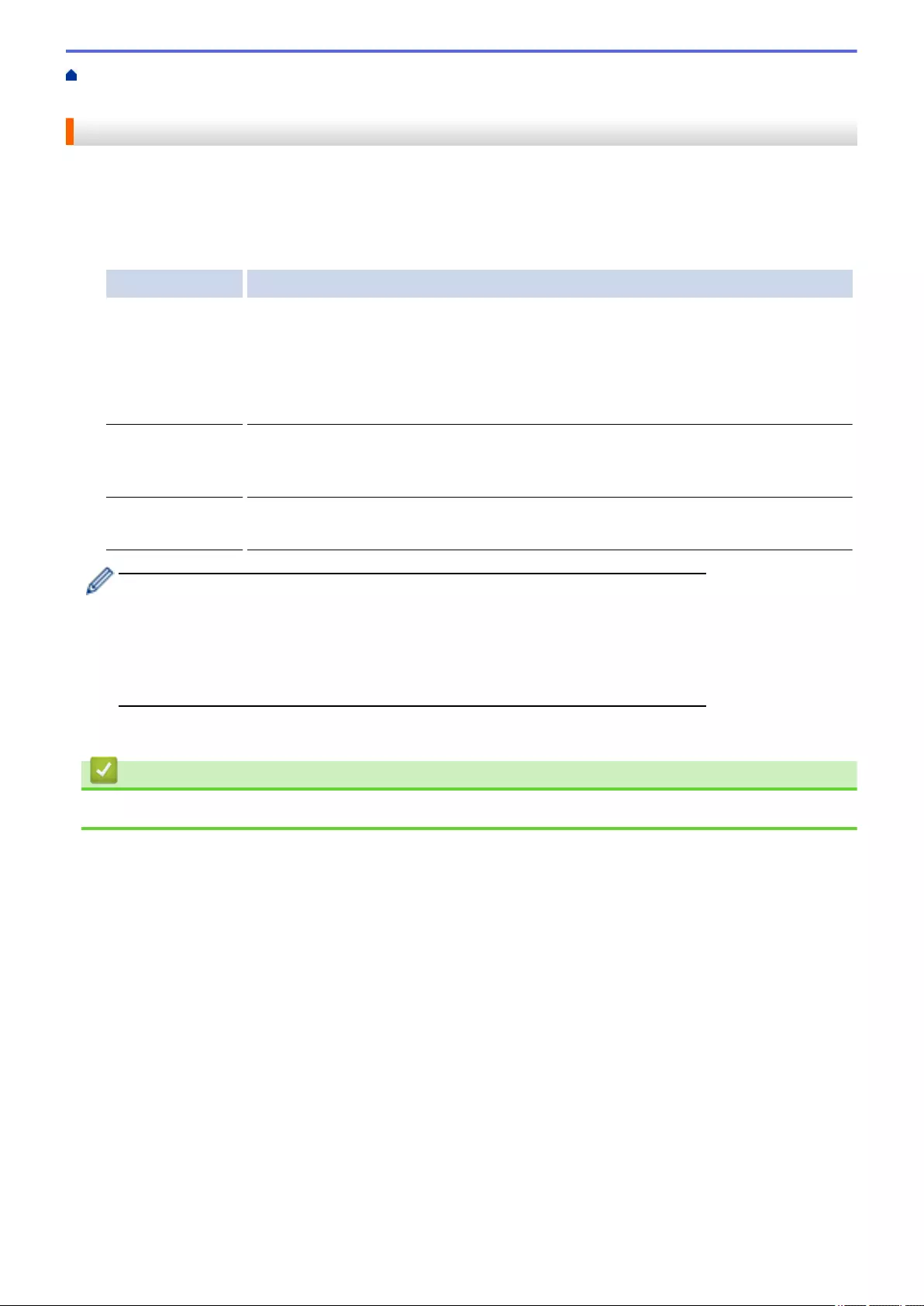
Home > Network > Advanced Network Features > I-Fax Options > Internet Fax (I-Fax) Verification
Mail > Enable Receive Notification for TX Verification Mail
Enable Receive Notification for TX Verification Mail
1. Press [ ] [Settings] > [All Settings] > [Network] > [E-mail/IFAX] > [Setup Mail RX] >
[Notification].
2. Press one of the three possible settings:
Option Description
Receive
Notification On
When Receive Notification is On, a template is sent back to the sender to indicate
successful reception and processing of the message.
These templates depend on the operation requested by the sender.
Example:
SUCCESS: Received From <Mail Address>
Receive
Notification MDN
When Receive Notification is MDN, a report to indicate successful reception and
processing is sent back to the sender if the originating station sent a request
confirmation to the MDN (Message Disposition Notification) field.
Receive
Notification Off
When Receive Notification is Off, all forms of receive notification are disabled and no
message is sent back to the sender regardless of the request.
• To send TX Verification Mail, the Sender must configure these settings:
- Switch [Notification] in [Setup Mail TX] to [On].
- Switch [Header] in [Setup Mail RX] to [All] or [Subject+From+To].
• To receive TX Verification Mail, the Receiver must configure these settings:
- Switch [Notification] in [Setup Mail RX] to [On].
3. Press .
Related Information
•Internet Fax (I-Fax) Verification Mail
382

Home > Network > Advanced Network Features > I-Fax Options > Error Mail
Error Mail
If there is a delivery error while sending an I-Fax, the mail server will send an error message back to the Brother
machine and the error message will be printed.
If there is an error while receiving an I-Fax, an error message will be printed, for example, "The message being
sent to the machine was not in a TIFF-F format."
To receive the error mail and have it print on your machine, in [Setup Mail RX], switch the [Header] option
to [All] or to [Subject+From+To].
Related Information
•I-Fax Options
383

Home > Network > Advanced Network Features > Use the Send Fax to Server Feature
Use the Send Fax to Server Feature
The Fax to Server feature allows the machine to scan a document and send it over the network to a separate fax
server. The document will then be sent from the server as fax data to the destination fax number over standard
phone lines. When the Fax to Server feature is set to On, all automatic fax transmissions from the machine will
be sent to the fax server for fax transmission.
You can send a fax directly from the machine using the manual fax feature when the Send to Server feature is
on.
Related Information
•Advanced Network Features
•Before Sending a Fax to the Fax Server
•Enable Fax to Server
•Operate Fax to Server
384

Home > Network > Advanced Network Features > Use the Send Fax to Server Feature > Before Sending a
Fax to the Fax Server
Before Sending a Fax to the Fax Server
To send a document to the fax server, the correct syntax for that server must be used. The destination fax
number must be sent with a prefix and a suffix that match the parameters used by the fax server. In most cases,
the syntax for the prefix is “fax=” and the syntax for the suffix would be the domain name of the fax server email
gateway. The suffix must also include the “@” symbol at the beginning of the suffix. The prefix and the suffix
information must be stored in the machine before you can use the Fax to server function. Destination fax
numbers can be saved in the address book or entered using the dial pad (up to 40-digit numbers). For example:
if you wanted to send a document to a destination fax number of 123-555-0001, use the following syntax:
Your fax server application must support an email gateway.
Related Information
•Use the Send Fax to Server Feature
385
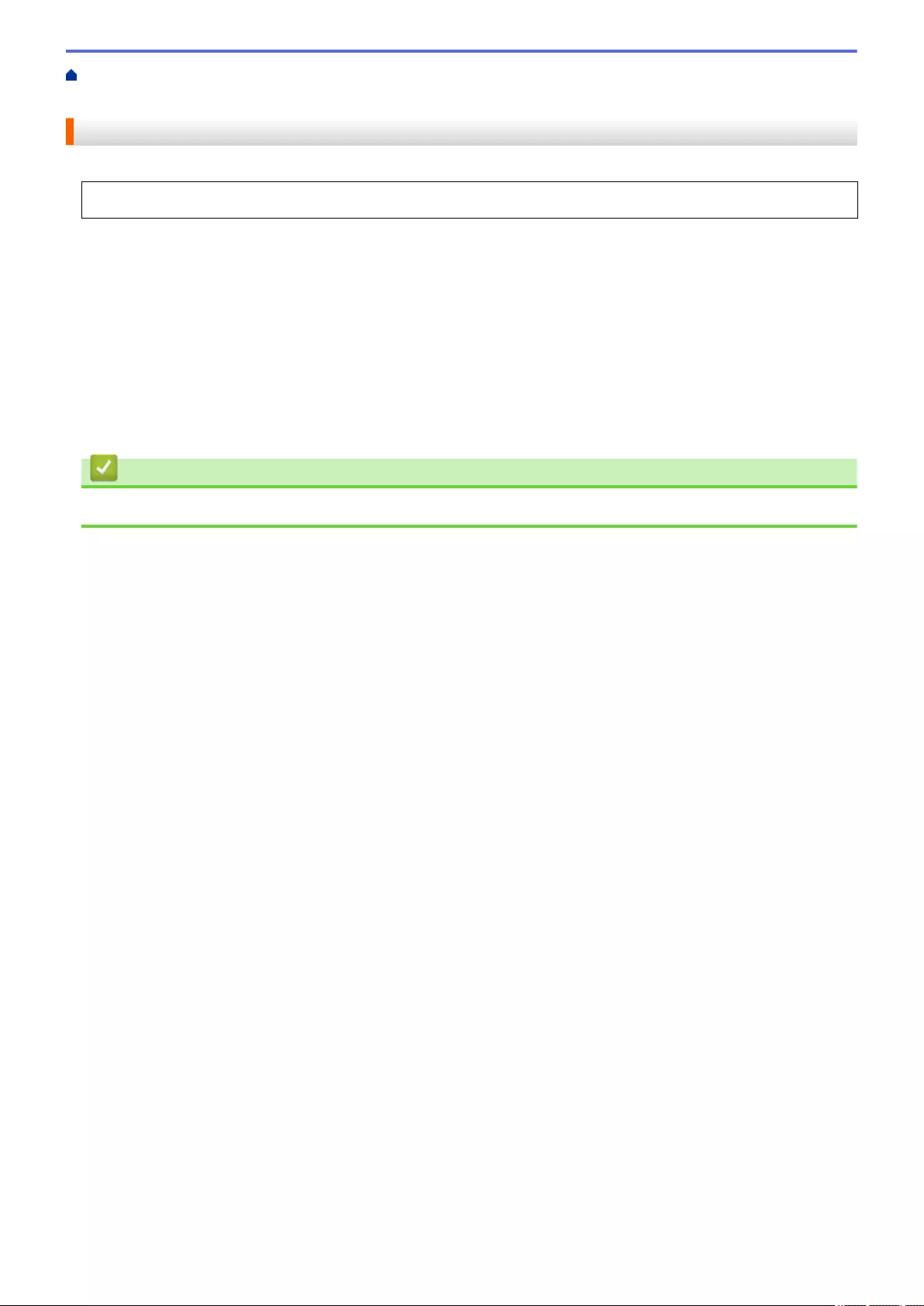
Home > Network > Advanced Network Features > Use the Send Fax to Server Feature > Enable Fax to
Server
Enable Fax to Server
• Store the prefix/suffix address for the fax server in your Brother machine.
1. Press [ ] [Settings] > [All Settings] > [Network] > [Fax to Server].
2. Press [Fax to Server].
3. Press [On].
4. Press [Prefix].
5. Enter the prefix using the touchscreen, and then press [OK].
6. Press [Suffix].
7. Enter the suffix using the touchscreen, and then press [OK].
8. Press .
Related Information
•Use the Send Fax to Server Feature
386

Home > Network > Advanced Network Features > Use the Send Fax to Server Feature > Operate Fax to
Server
Operate Fax to Server
1. Place the document in the ADF or on the scanner glass.
2. Enter the fax number.
3. Press [Fax Start].
The machine will send the message over a TCP/IP network to the fax server.
Related Information
•Use the Send Fax to Server Feature
387

Home > Network > Advanced Network Features > Print the WLAN Report
Print the WLAN Report
The WLAN Report reflects your machine's wireless status. If the wireless connection fails, check the error code
on the printed report.
1. Press [ ] [Settings] > [All Settings] > [Print Reports] > [WLAN Report].
2. Press [Yes].
The machine will print the WLAN Report.
3. Press .
If the WLAN Report does not print, check your machine for errors. If there are no visible errors, wait for one
minute and then try to print the report again.
Related Information
•Advanced Network Features
•Wireless LAN Report Error Codes
•My Brother Machine Cannot Print, Scan, or PC-FAX Receive over the Network
•I Want to Check that My Network Devices are Working Correctly
388

Home > Network > Advanced Network Features > Print the WLAN Report > Wireless LAN Report Error
Codes
Wireless LAN Report Error Codes
If the Wireless LAN Report shows that the connection failed, check the error code on the printed report and see
the corresponding instructions in the table:
Error Code Problem and Recommended Solutions
TS-01 The wireless setting is not activated, change the wireless setting to ON.
If a network cable is connected to your machine, disconnect it and change the wireless setting of
your machine to ON.
TS-02 The wireless access point/router cannot be detected.
1. Check the following two points:
• Unplug the power to your wireless access point/router, wait for 10 seconds, and then plug
it back in.
• If your WLAN access point/router is using MAC address filtering, confirm that the MAC
address of the Brother machine is allowed in the filter.
2. If you manually entered the SSID and security information (SSID/authentication method/
encryption method/Network Key), the information may be incorrect.
Reconfirm the SSID and security information and re-enter the correct information as
necessary.
How to confirm wireless security information (SSID/authentication method/encryption
method/Network Key)
a. The Default security settings may be provided on a label attached to the WLAN access
point/router. Or the manufacturer's name or model no. of the WLAN access point/router
may be used as the default security settings.
b. See the documentation provided with your WLAN access point/router for information on
how to find the security settings.
• If WLAN access point/router is set to not broadcast the SSID, the SSID will not
automatically be detected. You will have to manually enter the SSID name.
• The Network key may also be described as the Password, Security Key or Encryption
Key.
This device does not support a 5GHz SSID/ESSID and you must select a 2.4 GHz SSID/
ESSID. Make sure the access point/router is set to 2.4 GHz or 2.4 GHz/5 GHz mixed mode.
If you do not know the SSID and wireless security settings of your WLAN access point/router
or how to change the configuration, see the documentation provided with your WLAN access
point/router, ask the manufacturer of your access point/router or ask to your Internet provider
or network administrator.
TS-03 The wireless network and security setting you entered may be incorrect. Reconfirm the wireless
network settings.
If you do not know this information, ask your network administrator.
389

Error Code Problem and Recommended Solutions
TS-04 The Authentication/Encryption methods used by the selected wireless access point/router are
not supported by your machine.
For infrastructure mode, change the authentication and encryption methods of the wireless
access point/router. Your machine supports the following authentication methods:
• WPA-Personal
TKIP or AES
• WPA2-Personal
AES
• Open
WEP or None (without encryption)
• Shared key
WEP
If your problem is not solved, the SSID or network settings you entered may be incorrect.
Confirm the wireless network settings.
For Ad-Hoc Mode, change the authentication and encryption methods of your computer for the
wireless setting. Your machine supports Open authentication only, with optional WEP
encryption.
TS-05 The security information (SSID/Network Key) is incorrect.
Confirm the SSID and Network Key. If your router uses WEP encryption, enter the key used as
the first WEP key. Your Brother machine supports the use of the first WEP key only.
TS-06 The wireless security information (Authentication method/Encryption method/Network Key) is
incorrect.
Confirm the wireless security information (Authentication method/Encryption method/Network
Key) listed in TS-04. If your router uses WEP encryption, enter the key used as the first WEP
key. Your Brother machine supports the use of the first WEP key only.
TS-07 The machine cannot detect a WLAN access point/router that has WPS enabled.
If you would like to connect with WPS, you must operate both your machine and the WLAN
access point/router. Confirm the connection method for WPS on WLAN access point/router and
try starting again.
If you do not know how to operate your WLAN access point/router using WPS, see the
documentation provided with your WLAN access point/router, ask the manufacturer of your
WLAN access point/router or ask your network administrator.
TS-08 Two or more WLAN access points that have WPS enabled are detected.
• Confirm that only one WLAN access point/router within range has the WPS method active
and try again.
• Try starting again after few minutes in order to avoid effects from other access points.
Related Information
•Print the WLAN Report
•My Brother Machine Cannot Print, Scan, or PC-FAX Receive over the Network
•I Want to Check that My Network Devices are Working Correctly
•Configure Your Machine for a Wireless Network Using the One Push Method of Wi-Fi Protected Setup™
(WPS)
•Configure Your Machine for a Wireless Network Using the PIN Method of Wi-Fi Protected Setup™ (WPS)
•Configure Your Machine for a Wireless Network in Ad-Hoc Mode Using an Existing SSID
•Configure Your Machine for a Wireless Network in Ad-Hoc Mode Using a New SSID
•Configure Your Machine for a Wireless Network Using the Machine's Control Panel Setup Wizard
•Configure Your Machine for a Wireless Network When the SSID Is Not Broadcast
•Configure Your Machine for an Enterprise Wireless Network
390

Home > Network > Advanced Network Features > Configure and Operate LDAP Search
Configure and Operate LDAP Search
MFC-L6750DW/MFC-L6900DW: standard
The LDAP feature allows you to search for information, such as fax numbers and email addresses, on your
server. When you use the Fax, I-Fax, or Scan to Email server feature, you can use the LDAP search to find fax
numbers or email addresses.
• The LDAP feature does not support simplified Chinese, traditional Chinese, or Korean.
• The LDAP feature supports LDAPv3.
• The LDAP feature does not support SSL/TLS.
Related Information
•Advanced Network Features
•Change LDAP Configuration Using Web Based Management
•Perform an LDAP Search Using Your Machine's Control Panel
391
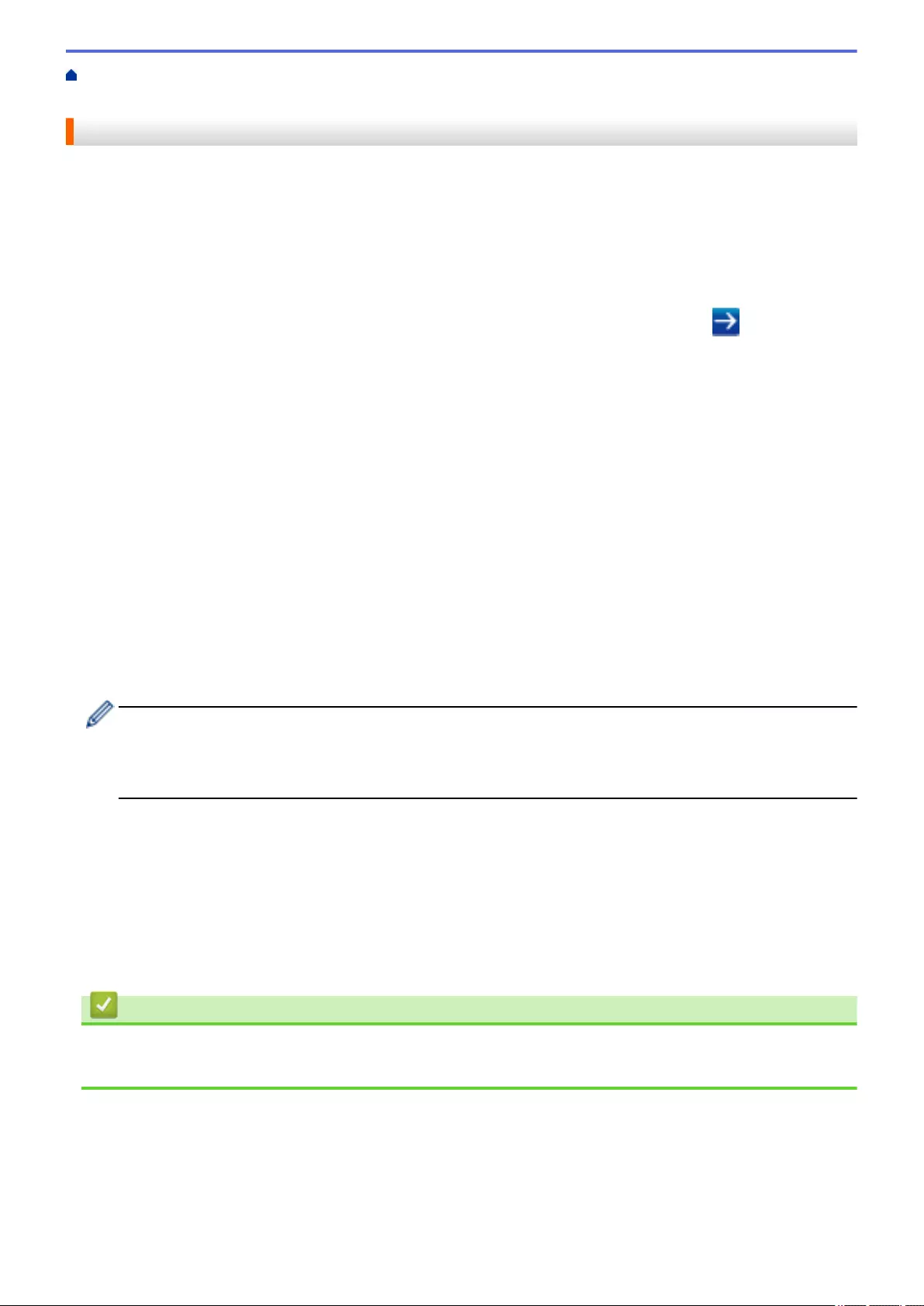
Home > Network > Advanced Network Features > Configure and Operate LDAP Search > Change LDAP
Configuration Using Web Based Management
Change LDAP Configuration Using Web Based Management
Use Web Based Management to configure your LDAP settings in a web browser.
1. Start your web browser.
2. Type "http://machine's IP address" in your browser's address bar (where "machine's IP address" is the
machine's IP address).
For example:
http://192.168.1.2
3. No password is required by default. Type a password if you have set one, and then click .
4. Click Network on the machine's web page.
5. Click Protocol in the left navigation bar.
6. Select the LDAP check box, and then click Submit.
7. Restart your Brother machine to activate the configuration.
8. On your computer, in Web Based Management's Address Book tab, select LDAP in the left navigation bar.
•LDAP Search
•LDAP Server Address
•Port (The default port number is 389.)
•Search Root
•Authentication
•Username
This selection will be available depending on the authentication method used.
•Password
This selection will be available depending on the authentication method used.
- If the LDAP server supports Kerberos authentication, we recommend selecting Kerberos for the
Authentication settings. It provides strong authentication between the LDAP server and your machine.
- You must configure the SNTP protocol (network time server), or you must set the date, time and time
zone correctly on the control panel for Kerberos authentication.
•Kerberos Server Address
This selection will be available depending on the authentication method used.
•Timeout for LDAP
•Attribute of Name (Search Key)
•Attribute of E-mail
•Attribute of Fax Number
9. When finished, click Submit. Make sure the Status field reads OK.
Related Information
•Configure and Operate LDAP Search
•Synchronize Time with the SNTP Server Using Web Based Management
392
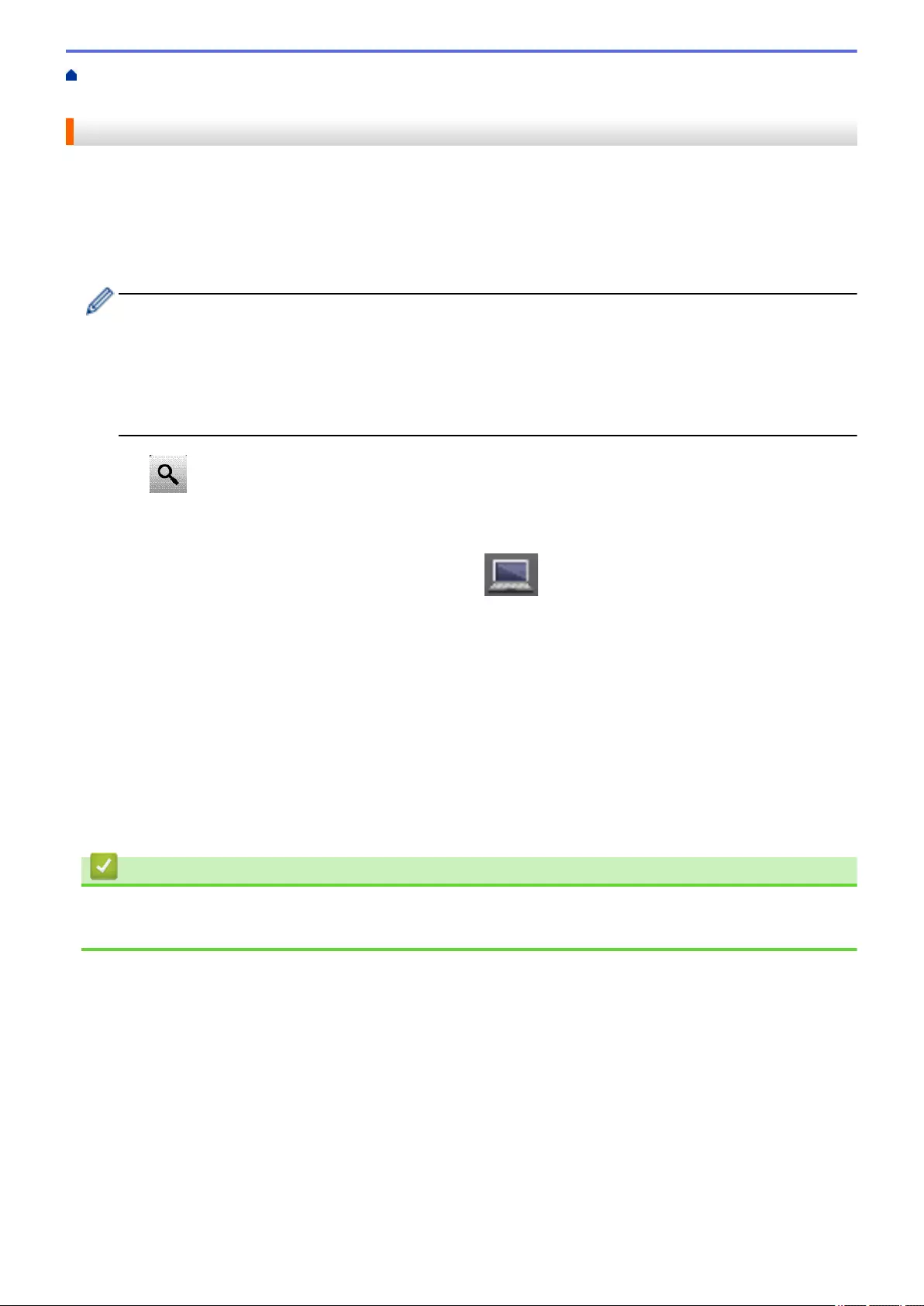
Home > Network > Advanced Network Features > Configure and Operate LDAP Search > Perform an
LDAP Search Using Your Machine's Control Panel
Perform an LDAP Search Using Your Machine's Control Panel
After you configure LDAP settings, you can use the LDAP search feature to find fax numbers or email addresses
to use for:
• Sending a Fax
• Sending an Internet Fax (I-Fax)
• Scanning to Email Server
• The LDAP feature supports LDAPv3.
• The LDAP feature does not support SSL/TLS.
• You may need to use Kerberos Authentication or Simple Authentication to connect to your LDAP server,
depending on the security policy set by your network administrator.
• You must configure the SNTP protocol (network time server), or you must set the date, time and time
zone correctly on the control panel for Kerberos authentication.
1. Press to search.
2. Enter the initial characters for your search using the LCD.
3. Press [OK].
The LDAP search result will be shown on the LCD; the icon appears before the email (local) address
book search results.
• If there is no match on the server or the email (local) address book, the LCD displays [Results cannot
be found.] for about 60 seconds.
4. Swipe up or down or press a or b to display the name you want.
5. Press the name.
To view the details of the name, press [Detail].
6. If the result includes more than one fax number or email address, the machine will prompt you to select just
one. Press [Apply]. Do one of the following:
• If you are sending a fax or an I-Fax, press [Send a fax].
• If you are scanning to the Email Server, load your document, press [OK], and then press [Start].
Related Information
•Configure and Operate LDAP Search
•Synchronize Time with the SNTP Server Using Web Based Management
393

Home > Network > Advanced Network Features > Synchronize Time with the SNTP Server Using Web
Based Management
Synchronize Time with the SNTP Server Using Web Based Management
The Simple Network Time Protocol (SNTP) is used to synchronize the time used by the machine for
authentication with the SNTP time server. (This is not the time displayed on the machine's LCD.) You can
automatically or manually synchronize the machine's time with the Coordinated Universal Time (UTC) provided
by the SNTP time server.
•Configure Date and Time Using Web Based Management
•Configure the SNTP Protocol Using Web Based Management
•Configure the Store Print Log to Network Settings Using Web Based Management
•Change LDAP Configuration Using Web Based Management
•Perform an LDAP Search Using Your Machine's Control Panel
394

Home > Network > Advanced Network Features > Synchronize Time with the SNTP Server Using Web
Based Management > Configure Date and Time Using Web Based Management
Configure Date and Time Using Web Based Management
Configure date and time to synchronize the time used by the machine with the SNTP time server.
This feature is not available in some countries.
1. Start your web browser.
2. Type "http://machine's IP address" in your browser's address bar (where "machine's IP address" is the
machine's IP address).
For example:
http://192.168.1.2
3. No password is required by default. Type a password if you have set one, and then click .
4. Click the Administrator tab.
5. Click Date&Time in the left navigation bar.
Select the time difference between your location and UTC from the Time Zone drop-down list. For
example, the time zone for Eastern Time in the USA and Canada is UTC-05:00.
6. Verify the Time Zone settings.
7. Select the Synchronize with SNTP server check box.
8. Click Submit.
Related Information
•Synchronize Time with the SNTP Server Using Web Based Management
395

Home > Network > Advanced Network Features > Synchronize Time with the SNTP Server Using Web
Based Management > Configure the SNTP Protocol Using Web Based Management
Configure the SNTP Protocol Using Web Based Management
Configure the SNTP protocol to synchronize the time the machine uses for authentication with the time kept by
the SNTP time server.
1. Start your web browser.
2. Type "http://machine's IP address" in your browser's address bar (where "machine's IP address" is the
machine's IP address).
For example:
http://192.168.1.2
3. No password is required by default. Type a password if you have set one, and then click .
4. Click the Network tab.
5. Click Protocol in the left navigation bar.
6. Select the SNTP check box to activate the settings.
7. Restart your Brother machine to activate the configuration.
8. Next to the SNTP check box, click Advanced Settings and follow the instructions below:
Option Description
Status Displays whether the SNTP protocol is enabled or disabled.
Synchronization Status Confirm the latest synchronization status.
SNTP Server Method Select AUTO or STATIC.
•AUTO
If you have a DHCP server in your network, the SNTP server will obtain
the address from that server automatically.
•STATIC
Type the address you want to use.
396

Option Description
Primary SNTP Server
Address
Secondary SNTP Server
Address
Type the server address (up to 64 characters).
The secondary SNTP server address is used as a backup to the primary
SNTP server address. If the primary server is unavailable, the machine will
contact the secondary SNTP server.
Primary SNTP Server Port
Secondary SNTP Server
Port
Type the port number (1-65535).
The secondary SNTP server port is used as a backup to the primary SNTP
server port. If the primary port is unavailable, the machine will contact the
secondary SNTP port.
Synchronization Interval Type the number of hours between server synchronization attempts (1-168
hours).
9. Click Submit.
Related Information
•Synchronize Time with the SNTP Server Using Web Based Management
•Configure the Store Print Log to Network Settings Using Web Based Management
397

Home > Network > Technical Information for Advanced Users > Gigabit Ethernet (Wired Network Only)
Gigabit Ethernet (Wired Network Only)
Your machine supports 1000BASE-T Gigabit Ethernet. To connect to a 1000BASE-T Gigabit Ethernet Network,
you must set the machine’s Ethernet link mode to Auto from the machine’s control panel or Web Based
Management (web browser).
• Use a straight-through Category 5 (or greater) twisted-pair cable for 10BASE-T, 100BASE-TX Fast
Ethernet Network, or 1000BASE-T Gigabit Ethernet Network. When you connect the machine to a
Gigabit Ethernet Network, use the network devices complying with 1000BASE-T.
Related Information
•Technical Information for Advanced Users
•Configure the Gigabit Ethernet Settings Using Web Based Management
399

Home > Network > Technical Information for Advanced Users > Gigabit Ethernet (Wired Network
Only) > Configure the Gigabit Ethernet Settings Using Web Based Management
Configure the Gigabit Ethernet Settings Using Web Based Management
1. Start your web browser.
2. Type "http://machine's IP address" in your browser's address bar (where "machine's IP address" is the
machine's IP address).
For example:
http://192.168.1.2
3. No password is required by default. Type a password if you have set one, and then click .
4. Click the Network tab.
5. Click Wired.
6. Click Ethernet in the left navigation bar.
7. Select Auto from the Ethernet Mode drop-down list.
8. Click Submit.
9. To enable the settings, restart your machine.
You can confirm your settings by printing the Network Configuration Report.
Related Information
•Gigabit Ethernet (Wired Network Only)
•Print the Network Configuration Report
400
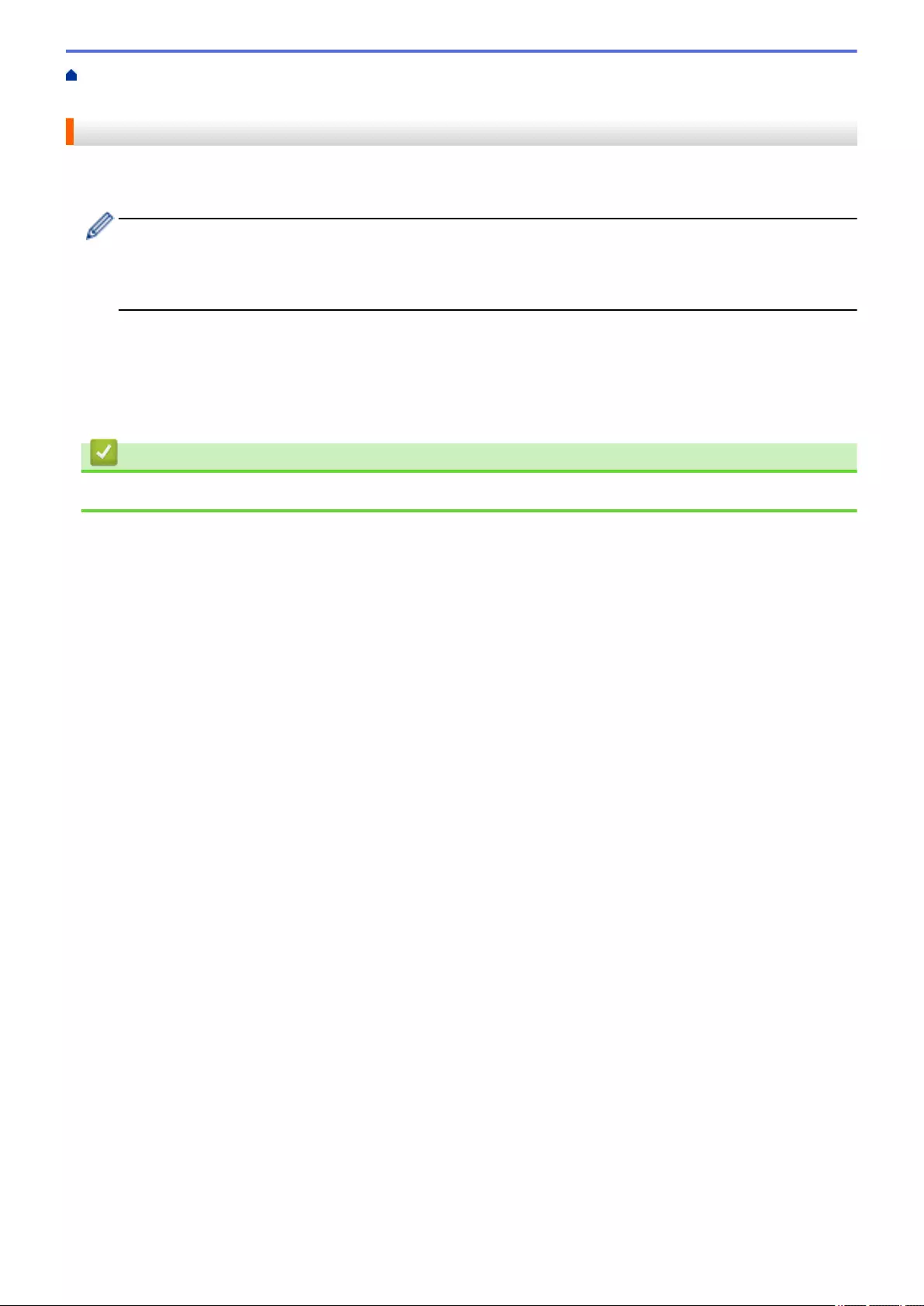
Home > Network > Technical Information for Advanced Users > Reset the Network Settings to the Factory
Settings
Reset the Network Settings to the Factory Settings
You can use your machine's control panel to reset the print server to its default factory settings. This resets all
information, such as the password and IP address.
• This feature restores all wired (supported models only) and wireless network settings to the factory
settings.
• You can also reset the print server to its factory settings using BRAdmin Light, BRAdmin Professional,
or Web Based Management.
1. Press [ ] [Settings] > [All Settings] > [Network] > [Network Reset].
2. [Machine will reboot after resetting. Press [OK] for 2 seconds to confirm.]
appears. Press [OK] for two seconds to confirm.
The machine will restart.
Related Information
•Technical Information for Advanced Users
401

Home > Security > Lock the Machine Settings
Lock the Machine Settings
Before turning on the machine's Access Lock, make a careful note of your password. If you forget the password,
you must reset all passwords stored in the machine by contacting your administrator or Brother Customer
Service.
•About Using Setting Lock
403

Home > Security > Lock the Machine Settings > About Using Setting Lock
About Using Setting Lock
Use the Setting Lock feature to block unauthorized access to machine settings.
When Setting Lock is set to [On], you cannot access the machine settings without entering the password.
•Set the Setting Lock Password
•Change the Setting Lock Password
•Turn On Setting Lock
404

Home > Security > Lock the Machine Settings > About Using Setting Lock > Set the Setting Lock Password
Set the Setting Lock Password
1. Press [Settings] > [All Settings] > [General Setup] > [Setting Lock].
2. Enter a four-digit number for the password.
3. Press [OK].
4. When the LCD displays [Verify:], re-enter the password.
5. Press [OK].
6. Press .
Related Information
•About Using Setting Lock
405
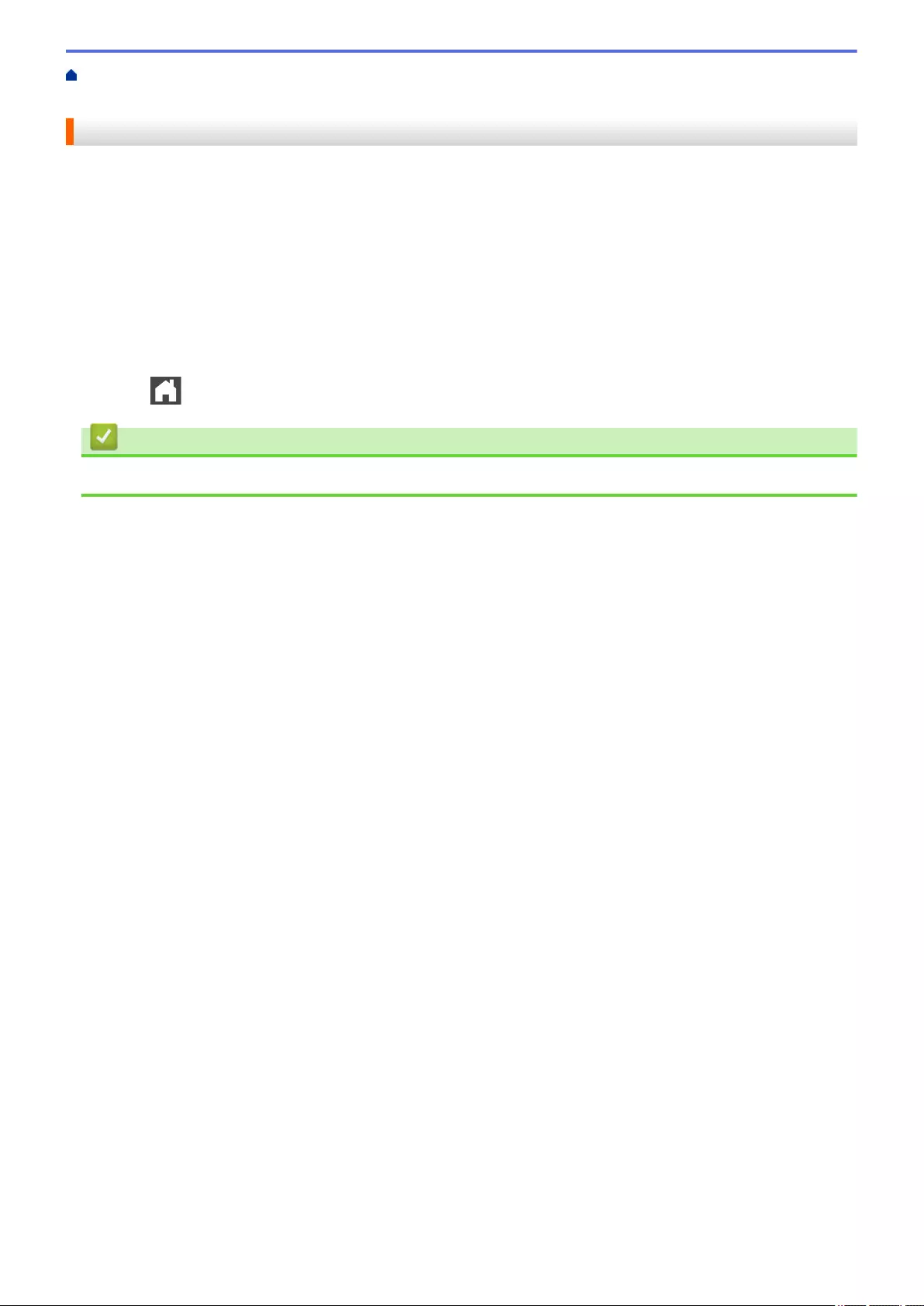
Home > Security > Lock the Machine Settings > About Using Setting Lock > Change the Setting Lock
Password
Change the Setting Lock Password
1. Press [Settings] > [All Settings] > [General Setup] > [Setting Lock] > [Set
Password].
2. Enter the current four-digit password.
3. Press [OK].
4. Enter a new four-digit password.
5. Press [OK].
6. When the LCD displays [Verify:], re-enter the password.
7. Press [OK].
8. Press .
Related Information
•About Using Setting Lock
406

Home > Security > Lock the Machine Settings > About Using Setting Lock > Turn On Setting Lock
Turn On Setting Lock
1. Press [Settings] > [All Settings] > [General Setup] > [Setting Lock] > [Lock
Off⇒On].
2. Enter the current four-digit password.
3. Press [OK].
To turn [Off] Setting Lock, press on the LCD, enter the current four-digit password, and then press
[OK].
Related Information
•About Using Setting Lock
407

Home > Security > Network Security Features
Network Security Features
•Before Using Network Security Features
•Secure Function Lock 3.0
•Use Active Directory Authentication
•Use LDAP Authentication
•Manage Your Network Machine Securely Using SSL/TLS
•Manage Your Network Machine Securely Using IPsec
•Send or Receive an Email Securely
•Use IEEE 802.1x Authentication for a Wired or a Wireless Network
•Store Print Log to Network
408

Home > Security > Network Security Features > Before Using Network Security Features
Before Using Network Security Features
Your Brother machine employs some of the latest network security and encryption protocols available today.
These network features can be integrated into your overall network security plan to help protect your data and
prevent unauthorized access to the machine.
We recommend disabling the Telnet, FTP server and TFTP protocols. Accessing the machine using these
protocols is not secure.
Related Information
•Network Security Features
409

Home > Security > Network Security Features > Secure Function Lock 3.0
Secure Function Lock 3.0
Brother's Secure Function Lock 3.0 increases security by restricting the functions available on your Brother
machine.
•Before Using Secure Function Lock 3.0
•Configure Secure Function Lock 3.0 Using Web Based Management
•Scan Using Secure Function Lock 3.0
•Configure Public Mode for Secure Function Lock 3.0
•Additional Secure Function Lock 3.0 Features
•Register a new ID Card Using Machine's Control Panel
410

Home > Security > Network Security Features > Secure Function Lock 3.0 > Before Using Secure Function
Lock 3.0
Before Using Secure Function Lock 3.0
Use Secure Function Lock to configure passwords, set specific user page limits, and grant access to some or all
of the functions listed here.
You can configure and change the following Secure Function Lock 3.0 settings using Web Based Management
or BRAdmin Professional (Windows):
•Print
Print includes print jobs sent via AirPrint, Google Cloud Print™ and Brother iPrint&Scan.
If you register users' login names in advance, the users will not need to enter their passwords when they use
the print function.
•Copy
•Scan
Scan includes scan jobs sent via Brother iPrint&Scan.
•Send (supported models only)
•Receive (supported models only)
• USB Direct Print
• Scan to USB (supported models only)
•Web Connect (supported models only)
•Apps (supported models only)
•Page Limits
•Page Counters
•Card ID (NFC ID) (supported models only)
If you register users' Card IDs in advance, a registered user can activate the machine by touching his
registered card to the machine's NFC logo.
Related Information
•Secure Function Lock 3.0
411

Home > Security > Network Security Features > Secure Function Lock 3.0 > Configure Secure Function
Lock 3.0 Using Web Based Management
Configure Secure Function Lock 3.0 Using Web Based Management
1. Start your web browser.
2. Type "http://machine's IP address" in your browser's address bar (where "machine's IP address" is the
machine's IP address).
For example:
http://192.168.1.2
3. No password is required by default. Type a password if you have set one, and then click .
4. Click the Administrator tab.
5. Click the User Restriction Function menu in the left navigation bar.
6. Select Secure Function Lock.
7. Click Submit.
8. Click the Restricted Functions menu in the left navigation bar.
9. In the User List / Restricted Functions field, type a group name or user name (alphanumeric, up to 15
digits).
10. In the Print and the other columns, select a check box to allow or clear a check box to restrict the function
listed.
11. To configure the maximum page count, select the On check box in the Page Limits column, and then type
the maximum number in the Max. Pages field.
12. Click Submit.
13. Click the User List menu in the left navigation bar.
14. In the User List field, type the user name.
15. In the PIN Number field, type a four-digit password.
16. In the E-mail Address field, type the user's email address (Available only for certain models).
If this option is not available, update your machine's firmware. Go to your model's Downloads page on the
Brother Solutions Center at support.brother.com.
17. To register the user's Card ID, type the card number in the Card ID (NFC ID) field (Available only for certain
models).
18. Select User List / Restricted Functions from the drop-down list for each user.
19. Click Submit.
Related Information
•Secure Function Lock 3.0
412

Home > Security > Network Security Features > Secure Function Lock 3.0 > Scan Using Secure Function
Lock 3.0
Scan Using Secure Function Lock 3.0
Setting Scan restrictions (for administrators)
Secure Function Lock 3.0 allows an administrator to restrict which users are allowed to scan. When the Scan
feature is set to Off for the public user setting, only users who have the Scan check box selected will be able to
scan.
Using the Scan feature (for restricted users)
• To scan using the machine's control panel:
Restricted users must enter their PINs on the machine's control panel to access Scan mode.
• To scan from a computer:
Restricted users must enter their PINs on the machine's control panel before scanning from their computers.
If the PIN is not entered on the machine's control panel, an error message will appear on the user's computer.
Related Information
•Secure Function Lock 3.0
413

Home > Security > Network Security Features > Secure Function Lock 3.0 > Configure Public Mode for
Secure Function Lock 3.0
Configure Public Mode for Secure Function Lock 3.0
Use the Secure Function Lock screen to set up Public Mode, which limits the functions available to public users.
Public users will not need to enter a password to access the features made available through Public Mode
settings.
Public Mode includes print jobs sent via AirPrint, Google Cloud Print™ and Brother iPrint&Scan.
1. Start your web browser.
2. Type "http://machine's IP address" in your browser's address bar (where "machine's IP address" is the
machine's IP address).
For example:
http://192.168.1.2
3. No password is required by default. Type a password if you have set one, and then click .
4. Click the Administrator tab.
5. Click the User Restriction Function menu in the left navigation bar.
6. Select Secure Function Lock.
7. Click Submit.
8. Click the Restricted Functions menu.
9. In the Public Mode row, select a check box to allow or clear a check box to restrict the function listed.
10. Click Submit.
Related Information
•Secure Function Lock 3.0
414
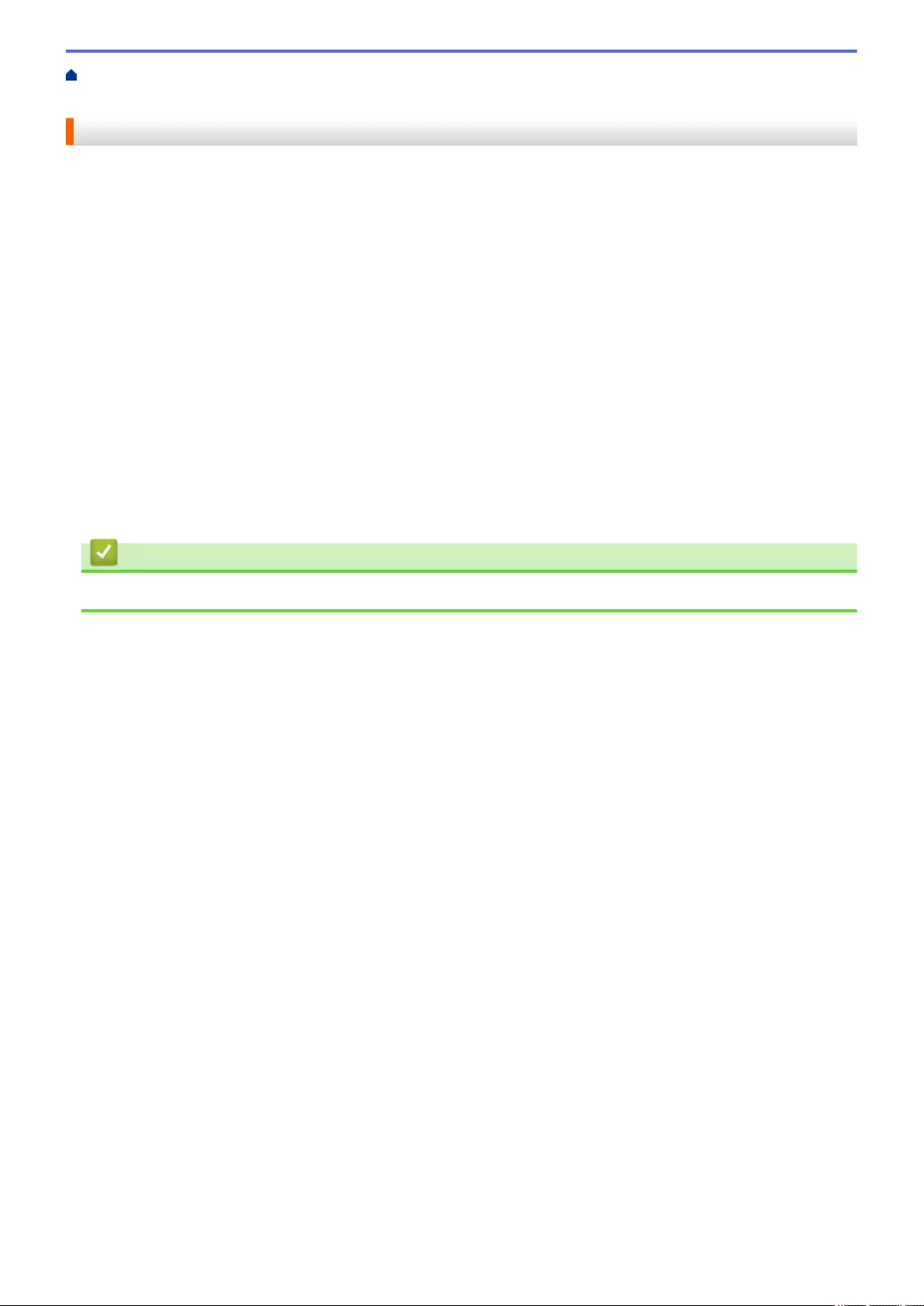
Home > Security > Network Security Features > Secure Function Lock 3.0 > Additional Secure Function
Lock 3.0 Features
Additional Secure Function Lock 3.0 Features
Configure the following features in the Secure Function Lock screen:
All Counter Reset
Click All Counter Reset, in the Page Counters column, to reset the page counter.
Export to CSV file
Click Export to CSV file, to export the current page counter including User List / Restricted Functions
information as a CSV file.
Card ID (NFC ID) (supported models only)
Click the User List menu, and then type a users' Card ID in the Card ID (NFC ID) field. You can use your ID
card for authentication.
Last Counter Record
Click Last Counter Record if you want the machine to retain the page count after the counter has been reset.
Counter Auto Reset
Click Counter Auto Reset to configure the time interval you want between page counter reset. Choose a
daily, weekly, or monthly interval.
Related Information
•Secure Function Lock 3.0
415

Home > Security > Network Security Features > Secure Function Lock 3.0 > Register a new ID Card Using
Machine's Control Panel
Register a new ID Card Using Machine's Control Panel
Related Models: MFC-L6900DW
1. Touch the NFC logo on the machine's control panel with a registered ID Card.
2. Press [Register Card].
3. Touch a new ID Card to the NFC logo.
The new ID Card's number is registered to the machine.
For the supported ID Card types, go to the Brother Solutions Center at support.brother.com to see FAQs &
Troubleshooting.
4. Press [OK].
Related Information
•Secure Function Lock 3.0
416

Home > Security > Network Security Features > Use Active Directory Authentication
Use Active Directory Authentication
•Introduction to Active Directory Authentication
•Configure Active Directory Authentication Using Web Based Management
•Log On to Change the Machine Settings Using the Machine's Control Panel (Active
Directory Authentication)
417

Home > Security > Network Security Features > Use Active Directory Authentication > Introduction to Active
Directory Authentication
Introduction to Active Directory Authentication
Active Directory Authentication restricts the use of your Brother machine. If Active Directory Authentication is
enabled, the machine's control panel will be locked. You cannot change the machine's settings until you enter a
User ID and password.
Active Directory Authentication offers the following features:
• Stores incoming print data
• Stores incoming fax data
• Obtains the email address from the LDAP server based on your User ID, when sending scanned data to an
email server.
To use this feature, select the On option for the Get Mail Address setting and LDAP + kerberos
authentication method. Your email address will be set as the sender when the machine sends scanned data
to an email server. If the machine cannot locate your email address, the machine's email address will be set
as the sender.
When Active Directory Authentication is enabled, your machine stores all incoming fax data. After you log on, the
machine prints the stored fax data.
You can change the Active Directory Authentication settings using Web Based Management or BRAdmin
Professional (Windows).
Related Information
•Use Active Directory Authentication
418

Home > Security > Network Security Features > Use Active Directory Authentication > Configure Active
Directory Authentication Using Web Based Management
Configure Active Directory Authentication Using Web Based
Management
Active Directory authentication supports Kerberos authentication and NTLMv2 authentication. You must
configure the SNTP protocol (network time server) and DNS server configuration for authentication.
1. Start your web browser.
2. Type "http://machine's IP address" in your browser's address bar (where "machine's IP address" is the
machine's IP address).
For example:
http://192.168.1.2
3. No password is required by default. Type a password if you have set one, and then click .
4. Click the Administrator tab.
5. Click the User Restriction Function menu in the left navigation bar.
6. Select Active Directory Authentication.
7. Click Submit.
8. Select Active Directory Authentication in the left navigation bar.
9. Configure the following settings:
Option Description
Storage PC Print Data Select this option to store incoming print data. After you log on to the
machine, your PC print jobs will be printed automatically. This feature is
available only for print data created by a Brother native printer driver.
Storage Fax RX Data Select this option to store incoming fax data. You can print all incoming fax
data after you log on to the machine.
Remember User ID Select this option to save your User ID.
Active Directory Server
Address
Type the IP address or the server name (for example: ad.example.com) of
the Active Directory Server.
Active Directory Domain
Name
Type the Active Directory domain name.
Protocol & Authentication
Method
Select the protocol and authentication method.
Get Mail Address 1 Select this option to obtain logged on user's email address from the LDAP
server. (available only for LDAP + kerberos authentication method)
Get User's Home Directory
1
Select this option to obtain your home directory as the Scan to Network
destination. (available only for LDAP + kerberos authentication method)
LDAP Server Port Type the LDAP server port number (available only for LDAP + kerberos
authentication method).
LDAP Search Root Type the LDAP search root (available only for LDAP + kerberos
authentication method).
1If this option is not available, update your machine's firmware. Go to your model's Downloads page on the Brother Solutions Center
at support.brother.com.
10. Click Submit.
419

Home > Security > Network Security Features > Use Active Directory Authentication > Log On to Change
the Machine Settings Using the Machine's Control Panel (Active Directory Authentication)
Log On to Change the Machine Settings Using the Machine's Control
Panel (Active Directory Authentication)
When Active Directory Authentication is enabled, the machine's control panel will be locked until you enter
your User ID and password on the machine's control panel.
1. On the machine's control panel, use the touchscreen to enter your User ID and Password.
2. Press [OK].
3. When authentication is successful, the machine's control panel will be unlocked.
Related Information
•Use Active Directory Authentication
421

Home > Security > Network Security Features > Use LDAP Authentication > Introduction to LDAP
Authentication
Introduction to LDAP Authentication
LDAP Authentication restricts the use of your Brother machine. If LDAP Authentication is enabled, the machine's
control panel will be locked. You cannot change the machine's settings until you enter a User ID and password.
LDAP Authentication offers the following features:
• Stores incoming print data
• Stores incoming fax data
• Obtains the email address from the LDAP server based on your User ID, when sending scanned data to an
email server.
To use this feature, select the On option for the Get Mail Address setting. Your email address will be set as
the sender when the machine sends scanned data to an email server. If the machine cannot locate your
email address, the machine's email address will be set as the sender.
When LDAP Authentication is enabled, your machine stores all incoming fax data. After you log on, the machine
prints the stored fax data.
You can change the LDAP Authentication settings using Web Based Management or BRAdmin Professional
(Windows).
Related Information
•Use LDAP Authentication
423

Home > Security > Network Security Features > Use LDAP Authentication > Configure LDAP
Authentication Using Web Based Management
Configure LDAP Authentication Using Web Based Management
1. Start your web browser.
2. Type "http://machine's IP address" in your browser's address bar (where "machine's IP address" is the
machine's IP address).
For example:
http://192.168.1.2
3. No password is required by default. Type a password if you have set one, and then click .
4. Click the Administrator tab.
5. Click the User Restriction Function menu in the left navigation bar.
6. Select LDAP Authentication.
7. Click Submit.
8. Click LDAP Authentication in the left navigation bar.
9. Configure the following settings:
Option Description
Storage PC Print Data Select this option to store incoming print data. After you log on to the
machine, your PC print jobs will be printed automatically. This feature is
available only for print data created by a Brother native printer driver.
Storage Fax RX Data Select this option to store incoming fax data. You can print all incoming fax
data after you log on to the machine.
Remember User ID Select this option to save your User ID.
LDAP Server Address Type the IP address or the server name (for example: ad.example.com) of
the LDAP server.
Get Mail Address 1 Select this option to obtain logged on user's email address from the LDAP
server.
Get User's Home
Directory 1
Select this option to obtain your home directory as the Scan to Network
destination.
LDAP Server Port Type the LDAP server port number.
LDAP Search Root Type the LDAP search root directory.
Attribute of Name (Search
Key)
Type the attribute you want to use as a search key.
1If this option is not available, update your machine's firmware. Go to your model's Downloads page on the Brother Solutions Center
at support.brother.com.
10. Click Submit.
Related Information
•Use LDAP Authentication
424

Home > Security > Network Security Features > Use LDAP Authentication > Log On to Change the
Machine Settings Using the Machine's Control Panel (LDAP Authentication)
Log On to Change the Machine Settings Using the Machine's Control
Panel (LDAP Authentication)
When LDAP Authentication is enabled, the machine's control panel will be locked until you enter your User ID
and password on the machine's control panel.
1. On the machine's control panel, use the touchscreen to enter your User ID and Password.
2. Press [OK].
3. When authentication is successful, the machine's control panel will be unlocked.
Related Information
•Use LDAP Authentication
425
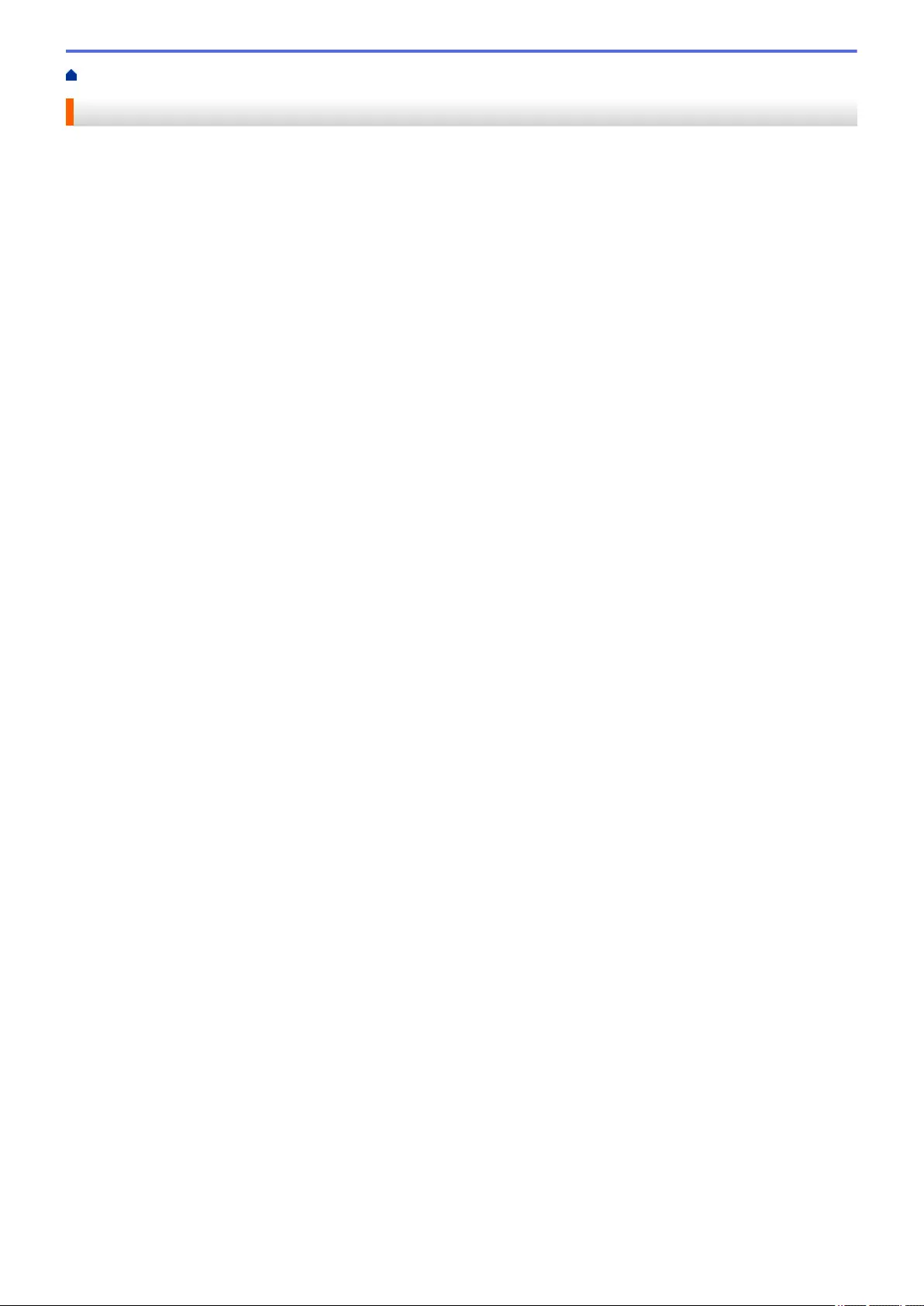
Home > Security > Network Security Features > Manage Your Network Machine Securely Using SSL/TLS
Manage Your Network Machine Securely Using SSL/TLS
•Introduction to SSL/TLS
•Certificates and Web Based Management
•Manage Your Network Machine Securely Using Web Based Management
•Manage Your Network Machine Securely Using BRAdmin Professional (Windows)
•Print Documents Securely Using SSL/TLS
426
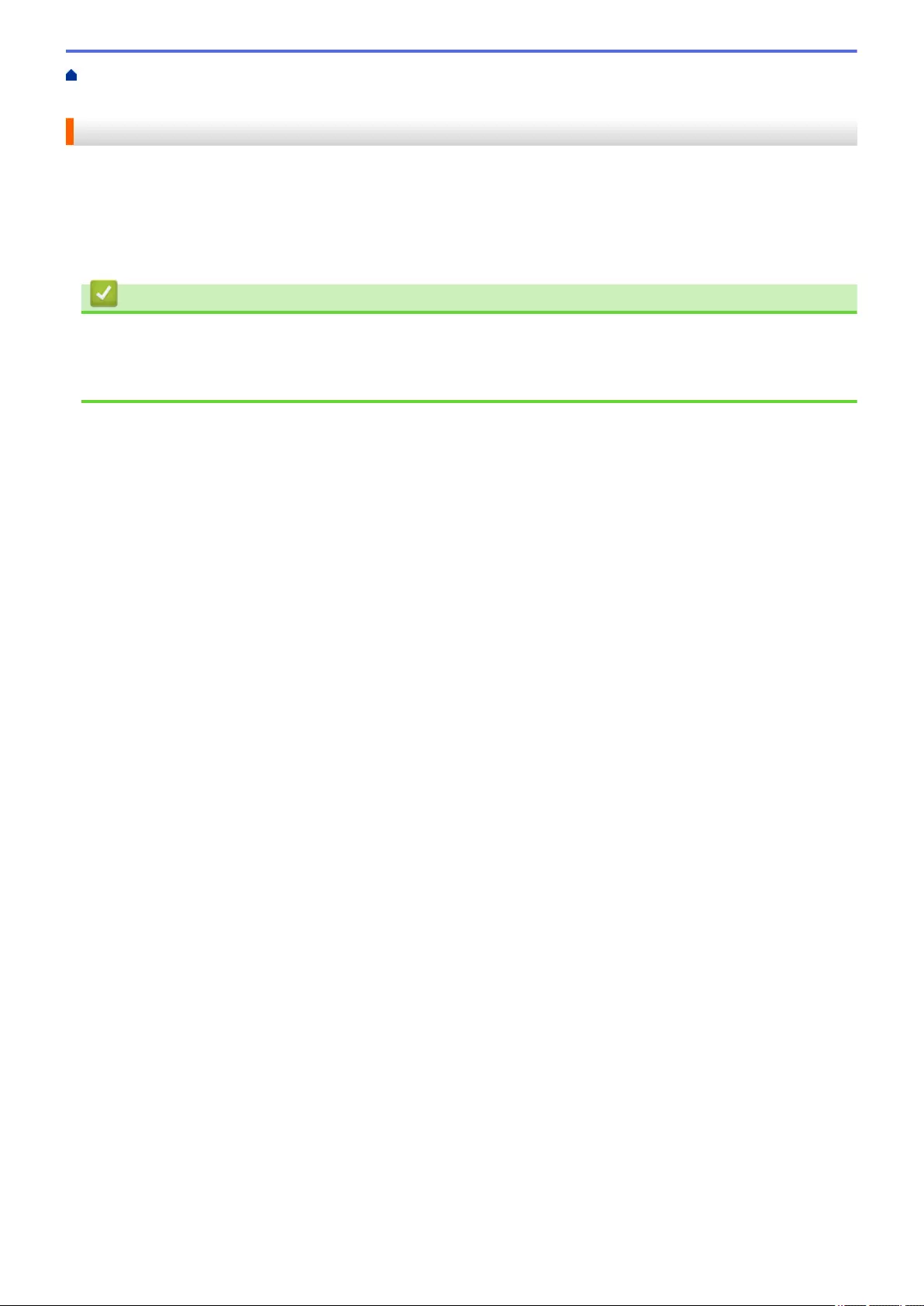
Home > Security > Network Security Features > Manage Your Network Machine Securely Using SSL/
TLS > Introduction to SSL/TLS
Introduction to SSL/TLS
Secure Socket Layer (SSL) or Transport Layer Security (TLS) is an effective method of protecting data sent over
a local or wide area network (LAN or WAN). It works by encrypting data, such as a print job, sent over a network,
so anyone trying to capture it will not be able to read it.
SSL/TLS can be configured on both wired and wireless networks and will work with other forms of security such
as WPA keys and firewalls.
Related Information
•Manage Your Network Machine Securely Using SSL/TLS
•Brief History of SSL/TLS
•Benefits of Using SSL/TLS
427

Home > Security > Network Security Features > Manage Your Network Machine Securely Using SSL/
TLS > Introduction to SSL/TLS > Brief History of SSL/TLS
Brief History of SSL/TLS
SSL/TLS was originally created to secure web traffic information, particularly data sent between web browsers
and servers. For example, when you use Internet Explorer for Internet Banking and you see https:// and the little
padlock icon in the web browser, you are using SSL. SSL grew to work with additional applications, such as
Telnet, printer, and FTP software, in order to become a universal solution for online security. Its original design
intentions are still being used today by many online retailers and banks to secure sensitive data, such as credit
card numbers, customer records, etc.
SSL/TLS uses extremely high levels of encryption and is trusted by banks all over the world.
Related Information
•Introduction to SSL/TLS
428

Home > Security > Network Security Features > Manage Your Network Machine Securely Using SSL/
TLS > Introduction to SSL/TLS > Benefits of Using SSL/TLS
Benefits of Using SSL/TLS
The primary benefit of using SSL/TLS on Brother machines is to guarantee secure printing over an IP network by
restricting unauthorized users from reading data sent to the machine. SSL's key selling point is that it can be
used to print confidential data securely. For example, an HR department in a large company may be printing
wage slips on a regular basis. Without encryption, the data contained on these wages slips can be read by other
network users. However, with SSL/TLS, anyone trying to capture the data will see a confusing page of code and
not the actual wage slip.
Related Information
•Introduction to SSL/TLS
429
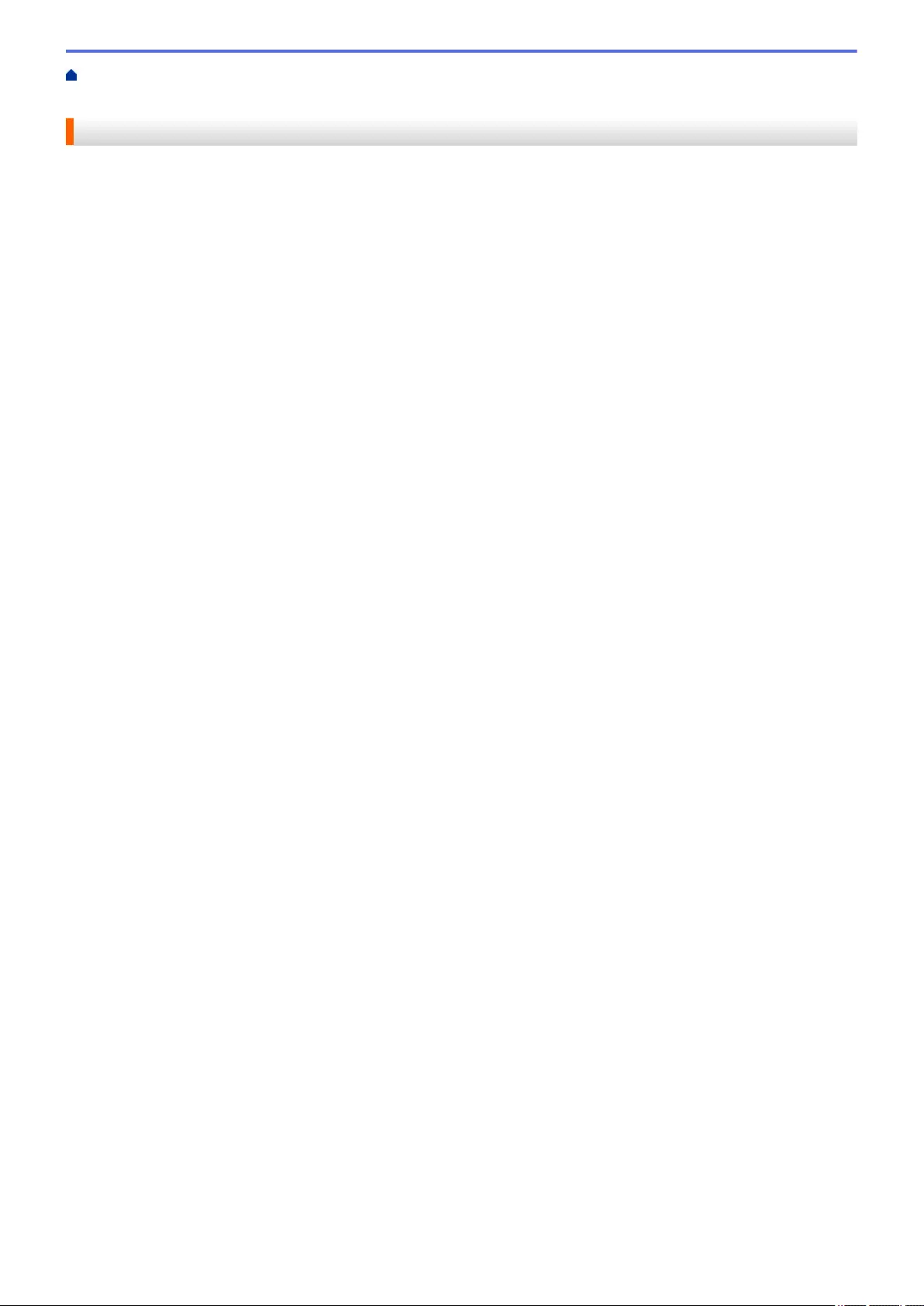
Home > Security > Network Security Features > Manage Your Network Machine Securely Using SSL/
TLS > Certificates and Web Based Management
Certificates and Web Based Management
You must configure a certificate to manage your networked Brother machine securely using SSL/TLS. You must
use Web Based Management to configure a certificate.
•Supported Security Certificate Features
•Create and Install a Certificate
•Manage Multiple Certificates
430
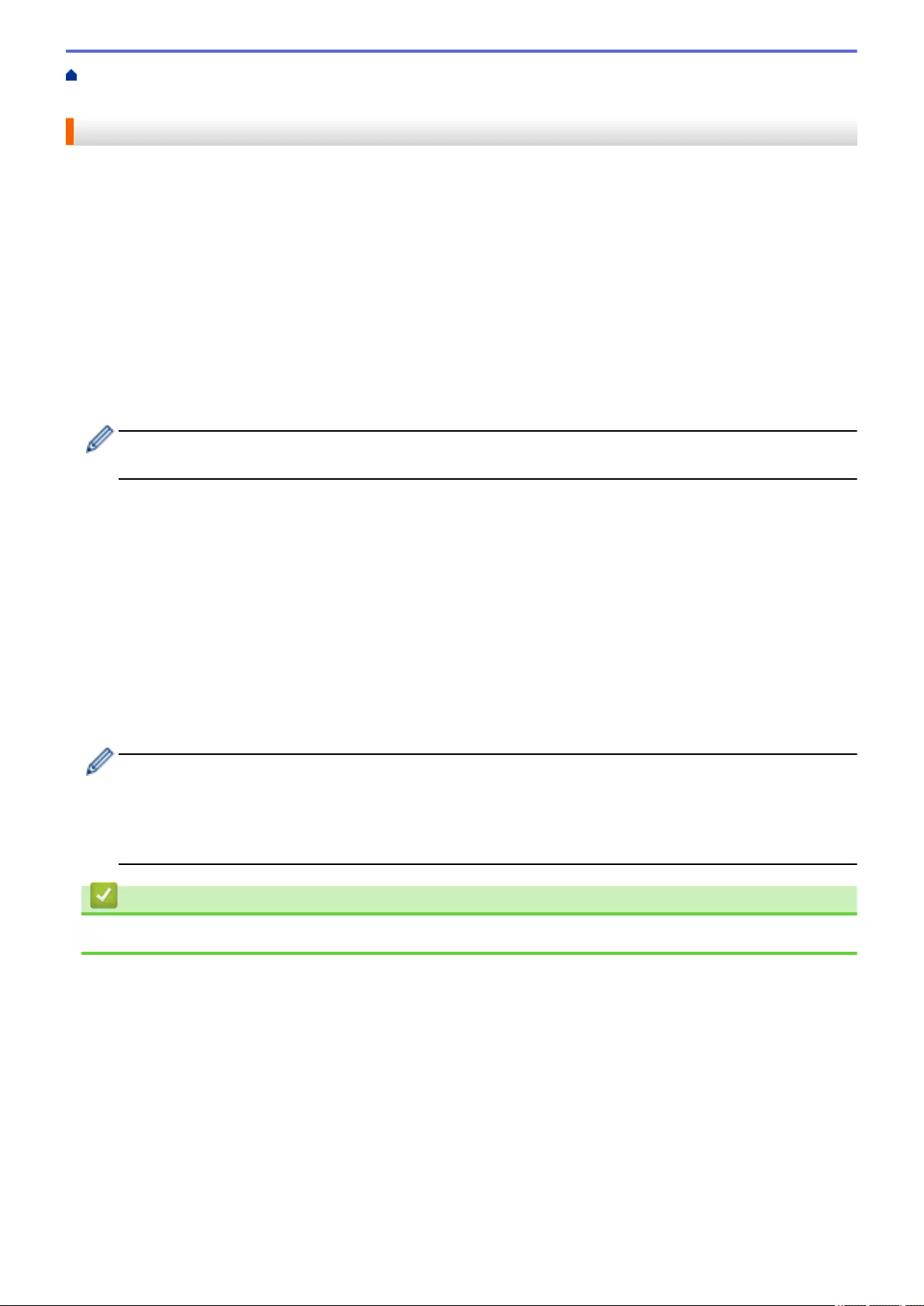
Home > Security > Network Security Features > Manage Your Network Machine Securely Using SSL/
TLS > Certificates and Web Based Management > Supported Security Certificate Features
Supported Security Certificate Features
Your Brother machine supports the use of multiple security certificates, which allows secure management,
authentication, and communication with the machine. The following security certificate features can be used with
the machine:
• SSL/TLS communication
• SSL communcation for SMTP/POP3/IMAP4 (only available for certain models)
• IEEE 802.1x authentication
• IPsec
The Brother machine supports the following:
• Pre-installed certificate
Your machine has a pre-installed self-signed certificate. This certificate enables you to use SSL/TLS
communication without creating or installing a different certificate.
The pre-installed self-signed certificate cannot protect your communication from being compromised. We
recommend using a certificate that is issued by a trusted organization for better security.
• Self-signed certificate
This print server issues its own certificate. Using this certificate, you can easily use the SSL/TLS
communication without creating or installing a different certificate from a CA.
• Certificate from a Certificate Authority (CA)
There are two methods for installing a certificate from a CA. If you already have a certificate from a CA or if
you want to use a certificate from an external trusted CA:
- When using a Certificates Signing Request (CSR) from this print server.
- When importing a certificate and a private key.
• Certificate Authority (CA) Certificate
To use a CA certificate that identifies the CA and owns its private key, you must import that CA certificate
from the CA before configuring the security features of the Network.
• If you are going to use SSL/TLS communication, we recommend contacting your system administrator
first.
• When you reset the print server back to its default factory settings, the certificate and the private key
that are installed will be deleted. If you want to keep the same certificate and the private key after
resetting the print server, export them before resetting, and then reinstall them.
Related Information
•Certificates and Web Based Management
431

Home > Security > Network Security Features > Manage Your Network Machine Securely Using SSL/
TLS > Certificates and Web Based Management > Create and Install a Certificate
Create and Install a Certificate
•Step by Step Guide for Creating and Installing a Certificate
•Create and Install a Self-signed Certificate
•Create and Install a Certificate from a Certificate Authority (CA)
•Import and Export a CA Certificate
432

Home > Security > Network Security Features > Manage Your Network Machine Securely Using SSL/
TLS > Certificates and Web Based Management > Create and Install a Certificate > Step by Step Guide for
Creating and Installing a Certificate
Step by Step Guide for Creating and Installing a Certificate
There are two options when choosing a security certificate: use a self-signed certificate or use a certificate from a
Certificate Authority (CA).
These are a brief summary of the actions required, based on the option you choose.
Option 1
Self-Signed Certificate
1. Create a self-signed certificate using Web Based Management.
2. Install the self-signed certificate on your computer.
Option 2
Certificate from a CA
1. Create a Certificate Signing Request (CSR) using Web Based Management.
2. Install the certificate issued by the CA on your Brother machine using Web Based Management.
3. Install the certificate on your computer.
Related Information
•Create and Install a Certificate
433
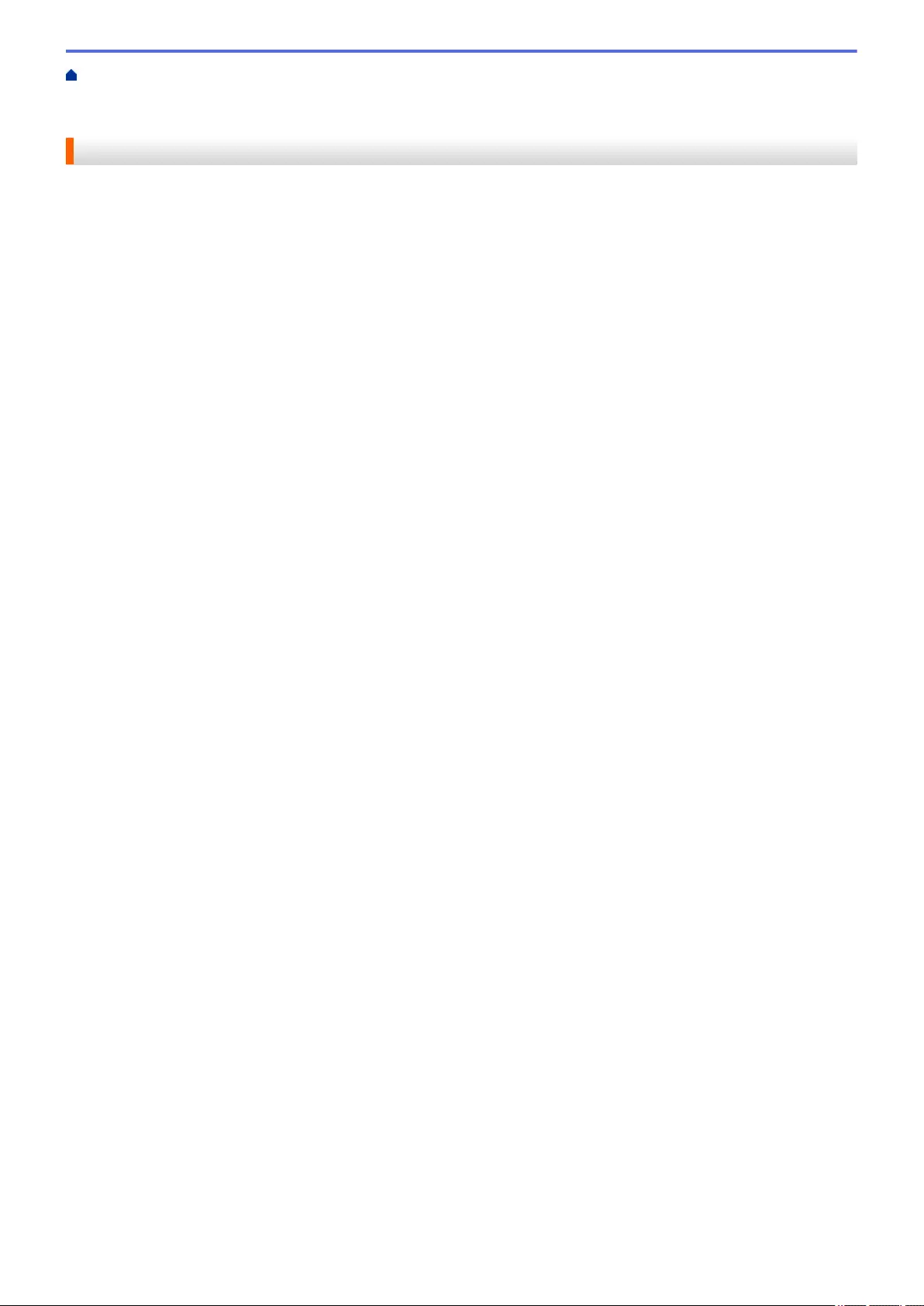
Home > Security > Network Security Features > Manage Your Network Machine Securely Using SSL/
TLS > Certificates and Web Based Management > Create and Install a Certificate > Create and Install a Self-
signed Certificate
Create and Install a Self-signed Certificate
•Create a Self-signed Certificate
•Install the Self-signed Certificate for Windows users with Administrator Rights
•Import and Export the Self-signed Certificate on your Brother Machine
434
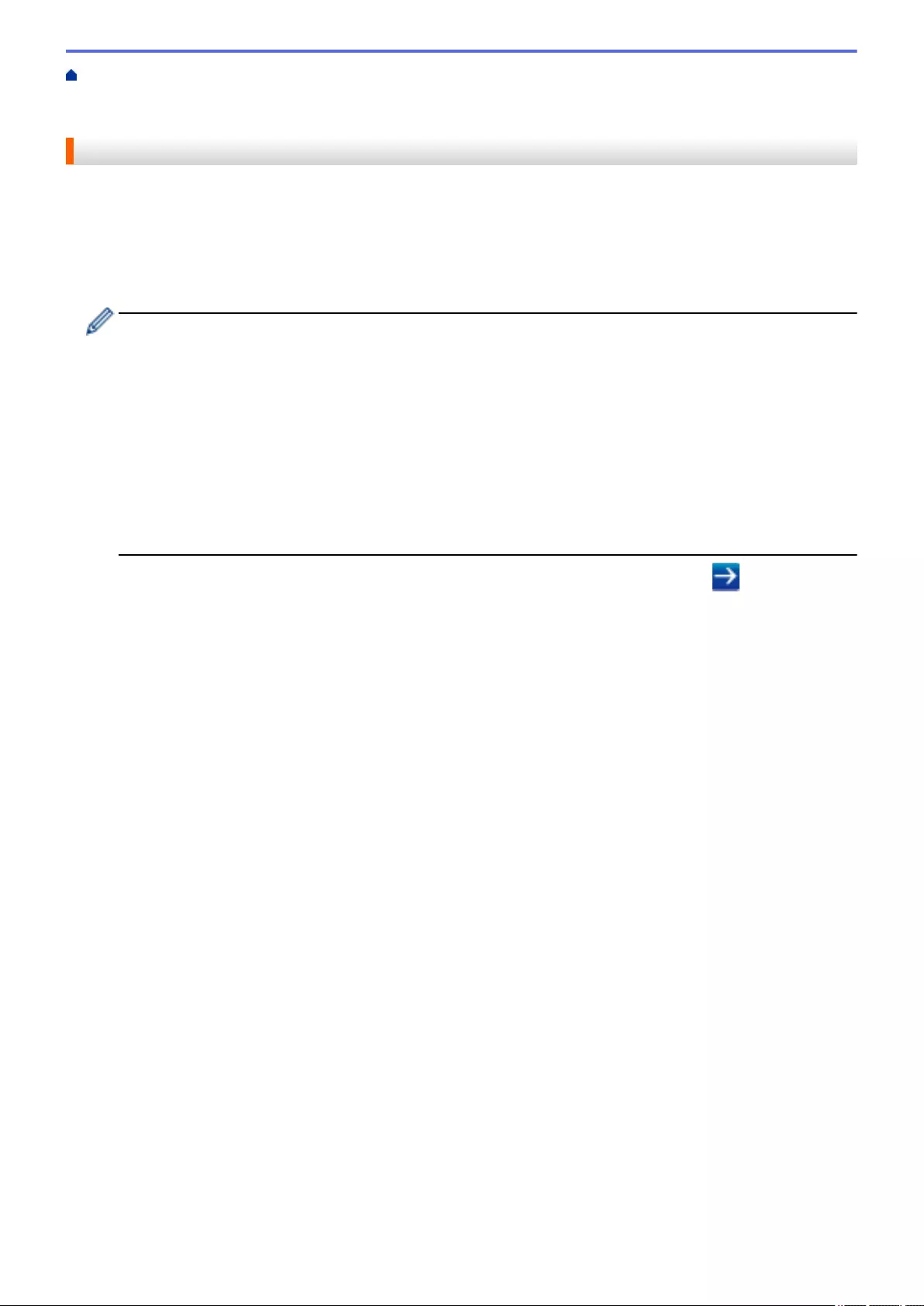
Home > Security > Network Security Features > Manage Your Network Machine Securely Using SSL/
TLS > Certificates and Web Based Management > Create and Install a Certificate > Create and Install a Self-
signed Certificate > Create a Self-signed Certificate
Create a Self-signed Certificate
1. Start your web browser.
2. Type "http://machine's IP address" in your browser's address bar (where "machine's IP address" is the
machine's IP address).
For example:
http://192.168.1.2
• If you are using a Domain Name System or enable a NetBIOS name, you can type another name, such
as "SharedPrinter" instead of the IP address.
- For example:
http://SharedPrinter
If you enable a NetBIOS name, you can also use the node name.
- For example:
http://brnxxxxxxxxxxxx
The NetBIOS name can be found in the Network Configuration Report.
• For Mac, access Web Based Management by clicking the machine's icon on the Status Monitor
screen.
3. No password is required by default. Type a password if you have set one, and then click .
4. Click the Network tab.
5. Click the Security tab.
6. Click Certificate.
7. Click Create Self-Signed Certificate.
8. Enter a Common Name and a Valid Date.
• The length of the Common Name is less than 64 bytes. Enter an identifier, such as an IP address, node
name, or domain name to use when accessing this machine through SSL/TLS communication. The node
name is displayed by default.
• A warning will appear if you use the IPPS or HTTPS protocol and enter a different name in the URL than
the Common Name that was used for the self-signed certificate.
9. Select your setting from the Public Key Algorithm drop-down list. The default setting is RSA(2048bit).
10. Select your setting from the Digest Algorithm drop-down list. The default setting is SHA256.
11. Click Submit.
12. Click Network.
13. Click Protocol.
14. Click HTTP Server Settings.
15. Select the certificate you want to configure from the Select the Certificate drop-down list.
16. Click Submit.
The following screen appears.
435

Home > Security > Network Security Features > Manage Your Network Machine Securely Using SSL/
TLS > Certificates and Web Based Management > Create and Install a Certificate > Create and Install a Self-
signed Certificate > Install the Self-signed Certificate for Windows users with Administrator Rights
Install the Self-signed Certificate for Windows users with Administrator
Rights
The following steps are for Microsoft Internet Explorer. If you use another web browser, consult the
documentation for your web browser to get help with installing certificates.
1. Do one of the following:
• (Windows XP and Windows Server 2003)
Start your web browser, and then go to step 3.
• (Windows Vista, Windows 7, Windows Server 2008)
Click (Start) > All Programs.
• (Windows 8)
Right-click the (Internet Explorer) icon on the taskbar.
• (Windows Server 2012 and Windows Server 2012 R2)
Click (Internet Explorer), and then right-click the (Internet Explorer) icon that appears on the
taskbar.
2. Right-click Internet Explorer, and then click Run as administrator.
If the User Account Control screen appears,
• (Windows Vista) Click Continue (Allow).
• (Windows 7/Windows 8) Click Yes.
3. Type "https://machine's IP address/" in your browser's address bar to access your machine (where
"machine's IP address" is the machine's IP address or the node name that you assigned for the certificate).
437

4. Click Continue to this website (not recommended).
(Windows XP and Windows Server 2003)
When the following dialog box appears, click View Certificate, and then go to step 6.
5. Click Certificate Error, and then click View certificates.
438
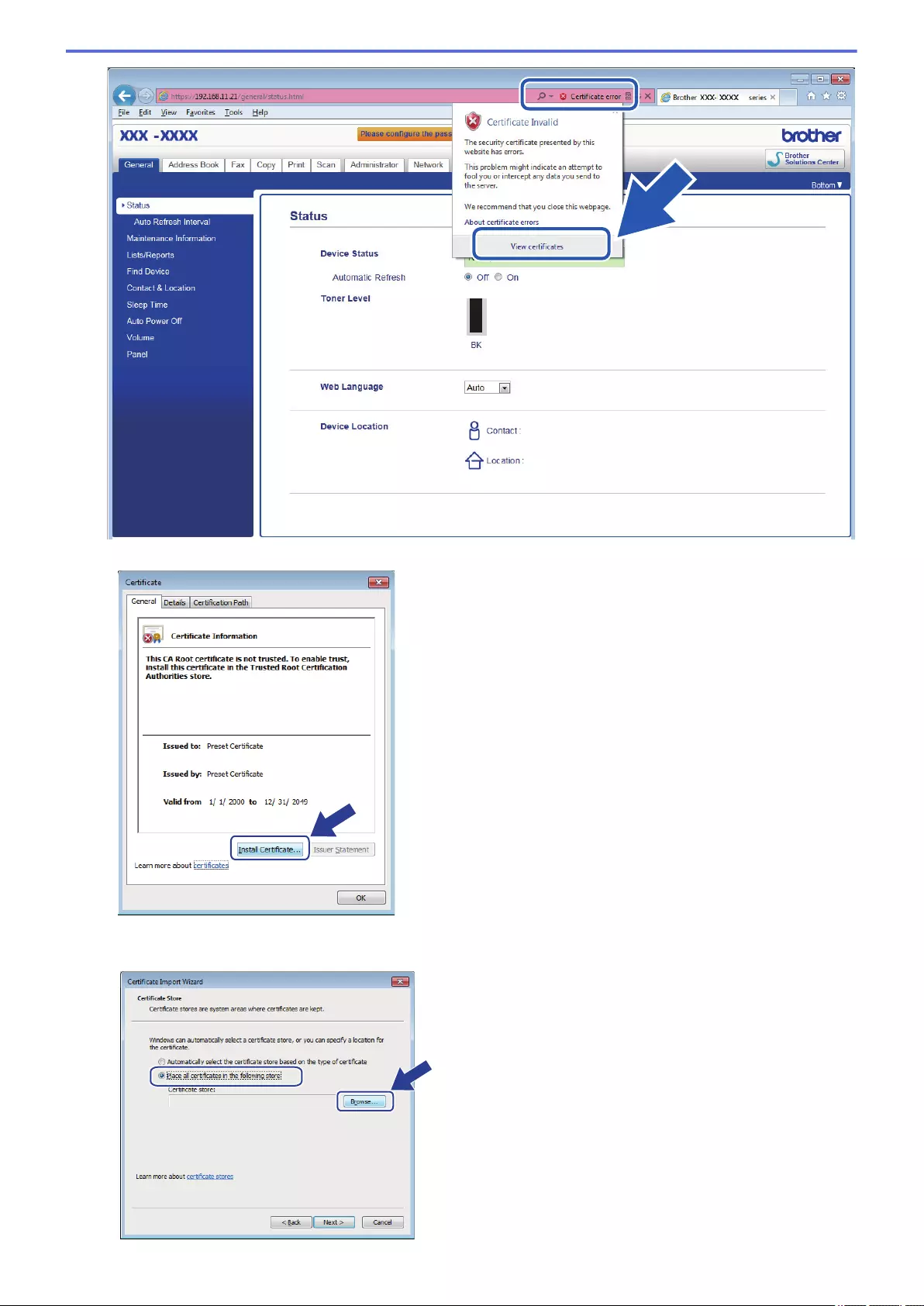
6. Click Install Certificate....
7. When the Certificate Import Wizard appears, click Next.
8. Select Place all certificates in the following store, and then click Browse....
439
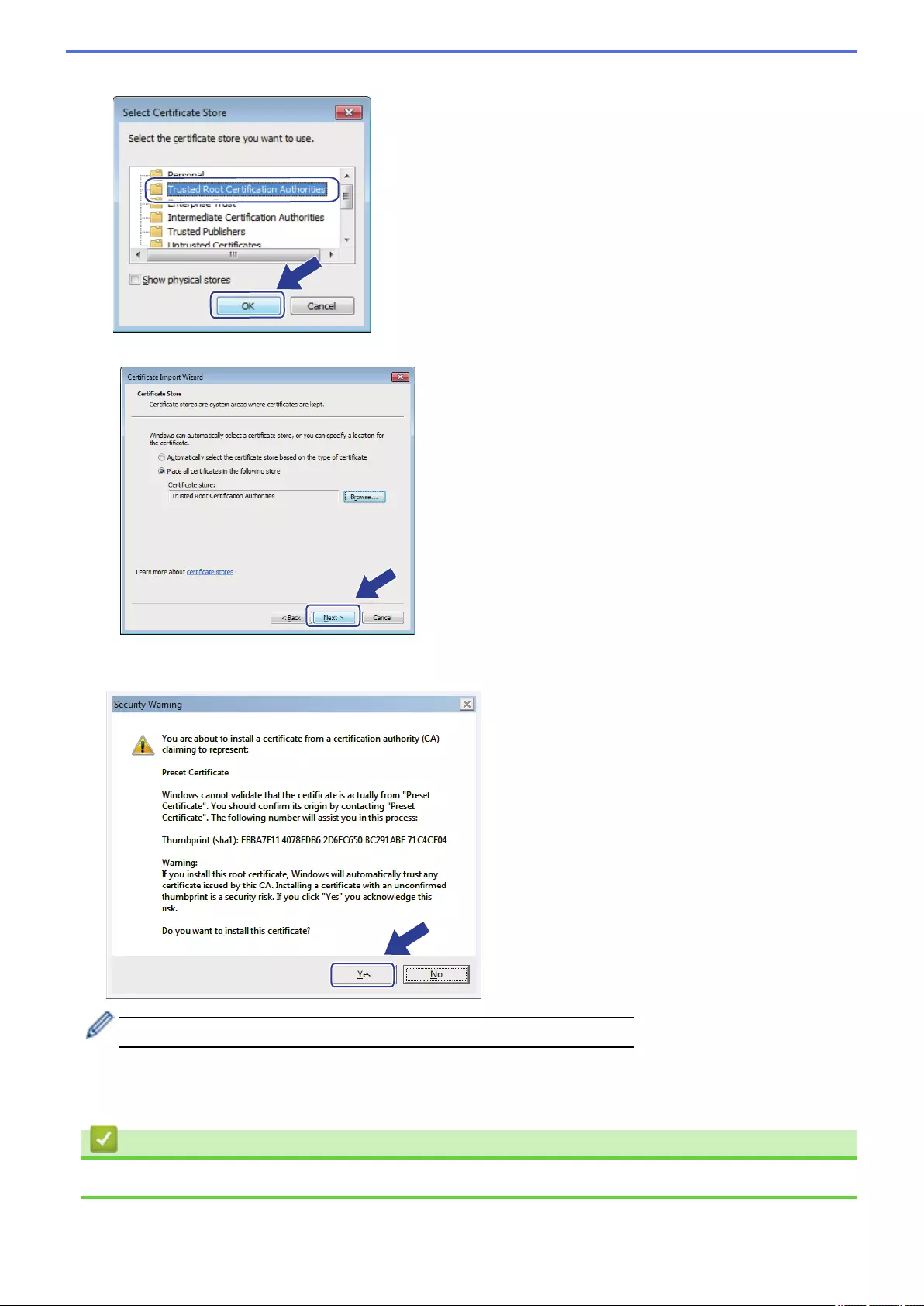
9. Select Trusted Root Certification Authorities, and then click OK.
10. Click Next.
11. Click Finish.
12. Click Yes, if the fingerprint (thumbprint) is correct.
The fingerprint (thumbprint) is printed on the Network Configuration Report.
13. Click OK.
The self-signed certificate is now installed on your computer, and SSL/TLS communication is available.
Related Information
•Create and Install a Self-signed Certificate
440
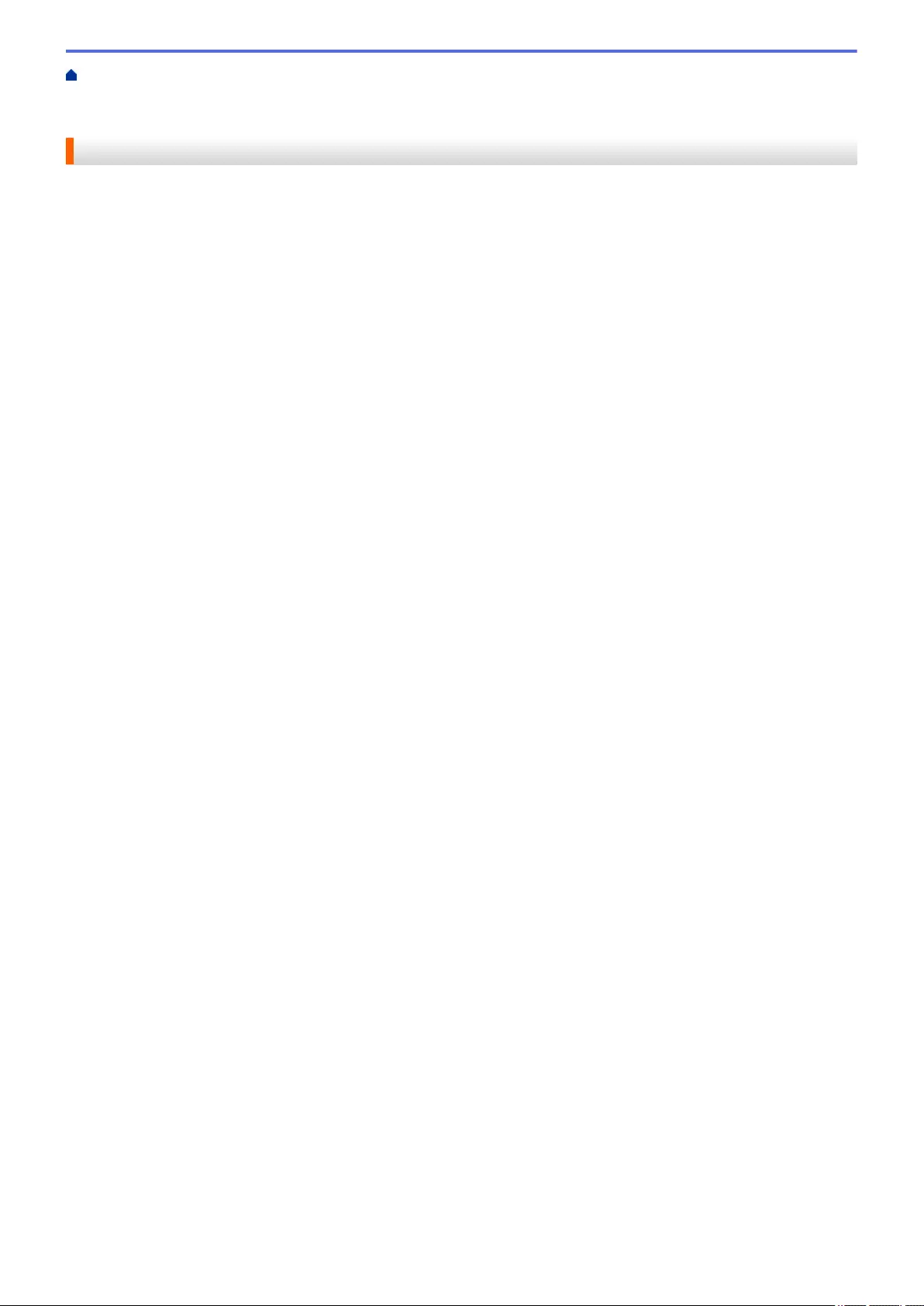
Home > Security > Network Security Features > Manage Your Network Machine Securely Using SSL/
TLS > Certificates and Web Based Management > Create and Install a Certificate > Create and Install a Self-
signed Certificate > Import and Export the Self-signed Certificate on your Brother Machine
Import and Export the Self-signed Certificate on your Brother Machine
You can store the self-signed certificates on your Brother machine and manage them by importing and exporting.
•Import the Self-signed Certificate
•Export the Self-signed Certificate
441
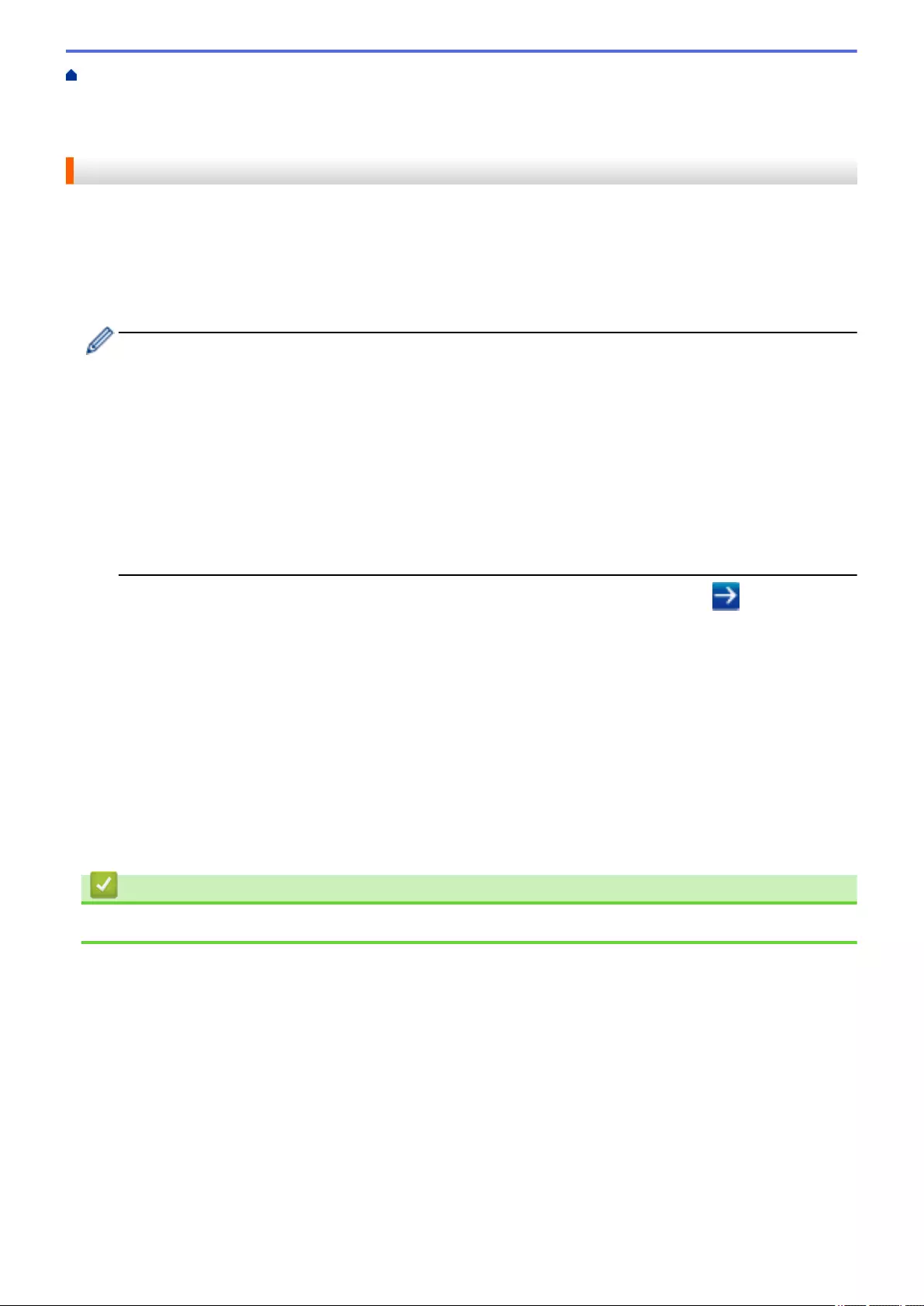
Home > Security > Network Security Features > Manage Your Network Machine Securely Using SSL/
TLS > Certificates and Web Based Management > Create and Install a Certificate > Create and Install a Self-
signed Certificate > Import and Export the Self-signed Certificate on your Brother Machine > Import the Self-
signed Certificate
Import the Self-signed Certificate
1. Start your web browser.
2. Type "http://machine's IP address" in your browser's address bar (where "machine's IP address" is the
machine's IP address).
For example:
http://192.168.1.2
• If you are using a Domain Name System or enable a NetBIOS name, you can type another name, such
as "SharedPrinter" instead of the IP address.
- For example:
http://SharedPrinter
If you enable a NetBIOS name, you can also use the node name.
- For example:
http://brnxxxxxxxxxxxx
The NetBIOS name can be found in the Network Configuration Report.
• For Mac, access Web Based Management by clicking the machine's icon on the Status Monitor
screen.
3. No password is required by default. Type a password if you have set one, and then click .
4. Click the Network tab.
5. Click the Security tab.
6. Click Certificate.
7. Click Import Certificate and Private Key.
8. Browse to the file you want to import.
9. Type the password if the file is encrypted, and then click Submit.
The self-signed certificate is imported to your machine.
To use SSL/TLS communication, the self-signed certificate must also be installed on your computer. Contact your
network administrator.
Related Information
•Import and Export the Self-signed Certificate on your Brother Machine
442
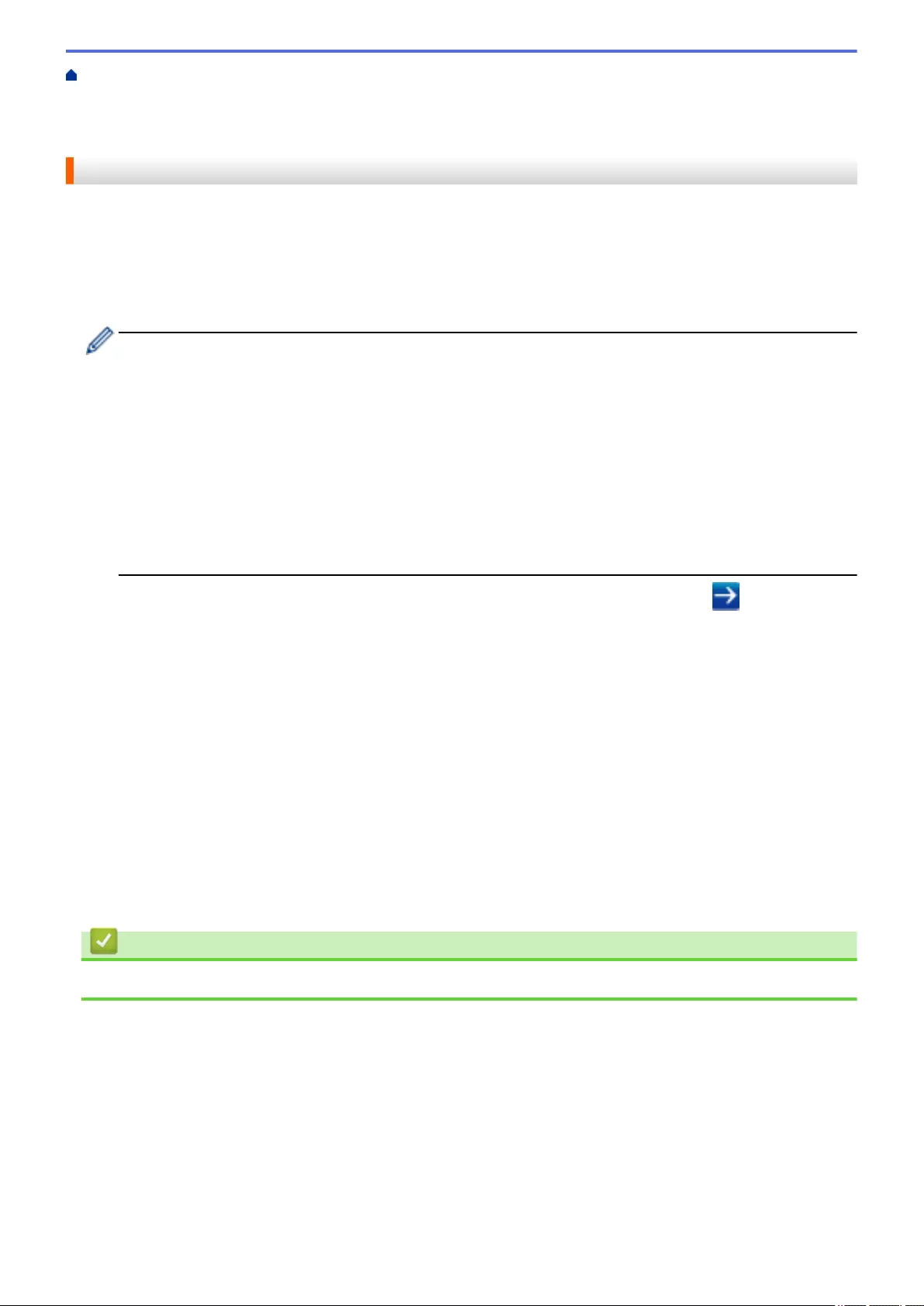
Home > Security > Network Security Features > Manage Your Network Machine Securely Using SSL/
TLS > Certificates and Web Based Management > Create and Install a Certificate > Create and Install a Self-
signed Certificate > Import and Export the Self-signed Certificate on your Brother Machine > Export the Self-
signed Certificate
Export the Self-signed Certificate
1. Start your web browser.
2. Type "http://machine's IP address" in your browser's address bar (where "machine's IP address" is the
machine's IP address).
For example:
http://192.168.1.2
• If you are using a Domain Name System or enable a NetBIOS name, you can type another name, such
as "SharedPrinter" instead of the IP address.
- For example:
http://SharedPrinter
If you enable a NetBIOS name, you can also use the node name.
- For example:
http://brnxxxxxxxxxxxx
The NetBIOS name can be found in the Network Configuration Report.
• For Mac, access Web Based Management by clicking the machine's icon on the Status Monitor
screen.
3. No password is required by default. Type a password if you have set one, and then click .
4. Click the Network tab.
5. Click the Security tab.
6. Click Certificate.
7. Click Export shown with Certificate List.
8. If you want to encrypt the file, type a password in the Enter password field.
If the Enter password field is blank, your output file will not be encrypted.
9. Type the password again in the Retype password field, and then click Submit.
10. Click Save.
11. Specify the location where you want to save the file.
The self-signed certificate is exported to your computer.
You can also import the self-signed certificate to your computer.
Related Information
•Import and Export the Self-signed Certificate on your Brother Machine
443
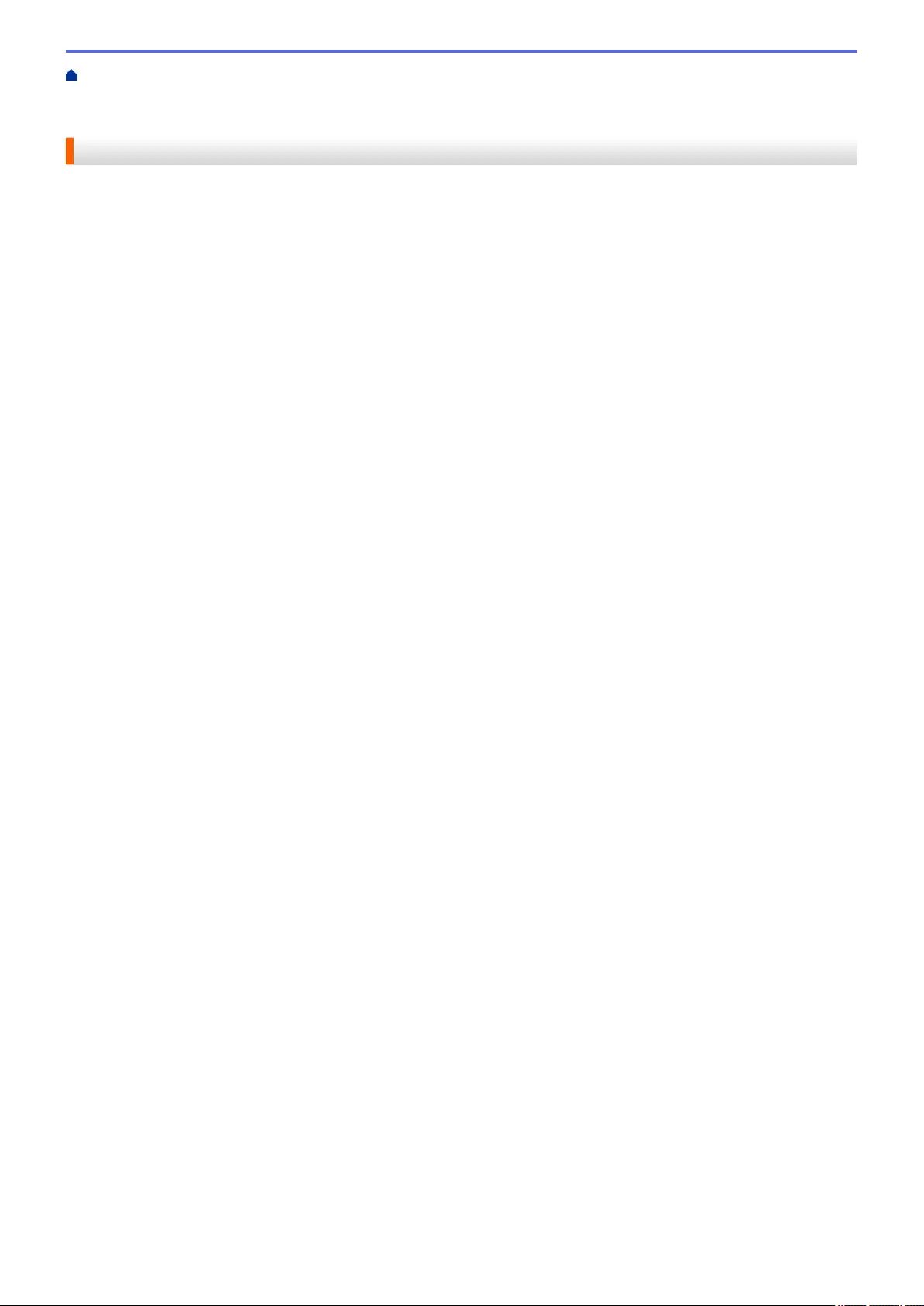
Home > Security > Network Security Features > Manage Your Network Machine Securely Using SSL/
TLS > Certificates and Web Based Management > Create and Install a Certificate > Create and Install a
Certificate from a Certificate Authority (CA)
Create and Install a Certificate from a Certificate Authority (CA)
If you already have a certificate from an external trusted CA, you can store the certificate and private key on the
machine and manage them by importing and exporting. If you do not have a certificate from an external trusted
CA, create a Certificate Signing Request (CSR), send it to a CA for authentication, and install the returned
certificate on your machine.
•Create a Certificate Signing Request (CSR)
•Install a Certificate on Your Brother Machine
•Import and Export the Certificate and Private Key
444
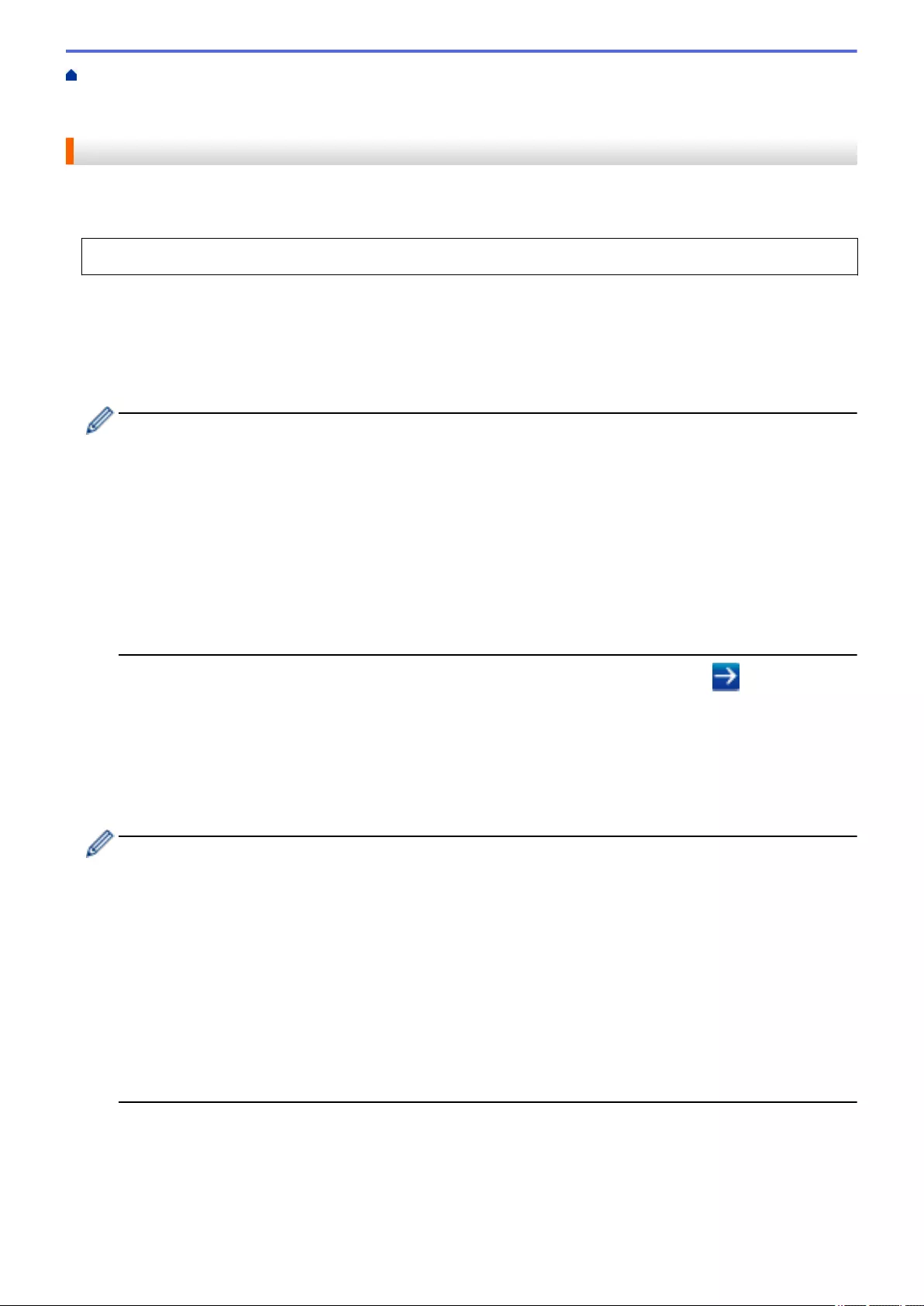
Home > Security > Network Security Features > Manage Your Network Machine Securely Using SSL/
TLS > Certificates and Web Based Management > Create and Install a Certificate > Create and Install a
Certificate from a Certificate Authority (CA) > Create a Certificate Signing Request (CSR)
Create a Certificate Signing Request (CSR)
A Certificate Signing Request (CSR) is a request sent to a Certificate Authority (CA) to authenticate the
credentials contained within the certificate.
We recommend installing a Root Certificate from the CA on your computer before creating the CSR.
1. Start your web browser.
2. Type "http://machine's IP address" in your browser's address bar (where "machine's IP address" is the
machine's IP address).
For example:
http://192.168.1.2
• If you are using a Domain Name System or enable a NetBIOS name, you can type another name, such
as "SharedPrinter" instead of the IP address.
- For example:
http://SharedPrinter
If you enable a NetBIOS name, you can also use the node name.
- For example:
http://brnxxxxxxxxxxxx
The NetBIOS name can be found in the Network Configuration Report.
• For Mac, access Web Based Management by clicking the machine's icon on the Status Monitor
screen.
3. No password is required by default. Type a password if you have set one, and then click .
4. Click the Network tab.
5. Click the Security tab.
6. Click Certificate.
7. Click Create CSR.
8. Type a Common Name (required) and add other information about your Organization (optional).
• Your company details are required so that a CA can confirm your identity and verify it to the outside
world.
• The length of the Common Name must be less than 64 bytes. Enter an identifier, such as an IP
address, node name, or domain name to use when accessing this printer through SSL/TLS
communication. The node name is displayed by default. The Common Name is required.
• A warning will appear if you type a different name in the URL than the Common Name that was used for
the certificate.
• The length of the Organization, the Organization Unit, the City/Locality and the State/Province must
be less than 64 bytes.
• The Country/Region should be a two character ISO 3166 country code.
• If you are configuring an X.509v3 certificate extension, select the Configure extended partition check
box, and then select Auto (Register IPv4) or Manual.
9. Select your setting from the Public Key Algorithm drop-down list. The default setting is RSA(2048bit).
10. Select your setting from the Digest Algorithm drop-down list. The default setting is SHA256.
11. Click Submit.
The CSR appears on your screen. Save the CSR as a file or copy and paste it into an online CSR form
offered by a Certificate Authority.
445
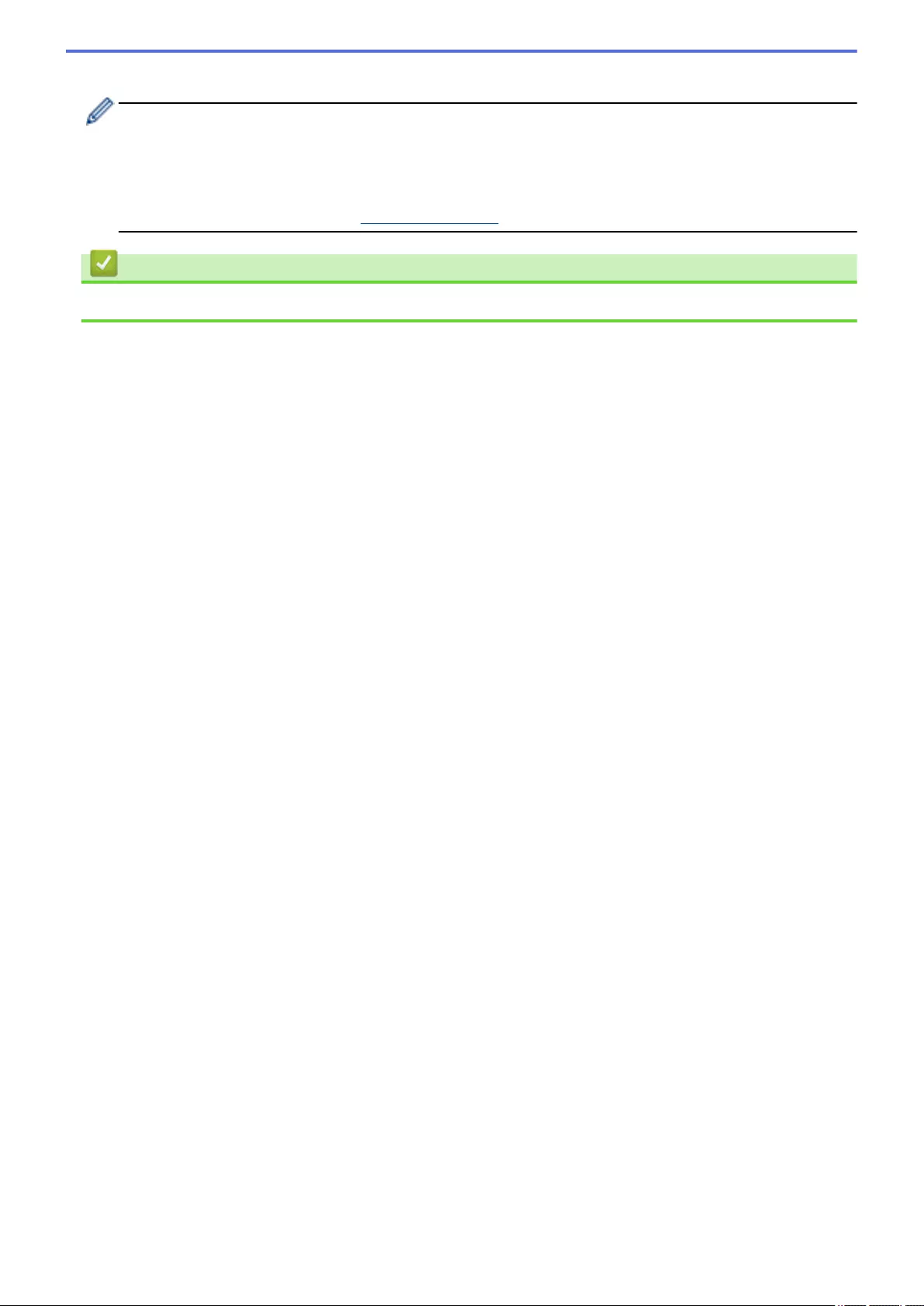
12. Click Save.
• Follow your CA's policy regarding the method to send a CSR to your CA.
• If you are using the Enterprise root CA of Windows Server 2003/2008/2012/2012 R2, we recommend
using the Web Server for the certificate template to securely create the Client Certificate. If you are
creating a Client Certificate for an IEEE 802.1x environment with EAP-TLS authentication, we
recommend using User for the certificate template. For more information, go to your model's page on
the Brother Solutions Center at support.brother.com.
Related Information
•Create and Install a Certificate from a Certificate Authority (CA)
446
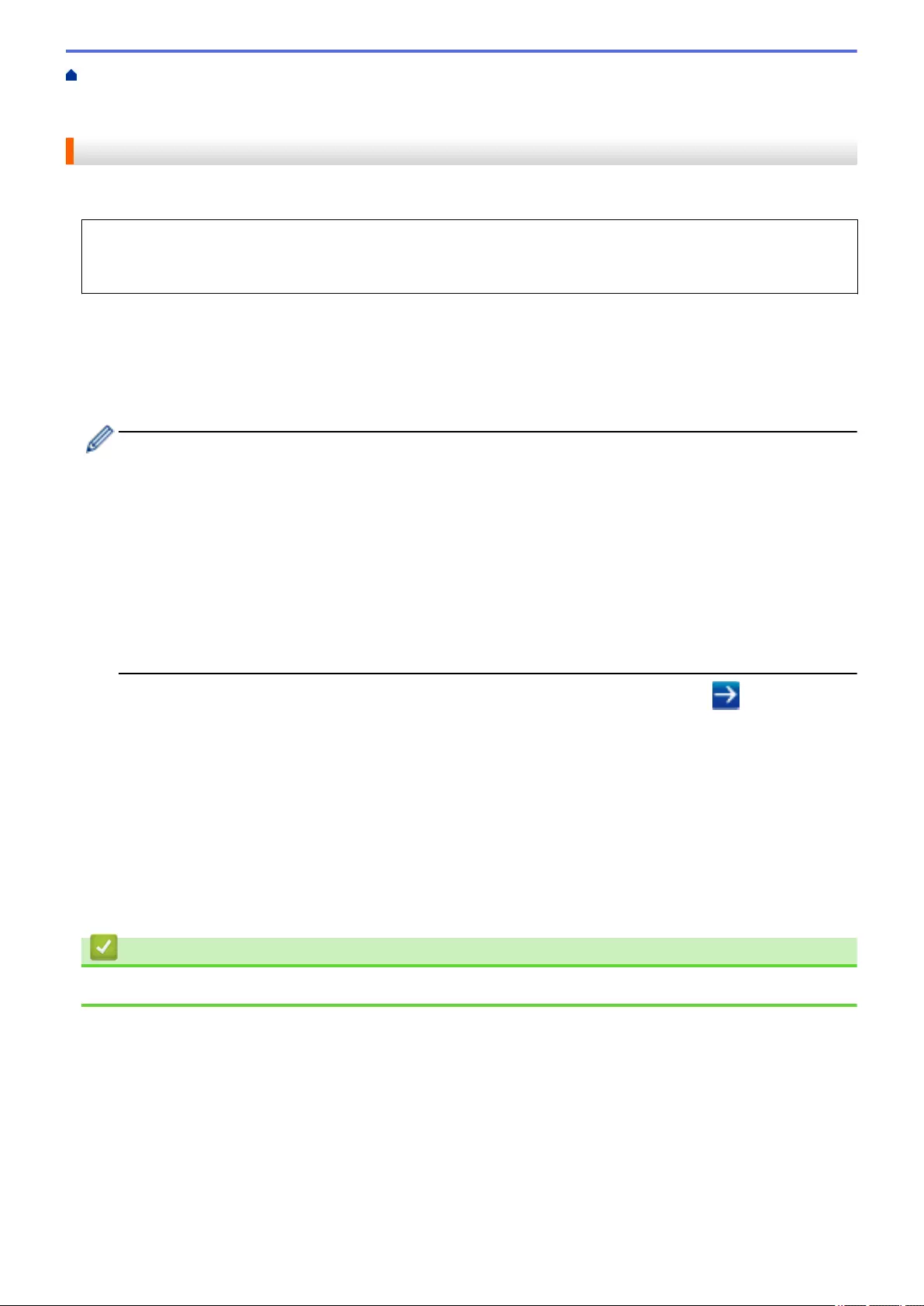
Home > Security > Network Security Features > Manage Your Network Machine Securely Using SSL/
TLS > Certificates and Web Based Management > Create and Install a Certificate > Create and Install a
Certificate from a Certificate Authority (CA) > Install a Certificate on Your Brother Machine
Install a Certificate on Your Brother Machine
When you receive a certificate from a CA, follow the steps below to install it into the print server:
Only a certificate issued with your machine's CSR can be installed onto the machine. When you want to create
another CSR, make sure that the certificate is installed before creating another CSR. Create another CSR only
after installing the certificate on the machine. If you do not, the CSR you create before installing will be invalid.
1. Start your web browser.
2. Type "http://machine's IP address" in your browser's address bar (where "machine's IP address" is the
machine's IP address).
For example:
http://192.168.1.2
• If you are using a Domain Name System or enable a NetBIOS name, you can type another name, such
as "SharedPrinter" instead of the IP address.
- For example:
http://SharedPrinter
If you enable a NetBIOS name, you can also use the node name.
- For example:
http://brnxxxxxxxxxxxx
The NetBIOS name can be found in the Network Configuration Report.
• For Mac, access Web Based Management by clicking the machine's icon on the Status Monitor
screen.
3. No password is required by default. Type a password if you have set one, and then click .
4. Click the Network tab.
5. Click the Security tab.
6. Click Certificate.
7. Click Install Certificate.
8. Browse to the file that contains the certificate issued by the CA, and then click Submit.
The certificate has been created successfully and saved in your machine's memory successfully.
To use SSL/TLS communication, the Root Certificate from the CA must be installed on your computer. Contact
your network administrator.
Related Information
•Create and Install a Certificate from a Certificate Authority (CA)
447
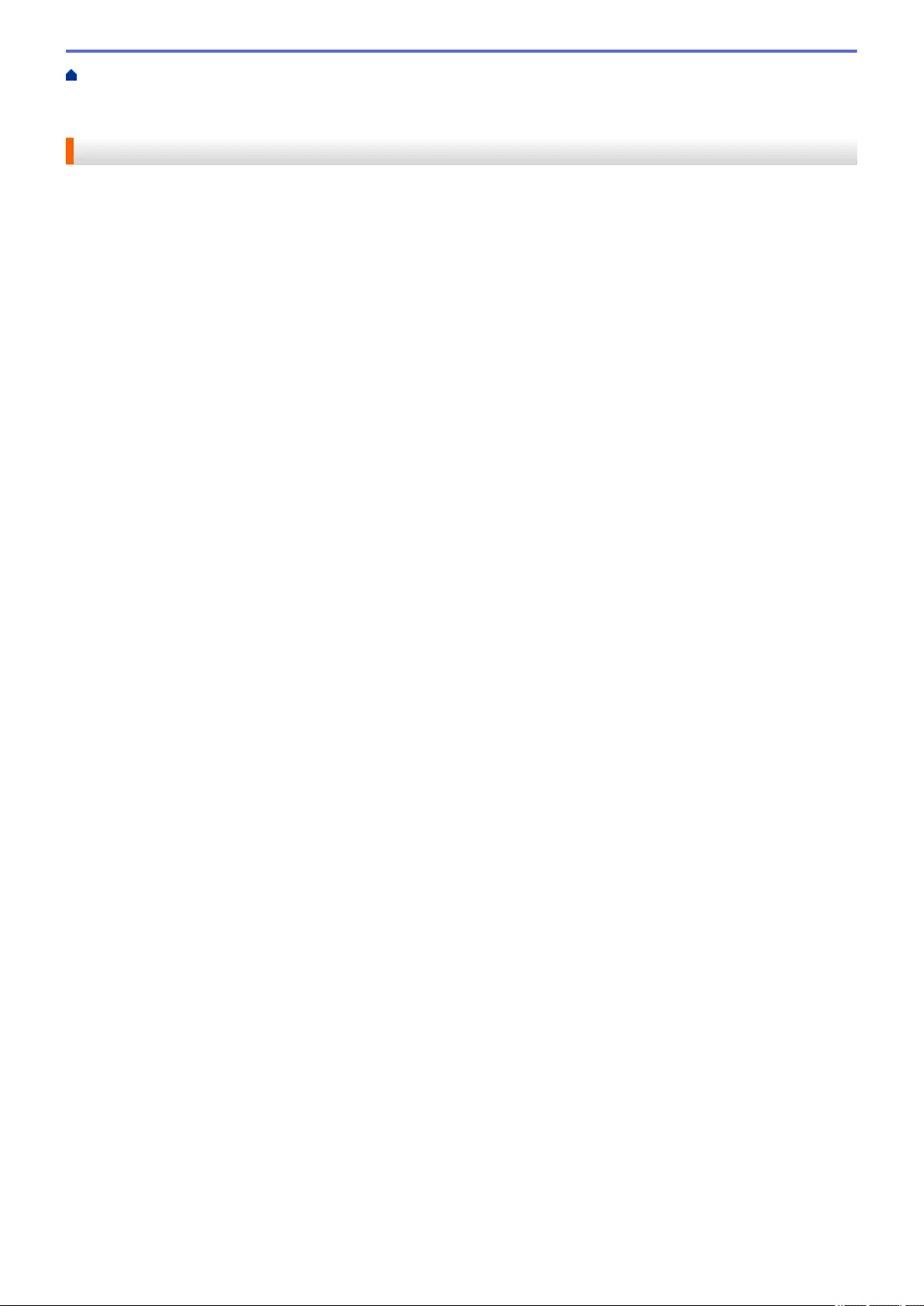
Home > Security > Network Security Features > Manage Your Network Machine Securely Using SSL/
TLS > Certificates and Web Based Management > Create and Install a Certificate > Create and Install a
Certificate from a Certificate Authority (CA) > Import and Export the Certificate and Private Key
Import and Export the Certificate and Private Key
Store the certificate and private key on your machine and manage them by importing and exporting them.
•Import a Certificate and Private Key
•Export the Certificate and Private Key
448
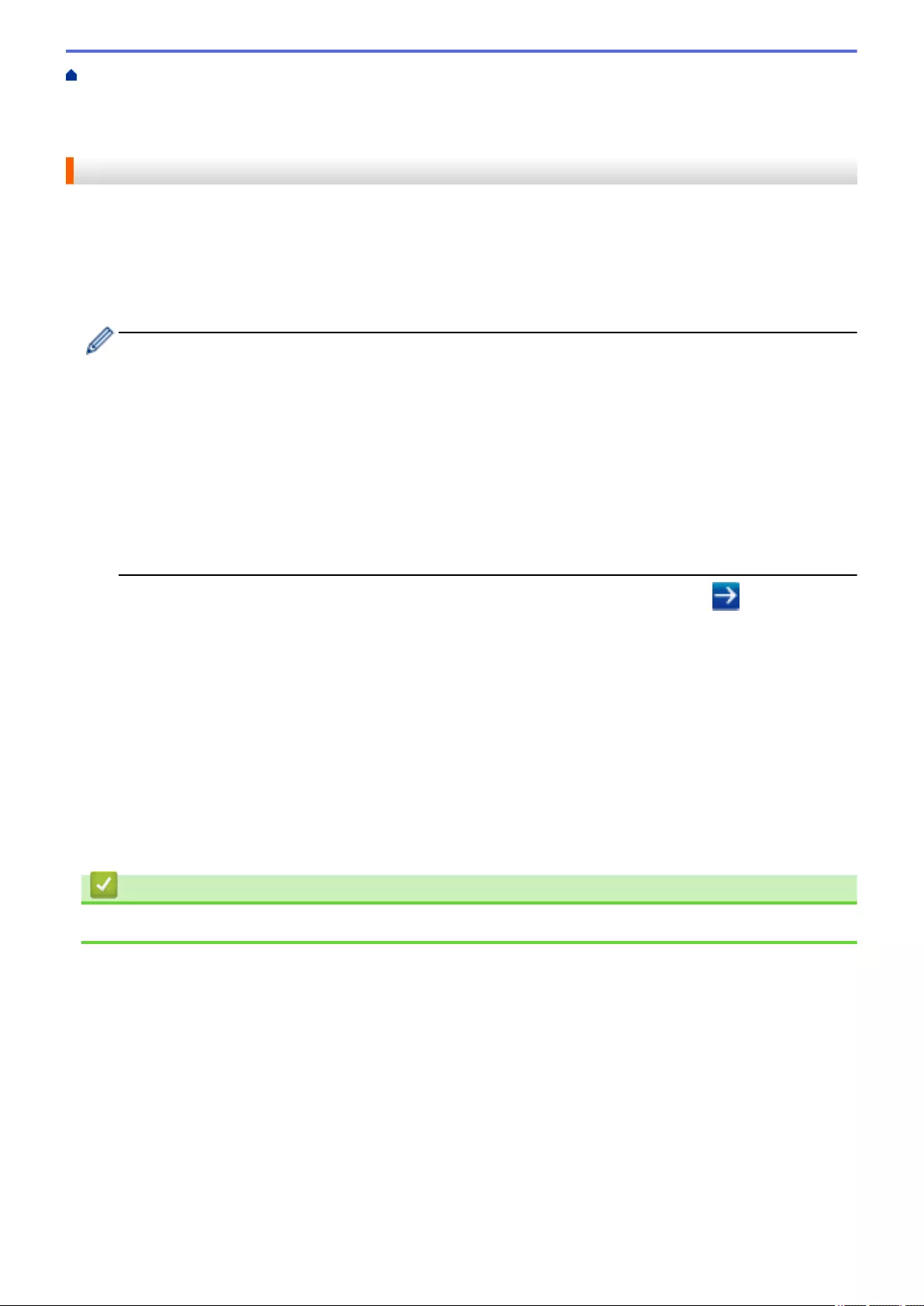
Home > Security > Network Security Features > Manage Your Network Machine Securely Using SSL/
TLS > Certificates and Web Based Management > Create and Install a Certificate > Create and Install a
Certificate from a Certificate Authority (CA) > Import and Export the Certificate and Private Key > Import a
Certificate and Private Key
Import a Certificate and Private Key
1. Start your web browser.
2. Type "http://machine's IP address" in your browser's address bar (where "machine's IP address" is the
machine's IP address).
For example:
http://192.168.1.2
• If you are using a Domain Name System or enable a NetBIOS name, you can type another name, such
as "SharedPrinter" instead of the IP address.
- For example:
http://SharedPrinter
If you enable a NetBIOS name, you can also use the node name.
- For example:
http://brnxxxxxxxxxxxx
The NetBIOS name can be found in the Network Configuration Report.
• For Mac, access Web Based Management by clicking the machine's icon on the Status Monitor
screen.
3. No password is required by default. Type a password if you have set one, and then click .
4. Click the Network tab.
5. Click the Security tab.
6. Click Certificate.
7. Click Import Certificate and Private Key.
8. Browse to the file you want to import.
9. Type the password if the file is encrypted, and then click Submit.
The certificate and private key are imported to your machine.
To use SSL/TLS communication, the Root Certificate from the CA must also be installed on your computer.
Contact your network administrator.
Related Information
•Import and Export the Certificate and Private Key
449
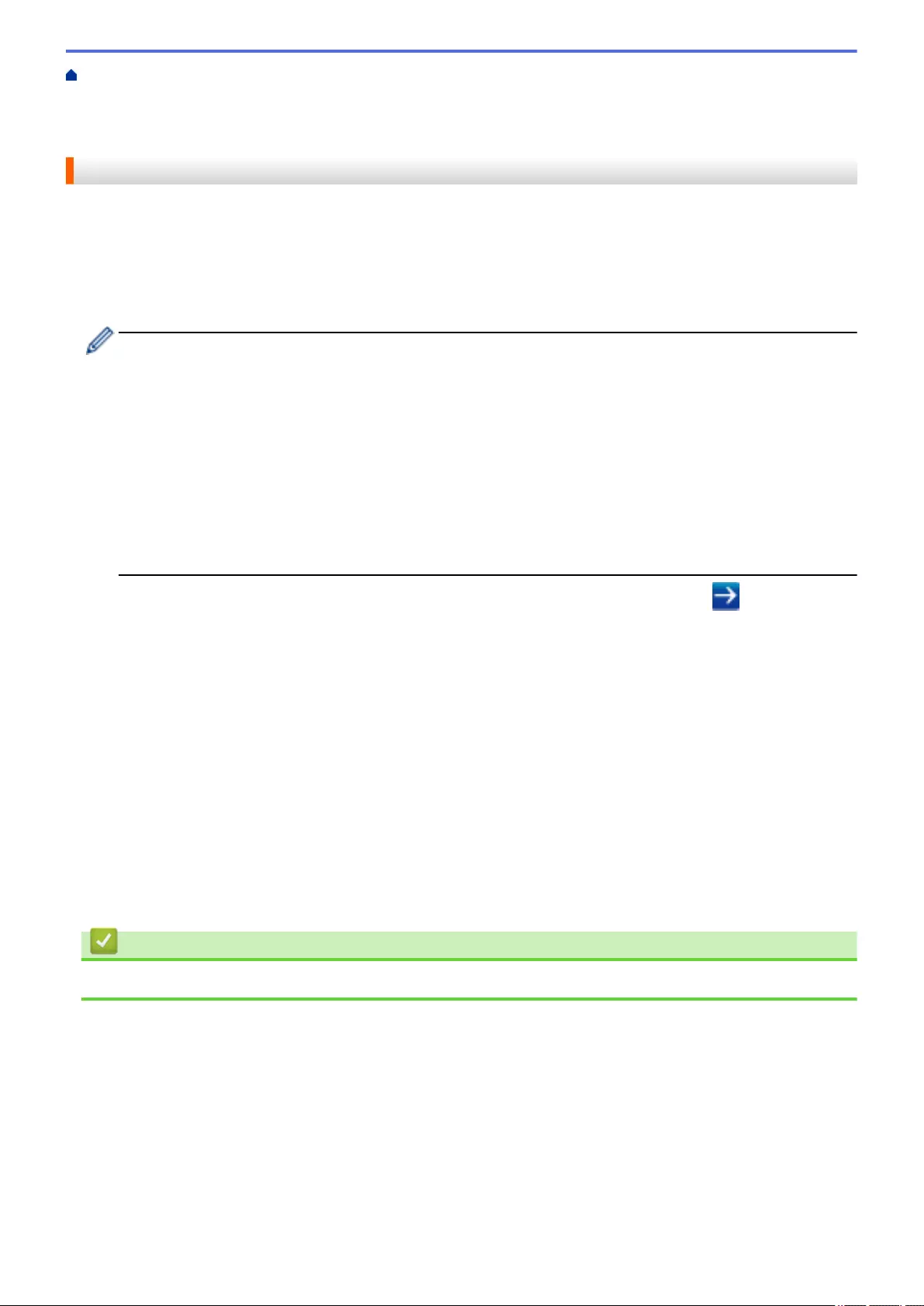
Home > Security > Network Security Features > Manage Your Network Machine Securely Using SSL/
TLS > Certificates and Web Based Management > Create and Install a Certificate > Create and Install a
Certificate from a Certificate Authority (CA) > Import and Export the Certificate and Private Key > Export the
Certificate and Private Key
Export the Certificate and Private Key
1. Start your web browser.
2. Type "http://machine's IP address" in your browser's address bar (where "machine's IP address" is the
machine's IP address).
For example:
http://192.168.1.2
• If you are using a Domain Name System or enable a NetBIOS name, you can type another name, such
as "SharedPrinter" instead of the IP address.
- For example:
http://SharedPrinter
If you enable a NetBIOS name, you can also use the node name.
- For example:
http://brnxxxxxxxxxxxx
The NetBIOS name can be found in the Network Configuration Report.
• For Mac, access Web Based Management by clicking the machine's icon on the Status Monitor
screen.
3. No password is required by default. Type a password if you have set one, and then click .
4. Click the Network tab.
5. Click the Security tab.
6. Click Certificate.
7. Click Export shown with Certificate List.
8. Enter the password if you want to encrypt the file.
If a blank password is used, the output is not encrypted.
9. Enter the password again for confirmation, and then click Submit.
10. Click Save.
11. Specify the location where you want to save the file.
The certificate and private key are exported to your computer.
You can also import the certificate to your computer.
Related Information
•Import and Export the Certificate and Private Key
450

Home > Security > Network Security Features > Manage Your Network Machine Securely Using SSL/
TLS > Certificates and Web Based Management > Create and Install a Certificate > Import and Export a CA
Certificate
Import and Export a CA Certificate
You can import, export and store CA certificates on your Brother machine.
•Import a CA Certificate
•Export a CA Certificate
451
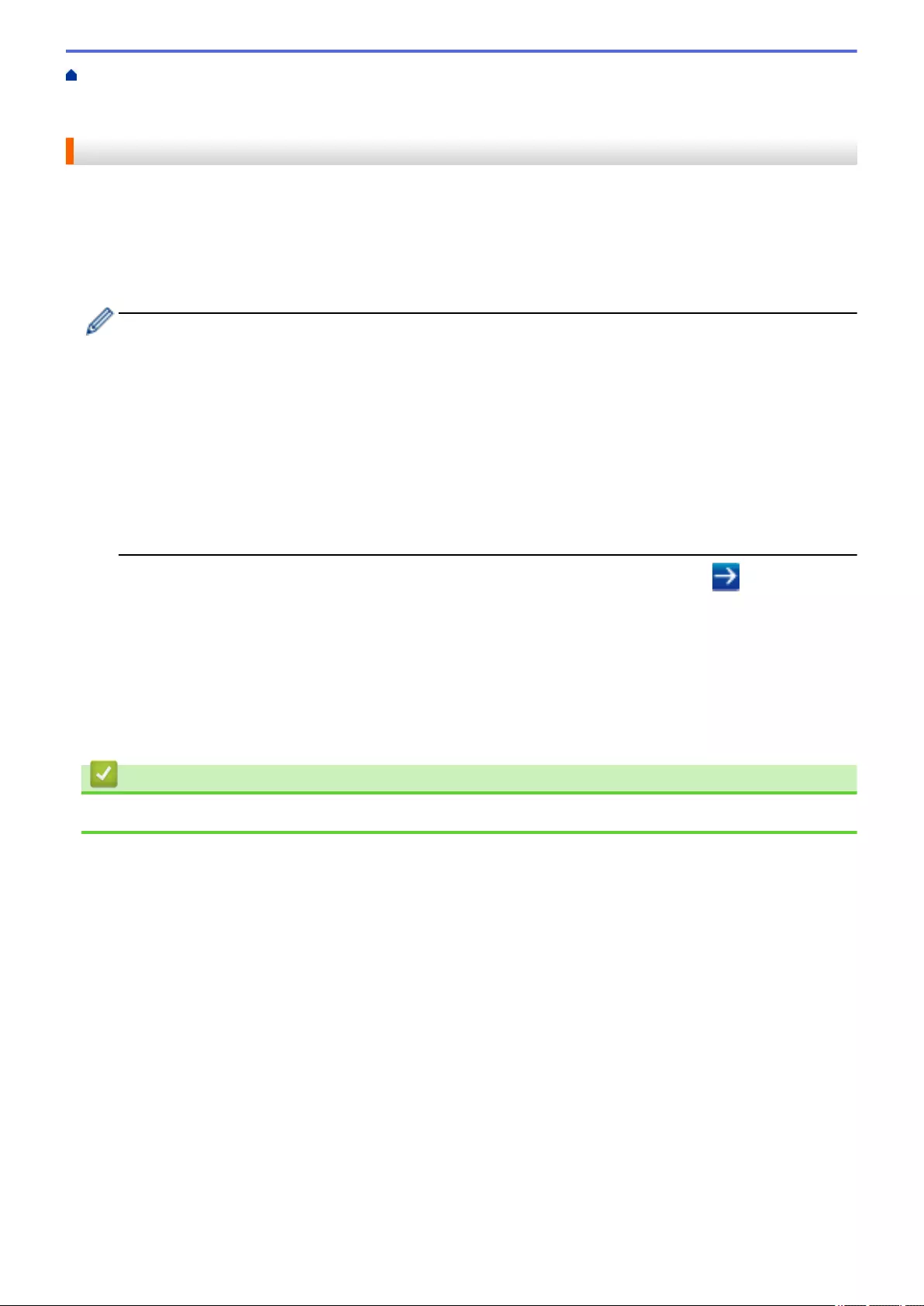
Home > Security > Network Security Features > Manage Your Network Machine Securely Using SSL/
TLS > Certificates and Web Based Management > Create and Install a Certificate > Import and Export a CA
Certificate > Import a CA Certificate
Import a CA Certificate
1. Start your web browser.
2. Type "http://machine's IP address" in your browser's address bar (where "machine's IP address" is the
machine's IP address).
For example:
http://192.168.1.2
• If you are using a Domain Name System or enable a NetBIOS name, you can type another name, such
as "SharedPrinter" instead of the IP address.
- For example:
http://SharedPrinter
If you enable a NetBIOS name, you can also use the node name.
- For example:
http://brnxxxxxxxxxxxx
The NetBIOS name can be found in the Network Configuration Report.
• For Mac, access Web Based Management by clicking the machine's icon on the Status Monitor
screen.
3. No password is required by default. Type a password if you have set one, and then click .
4. Click the Network tab.
5. Click the Security tab.
6. Click CA Certificate.
7. Click Import CA Certificate.
8. Browse to the file you want to import.
9. Click Submit.
Related Information
•Import and Export a CA Certificate
452

Home > Security > Network Security Features > Manage Your Network Machine Securely Using SSL/
TLS > Certificates and Web Based Management > Create and Install a Certificate > Import and Export a CA
Certificate > Export a CA Certificate
Export a CA Certificate
1. Start your web browser.
2. Type "http://machine's IP address" in your browser's address bar (where "machine's IP address" is the
machine's IP address).
For example:
http://192.168.1.2
• If you are using a Domain Name System or enable a NetBIOS name, you can type another name, such
as "SharedPrinter" instead of the IP address.
- For example:
http://SharedPrinter
If you enable a NetBIOS name, you can also use the node name.
- For example:
http://brnxxxxxxxxxxxx
The NetBIOS name can be found in the Network Configuration Report.
• For Mac, access Web Based Management by clicking the machine's icon on the Status Monitor
screen.
3. No password is required by default. Type a password if you have set one, and then click .
4. Click the Network tab.
5. Click the Security tab.
6. Click CA Certificate.
7. Select the certificate you want to export and click Export.
8. Click Submit.
9. Click Save.
10. Specify where on your computer you want to save the exported certificate, and save it.
Related Information
•Import and Export a CA Certificate
453
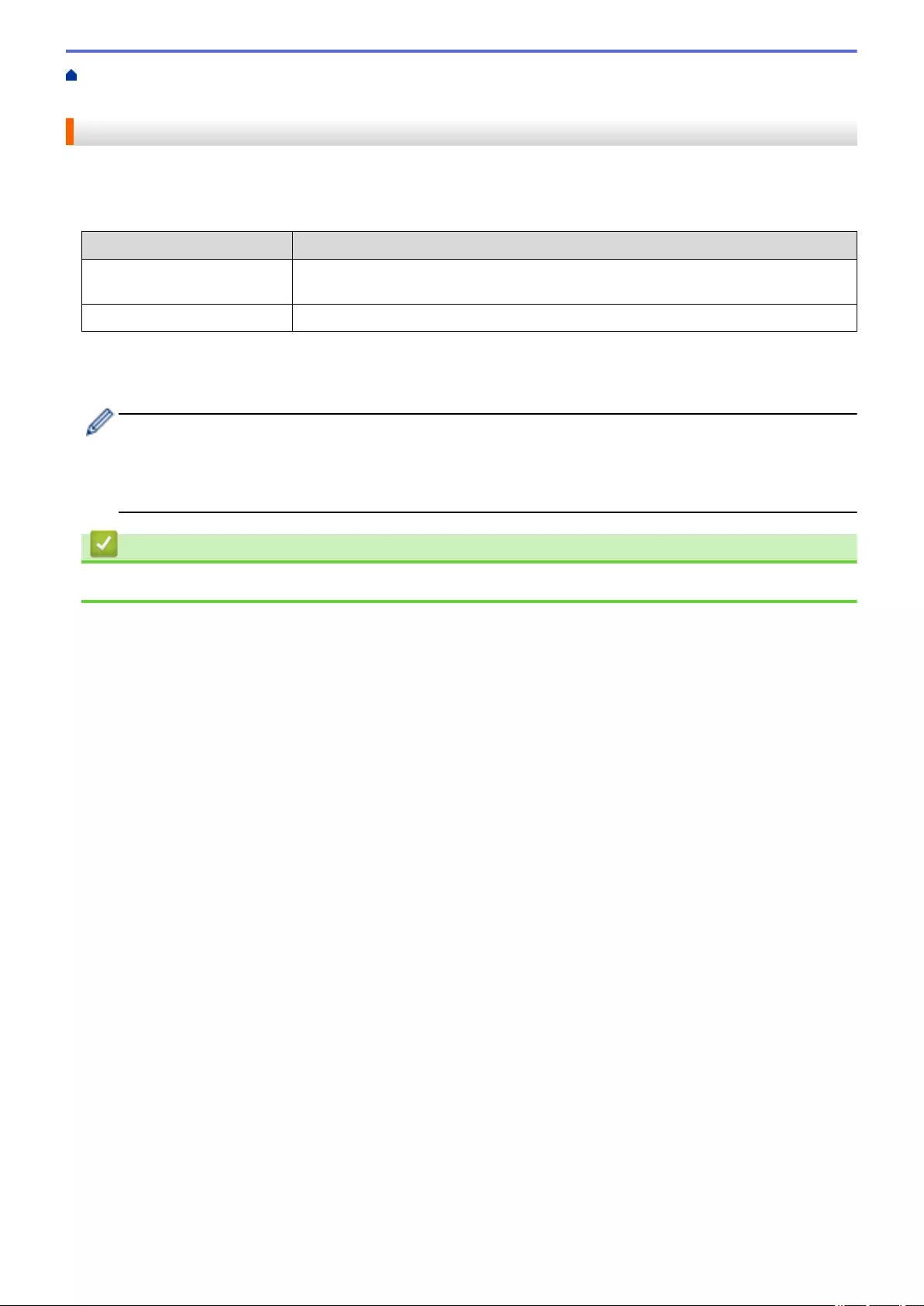
Home > Security > Network Security Features > Manage Your Network Machine Securely Using SSL/
TLS > Certificates and Web Based Management > Manage Multiple Certificates
Manage Multiple Certificates
The multiple certificate feature allows you to use Web Based Management to manage each certificate installed
on your machine. In Web Based Management, navigate to the Certificate or CA Certificate screen to view
certificate content, delete, or export your certificates.
Maximum Number of Certificates Stored UP on Brother Machine
Self-signed Certificate or
Certificate Issued by a CA
6
CA Certificate 9
We recommend storing one less certificate than allowed, reserving an empty spot in case of certificate expiration.
When a certificate expires, import a new certificate into the reserved spot, and then delete the expired certificate.
This ensures that you avoid configuration failure.
• When you use HTTPS/IPPS, IEEE 802.1x, or Signed PDF, you must select which certificate you are
using.
• When you use SSL for SMTP/POP3/IMAP4 communications (only available for certain models), you do
not have to choose the certificate. The necessary certificate will be chosen automatically.
Related Information
•Certificates and Web Based Management
454
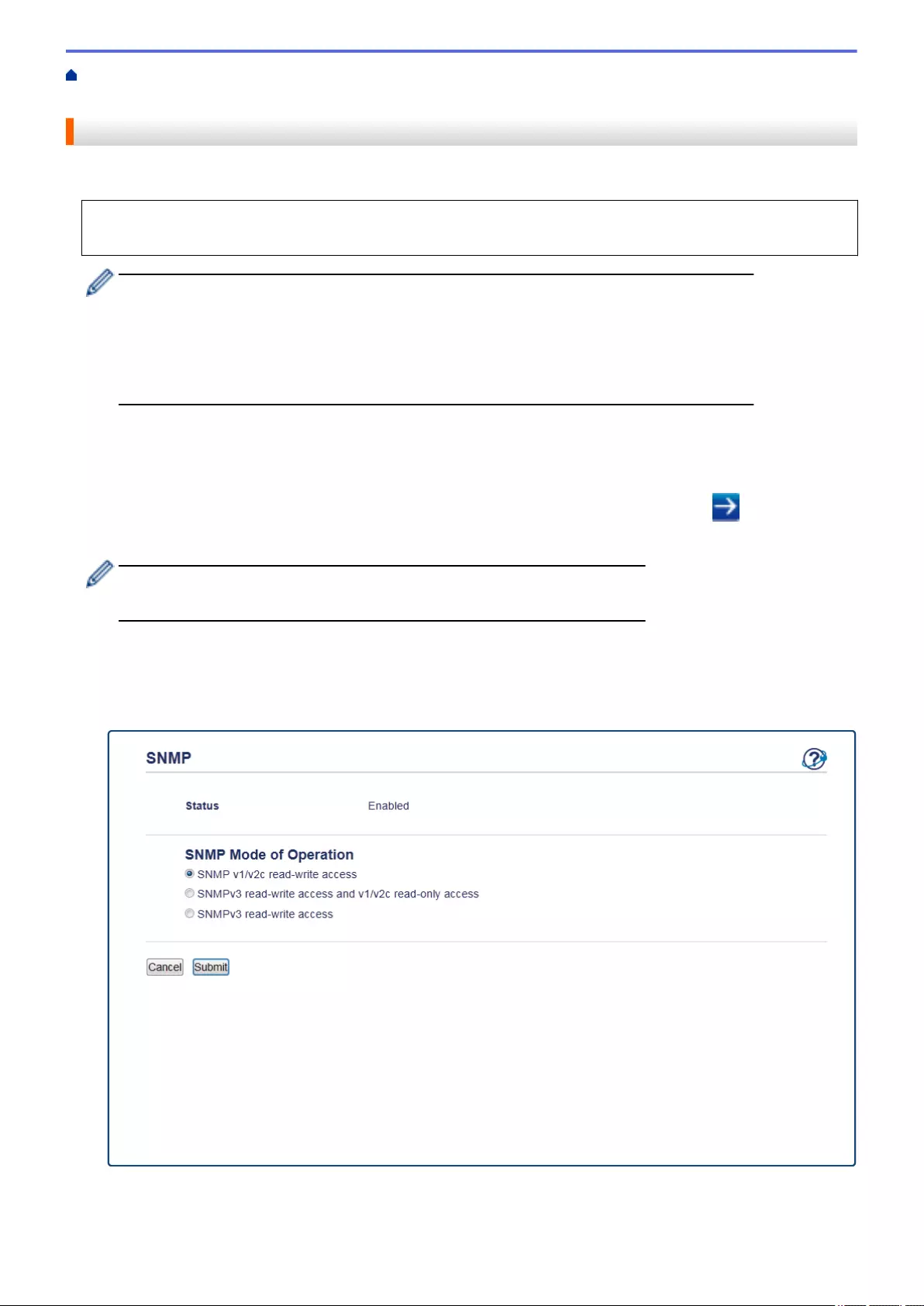
Home > Security > Network Security Features > Manage Your Network Machine Securely Using SSL/
TLS > Manage Your Network Machine Securely Using Web Based Management
Manage Your Network Machine Securely Using Web Based Management
To manage your network machine securely, you must use management utilities with security protocols.
We recommend using the HTTPS protocol for secure management. To use this protocol, HTTPS must be
enabled on your machine.
• The HTTPS protocol is enabled by default.
• You can change the HTTPS protocol settings using the Web Based Management screen.
1. Click the Network tab.
2. Click the Protocol menu in the left navigation bar.
3. Click HTTP Server Settings.
1. Start your web browser.
2. Type "https://Common Name" in your browser's address bar (where "Common Name" is the Common Name
that you assigned to the certificate; this could be your IP address, node name, or domain name).
3. No password is required by default. Type a password if you have set one, and then click .
4. You can now access the machine using HTTPS.
• If you use the SNMPv3 protocol, follow the steps below.
• You can also change the SNMP settings by using BRAdmin Professional.
5. Click the Network tab.
6. Click Protocol.
7. Make sure the SNMP setting is enabled, and then click Advanced Settings.
8. Configure the SNMP settings.
There are three options for SNMP Mode of Operation.
•SNMP v1/v2c read-write access
455
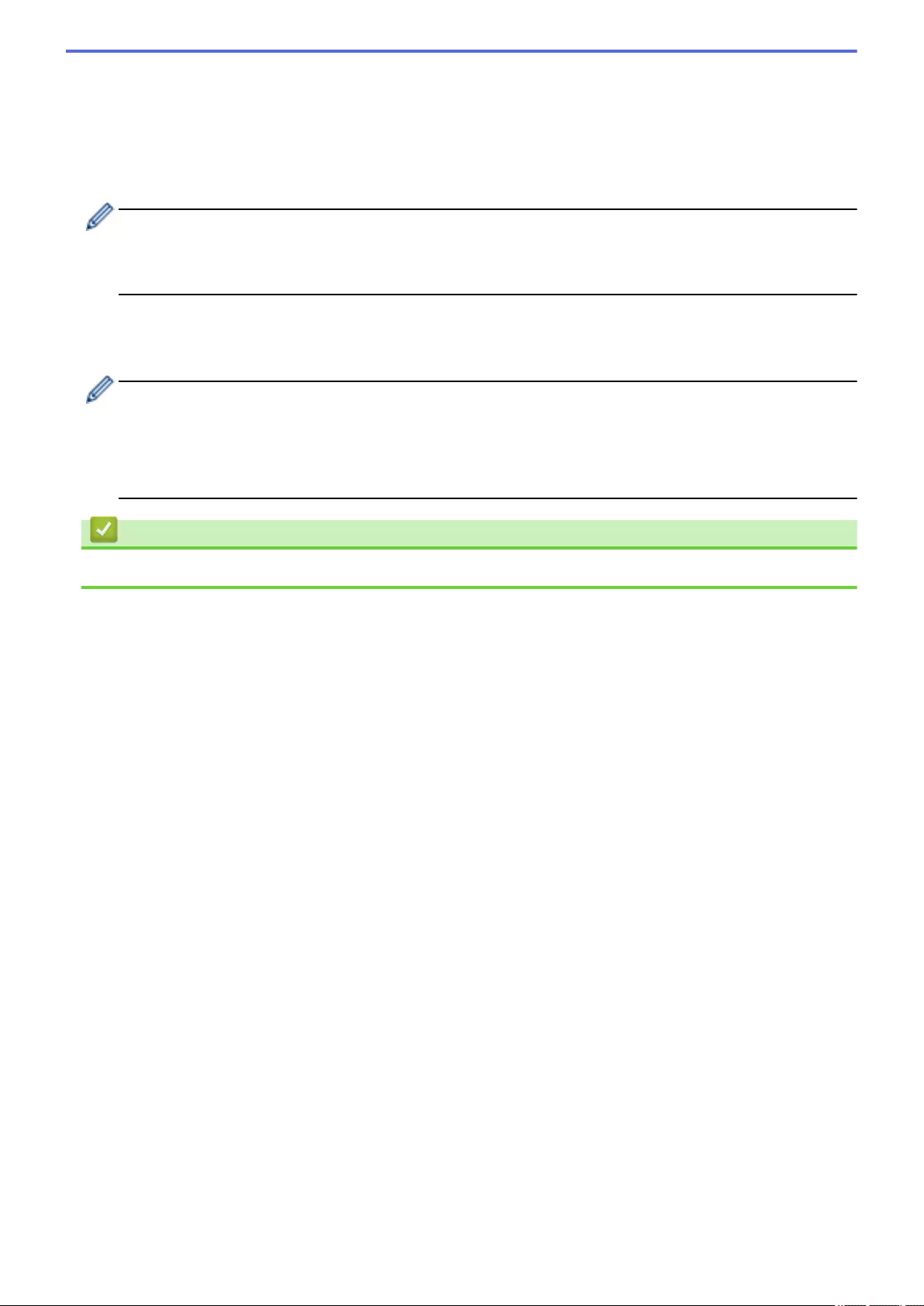
In this mode, the print server uses version 1 and version 2c of the SNMP protocol. You can use all
Brother applications in this mode. However, it is not secure since it will not authenticate the user, and data
will not be encrypted.
•SNMPv3 read-write access and v1/v2c read-only access
In this mode, the print server uses the read-write access of version 3 and the read-only access of version
1 and version 2c of the SNMP protocol.
When you use SNMPv3 read-write access and v1/v2c read-only access mode, some Brother
applications (such as BRAdmin Light) that access the print server do not work correctly since they authorize
the read-only access of version 1 and version 2c. If you want to use all applications, we recommend using
SNMP v1/v2c read-write access mode.
•SNMPv3 read-write access
In this mode, the print sever uses version 3 of the SNMP protocol. If you want to manage the print server
securely, use this mode.
When you use SNMPv3 read-write access mode, note the following:
- You can use only BRAdmin Professional or Web Based Management to manage the print server.
- Except for BRAdmin Professional, all applications that use SNMPv1/v2c will be restricted. To allow the
use of SNMPv1/v2c applications, use SNMPv3 read-write access and v1/v2c read-only access or
SNMP v1/v2c read-write access mode.
Related Information
•Manage Your Network Machine Securely Using SSL/TLS
456
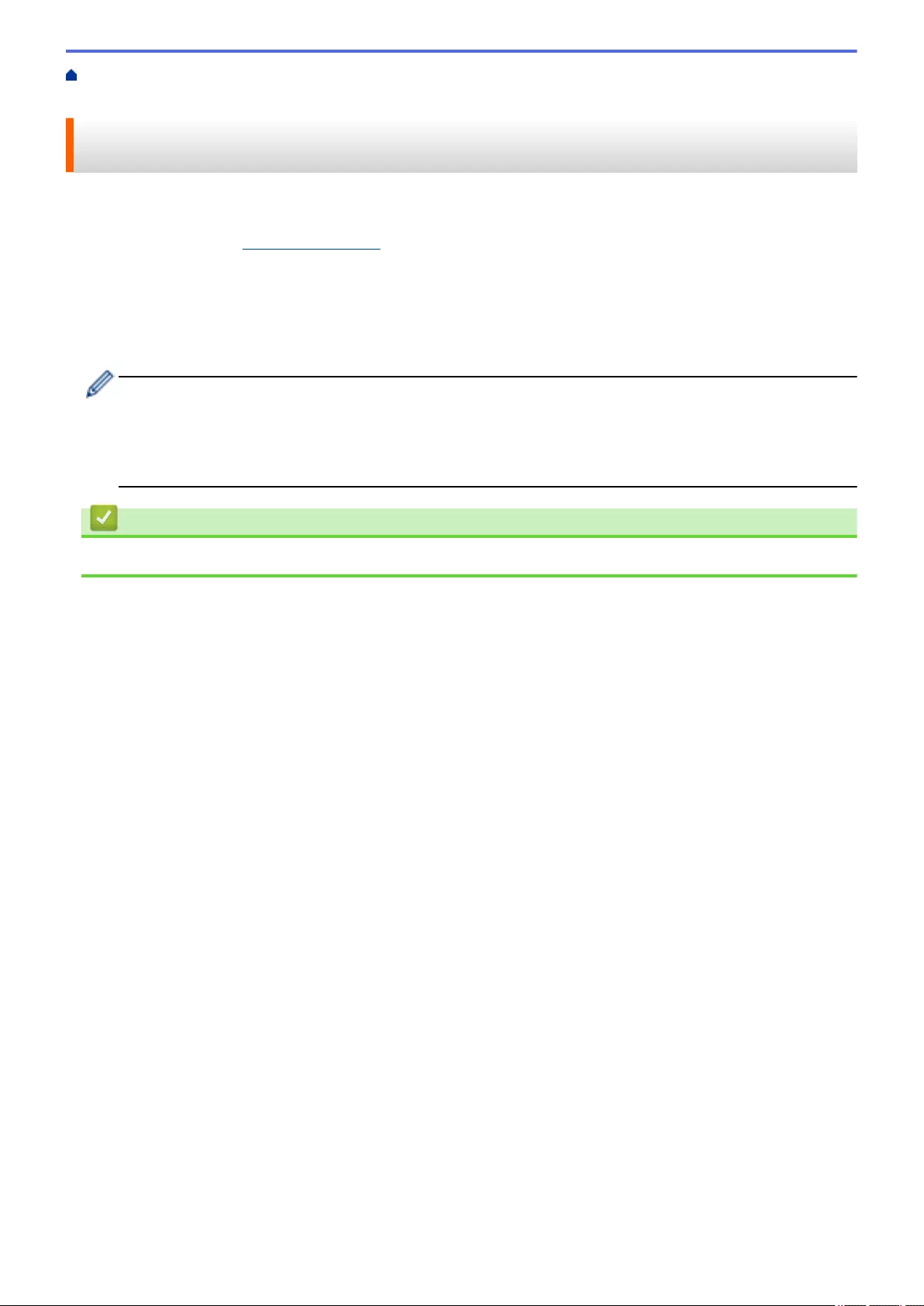
Home > Security > Network Security Features > Manage Your Network Machine Securely Using SSL/
TLS > Manage Your Network Machine Securely Using BRAdmin Professional (Windows)
Manage Your Network Machine Securely Using BRAdmin Professional
(Windows)
To use BRAdmin Professional utility, you must:
• Use the latest version of BRAdmin Professional. Go to your model's Downloads page on the Brother
Solutions Center at support.brother.com. If you use an older version of BRAdmin to manage your Brother
machines, the user authentication will not be secure.
• Use Web Based Management with the HTTPS protocol if you use BRAdmin Professional and Web Based
Management together.
• Use a different password in each group if you are managing a mixed group of older and newer print servers
with BRAdmin Professional. This will ensure security is maintained on the newer print servers.
• "Older versions of BRAdmin" refer to BRAdmin Professional older than Ver. 2.80 and BRAdmin Light for
Mac older than Ver.1.10.
• "Older print servers" refer to NC-2000 series, NC-2100p, NC-3100h, NC-3100s, NC-4100h, NC-5100h,
NC-5200h, NC-6100h, NC-6200h, NC-6300h, NC-6400h, NC-8000, NC-100h, NC-110h, NC-120w,
NC-130h, NC-140w, NC-8100h, NC-9100h, NC-7100w, NC-7200w and NC-2200w.
Related Information
•Manage Your Network Machine Securely Using SSL/TLS
457
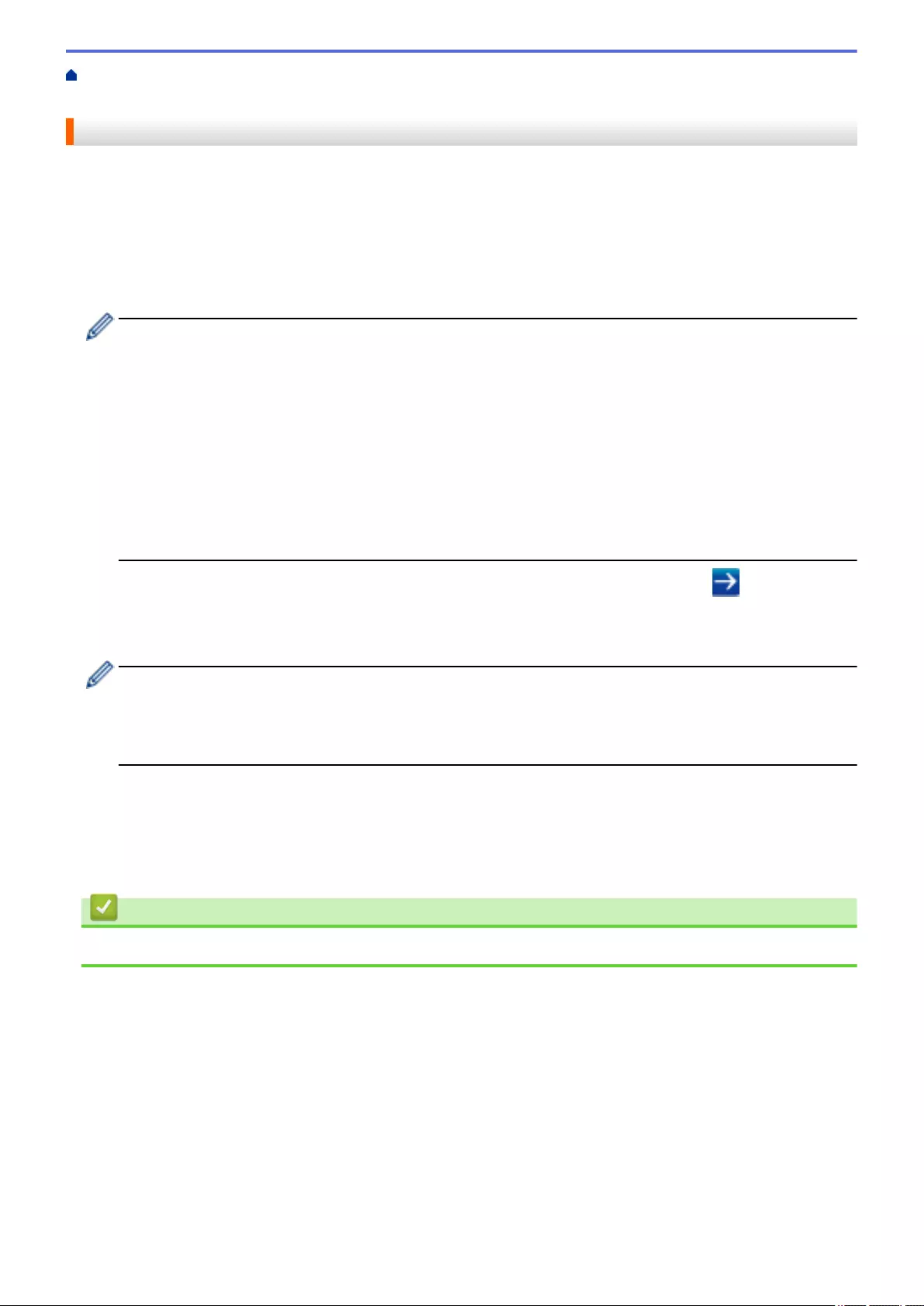
Home > Security > Network Security Features > Manage Your Network Machine Securely Using SSL/
TLS > Print Documents Securely Using SSL/TLS
Print Documents Securely Using SSL/TLS
To print documents securely with IPP protocol, use the IPPS protocol.
1. Start your web browser.
2. Type "http://machine's IP address" in your browser's address bar (where "machine's IP address" is the
machine's IP address).
For example:
http://192.168.1.2
• If you are using a Domain Name System or enable a NetBIOS name, you can type another name, such
as "SharedPrinter" instead of the IP address.
- For example:
http://SharedPrinter
If you enable a NetBIOS name, you can also use the node name.
- For example:
http://brnxxxxxxxxxxxx
The NetBIOS name can be found in the Network Configuration Report.
• For Mac, access Web Based Management by clicking the machine's icon on the Status Monitor
screen.
3. No password is required by default. Type a password if you have set one, and then click .
4. Click the Network tab.
5. Click Protocol. Make sure the IPP check box is selected.
If the IPP check box is not selected, select the IPP check box, and then click Submit.
Restart your machine to activate the configuration.
After the machine restarts, return to the machine's web page, click the Network tab, and then click
Protocol.
6. Click HTTP Server Settings.
7. Select the HTTPS(Port443) check box in the IPP, and then click Submit.
8. Restart your machine to activate the configuration.
Communication using IPPS cannot prevent unauthorized access to the print server.
Related Information
•Manage Your Network Machine Securely Using SSL/TLS
458
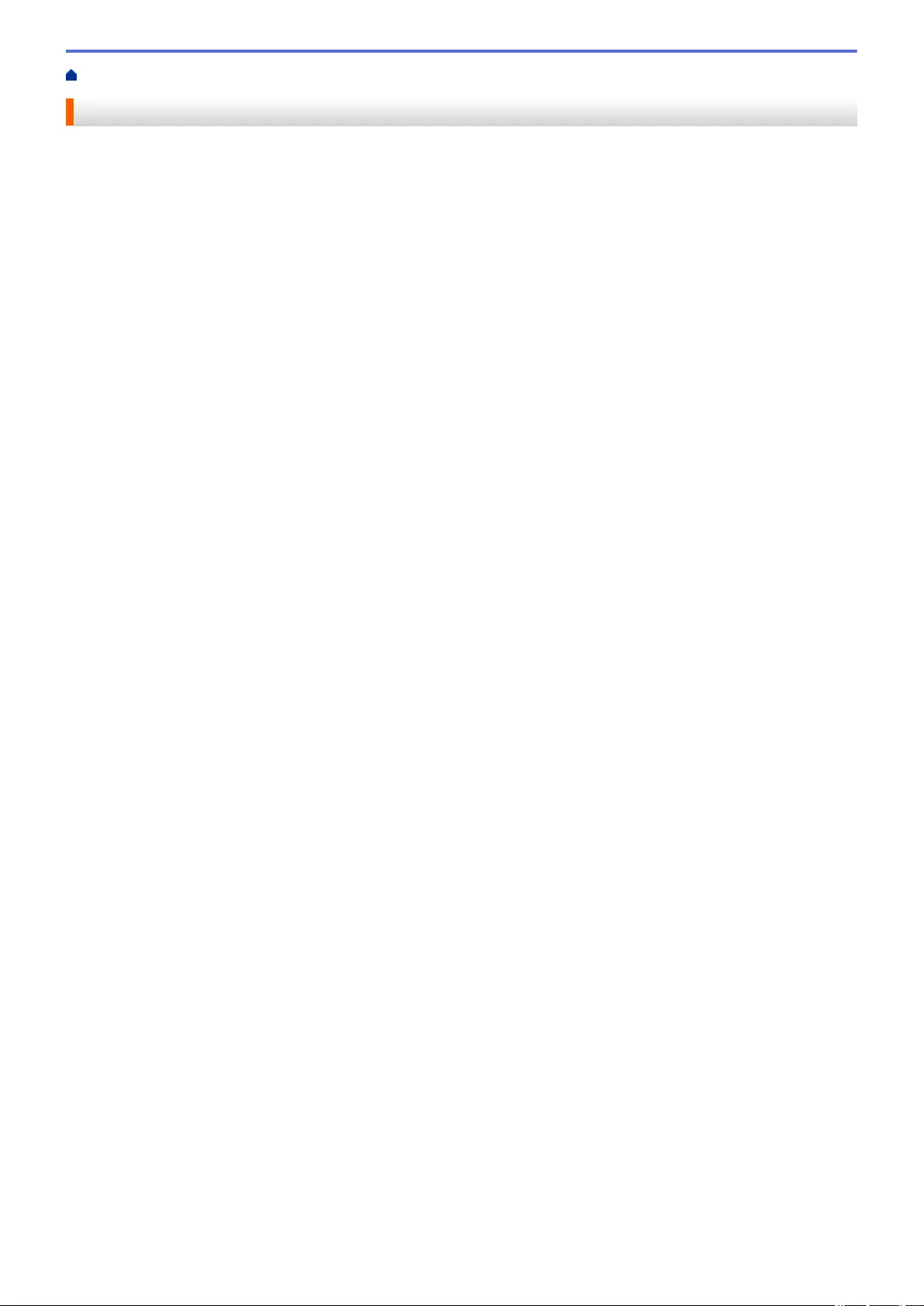
Home > Security > Network Security Features > Manage Your Network Machine Securely Using IPsec
Manage Your Network Machine Securely Using IPsec
•Introduction to IPsec
•Configure IPsec Using Web Based Management
•Configure an IPsec Address Template Using Web Based Management
•Configure an IPsec Template Using Web Based Management
459
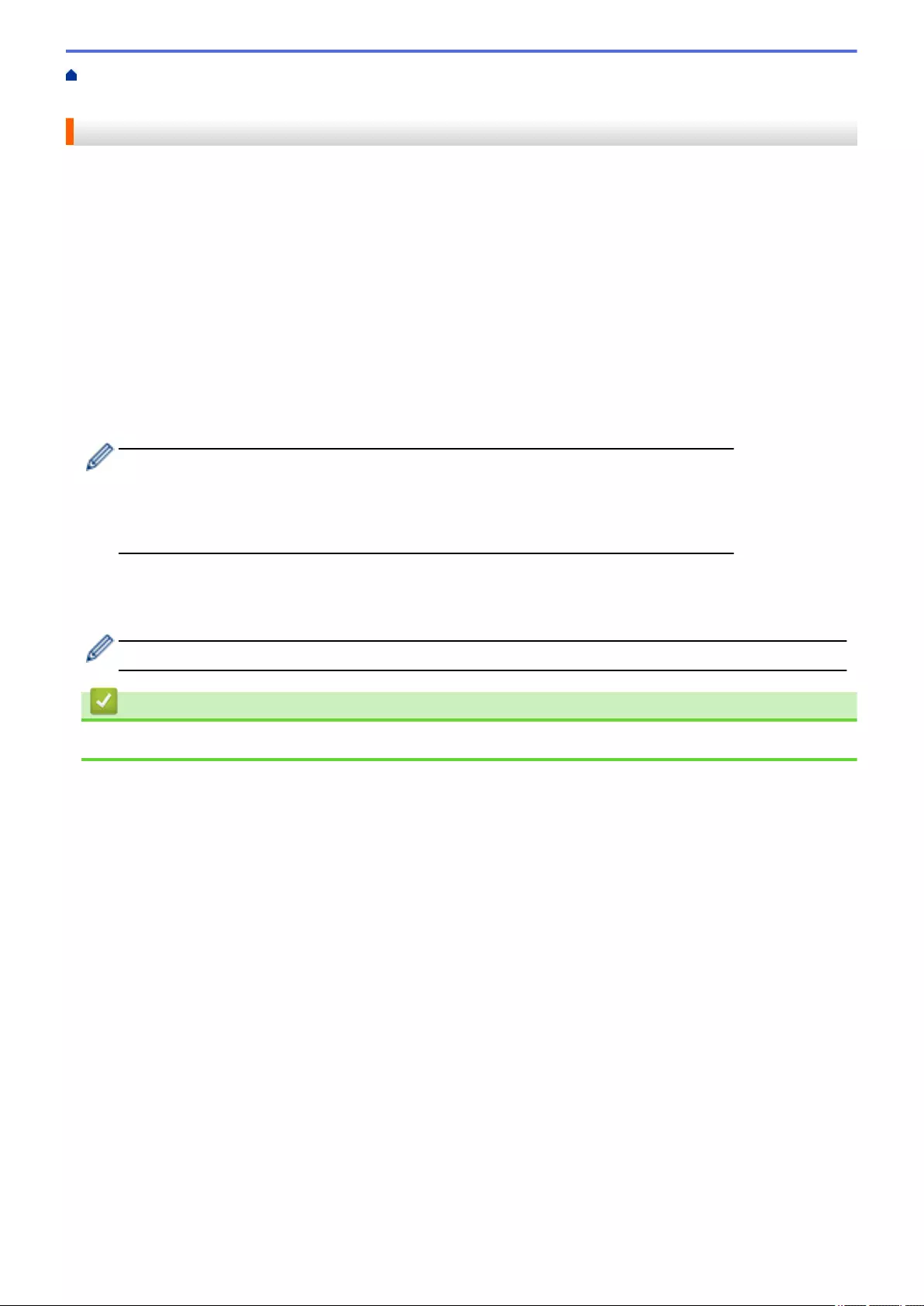
Home > Security > Network Security Features > Manage Your Network Machine Securely Using
IPsec > Introduction to IPsec
Introduction to IPsec
IPsec (Internet Protocol Security) is a security protocol that uses an optional Internet Protocol function to prevent
manipulation and ensure the confidentiality of data transmitted as IP packets. IPsec encrypts data carried over
the network, such as print data sent from computers to a printer. Because the data is encrypted at the network
layer, applications that employ a higher-level protocol use IPsec even if the user is not aware of its use.
IPsec supports the following functions:
• IPsec transmissions
According to the IPsec setting conditions, the network-connected computer sends data to and receives data
from the specified device using IPsec. When the devices start communicating using IPsec, keys are
exchanged using Internet Key Exchange (IKE) first, and then the encrypted data is transmitted using the
keys.
In addition, IPsec has two operation modes: the Transport mode and Tunnel mode. The Transport mode is
used mainly for communication between devices and the Tunnel mode is used in environments such as a
Virtual Private Network (VPN).
For IPsec transmissions, the following conditions are necessary:
- A computer that can communicate using IPsec is connected to the network.
- Your Brother machine is configured for IPsec communication.
- The computer connected to your Brother machine is configured for IPsec connections.
• IPsec settings
The settings that are necessary for connections using IPsec. These settings can be configured using Web
Based Management.
To configure the IPsec settings, you must use the browser on a computer that is connected to the network.
Related Information
•Manage Your Network Machine Securely Using IPsec
460
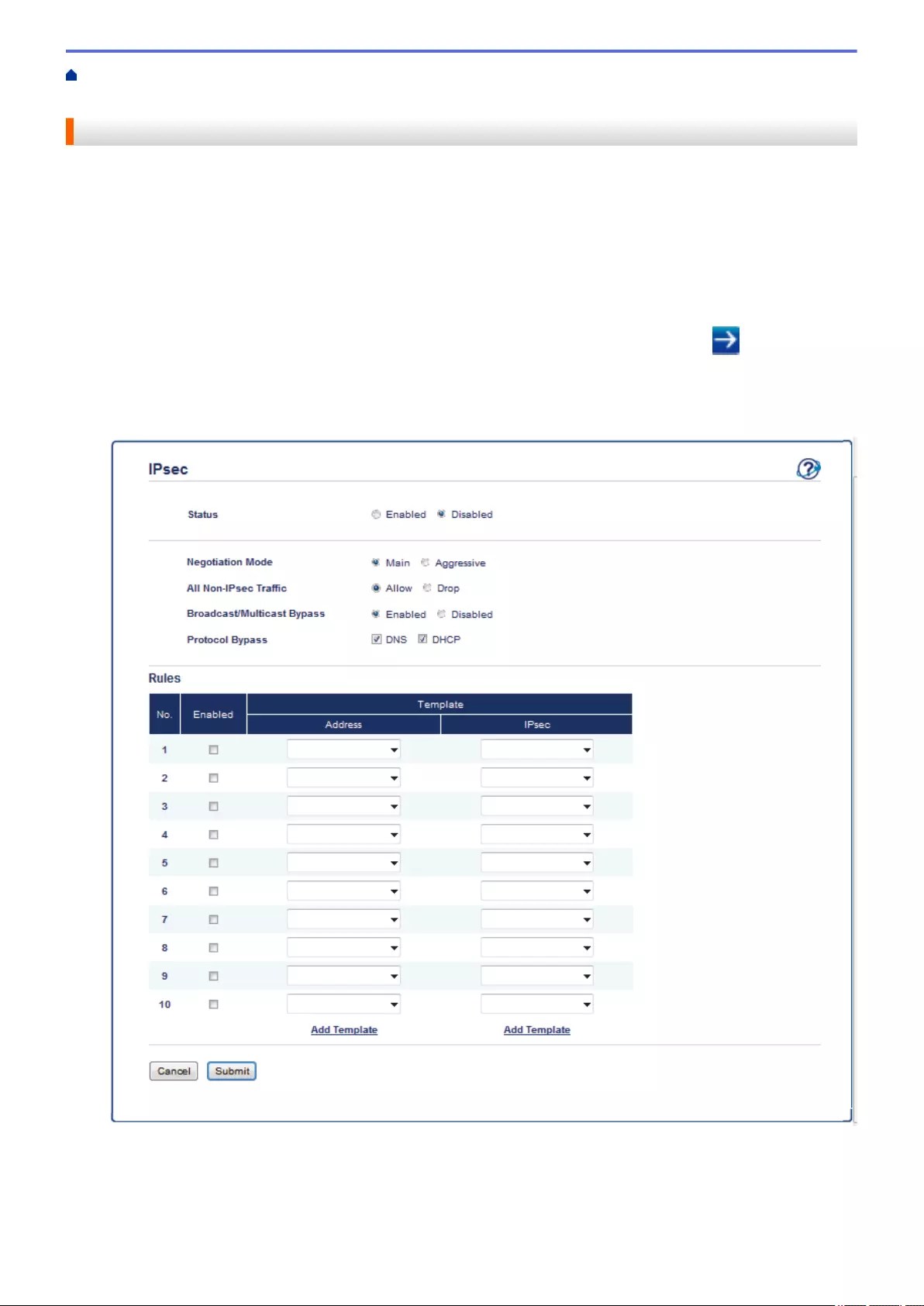
Home > Security > Network Security Features > Manage Your Network Machine Securely Using
IPsec > Configure IPsec Using Web Based Management
Configure IPsec Using Web Based Management
The IPsec connection conditions are comprised of two Template types: Address and IPsec. You can configure
up to 10 connection conditions.
1. Start your web browser.
2. Type "http://machine's IP address" in your browser's address bar (where "machine's IP address" is the
machine's IP address).
For example:
http://192.168.1.2
3. No password is required by default. Type a password if you have set one, and then click .
4. Click the Network tab.
5. Click the Security tab.
6. Click the IPsec menu in the left navigation bar.
7. In the Status field, enable or disable IPsec.
8. Select Negotiation Mode for IKE Phase 1.
IKE is a protocol that is used to exchange encryption keys in order to carry out encrypted communication
using IPsec.
461
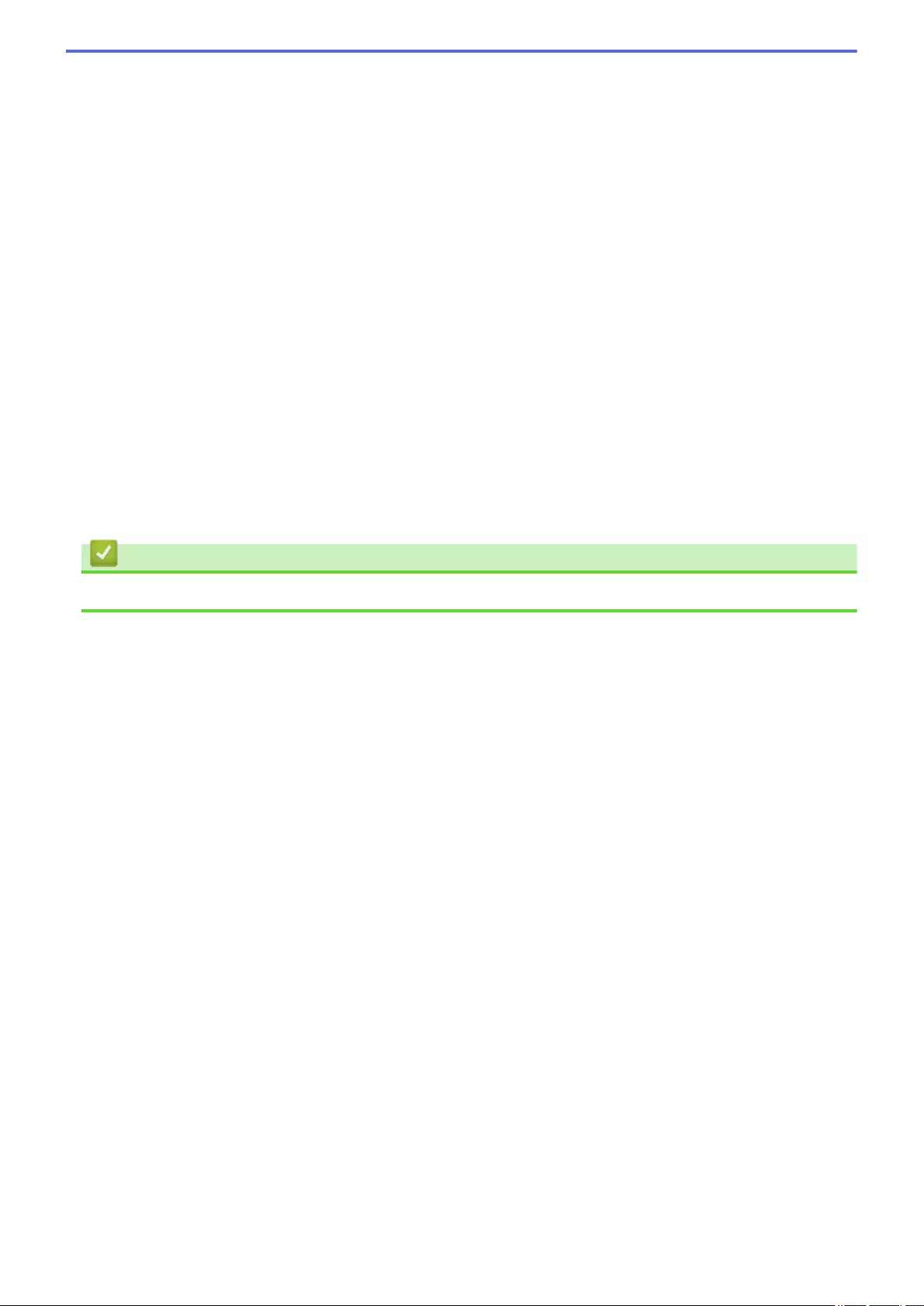
In Main mode, the processing speed is slow, but the security is high. In Aggressive mode, the processing
speed is faster than Main mode, but the security is lower.
9. In the All Non-IPsec Traffic field, select the action to be taken for non-IPsec packets.
When using Web Services, you must select Allow for All Non-IPsec Traffic. If you select Drop, Web
Services cannot be used.
10. In the Broadcast/Multicast Bypass field, select Enabled or Disabled.
11. In the Protocol Bypass field, select the check box for the option or options you want.
12. In the Rules table, select the Enabled check box to activate the template.
When you select multiple check boxes, the lower numbered check boxes have priority if the settings for the
selected check boxes conflict.
13. Click on the corresponding drop-down list to select the Address Template that is used for the IPsec
connection conditions.
To add an Address Template, click Add Template.
14. Click on the corresponding drop-down list to select the IPsec Template that is used for the IPsec connection
conditions.
To add an IPsec Template, click Add Template.
15. Click Submit.
If the machine must be restarted to register the new settings, the restart confirmation screen will appear.
If there is a blank item in the template you enabled in the Rules table, an error message appears. Confirm
your choices and submit again.
Related Information
•Manage Your Network Machine Securely Using IPsec
462
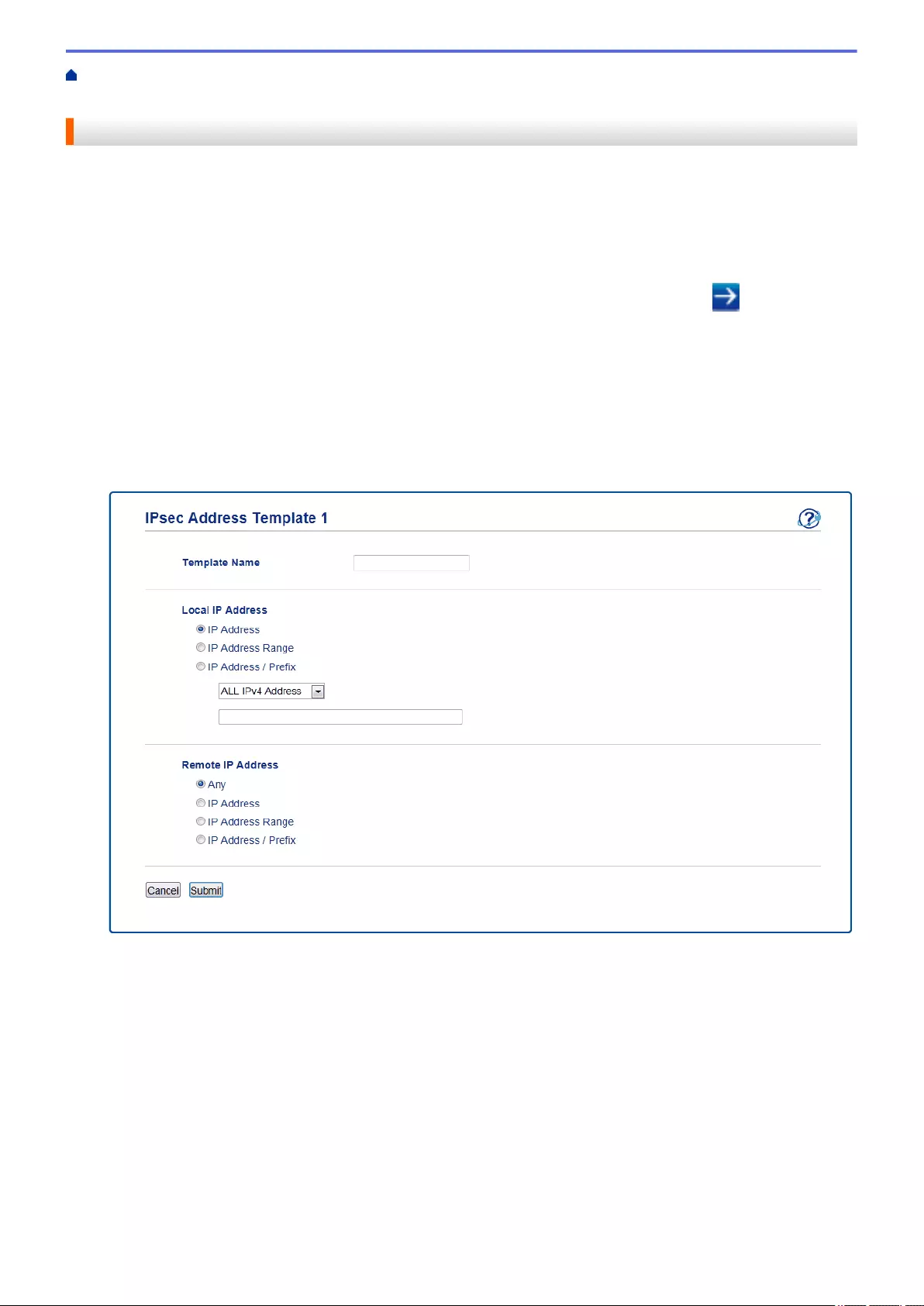
Home > Security > Network Security Features > Manage Your Network Machine Securely Using
IPsec > Configure an IPsec Address Template Using Web Based Management
Configure an IPsec Address Template Using Web Based Management
1. Start your web browser.
2. Type "http://machine's IP address" in your browser's address bar (where "machine's IP address" is the
machine's IP address).
For example:
http://192.168.1.2
3. No password is required by default. Type a password if you have set one, and then click .
4. Click the Network tab.
5. Click the Security tab.
6. Click the IPsec Address Template menu in the left navigation bar.
The Template List appears, displaying 10 Address Templates.
Click the Delete button to delete an Address Template. When an Address Template is in use, it cannot be
deleted.
7. Click the Address Template that you want to create. The IPsec Address Template appears.
8. In the Template Name field, type a name for the template (up to 16 characters).
9. Select a Local IP Address option to specify the IP address conditions for the sender:
•IP Address
Specify the IP address. Select ALL IPv4 Address, ALL IPv6 Address, ALL Link Local IPv6, or Custom
from the drop-down list.
If you select Custom from the drop-down list, type the IP address (IPv4 or IPv6) in the text box.
•IP Address Range
Type the starting and ending IP addresses for the IP address range in the text boxes. If the starting and
ending IP addresses are not standardized to IPv4 or IPv6, or the ending IP address is smaller than the
starting address, an error will occur.
•IP Address / Prefix
Specify the IP address using CIDR notation.
463
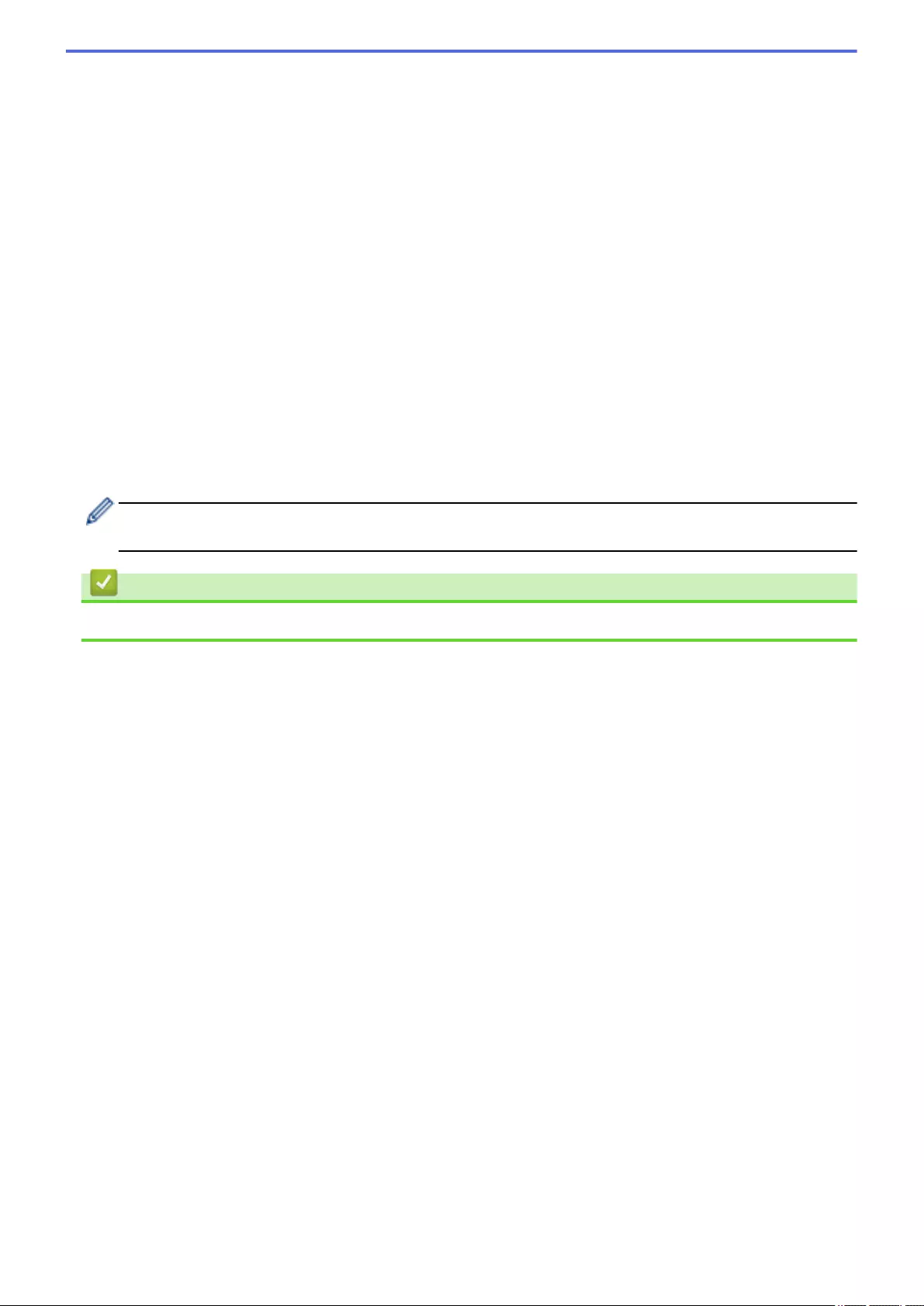
For example: 192.168.1.1/24
Because the prefix is specified in the form of a 24-bit subnet mask (255.255.255.0) for 192.168.1.1, the
addresses 192.168.1.xxx are valid.
10. Select a Remote IP Address option to specify the IP address conditions for the recipient:
•Any
If you select Any, all IP addresses are enabled.
•IP Address
Type the specified IP address (IPv4 or IPv6) in the text box.
•IP Address Range
Type the starting and ending IP addresses for the IP address range. If the starting and ending IP
addresses are not standardized to IPv4 or IPv6, or the ending IP address is smaller than the starting
address, an error will occur.
•IP Address / Prefix
Specify the IP address using CIDR notation.
For example: 192.168.1.1/24
Because the prefix is specified in the form of a 24-bit subnet mask (255.255.255.0) for 192.168.1.1, the
addresses 192.168.1.xxx are valid.
11. Click Submit.
When you change the settings for the template currently in use, restart your machine to active the
configuration.
Related Information
•Manage Your Network Machine Securely Using IPsec
464
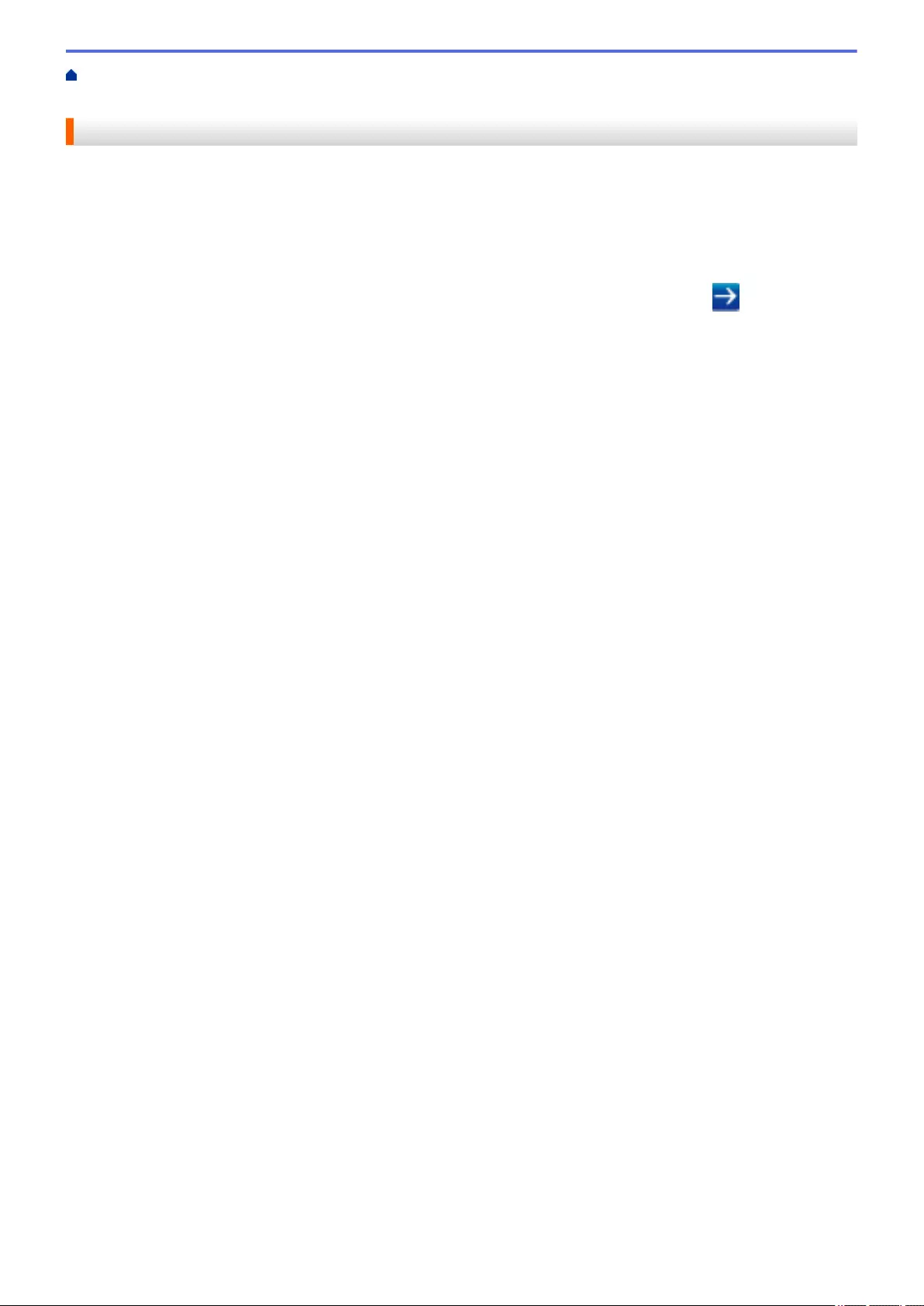
Home > Security > Network Security Features > Manage Your Network Machine Securely Using
IPsec > Configure an IPsec Template Using Web Based Management
Configure an IPsec Template Using Web Based Management
1. Start your web browser.
2. Type "http://machine's IP address" in your browser's address bar (where "machine's IP address" is the
machine's IP address).
For example:
http://192.168.1.2
3. No password is required by default. Type a password if you have set one, and then click .
4. Click the Network tab.
5. Click the Security tab.
6. Click IPsec Template in the left navigation bar.
The Template List appears, displaying 10 IPsec Templates.
Click the Delete button to delete an IPsec Template. When an IPsec Template is in use, it cannot be
deleted.
7. Click IPsec Template that you want to create. The IPsec Template screen appears. The configuration fields
differ based on the Use Prefixed Template and Internet Key Exchange (IKE) you select.
8. In the Template Name field, type a name for the template (up to 16 characters).
9. If you selected Custom in the Use Prefixed Template drop-down list, select the Internet Key Exchange
(IKE) options, and then change the settings if needed.
10. Click Submit.
465
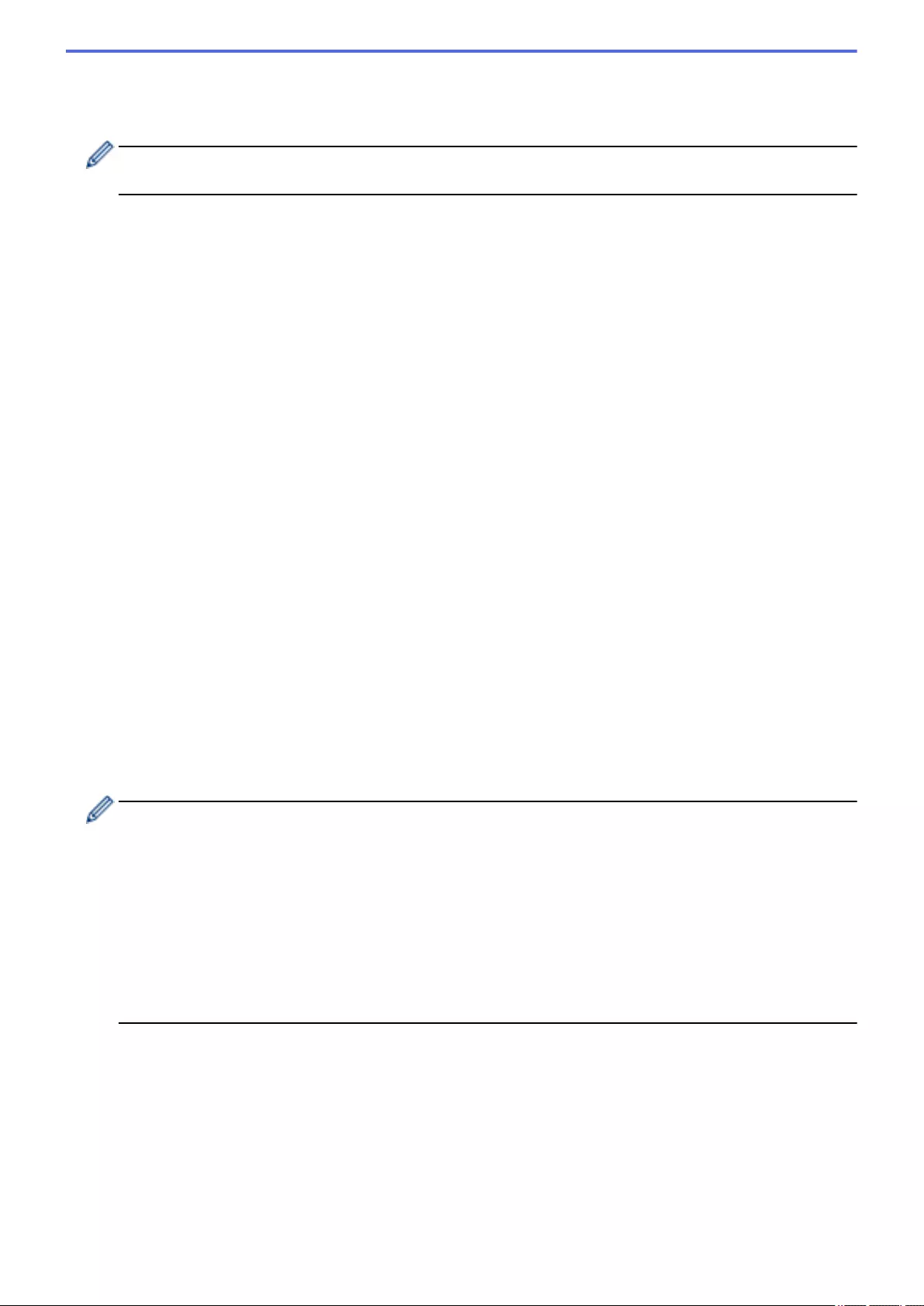
Use Prefixed Template
Select Custom, IKEv1 High Security or IKEv1 Medium Security. The setting items are different depending
on the selected template.
The default template differs depending on whether you chose Main or Aggressive for Negotiation Mode
on the IPsec configuration screen.
Internet Key Exchange (IKE)
IKE is a communication protocol that is used to exchange encryption keys in order to carry out encrypted
communication using IPsec. To carry out encrypted communication for that time only, the encryption algorithm
that is necessary for IPsec is determined and the encryption keys are shared. For IKE, the encryption keys are
exchanged using the Diffie-Hellman key exchange method, and encrypted communication that is limited to
IKE is carried out.
If you selected Custom in Use Prefixed Template, select IKEv1.
Authentication Type
Configure the IKE authentication and encryption.
•Diffie-Hellman Group
This key exchange method allows secret keys to be securely exchanged over an unprotected network.
The Diffie-Hellman key exchange method uses a discrete logarithm problem, not the secret key, to send
and receive open information that was generated using a random number and the secret key.
Select Group1, Group2, Group5, or Group14.
•Encryption
Select DES, 3DES, AES-CBC 128, or AES-CBC 256.
•Hash
Select MD5, SHA1, SHA256, SHA384 or SHA512.
•SA Lifetime
Specify the IKE SA lifetime.
Type the time (seconds) and number of kilobytes (KByte).
Encapsulating Security
•Protocol
Select ESP, AH or AH+ESP.
- ESP is a protocol for carrying out encrypted communication using IPsec. ESP encrypts the payload
(communicated contents) and adds additional information. The IP packet is comprised of the header
and the encrypted payload, which follows the header. In addition to the encrypted data, the IP packet
also includes information regarding the encryption method and encryption key, the authentication data,
and so on.
- AH is part of the IPsec protocol that authenticates the sender and prevents manipulation (ensures the
completeness) of the data. In the IP packet, the data is inserted immediately after the header. In
addition, the packets include hash values, which are calculated using an equation from the
communicated contents, secret key, and so on, in order to prevent the falsification of the sender and
manipulation of the data. Unlike ESP, the communicated contents are not encrypted, and the data is
sent and received as plain text.
•Encryption
Select DES, 3DES, AES-CBC 128, or AES-CBC 256. The encryption can be selected only when ESP
is selected in Protocol.
•Hash
Select None, MD5, SHA1, SHA256, SHA384, or SHA512.
When AH+ESP is selected in Protocol, select each protocol for Hash(ESP) and Hash(AH).
•SA Lifetime
Specify the IPsec SA lifetime.
468
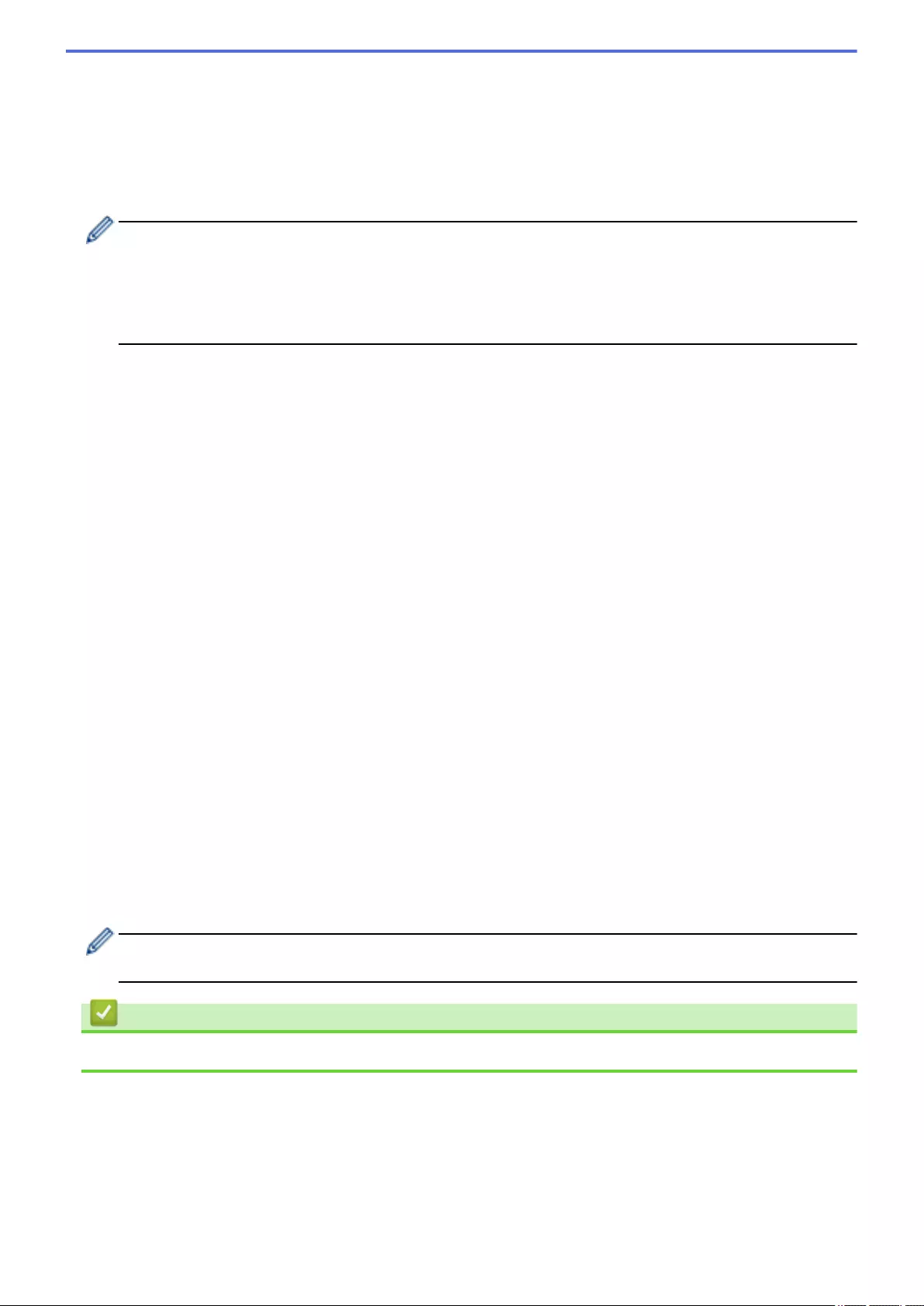
Type the time (seconds) and number of kilobytes (KByte) before the IPsec SA will expire.
•Encapsulation Mode
Select Transport or Tunnel.
•Remote Router IP-Address
Type the IP address (IPv4 or IPv6) of the remote router. Enter this information only when the Tunnel
mode is selected.
SA (Security Association) is an encrypted communication method using IPsec or IPv6 that exchanges and
shares information, such as the encryption method and encryption key, in order to establish a secure
communication channel before communication begins. SA may also refer to a virtual encrypted
communication channel that has been established. The SA used for IPsec establishes the encryption
method, exchanges the keys, and carries out mutual authentication according to the IKE (Internet Key
Exchange) standard procedure. In addition, the SA is updated periodically.
Perfect Forward Secrecy (PFS)
PFS does not derive keys from previous keys that were used to encrypt messages. In addition, if a key that is
used to encrypt a message was derived from a parent key, that parent key is not used to derive other keys.
Therefore, even if a key is compromised, the damage will be limited only to the messages that were encrypted
using that key.
Select Enabled or Disabled.
Authentication Method
Select the authentication method. Select Pre-Shared Key or Certificates.
Pre-Shared Key
When encrypting communication, the encryption key is exchanged and shared beforehand using another
channel.
If you selected Pre-Shared Key for the Authentication Method, type the Pre-Shared Key (up to 32
characters).
•Local/ID Type/ID
Select the sender's ID type, and then type the ID.
Select IPv4 Address, IPv6 Address, FQDN, E-mail Address, or Certificate for the type.
If you select Certificate, type the common name of the certificate in the ID field.
•Remote/ID Type/ID
Select the recipient's ID type, and then type the ID.
Select IPv4 Address, IPv6 Address, FQDN, E-mail Address, or Certificate for the type.
If you select Certificate, type the common name of the certificate in the ID field.
Certificate
If you selected Certificates for Authentication Method, select the certificate.
You can select only the certificates that were created using the Certificate page of Web Based
Management's Security configuration screen.
Related Information
•Configure an IPsec Template Using Web Based Management
469
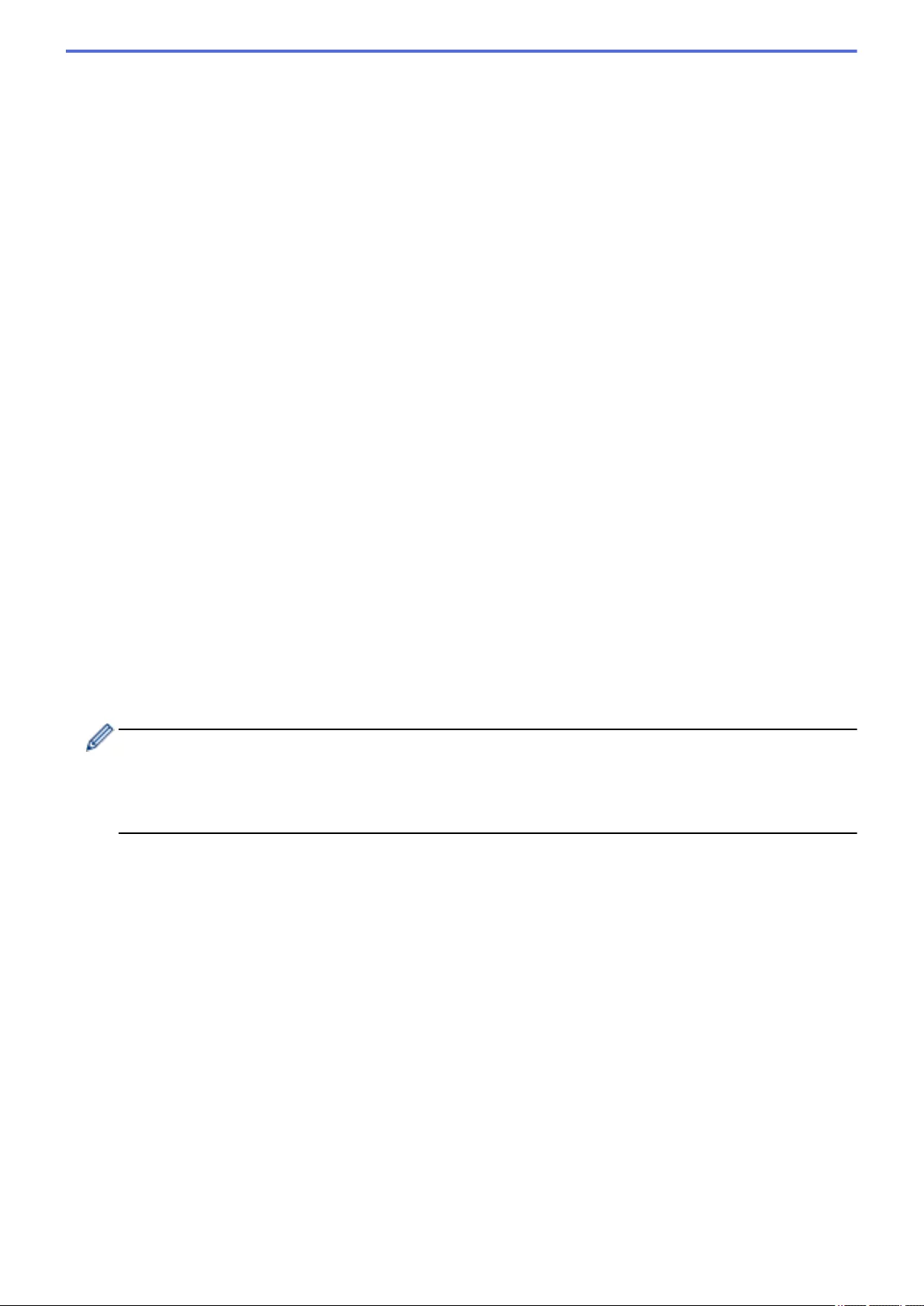
Use Prefixed Template
Select Custom, IKEv2 High Security, or IKEv2 Medium Security. The setting items are different depending
on the selected template.
Internet Key Exchange (IKE)
IKE is a communication protocol that is used to exchange encryption keys in order to carry out encrypted
communication using IPsec. To carry out encrypted communication for that time only, the encryption algorithm
that is necessary for IPsec is determined and the encryption keys are shared. For IKE, the encryption keys are
exchanged using the Diffie-Hellman key exchange method, and encrypted communication that is limited to
IKE is carried out.
If you selected Custom in Use Prefixed Template, select IKEv2.
Authentication Type
Configure the IKE authentication and encryption.
•Diffie-Hellman Group
This key exchange method allows secret keys to be securely exchanged over an unprotected network.
The Diffie-Hellman key exchange method uses a discrete logarithm problem, not the secret key, to send
and receive open information that was generated using a random number and the secret key.
Select Group1, Group2, Group5, or Group14.
•Encryption
Select DES, 3DES, AES-CBC 128, or AES-CBC 256.
•Hash
Select MD5, SHA1, SHA256, SHA384 or SHA512.
•SA Lifetime
Specify the IKE SA lifetime.
Type the time (seconds) and number of kilobytes (KByte).
Encapsulating Security
•Protocol
Select ESP.
ESP is a protocol for carrying out encrypted communication using IPsec. ESP encrypts the payload
(communicated contents) and adds additional information. The IP packet is comprised of the header and
the encrypted payload, which follows the header. In addition to the encrypted data, the IP packet also
includes information regarding the encryption method and encryption key, the authentication data, and so
on.
•Encryption
Select DES, 3DES, AES-CBC 128, or AES-CBC 256.
•Hash
Select MD5, SHA1, SHA256, SHA384, or SHA512.
•SA Lifetime
Specify the IPsec SA lifetime.
Type the time (seconds) and number of kilobytes (KByte) before the IPsec SA will expire.
•Encapsulation Mode
Select Transport or Tunnel.
•Remote Router IP-Address
Type the IP address (IPv4 or IPv6) of the remote router. Enter this information only when the Tunnel
mode is selected.
471
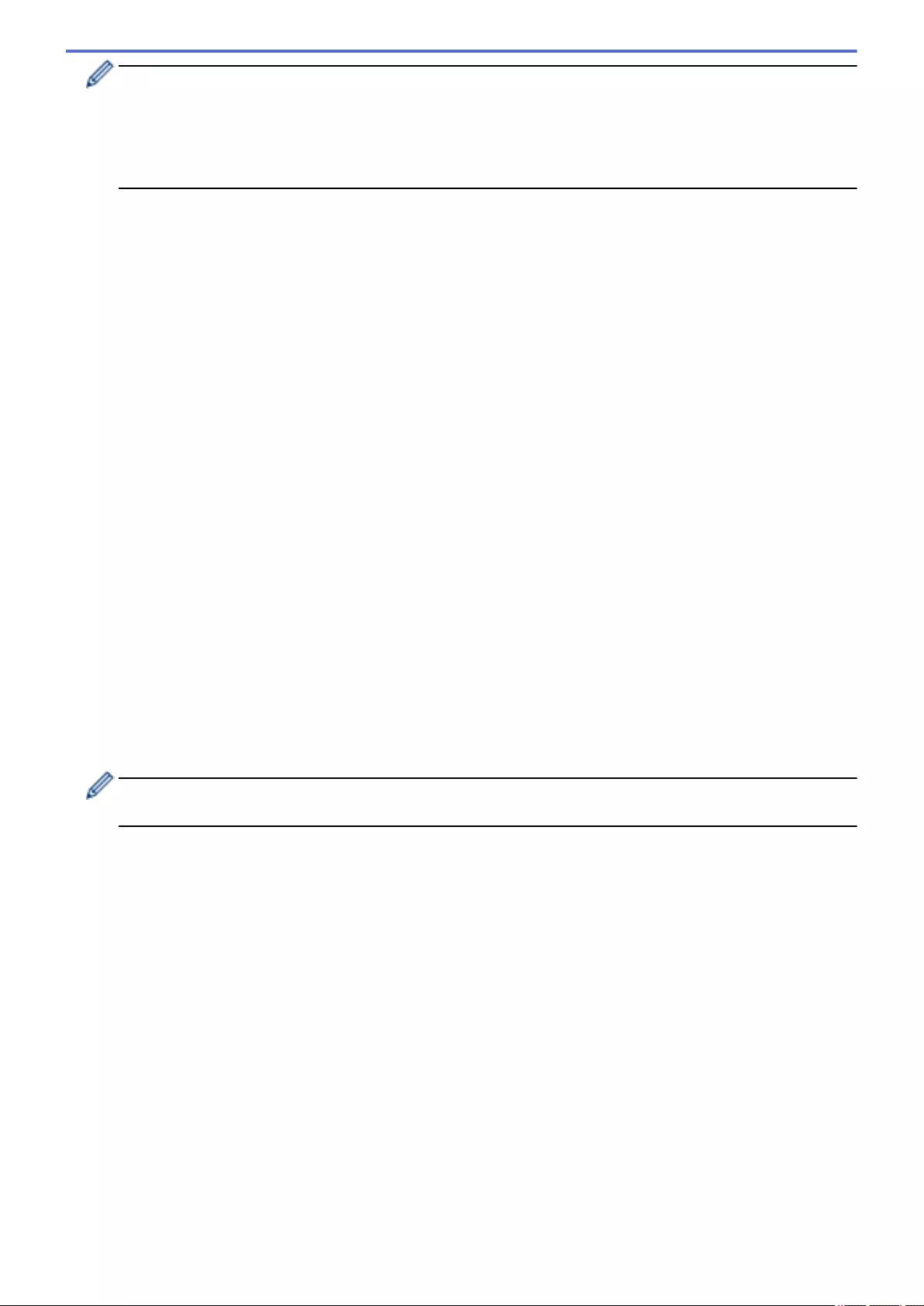
SA (Security Association) is an encrypted communication method using IPsec or IPv6 that exchanges and
shares information, such as the encryption method and encryption key, in order to establish a secure
communication channel before communication begins. SA may also refer to a virtual encrypted
communication channel that has been established. The SA used for IPsec establishes the encryption
method, exchanges the keys, and carries out mutual authentication according to the IKE (Internet Key
Exchange) standard procedure. In addition, the SA is updated periodically.
Perfect Forward Secrecy (PFS)
PFS does not derive keys from previous keys that were used to encrypt messages. In addition, if a key that is
used to encrypt a message was derived from a parent key, that parent key is not used to derive other keys.
Therefore, even if a key is compromised, the damage will be limited only to the messages that were encrypted
using that key.
Select Enabled or Disabled.
Authentication Method
Select the authentication method. Select Pre-Shared Key, Certificates, EAP - MD5, or EAP - MS-CHAPv2.
Pre-Shared Key
When encrypting communication, the encryption key is exchanged and shared beforehand using another
channel.
If you selected Pre-Shared Key for the Authentication Method, type the Pre-Shared Key (up to 32
characters).
•Local/ID Type/ID
Select the sender's ID type, and then type the ID.
Select IPv4 Address, IPv6 Address, FQDN, E-mail Address, or Certificate for the type.
If you select Certificate, type the common name of the certificate in the ID field.
•Remote/ID Type/ID
Select the recipient's ID type, and then type the ID.
Select IPv4 Address, IPv6 Address, FQDN, E-mail Address, or Certificate for the type.
If you select Certificate, type the common name of the certificate in the ID field.
Certificate
If you selected Certificates for Authentication Method, select the certificate.
You can select only the certificates that were created using the Certificate page of Web Based
Management's Security configuration screen.
EAP
EAP is an authentication protocol that is an extension of PPP. By using EAP with IEEE802.1x, a different key
is used for user authentication during each session.
The following settings are necessary only when EAP - MD5 or EAP - MS-CHAPv2 is selected in
Authentication Method:
•Mode
Select Server-Mode or Client-Mode.
•Certificate
Select the certificate.
•User Name
Type the user name (up to 32 characters).
•Password
Type the password (up to 32 characters). The password must be entered two times for confirmation.
472
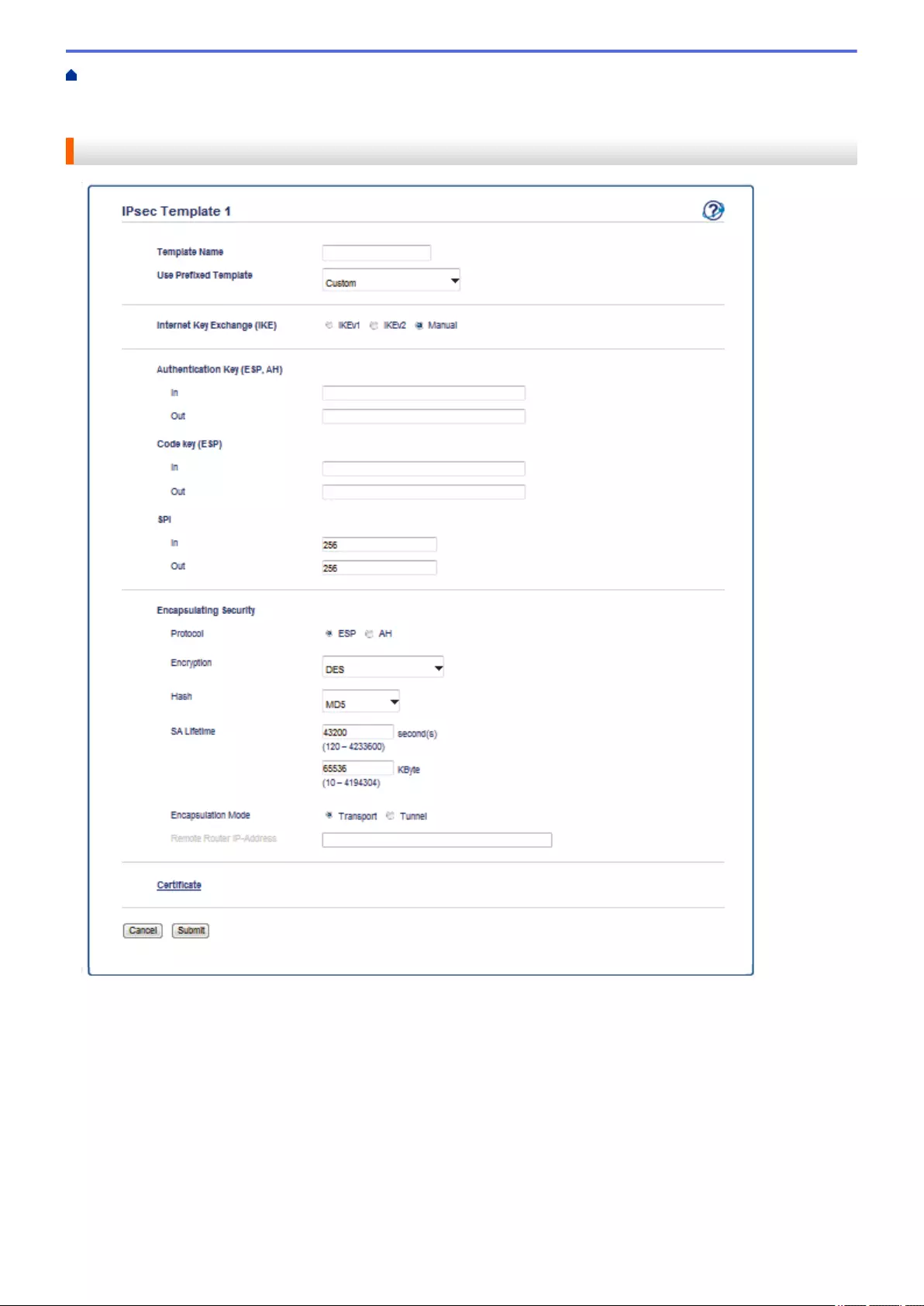
Home > Security > Network Security Features > Manage Your Network Machine Securely Using
IPsec > Configure an IPsec Template Using Web Based Management > Manual Settings for an IPsec
Template
Manual Settings for an IPsec Template
Template Name
Type a name for the template (up to 16 characters).
Use Prefixed Template
Select Custom.
Internet Key Exchange (IKE)
IKE is a communication protocol that is used to exchange encryption keys in order to carry out encrypted
communication using IPsec. To carry out encrypted communication for that time only, the encryption algorithm
that is necessary for IPsec is determined and the encryption keys are shared. For IKE, the encryption keys are
exchanged using the Diffie-Hellman key exchange method, and encrypted communication that is limited to
IKE is carried out.
474
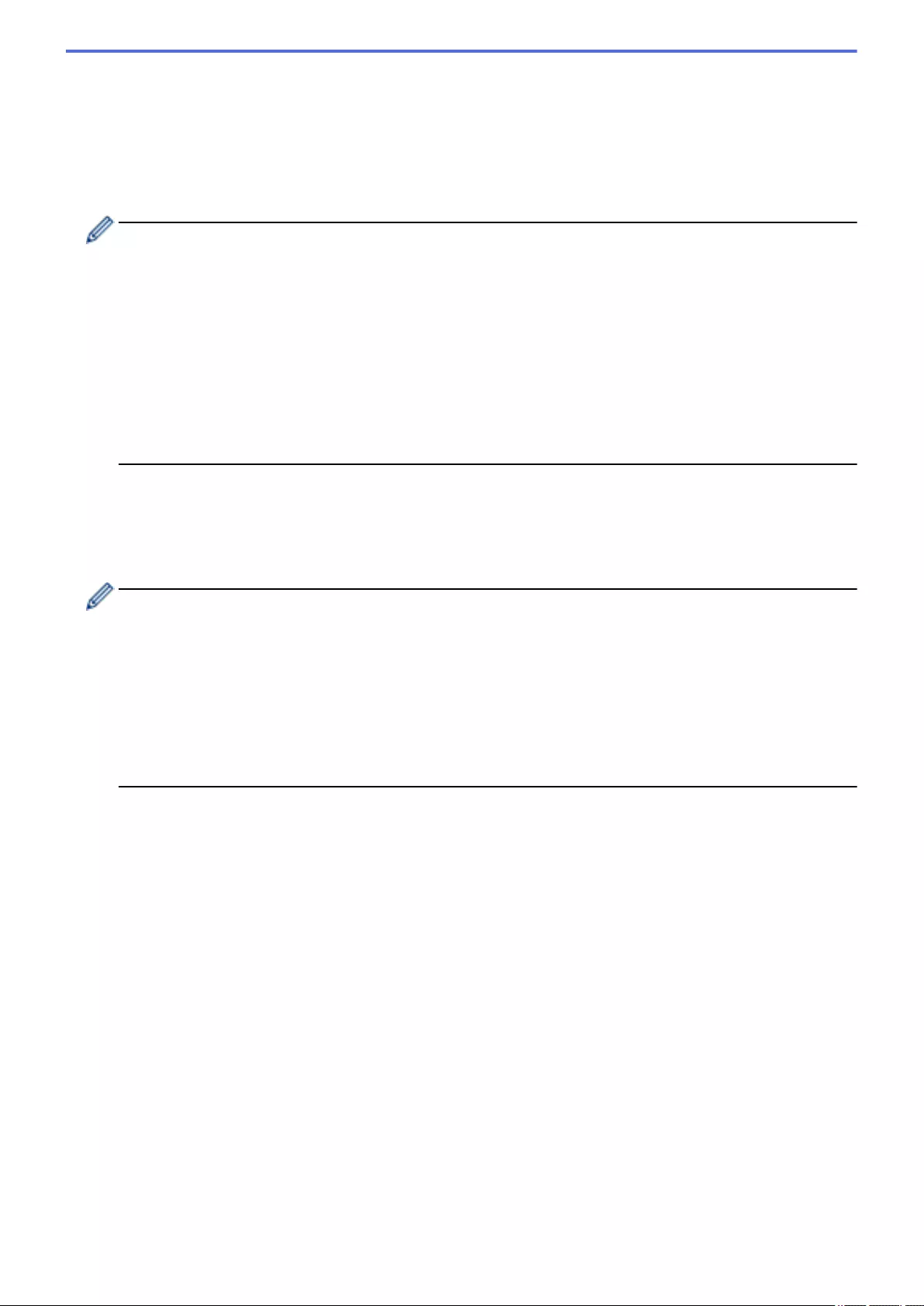
Select Manual.
Authentication Key (ESP,AH)
Specify the key to use for authentication. Type the In/Out values.
These settings are necessary when Custom is selected for Use Prefixed Template, Manual is selected for
Internet Key Exchange (IKE), and a setting other than None is selected for Hash for Encapsulating
Security section.
The number of characters you can set differs depending on the setting you chose for Hash in the
Encapsulating Security section.
If the length of the specified authentication key is different than the selected hash algorithm, an error will
occur.
•MD5: 128 bits (16 bytes)
•SHA1: 160 bits (20 bytes)
•SHA256: 256 bits (32 bytes)
•SHA384: 384 bits (48 bytes)
•SHA512: 512 bits (64 bytes)
When you specify the key in ASCII Code, enclose the characters in double quotation marks (").
Code key (ESP)
Specify the key to use for encryption. Type the In/Out values.
These settings are necessary when Custom is selected in Use Prefixed Template, Manual is selected in
Internet Key Exchange (IKE), and ESP is selected in Protocol in Encapsulating Security.
The number of characters you can set differs depending on the setting you chose for Encryption in the
Encapsulating Security section.
If the length of the specified code key is different than the selected encryption algorithm, an error will occur.
•DES: 64 bits (8 bytes)
•3DES: 192 bits (24 bytes)
•AES-CBC 128: 128 bits (16 bytes)
•AES-CBC 256: 256 bits (32 bytes)
When you specify the key in ASCII Code, enclose the characters in double quotation marks (").
SPI
These parameters are used to identify security information. Generally, a host has multiple Security
Associations (SAs) for several types of IPsec communication. Therefore, it is necessary to identify the
applicable SA when an IPsec packet is received. The SPI parameter, which identifies the SA, is included in
the Authentication Header (AH) and Encapsulating Security Payload (ESP) header.
These settings are necessary when Custom is selected for Use Prefixed Template, and Manual is selected
for Internet Key Exchange (IKE).
Enter the In/Out values. (3-10 characters)
Encapsulating Security
•Protocol
Select ESP or AH.
475

- ESP is a protocol for carrying out encrypted communication using IPsec. ESP encrypts the payload
(communicated contents) and adds additional information. The IP packet is comprised of the header
and the encrypted payload, which follows the header. In addition to the encrypted data, the IP packet
also includes information regarding the encryption method and encryption key, the authentication data,
and so on.
- AH is part of the IPsec protocol that authenticates the sender and prevents manipulation of the data
(ensures the completeness of the data). In the IP packet, the data is inserted immediately after the
header. In addition, the packets include hash values, which are calculated using an equation from the
communicated contents, secret key, and so on, in order to prevent the falsification of the sender and
manipulation of the data. Unlike ESP, the communicated contents are not encrypted, and the data is
sent and received as plain text.
•Encryption
Select DES, 3DES, AES-CBC 128, or AES-CBC 256. The encryption can be selected only when ESP
is selected in Protocol.
•Hash
Select None, MD5, SHA1, SHA256, SHA384, or SHA512. None can be selected only when ESP is
selected in Protocol.
•SA Lifetime
Specify the IKE SA lifetime.
Type the time (seconds) and number of kilobytes (KByte) before the IPsec SA will expire.
•Encapsulation Mode
Select Transport or Tunnel.
•Remote Router IP-Address
Specify the IP address (IPv4 or IPv6) of the connection destination. Enter this information only when the
Tunnel mode is selected.
SA (Security Association) is an encrypted communication method using IPsec or IPv6 that exchanges and
shares information, such as the encryption method and encryption key, in order to establish a secure
communication channel before communication begins. SA may also refer to a virtual encrypted
communication channel that has been established. The SA used for IPsec establishes the encryption
method, exchanges the keys, and carries out mutual authentication according to the IKE (Internet Key
Exchange) standard procedure. In addition, the SA is updated periodically.
Related Information
•Configure an IPsec Template Using Web Based Management
476
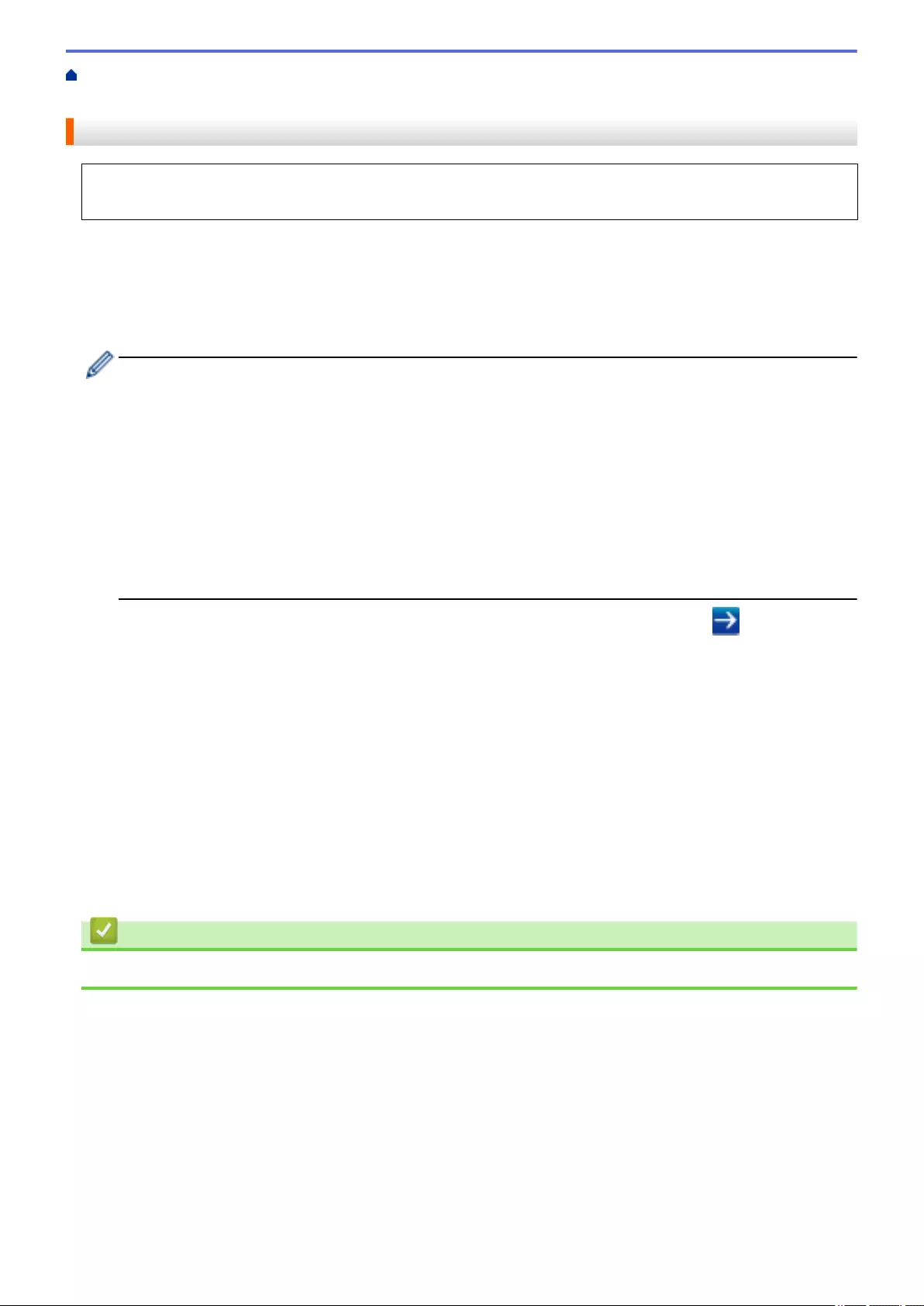
Home > Security > Network Security Features > Send or Receive an Email Securely > Configure Email
Sending or Receiving Using Web Based Management
Configure Email Sending or Receiving Using Web Based Management
We recommend using Web Based Management to configure secured email sending with user authentication,
or email sending and receiving using SSL/TLS.
1. Start your web browser.
2. Type "http://machine's IP address" in your browser's address bar (where "machine's IP address" is the
machine's IP address).
For example:
http://192.168.1.2
• If you are using a Domain Name System or enable a NetBIOS name, you can type another name, such
as "SharedPrinter" instead of the IP address.
- For example:
http://SharedPrinter
If you enable a NetBIOS name, you can also use the node name.
- For example:
http://brnxxxxxxxxxxxx
The NetBIOS name can be found in the Network Configuration Report.
• For Mac, access Web Based Management by clicking the machine's icon on the Status Monitor
screen.
3. No password is required by default. Type a password if you have set one, and then click .
4. Click the Network tab.
5. Click Protocol in the left navigation bar.
6. In the POP3/IMAP4/SMTP field, click Advanced Settings and make sure the status of POP3/IMAP4/SMTP
is Enabled.
7. Configure the POP3/IMAP4/SMTP settings.
• Confirm that the email settings are correct after configuration by sending a test email.
• If you do not know the POP3/IMAP4/SMTP server settings, contact your network administrator or Internet
Service Provider (ISP).
8. When finished, click Submit.
The Test Send/Receive E-mail Configuration dialog box appears.
9. Follow the instructions in the dialog box to test the current settings.
Related Information
•Send or Receive an Email Securely
478
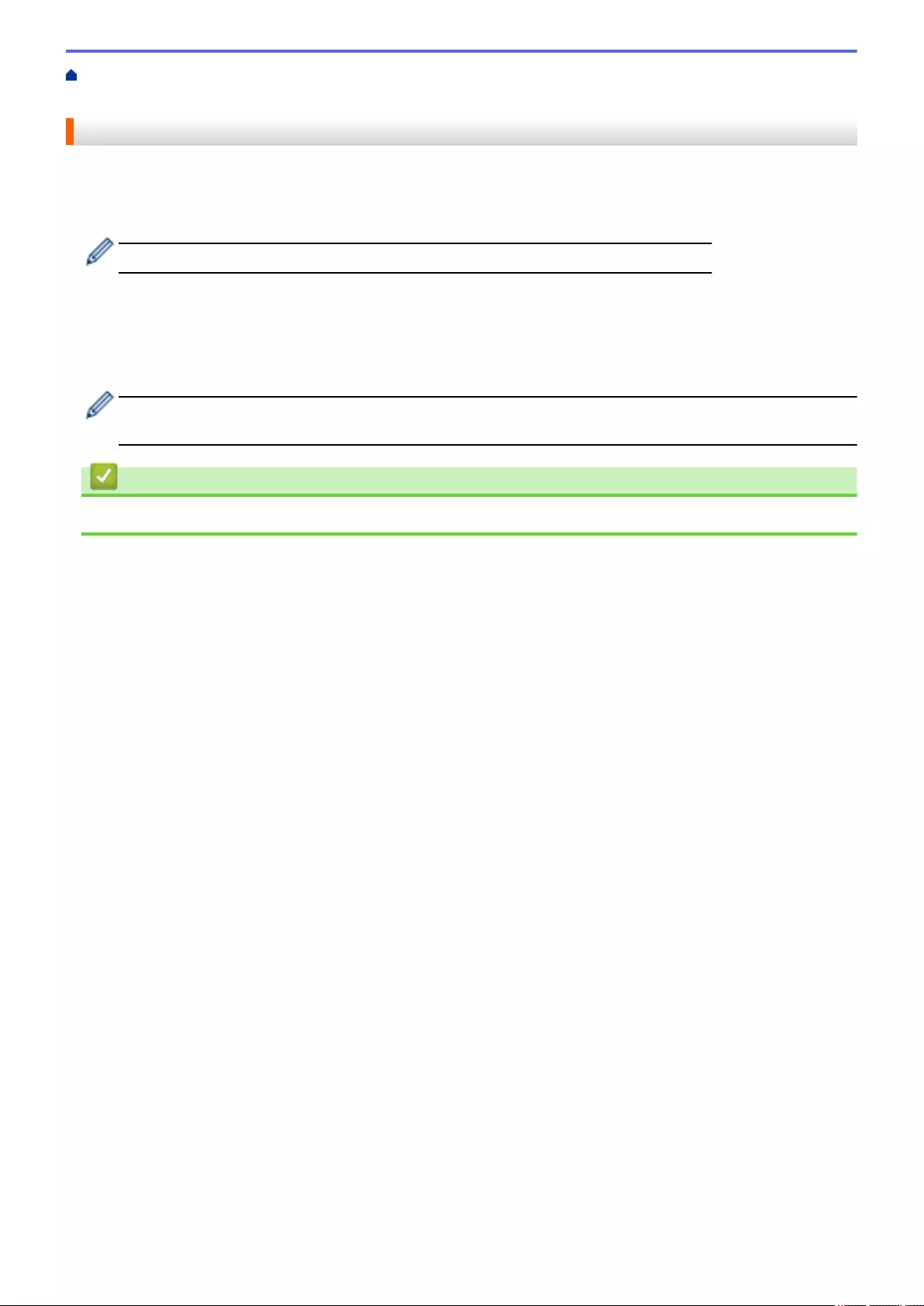
Home > Security > Network Security Features > Send or Receive an Email Securely > Send an Email with
User Authentication
Send an Email with User Authentication
Your Brother machine supports the SMTP-AUTH method to send email via an email server that requires user
authentication. This method prevents unauthorized users from accessing the email server.
You can use SMTP-AUTH for email notification, email reports and I-Fax.
We recommend using Web Based Management to configure the SMTP authentication.
Email Server Settings
You must configure your machine's SMTP authentication method to match the method used by your email server.
For details about your email server settings, contact your network administrator or Internet Service Provider
(ISP).
To enable SMTP server authentication: in the Web Based Management POP3/IMAP4/SMTP screen, under
Server Authentication Method, you must select SMTP-AUTH.
Related Information
•Send or Receive an Email Securely
479
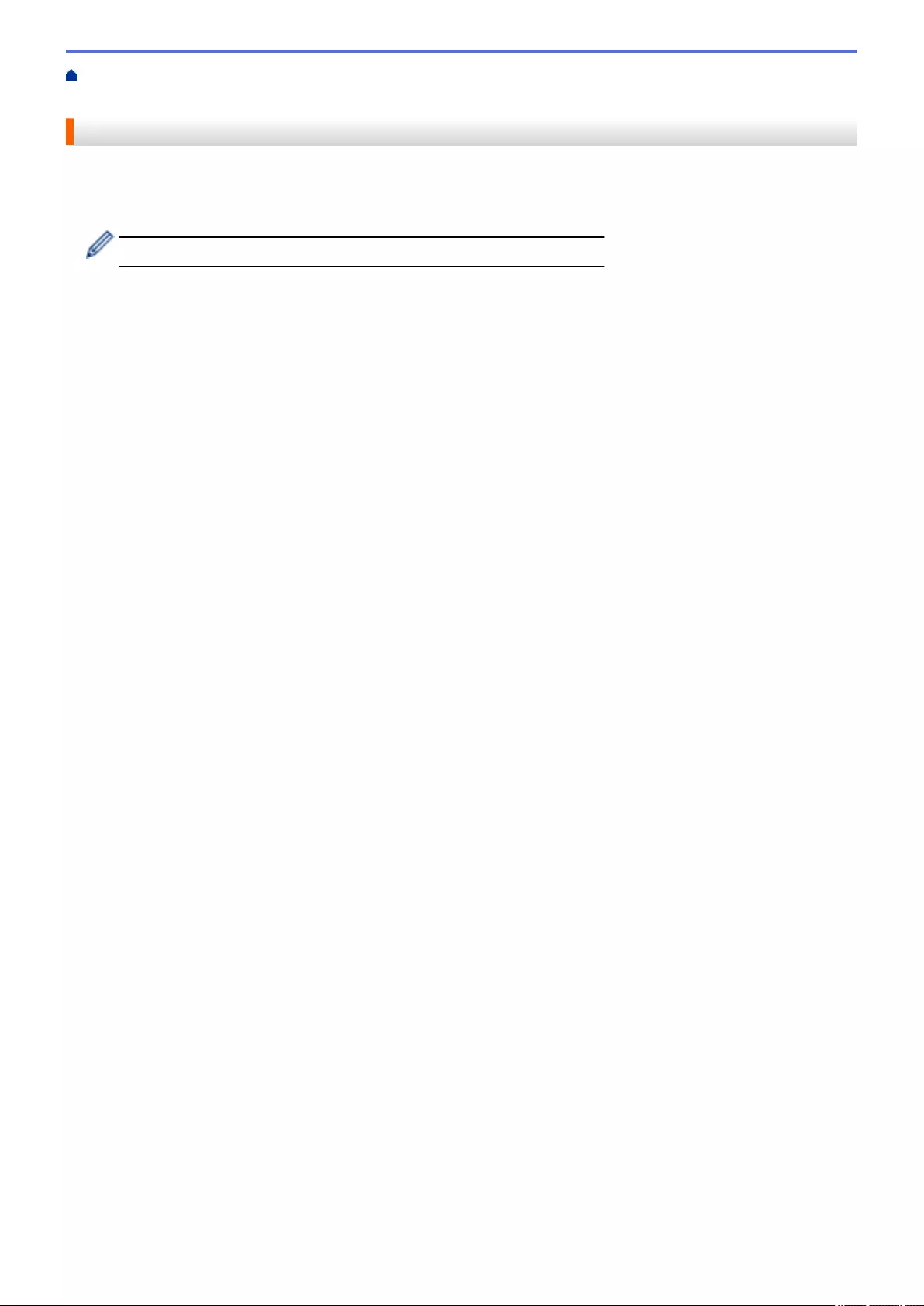
Home > Security > Network Security Features > Send or Receive an Email Securely > Send or Receive an
Email Securely Using SSL TLS
Send or Receive an Email Securely Using SSL TLS
Your Brother machine supports SSL/TLS methods to send or receive an email via an email server that requires
secure SSL/TLS communication. To send or receive email via an email server that is using SSL/TLS
communication, you must configure SMTP over SSL/TLS, POP3 over SSL/TLS, or IMAP4 over SSL/TLS.
We recommend using Web Based Management to configure SSL/TLS.
Verify Server Certificate
Under SSL/TLS, if you choose SSL or TLS, the Verify Server Certificate check box will be selected
automatically.
480
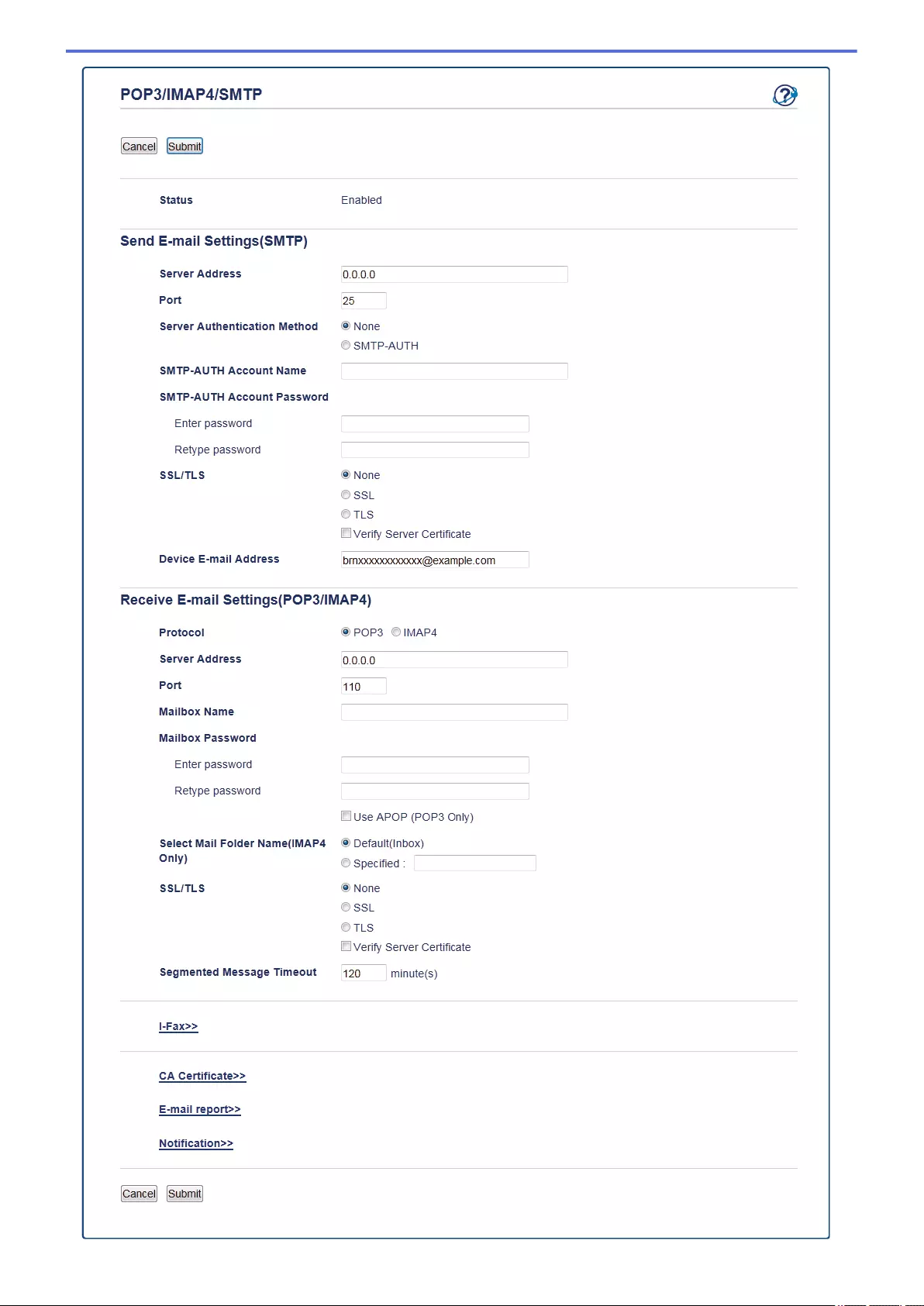
481

• Before you verify the server certificate, you must import the CA certificate issued by the CA that signed
the server certificate. Contact your network administrator or your Internet Service Provider (ISP) to
confirm if importing a CA certificate is necessary.
• If you do not need to verify the server certificate, clear the Verify Server Certificate check box.
Port Number
If you select SSL or TLS for SMTP, POP3, or IMAP4, the Port value will be changed to match the protocol. To
change the port number manually, type the port number after you choose SSL or TLS for the SSL/TLS settings.
You must configure your machine's POP3/IMAP4/SMTP communication method to match the method used by
your email server. For details about your email server settings, contact your network administrator or your ISP.
In most cases, the secured webmail services require the following settings:
SMTP Port 25
Server Authentication Method SMTP-AUTH
SSL/TLS TLS
POP3 Port 995
SSL/TLS SSL
IMAP4 Port 993
SSL/TLS SSL
Related Information
•Send or Receive an Email Securely
482

Home > Security > Network Security Features > Use IEEE 802.1x Authentication for a Wired or a Wireless
Network
Use IEEE 802.1x Authentication for a Wired or a Wireless Network
•What Is IEEE 802.1x Authentication?
•Configure IEEE 802.1x Authentication for a Wired or a Wireless Network Using Web
Based Management (Web Browser)
•IEEE 802.1x Authentication Methods
483
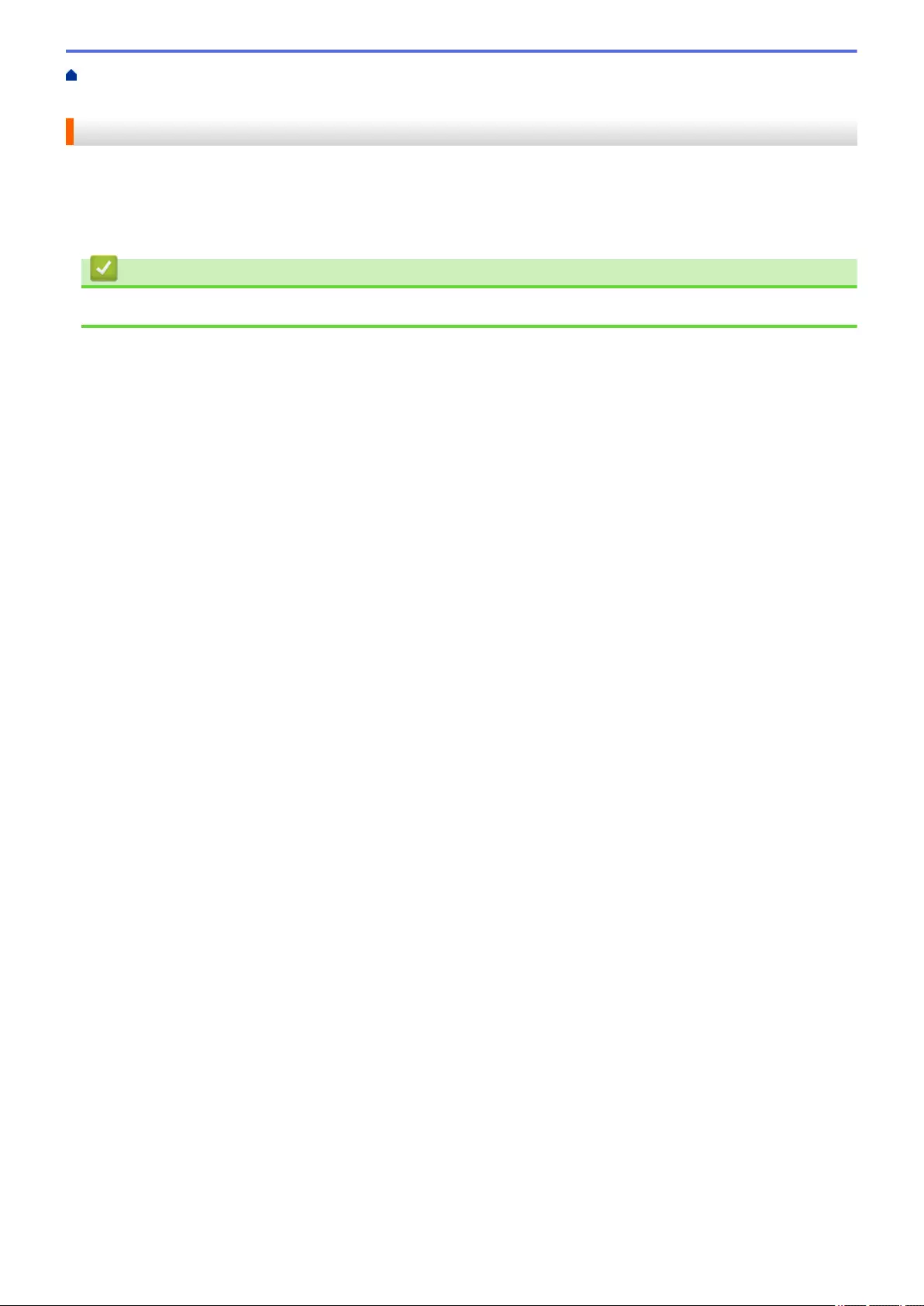
Home > Security > Network Security Features > Use IEEE 802.1x Authentication for a Wired or a Wireless
Network > What Is IEEE 802.1x Authentication?
What Is IEEE 802.1x Authentication?
IEEE 802.1x is an IEEE standard for wired and wireless networks that limits access from unauthorized network
devices. Your Brother machine (supplicant) sends an authentication request to a RADIUS server (Authentication
server) through your access point or HUB. After your request has been verified by the RADIUS server, your
machine can access the network.
Related Information
•Use IEEE 802.1x Authentication for a Wired or a Wireless Network
484
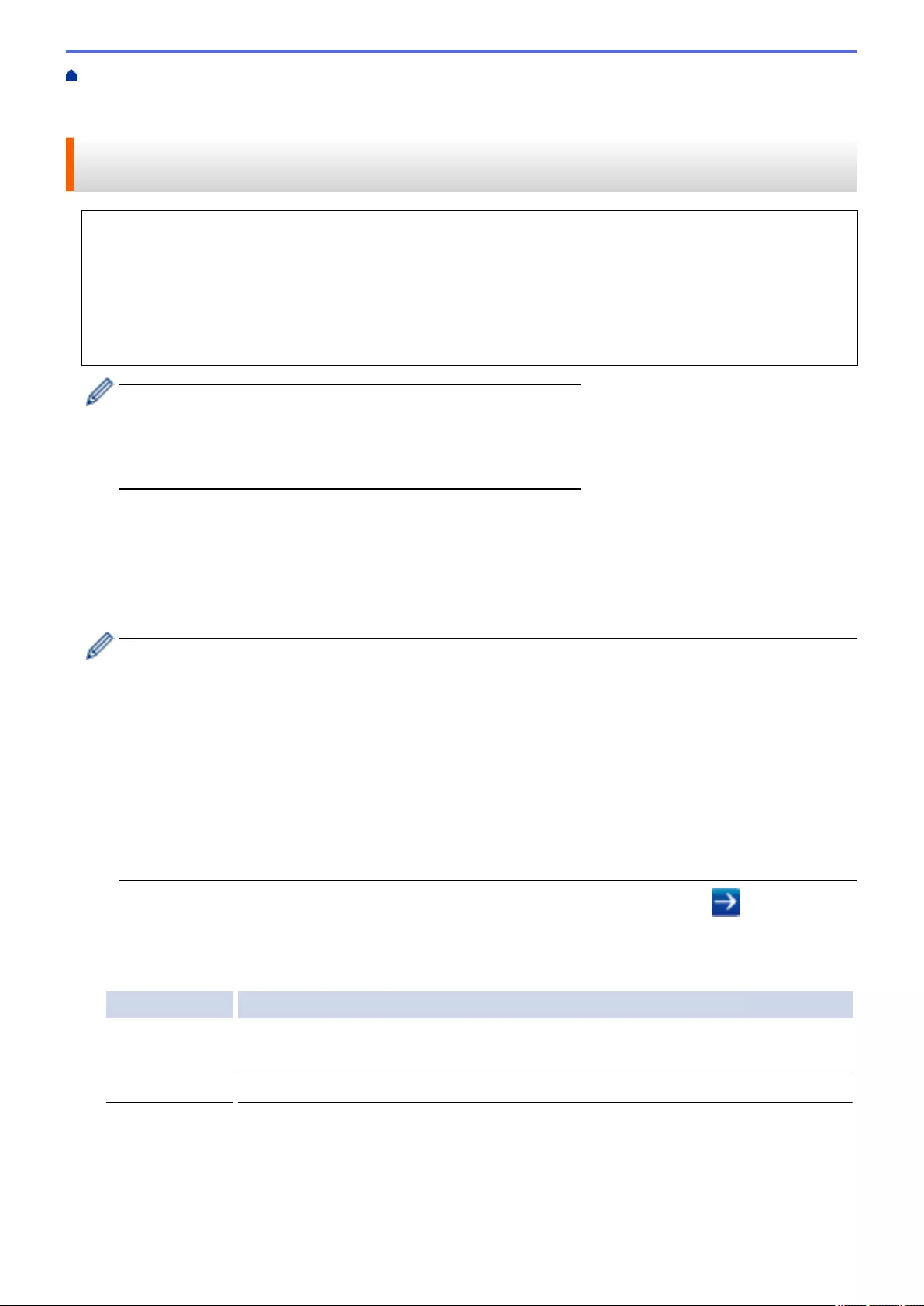
Home > Security > Network Security Features > Use IEEE 802.1x Authentication for a Wired or a Wireless
Network > Configure IEEE 802.1x Authentication for a Wired or a Wireless Network Using Web Based
Management (Web Browser)
Configure IEEE 802.1x Authentication for a Wired or a Wireless Network
Using Web Based Management (Web Browser)
• If you configure your machine using EAP-TLS authentication, you must install the client certificate issued
by a CA before you start configuration. Contact your network administrator about the client certificate. If
you have installed more than one certificate, we recommend writing down the certificate name you want to
use.
• Before you verify the server certificate, you must import the CA certificate that has been issued by the CA
that signed the server certificate. Contact your network administrator or your Internet Service Provider
(ISP) to confirm whether a CA certificate import is necessary.
You can also configure IEEE 802.1x authentication using:
• BRAdmin Professional (Wired and wireless network)
• Wireless setup wizard from the control panel (Wireless network)
• Wireless setup wizard on the CD-ROM (Wireless network)
1. Start your web browser.
2. Type "http://machine's IP address" in your browser's address bar (where "machine's IP address" is the
machine's IP address).
For example:
http://192.168.1.2
• If you are using a Domain Name System or enable a NetBIOS name, you can type another name, such
as "SharedPrinter" instead of the IP address.
- For example:
http://SharedPrinter
If you enable a NetBIOS name, you can also use the node name.
- For example:
http://brnxxxxxxxxxxxx
The NetBIOS name can be found in the Network Configuration Report.
• For Mac, access Web Based Management by clicking the machine's icon on the Status Monitor
screen.
3. No password is required by default. Type a password if you have set one, and then click .
4. Click the Network tab.
5. Do one of the following:
Option Description
Wired network Click the Wired tab in the left navigation bar, and then select Wired 802.1x
Authentication.
Wireless network Click the Wireless tab in the left navigation bar, and then select Wireless (Enterprise).
6. Configure the IEEE 802.1x authentication settings.
485
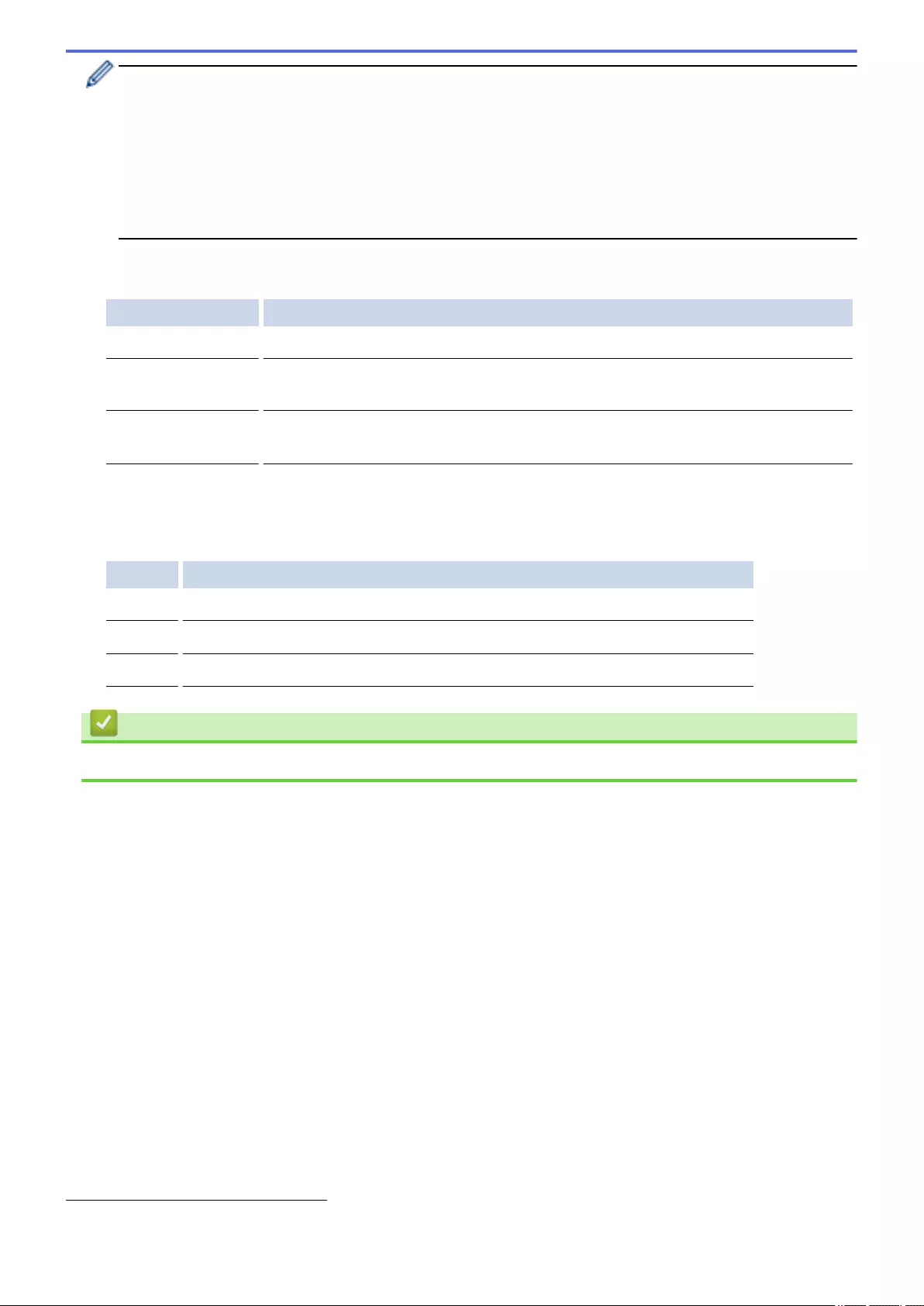
• To enable IEEE 802.1x authentication for wired networks, select Enabled for Wired 802.1x status on
the Wired 802.1x Authentication page.
• If you are using EAP-TLS authentication, you must select the client certificate that has been installed
(shown with certificate name) for verification from the Client Certificate drop-down list.
• If you select EAP-FAST, PEAP, EAP-TTLS, or EAP-TLS authentication, select the verification method
from the Server Certificate Verification drop-down list. Verify the server certificate using the CA
certificate, imported to the machine in advance, that has been issued by the CA that signed the server
certificate.
Select one of the following verification methods from the Server Certificate Verification drop-down list:
Option Description
No Verification The server certificate can always be trusted. The verification is not performed.
CA Cert. The verification method to check the CA reliability of the server certificate, using the
CA certificate that has been issued by the CA that signed the server certificate.
CA Cert. + ServerID The verification method to check the common name 1 value of the server certificate,
in addition to the CA reliability of the server certificate.
7. When finished with configuration, click Submit.
For wired networks: After configuring, connect your machine to the IEEE 802.1x supported network. After a
few minutes, print the Network Configuration Report to check the <Wired IEEE 802.1x> Status.
Option Description
Success The wired IEEE 802.1x function is enabled and the authentication was successful.
Failed The wired IEEE 802.1x function is enabled; however, the authentication failed.
Off The wired IEEE 802.1x function is not available.
Related Information
•Use IEEE 802.1x Authentication for a Wired or a Wireless Network
1The common name verification compares the common name of the server certificate to the character string configured for the Server ID.
Before you use this method, contact your system administrator about the server certificate's common name and then configure Server ID.
486
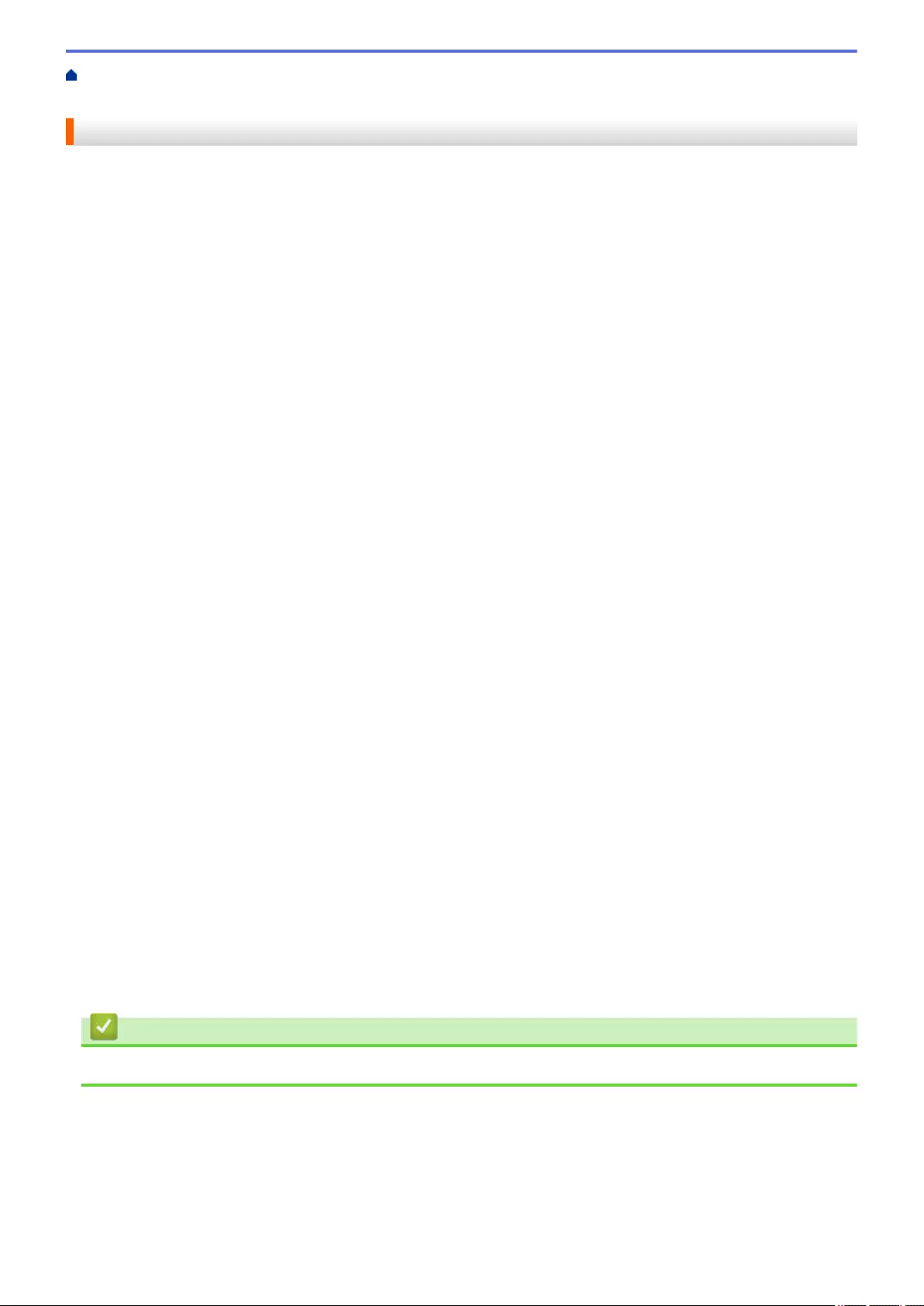
Home > Security > Network Security Features > Use IEEE 802.1x Authentication for a Wired or a Wireless
Network > IEEE 802.1x Authentication Methods
IEEE 802.1x Authentication Methods
LEAP (Wireless network)
Lightweight Extensible Authentication Protocol (LEAP) is a proprietary EAP method developed by Cisco
Systems, Inc., which uses a user ID and password for authentication.
EAP-FAST
Extensible Authentication Protocol-Flexible Authentication via Secured Tunneling (EAP-FAST) has been
developed by Cisco Systems, Inc., which uses a user ID and password for authentication, and symmetric key
algorithms to achieve a tunneled authentication process.
The Brother machine supports the following inner authentication methods:
• EAP-FAST/NONE
• EAP-FAST/MS-CHAPv2
• EAP-FAST/GTC
EAP-MD5 (Wired network)
Extensible Authentication Protocol-Message Digest Algorithm 5 (EAP-MD5) uses a user ID and password for
challenge-response authentication.
PEAP
Protected Extensible Authentication Protocol (PEAP) is a version of EAP method developed by Cisco
Systems, Inc., Microsoft Corporation and RSA Security. PEAP creates an encrypted Secure Sockets Layer
(SSL)/Transport Layer Security (TLS) tunnel between a client and an authentication server, for sending a user
ID and password. PEAP provides mutual authentication between the server and the client.
The Brother machine supports the following inner authentications:
• PEAP/MS-CHAPv2
• PEAP/GTC
EAP-TTLS
Extensible Authentication Protocol-Tunneled Transport Layer Security (EAP-TTLS) has been developed by
Funk Software and Certicom. EAP-TTLS creates a similar encrypted SSL tunnel to PEAP, between a client
and an authentication server, for sending a user ID and password. EAP-TTLS provides mutual authentication
between the server and the client.
The Brother machine supports the following inner authentications:
• EAP-TTLS/CHAP
• EAP-TTLS/MS-CHAP
• EAP-TTLS/MS-CHAPv2
• EAP-TTLS/PAP
EAP-TLS
Extensible Authentication Protocol-Transport Layer Security (EAP-TLS) requires digital certificate
authentication both at a client and an authentication server.
Related Information
•Use IEEE 802.1x Authentication for a Wired or a Wireless Network
487
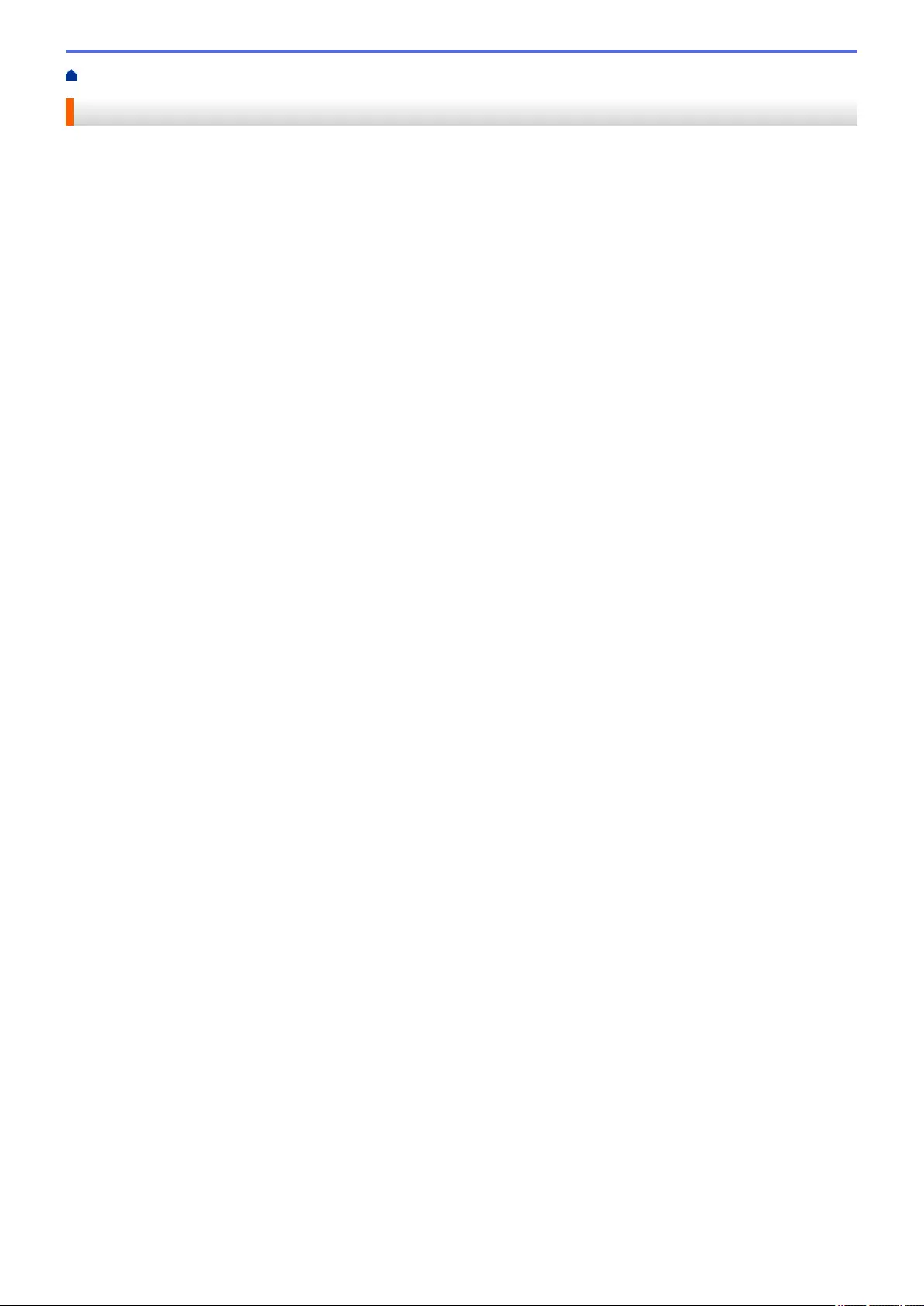
Home > Security > Network Security Features > Store Print Log to Network
Store Print Log to Network
•Store Log to Network Overview
•Configure the Store Print Log to Network Settings Using Web Based Management
•Use the Store Print Log to Network's Error Detection Setting
•Use Store Print Log to Network with Secure Function Lock 3.0
488
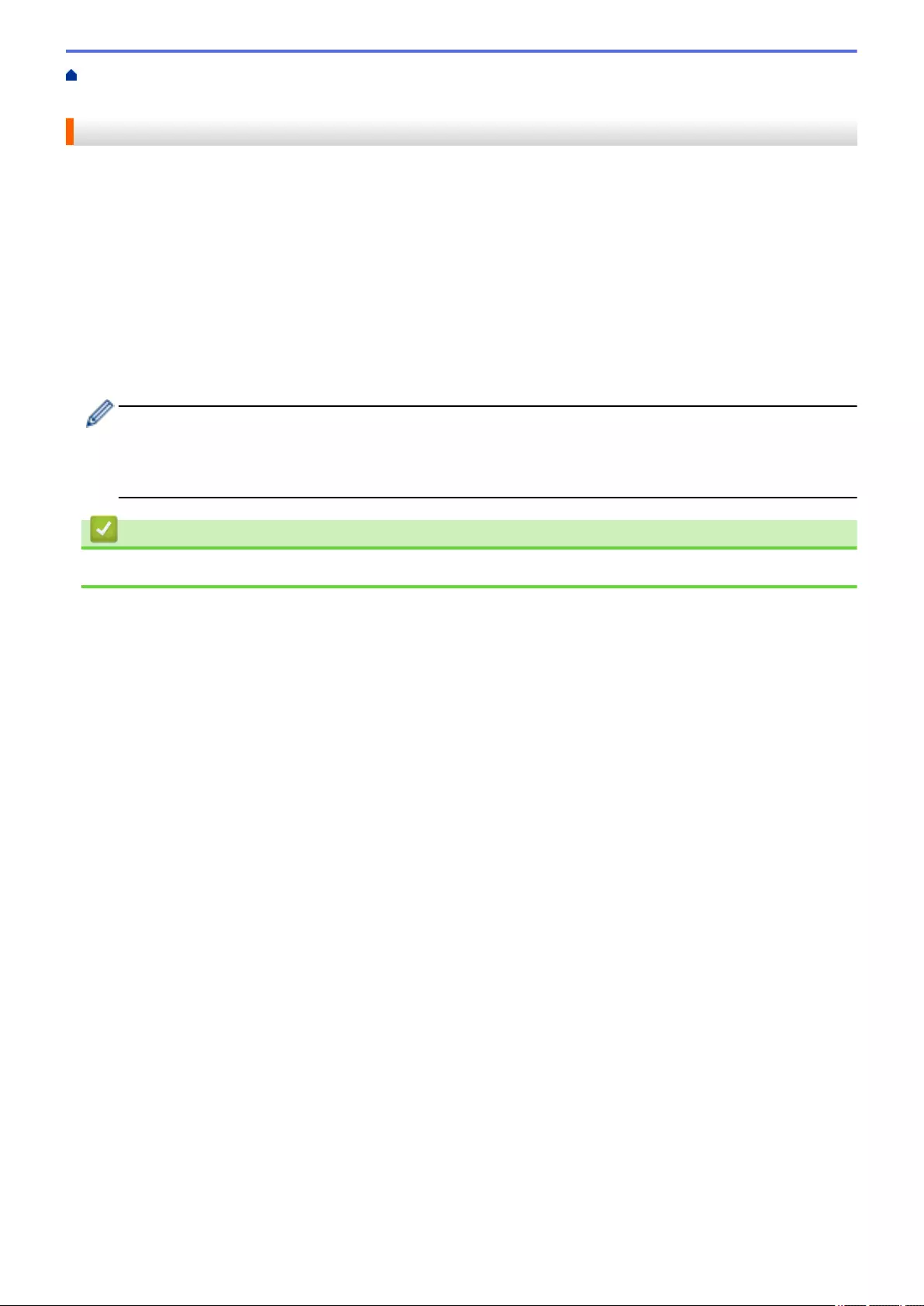
Home > Security > Network Security Features > Store Print Log to Network > Store Log to Network
Overview
Store Log to Network Overview
The Store Print Log to Network feature allows you to save the print log file from your Brother machine to a
network server using the Common Internet File System (CIFS) protocol. You can record the ID, type of print job,
job name, user name, date, time and the number of printed pages for every print job. CIFS is a protocol that runs
over TCP/IP, allowing computers on a network to share files over an intranet or the Internet.
The following print functions are recorded in the print log:
• Print jobs from your computer
• USB Direct Print (supported models only)
• Copy
• Received Fax (supported models only)
• Web Connect Print
• The Store Print Log to Network feature supports Kerberos authentication and NTLMv2 authentication.
You must configure the SNTP protocol (network time server), or you must set the date, time and time
zone correctly on the control panel for authentication.
• You can set the file type to TXT or CSV when storing a file to the server.
Related Information
•Store Print Log to Network
489
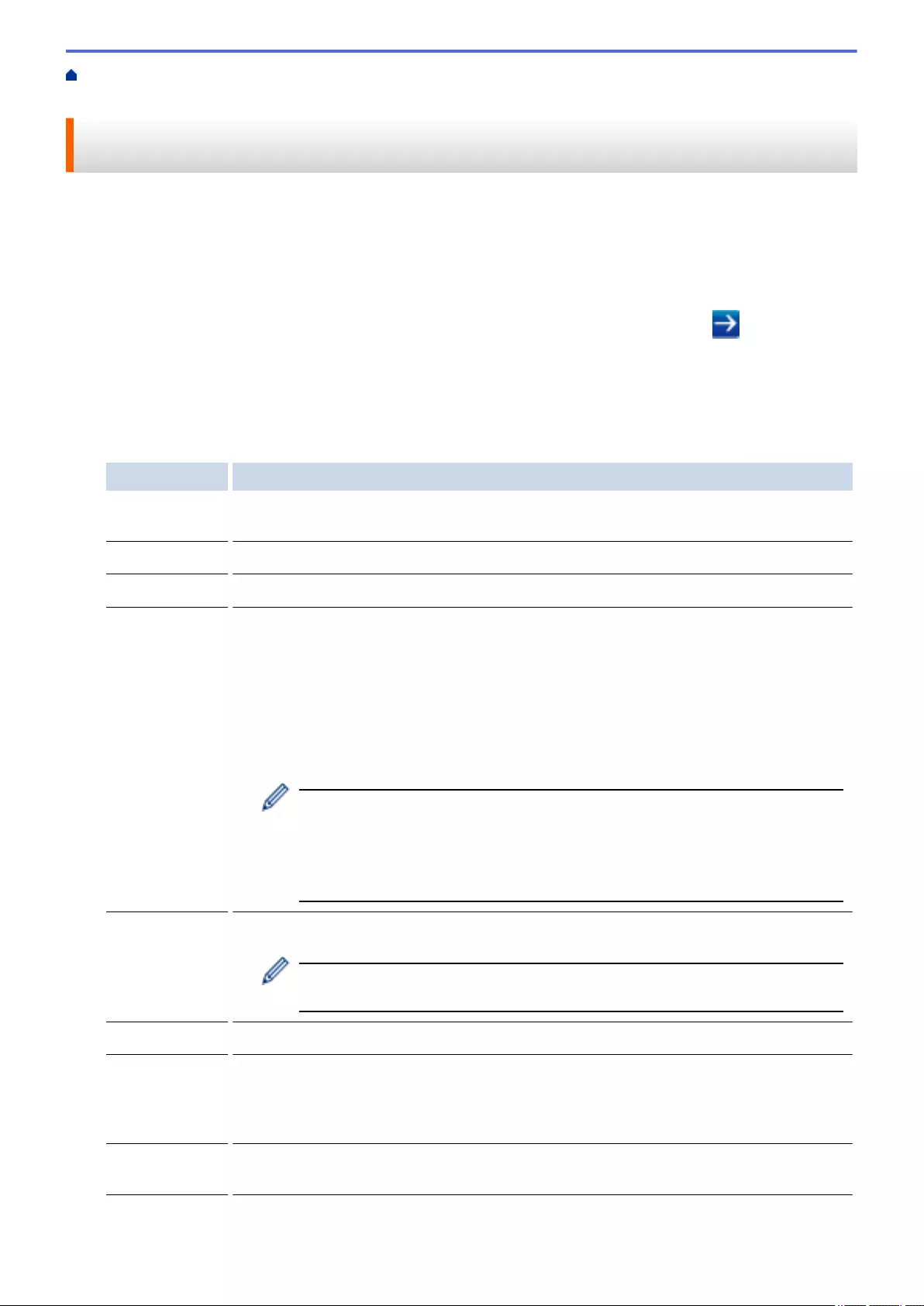
Home > Security > Network Security Features > Store Print Log to Network > Configure the Store Print Log
to Network Settings Using Web Based Management
Configure the Store Print Log to Network Settings Using Web Based
Management
1. Start your web browser.
2. Type "http://machine's IP address" in your browser's address bar (where "machine's IP address" is the
machine's IP address).
For example:
http://192.168.1.2
3. No password is required by default. Type a password if you have set one, and then click .
4. Click the Administrator tab.
5. Click the Store Print Log to Network menu.
6. In the Print Log field, click On.
7. Configure the following settings:
Option Description
Network Folder
Path
Type the destination folder where your log will be stored on the CIFS server (for
example: brother\abc).
File Name Type the file name you want to use for the print log (up to 32 characters).
File Type Select the TXT or CSV option for the Print Log file type.
Auth. Method Select the authentication method required for access to the CIFS server: Auto,
Kerberos, or NTLMv2. Kerberos is an authentication protocol which allows devices or
individuals to securely prove their identity to network servers using a single sign-on.
NTLMv2 is the authentication method used by Windows to log into servers.
•Auto: If you select Auto, NTLMv2 will be used to the authentication method.
•Kerberos: Select the Kerberos option to use Kerberos authentication only.
•NTLMv2: Select the NTLMv2 option to use NTLMv2 authentication only.
• For the Kerberos and NTLMv2 authentication, you must also configure the
Date&Time settings or the SNTP protocol (network time server) and DNS
server.
• You can also configure the Date & Time settings from the machine's
control panel.
Username Type the user name for the authentication (up to 96 characters).
If the user name is part of a domain, enter the user name in one of the
following styles: user@domain or domain\user.
Password Type the password for the authentication (up to 32 characters).
Kerberos
Server
Address (if
needed)
Type the KDC host address (for example: kerberos.example.com; up to 64 characters) or
the IP address (for example: 192.168.56.189).
Error Detection
Setting
Choose what action should be taken when the Print Log cannot be stored to the server
due to a network error.
8. In the Connection Status field, confirm the last log status.
490

You can also confirm the error status on the LCD of your machine.
9. Click Submit to display the Test Print Log to Network page.
To test your settings, click Yes and then go to the next step.
To skip the test, click No. Your settings will be submitted automatically.
10. The machine will test your settings.
11. If your settings are accepted, Test OK appears on the screen.
If Test Error appears, check all settings, and then click Submit to display the Test page again.
Related Information
•Store Print Log to Network
•Synchronize Time with the SNTP Server Using Web Based Management
•Configure the SNTP Protocol Using Web Based Management
491
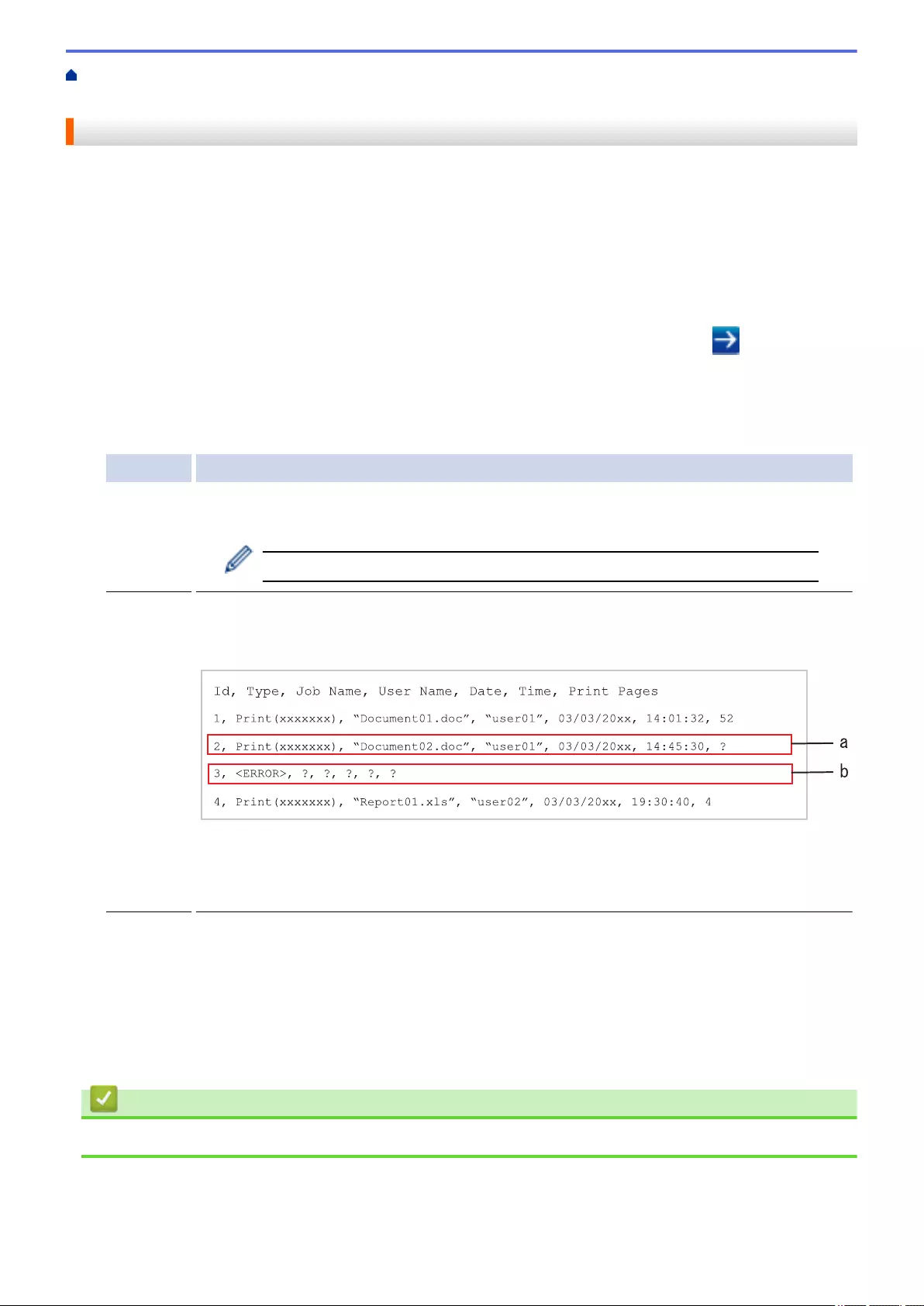
Home > Security > Network Security Features > Store Print Log to Network > Use the Store Print Log to
Network's Error Detection Setting
Use the Store Print Log to Network's Error Detection Setting
Use Error Detection Settings to determine the action that is taken when the print log cannot be stored to the
server due to a network error.
1. Start your web browser.
2. Type "http://machine's IP address" in your browser's address bar (where "machine's IP address" is the
machine's IP address).
For example:
http://192.168.1.2
3. No password is required by default. Type a password if you have set one, and then click .
4. Click the Administrator tab.
5. Click the Store Print Log to Network menu in the left navigation bar.
6. In the Error Detection Setting section, select the Cancel Print or Ignore Log & Print option.
Option Description
Cancel
Print
If you select the Cancel Print option, the print jobs are canceled when the print log cannot be
stored to the server.
Even if you select the Cancel Print option, your machine will print a received fax.
Ignore
Log &
Print
If you select the Ignore Log & Print option, the machine prints the documentation even if the
print log cannot be stored to the server.
When the store print log function has recovered, the print log is recorded as follows:
a. If the log cannot be stored at the end of printing, the print log except the number of printed
pages will be recorded.
b. If the print log cannot be stored at the beginning and the end of printing, the print log of the
job will not be recorded. When the function has recovered, the error is reflected in the log.
7. Click Submit to display the Test Print Log to Network page.
To test your settings, click Yes and then go to the next step.
To skip the test, click No. Your settings will be submitted automatically.
8. The machine will test your settings.
9. If your settings are accepted, Test OK appears on the screen.
If Test Error appears, check all settings, and then click Submit to display the Test page again.
Related Information
•Store Print Log to Network
492
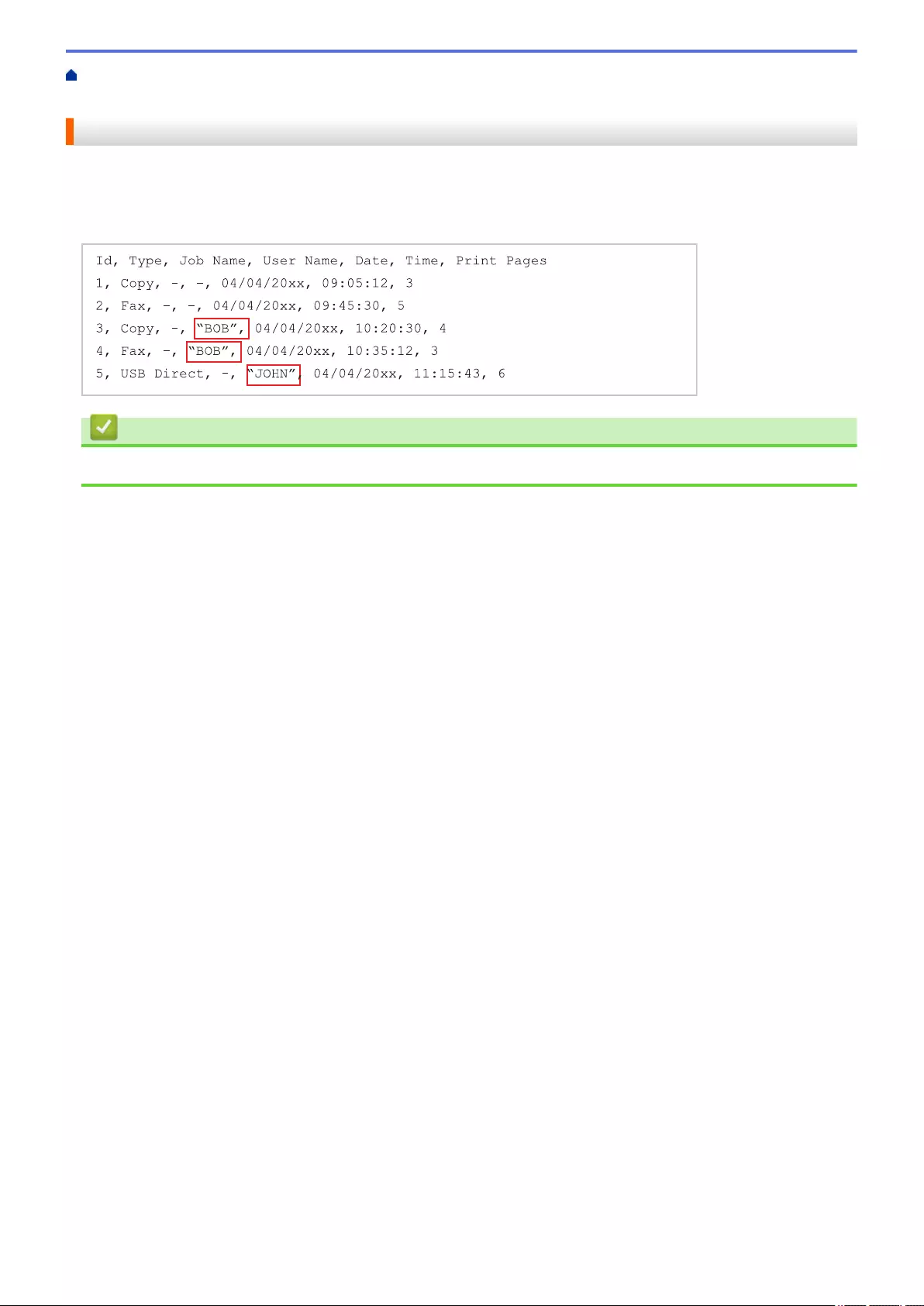
Home > Security > Network Security Features > Store Print Log to Network > Use Store Print Log to
Network with Secure Function Lock 3.0
Use Store Print Log to Network with Secure Function Lock 3.0
When Secure Function Lock 3.0 is active, the names of the registered users for copy, Fax RX, Web Connect
Print and USB Direct Print (if available) are recorded in the Store Print Log to Network report. When the Active
Directory Authentication is enabled, logged on user name will be recorded in the Store Print Log to Network
report:
Related Information
•Store Print Log to Network
493
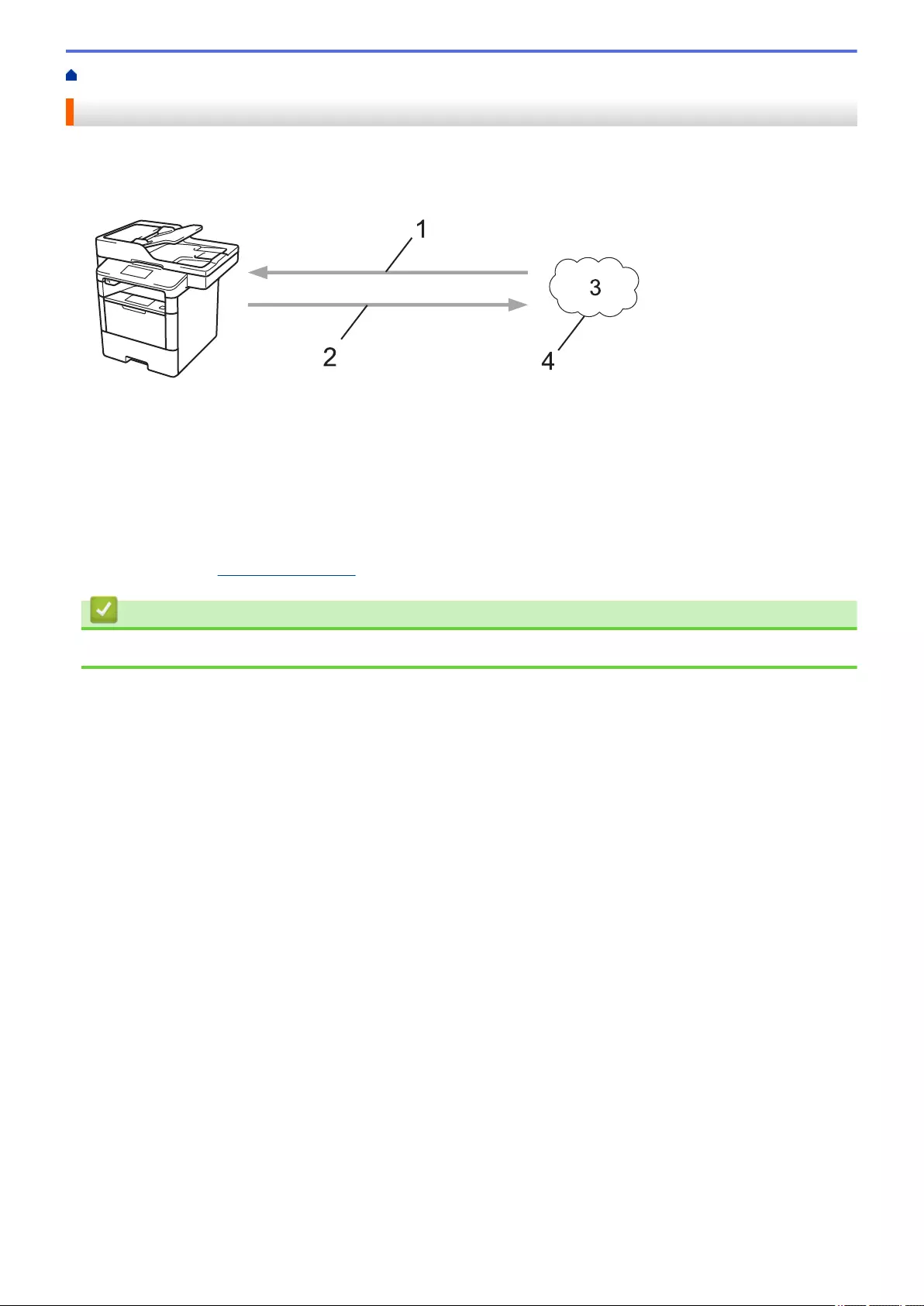
Home > Mobile/Web Connect > Use Web Services from Your Brother Machine
Use Web Services from Your Brother Machine
Certain websites provide services that allow users to upload and view images and files on the website. Your
Brother machine can scan images and upload them to these services, and also download from and print images
that are already uploaded to these services.
1. Printing
2. Scanning
3. Photos, images, documents and other files
4. Web Service
The following services can be accessed from your Brother machine: Picasa Web Albums™, Google Drive™,
Flickr®, Facebook, Evernote®, Dropbox, OneNote, OneDrive and Box.
For more detailed information, see the Web Connect Guide. Go to your model's Manuals page on the Brother
Solutions Center at support.brother.com.
Related Information
•Mobile/Web Connect
495
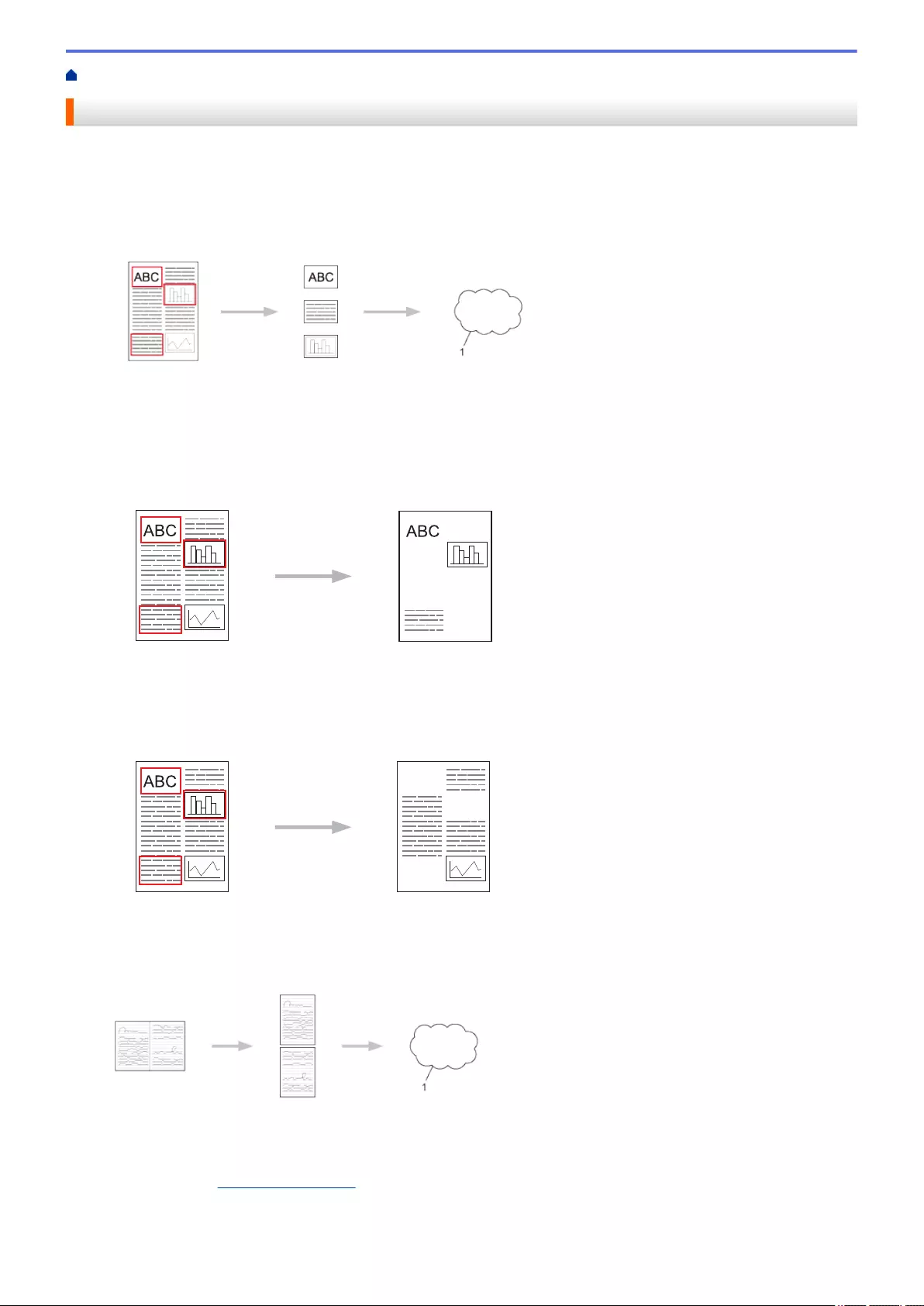
Home > Mobile/Web Connect > Use Brother Web Services
Use Brother Web Services
Brother Web Services allow you to scan, print, and manage your files in the cloud or other online file
management services. Brother Web Services also manages cloud servers, so you can transfer received faxes.
• Outline and Scan
Use a red pen to outline sections of your document, and then scan the document. The red outlined areas are
captured and processed based on your settings: save the areas to a cloud service.
1. Web Service
• Copy Outlined Area
Use a red pen to outline sections of your document, and then scan the document. The red outlined areas are
extracted and printed together.
• Cut Outlined Area
Use a red pen to outline sections of your document, and then scan the document. The red outlined areas are
deleted and the remaining information is printed.
• NotePrint and NoteScan
Print different types of note sheets and the folders designed to hold them. After writing your notes, scan the note
sheets and save them to a cloud service.
1. Web Service
For more detailed information, see the Web Connect Guide. Go to your model's Manuals page on the Brother
Solutions Center at support.brother.com.
496

Home > Mobile/Web Connect > Print with Google Cloud Print™
Print with Google Cloud Print™
Google Cloud Print™ is a Google-provided service that allows you to print to a printer registered to your Google
account using a network-compatible device (such as a mobile phone or computer) without installing the printer
driver on the device.
3
1
4
2
1
2
3
4
1. Print request
2. Internet
3. Google Cloud Print™
4. Printing
Related Information
•Mobile/Web Connect
498
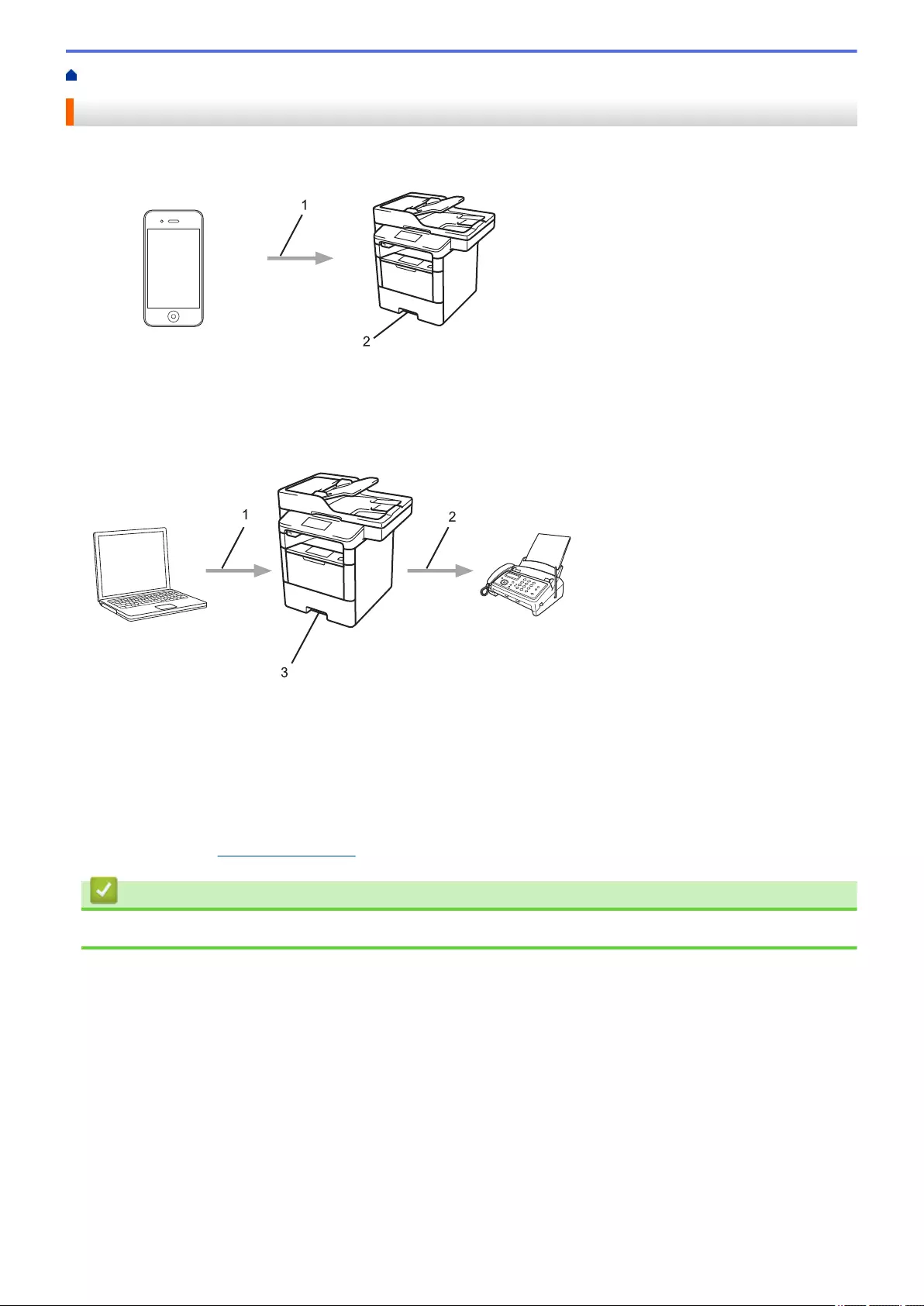
Home > Mobile/Web Connect > Print with AirPrint
Print with AirPrint
Use Brother AirPrint to wirelessly print photos, emails, web pages, and documents from your iPad, iPhone and
iPod touch without installing a printer driver on the device.
1
2
1. Print request
2. Printed photos, emails, web pages, and documents
• AirPrint also lets you send faxes directly from your Mac computer without printing them (requires OS X 10.8.5
or later).
1 2
3
1. Wired or wireless network
2. Telephone line
3. Your Brother machine
• AirPrint also lets you scan documents to your Mac computer without installing a driver on the device (requires
OS X 10.9 or later).
For more detailed information, see the AirPrint Guide. Go to your model's Manuals page on the Brother
Solutions Center at support.brother.com.
Related Information
•Mobile/Web Connect
499

Home > Mobile/Web Connect > Print with Mopria™
Print with Mopria™
Mopria™ Print Service is a print feature on Android™ mobile devices (Android™ version 4.4 or later) developed
by the Mopria™ Alliance. With this service, you can connect to the same network as your machine and print
without additional setup. Many native Android™ apps, including Google Chrome™, Gmail, and Gallery, support
printing.
1
2
3
1. Android™ 4.4 or later
2. Wi-Fi® Connection
3. Your Brother machine
You must download the Mopria™ Print Service from the Google Play™ Store and install it on your Android™
device. Be sure to turn the service on before using this feature.
Related Information
•Mobile/Web Connect
500

Home > Mobile/Web Connect > Print and Scan from a Mobile Device
Print and Scan from a Mobile Device
Use Brother iPrint&Scan to print and scan from various mobile devices.
• For Android™ Devices
Brother iPrint&Scan allows you to use features of your Brother machine directly from your Android™ device,
without using a computer.
Download and install Brother iPrint&Scan from the Google Play™ Store.
• For iOS Devices
Brother iPrint&Scan allows you to use features of your Brother machine directly from your iPhone, iPod
touch, iPad, and iPad mini.
Download and install Brother iPrint&Scan from the App Store.
• For Windows Phone Devices
Brother iPrint&Scan allows you to use features of your Brother machine directly from your Windows Phone,
without using a computer.
Download and install Brother iPrint&Scan from the Windows Phone Store (Windows Phone Marketplace).
For more detailed information, see the Mobile Print/Scan Guide for Brother iPrint&Scan. Go to your model's
Manuals page on the Brother Solutions Center at support.brother.com.
Related Information
•Mobile/Web Connect
501
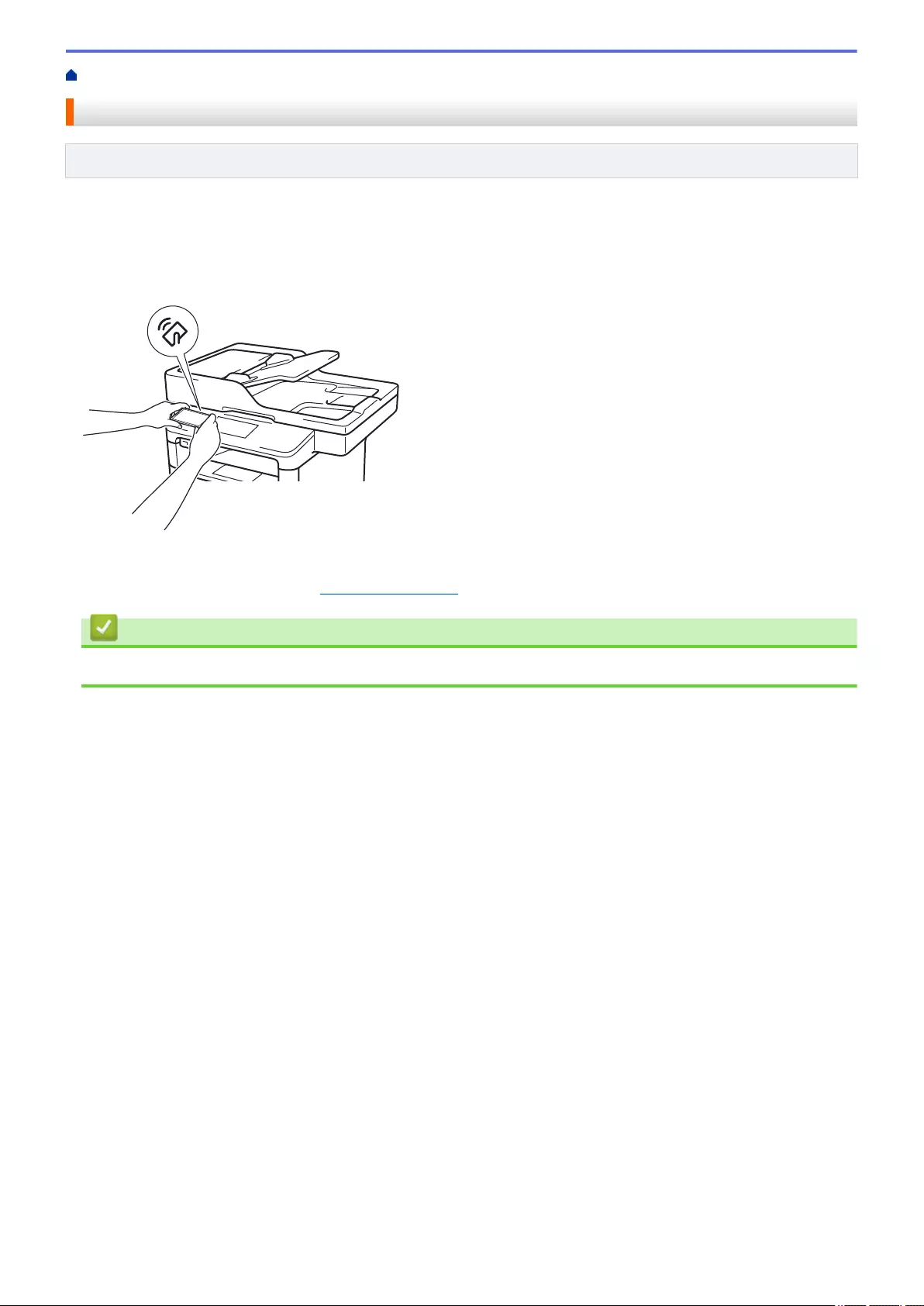
Home > Mobile/Web Connect > Print and Scan Using Near-Field Communication (NFC)
Print and Scan Using Near-Field Communication (NFC)
Related Models: MFC-L6900DW
Near-Field Communication (NFC) allows for simple transactions, data exchange, and wireless connections
between two devices that are in close range of each other.
If your Android™ device is NFC-enabled, you can print data (photos, PDF files, text files, web pages and email
messages) from the device or scan photos and documents to the device by touching it to the NFC logo on the
left side of your machine's control panel.
You must download and install Brother iPrint&Scan on your Android™ device to use this feature. For more
detailed information, see the Mobile Print/Scan Guide for Brother iPrint&Scan. Go to your model's Manuals page
on the Brother Solutions Center at support.brother.com.
Related Information
•Mobile/Web Connect
502
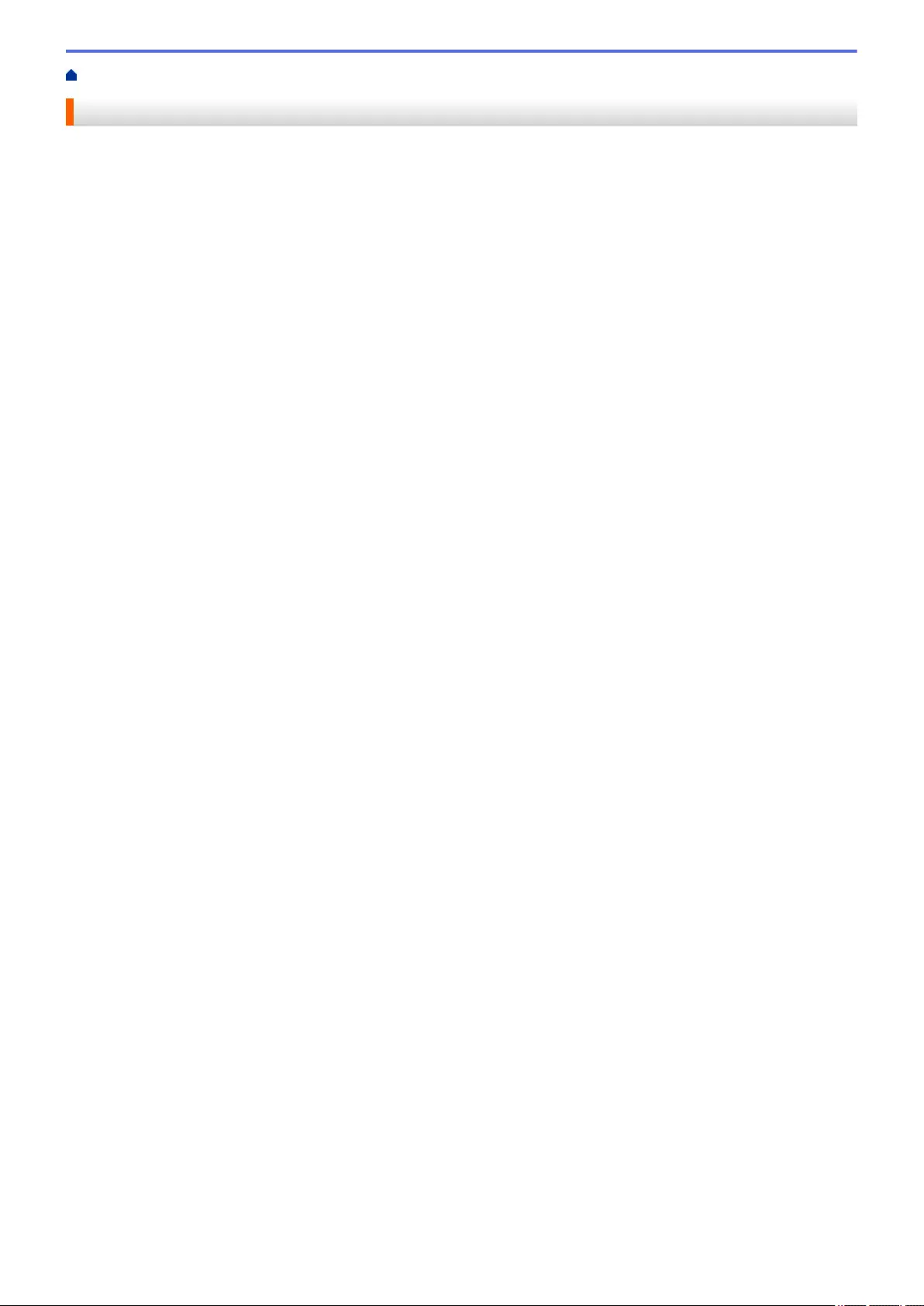
Home > ControlCenter > ControlCenter4 (Windows)
ControlCenter4 (Windows)
•Change the Operation Mode in ControlCenter4 (Windows)
•Scan Using ControlCenter4 Home Mode (Windows)
•Scan Using ControlCenter4 Advanced Mode (Windows)
•Set Up the Brother Machine Using ControlCenter4 (Windows)
•Create a Custom Tab Using ControlCenter4 Advanced Mode (Windows)
504
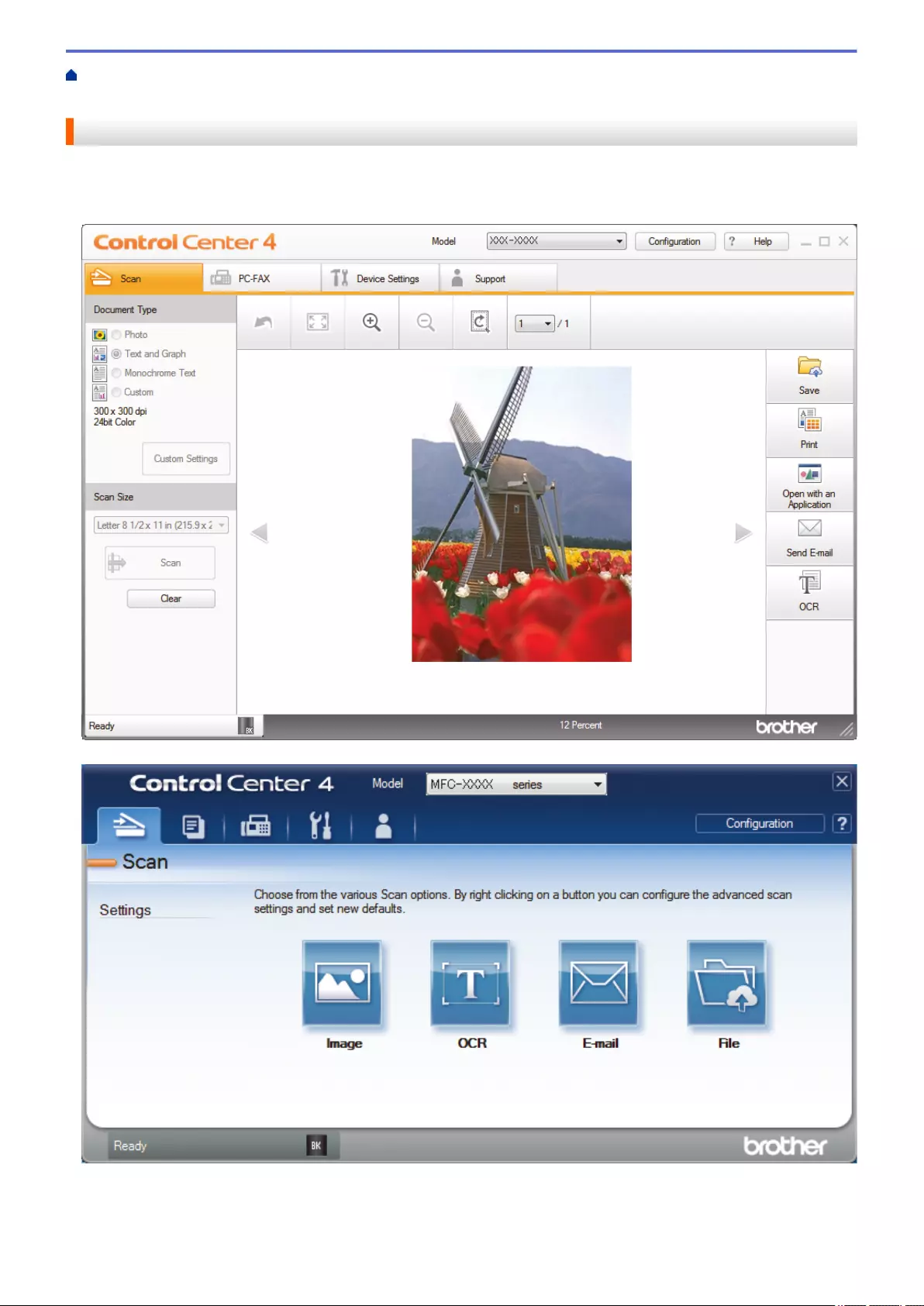
Home > ControlCenter > ControlCenter4 (Windows) > Change the Operation Mode in ControlCenter4
(Windows)
Change the Operation Mode in ControlCenter4 (Windows)
ControlCenter4 has two operation modes: Home Mode and Advanced Mode. You can change modes at any
time.
Home Mode
Advanced Mode
•Home Mode
ControlCenter4 Home Mode lets you access your machine's main features easily.
•Advanced Mode
505
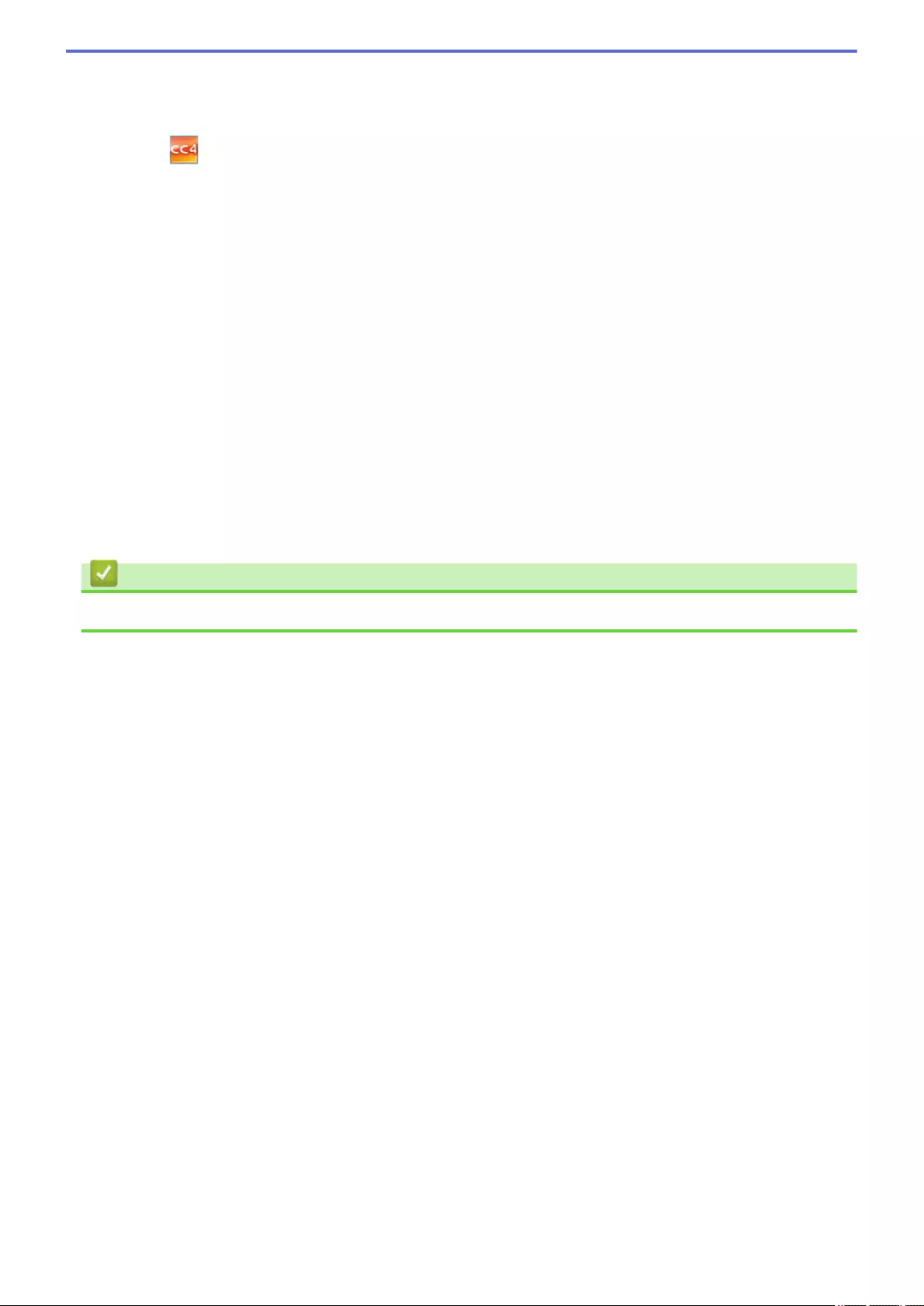
ControlCenter4 Advanced Mode gives you more control over the details of your machine's features and
allows you to customize one-button scan actions.
To change operation mode:
1. Click the (ControlCenter4) icon in the task tray, and then select Open.
2. Click the Configuration button, and then select Mode Select.
3. The mode selection dialog box appears. Select either the Home Mode or Advanced Mode option.
4. Click OK.
Related Information
•ControlCenter4 (Windows)
506

Home > ControlCenter > ControlCenter4 (Windows) > Scan Using ControlCenter4 Home Mode (Windows)
Scan Using ControlCenter4 Home Mode (Windows)
Use ControlCenter4 Home Mode to access your machine's main features.
•Scan Using ControlCenter4 Home Mode (Windows)
•Save Scanned Data to a Folder as a PDF File Using ControlCenter4 Home Mode
(Windows)
•Scan Both Sides of a Document Automatically Using ControlCenter4 Home Mode
(Windows)
•Scan Settings for ControlCenter4 Home Mode (Windows)
507
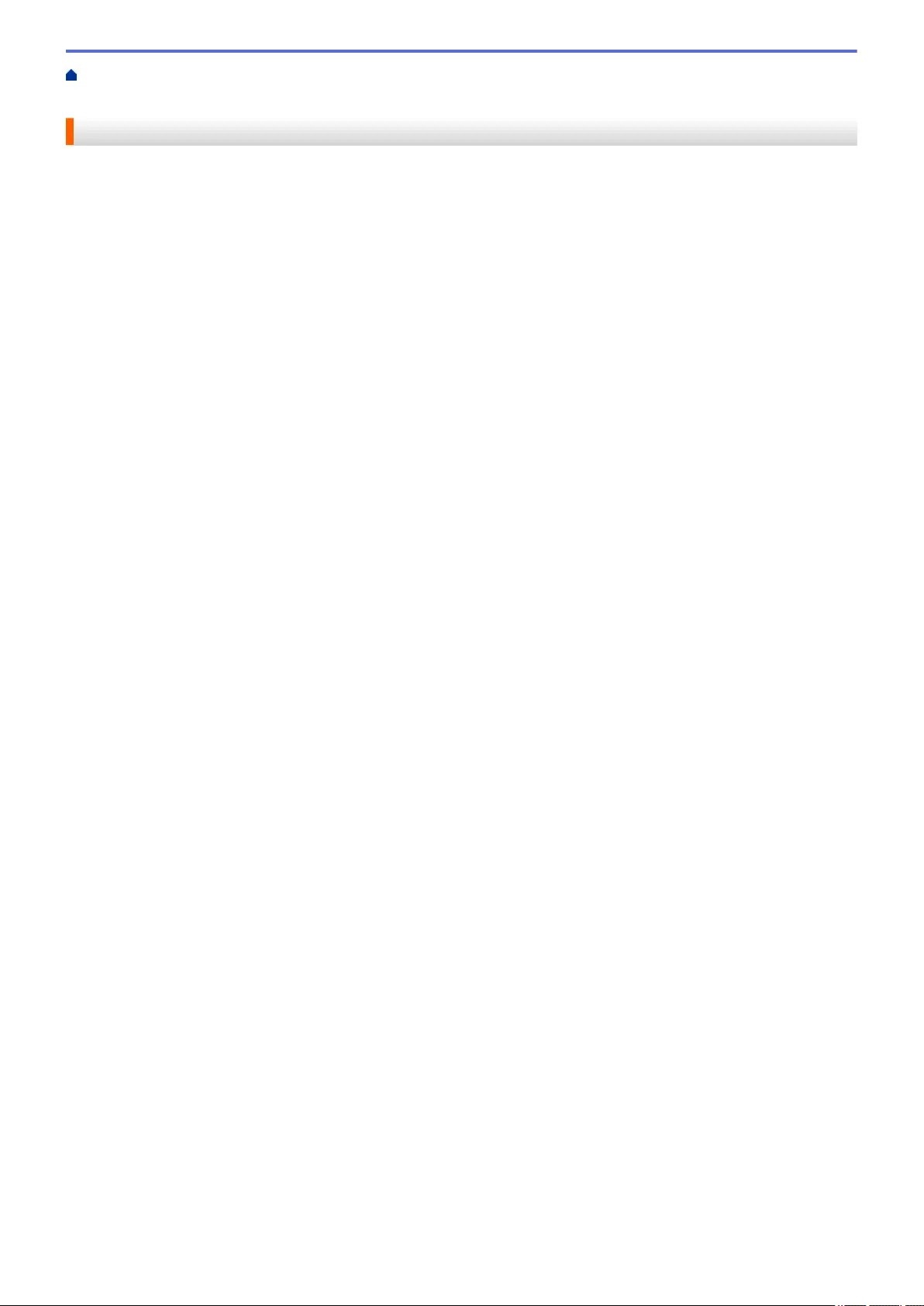
Home > ControlCenter > ControlCenter4 (Windows) > Scan Using ControlCenter4 Advanced Mode
(Windows)
Scan Using ControlCenter4 Advanced Mode (Windows)
ControlCenter4 Advanced Mode gives you more control over the details of your machine's features and allows
you to customize one-button scan actions.
•Scan Photos and Graphics Using ControlCenter4 Advanced Mode (Windows)
•Save Scanned Data to a Folder as a PDF File Using ControlCenter4 Advanced Mode
(Windows)
•Scan Both Sides of a Document Automatically Using ControlCenter4 Advanced Mode
(Windows)
•Scan Both Sides of an ID Card Using ControlCenter4 Advanced Mode (Windows)
•Scan to Email Attachment Using ControlCenter4 Advanced Mode (Windows)
•Scan to an Editable Text File (OCR) Using ControlCenter4 Advanced Mode (Windows)
•Scan Settings for ControlCenter4 Advanced Mode (Windows)
508

Home > ControlCenter > ControlCenter4 (Windows) > Set Up the Brother Machine Using ControlCenter4
(Windows)
Set Up the Brother Machine Using ControlCenter4 (Windows)
If Secure Function Lock is set to On, you cannot use Remote Setup.
1. Click the (ControlCenter4) icon in the task tray, and then click Open.
2. Click the Device Settings tab.
3. Click the Remote Setup button.
4. Configure the settings as needed.
Export
Click to save the current configuration settings to a file.
Click Export to save your address book or all settings for your machine.
Import
Click to import a file and read its settings.
509
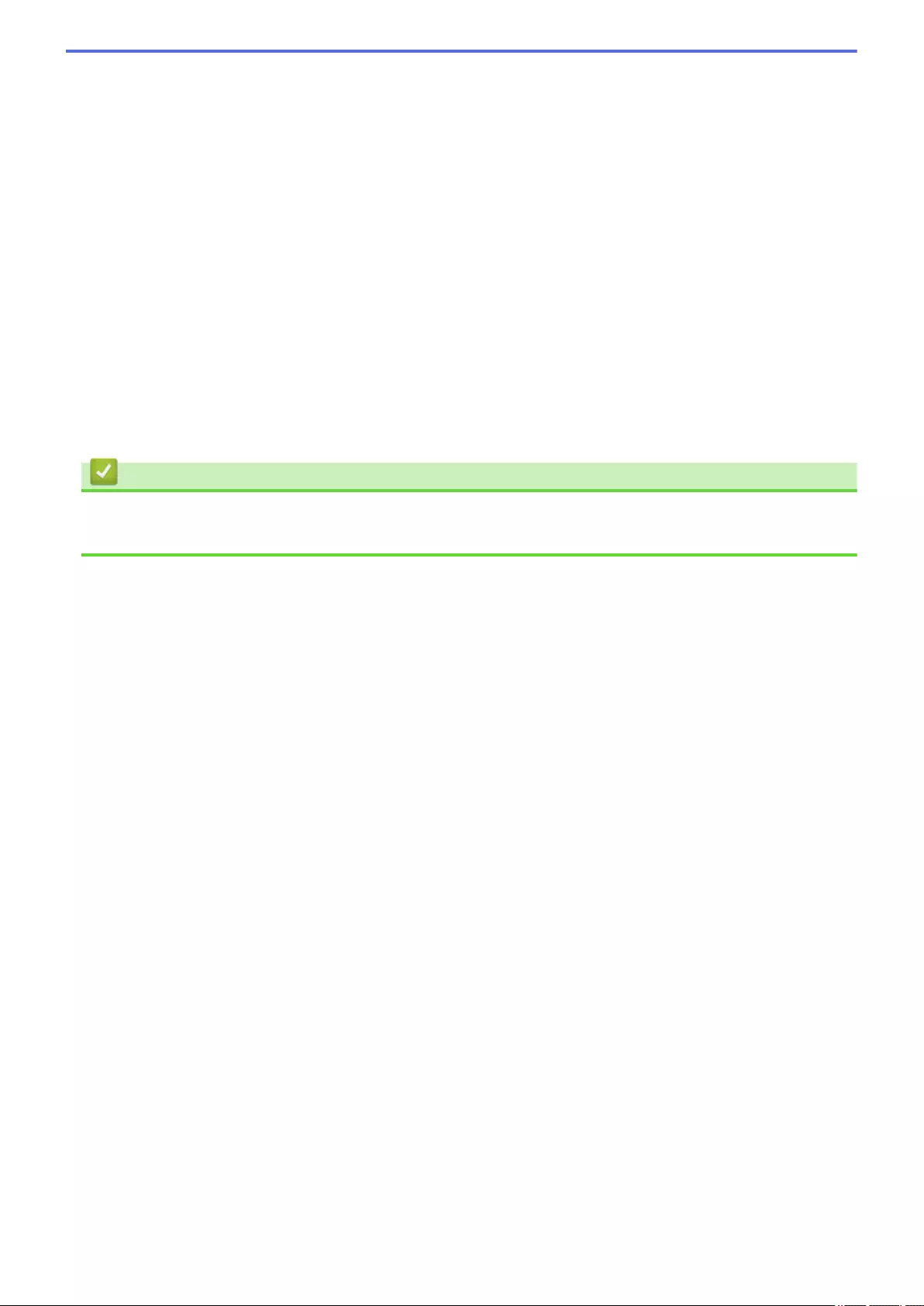
Print
Click to print the selected items on the machine. You cannot print the data until it is uploaded to the
machine. Click Apply to upload the new data to the machine, and then click Print.
OK
Click to start uploading data to the machine, and then exit the Remote Setup Program. If an error message
appears, confirm that your data is correct, and then click OK.
Cancel
Click to exit the Remote Setup Program without uploading data to the machine.
Apply
Click to upload data to the machine without exiting the Remote Setup Program.
5. Click OK.
• If your computer is protected by a firewall and is unable to use Remote Setup, you may need to configure the
firewall settings to allow communication through port numbers 137 and 161.
• If you are using Windows Firewall and you installed the Brother software and drivers from the CD-ROM, the
necessary firewall settings have already been set.
Related Information
•ControlCenter4 (Windows)
•Remote Setup (Windows)
510

Home > ControlCenter > ControlCenter4 (Windows) > Create a Custom Tab Using ControlCenter4
Advanced Mode (Windows)
Create a Custom Tab Using ControlCenter4 Advanced Mode (Windows)
You can create up to three customized tabs, each including up to five customized buttons, with your preferred
settings.
Select Advanced Mode as the mode setting for ControlCenter4.
1. Click the (ControlCenter4) icon in the task tray, and then click Open.
2. Click the Configuration button, and then select Create custom tab.
A custom tab is created.
3. To change the name of a custom tab, right-click the custom tab, and then select Rename custom tab.
4. Click the Configuration button, select Create custom button, and then select the button you want to create.
The settings dialog box appears.
5. Type the button name, and then change the settings, if needed. Click OK.
The setting options vary depending on the button you select.
You can change or remove the created tab, button, or settings. Click the Configuration button, and then
follow the menu.
511
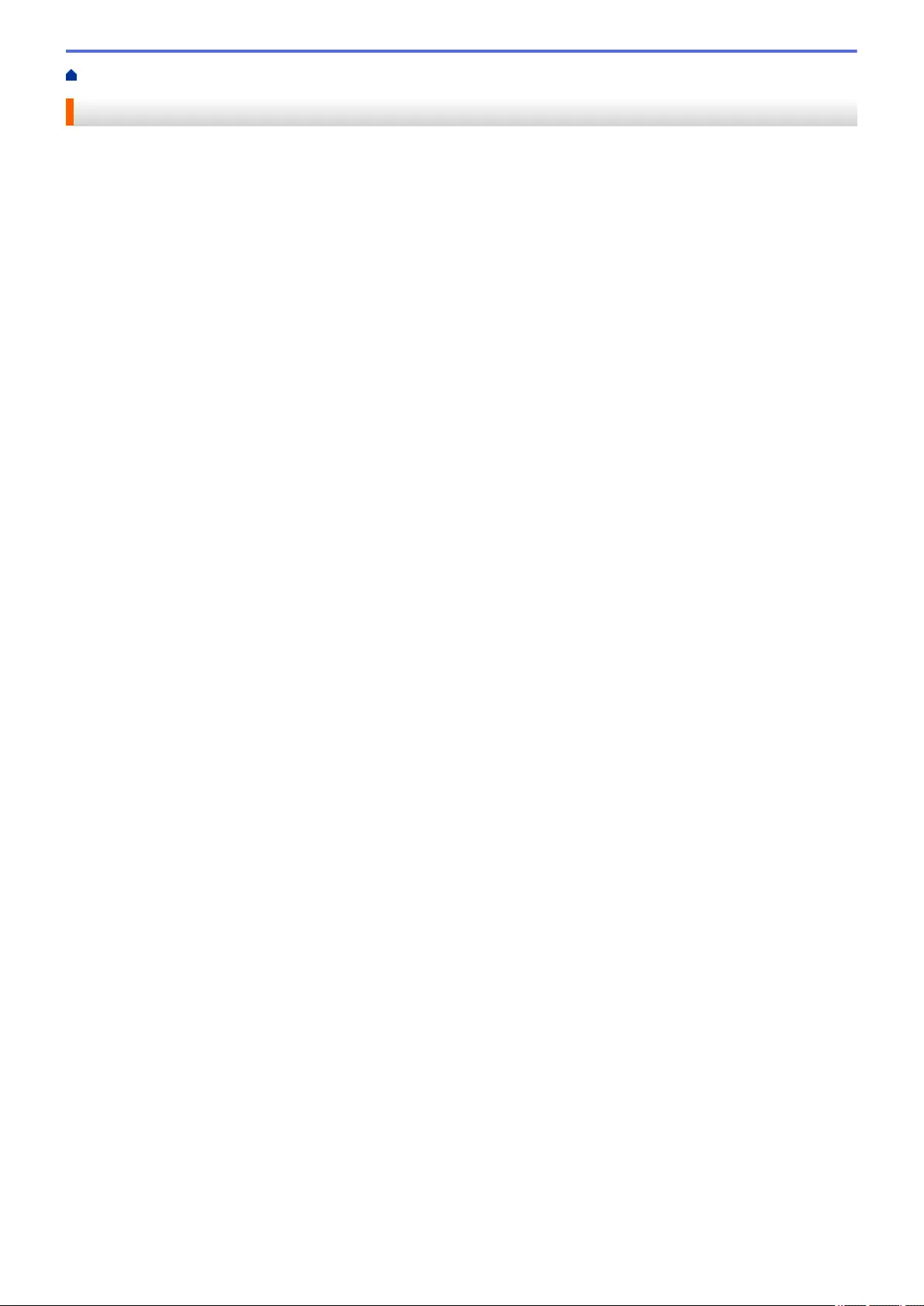
Home > ControlCenter > ControlCenter2 (Mac) > Scan Using ControlCenter2 (Mac)
Scan Using ControlCenter2 (Mac)
Use Brother's ControlCenter software to scan photos and save them as JPEGs, PDFs, or other file formats.
•Scan Using ControlCenter2 (Mac)
•Save Scanned Data to a Folder as a PDF File Using ControlCenter2 (Mac)
•Scan Both Sides of a Document Automatically Using ControlCenter2 (Mac)
•Scan Both Sides of an ID Card Using ControlCenter2 (Mac)
•Scan to Email Attachment Using ControlCenter2 (Mac)
•Scan to an Editable Text File (OCR) Using ControlCenter2 (Mac)
514
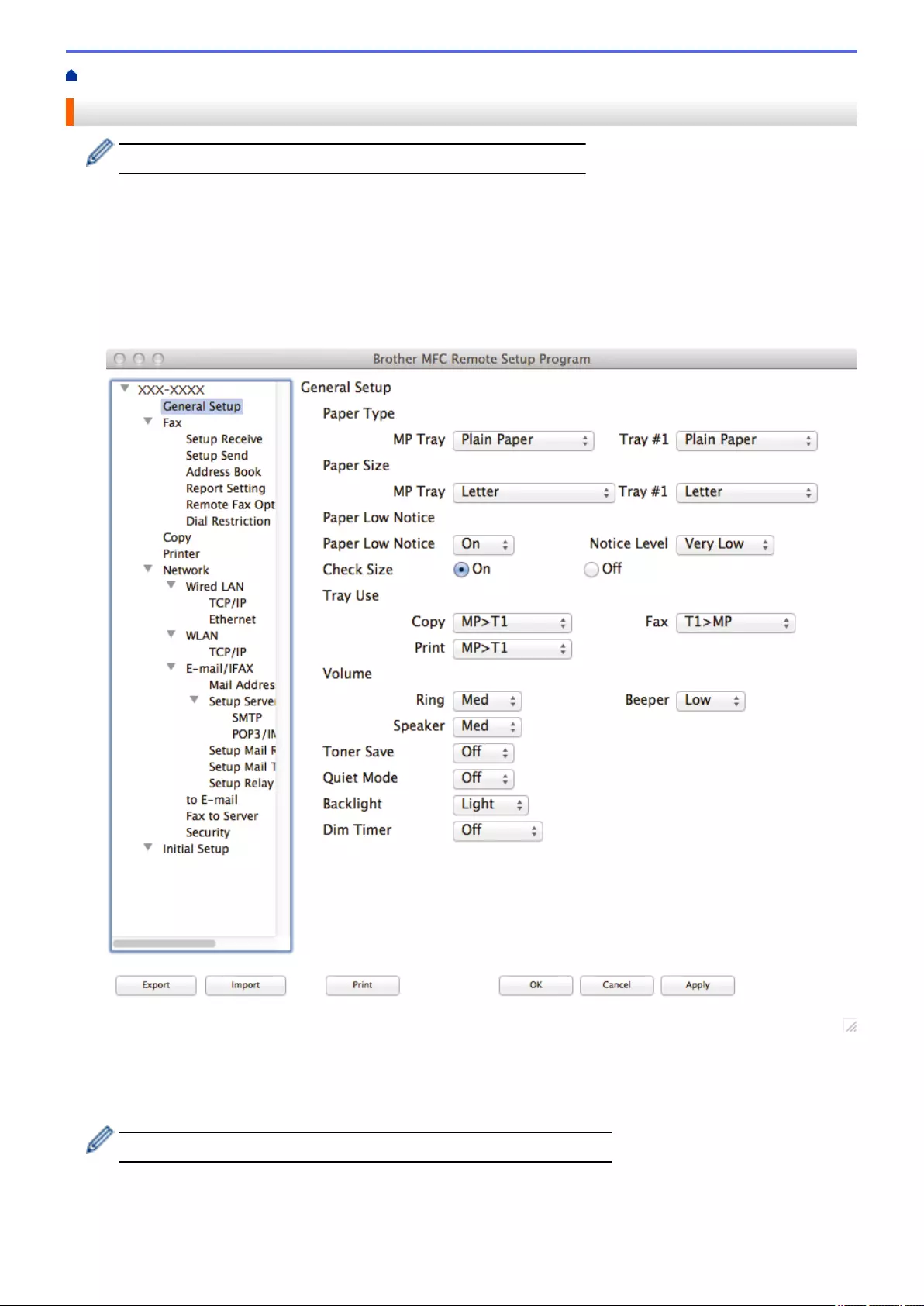
Home > ControlCenter > ControlCenter2 (Mac) > Set Up the Brother Machine Using ControlCenter2 (Mac)
Set Up the Brother Machine Using ControlCenter2 (Mac)
If Secure Function Lock is set to On, you cannot use Remote Setup.
1. In the Finder menu bar, click Go > Applications > Brother, and then double-click the
(ControlCenter) icon.
The ControlCenter2 screen appears.
2. Click the DEVICE SETTINGS tab.
3. Click the Remote Setup button.
The Remote Setup Program screen appears.
4. Configure the settings as needed.
Export
Click to save the current configuration settings to a file.
Click Export to save your address book or all settings for your machine.
Import
Click to import a file and read its settings.
515
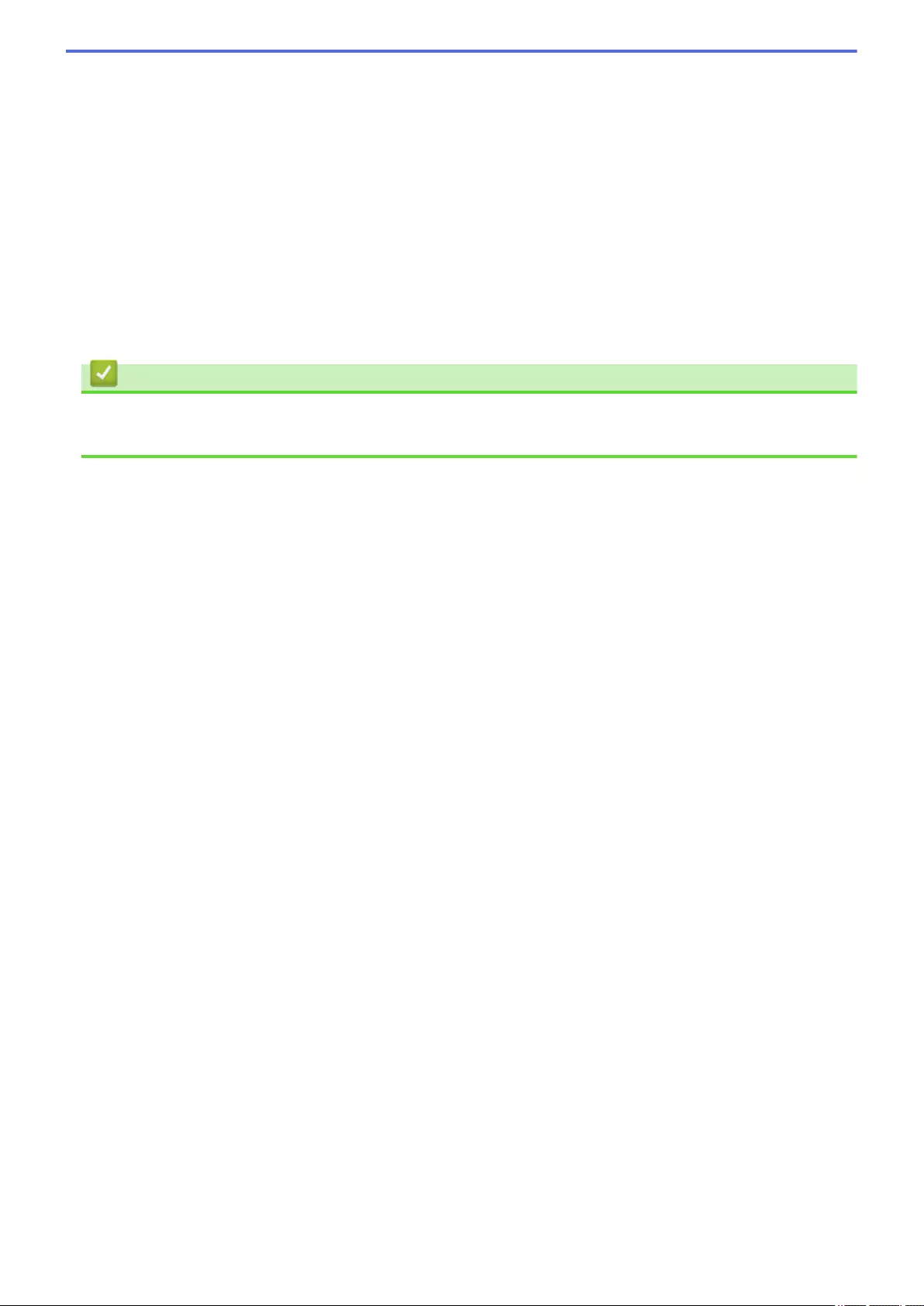
Print
Click to print the selected items on the machine. You cannot print the data until it is uploaded to the
machine. Click Apply to upload the new data to the machine, and then click Print.
OK
Click to start uploading data to the machine, and then exit the Remote Setup Program. If an error message
appears, enter the correct data again, and then click OK.
Cancel
Click to exit the Remote Setup Program without uploading data to the machine.
Apply
Click to upload data to the machine without exiting the Remote Setup Program.
5. When finished, click OK.
Related Information
•ControlCenter2 (Mac)
•Remote Setup (Mac)
516
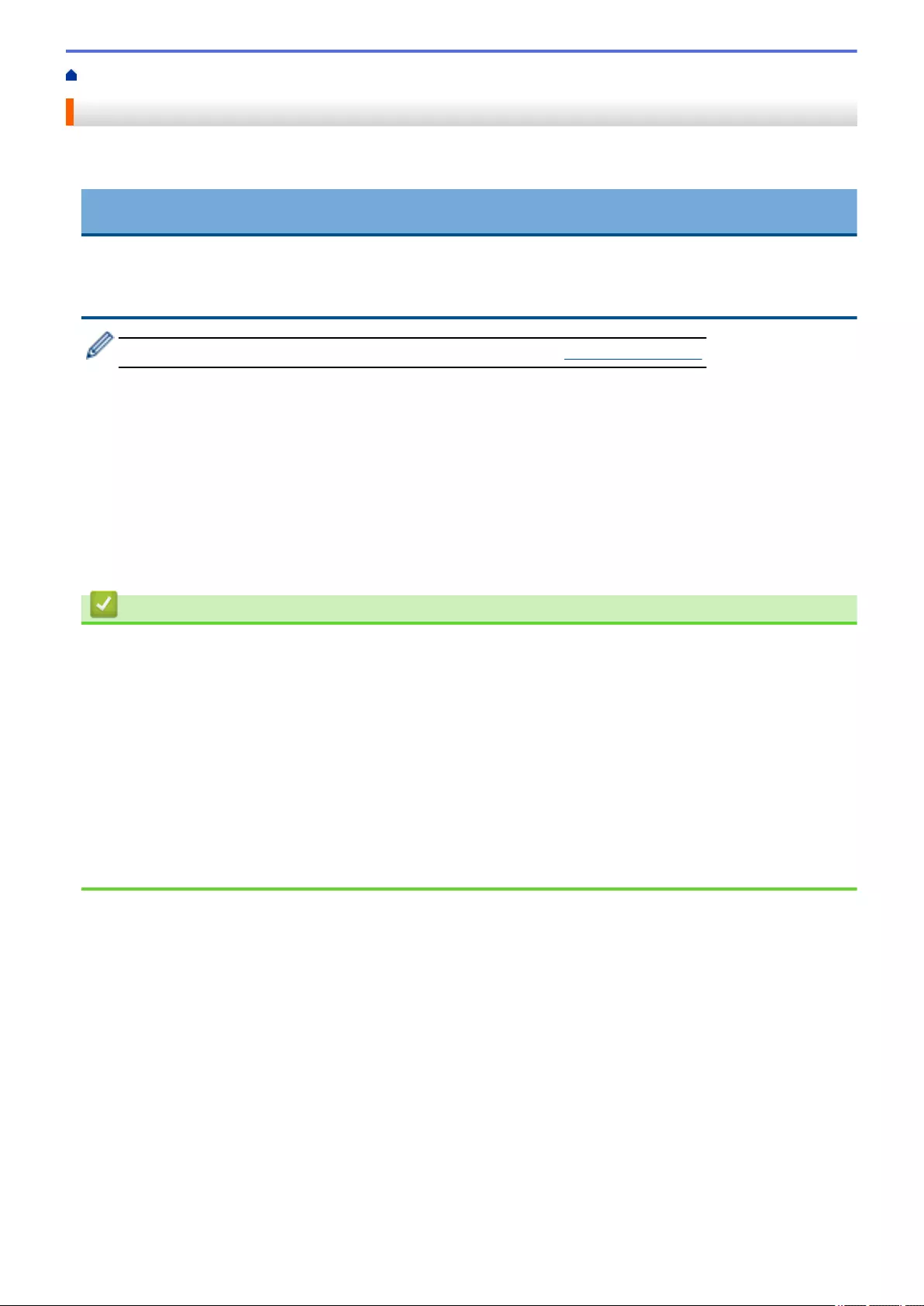
Home > Troubleshooting
Troubleshooting
Use this section to resolve typical problems you may encounter when using your Brother machine. You can
correct most problems yourself.
IMPORTANT
For technical help, you must call the country where you bought the machine. Calls must be made from within
that country.
Using non-Brother supplies may affect the print quality, hardware performance, and machine reliability.
If you need additional help, go to the Brother Solutions Center at support.brother.com.
First, check the following:
• The machine's power cord is connected correctly and the machine's power is on. See the Quick Setup Guide.
• All of the protective materials have been removed. See the Quick Setup Guide.
• Paper is loaded correctly in the paper tray.
• The interface cables are securely connected to the machine and the computer, or the wireless connection is
set up on both the machine and your computer.
• Error and maintenance messages
If you did not solve the problem with the checks, identify the problem and then see Related Information.
Related Information
•Error and Maintenance Messages
•Document Jams
•Paper Jams
•Printing Problems
•Improve the Print Quality
•Telephone and Fax Problems
•Network Problems
•Other Problems
•Check the Machine Information
•Reset Your Brother Machine
517
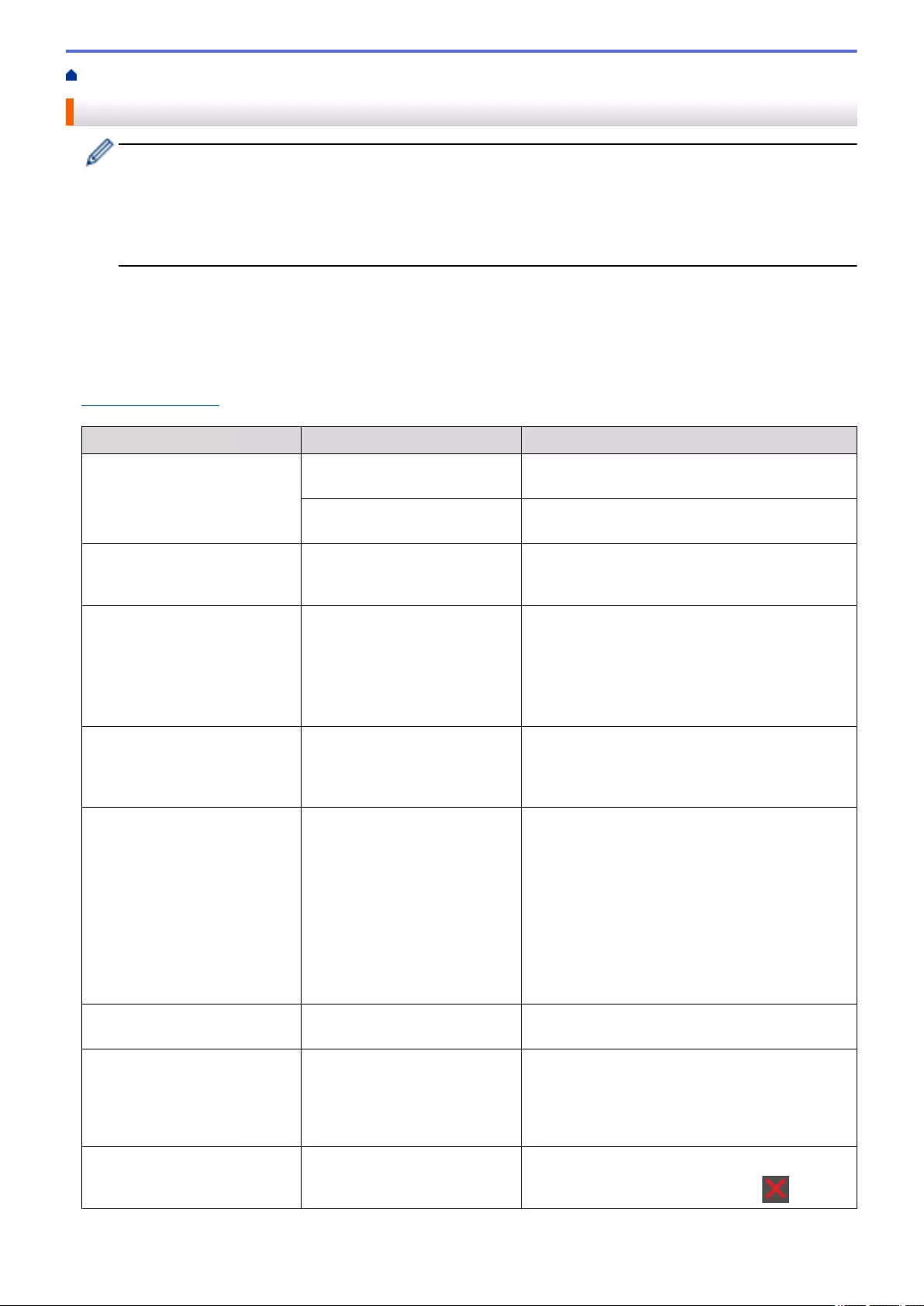
Home > Troubleshooting > Error and Maintenance Messages
Error and Maintenance Messages
(MFC-L6900DW)
If the LCD displays errors and your Android™ device supports the NFC feature, touch your device to the
NFC logo on your Brother machine to access the Brother Solutions Center and browse the latest FAQs
from your device. (Your mobile telephone provider's message and data rates may apply.)
Make sure the NFC settings of both your Brother machine and your Android™ device are set to On.
As with any sophisticated office product, errors may occur and supply items may have to be replaced. If this
happens, your machine identifies the error or required routine maintenance and shows the appropriate message.
The most common error and maintenance messages are shown in the table.
Follow the instructions in the Action column to solve the error and remove the message.
You can correct most errors and perform routine maintenance by yourself. If you need more tips: Visit
support.brother.com, and click FAQs & Troubleshooting.
Error Message Cause Action
2-sided Disabled The back cover of the machine
is not closed completely.
Close the back cover of the machine until it locks
in the closed position.
The 2-sided tray is not installed
completely.
Install the 2-sided tray firmly in the machine.
Access Denied The function you want to use is
restricted by Secure Function
Lock 3.0.
Call your administrator to check your Secure
Function Lock Settings.
Cartridge Error The toner cartridge is not
installed correctly.
Remove the toner cartridge and drum unit
assembly. Take out the toner cartridge, and put it
back in the drum unit again. Reinstall the toner
cartridge and drum unit assembly in the machine.
If the problem continues, contact Brother
Customer Service or your local Brother dealer.
Comm.Error Poor telephone line quality
caused a communication error.
Send the fax again or connect the machine to
another telephone line. If the problem continues,
contact the telephone company and ask them to
check your telephone line.
Cooling Down The temperature of the inside of
the machine is too hot. The
machine will pause its current
print job and go into cooling
down mode.
Make sure you can hear the fan in the machine
spinning and that the exhaust outlet is not
blocked.
If the fan is spinning, remove any obstacles that
surround the exhaust outlet, and then leave the
machine turned on but do not use it for several
minutes.
If the fan is not spinning, disconnect the machine
from the power for several minutes, then
reconnect it.
Cover is Open The front cover is not
completely closed.
Open and then firmly close the front cover of the
machine.
Cover is Open. The fuser cover is not
completely closed or paper was
jammed in the back of the
machine when you turned on
the power.
Close the fuser cover located inside the back
cover of the machine.
Make sure paper is not jammed inside the back of
the machine, and then close the fuser cover.
Cover is Open. The ADF cover is not
completely closed.
Close the ADF cover.
If the error message remains, press .
518
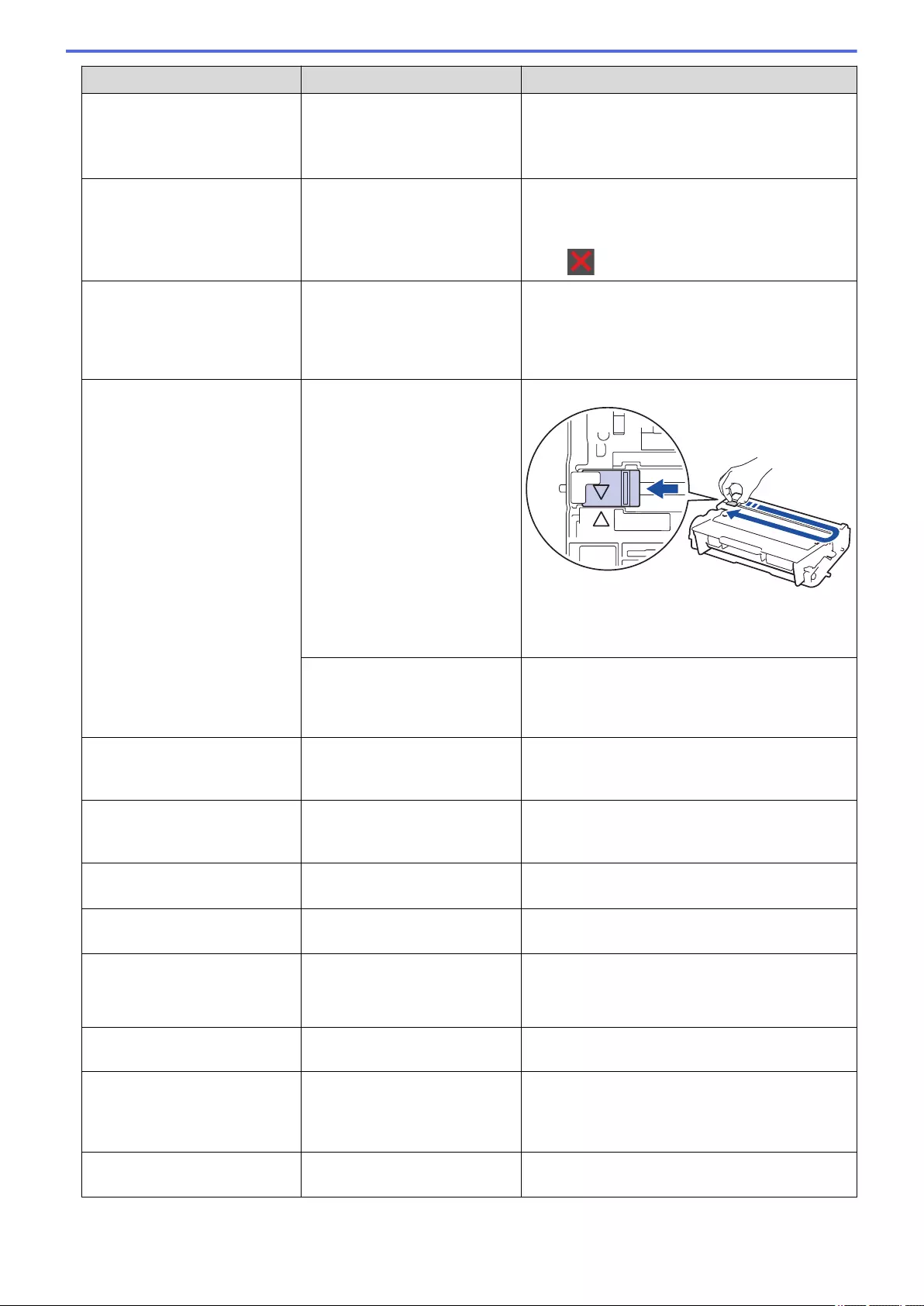
Error Message Cause Action
Disconnected The other person or other
person's fax machine stopped
the call.
Try to send or receive again.
If calls are stopped repeatedly and you are using
a VoIP (Voice over IP) system, try changing the
Compatibility to Basic (for VoIP).
Document Jam The document was not inserted
or fed correctly, or the
document scanned from the
ADF was too long.
Remove the jammed paper from the ADF unit.
Clear any debris or scraps of paper from the ADF
unit paper path.
Press .
DR Mode in Use The machine is set to
Distinctive Ring mode. You
cannot change the Receive
Mode from Manual to another
mode.
Set Distinctive Ring to Off.
Drum ! The corona wire on the drum
unit must be cleaned.
Clean the corona wire on the drum unit.
See Related Information: Clean the Corona Wire.
If the problem continues, replace the drum unit
with a new one.
The drum unit or the toner
cartridge and drum unit
assembly is not installed
correctly.
Remove the drum unit, remove the toner cartridge
from the drum unit, and put the toner cartridge
back into the drum unit. Reinstall the drum unit in
the machine.
Jam 2-sided The paper is jammed in the 2-
sided tray or inside the back
cover.
Remove the 2-sided tray and open the back cover
to pull out all jammed paper.
Jam Inside The paper is jammed inside the
machine.
Open the front cover, remove the toner cartridge
and drum unit assembly, and pull out all jammed
paper. Close the front cover.
Jam MP Tray The paper is jammed in the MP
tray.
Remove all jammed paper from in and around the
MP tray. Press Retry.
Jam Rear The paper is jammed in the
back of the machine.
Open the fuser cover and remove all jammed
paper. Close the fuser cover.
Jam Tray 1
Jam Tray 2
Jam Tray 3
The paper is jammed in the
indicated paper tray.
Pull out the paper tray and remove all jammed
paper as shown in the animation on the LCD.
Limit Exceeded The print limit set in Secure
Function Lock 3.0 was reached.
Call your administrator to check your Secure
Function Lock Settings.
Media Type Mismatch The media type specified in the
printer driver differs from the
paper type specified in the
machine's menu.
Load the correct type of paper in the tray
indicated on the LCD, and then select the correct
media type in the Paper Type setting on the
machine.
No Drum Unit The drum unit is not installed
correctly.
Reinstall the toner cartridge and drum unit
assembly.
519
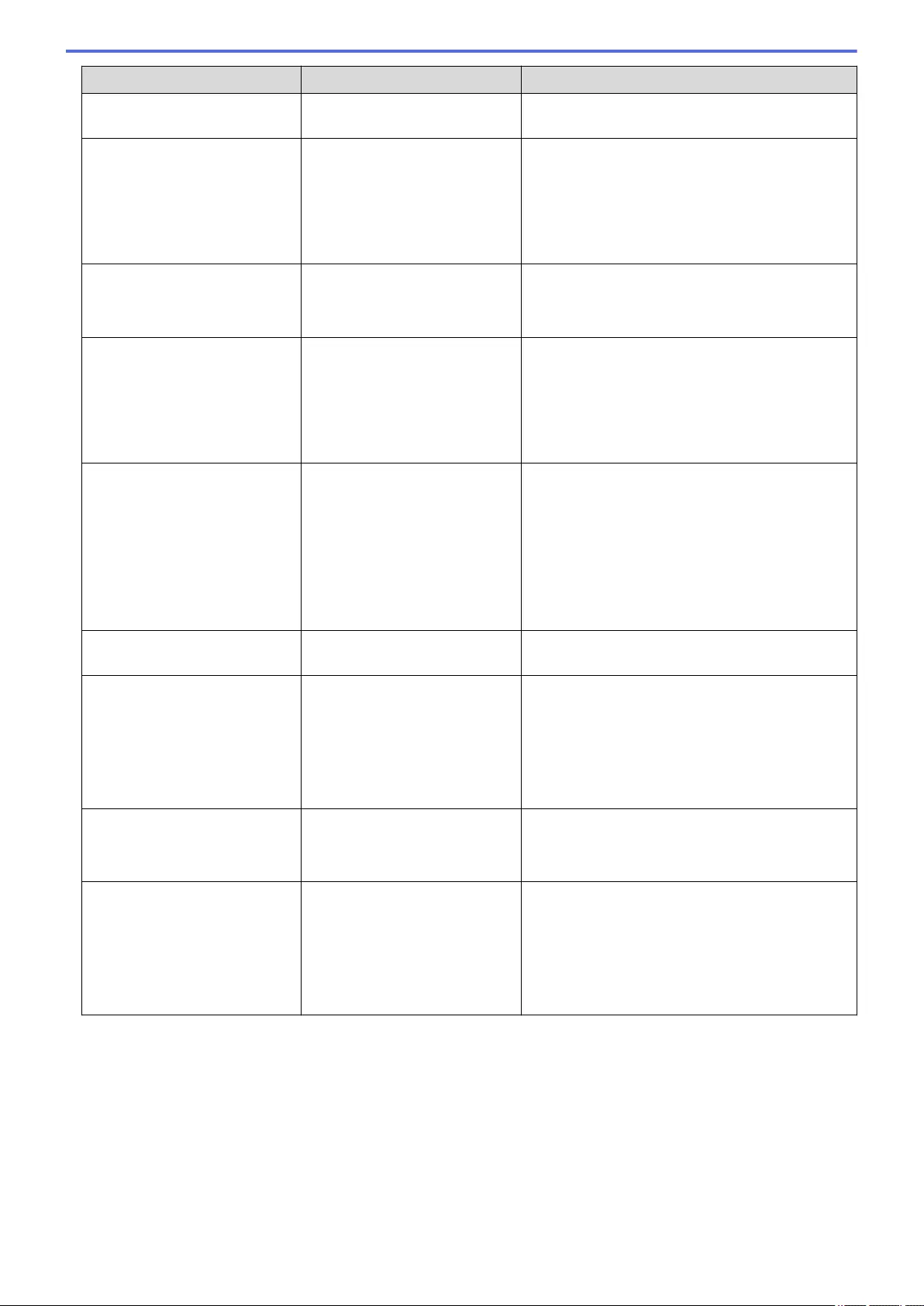
Error Message Cause Action
No HUB Support A USB hub device is connected
to the USB direct interface.
Disconnect the USB hub device from the USB
direct interface.
No Paper The machine is out of paper, or
paper is not loaded correctly in
the paper tray.
• Refill paper in the paper tray. Make sure the
paper guides are set to the correct size.
• If paper is in the tray, remove it and load it
again. Make sure the paper guides are set to
the correct size.
• Do not overfill the paper tray.
No Paper Fed T1
No Paper Fed T2
No Paper Fed T3
The machine failed to feed
paper from the indicated paper
tray.
Pull out the paper tray indicated on the LCD and
remove all jammed paper.
No Paper MP The MP tray is out of paper, or
paper is not loaded correctly in
the MP tray.
Do one of the following:
• Refill paper in the MP tray. Make sure the
paper guides are set to the correct size.
• If paper is in the tray, remove it and load it
again. Make sure the paper guides are set to
the correct size.
No Paper
No Paper T1
No Paper T2
No Paper T3
The machine failed to feed
paper from the indicated paper
tray.
Do one of the following:
• Refill paper in the paper tray indicated on the
LCD. Make sure the paper guides are set to
the correct size.
• If paper is in the tray, remove it and load it
again. Make sure the paper guides are set to
the correct size.
Do not overfill the paper tray.
No Response/Busy The number you dialed does
not answer or is busy.
Verify the number and try again.
No Toner The toner cartridge or the toner
cartridge and drum unit
assembly is not installed
correctly.
Remove the toner cartridge and drum unit
assembly. Remove the toner cartridge from the
drum unit, and reinstall the toner cartridge back in
the drum unit. Reinstall the toner cartridge and
drum unit assembly back in the machine. If the
problem continues, replace the toner cartridge
with a new one.
No Tray T1
No Tray T2
No Tray T3
The paper tray is not installed
or not installed correctly.
Reinstall the paper tray indicated on the LCD.
Out of Fax Memory The machine's fax memory is
full.
If you are using Fax Preview function, delete
unwanted received fax data.
If you are using Memory Receive function and are
not using fax preview function, print received fax
data. To print fax data, press Settings >
All Settings > Fax > Print Fax.
520
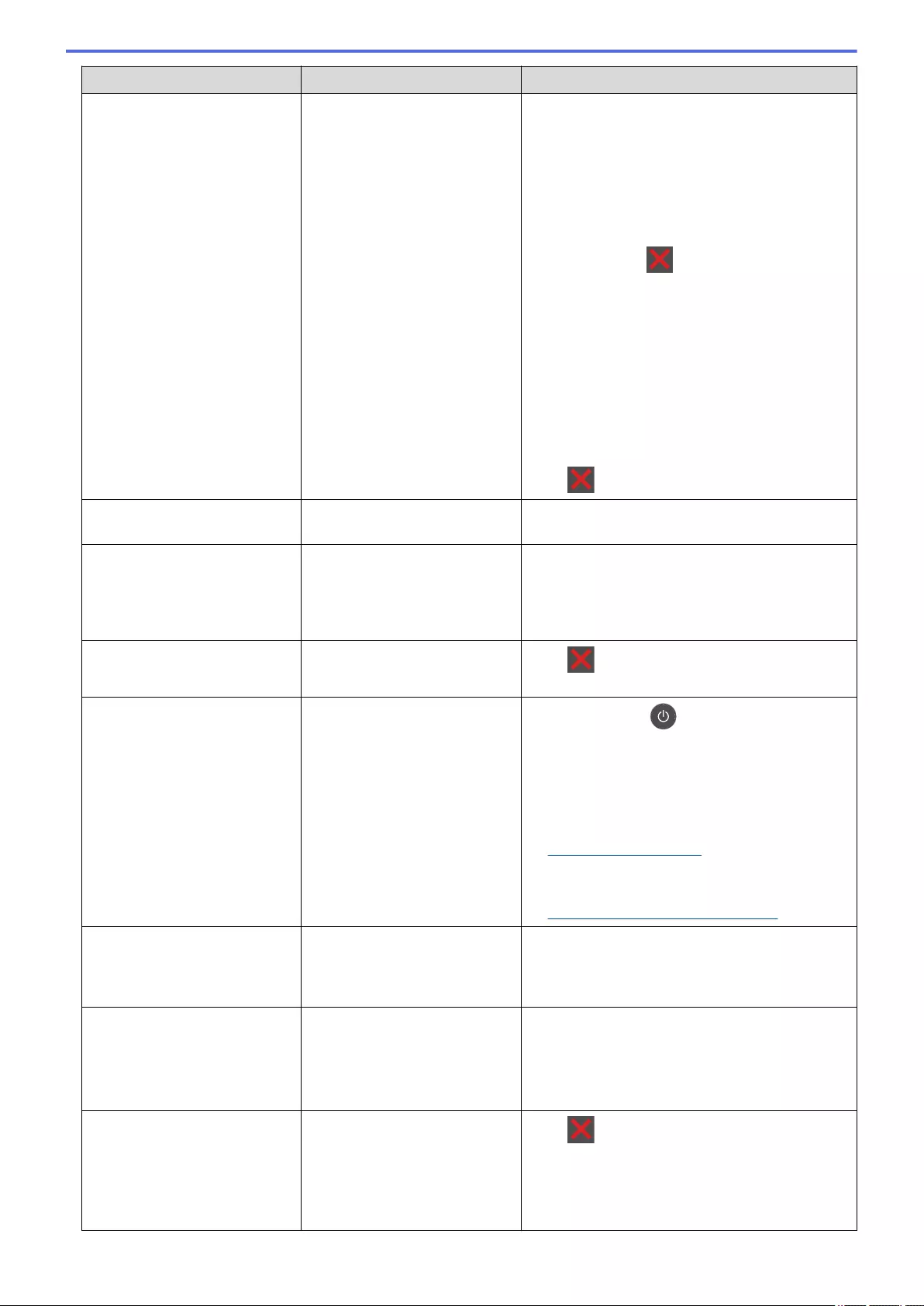
Error Message Cause Action
Out of Memory The machine's memory is full. If a fax-sending or copy operation is in
process
Do one of the following:
• Press Send Now to send the pages scanned
so far.
• Press Partial Print to copy the pages
scanned so far.
• Press Quit or and wait until the other
operations that are in progress finish, and then
try again.
If a scan operation is in process
• Split the document into multiple parts.
• Reduce the Resolution.
• Reduce the File Size.
• Select the high compression PDF file type.
• Clear faxes from the memory.
If a print operation is in process
Press and reduce the print resolution.
Output Tray Full The output paper tray is full. Remove printed paper from output tray indicated
on the LCD.
Paper Low
Paper Low T1
Paper Low T2
Paper Low T3
The paper tray is nearly empty. Refill the paper in the paper tray indicated on the
LCD.
Print Data Full The machine’s memory is full. Press and delete the previously stored
secure print data.
Print Unable ## The machine has a mechanical
problem. • Press and hold to turn off the machine,
wait a few minutes, and then turn it on again.
• If the problem continues, contact Brother
Customer Service.
Contact Brother Customer Service at:
1-877-BROTHER (1-877-276-8437) (in USA)
www.brother.ca/support (in Canada)
or to locate a Brother Authorized Service
Center, visit:
http://www.brother-usa.com/service
Received Fax ## An unprinted received fax is
waiting to print on the correct
size paper.
To print the received fax, load the correct size of
paper in the tray indicated on the LCD. Paper
sizes available for fax printing are Letter, Legal,
Folio, Mexico Legal, India Legal and A4.
Replace Toner The toner cartridge is at the end
of its life. The machine stops all
print operations.
While memory is available,
faxes are stored in the memory.
Replace the toner cartridge with a new one.
Scan Unable The document is too long for
2‑sided scanning. Press . For 2-sided scanning, use Letter,
Legal, or Folio size paper. Other paper must be
within the following size:
Length: 5.8 to 14.0 in. (147.3 to 355.6 mm)
Width: 4.1 to 8.5 in. (105 to 215.9 mm)
521
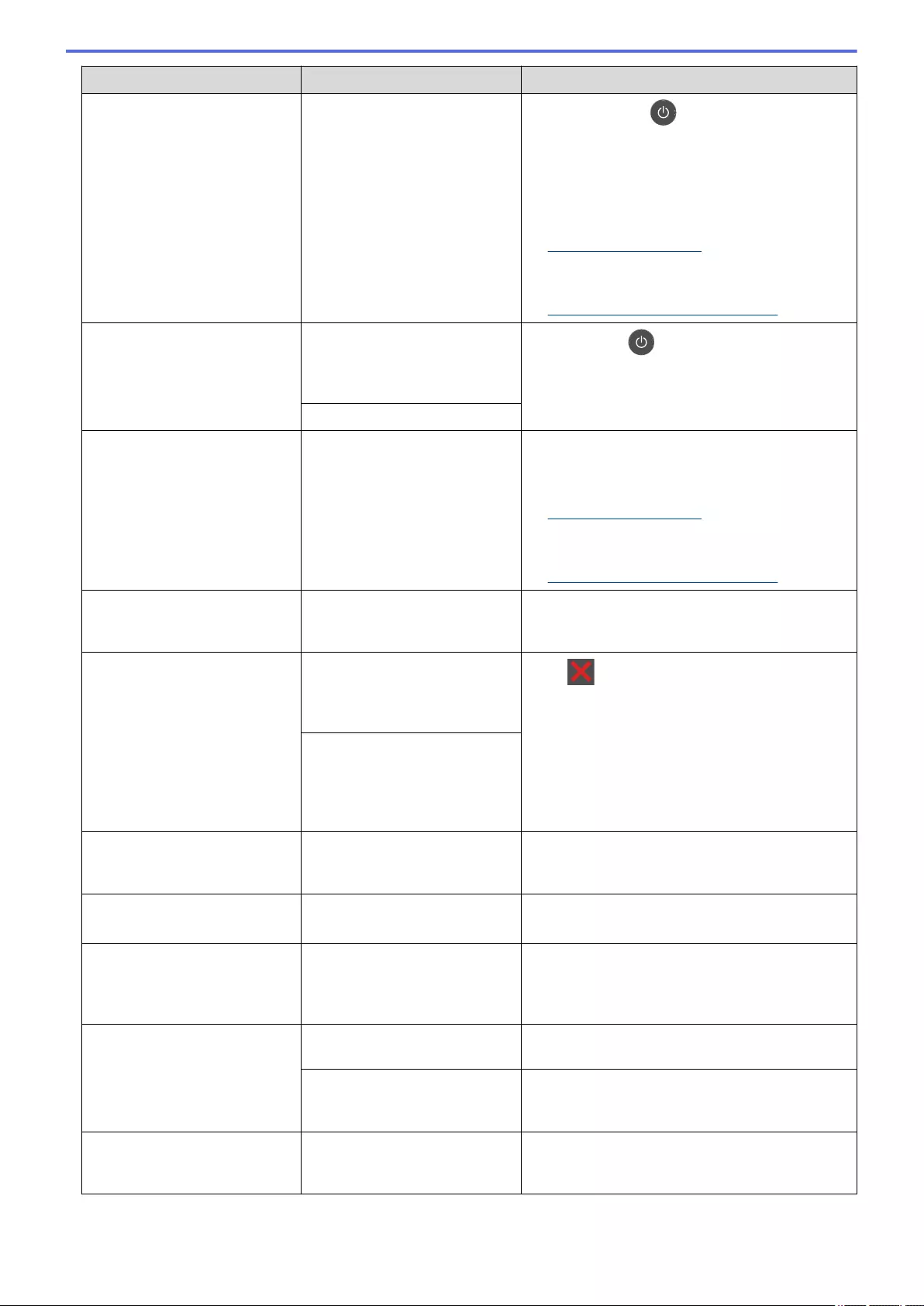
Error Message Cause Action
Scan Unable ## The machine has a mechanical
problem. • Press and hold to turn off the machine,
and then turn it on again.
• If the problem continues, contact Brother
Customer Service.
Contact Brother Customer Service at:
1-877-BROTHER (1-877-276-8437) (in USA)
www.brother.ca/support (in Canada)
or to locate a Brother Authorized Service
Center, visit:
http://www.brother-usa.com/service
Self-Diagnostic The temperature of the fuser
unit does not rise to a specified
temperature within the specified
time.
Press and hold to turn off the machine, wait a
few seconds, and then turn it on again. Leave the
machine idle for 15 minutes with the power on.
The fuser unit is too hot.
Service Error ## Machine's firmware has a
problem.
• Contact Brother Customer Service.
Contact Brother Customer Service at:
1-877-BROTHER (1-877-276-8437) (in USA)
www.brother.ca/support (in Canada)
or to locate a Brother Authorized Service
Center, visit:
http://www.brother-usa.com/service
Size Error The paper size defined in the
printer driver is not supported
by the defined tray.
Choose a paper size supported by the defined
tray.
Size Error 2-sided The paper size specified in the
machine's paper size setting is
not available for automatic 2-
sided printing.
Press (if required).
Load the correct size of paper in the tray and set
the tray for that paper size.
Choose a paper size supported by 2-sided
printing.
Paper sizes available for automatic 2-sided
printing are Letter, Legal, Mexico Legal, India
Legal and Folio.
The paper in the tray is not the
correct size and is not available
for automatic 2-sided printing.
Size Mismatch The paper in the tray is not the
correct size.
Load the correct size of paper in the tray
indicated on the LCD and set the size of paper for
the tray.
Supplies
Drum End Soon
The drum unit is near the end of
its life.
Order a new drum unit before the LCD displays
Replace Drum.
Supplies
Prepare New Toner
Cartridge.
If the LCD displays this
message, you can still print.
The toner cartridge is near the
end of its life.
Order a new toner cartridge now so a
replacement toner cartridge is available when the
LCD displays Replace Toner.
Supplies
Replace Drum
It is time to replace the drum
unit.
Replace the drum unit with a new one.
The drum unit counter was not
reset when a new drum was
installed.
Reset the drum unit counter.
See the instructions included with the new drum
unit.
Too Many Trays The number of installed
Optional Trays exceeds the
maximum number.
Reduce the number of Optional Trays.
522
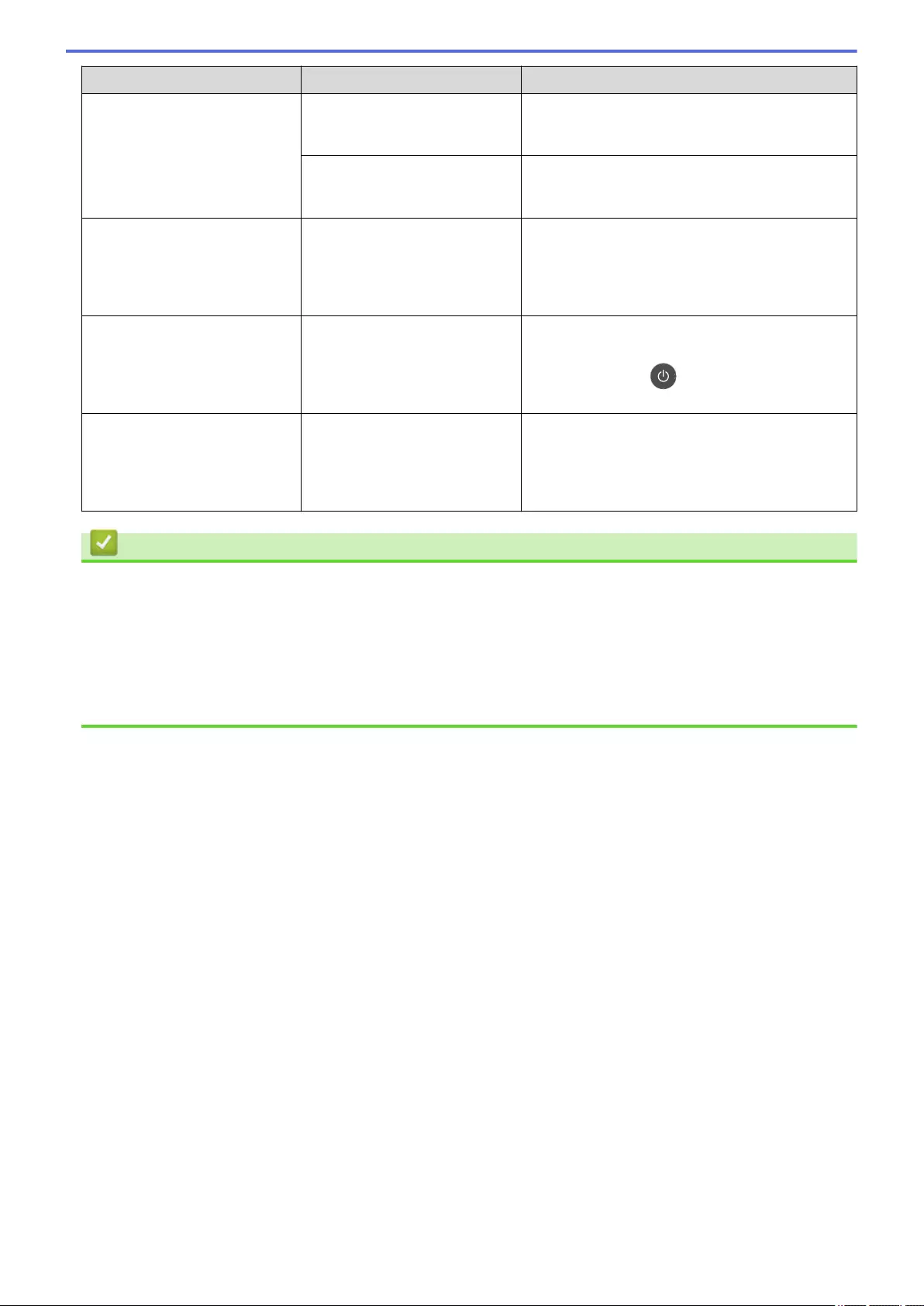
Error Message Cause Action
Touchscreen
Initialization Failed
The touchscreen was pressed
before the power on
initialization was completed.
Make sure nothing is touching the touchscreen.
Debris may be stuck between
the lower part of the
touchscreen and its frame.
Insert a piece of stiff paper between the lower part
of the touchscreen and its frame and slide it back
and forth to push out any debris.
Unusable Device A USB device or USB Flash
memory drive that is encrypted
or not supported has been
connected to the USB direct
interface.
Unplug the device from the USB direct interface.
Unusable Device
Remove the Device. Turn
the power off and back
on again.
A defective USB device or a
high power consumption USB
device has been connected to
the USB direct interface.
• Unplug the device from the USB direct
interface.
• Press and hold to turn off the machine,
and then turn it on again.
Wrong Paper Size MP
Wrong Paper Size T1
Wrong Paper Size T2
Wrong Paper Size T3
The specified tray ran out of
paper during copying and the
machine could not feed the
same size paper from the next
priority tray.
Refill the paper in the paper tray.
Related Information
•Troubleshooting
•Transfer Your Faxes or Fax Journal Report
•Replace Supplies
•Load and Print Using the Paper Tray
•Load and Print Using the Multi‑purpose Tray (MP Tray)
•Clean the Corona Wire
523

Home > Troubleshooting > Error and Maintenance Messages > Transfer Your Faxes or Fax Journal Report
Transfer Your Faxes or Fax Journal Report
If the LCD displays:
•[Print Unable] ##
•[Scan Unable] ##
We recommend transferring your faxes to another fax machine or to your computer.
You can also transfer the Fax Journal report to see if there are any faxes you must transfer.
If there is an error message on the LCD after you transfer the faxes, disconnect your Brother machine from
the power source for several minutes, and then reconnect it.
Related Information
•Error and Maintenance Messages
•Transfer Faxes to Another Fax Machine
•Transfer Faxes to Your Computer
•Transfer the Fax Journal Report to Another Fax Machine
524

Home > Troubleshooting > Error and Maintenance Messages > Transfer Your Faxes or Fax Journal
Report > Transfer Faxes to Another Fax Machine
Transfer Faxes to Another Fax Machine
If you have not set up your Station ID, you cannot enter Fax Transfer mode.
1. Press [Settings] > [All Settings] > [Service] > [Data Transfer] > [Fax Transfer].
2. Do one of the following:
• If the LCD displays [No Data], there are no faxes left in the machine’s memory. Press [Close].
• Enter the fax number to which faxes will be forwarded.
3. Press [Fax Start].
Related Information
•Transfer Your Faxes or Fax Journal Report
•Set Your Station ID
525

Home > Troubleshooting > Error and Maintenance Messages > Transfer Your Faxes or Fax Journal
Report > Transfer Faxes to Your Computer
Transfer Faxes to Your Computer
1. Make sure you have installed the software and drivers on your computer, and then turn on PC-FAX Receive
on the computer.
DO one of the following:
• (Windows XP, Windows Vista and Windows 7)
From the (Start) menu, select All Programs > Brother > Brother Utilities.
Click the drop-down list and select your model name (if not already selected). Click PC-FAX in the left
navigation bar, and then click Receive.
• (Windows 8)
Click (Brother Utilities), and then click the drop-down list and select your model name (if not
already selected). Click PC-FAX in the left navigation bar, and then click Receive.
2. Make sure you have set [PC Fax Receive] on the machine.
If faxes are in the machine’s memory when you set up PC-Fax Receive, the LCD displays [Send Fax to
PC?].
3. Do one of the following:
• To transfer all faxes to your computer, press [Yes].
• To exit and leave the faxes in the memory, press [No].
4. Press .
Related Information
•Transfer Your Faxes or Fax Journal Report
•Use PC-Fax Receive to Transfer Received Faxes to Your Computer (Windows only)
•Configure PC-FAX (Windows)
526

Home > Troubleshooting > Error and Maintenance Messages > Transfer Your Faxes or Fax Journal
Report > Transfer the Fax Journal Report to Another Fax Machine
Transfer the Fax Journal Report to Another Fax Machine
If you have not set up your Station ID, you cannot enter fax transfer mode.
1. Press [Settings] > [All Settings] > [Service] > [Data Transfer] > [Report
Transfer].
2. Enter the fax number to which the Fax Journal will be forwarded.
3. Press [Fax Start].
Related Information
•Transfer Your Faxes or Fax Journal Report
•Set Your Station ID
527
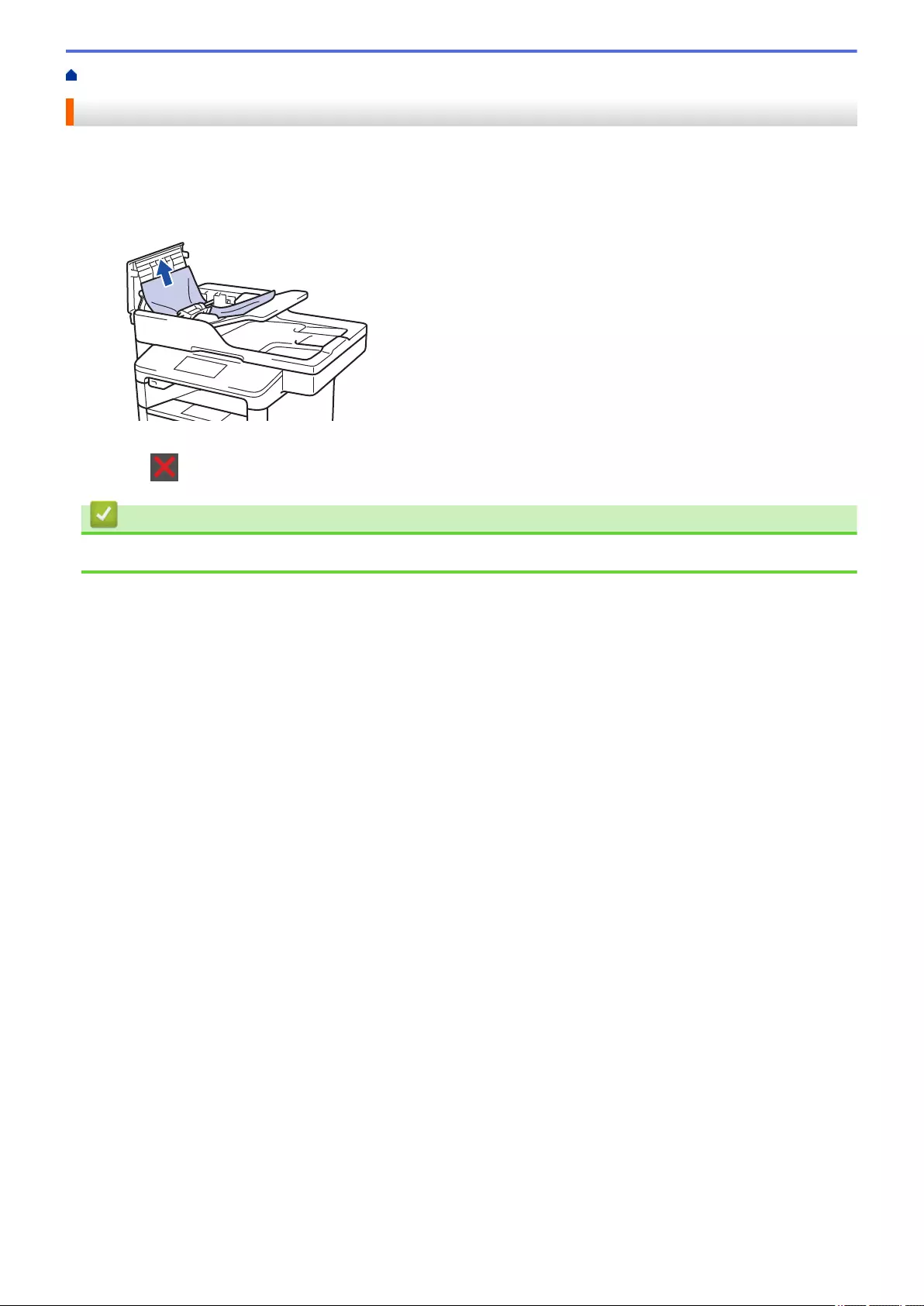
Home > Troubleshooting > Document Jams > Document is Jammed in the Top of the ADF Unit
Document is Jammed in the Top of the ADF Unit
1. Remove any paper from the ADF that is not jammed.
2. Open the ADF cover.
3. Pull the jammed document out to the left. If the document rips or tears, be sure you remove any debris or
scraps to prevent future jams.
4. Close the ADF cover.
5. Press .
Related Information
•Document Jams
529
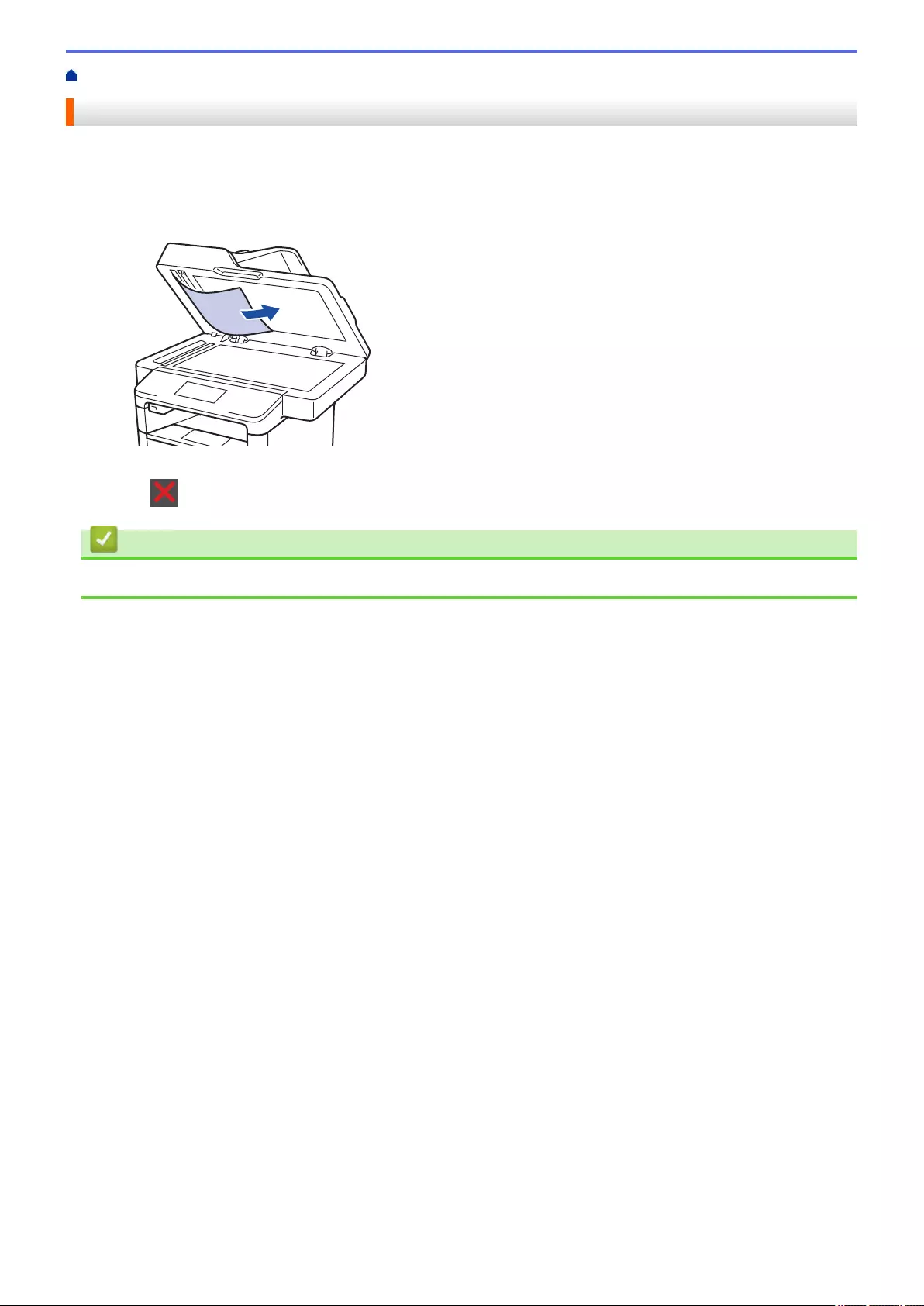
Home > Troubleshooting > Document Jams > Document is Jammed under the Document Cover
Document is Jammed under the Document Cover
1. Remove any paper from the ADF that is not jammed.
2. Lift the document cover.
3. Pull the jammed document out to the right. If the document rips or tears, be sure you remove any debris or
scraps to prevent future jams.
4. Close the document cover.
5. Press .
Related Information
•Document Jams
530
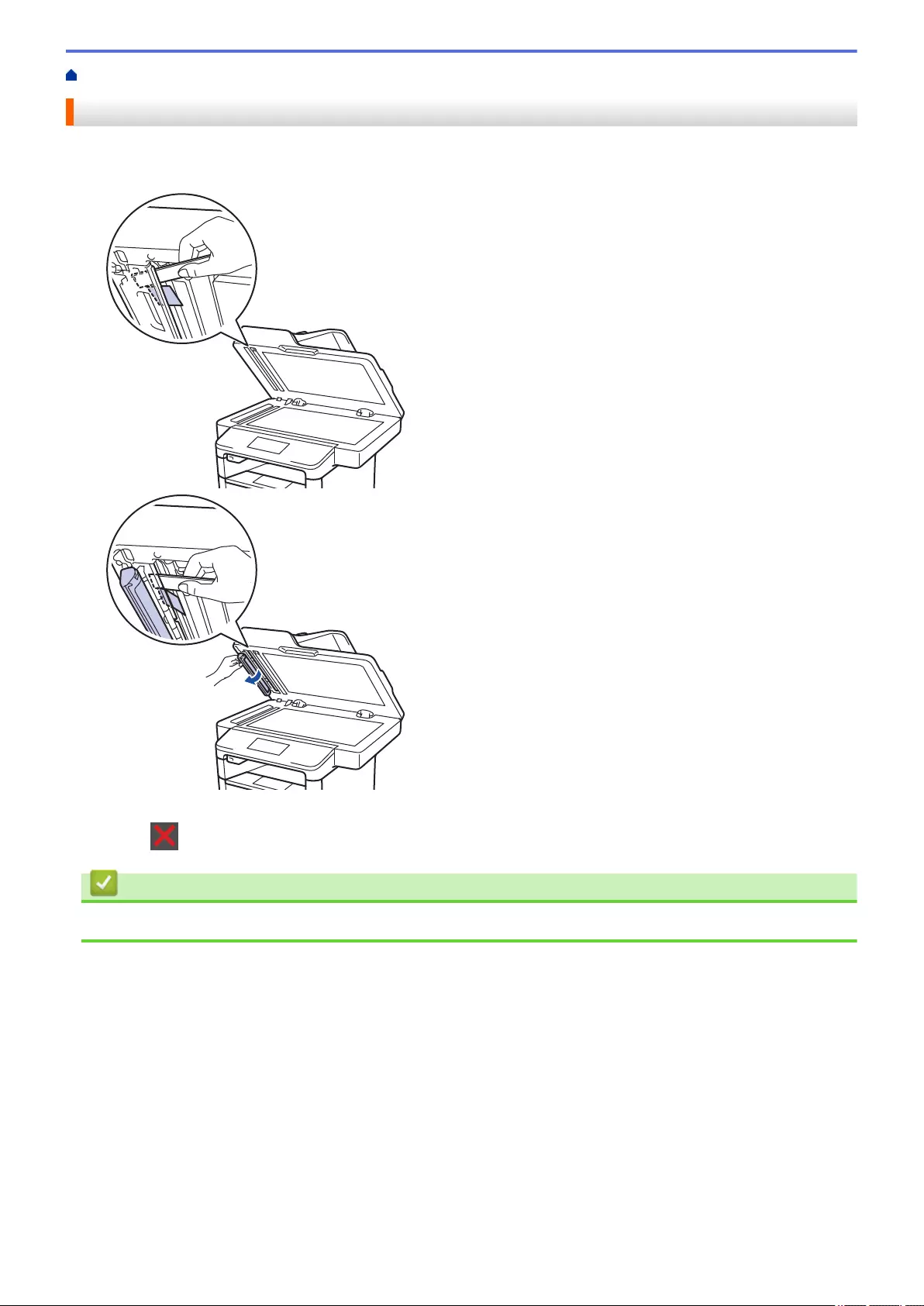
Home > Troubleshooting > Document Jams > Remove Small Scraps of Paper Jammed in the ADF
Remove Small Scraps of Paper Jammed in the ADF
1. Lift the document cover.
2. Insert a piece of stiff paper, such as cardstock, into the ADF to push any small paper scraps through.
3. Close the document cover.
4. Press .
Related Information
•Document Jams
531

Home > Troubleshooting > Paper Jams
Paper Jams
Always remove the remaining paper from the paper tray and straighten the stack when you are adding new
paper. This helps prevent multiple sheets of paper from feeding through the machine at one time and prevents
paper jams.
•Paper is Jammed in the MP tray
•Paper is Jammed in the Paper Tray
•Paper is Jammed in the Back of the Machine
•Paper is Jammed inside the Machine
•Paper is Jammed in the 2-sided Tray
532

Home > Troubleshooting > Paper Jams > Paper is Jammed in the MP tray
Paper is Jammed in the MP tray
If the machine's control panel or the Status Monitor indicates that there is a jam in the machine's MP tray, follow
these steps:
1. Remove the paper from the MP tray.
2. Remove any jammed paper from in and around the MP tray.
3. Fan the paper stack, and then put it back in the MP tray.
4. Reload paper in the MP tray and make sure the paper stays under the maximum paper height guides (1) on
both sides of the tray.
1
5. Press [Retry] to resume printing.
Related Information
•Paper Jams
533
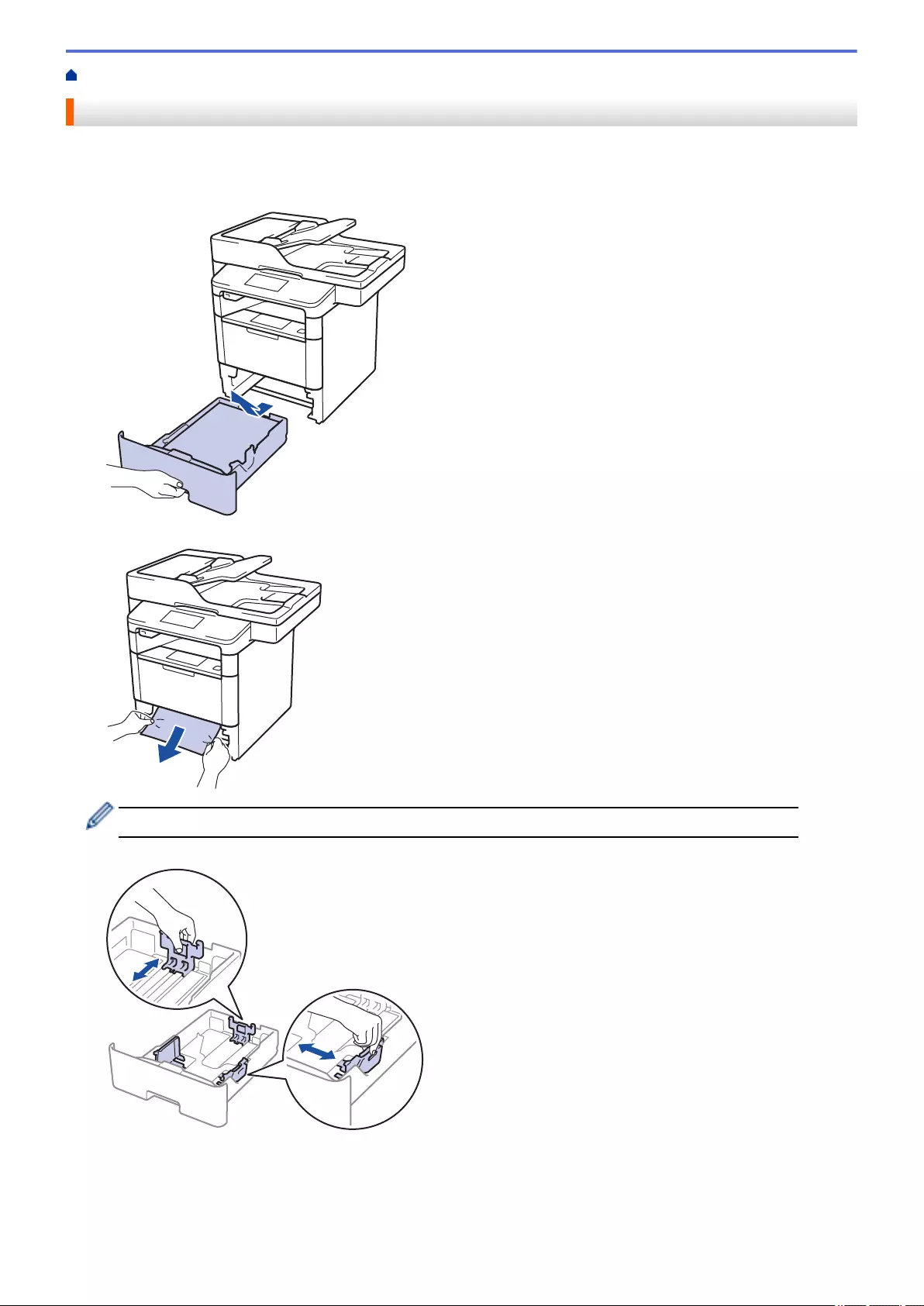
Home > Troubleshooting > Paper Jams > Paper is Jammed in the Paper Tray
Paper is Jammed in the Paper Tray
If the machine's control panel or the Status Monitor indicates that there is a jam in the paper tray, follow these
steps:
1. Pull the paper tray completely out of the machine.
2. Slowly pull out the jammed paper.
Pulling the jammed paper downward using both hands allows you to remove the paper more easily.
3. Fan the stack of paper to prevent further jams, and slide the paper guides to fit the paper size.
4. Make sure the paper is below the maximum paper mark (b b b).
534
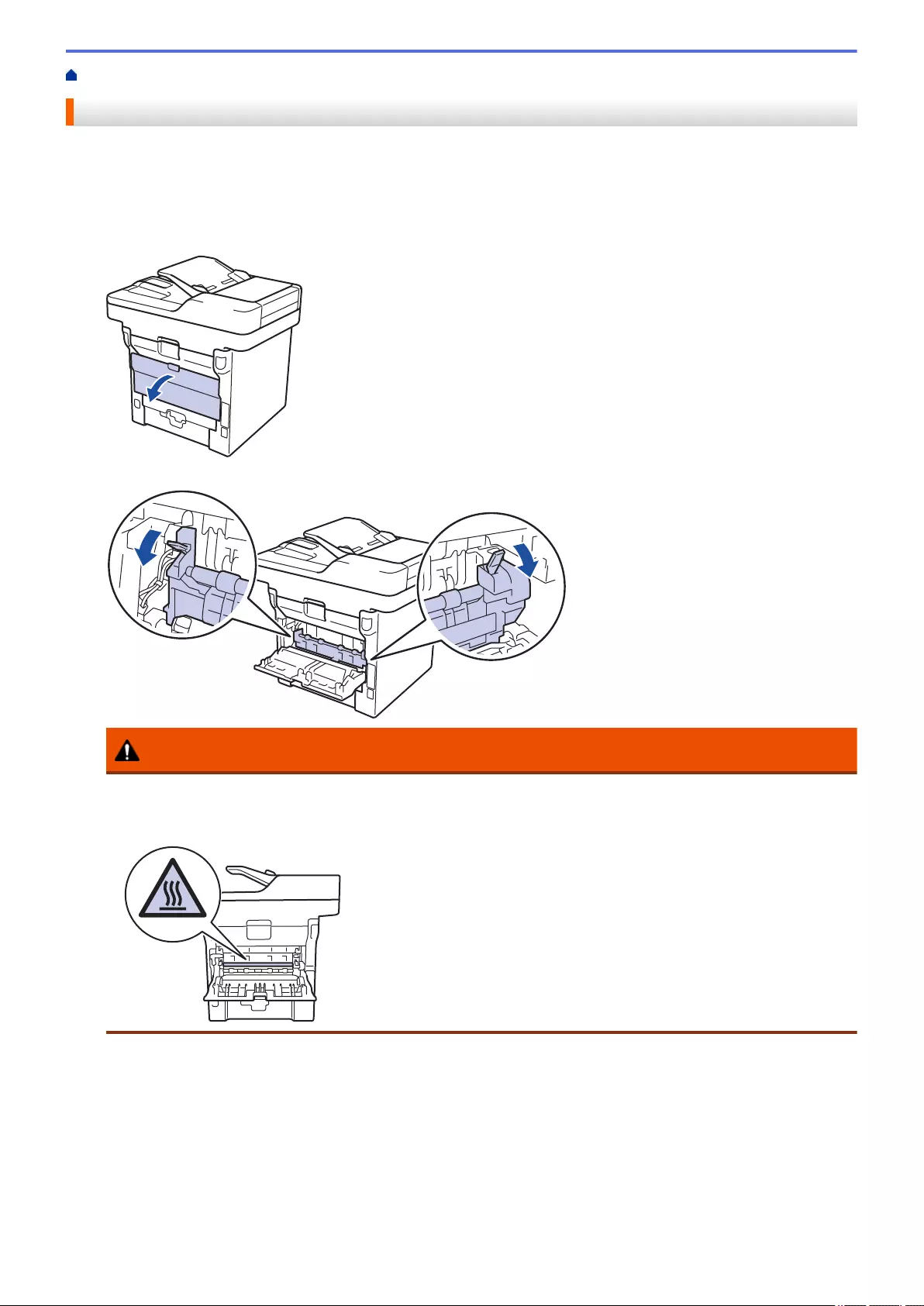
Home > Troubleshooting > Paper Jams > Paper is Jammed in the Back of the Machine
Paper is Jammed in the Back of the Machine
If the machine's control panel or the Status Monitor indicates that there is a jam in the back (Rear) of the
machine, follow these steps:
1. Leave the machine turned on for 10 minutes for the internal fan to cool the extremely hot parts inside the
machine.
2. Open the back cover.
3. Pull the green levers at the left and right sides toward you to release the fuser cover.
WARNING
HOT SURFACE
The machine's internal parts will be extremely hot. Wait for the machine to cool down before touching
them.
4. Use both hands to gently pull the jammed paper out of the fuser unit.
536
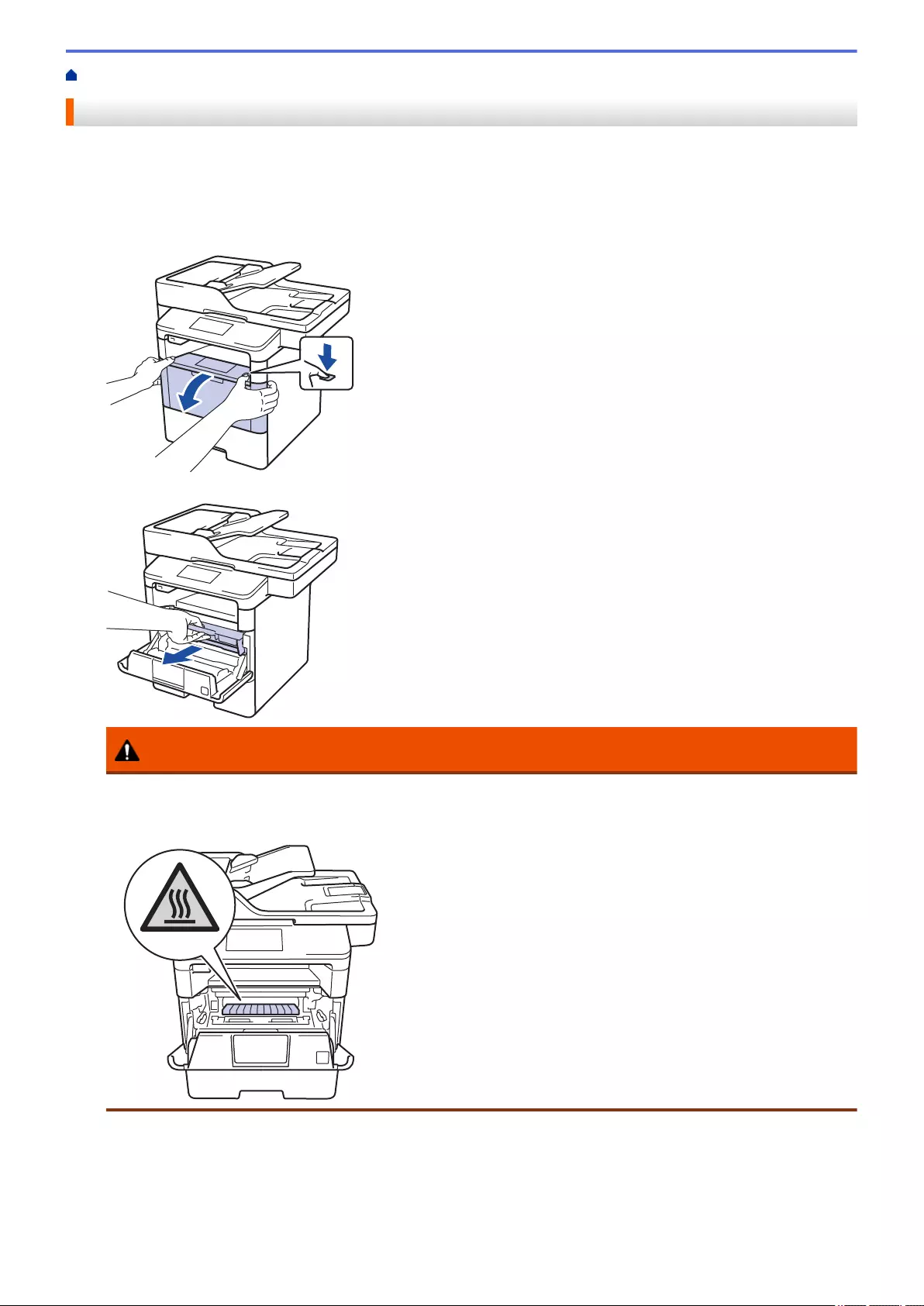
Home > Troubleshooting > Paper Jams > Paper is Jammed inside the Machine
Paper is Jammed inside the Machine
If the machine's control panel or the Status Monitor indicates that there is a jam inside the machine, follow these
steps:
1. Leave the machine turned on for 10 minutes for the internal fan to cool the extremely hot parts inside the
machine.
2. Open the front cover.
3. Remove the toner cartridge and drum unit assembly.
WARNING
HOT SURFACE
The machine's internal parts will be extremely hot. Wait for the machine to cool down before touching
them.
4. Pull out the jammed paper slowly.
538
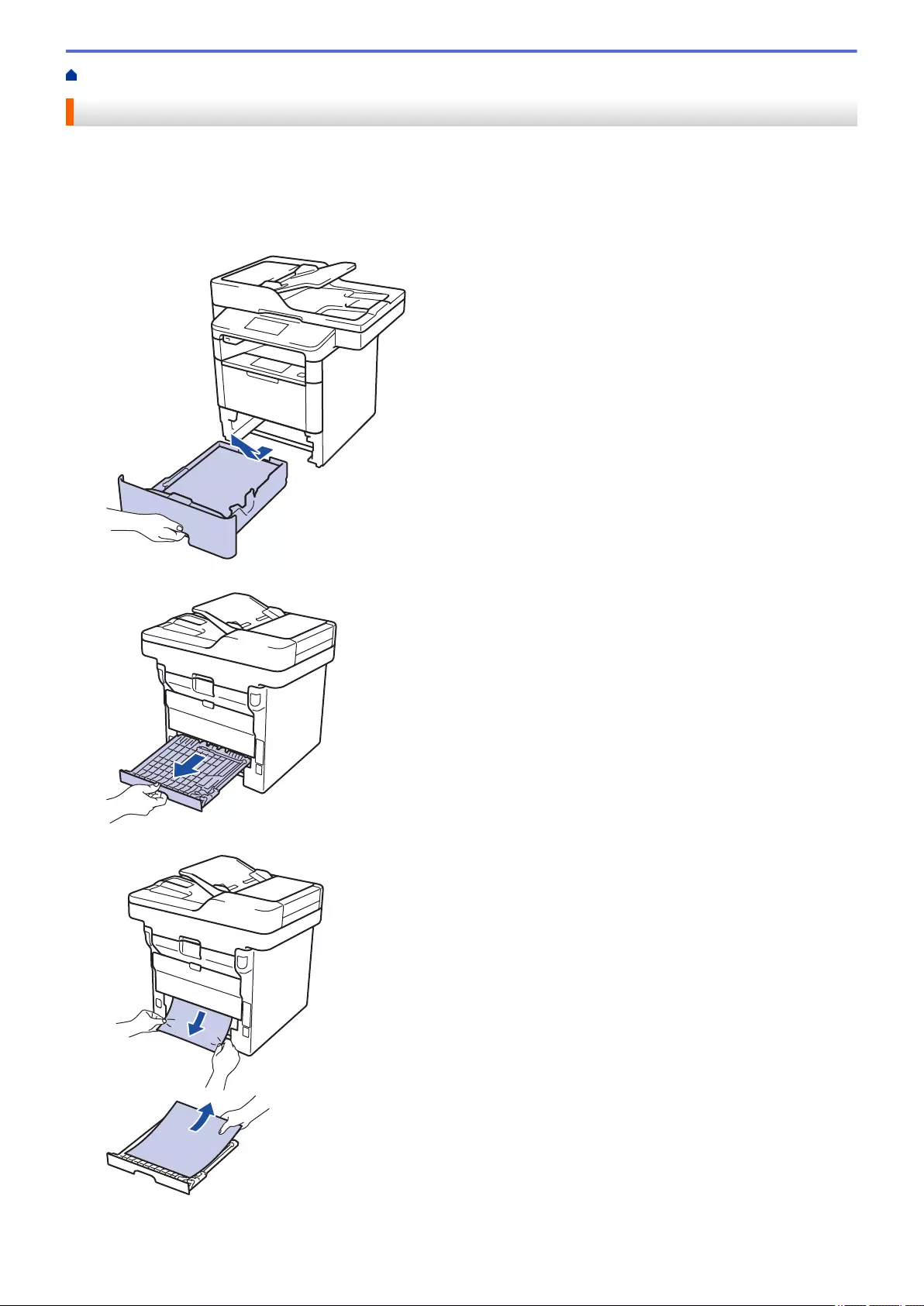
Home > Troubleshooting > Paper Jams > Paper is Jammed in the 2-sided Tray
Paper is Jammed in the 2-sided Tray
If the machine's control panel or the Status Monitor indicates that there is a jam in the 2-sided paper tray, follow
these steps:
1. Leave the machine turned on for 10 minutes for the internal fan to cool the extremely hot parts inside the
machine.
2. Pull the paper tray completely out of the machine.
3. At the back of the machine, pull the 2‑sided tray completely out of the machine.
4. Pull the jammed paper out of the machine or out of the 2‑sided tray.
540
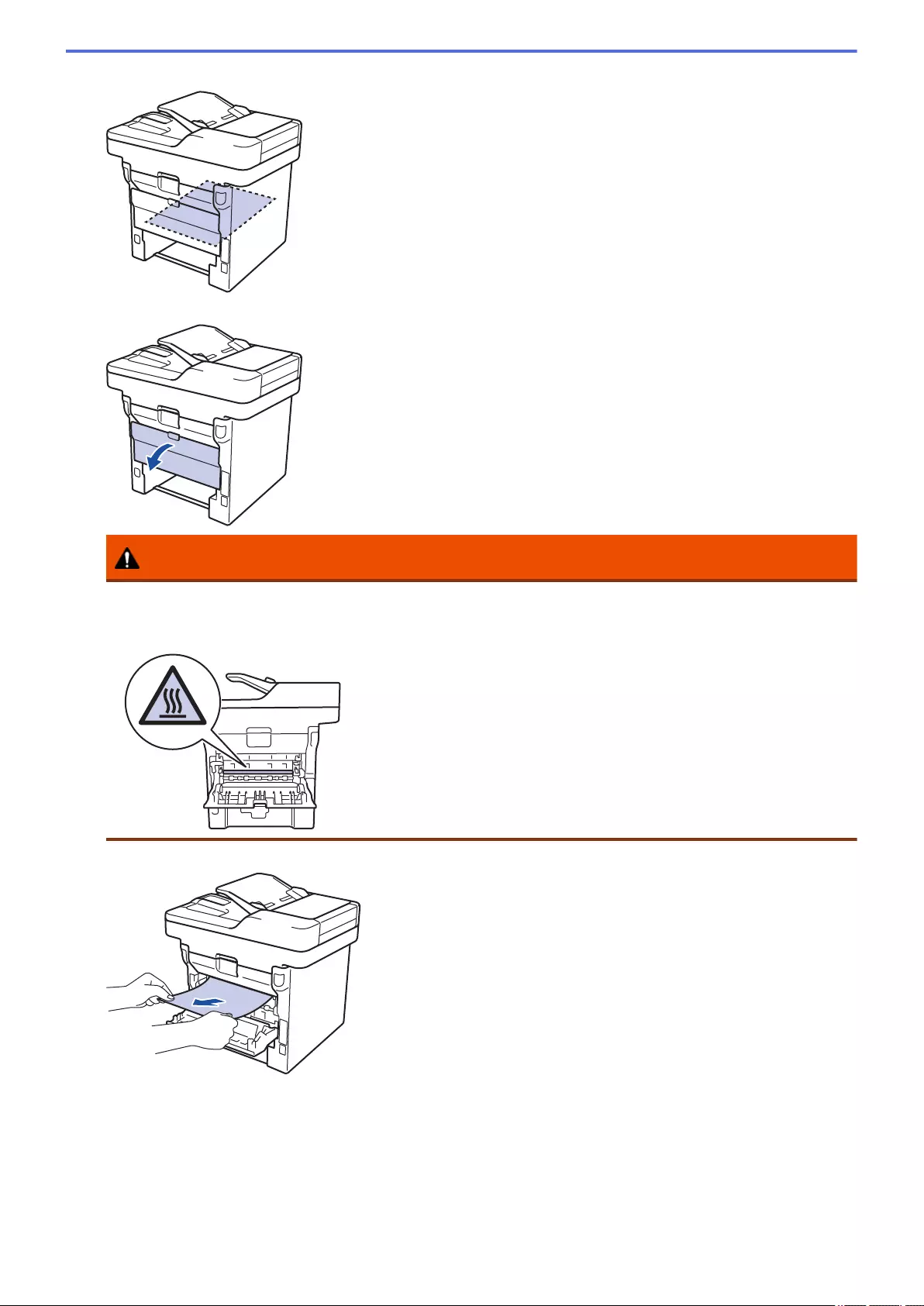
5. Remove paper that may have jammed under the machine due to static electricity.
6. If paper is not caught inside the 2-sided tray, open the back cover.
WARNING
HOT SURFACE
The machine's internal parts will be extremely hot. Wait for the machine to cool down before touching
them.
7. Use both hands to gently pull the jammed paper out of the back of the machine.
8. Close the back cover until it locks in the closed position.
9. Put the 2-sided tray firmly back in the rear of the machine.
10. Put the paper tray firmly back in the front of the machine.
541
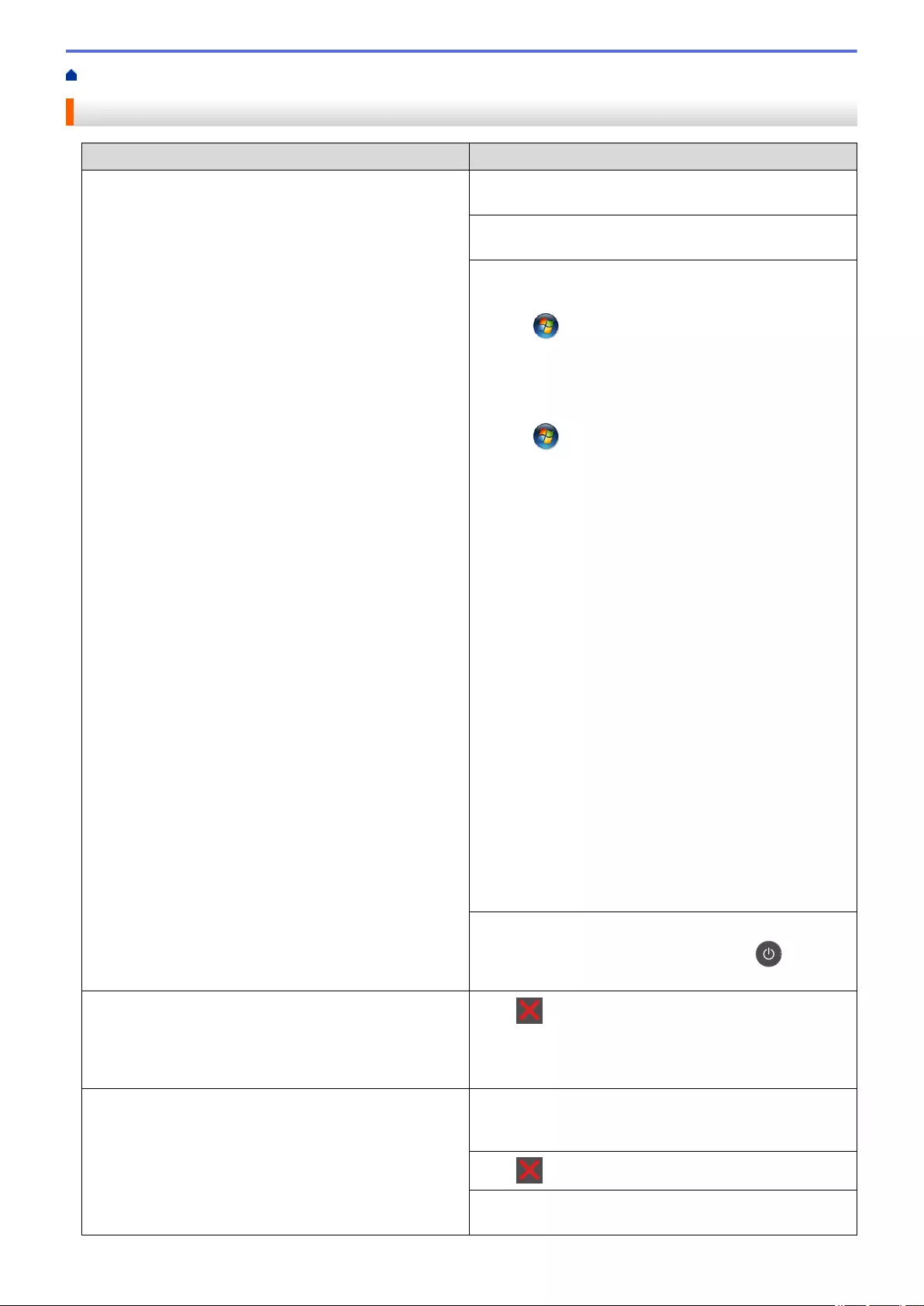
Home > Troubleshooting > Printing Problems
Printing Problems
Difficulties Suggestions
No printout Check that the correct printer driver has been installed
and selected.
Check to see if the Status Monitor or the machine's
control panel displays an error status.
Check that the machine is online:
• Windows7 and Windows Server 2008 R2
Click /Start > Devices and Printers . Right-click
Brother XXX-XXXX and click See what's printing.
Click Printer in the menu bar. Make sure Use Printer
Offline is not selected.
• Windows Vista and Windows Server 2008
Click /Start > Control Panel > Hardware and
Sound > Printers. Right-click Brother XXX-XXXX.
Make sure Use Printer Online is not listed. If it is
listed, click this option to set the driver Online.
• Windows XP and Windows Server 2003
Click the Start > Printers and Faxes. Right-click
Brother XXX-XXXX. Make sure Use Printer Online is
not listed. If it is listed, click this option to set the driver
Online.
• Windows 8 and Windows Server 2012
Move your mouse to the lower right corner of your
desktop. When the menu bar appears, click Settings
> Control Panel. In the Hardware and Sound group,
click View devices and printers. Right-click the
Brother XXX-XXXX. Click See what's printing. If
printer driver options appear, select your printer driver.
Click Printer in the menu bar and make sure that Use
Printer Offline is not selected.
• Windows Server 2012 R2
Click Control Panel on the Start screen. In the
Hardware group, click View devices and printers.
Right-click the Brother XXX-XXXX. Click See what’s
printing. If printer driver options appear, select your
printer driver. Click Printer in the menu bar and make
sure Use Printer Offline is not selected.
Check the machine is not in Power Off mode.
If the machine is in Power Off mode, press on the
control panel, and then send the print data again.
The machine is not printing or has stopped printing. Press .
The machine will cancel the print job and clear it from the
machine's memory. The printout may be incomplete.
Send the print data again.
The machine prints unexpectedly or it prints garbage.
The headers or footers appear when the document
displays on the screen but they do not show up when it is
printed.
There is an unprintable area on the top and bottom of the
page. Adjust the top and bottom margins in your
document to allow for this.
Press .
Check the settings in your application to make sure they
are set up to work with your machine.
543

Difficulties Suggestions
Confirm that the Brother printer driver is selected in your
application's Print window.
The machine prints the first couple of pages correctly,
then some pages have missing text.
Check the settings in your application to make sure they
are set up to work with your machine.
Your computer is not recognizing the full signal of the
machine’s input buffer. Make sure you connected the
interface cable correctly.
The machine does not print on both sides of the paper
even though the printer driver setting is 2-sided and the
machine supports automatic 2-sided printing.
Check the paper size setting in the printer driver. You
must select Letter, Legal, Folio, Mexico Legal and India
Legal paper that is 16 to 28 lb (60 to 105 g/m2)
Print speed is too slow. Try changing the printer driver setting. The highest
resolution needs longer data processing, sending and
printing time.
The machine does not feed paper. If there is paper in the paper tray, make sure it is straight.
If the paper is curled, straighten it. Sometimes it is helpful
to remove the paper, turn the stack over and put it back in
the paper tray.
Reduce the amount of paper in the paper tray, and then
try again.
Make sure MP Tray is not selected for Paper Source in
the printer driver.
Clean the paper pick-up rollers.
The machine does not feed paper from the MP tray. Fan the paper well and put it back in the MP tray firmly.
Make sure MP Tray is selected as Paper Source in the
printer driver.
The machine does not feed envelopes. Load envelopes in the MP tray. Your application must be
set to print the envelope size you are using. This is
usually done in the Page Setup or Document Setup menu
of your application.
Related Information
•Troubleshooting
•Monitor the Status of the Machine from Your Computer (Windows)
•Monitor the Status of the Machine from Your Computer (Mac)
•Unscannable and Unprintable Areas
•Cancel a Print Job
•Load and Print Using the Paper Tray
•Clean the Paper Pick-up Rollers
•Load and Print Using the Multi‑purpose Tray (MP Tray)
544
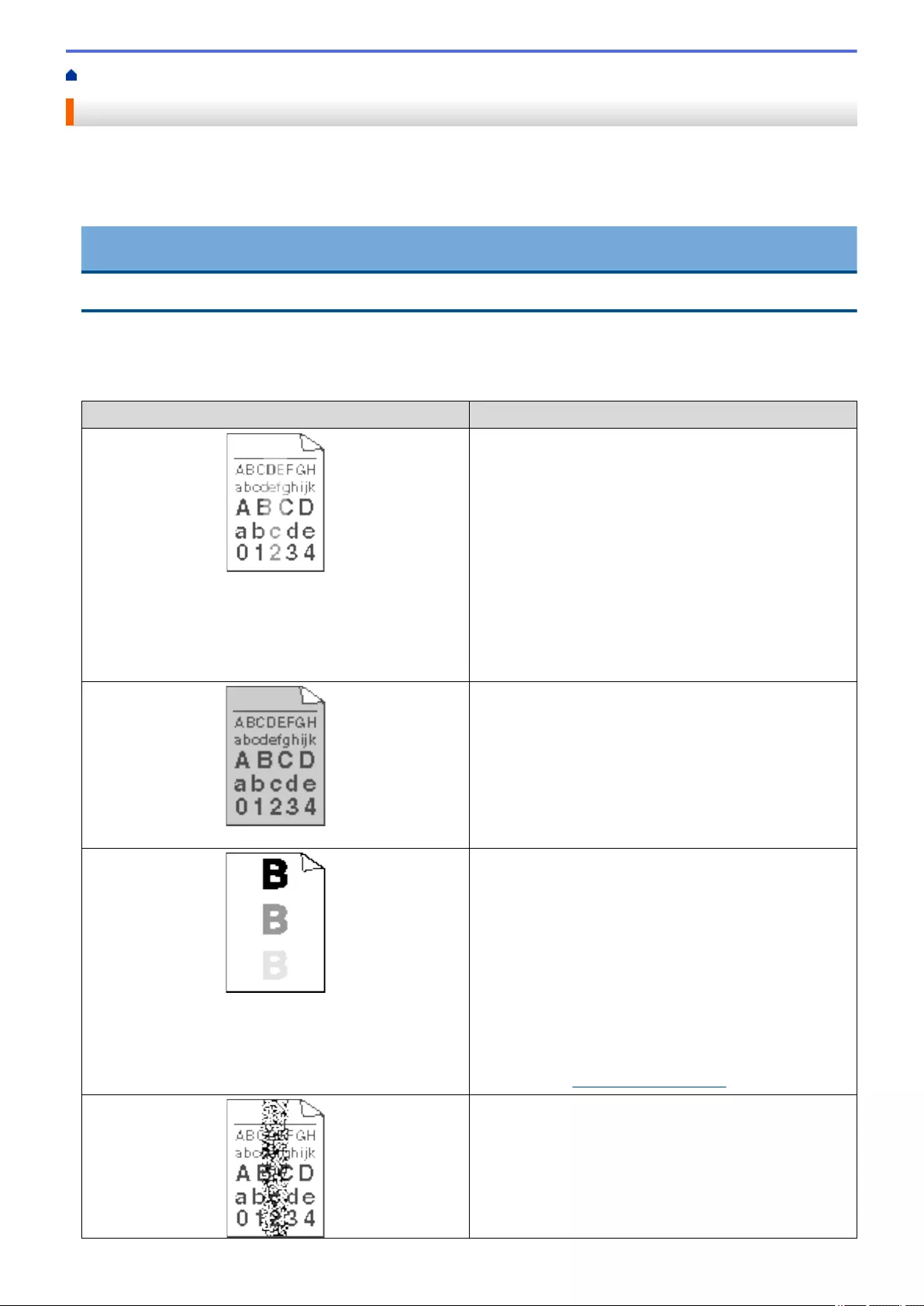
Home > Troubleshooting > Improve the Print Quality
Improve the Print Quality
If you have a print quality problem, print a test page first. If the printout looks good, the problem is probably not
the machine. Check the interface cable connections and try printing a different document. If the printout or test
page printed from the machine has a quality problem, check the examples of poor print quality in the table and
follow the recommendations.
IMPORTANT
Using non-Brother supplies may affect the print quality, hardware performance, and machine reliability.
1. To get the best print quality, we suggest using recommended print media. Make sure you use paper that
meets our specifications.
2. Check that the toner cartridge and drum unit are installed correctly.
Examples of poor print quality Recommendation
Faint
• If the machine indicates Replace Toner status, install a
new toner cartridge.
• Check the machine’s environment. Conditions such as
humidity, high temperatures, and so on, may cause
this print fault.
• If the whole page is too light, Toner Save may be
turned on. Turn off Toner Save mode in the machine's
menu settings or the printer driver.
• Clean the drum unit.
• Clean the corona wire on the drum unit.
• Replace the toner cartridge with a new toner cartridge.
• Replace the drum unit with a new drum unit.
Gray background
• Check the machine’s environment. Conditions such as
high temperatures and high humidity can increase the
amount of background shading.
• Clean the drum unit.
• Replace the toner cartridge with a new toner cartridge.
• Replace the drum unit with a new drum unit.
Ghost
• Check the machine’s environment. Conditions such as
low humidity and low temperatures may cause this
print quality problem.
• Select the appropriate media type in the printer driver.
• Clean the drum unit.
• Replace the drum unit with a new drum unit.
• Replace the toner cartridge with a new toner cartridge.
• The fuser unit may be contaminated.
Contact Brother Customer Service.
In USA: 1-877-BROTHER (1-877-276-8437)
In Canada: www.brother.ca/support
• Make sure the media type setting in the driver
matches the type of paper you are using.
• Clean the drum unit.
• The toner cartridge may be damaged.
Replace the toner cartridge with a new toner cartridge.
• The drum unit may be damaged.
545
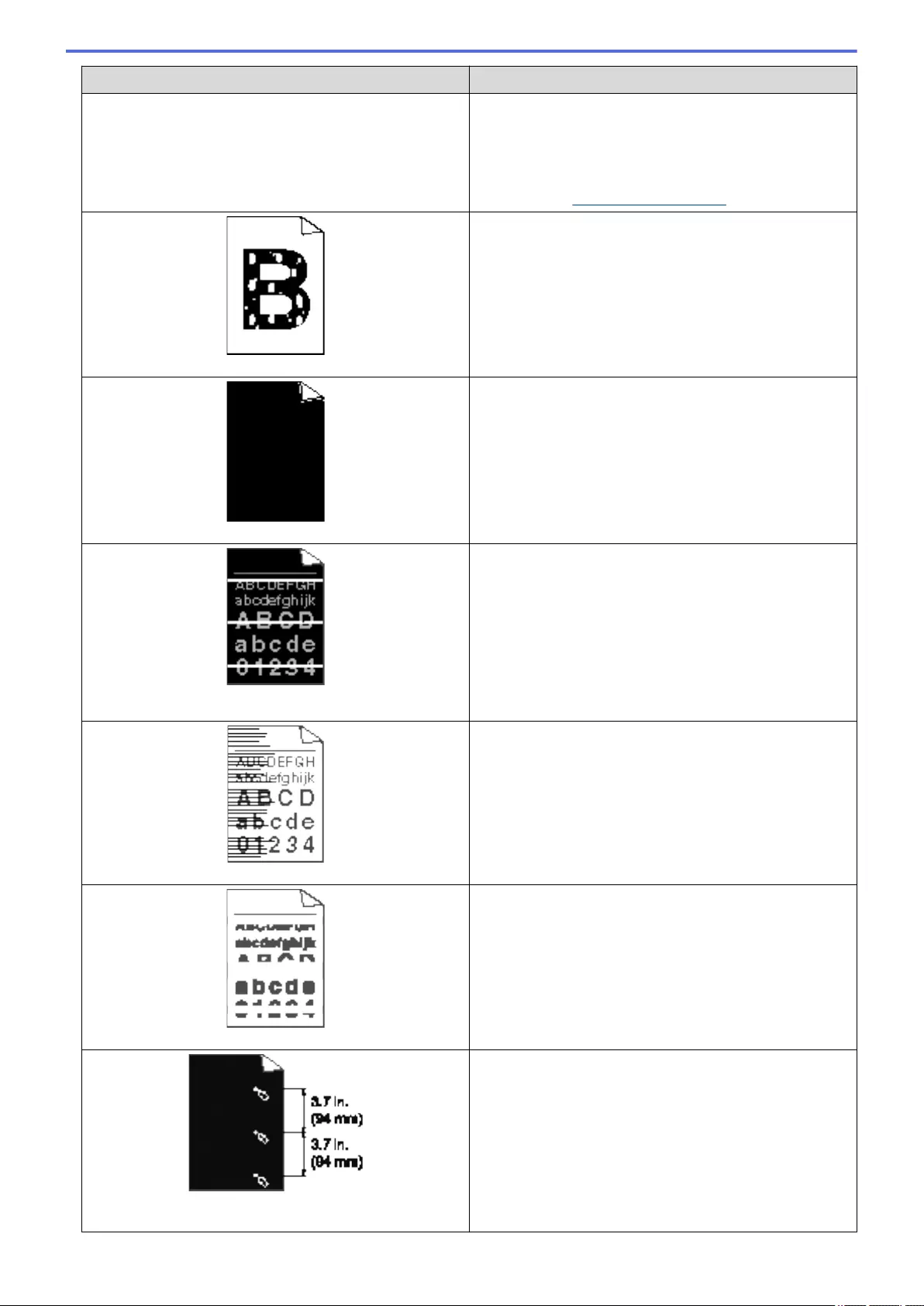
Examples of poor print quality Recommendation
Toner specks Replace the drum unit with a new drum unit.
• The fuser unit may be contaminated.
Contact Brother Customer Service.
In USA: 1-877-BROTHER (1-877-276-8437)
In Canada: www.brother.ca/support
Hollow print
• Select Thick Paper mode in the printer driver or use
thinner paper than you are currently using.
• Select the appropriate media type in the menu setting.
• Check the machine’s environment. Conditions such as
high humidity can cause hollow print.
• The drum unit may be damaged.
Replace the drum unit with a new drum unit.
All black
• Clean the corona wire inside the drum unit.
• The drum unit may be damaged.
Replace the drum unit with a new drum unit.
White lines across the page
• Select the appropriate media type in the printer driver.
• Select the appropriate media type in the menu setting.
• The problem may disappear by itself. Print multiple
blank pages to clear this problem, especially if the
machine has not been used for a long time.
• Clean the drum unit.
• The drum unit may be damaged.
Replace the drum unit with a new drum unit.
Lines across the page
• Clean the drum unit.
• The drum unit may be damaged.
Replace the drum unit with a new drum unit.
White lines, bands or ribbing across the page
• Check the machine's environment. Conditions such as
high humidity and high temperatures may cause this
print quality problem.
• Clean the drum unit.
• If the problem is not solved after printing a few pages,
replace the drum unit with a new drum unit.
White Spots on black text and graphics at 3.7 in. (94 mm)
intervals
• Make 10-15 copies of a blank, white sheet of paper. If
the problem is not solved after printing the blank
pages, the drum unit may have foreign material, such
as glue from a label, stuck on the drum. Clean the
drum unit.
See Related Information:Clean the Drum Unit.
• The drum unit may be damaged.
Replace the drum unit with a new drum unit.
546

Examples of poor print quality Recommendation
Black spots at 3.7 in. (94 mm) intervals
Black toner marks across the page
• If you use label sheets for laser printers, the glue from
the sheets may sometimes stick to the drum surface.
Clean the drum unit.
See Related Information:Clean the Drum Unit.
• If you used paper that has clips or staples, the drum
unit may be damaged.
• If the unpacked drum unit is in direct sunlight (or room
light for long periods of time), the unit may be
damaged.
• Clean the drum unit.
• The toner cartridge may be damaged.
Replace the toner cartridge with a new toner cartridge.
• The drum unit may be damaged.
Replace the drum unit with a new drum unit.
Black lines down the page
Printed pages have toner stains down the page
• Clean the corona wire inside the drum unit by sliding
the green tab.
Make sure that the green tab on the drum unit is in the
Home position.
• The toner cartridge may be damaged.
Replace the toner cartridge with a new toner cartridge.
• The drum unit may be damaged.
Replace the drum unit with a new drum unit.
• The fuser unit may be contaminated.
Contact Brother Customer Service.
In USA: 1-877-BROTHER (1-877-276-8437)
In Canada: www.brother.ca/support
White lines down the page
• Make sure foreign material such as a torn piece of
paper, sticky notes or dust is not inside the machine
and around the toner cartridge and drum unit.
• The toner cartridge may be damaged.
Replace the toner cartridge with a new toner cartridge.
• The drum unit may be damaged.
Replace the drum unit with a new drum unit.
Image skewed
• Set the document correctly in the ADF or on the
scanner glass if the skew only occurs when making
copies.
• Make sure the paper or other print media is loaded
correctly in the paper tray and the guides are not too
tight or too loose against the paper stack.
• Set the paper guides correctly.
• The paper tray may be too full.
• Check the paper type and quality.
• Check for loose objects such as torn paper inside the
machine.
547

Examples of poor print quality Recommendation
• If the problem only occurs during automatic 2-sided
printing, check for torn paper in the 2-sided tray. Verify
the 2-sided tray is inserted completely and the back
cover is closed completely.
Curled or wavy
• Check the paper type and quality. High temperatures
and high humidity will cause paper to curl.
• If you do not use the machine often, the paper may
have been in the paper tray too long. Turn over the
stack of paper in the paper tray. Also, fan the paper
stack, and then rotate the paper 180° in the paper
tray.
• Open the back cover (face up output tray) to let the
printed paper exit onto the face up output tray.
• Choose Reduce Paper Curl mode in the printer driver
when you do not use our recommended print media.
Wrinkles or creases
• Make sure paper is loaded correctly.
• Check the paper type and quality.
• Turn over the stack of paper in the tray or rotate the
paper 180° in the input tray.
Poor fixing
• Make sure the media type setting in the driver
matches the type of paper you are using.
• Choose Improve Toner Fixing mode in the printer
driver.
If this selection does not provide enough
improvement, change the printer driver setting in
Media Type to a thick setting. If you are printing an
envelope, choose Env. Thick in the media type
setting.
Envelope creases
• Make sure envelopes are printed with the back cover
(face up output tray) opened.
• Make sure envelopes are fed only from the MP tray.
Related Information
•Troubleshooting
•Test Print
•Clean the Drum Unit
548

Home > Troubleshooting > Telephone and Fax Problems
Telephone and Fax Problems
Telephone Line or Connections
Difficulties Suggestions
Dialing does not work. (No
dial tone)
Check all line cord connections. Make sure the telephone line cord is plugged into the
telephone wall jack and the LINE jack of the machine. Make sure your machine has a dial
tone by pressing the Hook button in Fax mode. If you subscribe to DSL, VoIP or
MagicJack services, call your service provider for connection instructions.
(Available only for some countries.)
Change the Tone/Pulse setting.
Send a manual fax by pressing Hook button, and dialing the number. Wait to hear fax-
receiving tones before pressing Start button.
If there is no dial tone, connect a known working telephone and telephone line cord to the
jack. Then lift the external telephone’s handset and listen for a dial tone. If there is still no
dial tone, ask your telephone company to check the line and/or wall jack.
The machine does not
answer when called.
Make sure the machine is in the correct receive mode for your setup.
Check for a dial tone. If possible, call your machine to hear it answer. If there is still no
answer, check that the telephone line cord is plugged into the telephone wall jack and the
LINE jack of the machine. Make sure your machine has a dial tone by pressing the Hook
button in Fax mode. If there is no ringing when you call your machine, ask your telephone
company to check the line.
Handling Incoming Calls
Difficulties Suggestions
Sending a Fax
Call to the
machine.
If you answered on an extension telephone, press your Fax Receive Code (the factory setting is
*51). If you answered on the external telephone (connected to the EXT. jack), press the Start
button to receive the fax.
When your machine answers, hang up.
Custom features
on a single line.
If you have Call Waiting, RingMaster, Voice Mail, an answering machine, an alarm system or
other custom feature on a single telephone line with your machine, it may create a problem
sending or receiving faxes.
For Example: If you subscribe to Call Waiting or some other custom service and its signal comes
through the line while your machine is sending or receiving a fax, the signal can temporarily
interrupt or disrupt the faxes. Brother’s ECM (Error Correction Mode) feature should help
overcome this problem. This condition is related to the telephone system industry and is common
to all devices that send and receive information on a single, shared line with custom features. If
avoiding a slight interruption is crucial to your business, we recommend using a separate
telephone line with no custom features.
Receiving Faxes
Difficulties Suggestions
Cannot receive
a fax.
Check all line cord connections. Make sure the telephone line cord is plugged into the telephone
wall jack and the LINE jack of the machine. If you subscribe to DSL, VoIP, or MagicJack services,
call your service provider for connection instructions. If you are using a VoIP system, try changing
the VoIP setting to Basic (for VoIP). This will lower modem speed and turn off Error Correction
Mode (ECM).
Make sure your machine has a dial tone by pressing the Hook button in Fax mode. If you hear
static or interference on your fax line, contact your local telephone provider.
549
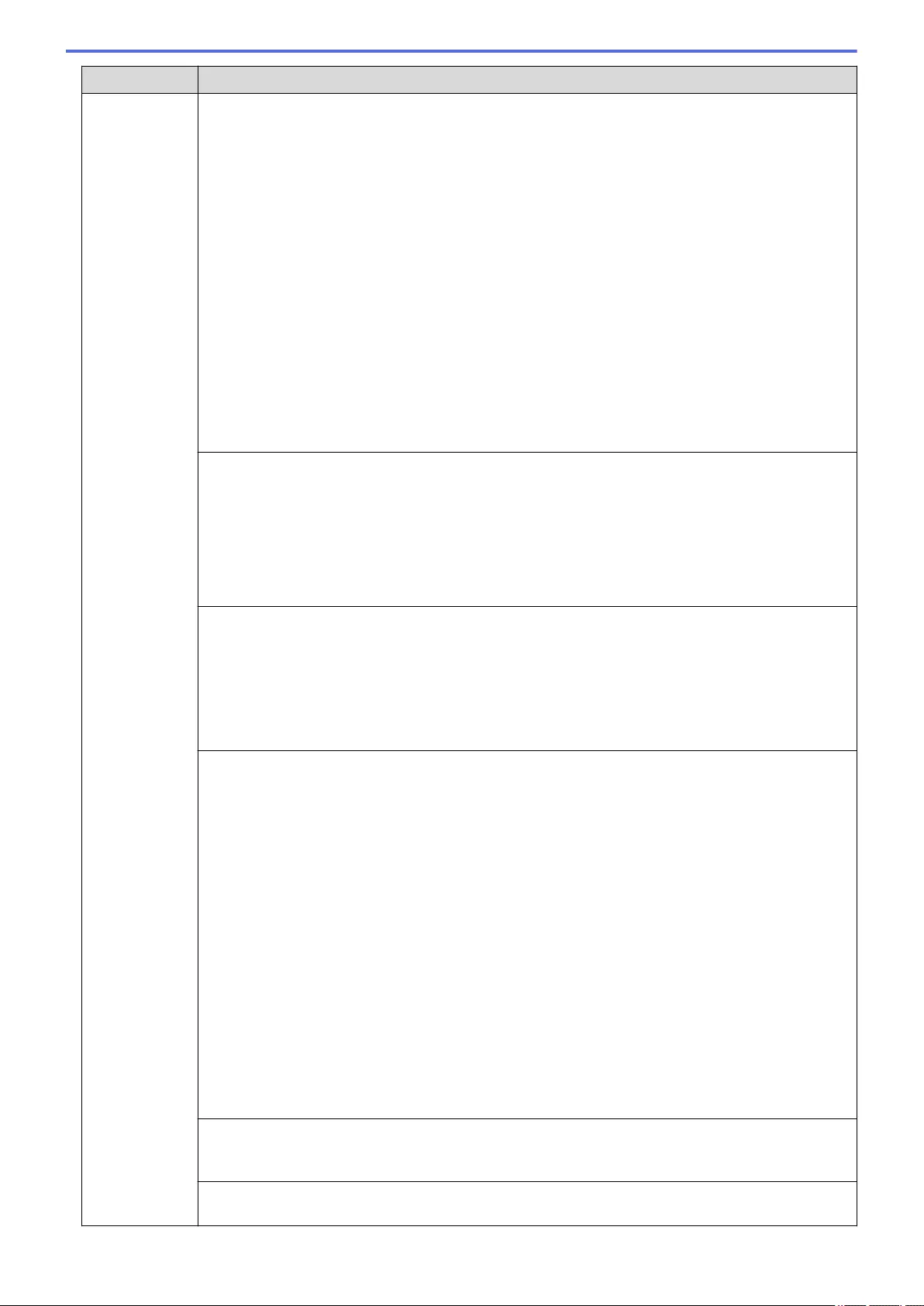
Difficulties Suggestions
Cannot receive
a fax.
Make sure the machine is in the correct Receive Mode. This is determined by the external devices
and telephone subscriber services you have on the same line as the Brother machine.
• If you have a dedicated fax line and want your Brother machine to automatically answer all
incoming faxes, you should select Fax only mode.
• If your Brother machine shares a line with an external answering machine, you should select the
External TAD mode. In External TAD mode, your Brother machine will receive incoming faxes
automatically and voice callers will be able to leave a message on your answering machine.
• If your Brother machine shares the line with a Voice Mail subscriber service, see Related
Information: Voice Mail.
• If your Brother machine is on a line with the Distinctive Ring subscriber service, see Related
Information: Distinctive Ring.
• If your Brother machine shares a line with other telephones and you want it to automatically
answer all incoming faxes, you should select the Fax/Tel mode. In Fax/Tel mode, your Brother
machine will receive faxes automatically and produce a pseudo/double-ring to alert you to
answer voice calls.
• If you do not want your Brother machine to answer any incoming faxes automatically, you
should select the Manual mode. In Manual mode, you must answer every incoming call and
activate the machine to receive faxes.
Another device or service at your location may be answering the call before your Brother machine
answers. To test this, lower the Ring Delay setting:
• If the Receive Mode is set to Fax Only or Fax/Tel, reduce the Ring Delay to one ring.
See Related Information: Set the Number of Rings Before the Machine Answers (Ring Delay).
• If the Receive Mode is set to External TAD, reduce the number of rings programmed on your
answering machine to two.
• If the Receive Mode is set to Manual, DO NOT adjust the Ring Delay setting.
Have someone send you a test fax:
• If you received the test fax successfully, your machine is operating correctly. Remember to reset
your Ring Delay or answering machine setting back to your original setting. If receiving
problems recur after resetting the Ring Delay, then a person, device, or subscriber service is
answering the fax call before the machine has a chance to answer.
• If you were not able to receive the fax, then another device or subscriber service may be
interfering with your fax reception or there may be a problem with your fax line.
If you are using a telephone answering machine (External TAD mode) on the same line as the
Brother machine, make sure your answering machine is set up correctly.
1. Plug the telephone line cord directly from the wall telephone jack to your Brother machine’s
LINE jack.
2. Remove the protective cap from your Brother machine’s EXT jack, and then plug the telephone
line cord from your answering machine into the EXT jack.
3. Set your answering machine to answer within 4 rings.
If you are having problems receiving faxes or voice messages, set your answering machine to
answer within 2 or 3 rings.
4. Record the outgoing message on your answering machine.
• Record five seconds of silence at the beginning of your outgoing message.
• Limit your speaking to 20 seconds.
• End your outgoing message with your Fax Receive Code for people sending manual faxes.
For example: “After the beep, leave a message or press *51 and Start to send a fax.”
5. Set your answering machine to answer calls.
6. Set your Brother machine’s Receive Mode to External TAD.
See Related Information: Choose the Correct Receive Mode.
Make sure your Brother machine’s Easy Receive feature is turned On. Easy Receive is a feature
that allows you to receive a fax even if you answered the call on an external or extension
telephone.
If you often get transmission errors due to possible interference on the telephone line or if you are
using a VoIP system, try changing the Compatibility setting to Basic(for VoIP).
550
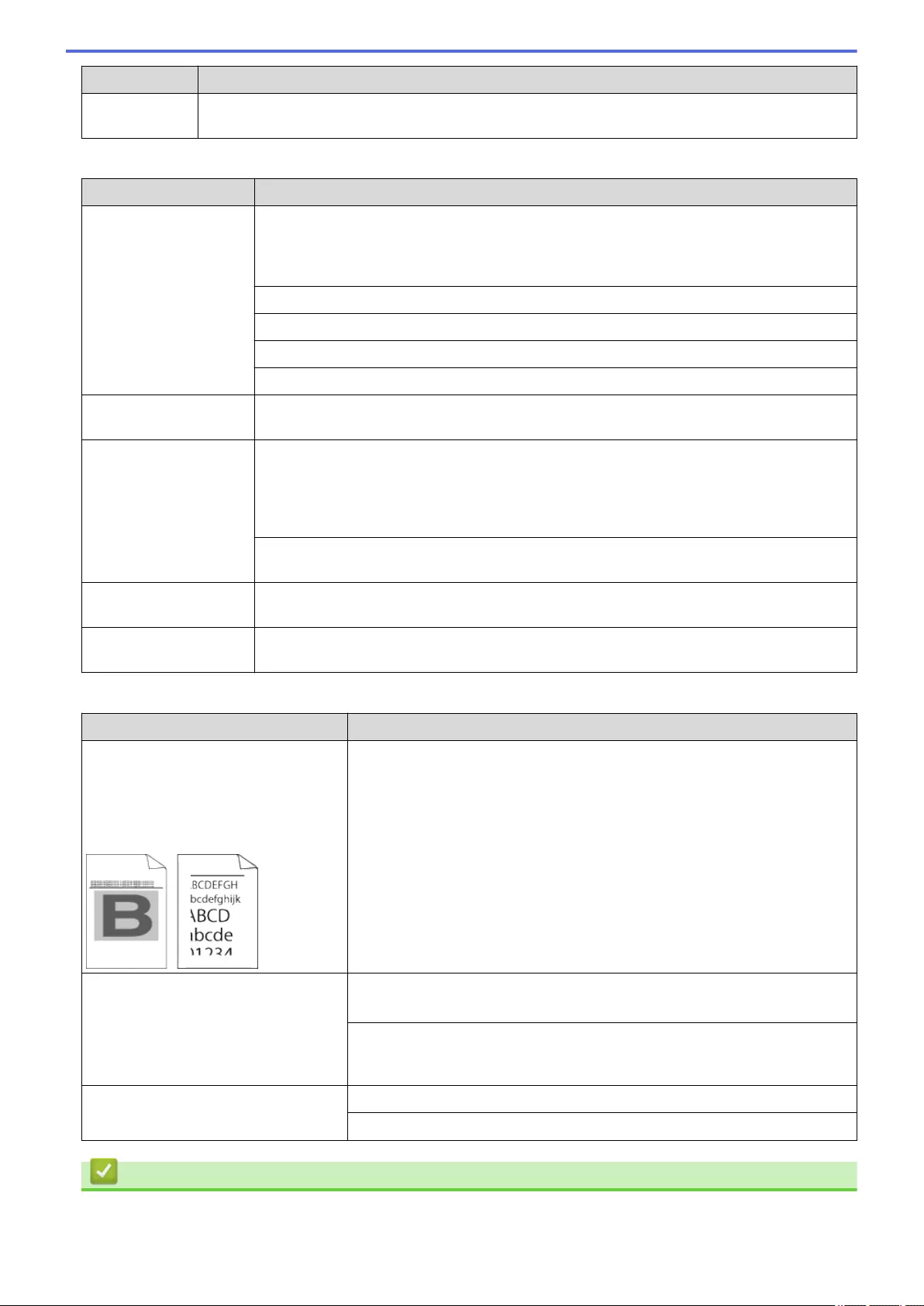
Difficulties Suggestions
Cannot receive
a fax.
Contact your administrator to check your Secure Function Lock Settings.
Sending Faxes
Difficulties Suggestions
Cannot send a fax. Check all line cord connections. Make sure the telephone line cord is plugged into the
telephone wall jack and the LINE jack of the machine. Make sure your machine has a dial
tone by pressing the Hook button in Fax mode. If you subscribe to DSL, VoIP, or
MagicJack services, call your service provider for connection instructions.
Make sure you pressed Fax and the machine is in Fax mode.
Print the Transmission Verification Report and check for an error.
Contact your administrator to check your Secure Function Lock Settings.
Ask the other party to check that the receiving machine has paper.
Poor sending quality. Try changing your resolution to Fine or S.Fine. Make a copy to check your machine’s
scanner operation. If the copy quality is poor, clean the scanner.
Transmission
Verification Report says
RESULT:NG.
There is probably temporary noise or static on the line. Try sending the fax again. If you
are sending a PC-Fax message and get RESULT:NG on the Transmission Verification
Report, your machine may be out of memory. To free up extra memory, you can turn off
Fax Storage, print fax messages in memory or cancel a delayed fax. If the problem
continues, ask the telephone company to check your telephone line.
If you often get transmission errors due to possible interference on the telephone line or if
you are using a VoIP system, try changing the Compatibility setting to Basic(for VoIP).
Sent faxes are blank. Make sure you are loading the document correctly. When using the ADF, the document
should be face up. When using the scanner glass, the document should be face down.
Vertical black lines when
sending.
Black vertical lines on faxes you send are typically caused by dirt or correction fluid on the
glass strip. Clean the glass strip.
Printing received faxes
Difficulties Suggestions
• Condensed print
• Horizontal streaks
• Top and bottom sentences are cut
off
• Missing lines
This is usually caused by a poor telephone connection. Make a copy; if your
copy looks good, you probably had a bad connection, with static or
interference on the telephone line. Ask the other party to send the fax again.
Vertical black lines when receiving The corona wire for printing may be dirty.
Clean the corona wire in the drum unit.
The sender’s scanner may be dirty. Ask the sender to make a copy to see if
the problem is with the sending machine. Try receiving from another fax
machine.
Received faxes appear as split or
blank pages.
Left and right margins are cut off or a single page is printed on two pages.
Turn on Auto Reduction.
Related Information
•Troubleshooting
551
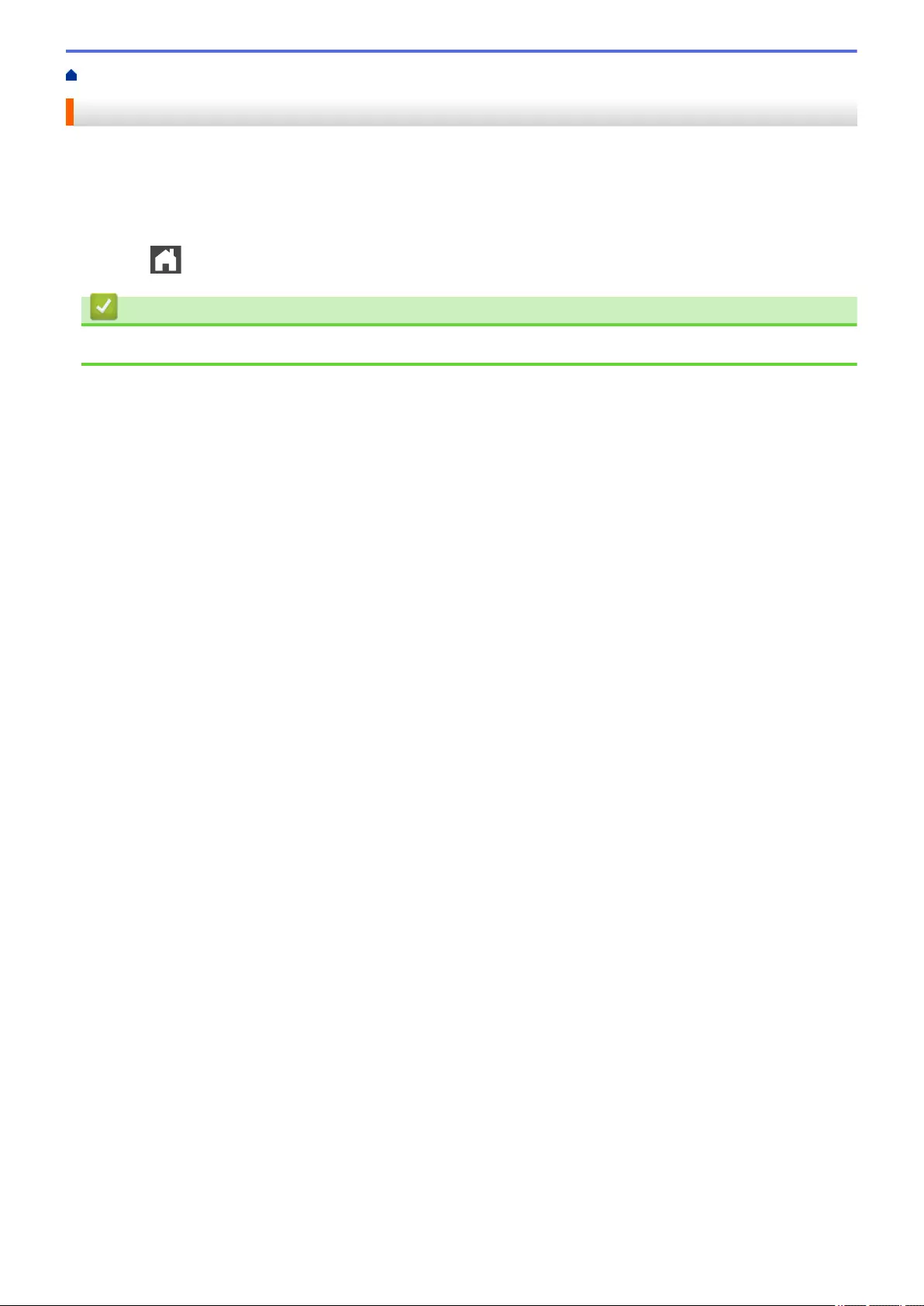
Home > Troubleshooting > Telephone and Fax Problems > Set Dial Tone Detection
Set Dial Tone Detection
Setting the Dial Tone to [Detection] will shorten the Dial Tone detect pause.
1. Press [Settings] > [All Settings] > [Initial Setup] > [Dial Tone].
2. Press [Detection] or [No Detection]
3. Press .
Related Information
•Telephone and Fax Problems
553

Home > Troubleshooting > Telephone and Fax Problems > Set Telephone Line Compatibility for
Interference and VoIP Systems
Set Telephone Line Compatibility for Interference and VoIP Systems
Problems sending and receiving faxes due to possible interference on the telephone line may be solved by
reducing the modem speed to minimize errors in fax transmission. If you are using a Voice over IP (VoIP)
service, Brother recommends changing the compatibility to Basic (for VoIP).
• VoIP is a type of phone system that uses an Internet connection, rather than a traditional phone line.
• Telephone providers frequently bundle VoIP together with Internet and cable services.
1. Press [Settings] > [All Settings] > [Initial Setup] > [Compatibility].
2. Press the option you want.
• Select [High] to set the modem speed to 33600 bps.
• Select [Normal] to set the modem speed to 14400 bps.
• Select [Basic(for VoIP)] to reduce the modem speed to 9600 bps and turn off Error Correction
Mode (ECM). Unless interference is a recurring problem on your telephone line, you may prefer to use
this option only when needed.
3. Press .
Related Information
•Telephone and Fax Problems
554
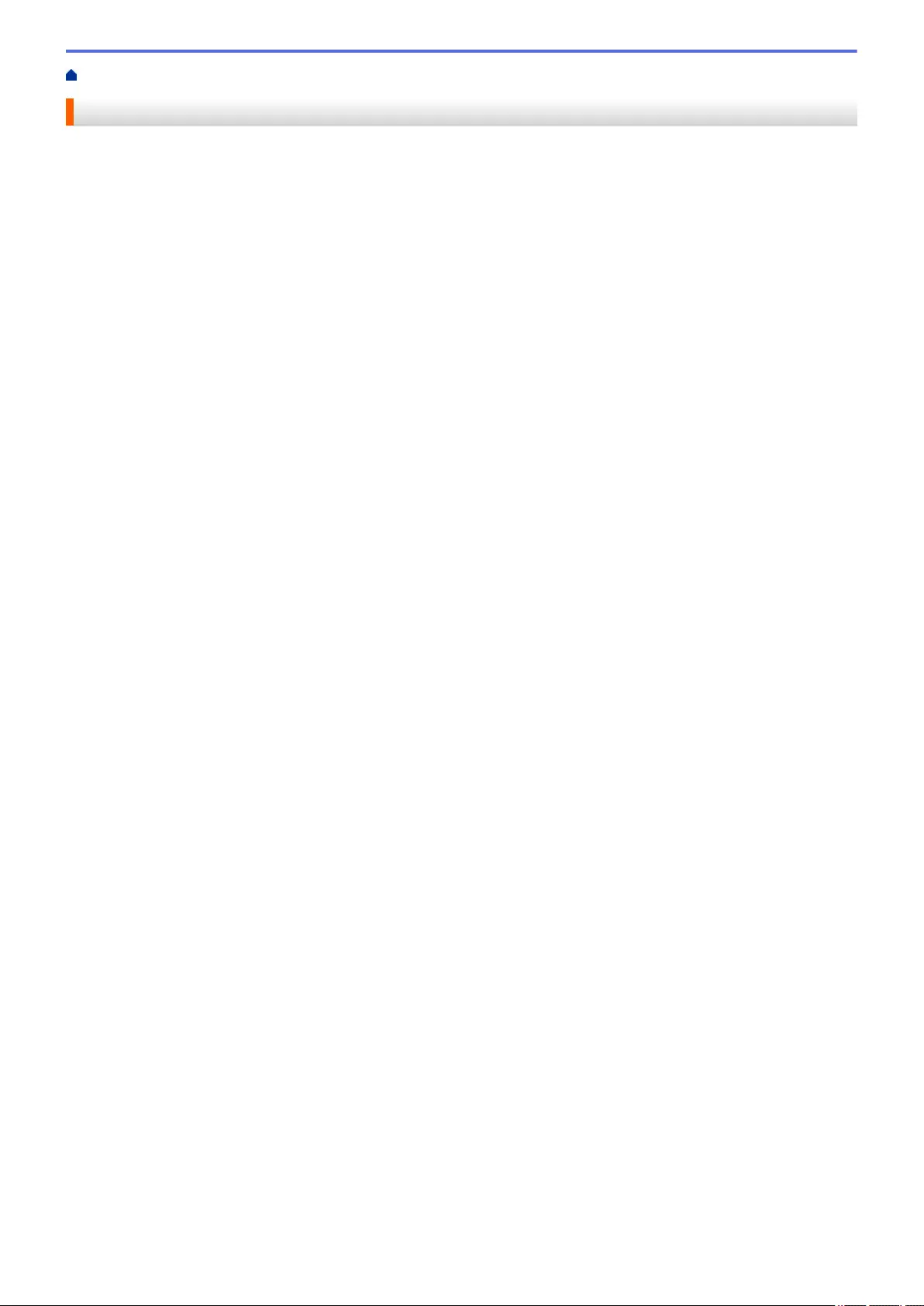
Home > Troubleshooting > Network Problems
Network Problems
•Error Messages
•Use the Network Connection Repair Tool (Windows)
•Where Can I Find My Brother Machine's Network Settings?
•I Cannot Complete the Wireless Network Setup Configuration
•My Brother Machine Cannot Print, Scan, or PC-FAX Receive over the Network
•I Want to Check that My Network Devices are Working Correctly
555
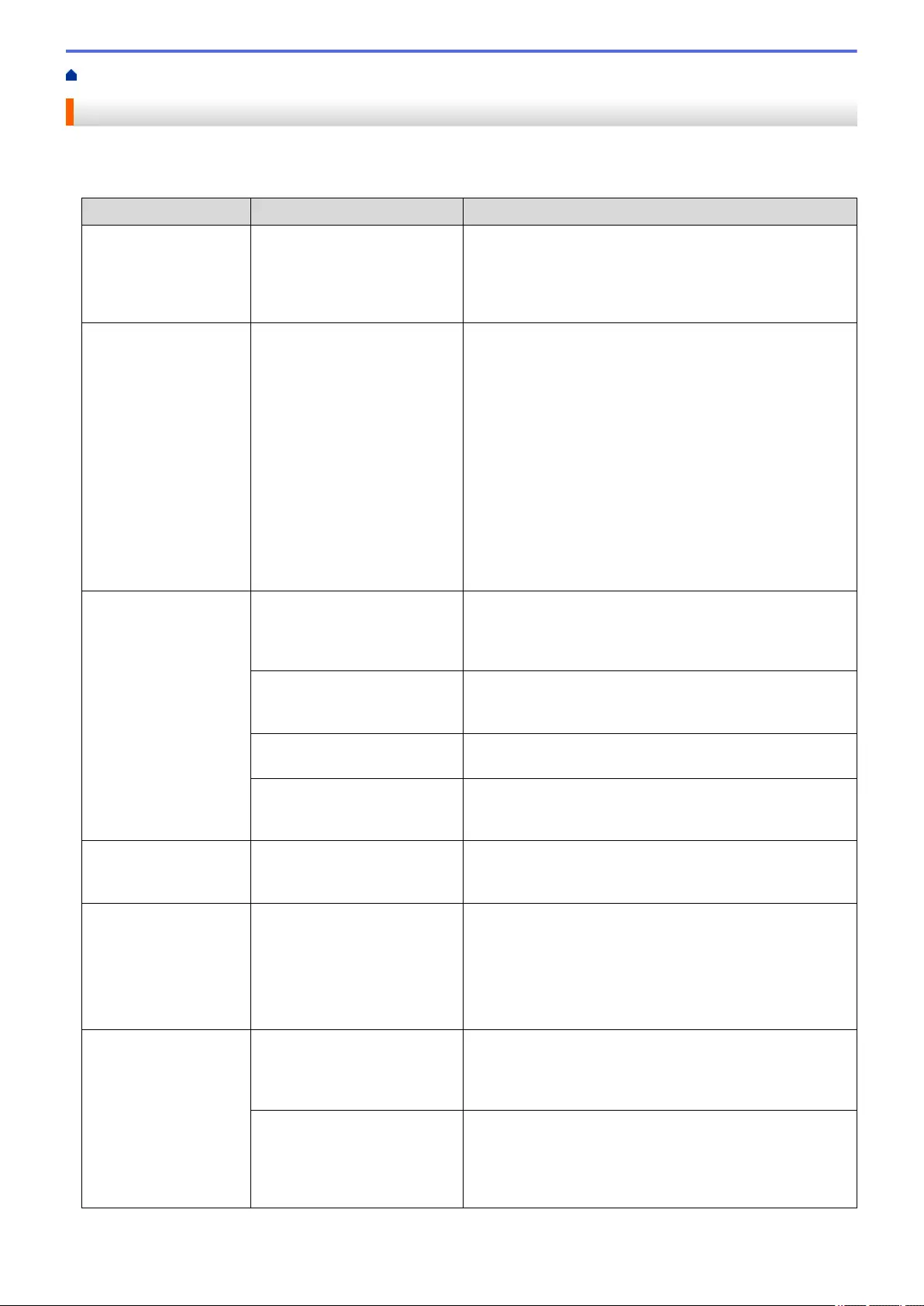
Home > Troubleshooting > Network Problems > Error Messages
Error Messages
Your Brother machine will display an error message if an error occurs. The most common error messages are
shown in the table.
Error Messages Cause Action
The maximum number
of devices are
already connected
using Wi-Fi
Direct.
Two mobile devices are
already connected to the Wi-Fi
Direct network when the
Brother machine is the Group
Owner (G/O).
After the current connection between your Brother
machine and another mobile device has shut down, try to
configure the Wi-Fi Direct settings again. You can confirm
the connection status by printing the Network
Configuration Report.
Authentication
Error, contact
your
administrator.
Your authentication setting for
the Store Print Log to Network
feature is not correct.
• Make sure the Username and Password in
Authentication Setting are correct. If the username is
part of a domain, enter the username in one of the
following styles: user@domain or domain\user.
• Make sure the time of the log file server matches the
time from the SNTP server, or the Date&Time settings.
• Make sure the SNTP time server settings are
configured correctly so the time matches the time used
for authentication by Kerberos or NTLMv2. If there is
no SNTP server, make sure the Date&Time and Time
Zone settings are set correctly using Web Based
Management or the control panel so the machine
matches the time being used by the server providing
the authentication.
Check User ID and
Password.
The Kerberos Authentication
error.
Make sure you have entered a correct user name and a
password for the Kerberos server. For more information on
the Kerberos server settings, contact your network
administrator.
The date, time and time zone
settings of the Brother
machine are not correct.
Confirm your machine's date, time and time zone settings.
The DNS server configuration
is not correct.
Contact your network administrator for the information on
the DNS server settings.
The Brother machine cannot
connect to the Kerberos
server.
Contact your network administrator for the information on
the Kerberos server settings.
Connection Error Other devices are trying to
connect to the Wi-Fi Direct
network at the same time.
• Make sure there are no other devices trying to connect
to the Wi-Fi Direct network, and then try to configure
the Wi-Fi Direct settings again.
Connection Failed The Brother machine and your
mobile device cannot
communicate during the Wi-Fi
Direct network configuration.
• Move the mobile device closer to your Brother
machine.
• Move your Brother machine and the mobile device to
an obstruction-free area.
• If you are using the PIN Method of WPS, make sure
you have entered the correct PIN.
File Access Error,
contact your
administrator.
The Brother machine cannot
access the destination folder
for the Store Print Log to
Network feature.
• Make sure the stored directory name is correct.
• Make sure the stored directory is write-enabled.
• Make sure the file is not locked.
In Web Based Management,
you have selected the Cancel
Print option in the Error
Detection Setting of Store
Print Log to Network.
Wait for about 120 seconds until this message disappears
from the LCD.
556
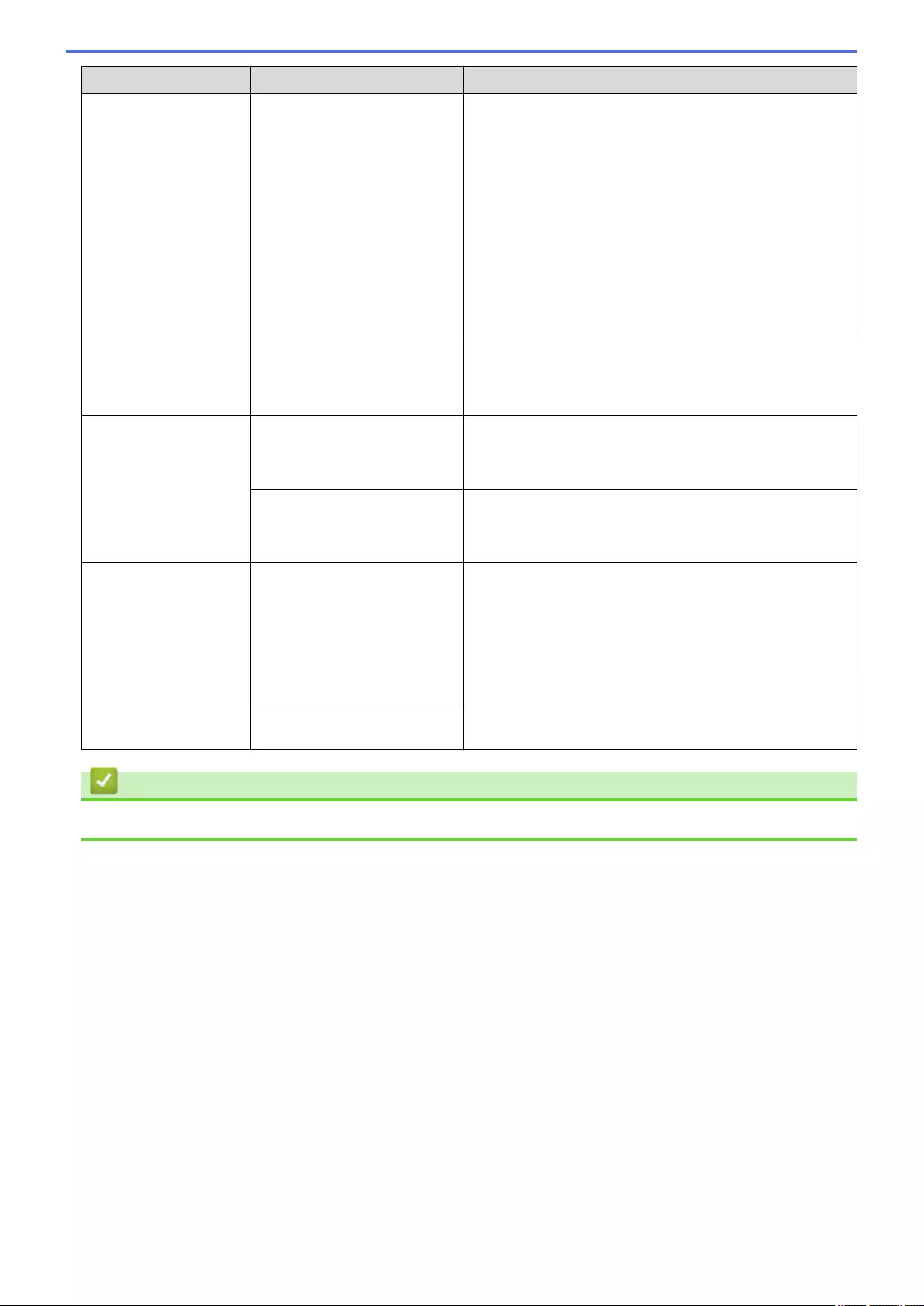
Error Messages Cause Action
No Device When configuring the Wi-Fi
Direct network, the Brother
machine cannot find your
mobile device.
• Make sure your machine and mobile device are in the
Wi-Fi Direct mode.
• Move the mobile device closer to your Brother
machine.
• Move your Brother machine and the mobile device to
an obstruction-free area.
• If you are manually configuring the Wi-Fi Direct
network, make sure you have entered the correct
password.
• If your mobile device has a configuration page for how
to obtain an IP address, make sure the IP address of
your mobile device has been configured via DHCP.
Server Timeout,
contact your
administrator.
The Brother machine cannot
connect to the server for the
Store Print Log to Network
feature.
• Make sure your server address is correct.
• Make sure your server is connected to the network.
• Make sure the machine is connected to the network.
Server Timeout The Brother machine cannot
connect to the LDAP server.
• Make sure your server address is correct.
• Make sure your server is connected to the network.
• Make sure the machine is connected to the network.
The Brother machine cannot
connect to the Active Directory
server.
• Make sure your server address is correct.
• Make sure your server is connected to the network.
• Make sure the machine is connected to the network.
Wrong Date&Time,
contact your
administrator.
The Brother machine does not
obtain the time from the SNTP
time server or you have not
configured the Date&Time for
the machine.
• Make sure the settings to access the SNTP time server
are configured correctly in Web Based Management.
• Confirm the Date&Time settings of your machine are
correct in Web Based Management.
Internal Error The Brother machine's LDAP
protocol is disabled.
Confirm your authentication method, and then enable the
necessary protocol setting in the Web Based
Management.
The Brother machine's CIFS
protocol is disabled.
Related Information
•Network Problems
557
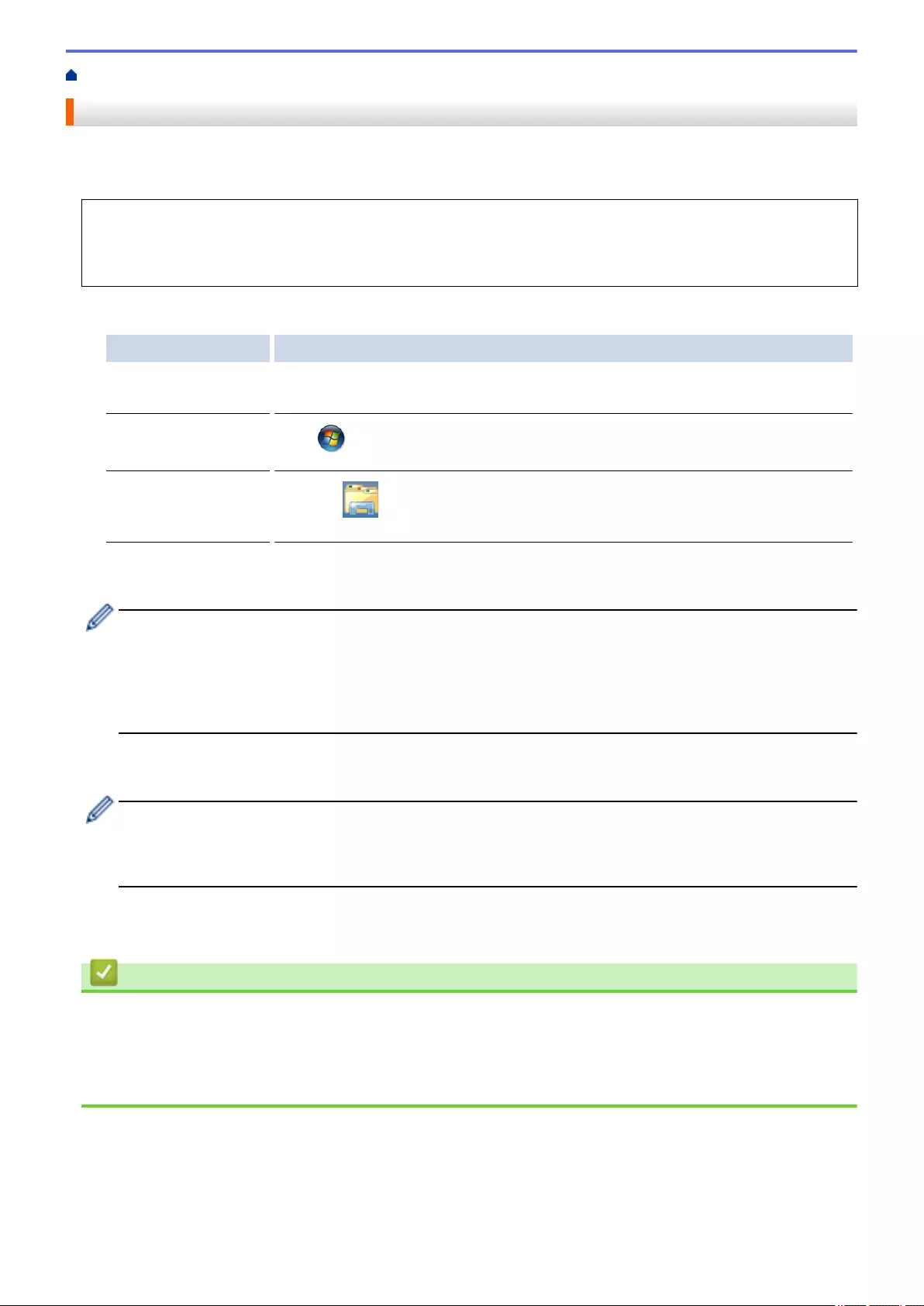
Home > Troubleshooting > Network Problems > Use the Network Connection Repair Tool (Windows)
Use the Network Connection Repair Tool (Windows)
Use the Network Connection Repair Tool to fix the Brother machine's network settings. It will assign the correct
IP address and Subnet Mask.
• (Windows XP/XP Professional x64 Edition/Windows Vista/Windows 7/Windows 8)
You must log on with Administrator rights.
• Make sure the Brother machine is turned on and is connected to the same network as your computer.
1. Do one of the following:
Option Description
Windows XP Click Start > All Programs > Accessories > Windows Explorer > My
Computer.
Windows Vista/
Windows 7
Click (Start) > Computer.
Windows 8 Click the (File Explorer) icon on the taskbar, and then click Computer (This
PC) in the left navigation bar.
2. Double-click XXX(C:) (where XXX is the name of your local disk drive) > Program Files > Browny02 >
Brother > BrotherNetTool.exe.
• For 64-bit OS users, double-click XXX(C:) (where XXX is the name of your local disk drive) > Program
Files (x86) > Browny02 > Brother > BrotherNetTool.exe.
• If the User Account Control screen appears, do one of the following:
- (Windows Vista) Click Allow.
- (Windows 7/Windows 8) Click Yes.
3. Follow the on-screen instructions.
4. Check the diagnosis by printing the Network Configuration Report.
The Network Connection Repair Tool will start automatically if you select the Enable Connection Repair
Tool option in the Status Monitor. Right-click the Status Monitor screen, and then click Other Settings >
Enable Connection Repair Tool. This is not recommended when your network administrator has set the
IP address to Static, since it will automatically change the IP address.
If the correct IP address and the Subnet Mask are still not assigned even after using the Network Connection
Repair Tool, ask your network administrator for this information.
Related Information
•Network Problems
•Print the Network Configuration Report
•My Brother Machine Cannot Print, Scan, or PC-FAX Receive over the Network
•I Want to Check that My Network Devices are Working Correctly
558
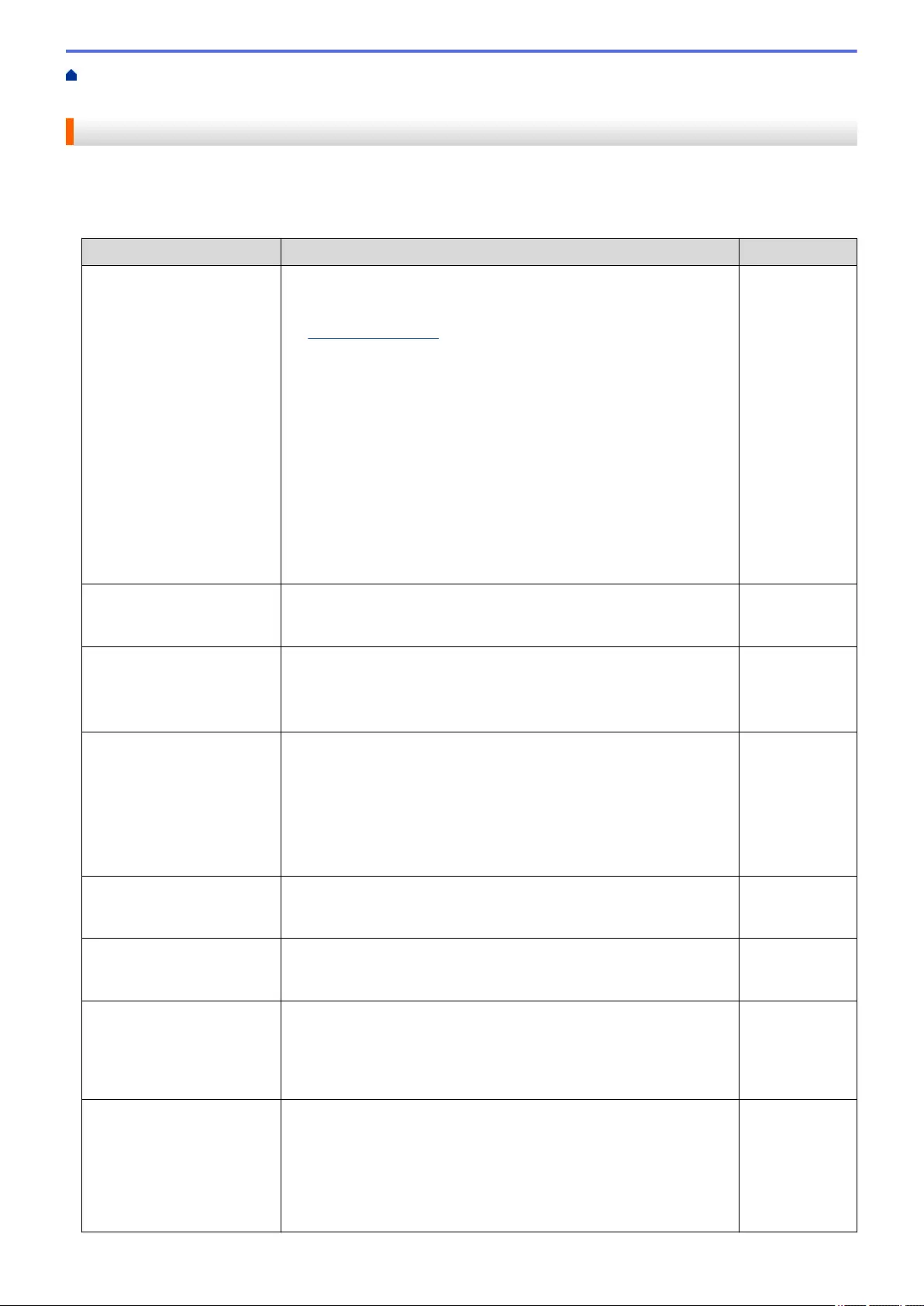
Home > Troubleshooting > Network Problems > I Cannot Complete the Wireless Network Setup
Configuration
I Cannot Complete the Wireless Network Setup Configuration
Turn your wireless router off and back on. Then try to configure the wireless settings again. If you are unable to
resolve the problem, follow the instructions below:
Investigate the problem using the WLAN Report.
Cause Action Interface
Your security settings (SSID/
Network Key) are not
correct.
• Confirm the security settings using the Wireless Setup Helper
utility. For more information and to download the utility, go to your
model's Downloads page on the Brother Solutions Center at
support.brother.com.
• Select and confirm that you are using the correct security
settings.
- See the instructions supplied with your wireless LAN access
point/router for information on how to find the security
settings.
- The manufacturer's name or model number of the wireless
LAN access point/router may be used as the default security
settings.
- Consult with the access point/router manufacturer, your
Internet provider, or network administrator.
• For definitions of SSID and Network Key, see the entries SSID,
Network Key and Channels in the Glossary.
Wireless
Your Brother machine's MAC
address is not allowed.
Confirm that the Brother machine's MAC Address is allowed in the
filter. You can find the MAC Address on your Brother machine's
control panel.
Wireless
Your wireless LAN access
point/router is in stealth
mode (not broadcasting the
SSID).
• Enter the correct SSID name or Network Key manually.
• Check the SSID name or the Network Key in the instructions
supplied with your wireless LAN access point/router and
reconfigure the wireless network setup.
Wireless
Your security settings (SSID/
password) are not correct.
• Confirm the SSID and password.
- When you are configuring the network manually, the SSID
and password are displayed on your Brother machine. If your
mobile device supports the manual configuration, the SSID
and password will be displayed on your mobile device’s
screen.
• For the definition of SSID, see the Glossary.
Wi-Fi Direct
You are using Android™ 4.0. If your mobile device disconnects (approximately six minutes after
using Wi-Fi Direct), try the one-push configuration using WPS
(recommended) and set the Brother machine as a G/O.
Wi-Fi Direct
Your Brother machine is
placed too far from your
mobile device.
Move your Brother machine within about 3.3 feet (1 meter) of the
mobile device when you configure the Wi-Fi Direct network settings.
Wi-Fi Direct
There are some obstructions
(walls or furniture, for
example) between your
machine and the mobile
device.
Move your Brother machine to an obstruction-free area. Wi-Fi Direct
There is a wireless
computer, Bluetooth-
supported device,
microwave oven, or digital
cordless phone near the
Brother machine or the
mobile device.
Move other devices away from the Brother machine or the mobile
device.
Wi-Fi Direct
560
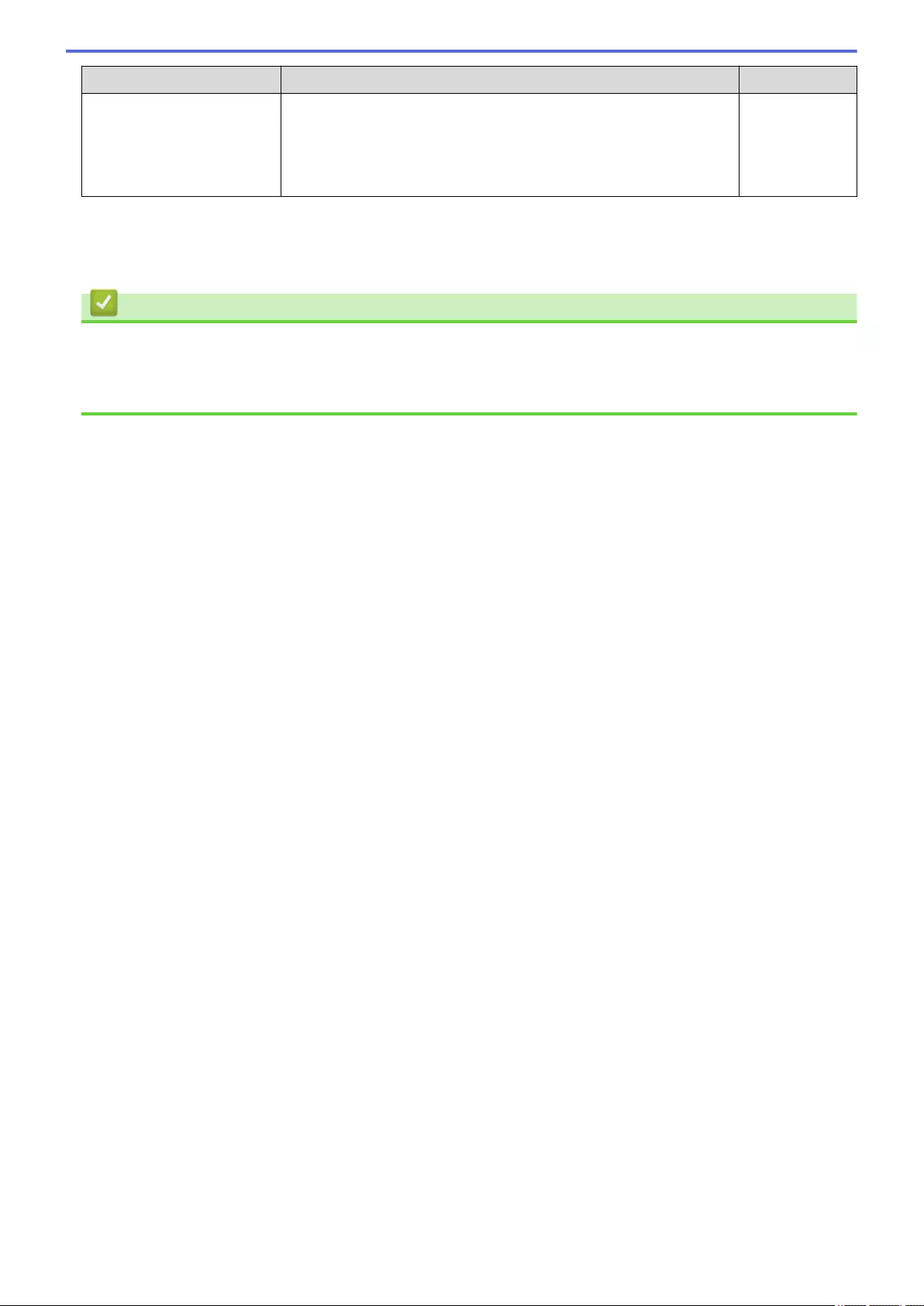
Cause Action Interface
If you have checked and
tried all of the above, but still
cannot complete the Wi-Fi
Direct configuration, do the
following:
• Turn your Brother machine off and back on. Then try to configure
the Wi-Fi Direct settings again.
• If you are using your Brother machine as a client, confirm how
many devices are allowed in the current Wi-Fi Direct network,
and then check how many devices are connected.
Wi-Fi Direct
For Windows
If your wireless connection has been interrupted, and you have checked and tried all of the above, we
recommend using the Network Connection Repair Tool.
Related Information
•Network Problems
•Configure Your Machine for a Wireless Network When the SSID Is Not Broadcast
•Use Wi-Fi Direct®
561
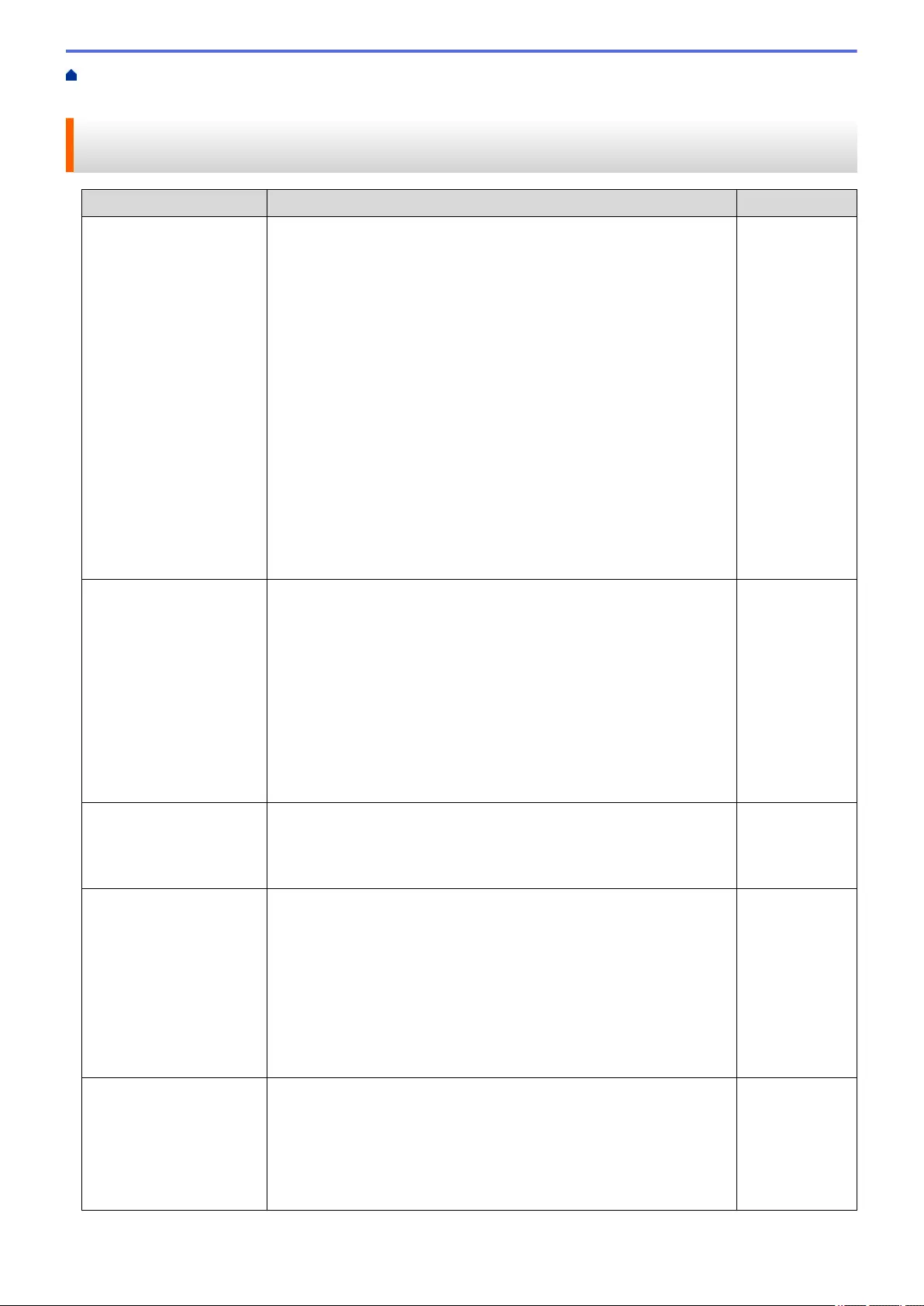
Home > Troubleshooting > Network Problems > My Brother Machine Cannot Print, Scan, or PC-FAX
Receive over the Network
My Brother Machine Cannot Print, Scan, or PC-FAX Receive over the
Network
Cause Action Interface
Your security software
blocks your machine's
access to the network.
(The Network scanning
feature does not work. )
• (Windows)
Configure the third-party Security/Firewall Software to allow
Network scanning. To add port 54925 for Network scanning, type
the information below:
- In Name:
Type any description, for example Brother NetScan.
- In Port number:
Type 54925.
- In Protocol:
UDP is selected.
See the instruction manual that came with your third-party
Security/Firewall Software or contact the software manufacturer.
• (Mac)
Launch ControlCenter2. Click the Model pop-up menu, and then
select Other.... The Device Selector window appears. Reselect
your network machine, make sure Status is idle, and then click
OK.
Wired/Wireless
Your security software
blocks your machine's
access to the network.
(The network PC-Fax
Receive feature does not
work.)
(Windows)
Set the third-party Security/Firewall Software to allow PC-FAX Rx. To
add port 54926 for Network PC-FAX Rx, type the information below:
• In Name:
Type any description, for example Brother PC-FAX Rx.
• In Port number:
Type 54926.
• In Protocol:
UDP is selected.
See the instruction manual that came with your third-party Security/
Firewall Software or contact the software manufacturer.
Wired/Wireless
Your security software
blocks your machine's
access to the network.
Some security software might block access without showing a security
alert dialog box even after successful installation.
To allow access, see the instructions for your security software or ask
the software manufacturer.
Wired/Wireless
Your Brother machine was
not assigned an available
IP address.
• Confirm the IP address and the Subnet Mask.
Verify that both the IP addresses and Subnet Masks of your
computer and the Brother machine are correct and located on the
same network.
For more information about how to verify the IP address and the
Subnet Mask, ask your network administrator.
• (Windows)
Confirm the IP address and the Subnet Mask using the Network
Connection Repair Tool.
Wired/Wireless
The failed print job is still
in your computer's print
queue.
• If the failed print job is still in your computer's print queue, delete it.
• Otherwise, double-click the printer icon in the following folder and
cancel all documents:
- (Windows XP/Windows Server 2003)
Click Start > Printers and Faxes.
- (Windows Vista)
Wired/Wireless
562

Cause Action Interface
Click (Start) > Control Panel > Hardware and Sound >
Printers.
- (Windows 7)
Click (Start) > Devices and Printers > Printers and
Faxes.
- (Windows 8)
Move your mouse to the lower right corner of your desktop.
When the menu bar appears, click Settings > Control Panel.
In the Hardware and Sound group, click View devices and
printers > Printers.
- (Windows Server 2008)
Click Start > Control Panel > Printers.
- (Windows Server 2012)
Move your mouse to the lower right corner of your desktop.
When the menu bar appears, click Settings > Control Panel.
In the Hardware group, click View devices and printers >
Printers.
- (Windows Server 2012 R2)
Click Control Panel on the Start screen. In the Hardware
group, click View devices and printers.
- (OS X v10.8.5)
Click System Preferences > Print & Scan.
- (OS X v10.9.x, 10.10.x)
Click System Preferences > Printers & Scanners.
Your Brother machine is
not connected to the
wireless network.
Print the WLAN Report to check the error code on the printed report. Wireless
If you have checked and tried all of the above, but your Brother machine still cannot print and scan, uninstall the
Brother software and drivers and reinstall them.
Related Information
•Network Problems
•Print the WLAN Report
•Wireless LAN Report Error Codes
•Use the Network Connection Repair Tool (Windows)
•I Want to Check that My Network Devices are Working Correctly
563
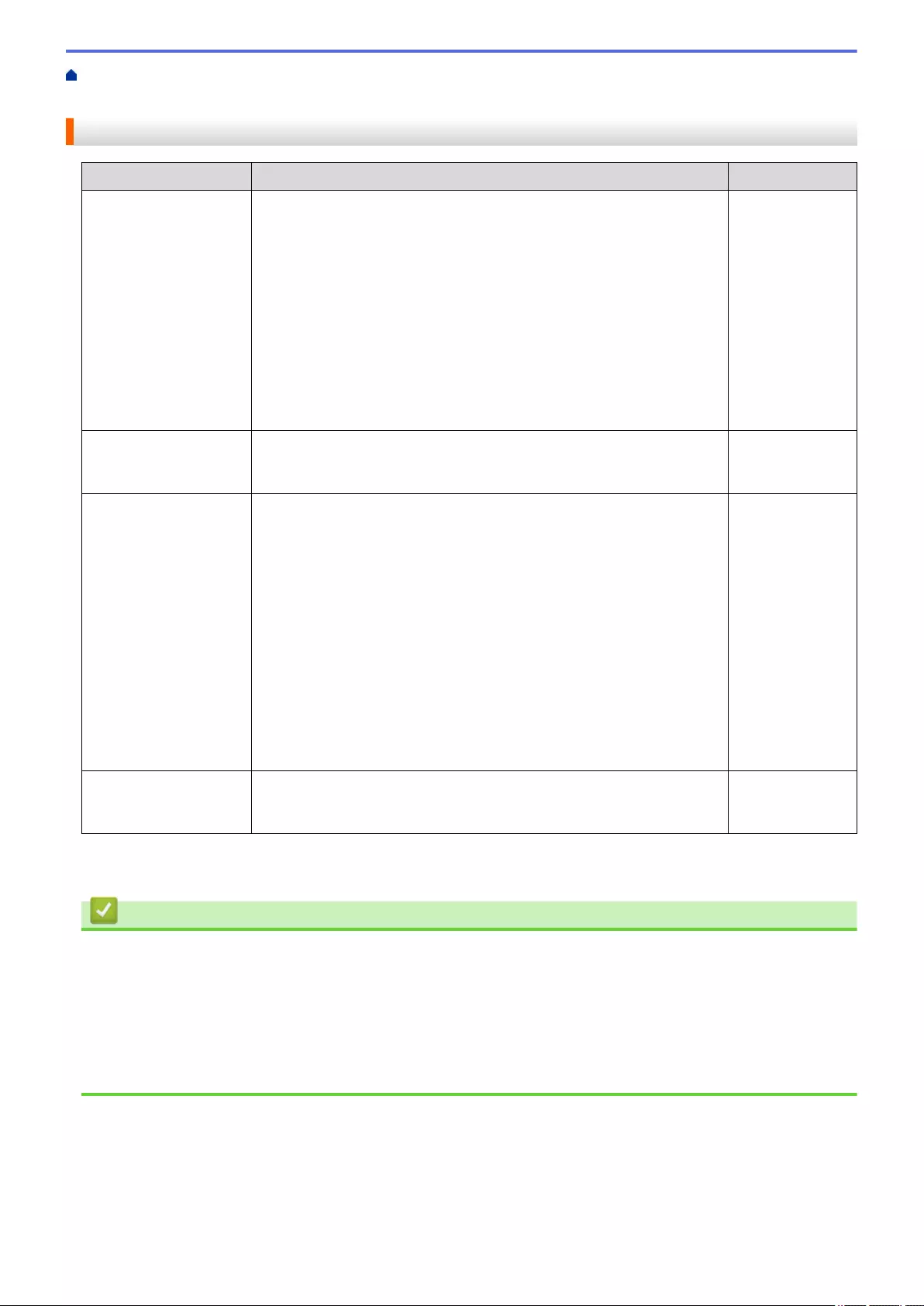
Home > Troubleshooting > Network Problems > I Want to Check that My Network Devices are Working
Correctly
I Want to Check that My Network Devices are Working Correctly
Check Action Interface
Check that your Brother
machine, access point/
router, or network hub is
turned on.
Check the following:
• The power cord is connected correctly and the Brother machine is
turned on.
• The access point/router or hub is turned on and its link button is
blinking.
• All protective packaging has been removed from the machine.
• The toner cartridge and drum unit are installed correctly.
• The front and back covers are fully closed.
• Paper is inserted correctly in the paper tray.
• (For wired networks) A network cable is securely connected to the
Brother machine and to the router or hub.
Wired/Wireless
Check the Link Status
in the Network
Configuration Report.
Print the Network Configuration Report and check that Ethernet Link
Status or Wireless Link Status is Link OK.
Wired/Wireless
Check that you can
"ping" the Brother
machine from your
computer.
Ping the Brother machine from your computer using the IP address or
the node name in the Windows command prompt or Mac Terminal
application:
ping <ipaddress> or <nodename>.
• Successful: Your Brother machine is working correctly and
connected to the same network as your computer.
• Unsuccessful: Your Brother machine is not connected to the same
network as your computer.
(Windows)
Ask the network administrator and use the Network Connection Repair
Tool to fix the IP address and the subnet mask.
(Mac)
Confirm that the IP address and the Subnet Mask are set correctly.
Wired/Wireless
Check that your Brother
machine is connected to
the wireless network.
Print the WLAN Report to check the error code on the printed report. Wireless
If you have checked and tried all of the above but you are still having problems, see the instructions supplied with
your wireless LAN access point/router to find the SSID and the Network Key information and set them correctly.
Related Information
•Network Problems
•Print the Network Configuration Report
•Print the WLAN Report
•Wireless LAN Report Error Codes
•Use the Network Connection Repair Tool (Windows)
•My Brother Machine Cannot Print, Scan, or PC-FAX Receive over the Network
564
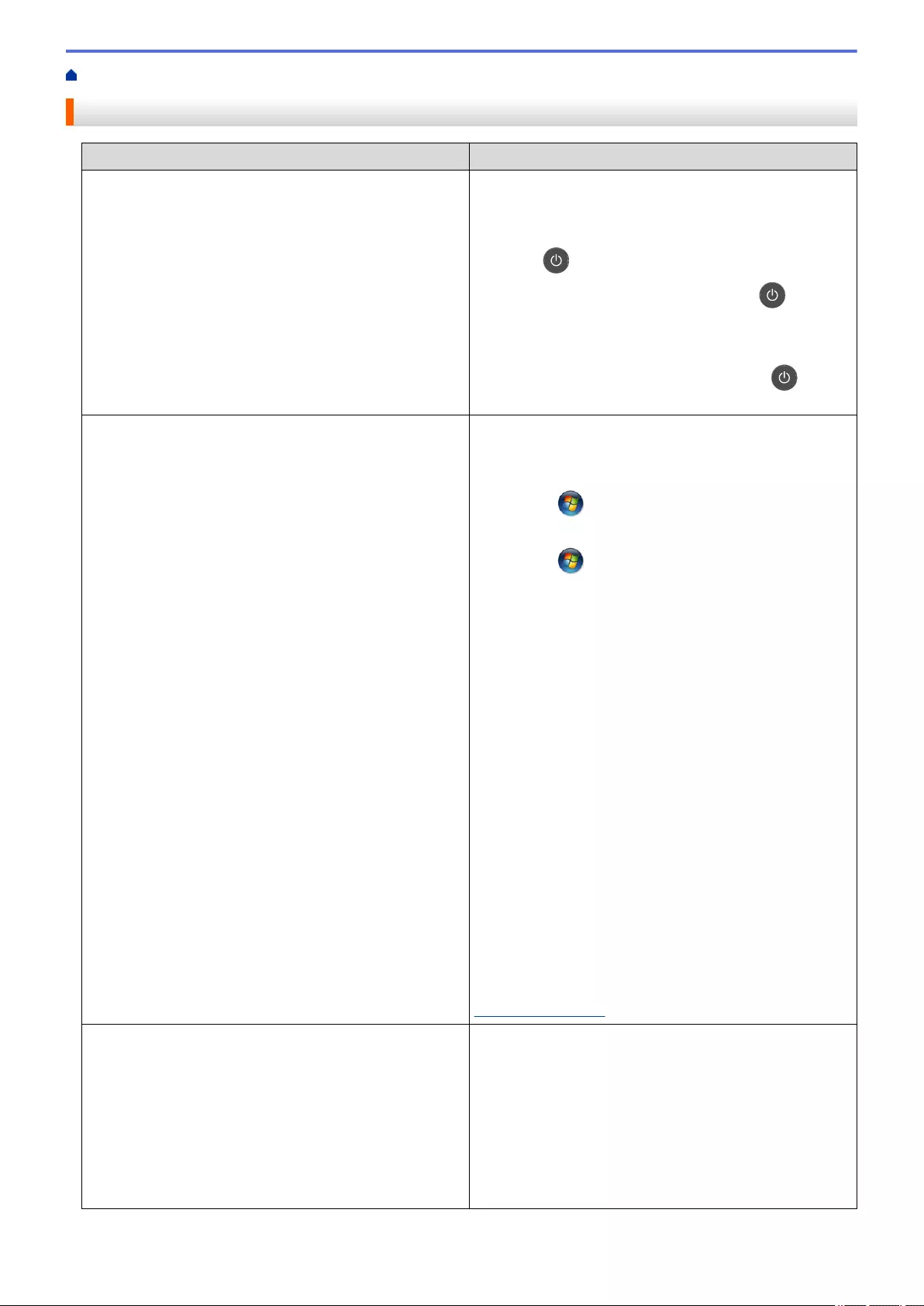
Home > Troubleshooting > Other Problems
Other Problems
Difficulties Suggestions
The machine will not turn on. Adverse conditions on the power connection (such as
lightning or a power surge) may have triggered the
machine’s internal safety mechanisms. Unplug the power
cord. Wait for ten minutes, then plug in the power cord
and press to turn on the machine.
If the problem is not solved, press and hold to turn off
the machine. If you are using a backup battery or surge
suppressor device, disconnect it to make sure it is not the
problem. Plug the machine’s power cord directly into a
different known working wall outlet and press to turn
on the machine.
The machine cannot print EPS data that includes binary
with the BR-Script3 printer driver.
(Windows)
To print EPS data, do the following:
1. For Windows 7 and Windows Server 2008 R2:
Click the (Start) button > Devices and Printers.
For Windows Vista and Windows Server 2008:
Click the (Start) button > Control Panel >
Hardware and Sound > Printers.
For Windows XP and Windows Server 2003:
Click the Start button > Printers and Faxes.
For Windows 8 and Windows Server 2012:
Move your mouse to the lower right corner of your
desktop. When the menu bar appears, click Settings
> Control Panel. In the Hardware and Sound 1
group, click View devices and printers.
For Windows Server 2012 R2:
Click Control Panel on the Start screen. In the
Hardware group, click View devices and printers.
2. Right-click the Brother XXX-XXXX BR-Script3 icon,
select Printer properties.
3. From the Device Settings tab, choose TBCP (Tagged
binary communication protocol) in Output Protocol.
(Mac)
If your machine is connected to a computer with a USB
interface, you cannot print EPS data that includes binary.
You can print the EPS data at the machine through a
network. For help installing the BR-Script3 printer driver
through the network, go to the Brother Solutions Center at
support.brother.com.
The Brother software cannot be installed. (Windows)
If the Security Software warning appears on the computer
screen during the installation, change the Security
Software settings to permit the Brother product setup
program or other program to run.
(Mac)
If you are using a firewall function of anti-spyware or
antivirus security software, temporarily disable it and then
install the Brother software.
565
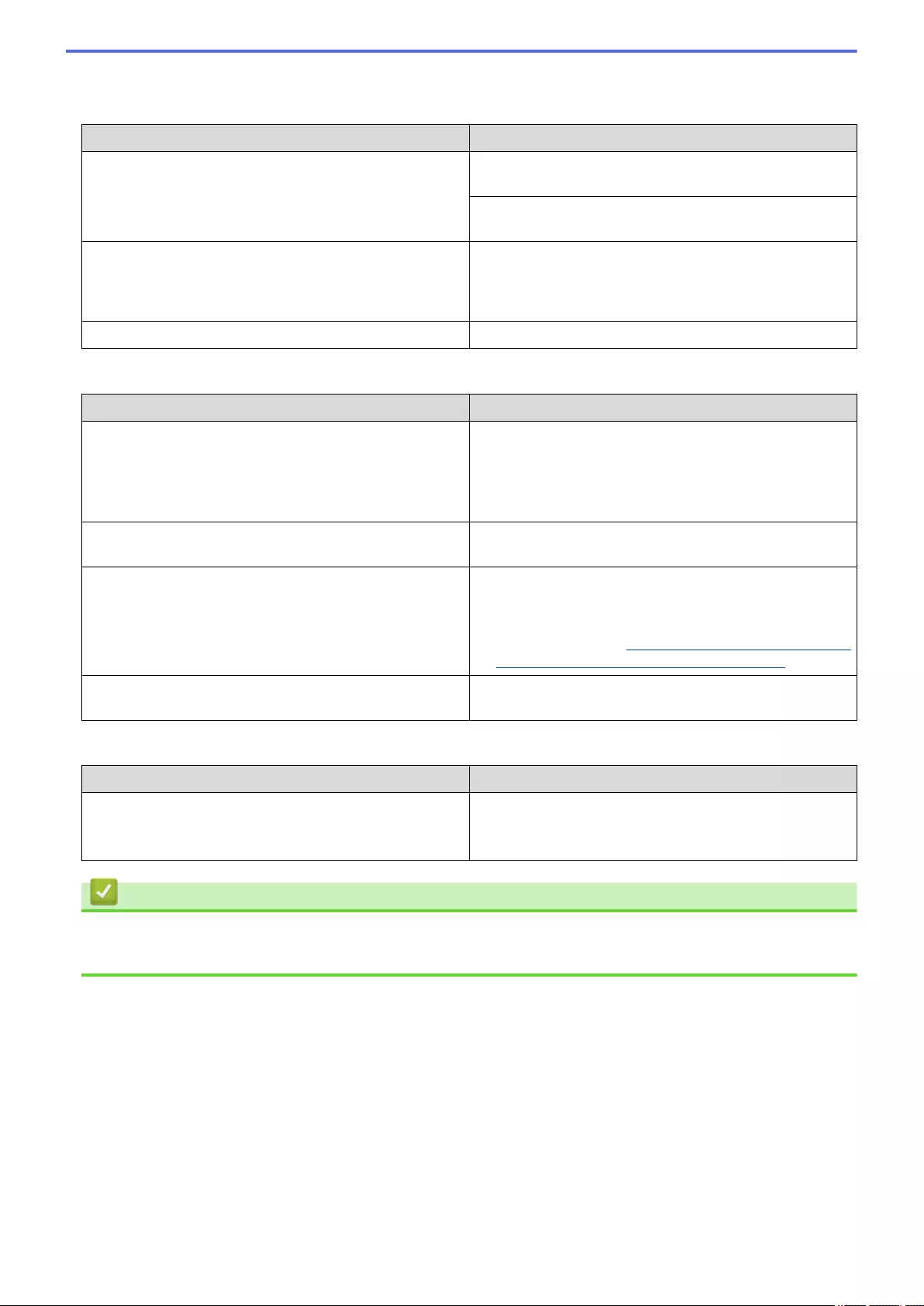
1For Windows Server 2012: Hardware and Sound
Copying difficulties
Difficulties Suggestions
Cannot make a copy. Make sure you pressed Copy and the machine is in Copy
mode.
Contact your administrator to check your Secure Function
Lock Settings.
Vertical black line appears in copies. Black vertical lines on copies are typically caused by dirt
or correction fluid on the glass strip, or the corona wire is
dirty. Clean the glass strip and scanner glass and the
white bar and white plastic above them.
Copies are blank. Make sure you are loading the document correctly.
Scanning difficulties
Difficulties Suggestions
TWAIN or WIA errors appear when starting to scan.
(Windows)
Make sure the Brother TWAIN or WIA driver is selected
as the primary source in your scanning application. For
example, in Nuance™ PaperPort™ 14SE, click Desktop >
Scan Settings > Select to choose the Brother
TWAIN/WIA driver.
TWAIN or ICA errors appear when starting to scan. (Mac) Make sure the Brother TWAIN driver is selected as the
primary source.
OCR does not work. Try increasing the scanning resolution.
• (Mac users) (PageManager users)
Make sure you downloaded and installed Presto!
PageManager from http://nj.newsoft.com.tw/download/
brother/PM9SEInstaller_BR_multilang2.dmg.
Cannot scan. Contact your administrator to check your Secure Function
Lock Settings.
Software difficulties
Difficulties Suggestions
Cannot install software or print. (Windows )
Run the install program again. This program will repair
and reinstall the software.
Related Information
•Troubleshooting
•Clean the Scanner
566

Home > Troubleshooting > Check the Machine Information
Check the Machine Information
Follow these instructions to check your Brother machine's serial number and firmware version.
1. Press [Settings] > [All Settings] > [Machine Info.].
2. Press one of the following options:
Option Description
Serial No. Check your machine's serial number.
Firmware Version Check your machine's firmware version.
Page Counter Check the number of total pages the machine has printed.
Parts Life Check the percentage of the supplies' life that remains available.
3. Press .
Related Information
•Troubleshooting
567
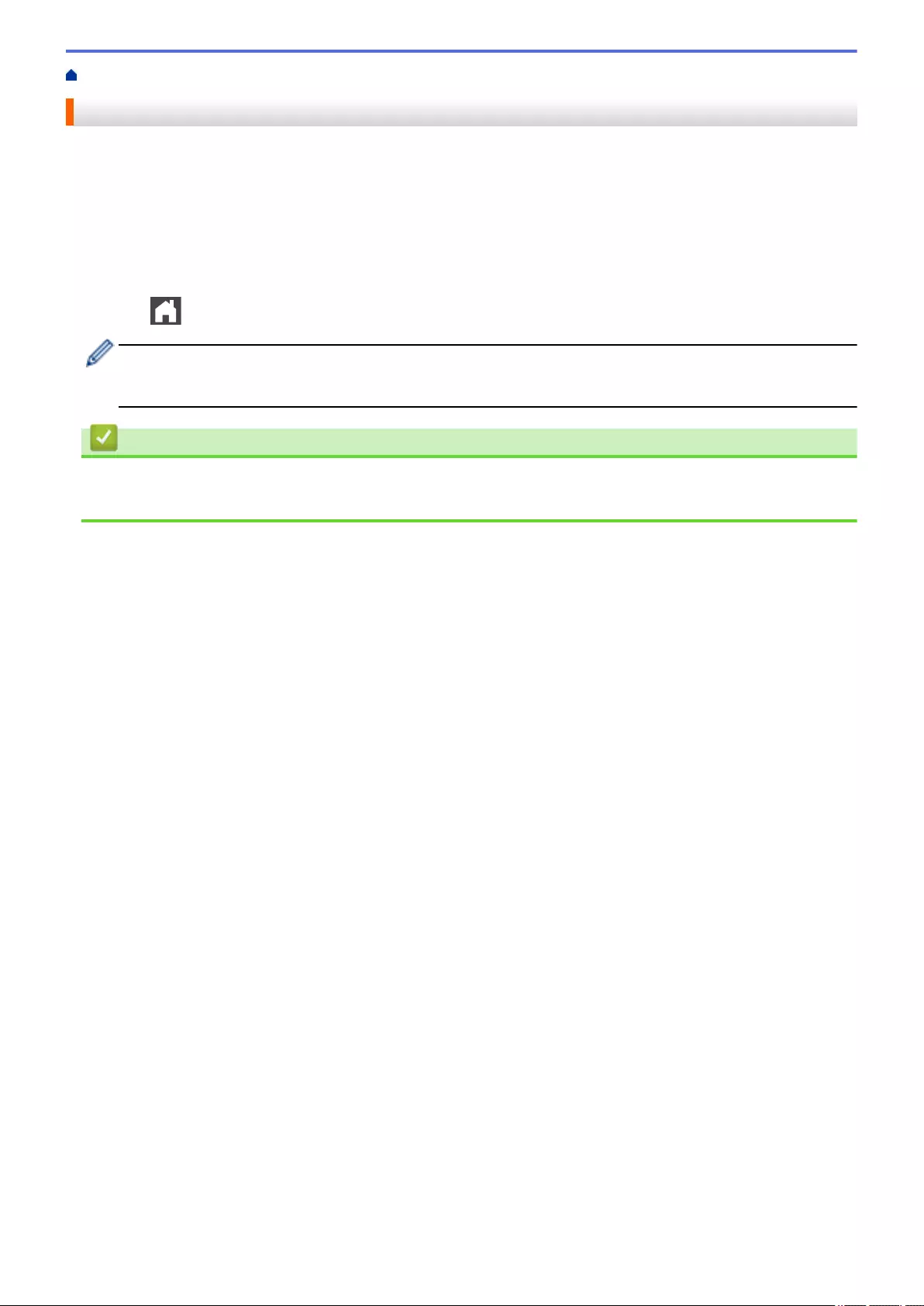
Home > Troubleshooting > Reset Your Brother Machine
Reset Your Brother Machine
1. Press [Settings] > [All Settings] > [Initial Setup] > [Reset].
2. Swipe up or down or press a or b to display the type of reset functions, and then press the reset function you
want to use.
3. [Machine will reboot after resetting. Press [OK] for 2 seconds to confirm.]
appears. Press [OK] for two seconds to confirm.
The machine will restart.
4. Press .
You can also reset the Network settings by pressing [Settings] > [All Settings] > [Network]
> [Network Reset].
Related Information
•Troubleshooting
•Reset Functions Overview
568

Home > Troubleshooting > Reset Your Brother Machine > Reset Functions Overview
Reset Functions Overview
The following reset functions are available:
Unplug the interface cable before you choose Network Settings Reset function, All Settings Reset function
or Factory Reset function.
1. Machine Reset
Reset all the machine’s settings that you have changed, such as Date and Time and Ring Delay.
The Address Book, fax reports, and Call history will remain. (For MFC Models)
2. Network Settings Reset (For Network Models)
Reset the print server back to its default factory settings (includes Password and IP Address information).
3. Address Book and Fax Settings Reset (For MFC Models)
This function resets the following settings:
• Address Book
(Addresses and Groups)
• Programmed fax jobs in the memory
(Delayed Fax)
• Station ID
(name and number)
• Coverpage Message
• Fax receive settings
(Remote Access Code, Fax Storage, Fax Forwarding, Paging, and PC-Fax Receive (Windows only))
• Report
(Transmission Verification Report / Tel Index List / Fax Journal)
• Setting Lock password
4. All Settings Reset
Reset all the machine's settings back to the settings that were set at the factory.
All Settings Reset takes less time than Factory Reset.
5. Factory Reset
Use the Settings Reset function to reset all machine's settings to the settings originally set at the factory.
Factory Reset takes more time than All Settings Reset.
Brother strongly recommends you perform this operation when you dispose of the machine.
Unplug the interface cable before you choose Network Settings Reset function, All Settings Reset function
or Factory Reset function.
Related Information
•Reset Your Brother Machine
569
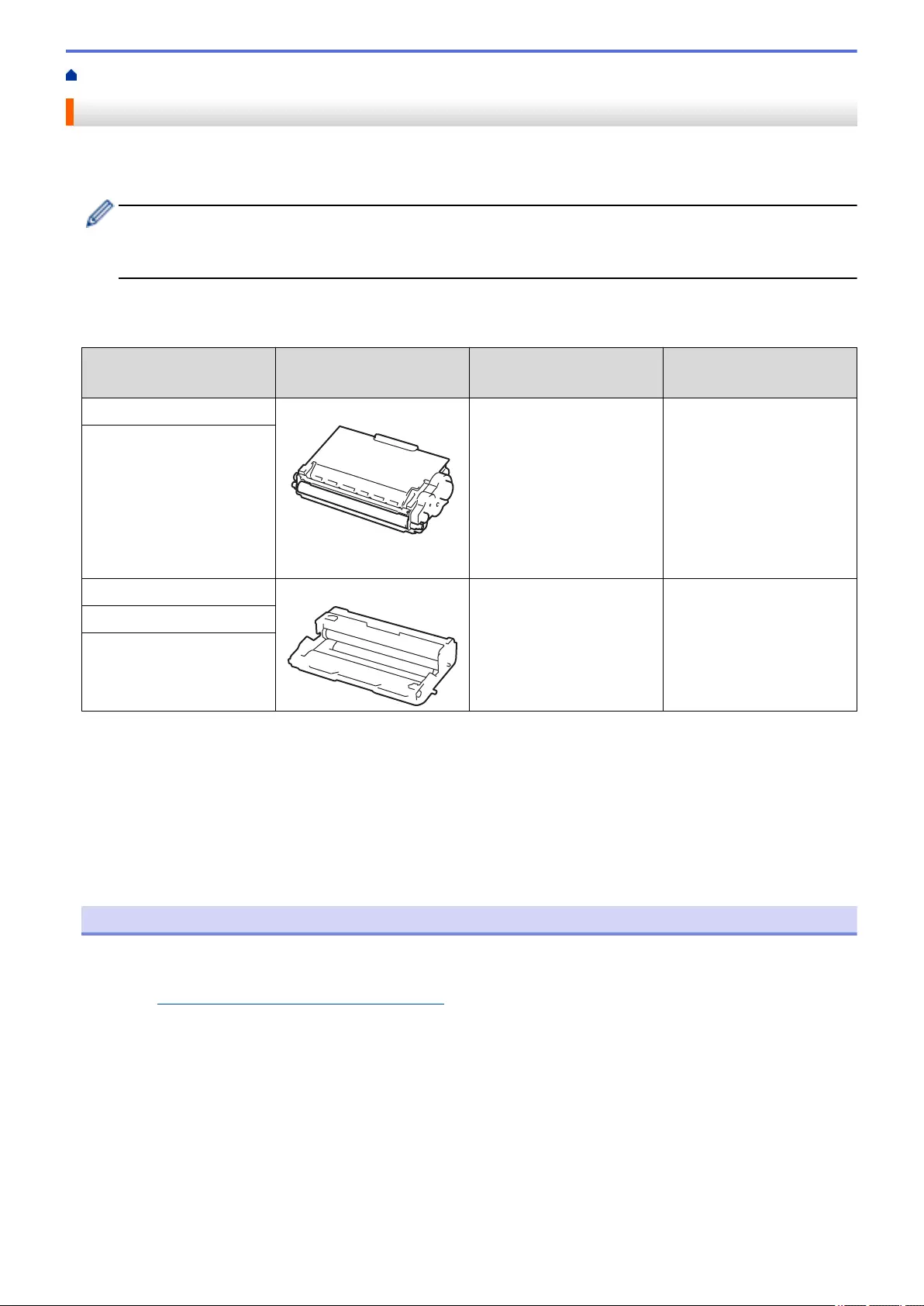
Home > Routine Maintenance > Replace Supplies
Replace Supplies
You must replace supplies when the machine indicates that the life of the supply is over.
Using non-Brother supplies may affect the print quality, hardware performance, and machine reliability.
• The toner cartridge and drum unit are two separate supplies. Make sure both are installed as an
assembly.
• The order number of supplies may vary depending on the country.
This table lists the messages to replace supplies when they reach their end of life. To avoid any inconvenience,
you may want to buy spare supplies to keep as replacements before the machine stops printing.
Indication Supply Order No. Approximate Life
(page yield)
Toner Low Toner cartridge TN-820 1
TN-850 2
TN-880 3
TN-890 4
Approximately 3,000 pages
1 5 6
Approximately 8,000 pages
2 5 6
Approximately 12,000
pages 3 5 6
Approximately 20,000
pages 4 5 6
Replace Toner
Drum ! Drum unit DR-890 Approximately 50,000
pages 7
Drum End Soon
Replace Drum
1Standard toner cartridge
2High yield toner cartridge
3Super high yield toner cartridge(Available only for certain models)
4Ultra high yield toner cartridge(Available only for certain models)
5Letter or A4 size 1-sided pages.
6Approximate cartridge yield is declared in accordance with ISO/IEC 19752.
7Approximately 50,000 pages based on 3 pages per job and 30,000 pages based on 1 page per job [A4/letter simplex pages]. The number
of pages may be affected due to a variety of factors including but not limited to media type and media size.
NOTE
• Be sure to seal up the used supplies tightly in a bag so that toner powder does not spill out of the
cartridge.
• Visit http://www.brother.com/original/index.html for instructions on how to return your used supplies to the
Brother collection program. If you choose not to return your used supply, discard the used supply
according to local regulations, keeping it separate from domestic waste. If you have questions, contact
your local waste disposal office.
• We recommend placing used supplies on a piece of paper to prevent accidentally spilling or scattering
the material inside.
• If you use paper that is not a direct equivalent for the recommended print media, the life of supplies and
machine parts may be reduced.
• The projected life for each of the toner cartridges is based on ISO/IEC 19752. Frequency of replacement
will vary depending on the print volume, percentage of coverage, types of media used, and powering
on/off the machine.
571
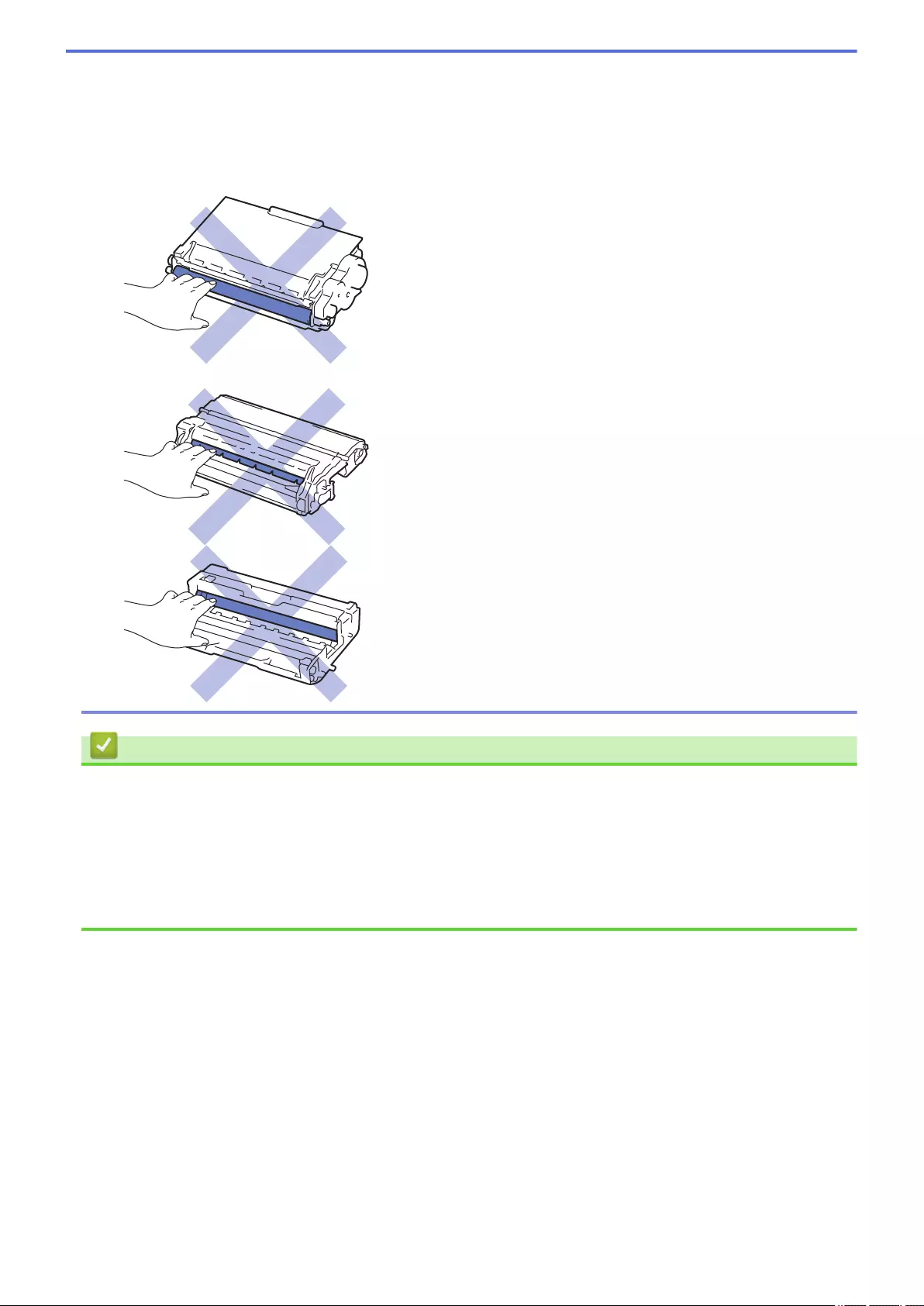
• Frequency of replacing supplies except toner cartridges will vary depending on the print volume, types of
media used, and powering on/off the machine.
• Handle the toner cartridge carefully. If toner scatters on your hands or clothes, immediately wipe or wash
it off with cold water.
• To avoid print quality problems, DO NOT touch the shaded parts shown in the illustrations.
Toner cartridge
Drum unit
Related Information
•Routine Maintenance
•Replace the Toner Cartridge
•Replace the Drum Unit
•Reset the Drum Counter
•Error and Maintenance Messages
•Supplies
572

Home > Routine Maintenance > Replace Supplies > Replace the Toner Cartridge
Replace the Toner Cartridge
1. Make sure the machine is turned on.
2. Open the front cover.
3. Remove the toner cartridge and drum unit assembly from the machine.
4. Push down the green lock lever and take the toner cartridge out of the drum unit.
5. Unpack the new toner cartridge.
6. Remove the protective cover.
7. Put the new toner cartridge firmly into the drum unit until you hear it lock into place.
573
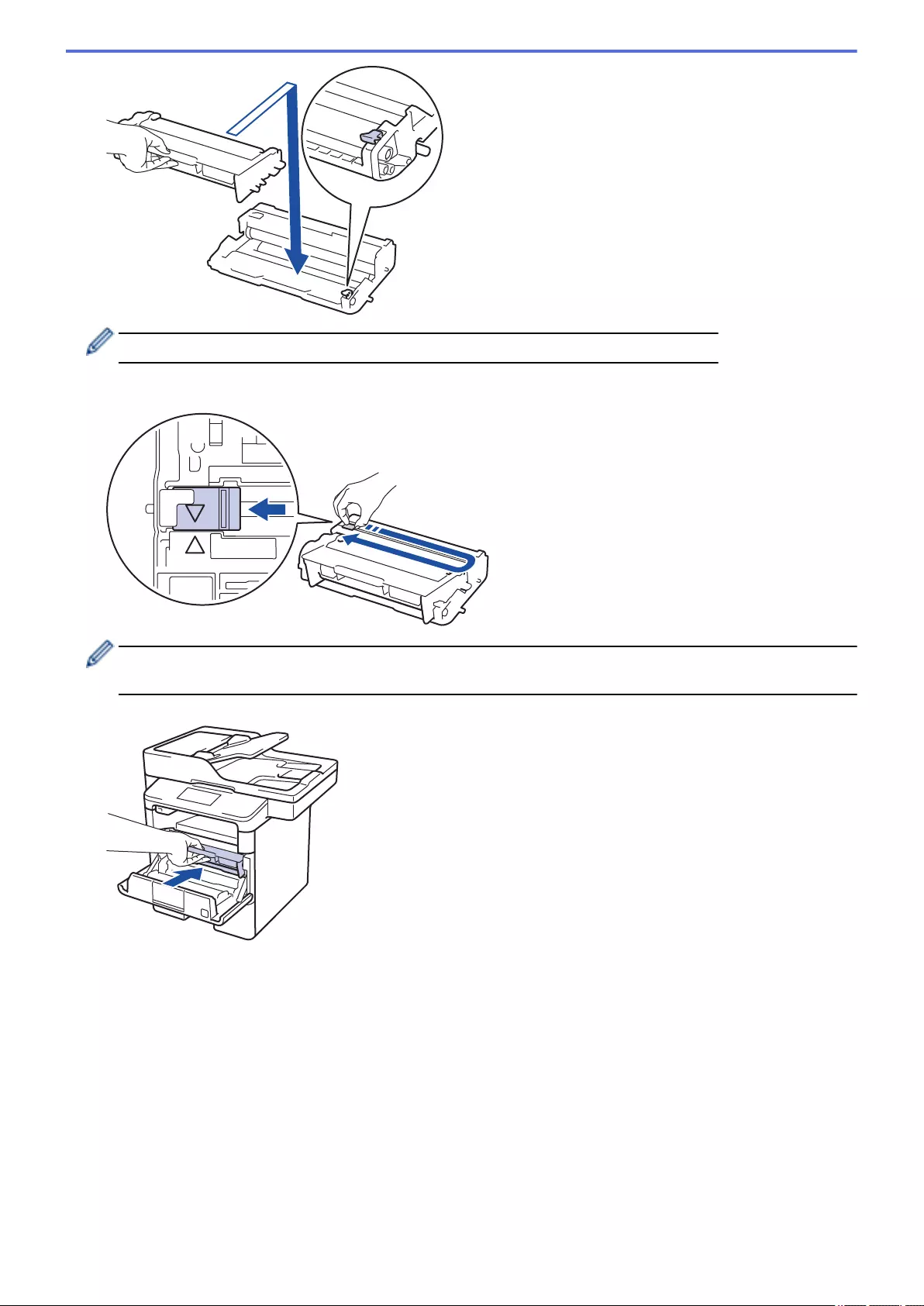
Make sure you put the toner cartridge in correctly or it may separate from the drum unit.
8. Clean the corona wire inside the drum unit by gently sliding the green tab from left to right and right to left
several times.
Be sure to return the tab to the Home position (a). The arrow on the tab must be aligned with the arrow on
the drum unit. If it is not, printed pages may have a vertical stripe.
9. Install the toner cartridge and drum unit assembly back into the machine.
10. Close the front cover of the machine.
574
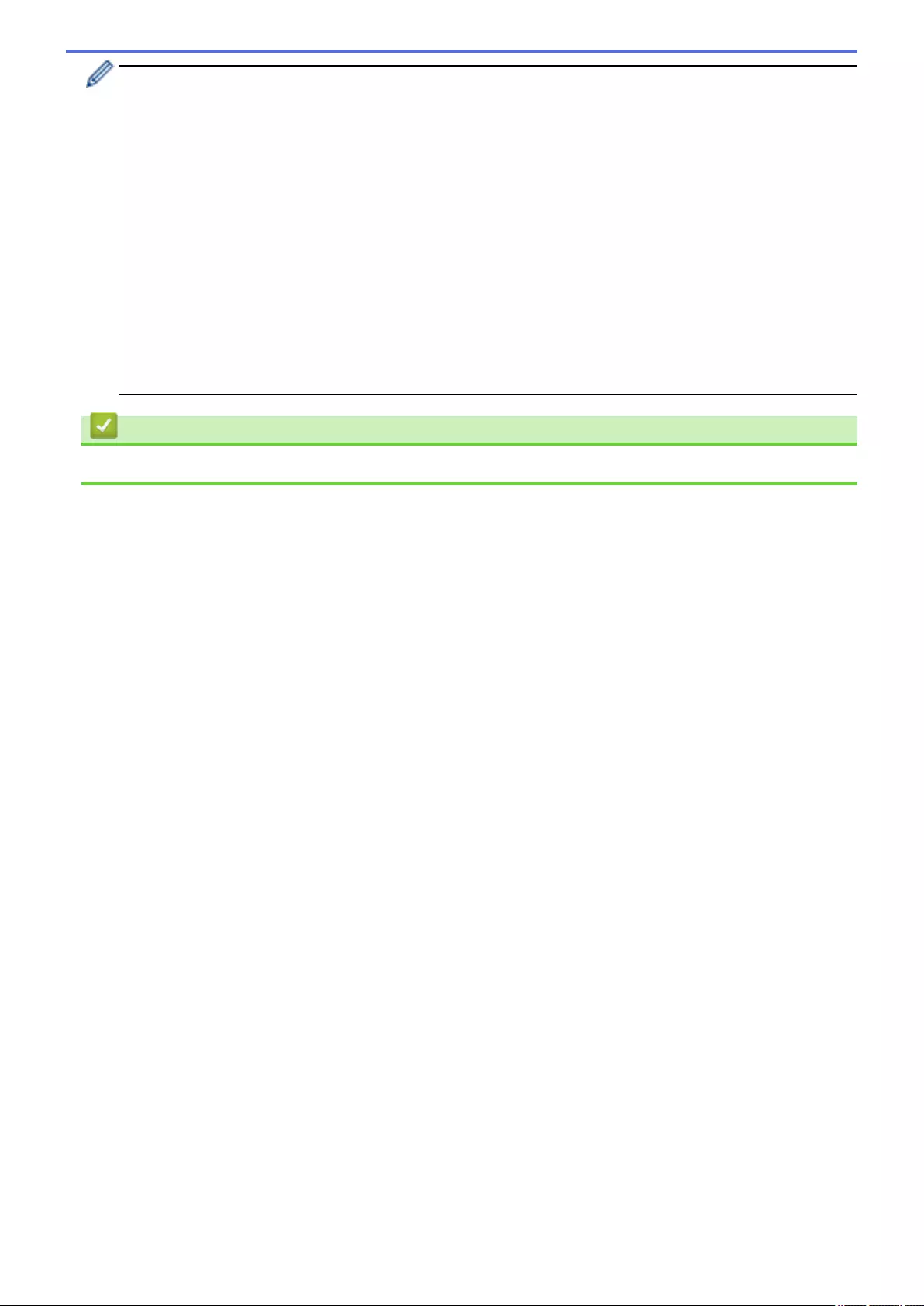
• After replacing a toner cartridge, DO NOT turn off the machine or open the front cover until the
machine's display returns to Ready Mode.
• The toner cartridge that comes with your Brother machine is a Starter toner cartridge.
• It is a good idea to keep a new toner cartridge ready for use when you see the Toner Low warning.
• To ensure high quality printing, we recommend using only Genuine Brother Brand toner cartridges.
When you want to buy toner cartridges, contact Brother Customer Service.
• DO NOT unpack the new toner cartridge until you are ready to install it.
• If a toner cartridge is left unpacked for a long time, the toner life will be shortened.
• Brother strongly recommends you DO NOT refill the toner cartridge provided with your machine. We
also strongly recommend you continue to use only Genuine Brother Brand replacement toner
cartridges. Use or attempted use of third party toner and/or cartridges in the Brother machine may
cause damage to the machine and/or may result in unsatisfactory print quality. Our limited warranty
coverage does not apply to any problem that is caused by the use of third party toner and/or cartridges.
To protect your investment and obtain premium performance from the Brother machine, we strongly
recommend the use of Genuine Brother Supplies.
Related Information
•Replace Supplies
575
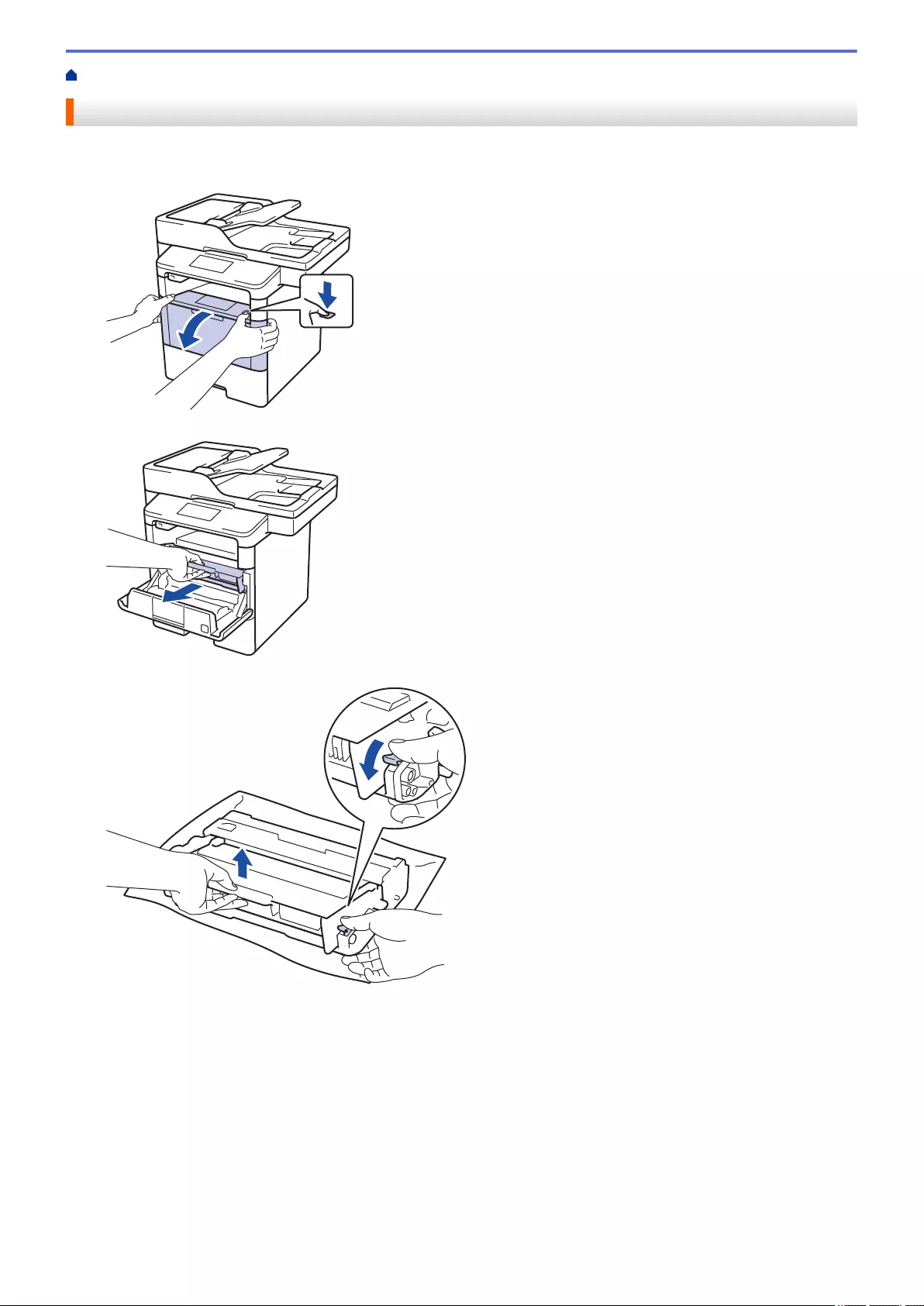
Home > Routine Maintenance > Replace Supplies > Replace the Drum Unit
Replace the Drum Unit
1. Make sure the machine is turned on.
2. Open the front cover.
3. Remove the toner cartridge and drum unit assembly from the machine.
4. Push down the green lock lever and take the toner cartridge out of the drum unit.
5. Unpack the new drum unit.
6. Put the toner cartridge firmly into the new drum unit until you hear it lock into place.
576
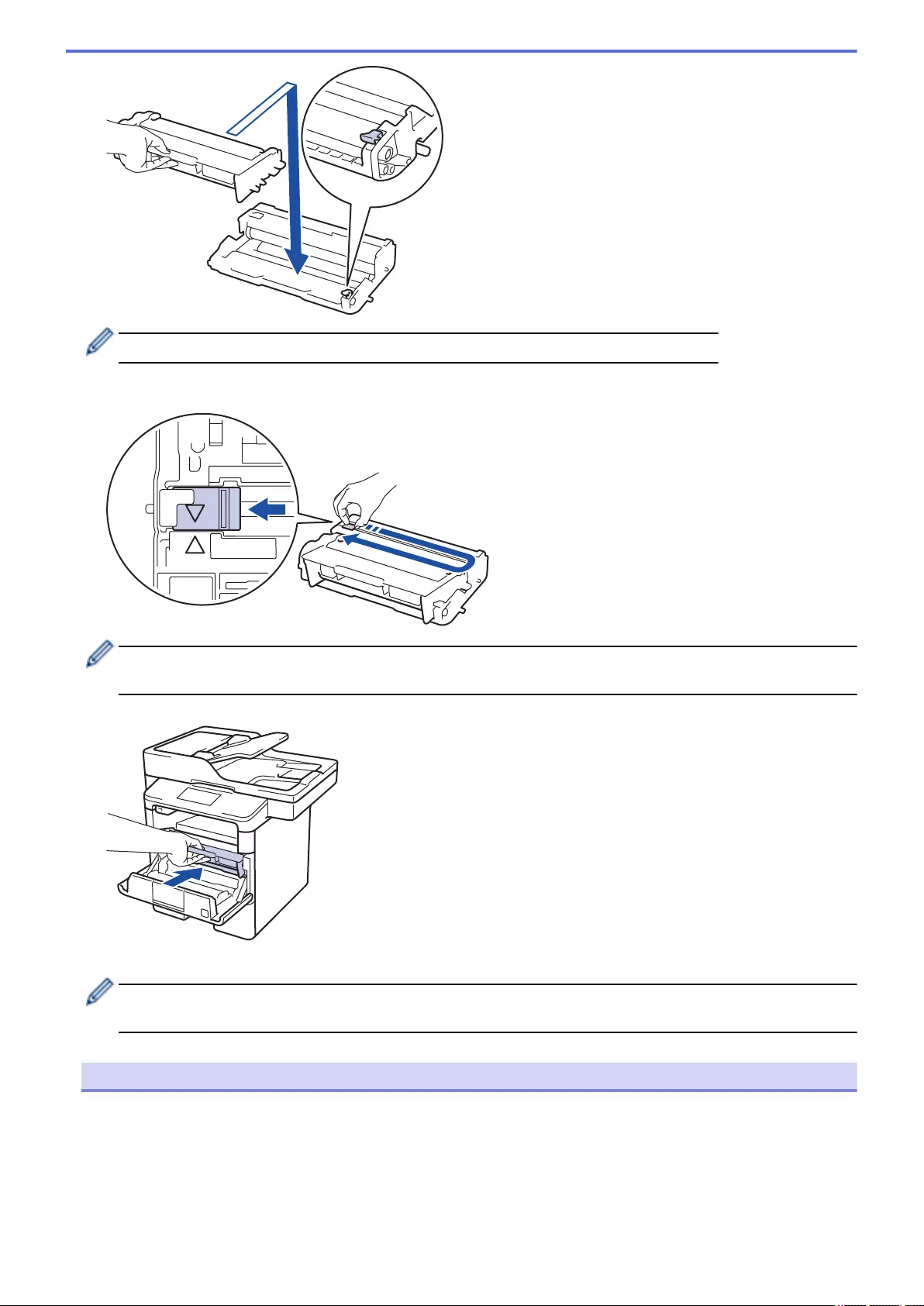
Make sure you put the toner cartridge in correctly or it may separate from the drum unit.
7. Clean the corona wire inside the drum unit by gently sliding the green tab from left to right and right to left
several times.
Be sure to return the tab to the Home position (a). The arrow on the tab must be aligned with the arrow on
the drum unit. If it is not, printed pages may have a vertical stripe.
8. Install the toner cartridge and drum unit assembly back into the machine.
9. Close the front cover of the machine.
After installing the new drum unit, you must reset the drum counter. See Related Information: Reset the
Drum Counter.
NOTE
• Drum wear and tear occurs due to use and rotation of the drum and interaction with paper, toner and
other materials in the paper path. In designing this product, Brother decided to use the number of
rotations of the drum as a reasonable determinant of the drum life. When a drum reaches the factory-
established rotation limit corresponding to the rated page yield, the product’s LCD will advise you to
replace the drum. The product will continue to function; however, print quality may not be optimal.
• If an unpacked drum unit is placed in direct sunlight (or room light for long periods of time), the unit may
be damaged.
577
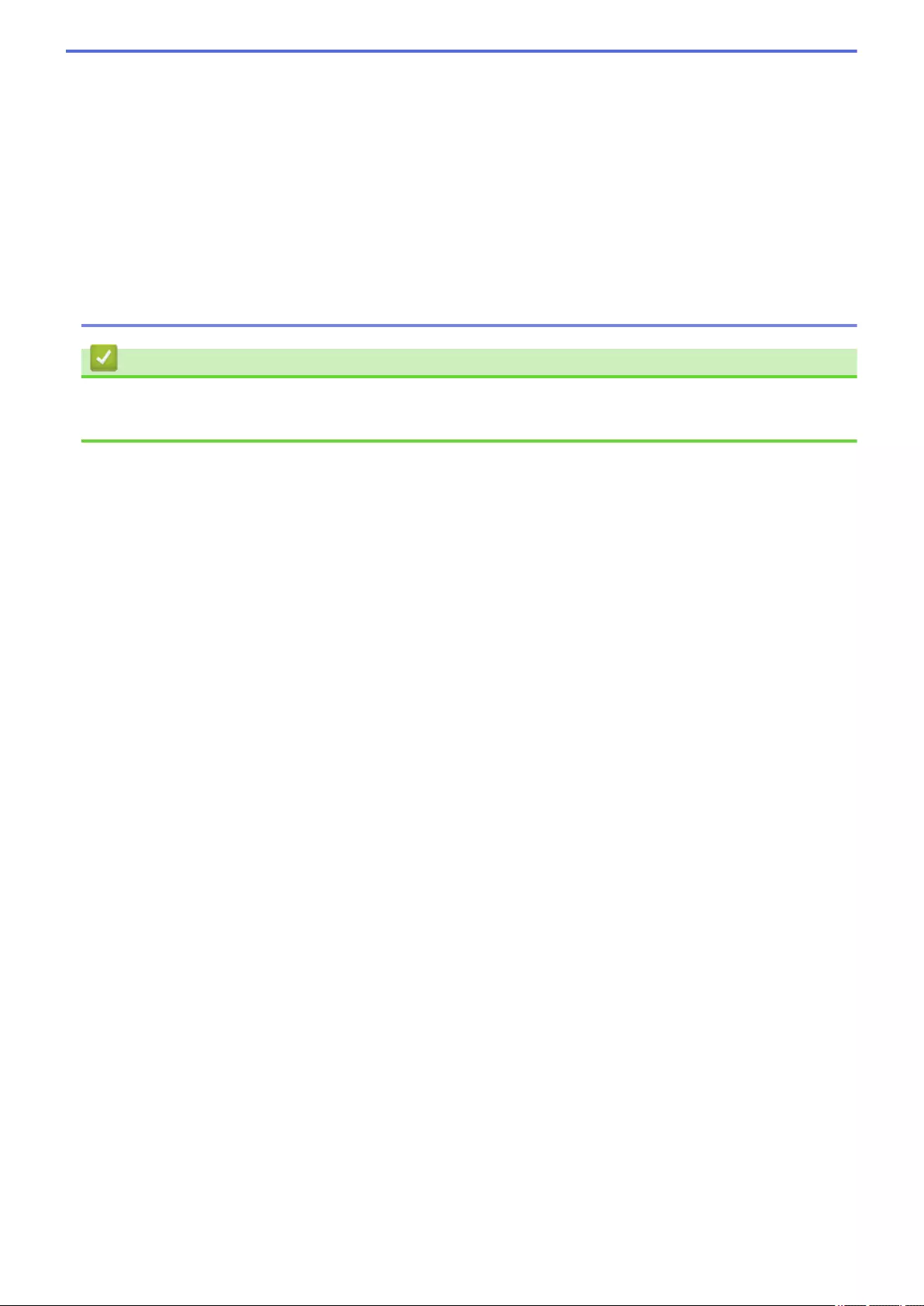
• There are many factors that determine the actual drum life, such as the temperature, humidity, type of
paper, type of toner used and so on. Under ideal conditions, the average drum life is estimated at
approximately 50,000 pages based on 3 pages per job and 30,000 pages based on 1 page per job [A4/
letter simplex pages]. The number of pages may be affected due to a variety of factors including but not
limited to media type and media size.
Because we have no control over the many factors that determine the actual drum life, we cannot
guarantee a minimum number of pages that will be printed by your drum.
• For best performance, use only genuine Brother toner.
• The machine should be used only in a clean, dust-free environment with adequate ventilation.
Printing with a non-Brother drum unit may reduce not only the print quality but also the quality and life of
the machine itself. Warranty coverage does not apply to problems caused by the use of a non-Brother
drum unit.
Related Information
•Replace Supplies
•Reset the Drum Counter
578
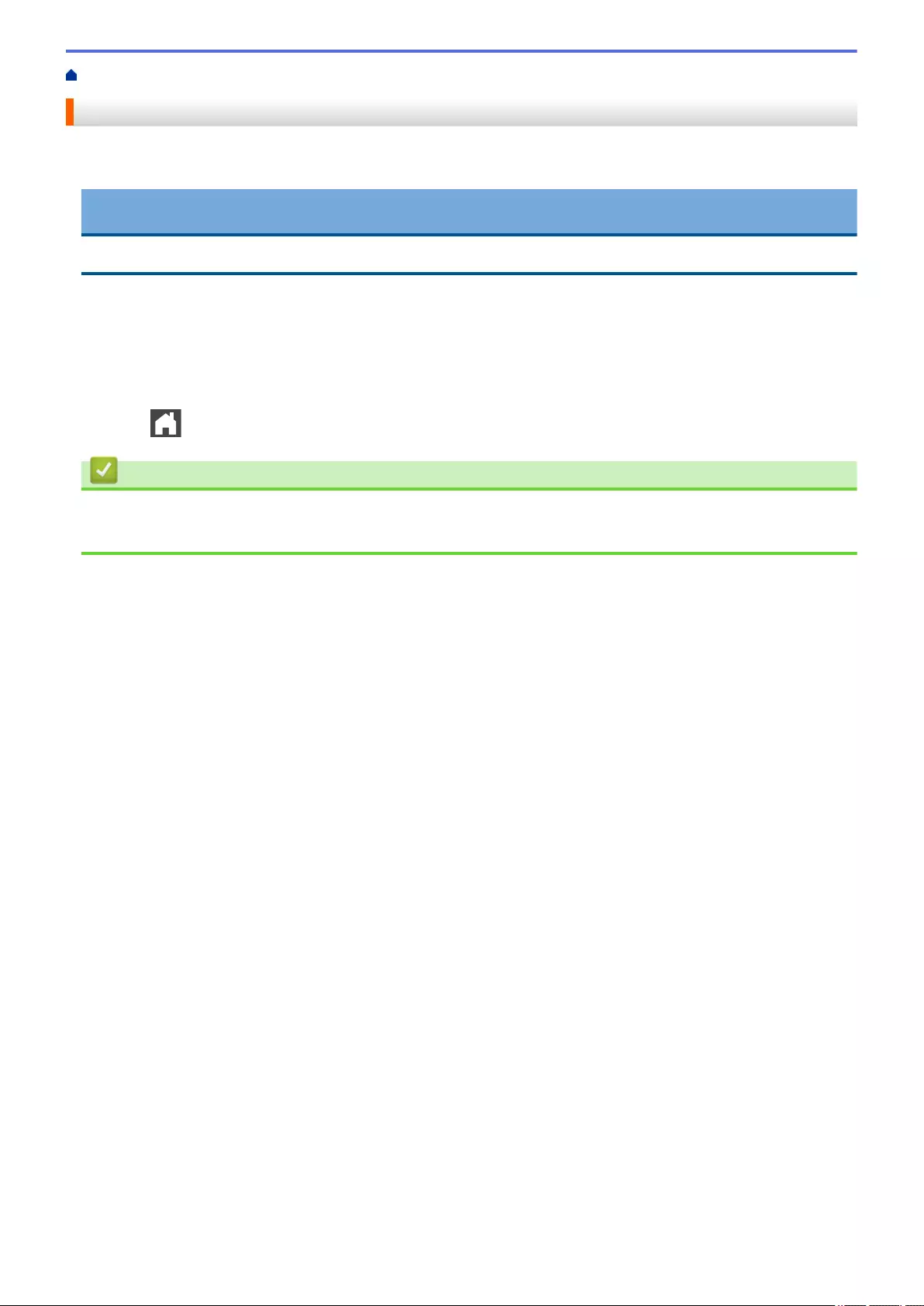
Home > Routine Maintenance > Replace Supplies > Reset the Drum Counter
Reset the Drum Counter
When you replace the drum unit with a new one, you must reset the drum counter by completing the following
steps:
IMPORTANT
DO NOT reset the drum counter unless you are replacing the drum unit.
1. Make sure the machine is turned on.
2. Press [Settings] > [All Settings] > [Machine Info.] > [Parts Life].
3. Press and hold [Drum] until the touchscreen message changes.
4. Press [Yes].
5. Press .
Related Information
•Replace Supplies
•Replace the Drum Unit
579

Home > Routine Maintenance > Clean the Machine
Clean the Machine
Clean the outside and inside of the machine regularly with a dry, lint-free cloth.
When you replace the toner cartridge or the drum unit, make sure you clean the inside of the machine. If printed
pages are stained with toner, clean the inside of the machine with a dry, lint-free cloth.
WARNING
• DO NOT use flammable substances, any type of spray, or an organic solvent/liquid containing alcohol or
ammonia to clean the inside or outside of the product. Doing so could cause a fire. Instead, use only a
dry, lint-free cloth.
IMPORTANT
• DO NOT use isopropyl alcohol to remove dirt from the control panel. It may crack the panel.
• To avoid print quality problems, DO NOT touch the shaded parts shown in the illustrations.
Toner cartridge
Drum unit
Related Information
•Routine Maintenance
•Clean the Scanner
•Clean the Touchscreen LCD
580
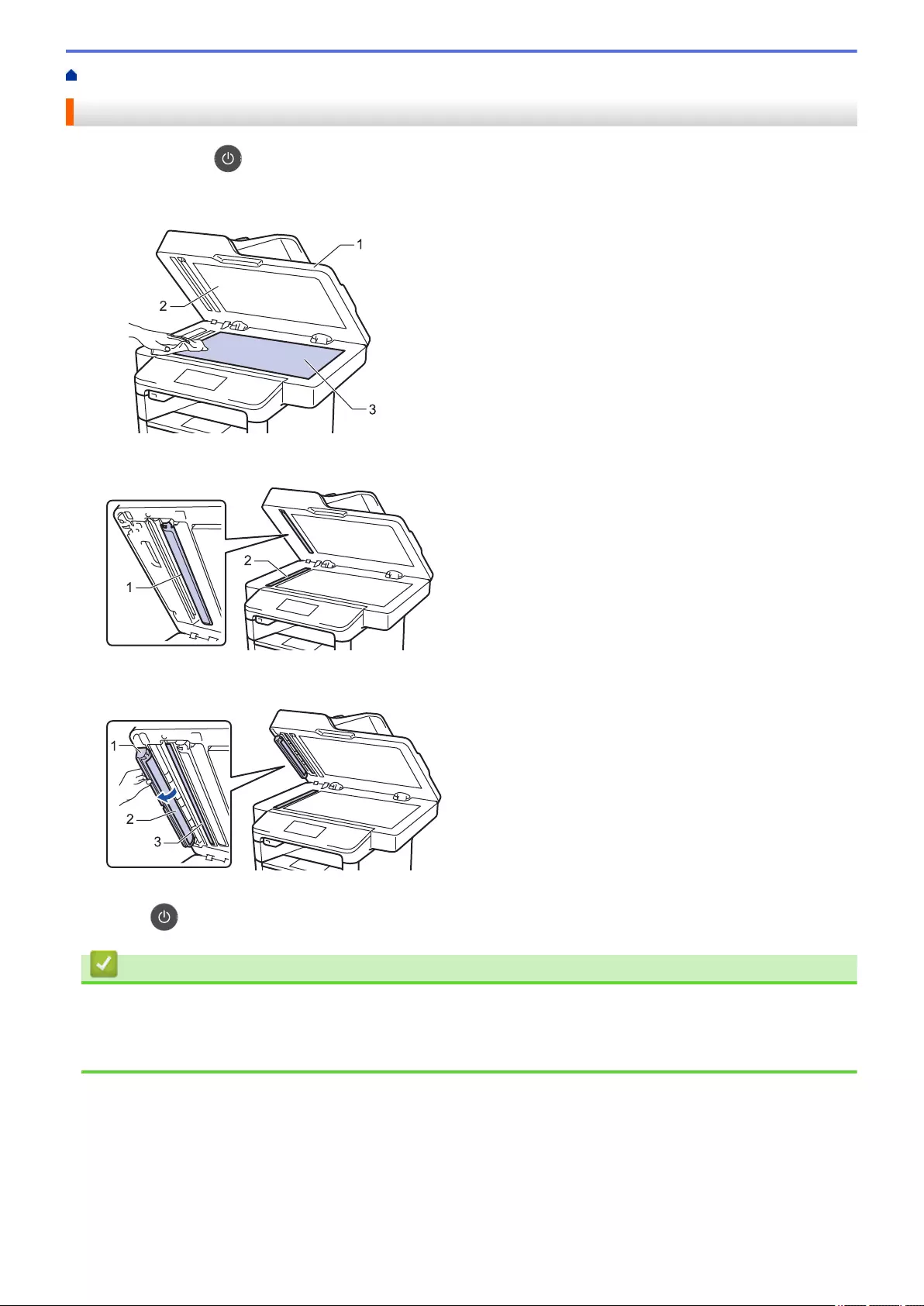
Home > Routine Maintenance > Clean the Machine > Clean the Scanner
Clean the Scanner
1. Press and hold to turn off the machine.
2. Lift the document cover (1). Clean the white plastic surface (2) and scanner glass (3) underneath it with a soft
lint-free cloth moistened with water.
1
2
3
3. In the ADF unit, clean the white bar (1) and the scanner glass strip (2) underneath it with a soft lint-free cloth
moistened with water.
2
1
4. Open the scanner glass cover (1), and then clean the other white bar (2) and scanner glass strip (3)
(supported models only).
3
5. Close the document cover.
6. Press to turn on the machine.
Related Information
•Clean the Machine
•Other Problems
•Telephone and Fax Problems
582

Home > Routine Maintenance > Clean the Machine > Clean the Touchscreen LCD
Clean the Touchscreen LCD
IMPORTANT
DO NOT use any type of liquid cleaners (including ethanol).
1. Press and hold to turn off the machine.
2. Clean the touchscreen with a dry, soft lint-free cloth.
3. Press to turn on the machine.
Related Information
•Clean the Machine
583
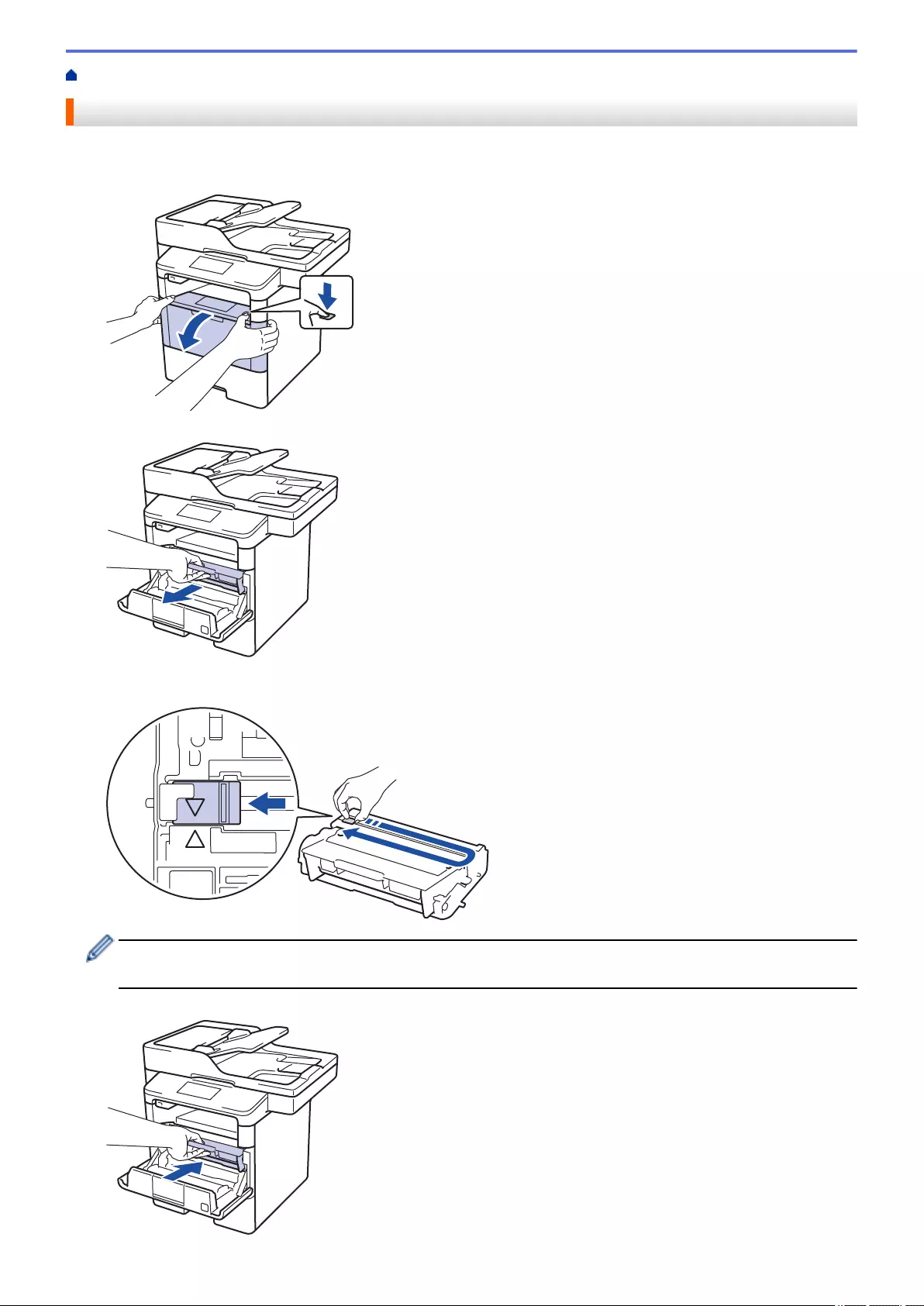
Home > Routine Maintenance > Clean the Machine > Clean the Corona Wire
Clean the Corona Wire
If you have print quality problems or the control panel displays [Drum !] status, clean the corona wire.
1. Open the front cover.
2. Remove the toner cartridge and drum unit assembly from the machine.
3. Clean the corona wire inside the drum unit by gently sliding the green tab from left to right and right to left
several times.
Be sure to return the tab to the Home position (a). The arrow on the tab must be aligned with the arrow on
the drum unit. If it is not, printed pages may have a vertical stripe.
4. Install the toner cartridge and drum unit assembly back into the machine.
584
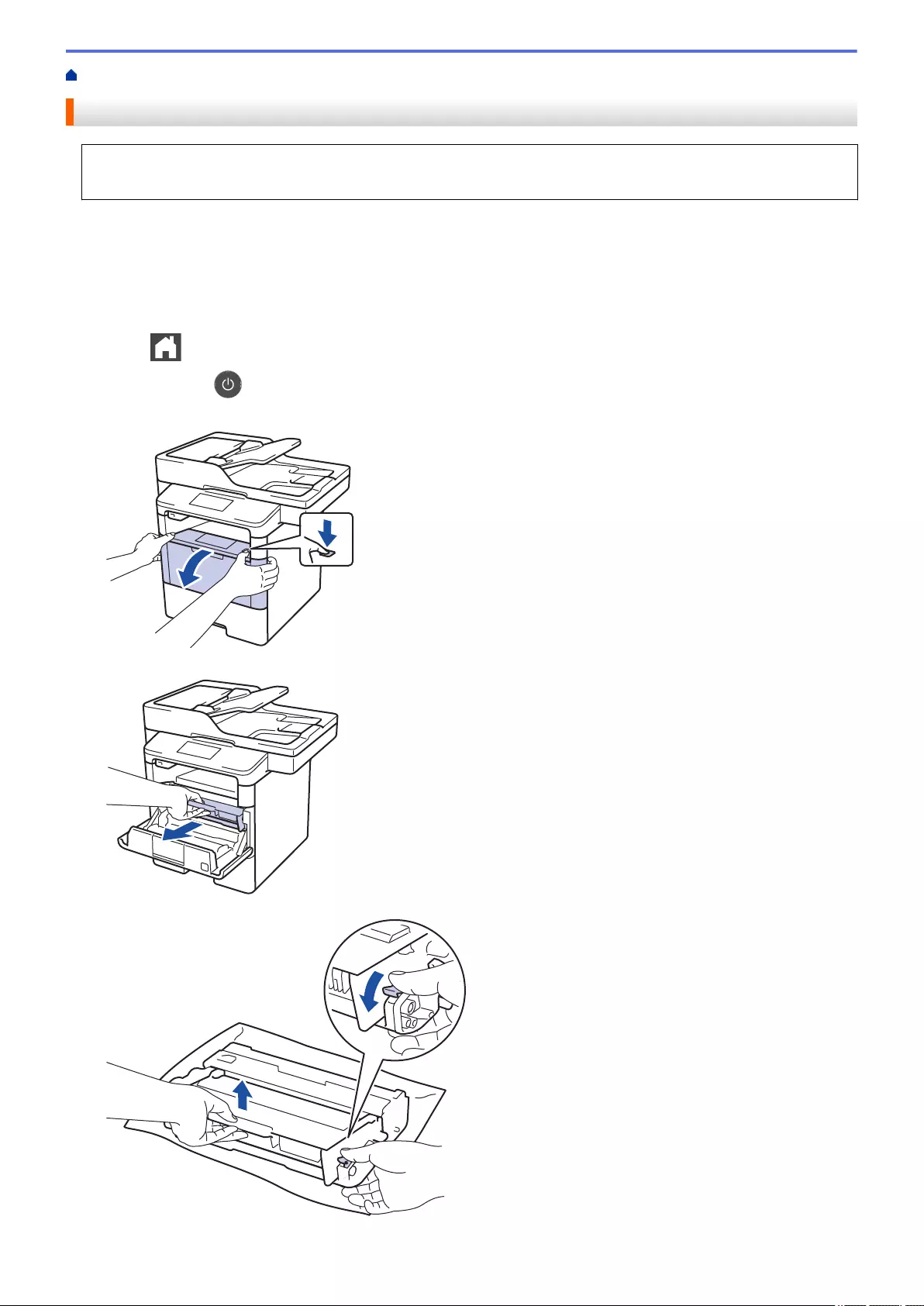
Home > Routine Maintenance > Clean the Machine > Clean the Drum Unit
Clean the Drum Unit
If your printout has dots or other repeating marks at 3.7 in. (94 mm) intervals, the drum may have foreign
material, such as glue from a label, stuck on the drum surface.
1. Make sure the machine is in Ready Mode.
2. Press [Settings] > [All Settings] > [Print Reports] > [Drum Dot Print].
3. Press [Yes].
The machine prints the Drum Dot Check Sheet.
4. Press .
5. Press and hold to turn off the machine.
6. Open the front cover.
7. Remove the toner cartridge and drum unit assembly from the machine.
8. Push down the green lock lever and take the toner cartridge out of the drum unit.
586

9. Turn the drum unit as shown in the illustration. Make sure that the drum unit gear is on the left side.
10. Use the numbered markers next to the drum roller to find the mark on the drum. For example, a dot in column
2 on the check sheet means that there is a mark in drum region “2”.
11. Turn the edge of the drum unit toward you while looking at the drum surface to find the mark.
587
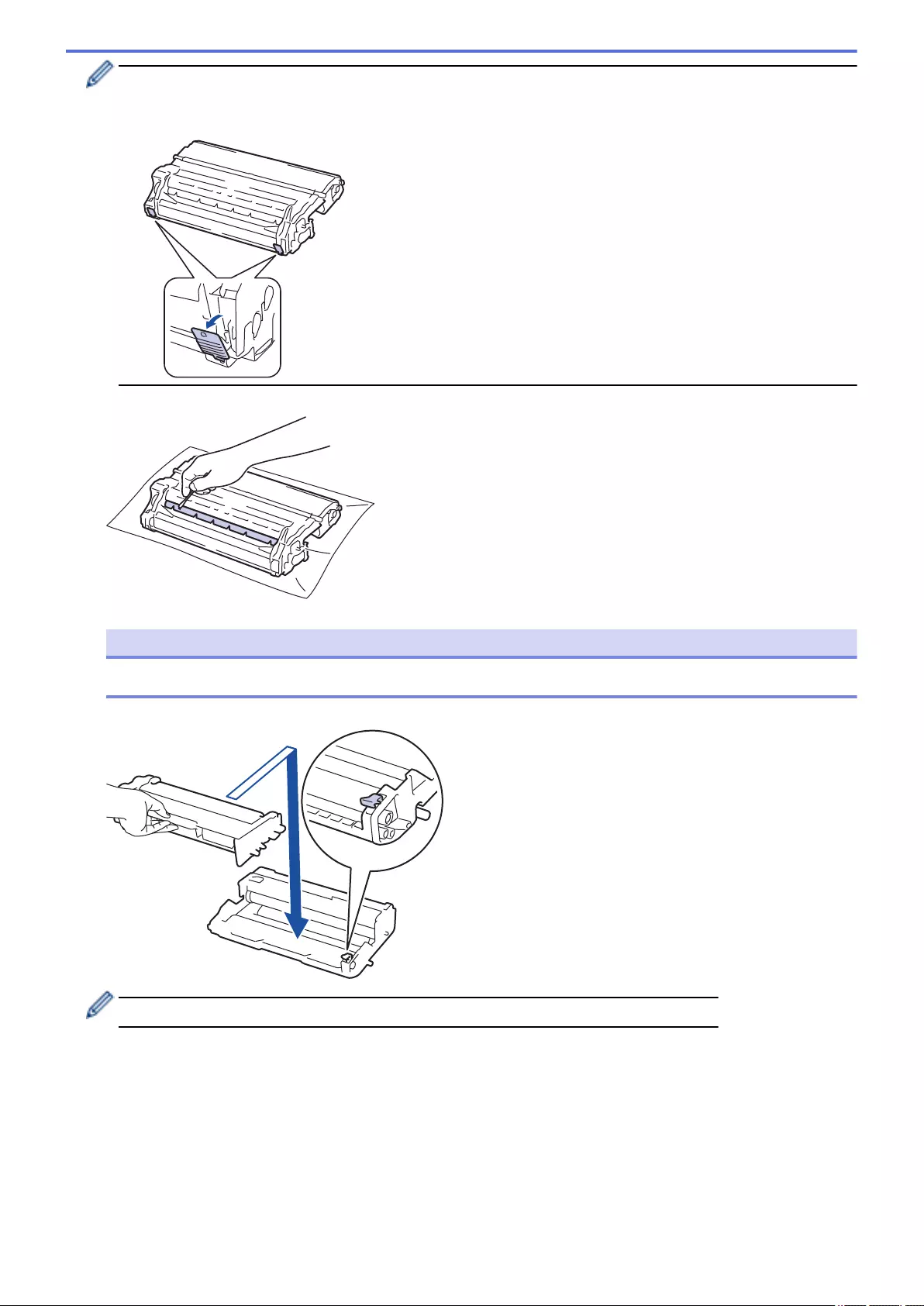
• To avoid print quality problems, DO NOT touch the surface of the drum unit, only the edge.
• You can turn the drum unit gear more easily by pulling down the black levers. When you have finished
turning the gear, push the levers back to the original position.
12. Wipe the surface of the drum gently with a dry cotton swab until the mark on the surface comes off.
NOTE
DO NOT clean the surface of the photosensitive drum with a sharp object or any liquids.
13. Put the toner cartridge firmly into the drum unit until you hear it lock into place.
Make sure you put the toner cartridge in correctly or it may separate from the drum unit.
14. Install the toner cartridge and drum unit assembly back into the machine.
588
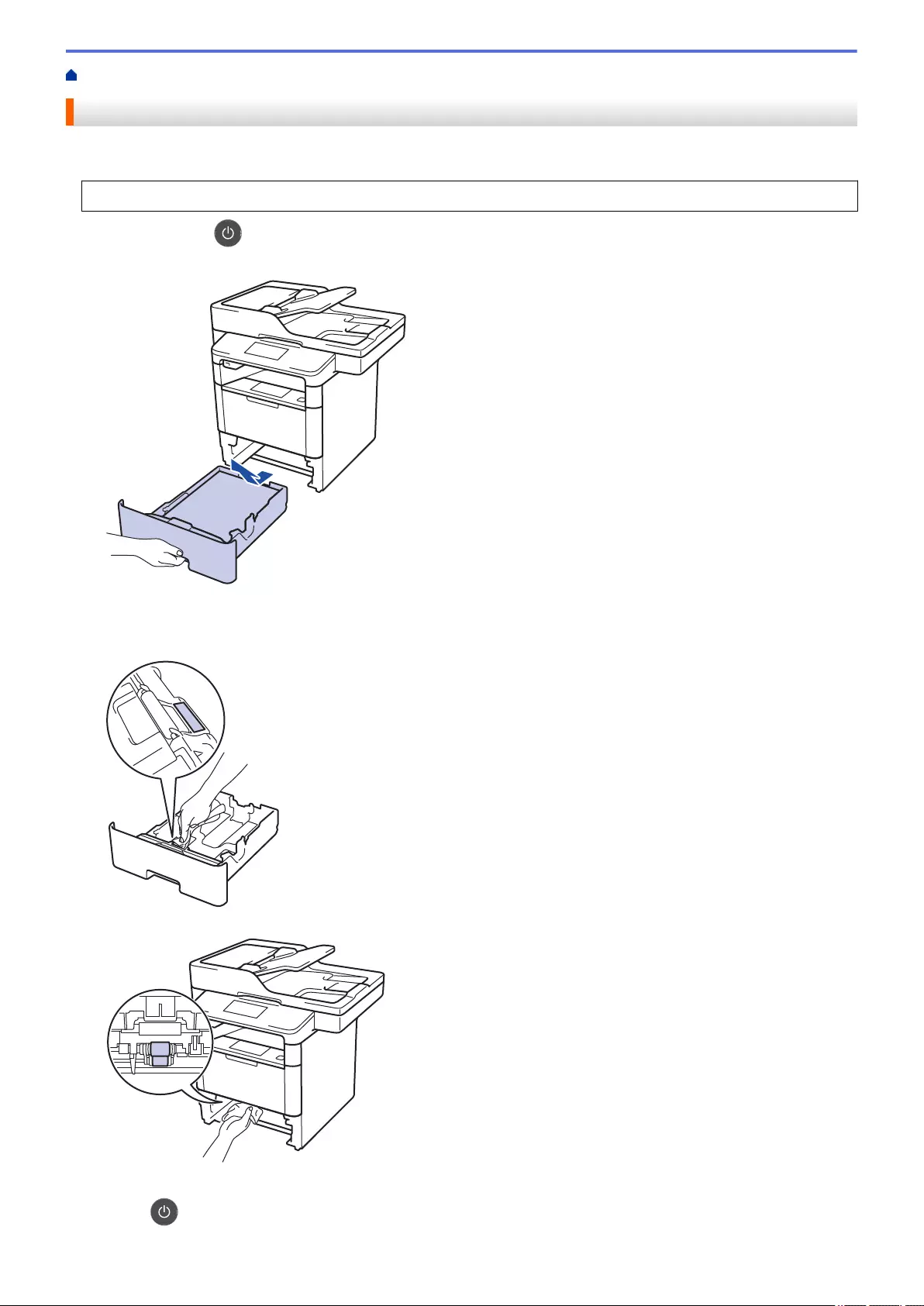
Home > Routine Maintenance > Clean the Machine > Clean the Paper Pick-up Rollers
Clean the Paper Pick-up Rollers
Cleaning the paper pick-up rollers periodically may prevent paper jams by ensuring that paper feeds properly.
If you have paper feed problems, clean the pick-up rollers as follows:
1. Press and hold to turn off the machine.
2. Pull the paper tray completely out of the machine.
3. If paper is loaded or something is stuck inside in the paper tray, remove it.
4. Tightly wring out a lint-free cloth soaked in lukewarm water, and then wipe the separator pad on the paper
tray to remove dust.
5. Wipe the two pick-up rollers inside the machine to remove dust.
6. Reload the paper and put the paper tray firmly back in the machine.
7. Press to turn on the machine.
590

Home > Routine Maintenance > Check the Remaining Life of Parts
Check the Remaining Life of Parts
1. Press [Settings] > [All Settings] > [Machine Info.] > [Parts Life].
2. Press the machine part you want to check.
The LCD displays the approximate remaining part life.
3. Press .
To display the approximate remaining life of the toner cartridge, press on the LCD.
Related Information
•Routine Maintenance
592
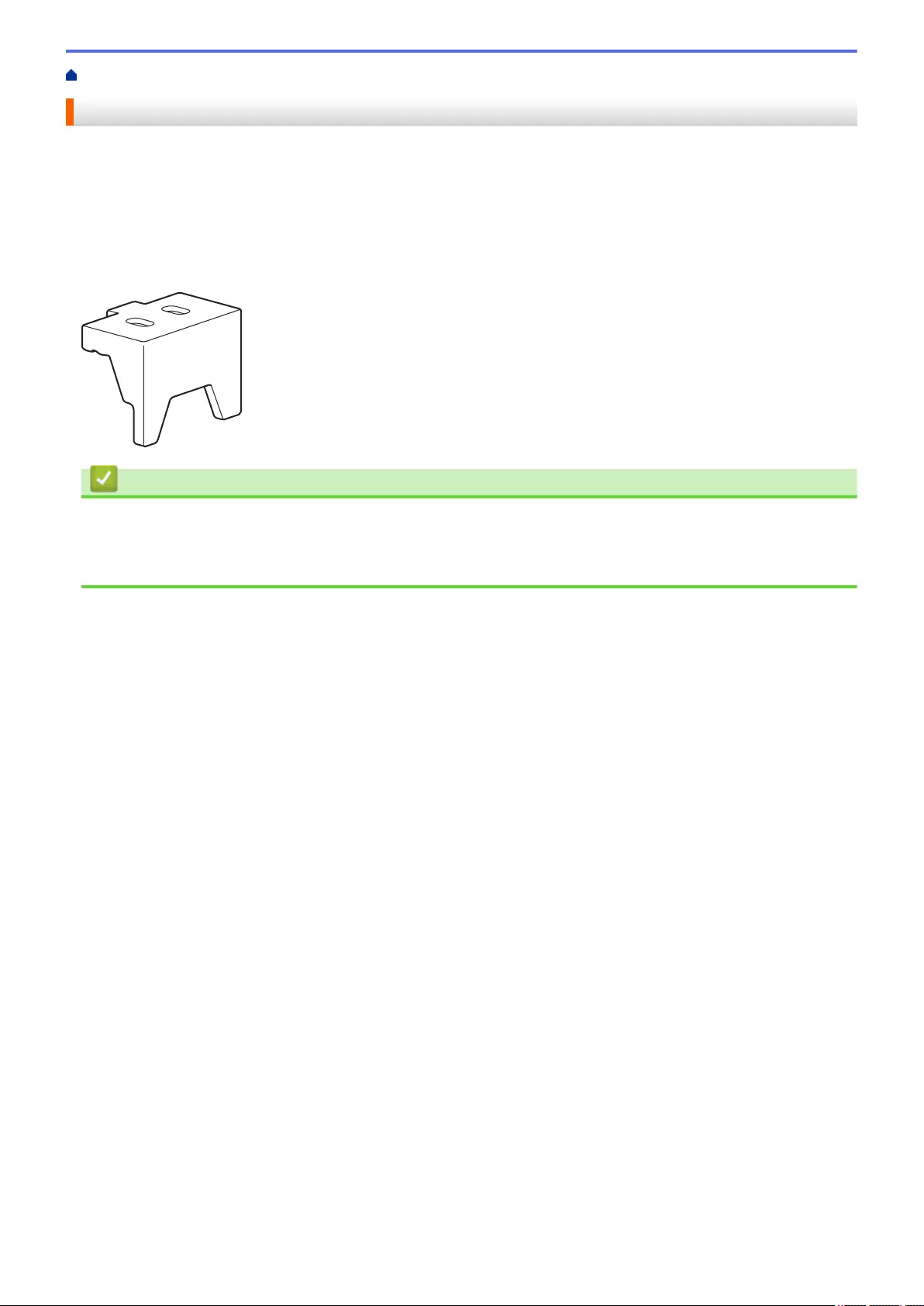
Home > Routine Maintenance > Pack and Ship Your Machine
Pack and Ship Your Machine
There are two ways to pack and ship your machine. To determine which you should follow, check the machine's
original packing material for a toner pad.
• If there is NO toner pad in the original carton, see Related Information: Pack the Machine and the Toner
Cartridge Together.
• If there is a toner pad in the original carton, see Related Information: Pack the Machine and the Toner
Cartridge Separately.
Toner Pad
Related Information
•Routine Maintenance
•Pack the Machine and the Toner Cartridge Together
•Pack the Machine and the Toner Cartridge Separately
593
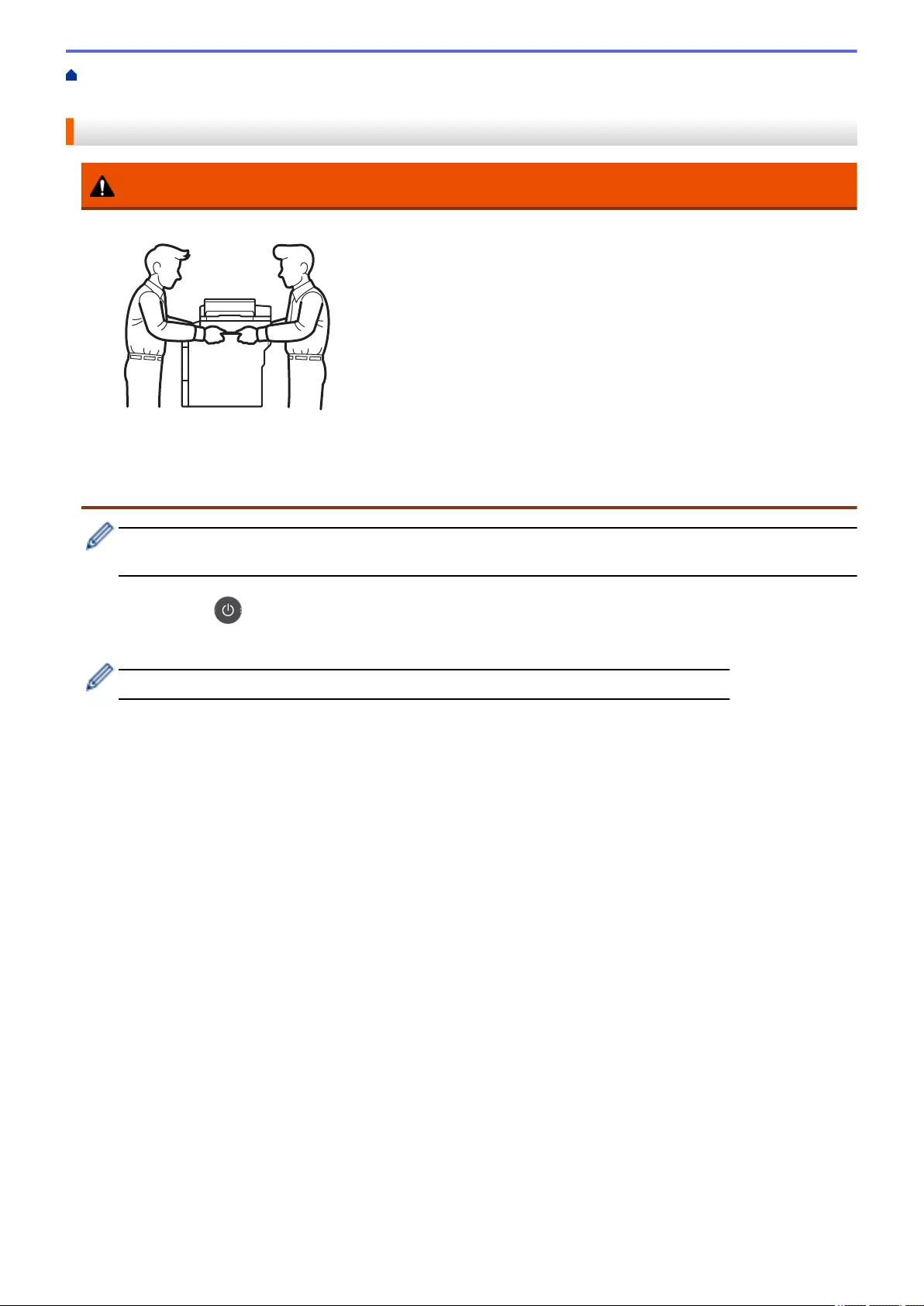
Home > Routine Maintenance > Pack and Ship Your Machine > Pack the Machine and the Toner Cartridge
Together
Pack the Machine and the Toner Cartridge Together
WARNING
• To prevent possible injuries, at least two people should lift the product by holding it at the front and back.
• If the machine has the Optional Tray(s) installed, remove the Optional Tray(s) BEFORE moving the
machine. Attempting to move the machine without removing the Optional Tray(s) may cause injury to you
or damage to the machine.
• Pack the Optional Tray(s) separately in its original carton with original packing material.
• If for any reason you must ship your machine, carefully repack the machine in the original packaging to
avoid any damage during transit. The machine should be adequately insured with the carrier.
1. Press and hold to turn off the machine. Leave the machine off for at least 10 minutes to cool down.
2. Disconnect all the cables, and then unplug the power cord from the AC power outlet.
The machine is equipped with a non-detachable AC power cord depending on the model.
3. Put the machine into the bag it originally came in.
4. Pack the machine, the printed materials, and the AC power cord (if applicable) in the original carton with the
original packing material as shown. If you are returning your machine to Brother as part of the Exchange
Service, pack only the machine. Keep all separate parts and printed materials to use with your "Exchange"
machine.
594
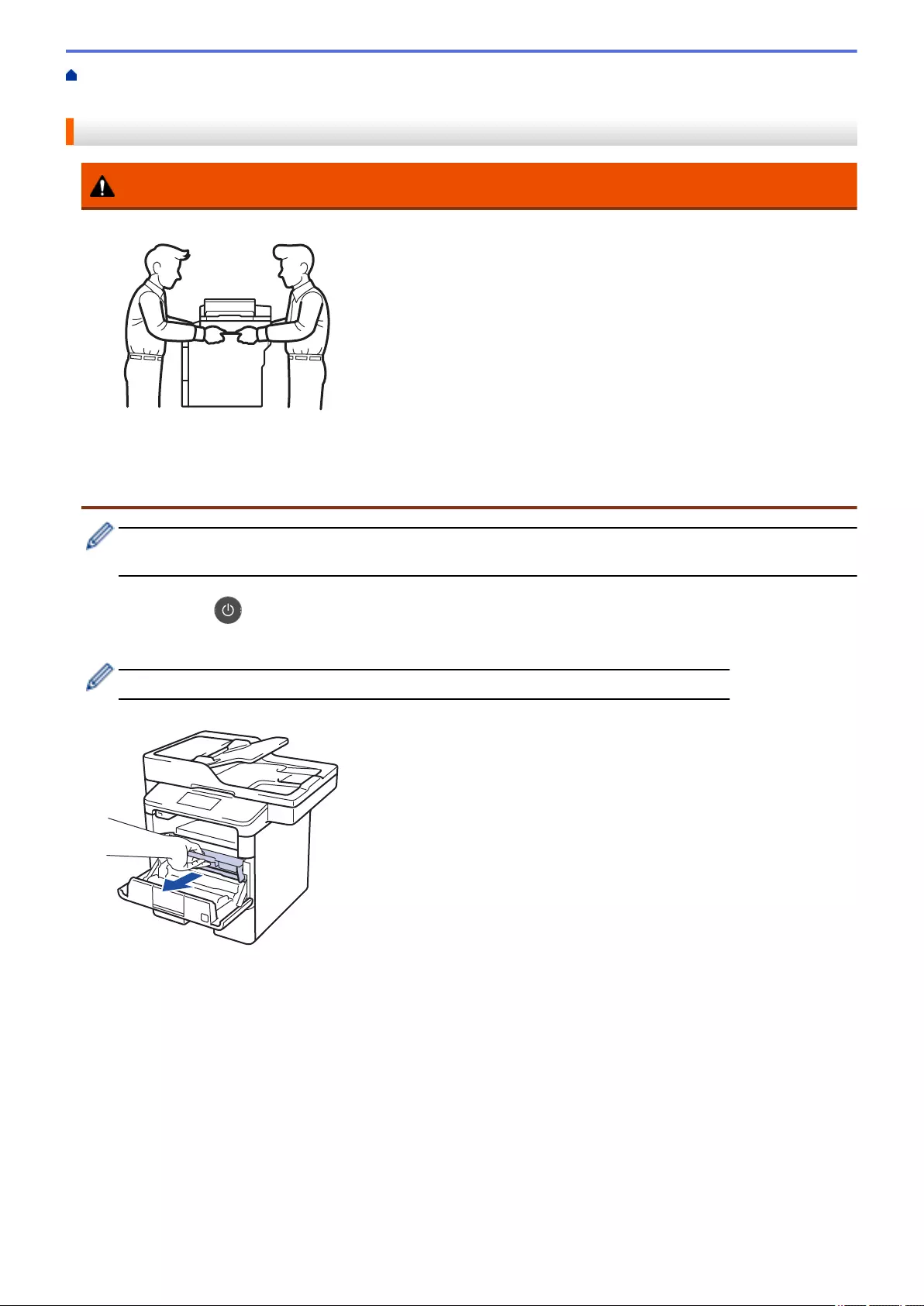
Home > Routine Maintenance > Pack and Ship Your Machine > Pack the Machine and the Toner Cartridge
Separately
Pack the Machine and the Toner Cartridge Separately
WARNING
• To prevent possible injuries, at least two people should lift the product by holding it at the front and back.
• If the machine has the Optional Tray(s) installed, remove the Optional Tray(s) BEFORE moving the
machine. Attempting to move the machine without removing the Optional Tray(s) may cause injury to you
or damage to the machine.
• Pack the Optional Tray(s) separately in its original carton with original packing material.
• If for any reason you must ship your machine, carefully repack the machine in the original packaging to
avoid any damage during transit. The machine should be adequately insured with the carrier.
1. Press and hold to turn off the machine. Leave the machine off for at least 10 minutes to cool down.
2. Disconnect all the cables, and then unplug the power cord from the AC power outlet.
The machine is equipped with a non-detachable AC power cord depending on the model.
3. Remove the toner cartridge and drum unit assembly.
4. Push down the green lock lever and take the toner cartridge out of the drum unit.
596

5. Put the protective material on the toner cartridge. Put it in a plastic bag.
6. Install only the drum unit back into the machine.
7. Close the front cover.
8. Put the machine into the bag it originally came in.
9. Pack the machine, the printed materials, and the AC power cord (if applicable) in the original carton with the
original packing material as shown. If you are returning your machine to Brother as part of the Exchange
Service, pack only the machine. Keep all separate parts and printed materials to use with your "Exchange"
machine.
597
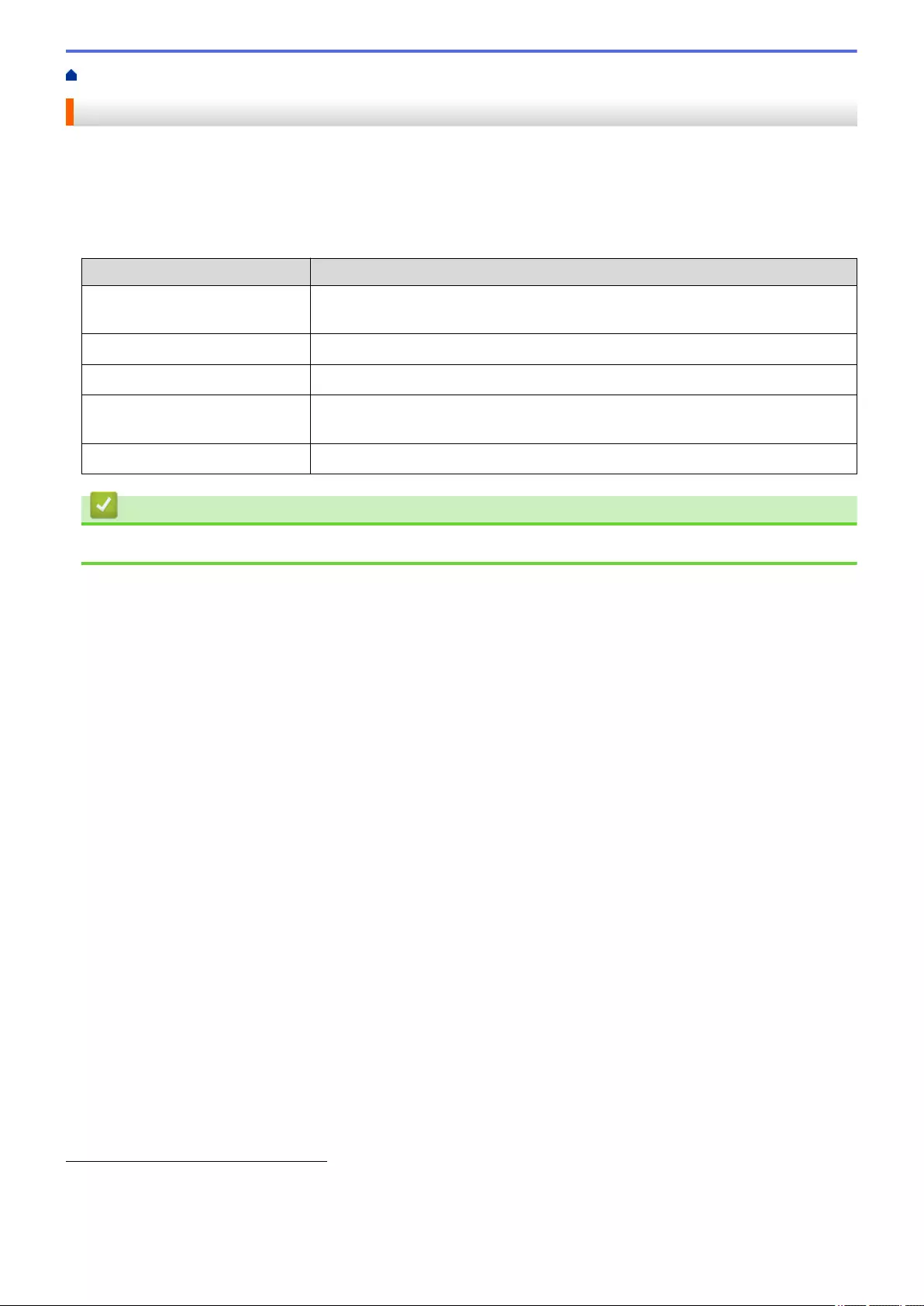
Home > Routine Maintenance > Replace Periodic Maintenance Parts
Replace Periodic Maintenance Parts
Replace the following parts regularly to maintain print quality. The parts listed below must be replaced after
printing approximately 50,000 pages 1 for the PF Kit MP and 200,000 pages 1 for the PF Kit for the Paper Tray,
PF Kit for the Optional Tray(s), Fuser Unit, and Laser Unit.
Contact Brother Customer Service or a Brother Authorized Service Center when the following message appears
on the LCD:
LCD Message Description
Replace Fuser 2 Replace the Fuser Unit.
Replace Laser 2 Replace the Laser Unit.
Replace PF Kit 1 2 Replace the Paper Feeding Kit for the Paper Tray.
Replace PF Kit 2 2 3 Replace the Paper Feeding Kit for the Optional Tray(s).
Replace PF Kit MP 2 Replace the Paper Feeding Kit for the Multi-purpose Tray.
Related Information
•Routine Maintenance
1Letter or A4 size 1-sided pages
2Replacement frequency depends on the complexity of printed pages, percentage of coverage, and the type of media used.
3If you use the Optional Tray(s) with your machine, this message will appear on the LCD. When the machine has multiple Optional Trays, the
machine displays messages using numbers corresponding to each Optional Tray.
599

Home > Machine Settings > Change Machine Settings from the Control Panel > In the Event of Power
Failure (Memory Storage)
In the Event of Power Failure (Memory Storage)
Your menu settings are stored permanently, and in the event of a power failure will not be lost.Temporary settings
(for example, Contrast, Overseas Mode) will be lost.
• During a power failure, the machine will retain the date and time and programmed fax timer jobs (for
example: Delayed Fax) for approximately 60 hours. Other fax jobs in the machine's memory will not be lost.
Related Information
•Change Machine Settings from the Control Panel
602
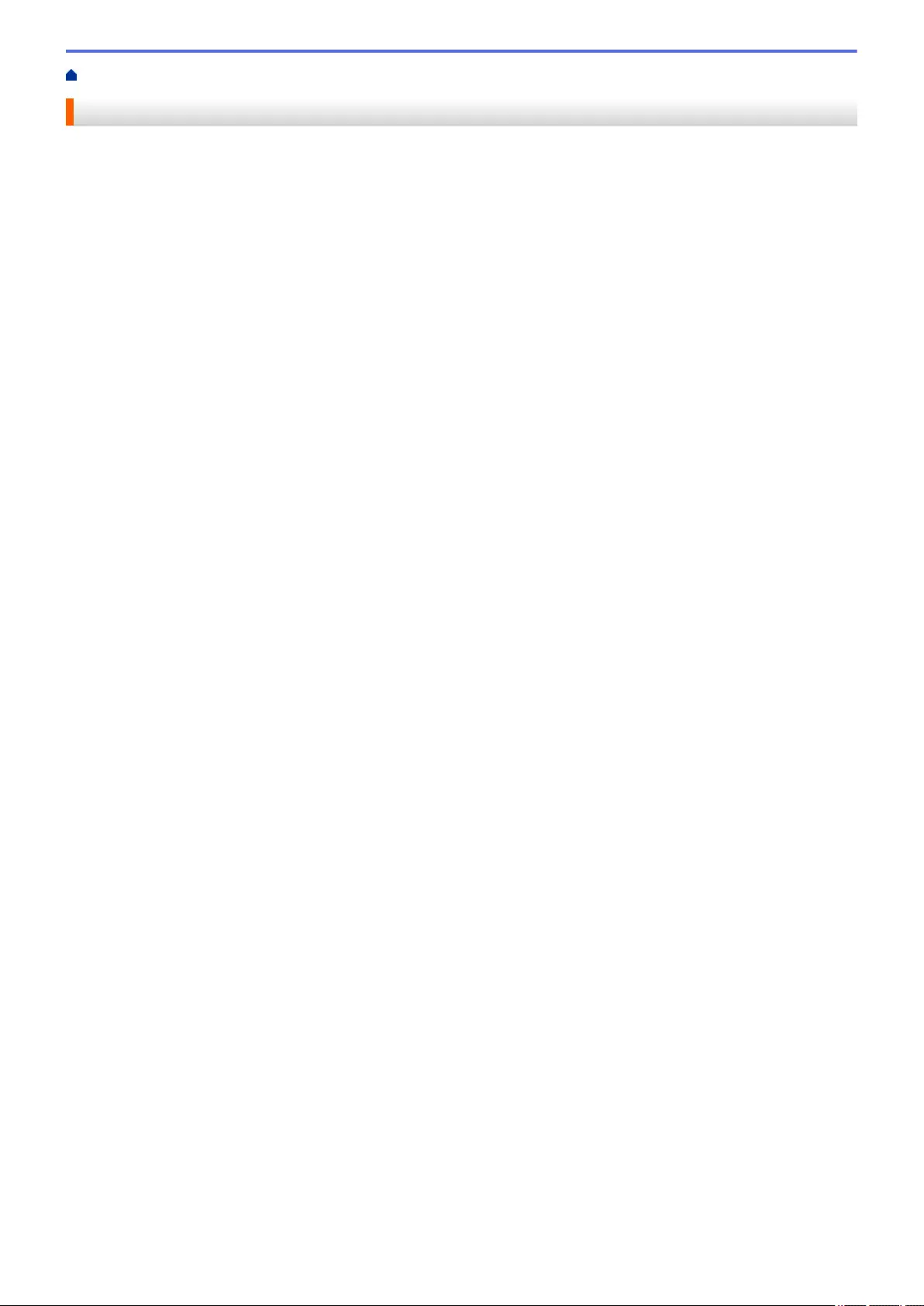
Home > Machine Settings > Change Machine Settings from the Control Panel > General Settings
General Settings
•Adjust the Machine's Volume
•Change for Daylight Saving Time Automatically
•Set Sleep Mode Countdown
•About Deep Sleep Mode
•Set Auto Power Off Mode
•Set the Date and Time
•Set the Time Zone
•Adjust the LCD Backlight Brightness
•Change How Long the LCD Backlight Stays On
•Set Your Station ID
•Set Tone or Pulse Dialing Mode (For Canada)
•Reduce Toner Consumption
•Add a Prefix to Every Fax Number
•Prevent Dialing a Wrong Number (Dial Restriction)
•Reduce Printing Noise
•Change the Language on the LCD
603

Home > Machine Settings > Change Machine Settings from the Control Panel > General Settings > Adjust
the Machine's Volume
Adjust the Machine's Volume
1. Press [Settings] > [All Settings] > [General Setup] > [Volume].
2. Press one of the following options:
(The options will vary depending on your machine.)
•[Ring]
Adjust the ring volume.
•[Beep]
Adjust the volume of the beep you hear when you press a button, make a mistake, or after you send or
receive a fax.
•[Speaker]
Adjust the speaker volume.
3. Select the [Off], [Low], [Med] or [High] option, and then press the option you want.
4. Press .
Related Information
•General Settings
604
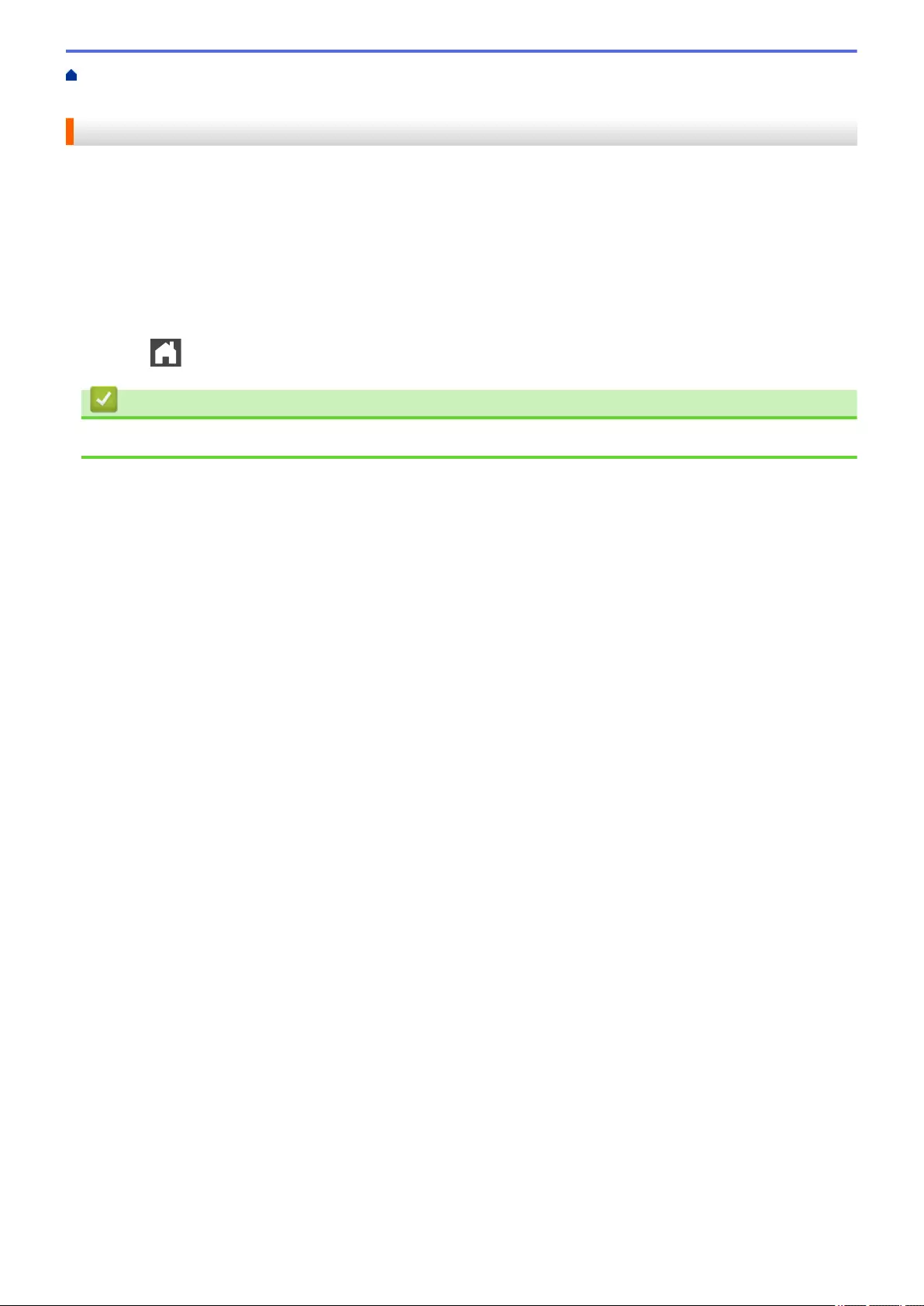
Home > Machine Settings > Change Machine Settings from the Control Panel > General Settings > Change
for Daylight Saving Time Automatically
Change for Daylight Saving Time Automatically
You can program the machine to change automatically for Daylight Saving Time.
It will reset itself forward one hour in the spring, and backward one hour in the fall. Make sure you have set the
correct date and time in the Date & Time setting.
1. Press [Settings] > [All Settings] > [Initial Setup] > [Date & Time] > [Auto
Daylight].
2. Press [On] or [Off].
3. Press .
Related Information
•General Settings
605
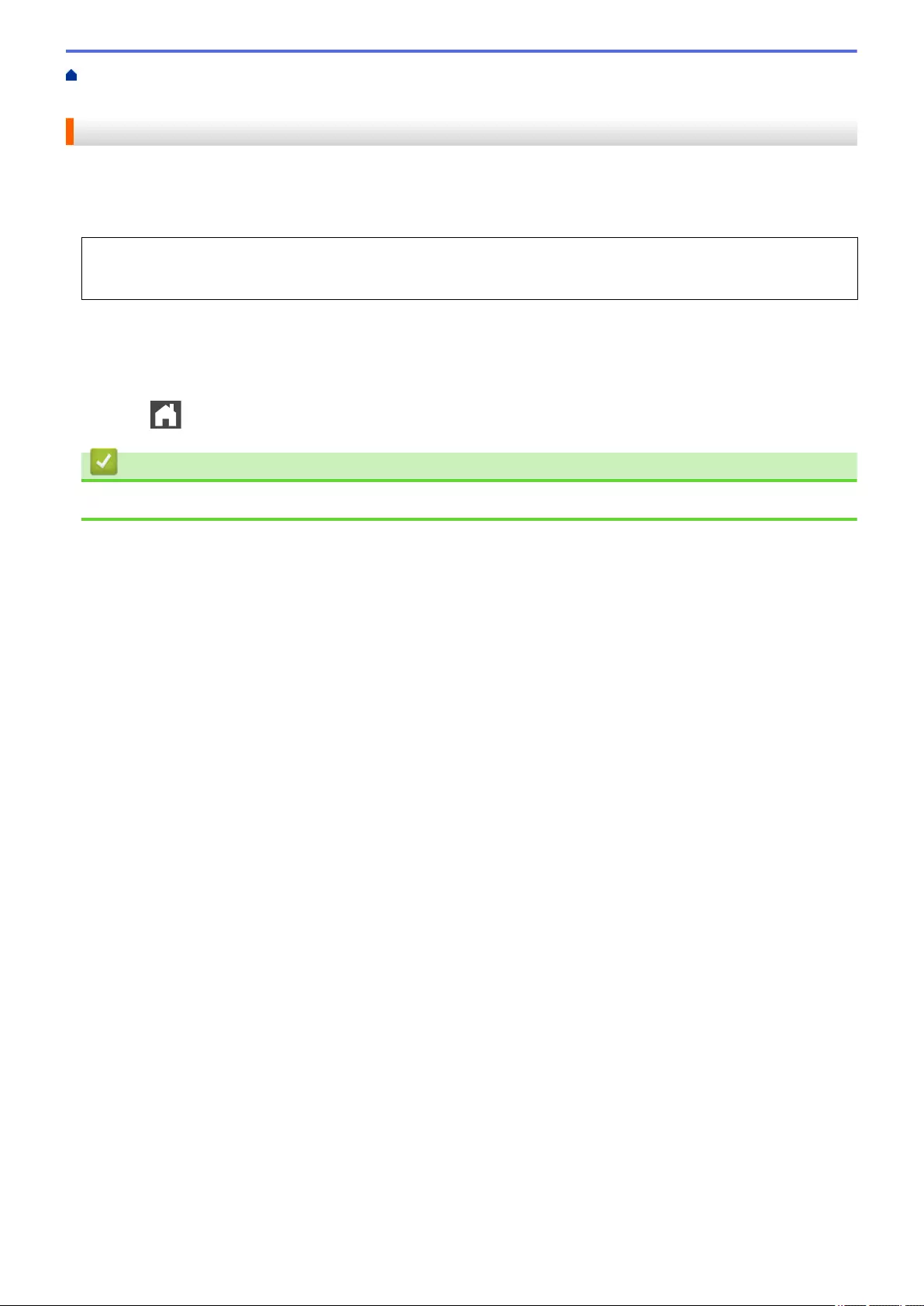
Home > Machine Settings > Change Machine Settings from the Control Panel > General Settings > Set
Sleep Mode Countdown
Set Sleep Mode Countdown
The Sleep Mode (or Power Save Mode) setting can reduce power consumption. When the machine is in Sleep
Mode, it acts as though it is turned off. The machine will wake up and start printing when it receives a print job or
a fax. Use these instructions to set a time delay (countdown) before the machine enters Sleep Mode.
• You can choose how long the machine must be idle before it goes into Sleep Mode.
• The timer will restart if any operation is carried out on the machine, such as receiving a print job.
1. Press [Settings] > [All Settings] > [General Setup] > [Ecology] > [Sleep Time].
2. Enter the length of time (maximum 50 minutes) the machine will remain idle before entering Sleep Mode, and
then press [OK].
3. Press .
Related Information
•General Settings
606
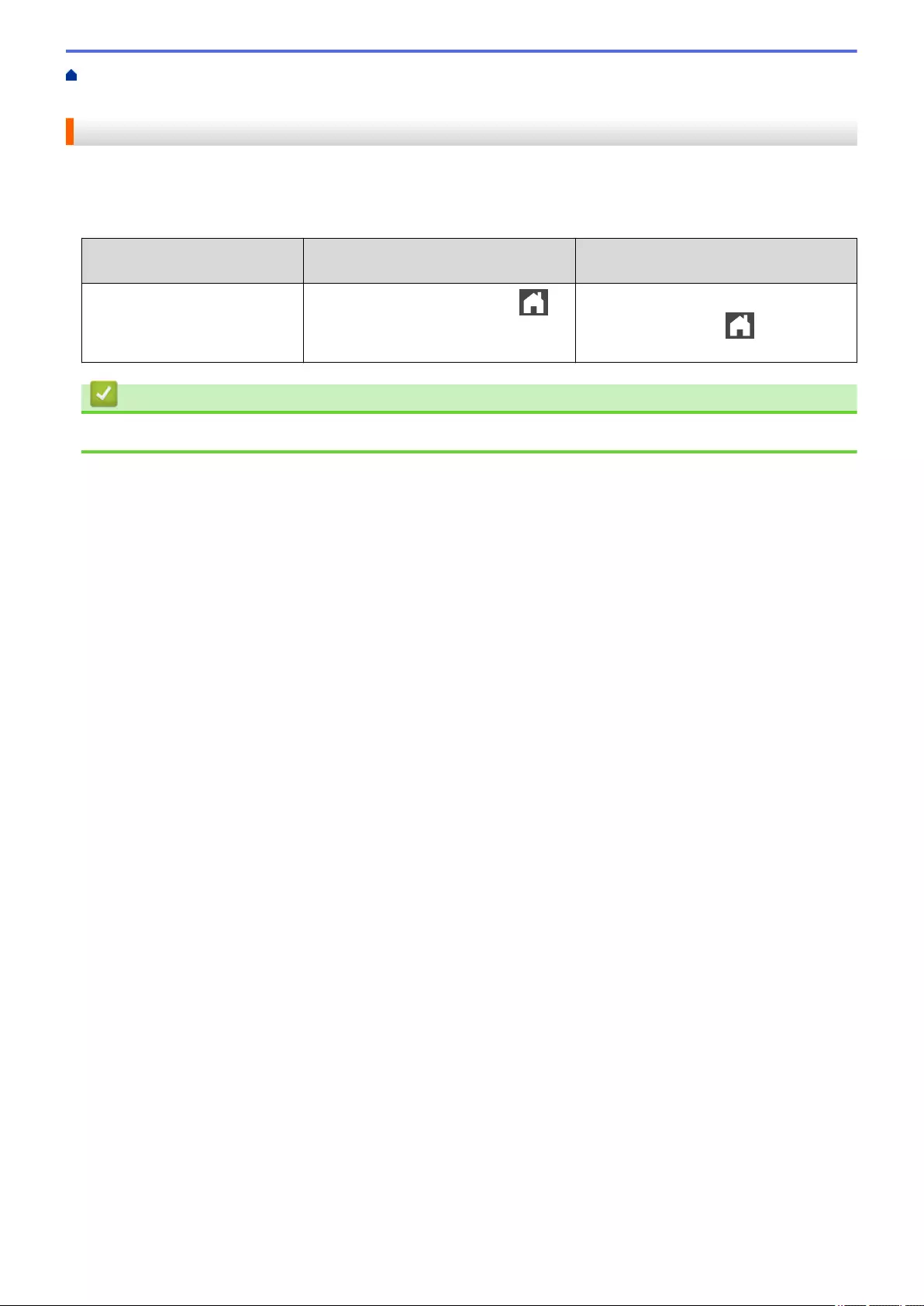
Home > Machine Settings > Change Machine Settings from the Control Panel > General Settings > About
Deep Sleep Mode
About Deep Sleep Mode
If the machine is in Sleep Mode and does not receive any jobs for certain length of time, the machine will
automatically enter Deep Sleep Mode. The length of time is based on your specific model and settings.
Deep Sleep Mode uses less power than Sleep Mode.
Applicable Models Machine's LCD in Deep Sleep Mode Conditions That Will Wake the
Machine
All models The LCD backlight turns off and
blinks.
• The machine receives a job.
• Someone presses or the
touchscreen LCD.
Related Information
•General Settings
607
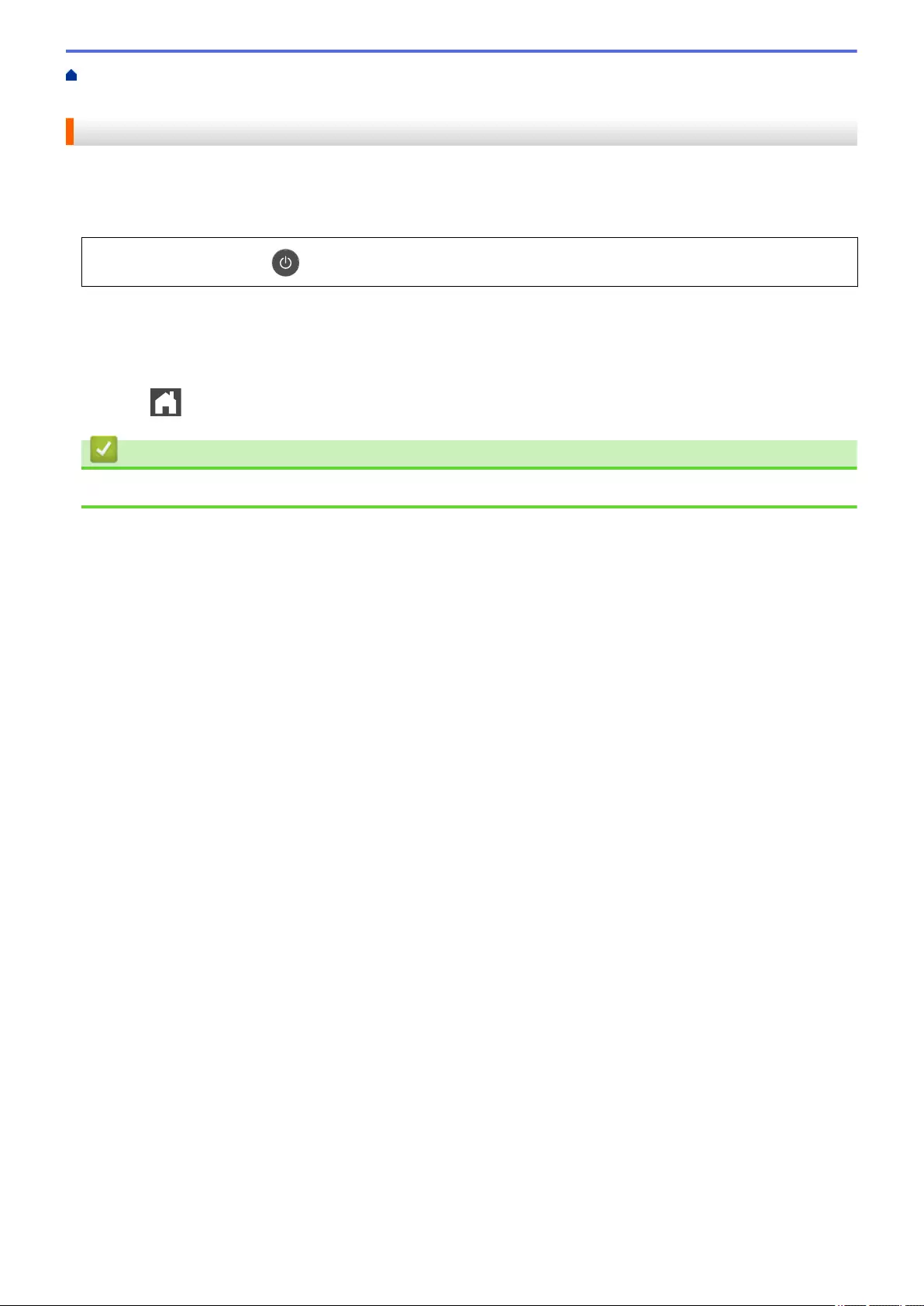
Home > Machine Settings > Change Machine Settings from the Control Panel > General Settings > Set
Auto Power Off Mode
Set Auto Power Off Mode
If the machine is in Deep Sleep Mode for certain length of time, based on your model and settings, the machine
will go into Power Off Mode automatically. The machine does not go into Power Off Mode when the machine is
connected to a network or has secure print data in the memory.
• To start printing, press on the control panel and then send a print job.
1. Press [Settings] > [All Settings] > [General Setup] > [Ecology] > [Auto Power Off].
2. Swipe up or down or press a or b to display the [Off], [1hour], [2hours], [4hours] or [8hours]
option, and then press the option you want.
3. Press .
Related Information
•General Settings
608

Home > Machine Settings > Change Machine Settings from the Control Panel > General Settings > Set the
Date and Time
Set the Date and Time
1. Press [Settings] > [All Settings] > [Initial Setup] > [Date & Time] > [Date].
2. Enter the last two digits of the year using the LCD, and then press [OK].
3. Enter the two digits for the month using the LCD, and then press [OK].
4. Enter the two digits for the day using the LCD, and then press [OK].
5. Press [Clock Type].
6. Press [12h Clock] or [24h Clock].
7. Press [Time].
8. To enter the time, do one of the following:
• If you selected [12h Clock] as the format in the [Clock Type] setting, enter the time (in 12-hour
format) using the LCD.
Press to select [AM] or [PM].
Press [OK].
• If you selected [24h Clock] as the format in the [Clock Type] setting, enter the time (in 24-hour
format) using the LCD.
Press [OK].
(For example: enter 19:45 for 7:45 PM.)
9. Press .
Related Information
•General Settings
609
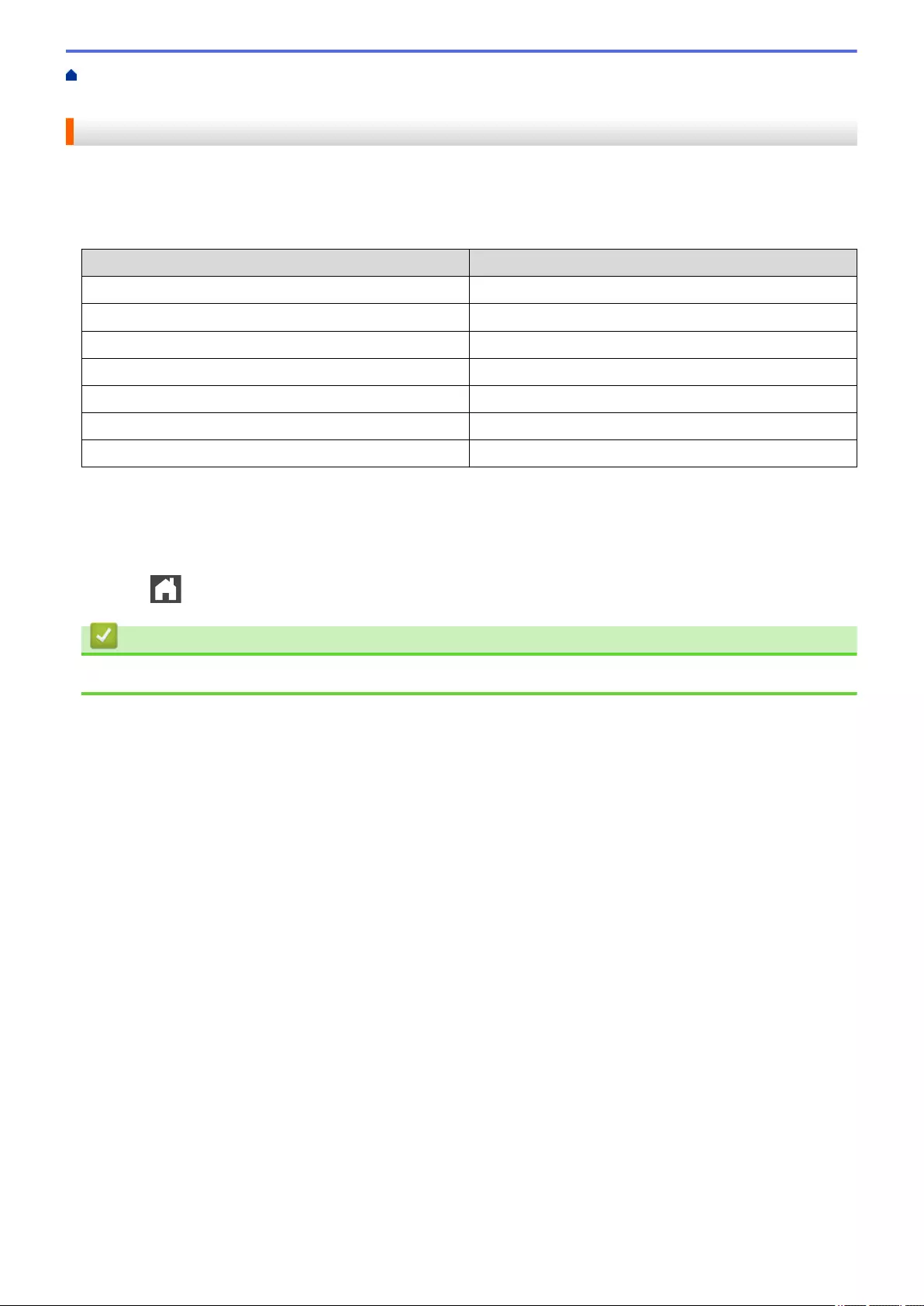
Home > Machine Settings > Change Machine Settings from the Control Panel > General Settings > Set the
Time Zone
Set the Time Zone
Set the time zone for your location on the machine.
For example, the time zone for Eastern Time in the USA and Canada is UTC-05:00. Pacific Time in the USA and
Canada is UTC-08:00.
Time Zone Standard Time
Hawaii-Aleutian Time Zone UTC - 10:00
Alaska Time Zone UTC - 9:00
Pacific Time Zone UTC - 8:00
Mountain Time Zone UTC - 7:00
Central Time Zone UTC - 6:00
Eastern Time Zone UTC - 5:00
Atlantic Time Zone UTC - 4:00
1. Press [Settings] > [All Settings] > [Initial Setup] > [Date & Time] > [Time Zone].
2. Enter your time zone.
3. Press [OK].
4. Press .
Related Information
•General Settings
610
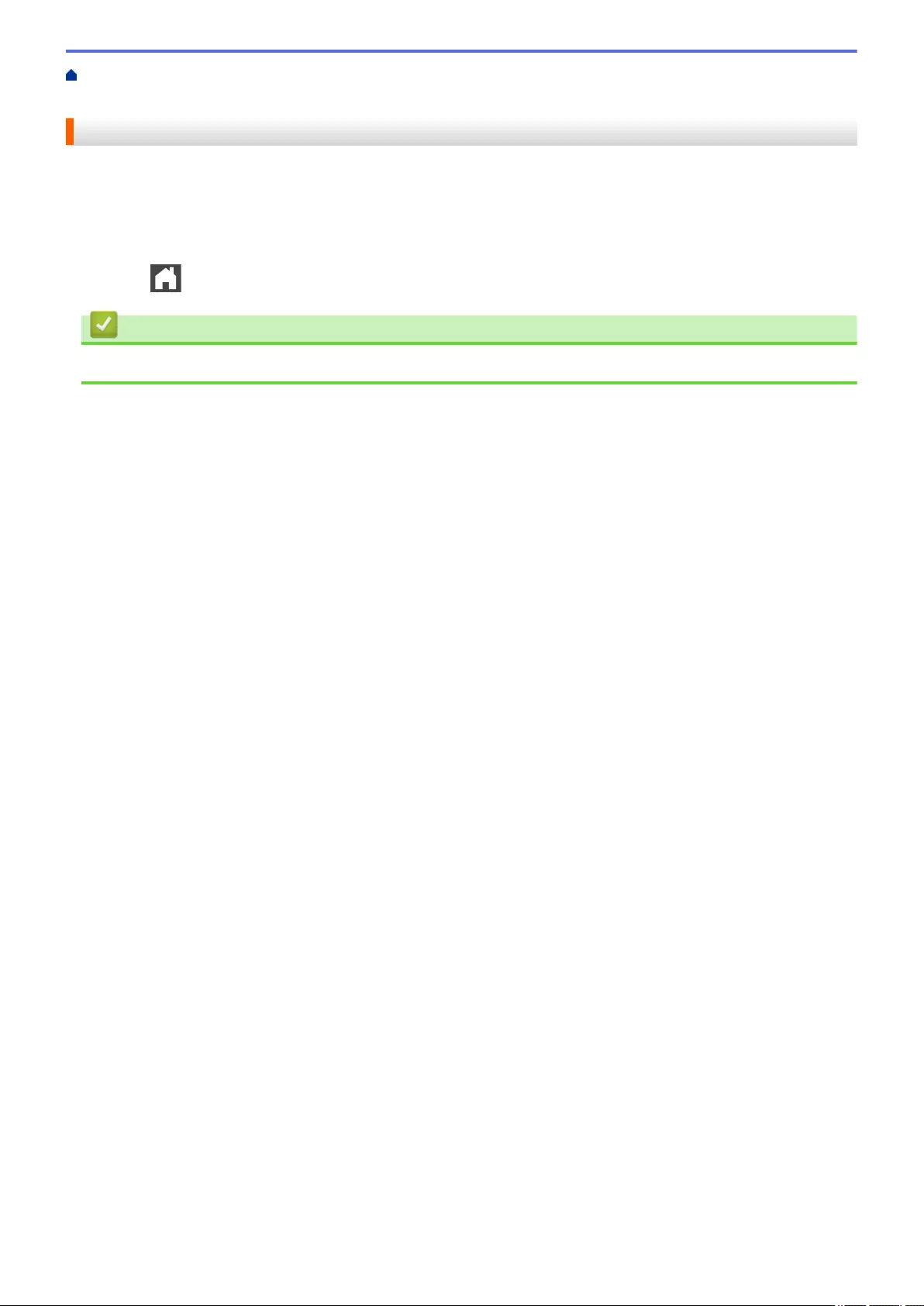
Home > Machine Settings > Change Machine Settings from the Control Panel > General Settings > Adjust
the LCD Backlight Brightness
Adjust the LCD Backlight Brightness
If you are having difficulty reading the LCD, changing the brightness setting may help.
1. Press [Settings] > [All Settings] > [General Setup] > [LCD Settings] > [Backlight].
2. Press the [Light], [Med] or [Dark] option.
3. Press .
Related Information
•General Settings
611

Home > Machine Settings > Change Machine Settings from the Control Panel > General Settings > Change
How Long the LCD Backlight Stays On
Change How Long the LCD Backlight Stays On
Set how long the LCD backlight stays on.
1. Press [Settings] > [All Settings] > [General Setup] > [LCD Settings] > [Dim Timer].
2. Press the [Off], [10Secs], [20Secs] or [30Secs] option.
3. Press .
Related Information
•General Settings
612
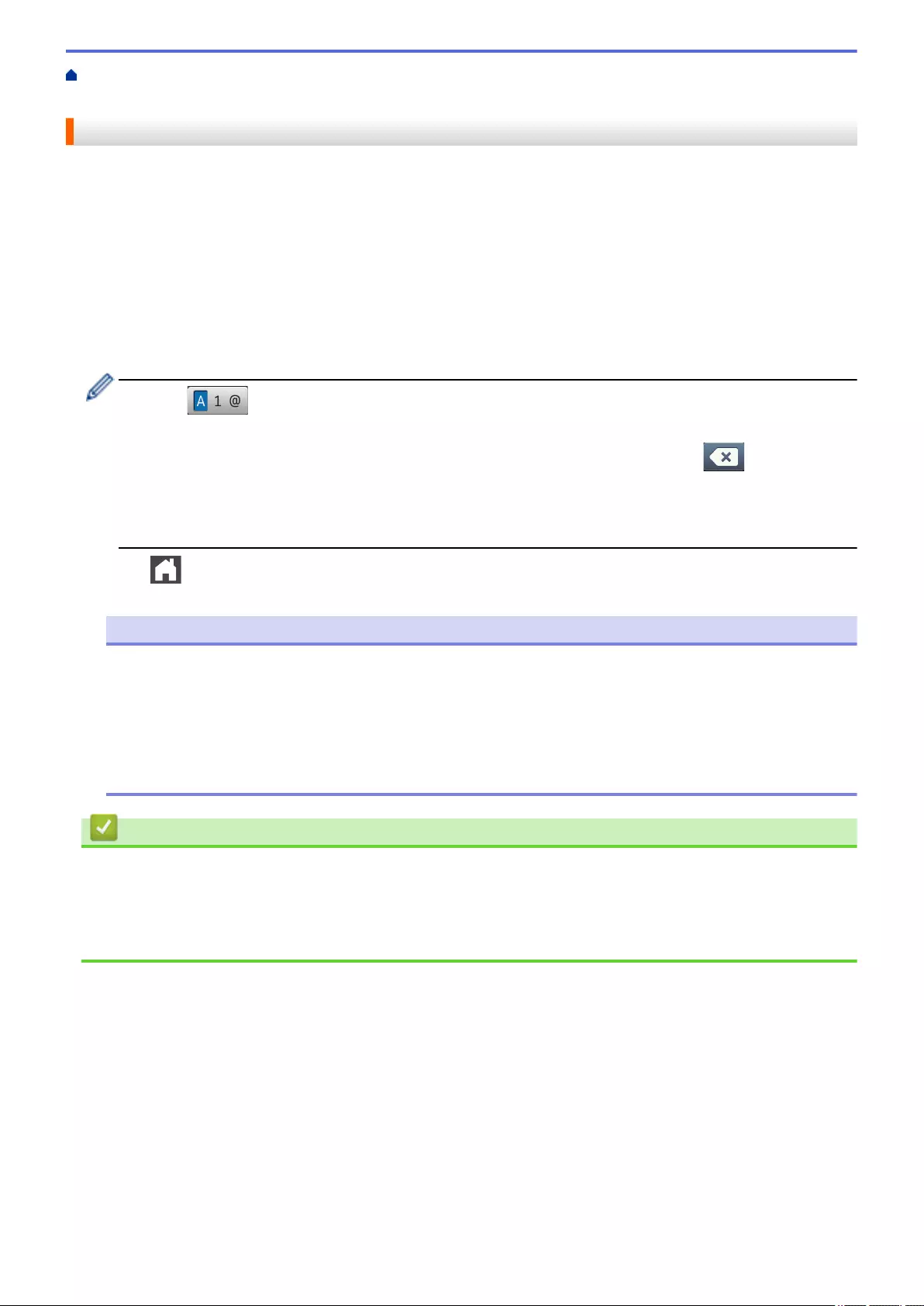
Home > Machine Settings > Change Machine Settings from the Control Panel > General Settings > Set
Your Station ID
Set Your Station ID
Set the machine to print your Station ID and the fax's date and time at the top of each fax you send.
1. Press [Settings] > [All Settings] > [Initial Setup] > [Station ID] > [Fax].
2. Enter your fax number (up to 20 digits) using the LCD, and then press [OK].
3. Press [Tel].
4. Enter your telephone number (up to 20 digits) using the LCD, and then press [OK].
5. Press [Name].
6. Enter your name (up to 20 characters) using the LCD, and then press [OK].
• Press to cycle between letters, numbers and special characters. (The characters available
may differ depending on your country.)
• If you enter an incorrect character, press d or c to move the cursor to it and press . Press the
correct character.
• To enter a space, press [Space] or c.
• For more detailed information, see Related Information.
7. Press .
NOTE
(USA only) The Telephone Consumer Protection Act of 1991 makes it unlawful for any person to use a
computer or electronic device to send any message via a telephone fax machine unless such messages
clearly contain, in a margin at the top or bottom of each transmitted page, or on the first page of the
transmission, the date and time it is sent and an identification of the business or other entity or other
individual sending the message and the telephone number of the sending machine or such business,
other entity or individual. To program this information into your machine, see Set the Date and Time and
Set Your Station ID.
Related Information
•General Settings
•How to Enter Text on Your Brother Machine
•Transfer Faxes to Another Fax Machine
•Transfer the Fax Journal Report to Another Fax Machine
613
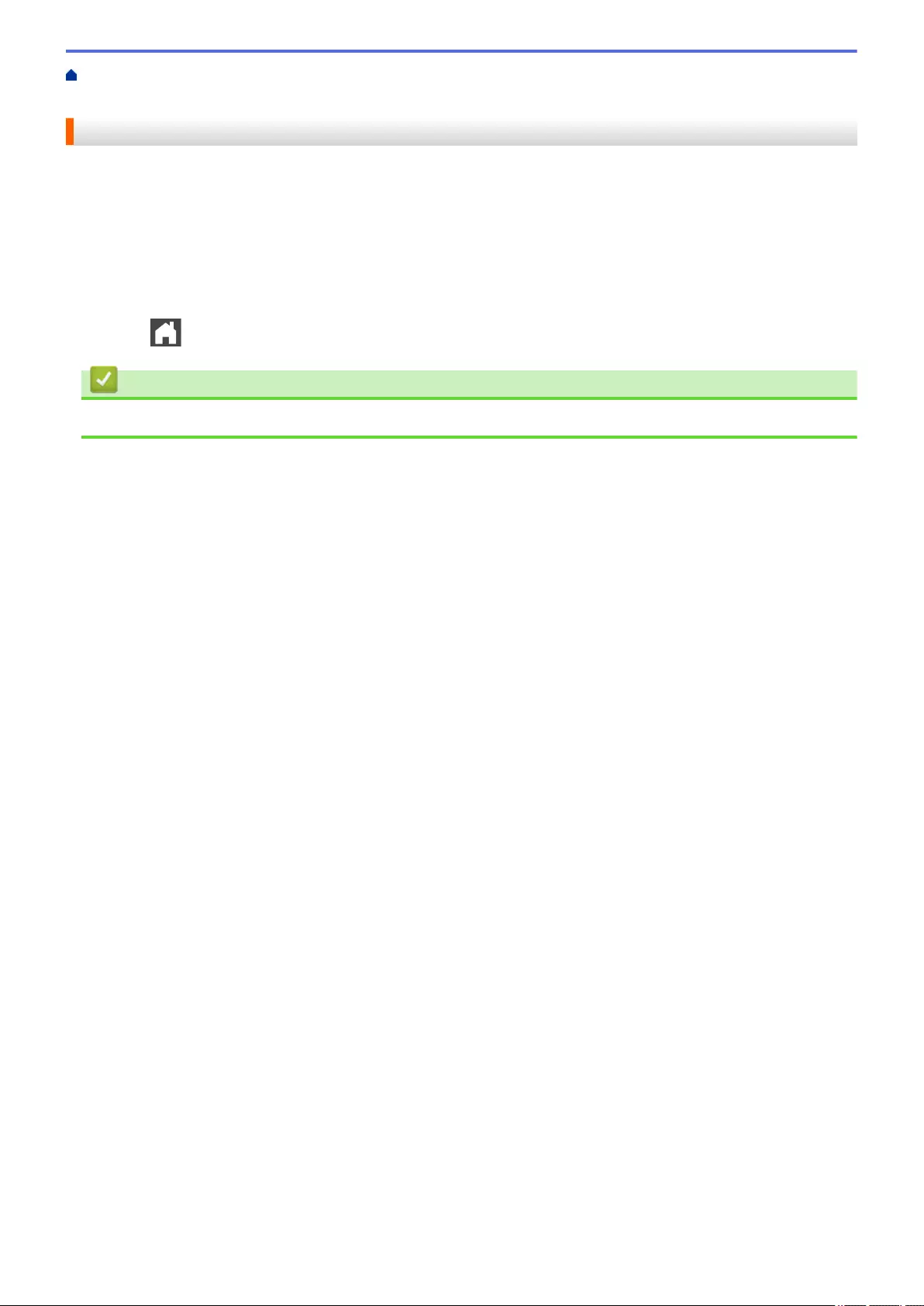
Home > Machine Settings > Change Machine Settings from the Control Panel > General Settings > Set
Tone or Pulse Dialing Mode (For Canada)
Set Tone or Pulse Dialing Mode (For Canada)
Your Brother machine is set for a Tone dialing service. If you have a Pulse dialing (rotary) service, you must
change the dialing mode.
This feature is not available in some countries.
1. Press [Settings] > [All Settings] > [Initial Setup] > [Tone/Pulse].
2. Press [Tone] or [Pulse].
3. Press .
Related Information
•General Settings
614
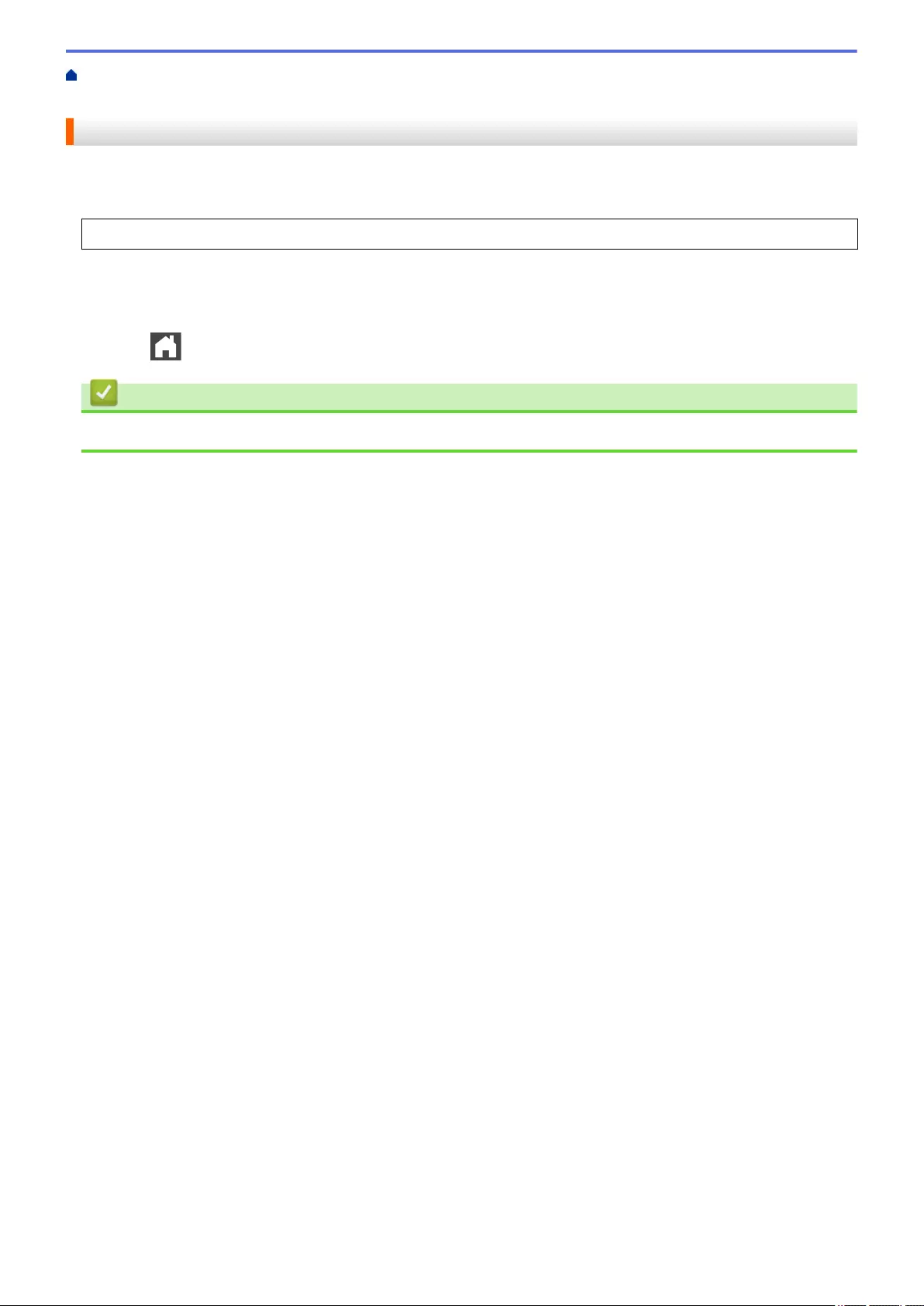
Home > Machine Settings > Change Machine Settings from the Control Panel > General Settings > Reduce
Toner Consumption
Reduce Toner Consumption
Using the Toner Save feature may reduce toner consumption. When Toner Save is set to on, the print on your
documents appears lighter.
We DO NOT recommend using the Toner Save feature for printing photo or grayscale images.
1. Press [Settings] > [All Settings] > [General Setup] > [Ecology] > [Toner Save].
2. Press [On] or [Off].
3. Press .
Related Information
•General Settings
615
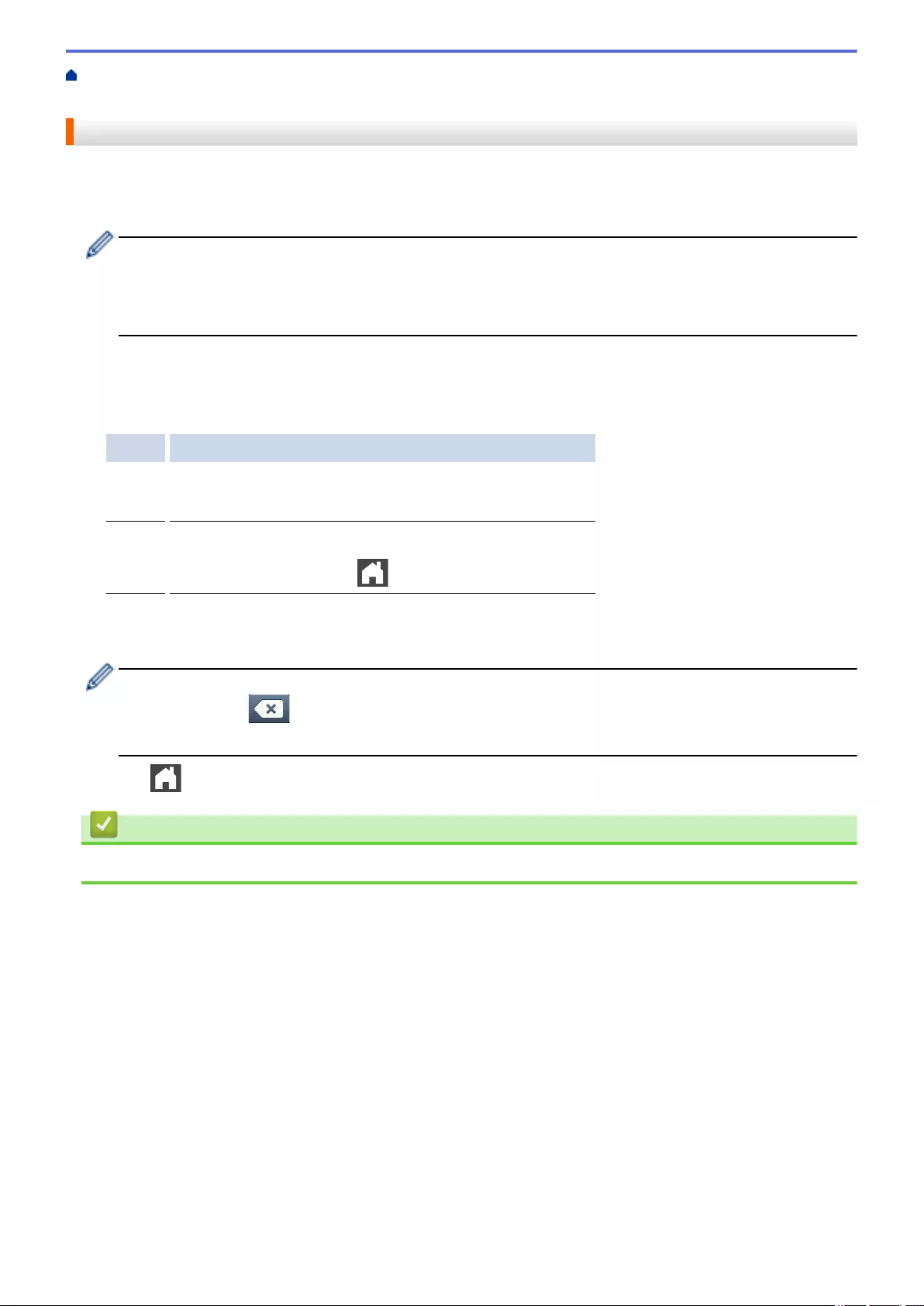
Home > Machine Settings > Change Machine Settings from the Control Panel > General Settings > Add a
Prefix to Every Fax Number
Add a Prefix to Every Fax Number
The Dial Prefix setting will automatically dial a predefined number before every fax number you dial. For
example: If your telephone system requires a 9 to dial an outside number, use this setting to automatically dial 9
for every fax you send.
• Use the numbers and symbols from 0 to 9, #, and *. (You cannot use ! with any other numbers or
symbols.)
• If your telephone system requires a time break recall (hookflash), press ! on the LCD.
• (Canada only) If pulse dialing mode is on, # and * are not available to use.
1. Press [Settings] > [All Settings] > [Initial Setup] > [Dial Prefix].
2. Press [On] or [Off].
Option Description
On To activate the prefix number setting, select On.
If you selected On, go to the next step to set a prefix number.
Off To deactivate the prefix number setting, select Off.
If you selected Off, press to exit.
3. Press [Dial Prefix].
4. Enter a prefix number (up to five digits) using the LCD, and then press [OK].
To change the prefix number, press d or c to position the cursor under the digit to be deleted and press the
Back Space button . Then press the correct digit.
Repeat until the prefix number is correct, and then press [OK].
5. Press .
Related Information
•General Settings
616
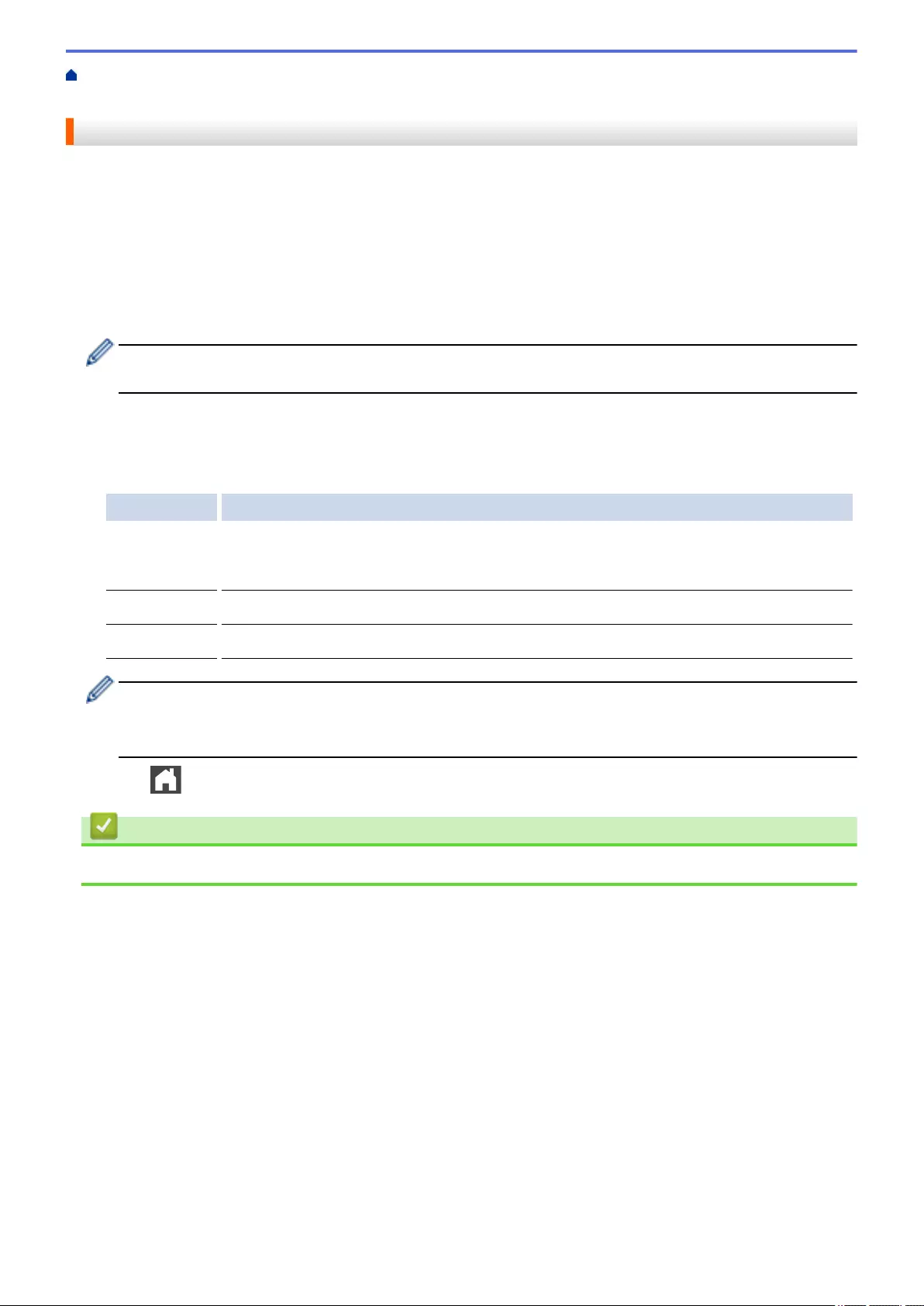
Home > Machine Settings > Change Machine Settings from the Control Panel > General Settings > Prevent
Dialing a Wrong Number (Dial Restriction)
Prevent Dialing a Wrong Number (Dial Restriction)
This feature prevents users from sending a fax or call to the wrong number by mistake. You can set the machine
to restrict dialing when you use the dial pad, Address Book, Shortcuts and LDAP search.
1. Press [Settings] > [All Settings] > [Fax] > [Dial Restriction].
2. Press one of the following options:
•[Dial Pad]
•[Address Book]
If you combine Address Book numbers when dialing, the numbers will be recognized as dial pad input and
will not be restricted.
•[Shortcuts]
•[LDAP Server]
3. Press one of the following options:
Option Description
Enter #
Twice
The machine prompts you to re-enter the number, and then if you re-enter the same
number correctly, the machine will start dialing. If you re-enter the wrong number, the LCD
will display an error message.
On The machine restricts all fax sending and outbound calls for that dialing method.
Off The machine does not restrict the dialing method.
• The [Enter # Twice] setting will not work if you use an external phone or press [Hook] before
entering the number. You will not be asked to re-enter the number.
• If you choose [On] or [Enter # Twice], you cannot use the Broadcasting feature.
4. Press .
Related Information
•General Settings
617
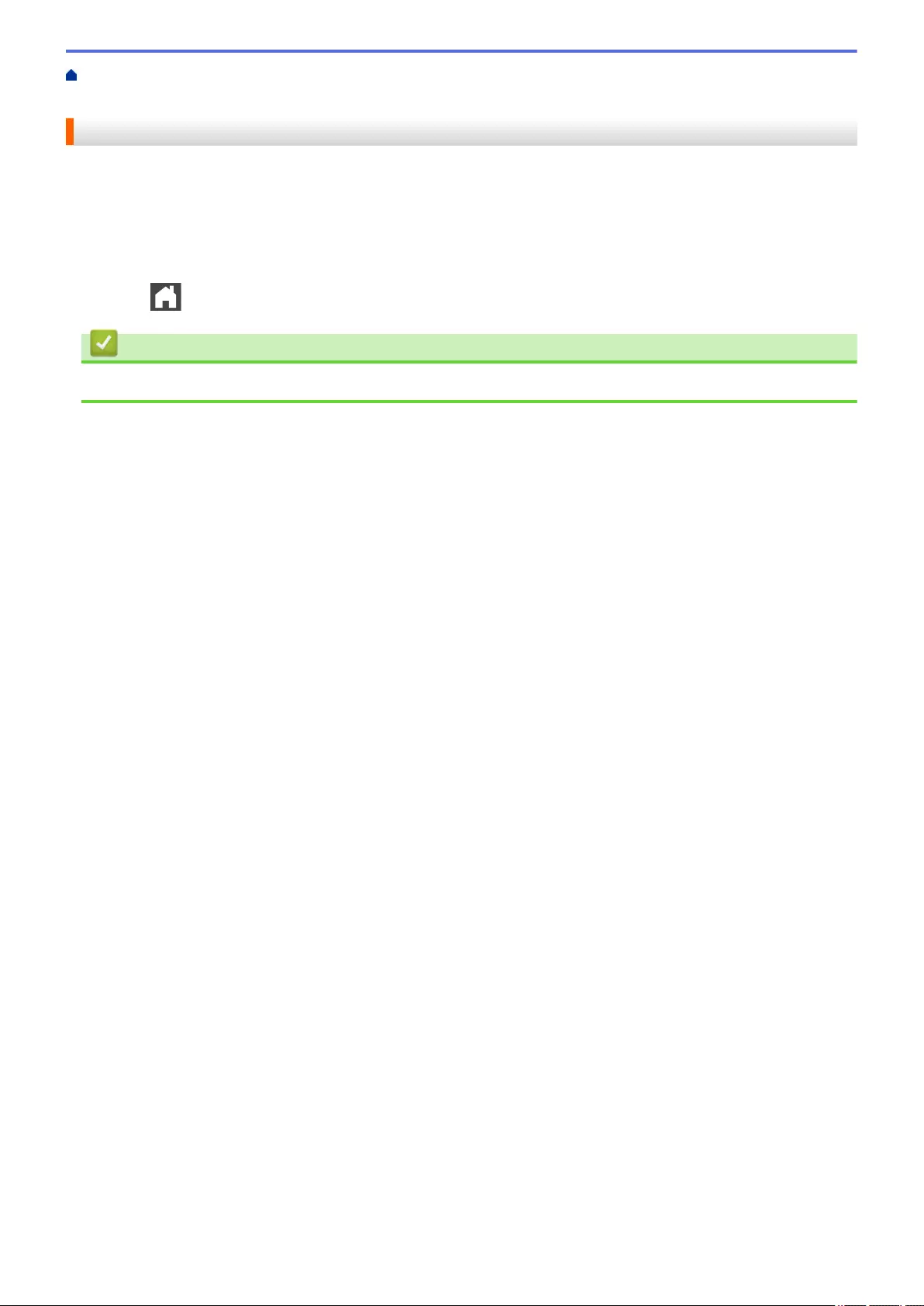
Home > Machine Settings > Change Machine Settings from the Control Panel > General Settings > Reduce
Printing Noise
Reduce Printing Noise
The Quiet Mode setting can reduce printing noise. When Quiet Mode is turned on, the print speed becomes
slower. The factory setting is off.
1. Press [Settings] > [All Settings] > [General Setup] > [Ecology] > [Quiet Mode].
2. Press [On] or [Off].
3. Press .
Related Information
•General Settings
618
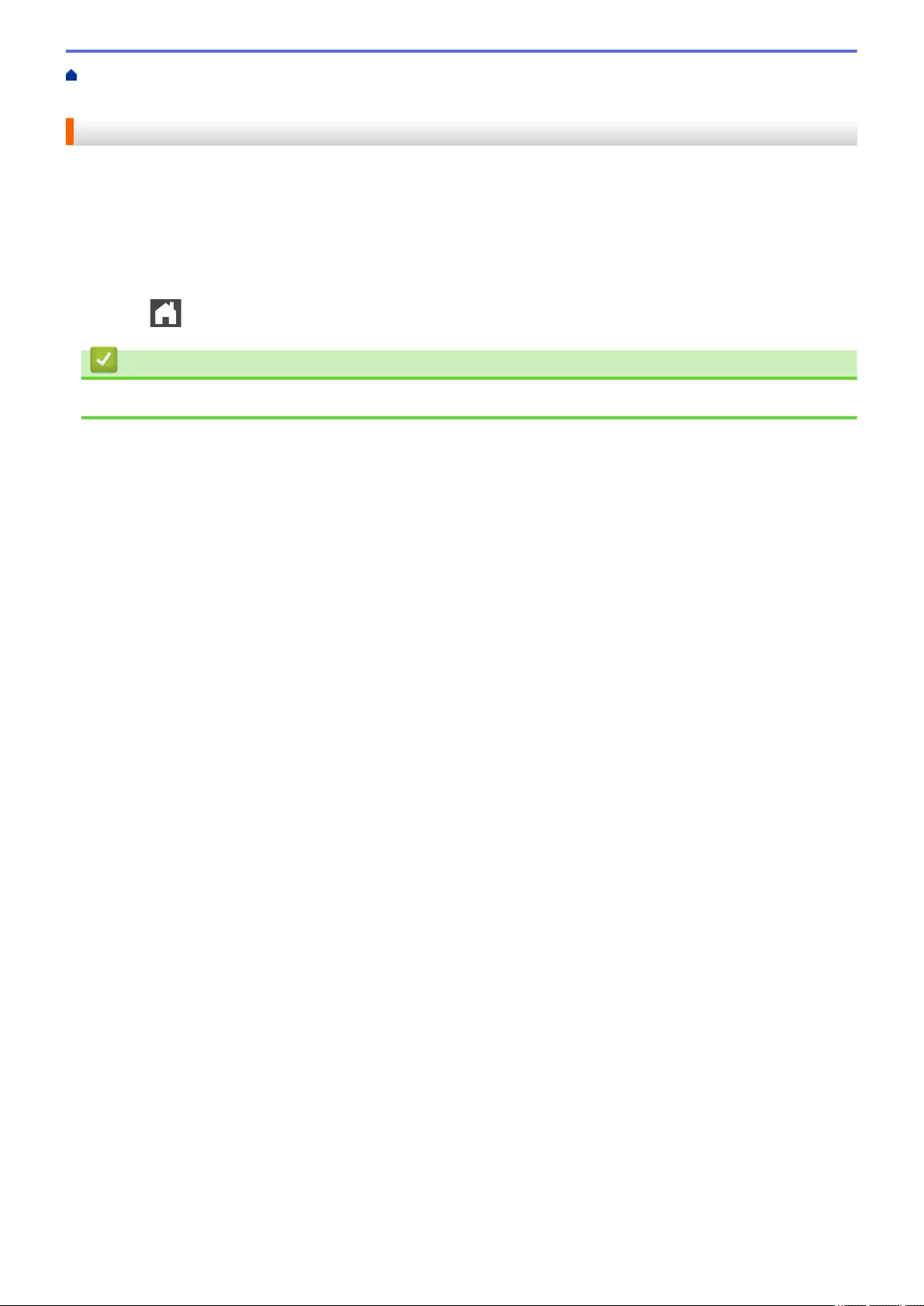
Home > Machine Settings > Change Machine Settings from the Control Panel > General Settings > Change
the Language on the LCD
Change the Language on the LCD
Change the LCD language if needed.
This feature is not available in some countries.
1. Press [Settings] > [All Settings] > [Initial Setup] > [Local Language].
2. Press your language.
3. Press .
Related Information
•General Settings
619

Home > Machine Settings > Change Machine Settings from the Control Panel > Save Your Favorite
Settings as a Shortcut > Add Shortcuts
Add Shortcuts
You can add the Fax, Copy, Scan, Web Connect and Apps settings you use most frequently by saving them as
your Shortcuts. Later you can press the Shortcut to apply these settings instead of manually re-entering them.
Some Shortcut menus are not available depending on your model.
These instructions describe how to add a Copy Shortcut. The steps for adding a Fax, Scan, Web Connect or
Apps Shortcut are very similar.
1. Press [Shortcuts].
2. Press a tab from [1] to [8].
3. Press where you have not added a Shortcut.
4. Press a or b to display [Copy], and then press [Copy].
5. Swipe up or down or press a or b to display the copy presets, and then press the copy preset you want.
6. Swipe up or down or press a or b to display the available settings, and then press the setting you want to
change.
7. Swipe up or down or press a or b to display the available options for the setting, and then press the option
you want.
Repeat these two steps until you have selected all the settings and options you want.
8. When you have finished changing settings, press [Save as Shortcut].
9. Read and confirm the displayed list of settings you have selected, and then press [OK].
10. Enter a name for the Shortcut using the LCD, and then press [OK].
Related Information
•Save Your Favorite Settings as a Shortcut
621

Home > Machine Settings > Change Machine Settings from the Control Panel > Save Your Favorite
Settings as a Shortcut > Change or Delete Shortcuts
Change or Delete Shortcuts
You cannot change a Web Connect Shortcut or Apps Shorcut. If you need to change them, delete them,
and then add a new Shortcut.
1. Press [Shortcuts].
2. Press a tab from [1] to [8] to display the Shortcut you want to change.
3. Press the Shortcut you want to change.
The settings for the Shortcut you selected appear.
To delete the Shortcut or edit the name, press and hold the Shortcut until the options appear, and then
follow the on-screen menus.
4. Press [Options].
5. Change the settings for the Shortcut if needed.
6. Press [OK] (if needed).
7. When finished, press [Save as Shortcut].
8. Read and confirm the displayed list of settings you have selected, and then press [OK].
9. Do one of the following:
• To overwrite the Shortcut, press [Yes].
• If you do not want to overwrite the Shortcut, press [No] to enter a new Shortcut name.
Enter a new name using the LCD, and then press [OK].
To edit the name, hold down to delete the current name.
Related Information
•Save Your Favorite Settings as a Shortcut
622
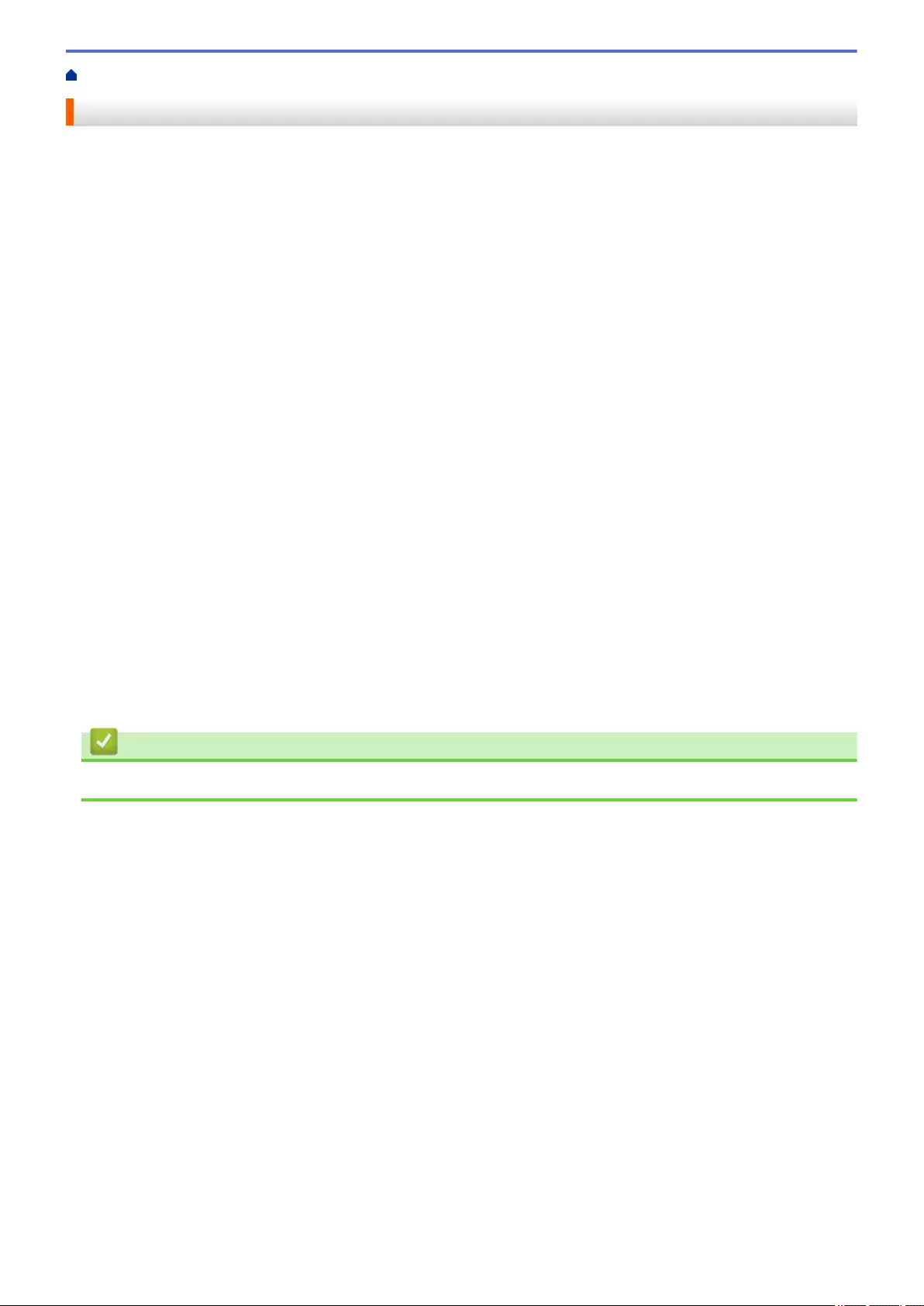
Home > Machine Settings > Change Machine Settings from the Control Panel > Print Reports > Reports
Reports
The following reports are available:
Transmission
The Transmission report prints a Transmission Verification Report of your last transmission.
Address Book
The Address Book report prints an alphabetical list of names and numbers stored in the Address Book
memory.
Fax Journal
The Fax Journal prints a list of information about your last 200 incoming and outgoing faxes. (TX means
Transmit, RX means Receive)
User Settings
The User Settings report prints a list of your current settings.
Printer Settings
The Printer Settings report prints a list of your current printer settings.
Network Configuration (Models with network functionality)
The Network Configuration report prints a list of your current network settings.
Print File List
The Print File List prints a list of the fonts and print macros stored in the machine.
Drum Dot Print
The Drum Dot Print prints the drum dot sheet, which helps when it is time to clean the drum unit.
WLAN Report (Models with wireless network functionality)
The WLAN Report prints the wireless LAN connectivity diagnosis.
Related Information
•Print Reports
624
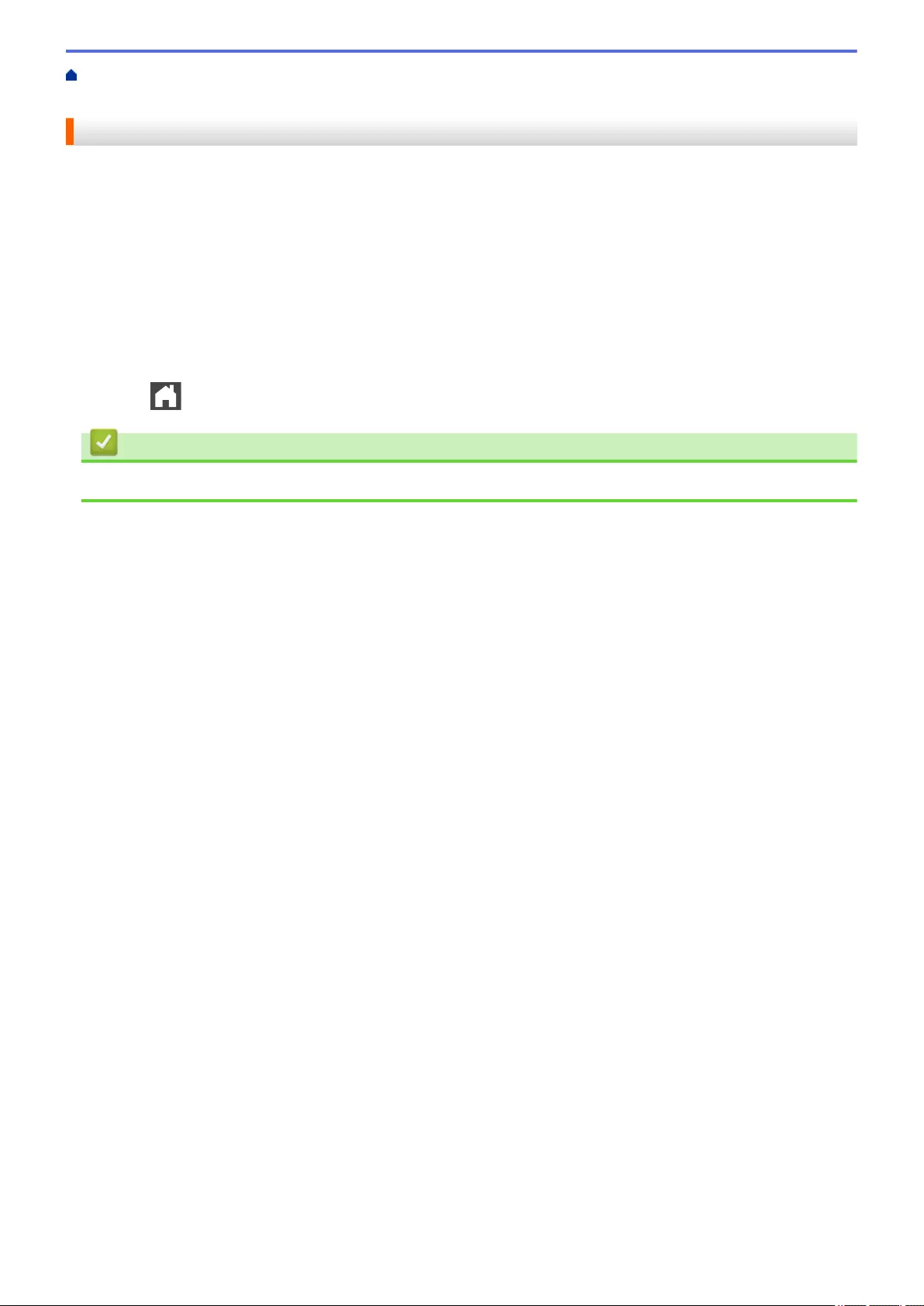
Home > Machine Settings > Change Machine Settings from the Control Panel > Print Reports > Print a
Report
Print a Report
1. Press [Settings] > [All Settings] > [Print Reports].
2. Swipe up or down or press a or b to display the report you want to print, and then press it.
3. Do one of the following:
• If you choose [Transmission], do one of the following:
- To view the Transmission Verification Report, press [View on LCD].
- To print the Transmission Verification Report, press [Print Report].
• If you choose other reports, go to next step.
4. Press [Yes].
5. Press .
Related Information
•Print Reports
625
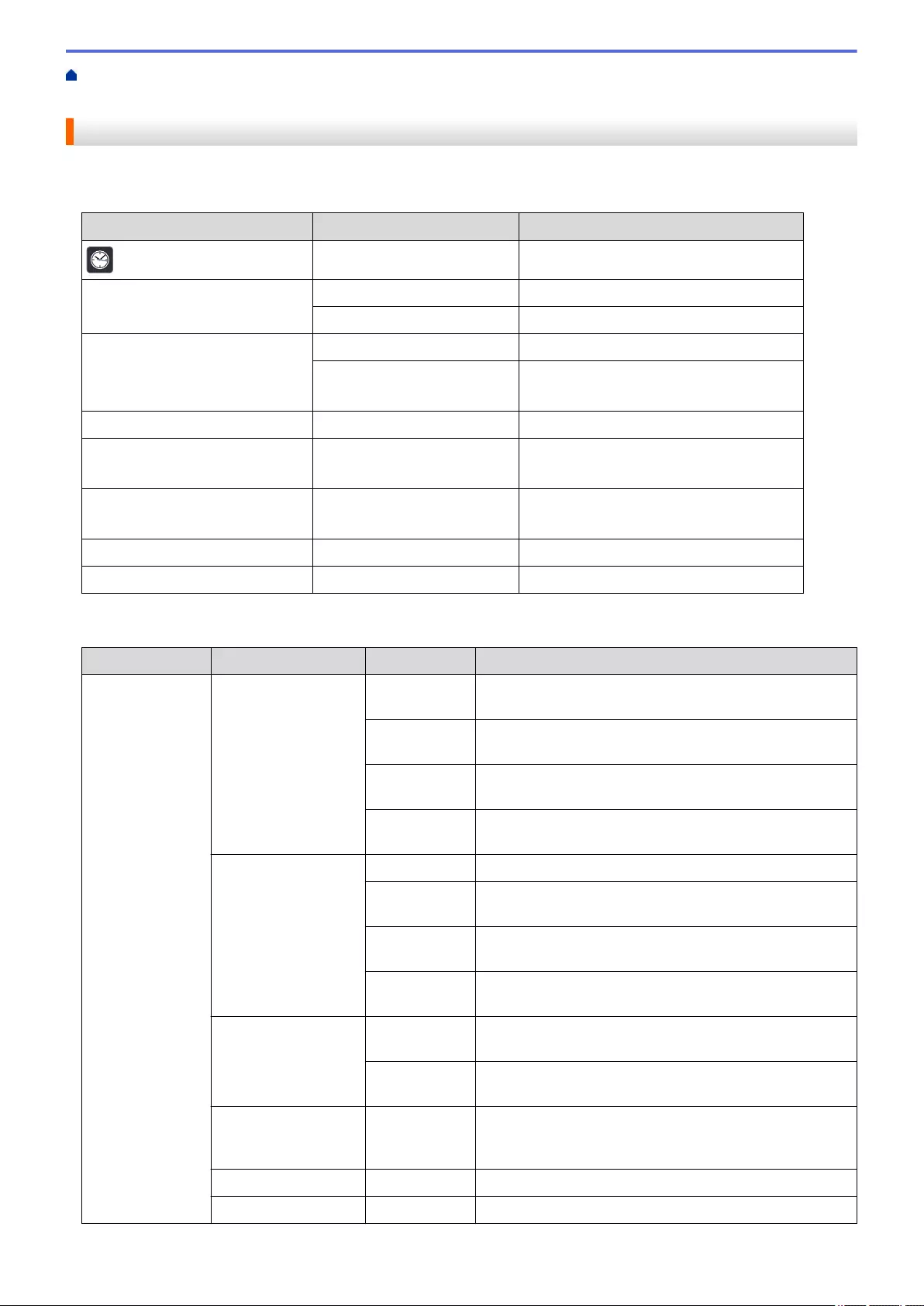
Home > Machine Settings > Change Machine Settings from the Control Panel > Settings and Features
Tables > Settings Tables
Settings Tables
[Settings]
Level 1 Level 2 Descriptions
Date & Time Access the Date and Time setting menus.
Toner Toner Life View the approximate remaining toner life.
Test Print Print a test page.
Network Wired LAN Access the Wired LAN setting menus.
WLAN
(For wireless network models)
Access the WLAN setting menus.
Screen Settings - Access the default screen setting menus.
Wi-Fi Direct
(For wireless network models)
- Access the Wi-Fi Direct setting menus.
Fax Preview
(Available only for certain models)
- View received faxes on the LCD.
Tray Setting - Access the tray setting menus.
All Settings - Configure the detailed settings.
[All Settings] > [General Setup]
Level 1 Level 2 Level 3 Descriptions
Tray Setting Paper Type MP Tray Select the paper type that matches the paper in the MP
tray.
Tray #1 Select the paper type that matches the paper in the
standard paper tray.
Tray #2 1Select the paper type that matches the paper in the
Optional Tray (Tray 2).
Tray #3 1 Select the paper type that matches the paper in the
Optional Tray (Tray 3).
Paper Size MP Tray Select the size of paper you loaded in the MP tray.
Tray #1 Select the size of paper you loaded in the standard
paper tray.
Tray #2 1 Select the size of paper you loaded in the Optional Tray
(Tray 2).
Tray #3 1Select the size of paper you loaded in the Optional Tray
(Tray 3).
Paper Low Notice
(Available only for
certain models)
Paper Low
Notice
Select whether to display a message telling you that the
paper tray is nearly empty.
Notice
Level
Select the minimum paper level that will trigger the
message.
Check Size - Select whether to display a message telling you to check
that the size of the paper in the machine and the
machine's Paper Size setting match.
Tray Use: Copy - Select the tray to be used for Copy.
Tray Use: Fax - Select the tray to be used for Fax.
627
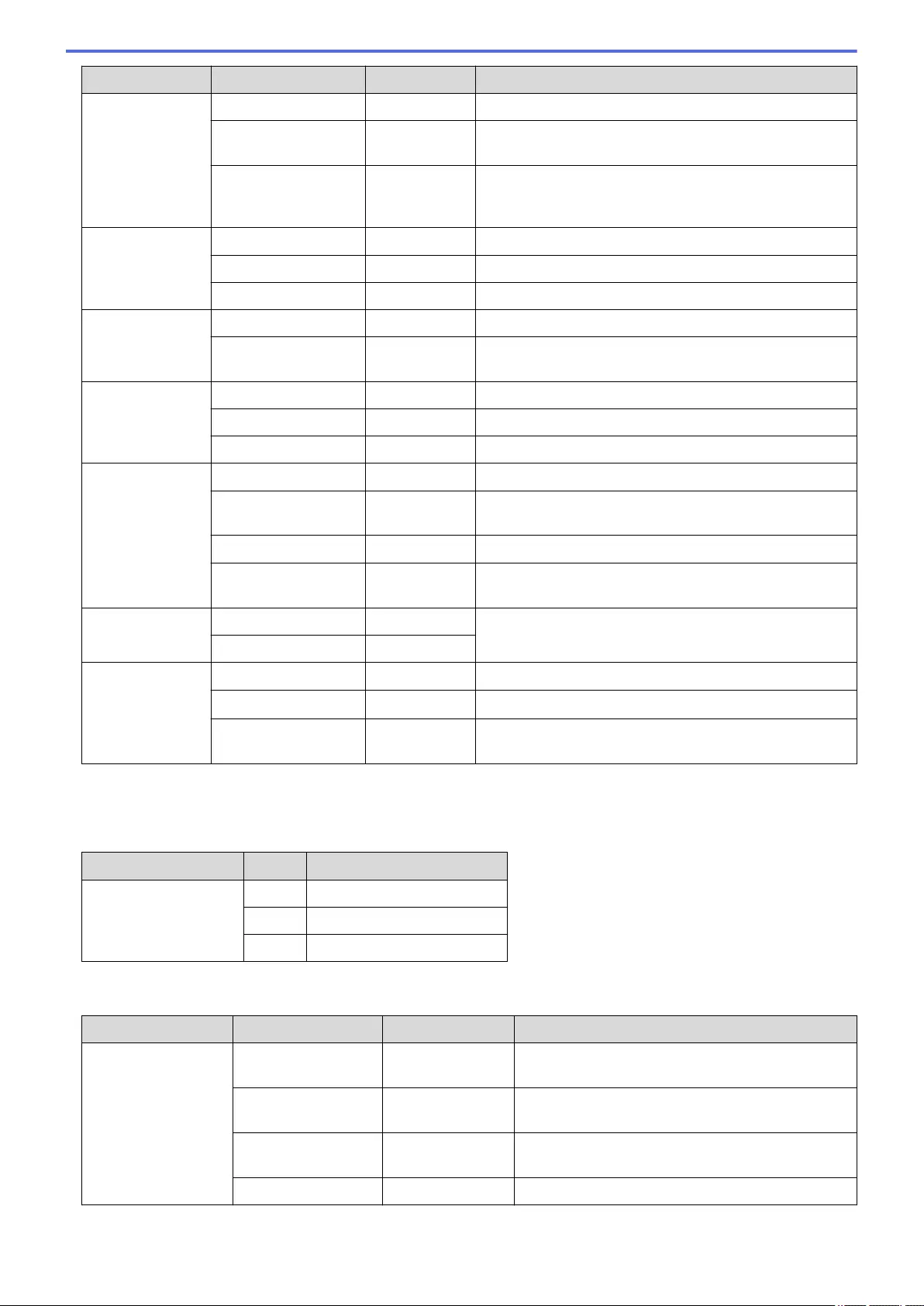
Level 1 Level 2 Level 3 Descriptions
Tray Setting Tray Use: Print - Select the tray to be used for Print.
Skip Tray 1- Select a specific tray you do not want to use; if it is
loaded with paper of the wrong size.
Separator Tray 1 - Select the tray that contains the paper used as the
separator paper, which is inserted between each print
job.
Volume Ring - Adjust the ring volume.
Beep - Adjust the beeper volume.
Speaker - Adjust the speaker volume.
LCD Settings Backlight - Adjust the brightness of the LCD backlight.
Dim Timer - Set how long the LCD backlight stays on after you go
back to your Home screen.
Screen
Settings
Home Screen - Set the default Home screen settings.
Copy Screen - Set the default Copy screen settings.
Scan Screen - Set the default Scan screen settings.
Ecology Toner Save - Increase the page yield of the toner cartridge.
Sleep Time - Set how much time will pass before the machine enters
Power Saving Mode.
Quiet Mode - Decrease printing noise.
Auto Power Off - Set the number of hours that the machine will remain in
Deep Sleep Mode before going into Power Off Mode.
Setting Lock Set Password - Restrict unauthorized users from changing the machine’s
settings.
Lock Off⇒On -
Delete
Storage
Macro ID Macro ID XX Delete the registered Macro data.
Font ID Font ID XX Delete the registered Font data.
Format - Restore the Macro and Font data of your machine to the
default settings.
1Available if the Optional Tray(s) is installed.
[All Settings] > [Shortcut Settings]
Level 1 Level 2 Descriptions
(Select shortcut button) Rename Change the shortcut name.
Edit Change the shortcut settings.
Delete Delete the shortcut.
[All Settings] > [Fax]
Level 1 Level 2 Level 3 Descriptions
Setup Receive Receive Mode - Select the Receive Mode that best suits your
needs.
Ring Delay - Set the number of rings before the machine
answers in Fax or Fax/Tel mode.
F/T Ring Time - Set the length of the pseudo/double-ring time in
Fax/Tel mode.
Fax Preview - View received faxes on the LCD.
628
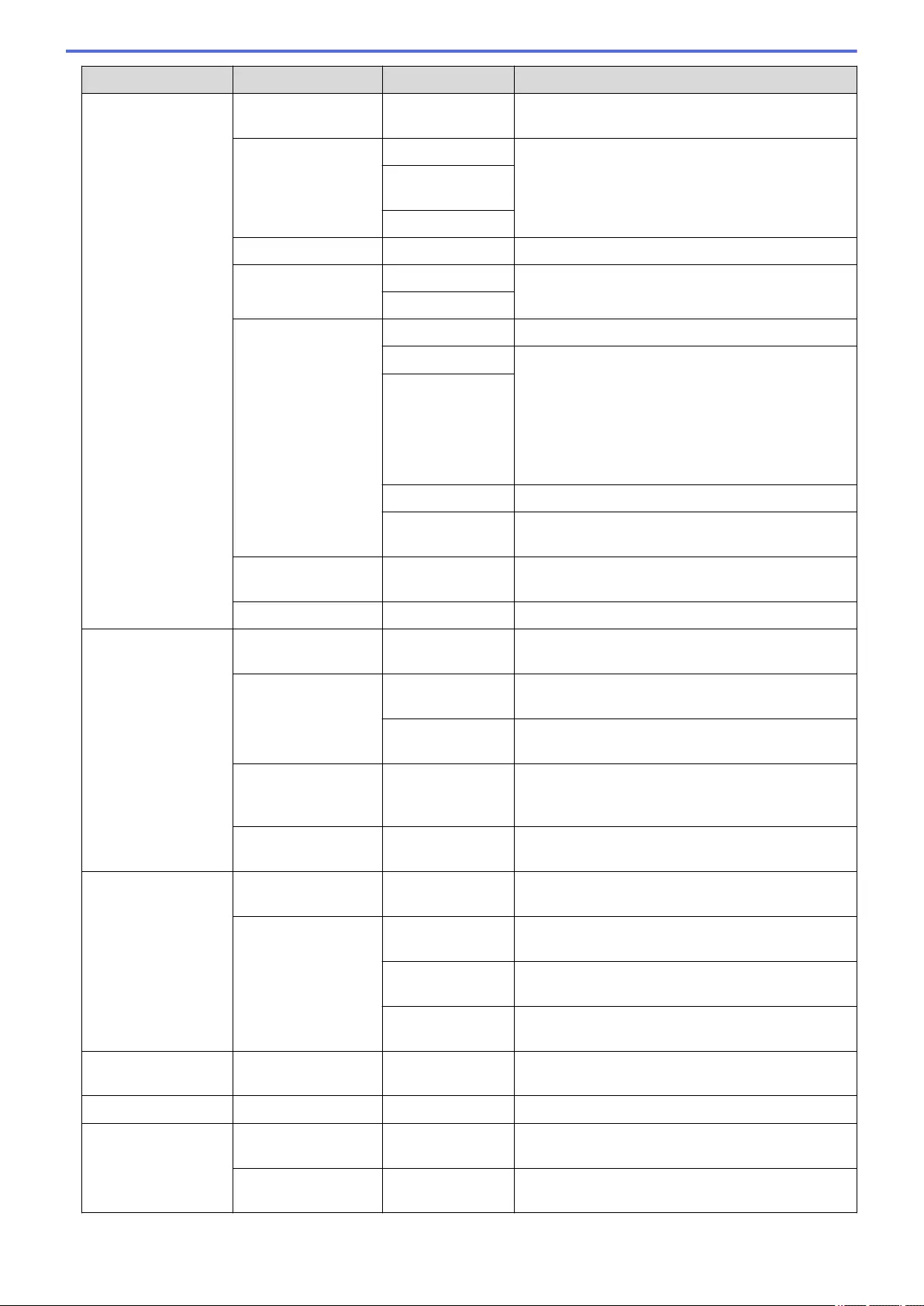
Level 1 Level 2 Level 3 Descriptions
Setup Receive Easy Receive - Receive fax messages automatically when you
answer a call and hear fax tones.
Remote Codes Remote Codes Answer calls at an extension or external telephone
and use codes to turn the machine on or off. You
can personalize the codes.
Fax Receive
Code
Tel Answer
Auto Reduction - Reduce the size of incoming faxes.
PC Fax Receive On Set the machine to send faxes to your computer.
You can turn on the Backup Print safety feature.
Off
Memory Receive Off -
Fax Forward Set the machine to forward fax messages, to call
your pager or cell phone, or to store incoming
faxes in the machine's memory (so you can
retrieve them while you are away from your
machine).
If you select Fax Forward, you can turn on the
Backup Print safety feature.
Paging
Fax Storage Store incoming faxes in the memory.
Forward to
Cloud
Forward incoming faxes to the online service.
Fax Rx Stamp - Print the received time and date on the top of
received faxes.
2-sided - Print received faxes on both sides of the paper.
Setup Send Batch TX - Combine delayed faxes to the same fax number at
the same time of day into one transmission.
Coverpage
Setting
Print Sample Print a sample of the fax cover page. You can fill in
information and fax it with your document.
Coverpage
Message
Set up your own comments for the fax cover page.
Auto Redial - Set the machine to redial the last fax number after
five minutes if the fax did not go through because
the line was busy.
Destination - Set the machine to display the destination
information on the LCD during fax dialing.
Report Setting Transmission - Select the initial setup for the Transmission
Verification Report.
Journal Period Journal
Period
Set the interval for automatic printing of the Fax
Journal.
Time If you select an option other than Off and Every 50
Faxes, you can set the time for the option.
Day If you select Every 7 Days, you can set the day of
the week.
Print Fax - - Print received faxes stored in the machine's
memory.
Remote Access - - Set your own code for Remote Retrieval.
Dial Restriction Dial Pad - Set the machine to restrict dialing when using the
dial pad.
Address Book - Set the machine to restrict the dialing when using
the Address Book.
629
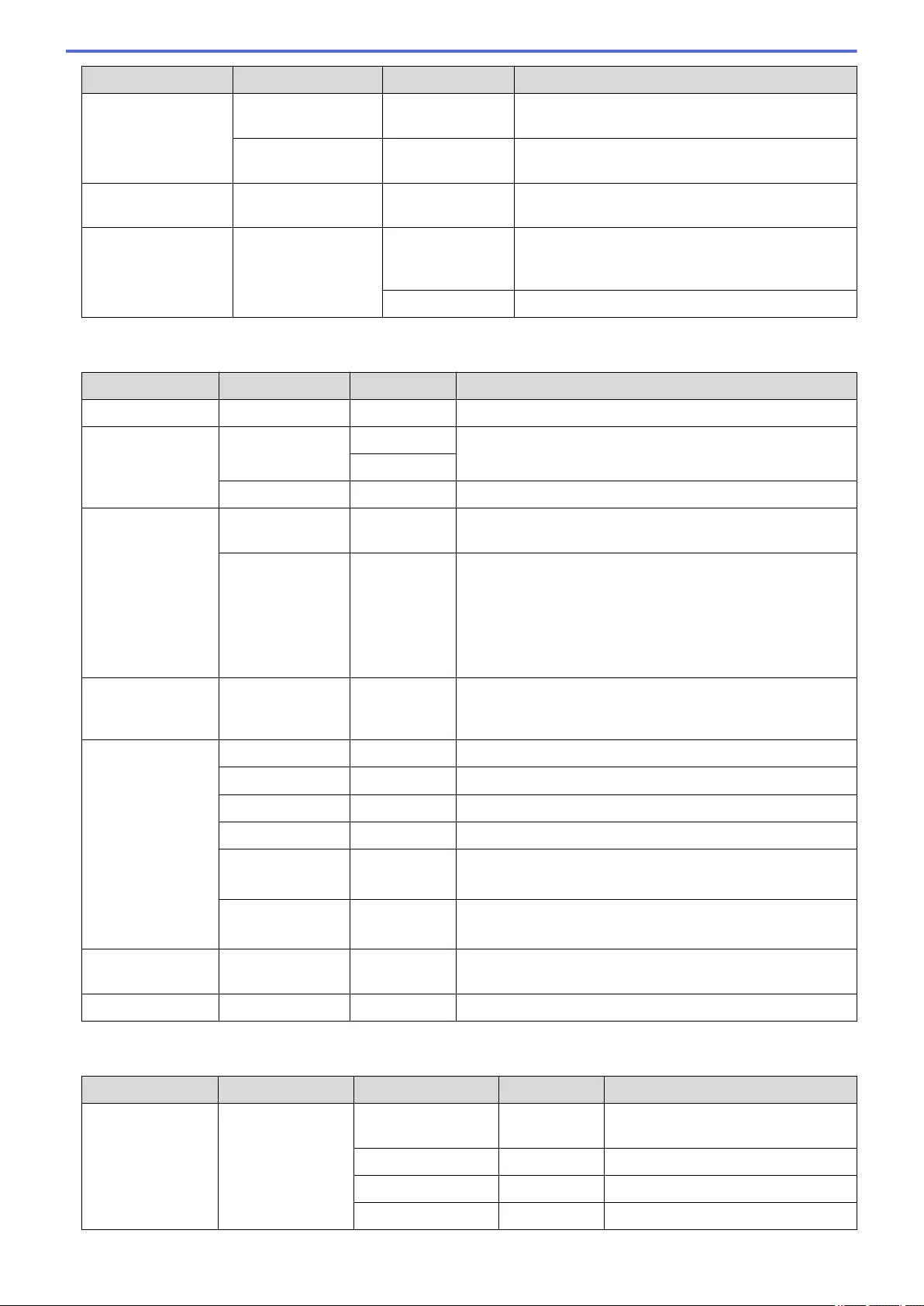
Level 1 Level 2 Level 3 Descriptions
Dial Restriction Shortcuts - Set the machine to restrict the dialing when using
a Shortcut.
LDAP Server - Set the machine to restrict the dialing of LDAP
server numbers.
Remaining Jobs - - Check which scheduled jobs are in the machine's
memory and cancel selected jobs.
Miscellaneous Distinctive Distinctive Turn on the telephone company's Distinctive Ring
subscriber service to register your new ring pattern
on the machine.
Ring Pattern Register your new ring pattern on the machine.
[All Settings] > [Printer]
Level 1 Level 2 Level 3 Descriptions
Emulation - - Select the emulation mode.
Print Options Internal Font HP LaserJet Print a list of the machine’s internal fonts.
BR-Script 3
Test Print - Print a test page.
2-sided 2-sided Print - Enable or disable 2-sided printing and choose long edge or
short edge.
Single Image - For a print job where the last page is a 1-sided image,
select the 1-sided Feed option to reduce printing time.
When you use Letterhead or Preprinted paper, you must
select the 2-sided Feed option. If you select 1-sided
Feed for Letterhead or Preprinted paper, the last page will
be printed on the reverse side.
Auto Continue - - Select this setting if you want the machine to clear paper
size errors or media type errors, and use paper from other
trays.
Carbon Menu Carbon Copy - Enable or disable the Carbon Copy function.
Copies - Sets the number of printed pages.
Copy1 Tray - Select the tray you use for Copy1.
Copy1 Macro - Select a macro for Copy1.
Copy2 Tray...
Copy8 Tray
- Select the tray you use for Copy2 to 8.
The menu appears when printing two pages or more.
Copy2 Macro...
Copy8 Macro
- Select a macro for Copy2 to 8.
The menu appears when printing two pages or more.
HP Tray
Command
- - Select the correct version of HP LaserJet emulation.
Reset Printer - - Restore the printer settings to the factory settings.
[All Settings] > [Network]
Level 1 Level 2 Level 3 Level 4 Descriptions
Wired LAN TCP/IP BOOT Method IP Boot
Tries
Select the BOOT method that best
suits your needs.
IP Address - Enter the IP address.
Subnet Mask - Enter the Subnet mask.
Gateway - Enter the Gateway address.
630
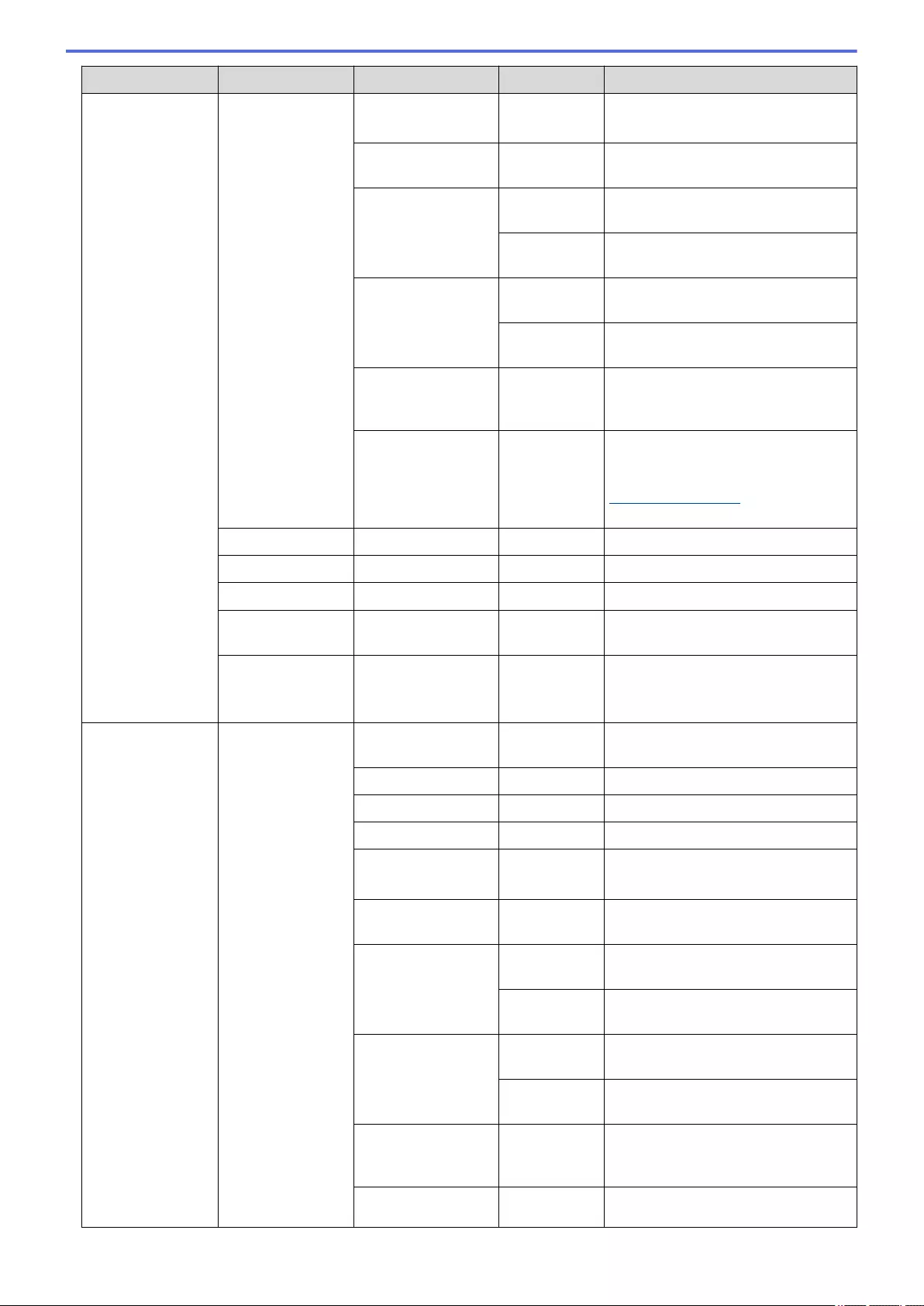
Level 1 Level 2 Level 3 Level 4 Descriptions
Wired LAN TCP/IP Node Name - Enter the Node name.
(up to 32 characters)
WINS
Configuration
- Select the WINS configuration mode.
WINS Server Primary Specify the IP address of the primary
WINS server.
Secondary Specify the IP address of the
secondary WINS server.
DNS Server Primary Specify the IP address of the primary
DNS server.
Secondary Specify the IP address of the
secondary DNS server.
APIPA - Set the machine to allocate the IP
address from the link-local address
range automatically.
IPv6 - Turn the IPv6 protocol on or off. To
use the IPv6 protocol, go to the
Brother Solutions Center at
support.brother.com for more
information.
Ethernet - - Select the Ethernet link mode.
Wired Status - - View the current wired status.
MAC Address - - View the machine's MAC address.
Set to Default - - Restore the wired network settings to
the factory settings.
Wired Enable
(For wireless
network models)
- - Turn the Wired LAN on or off
manually.
WLAN
(For wireless
network models)
TCP/IP BOOT Method IP Boot
Tries
Select the BOOT method that best
suits your needs.
IP Address - Enter the IP address.
Subnet Mask - Enter the Subnet mask.
Gateway - Enter the Gateway address.
Node Name - Enter the Node name.
(up to 32 characters)
WINS
Configuration
- Select the WINS configuration mode.
WINS Server Primary Specify the IP address of the primary
WINS server.
Secondary Specify the IP address of the
secondary WINS server.
DNS Server Primary Specify the IP address of the primary
DNS server.
Secondary Specify the IP address of the
secondary DNS server.
APIPA - Set the machine to allocate the IP
address from the link-local address
range automatically.
IPv6 - Turn the IPv6 protocol on or off. To
use the IPv6 protocol, go to the
631
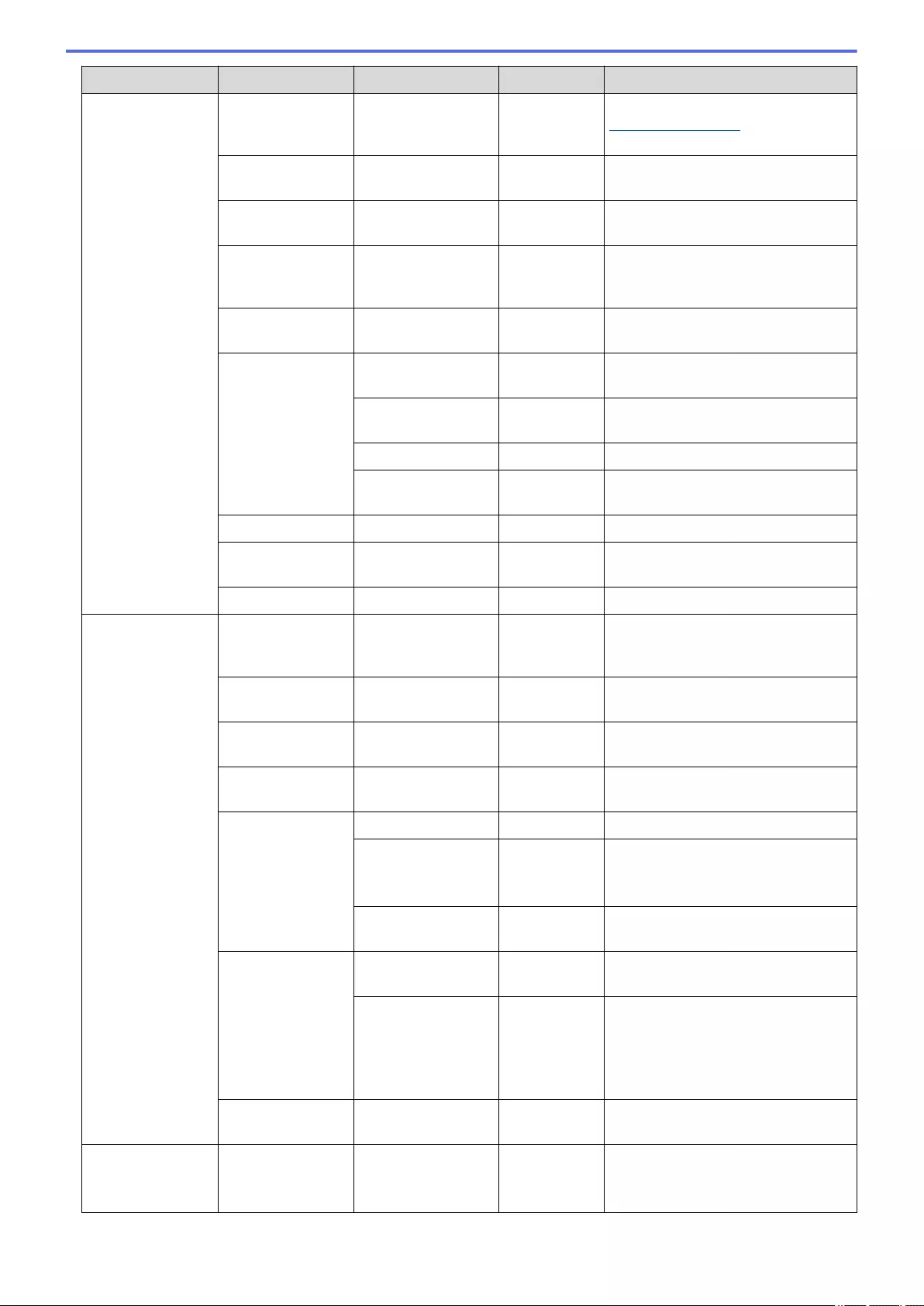
Level 1 Level 2 Level 3 Level 4 Descriptions
WLAN
(For wireless
network models)
TCP/IP Brother Solutions Center at
support.brother.com for more
information.
Setup Wizard - - Configure the wireless network
settings using the setup wizard.
WLAN Assistant - - Configure your wireless network
settings using the Brother CD-ROM.
WPS - - Configure your wireless network
settings using the one-button push
method.
WPS w/ PIN
Code
- - Configure your wireless network
settings using WPS with a PIN.
WLAN Status Status - View the current wireless network
status.
Signal - View the current wireless network
signal strength.
SSID - View the current SSID.
Comm. Mode - View the current Communication
Mode.
MAC Address - - View the machine's MAC address.
Set to Default - - Restore the wireless network
settings to the factory settings.
WLAN Enable - - Turns the wireless interface on or off.
Wi-Fi Direct
(For wireless
network models)
Push Button - - Configure your Wi-Fi Direct network
settings using the one-button push
method.
PIN Code - - Configure your Wi-Fi Direct network
settings using WPS with a PIN code.
Manual - - Configure your Wi-Fi Direct network
settings manually.
Group Owner - - Set your machine as the Group
Owner.
Device
Information
Device Name - View your machine's device name.
SSID - View the Group Owner's SSID.
When the machine is not connected,
the LCD displays Not Connected.
IP Address - View your machine's current IP
Address.
Status
Information
Status - View the current Wi-Fi Direct network
status.
Signal - View the current Wi-Fi Direct network
signal strength.
When your machine acts as Group
Owner, the LCD always indicates a
strong signal.
I/F Enable - - Turn the Wi-Fi Direct connection on
or off.
NFC
(Available only for
certain models)
- - - Turn the NFC function on or off.
632
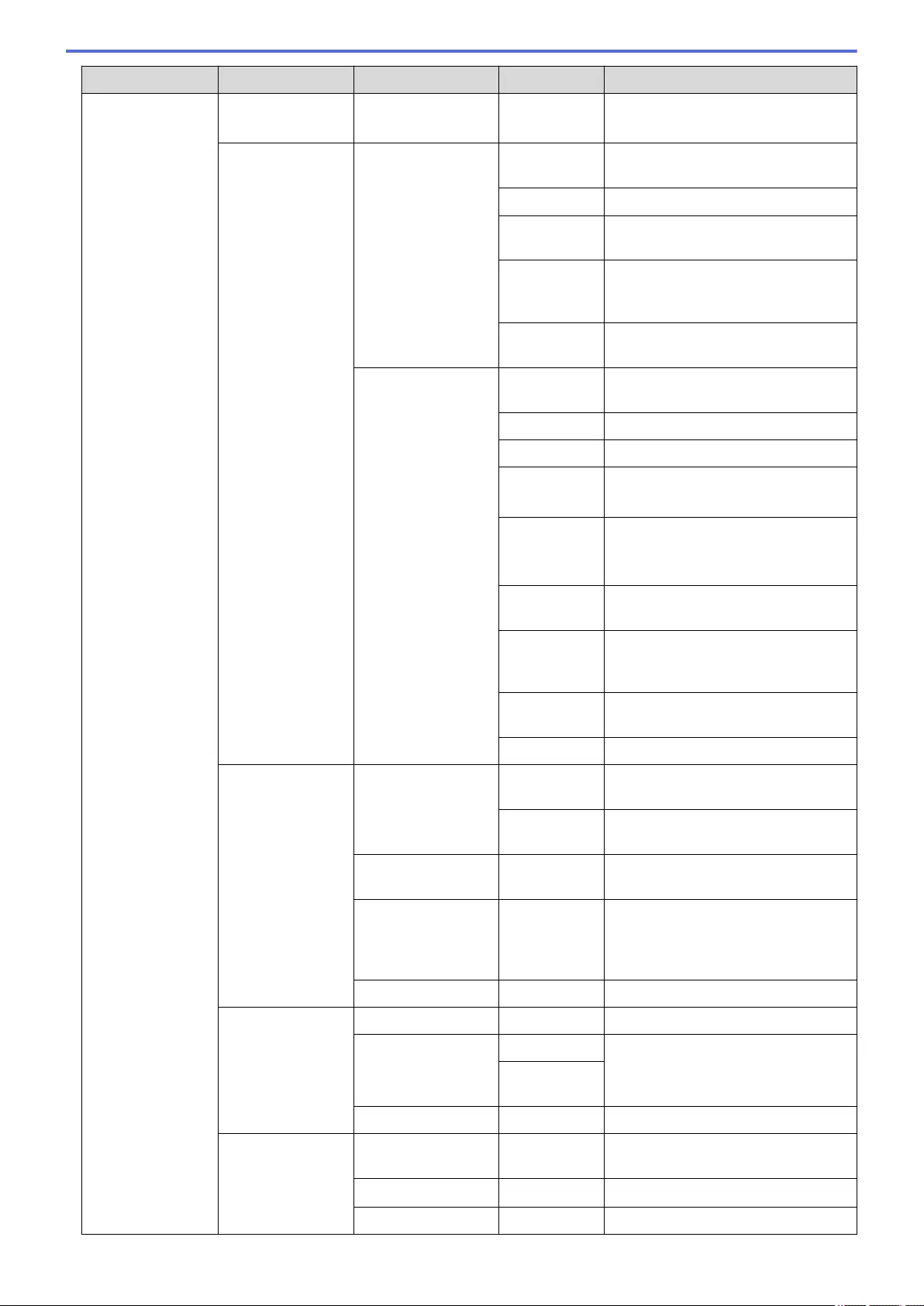
Level 1 Level 2 Level 3 Level 4 Descriptions
E-mail/IFAX Mail Address - - Enter the email address.
(Up to 60 characters)
Setup Server SMTP Server Enter the SMTP server name and
address.
Port Enter the SMTP port number.
Auth. for
SMTP
Select the Security method for email
notification.
SSL/TLS Send or receive an email via an
email server that requires secure
SSL/TLS communication.
Verify
Cert.
Verify the SMTP Server Certificate
automatically.
POP3/IMAP4 Protocol Select the protocol for receiving an
email from the server.
Server Enter the server name and address.
Port Enter the port number.
Mailbox
Name
Enter the mailbox name.
(Up to 60 characters)
Mailbox
Password
Enter the password to login to the
server.
(Up to 32 characters)
Select
Folder
Select the specified folder in the
mailbox using the IMAP4 protocol.
SSL/TLS Send or receive an email via an
email server that requires secure
SSL/TLS communication.
Verify
Cert.
Verify the SMTP Server Certificate
automatically.
APOP Turn APOP on or off.
Setup Mail RX Auto Polling Auto
Polling
Check the server for new messages
automatically.
Poll
Frequency
Set the interval for checking new
messages on the server.
Header - Select the contents of the email
header to be printed.
Del/Read Error
Mail
- The POP3 server deletes error
emails automatically. The IMAP4
server deletes error emails
automatically after you read them.
Notification - Receive notification messages.
Setup Mail TX Sender Subject - View the subject.
Size Limit Size Limit Limit the size of email documents.
Maximum
Size(MB)
Notification - Send notification messages.
Setup Relay Relay Broadcast - Relay a document to another fax
machine.
Relay Domain Relay XX Register the Domain name.
Relay Report - Print the relay Broadcast Report.
633
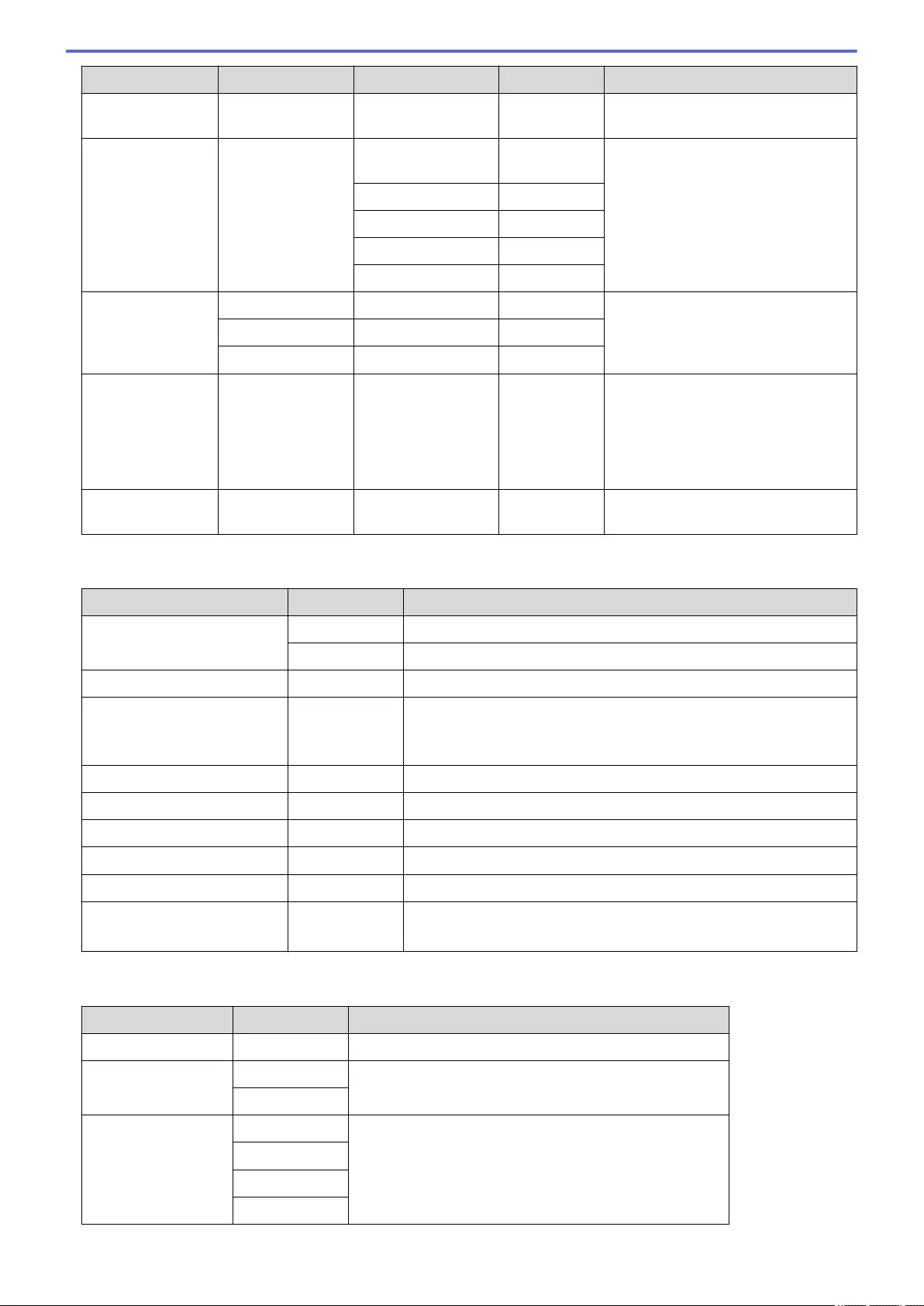
Level 1 Level 2 Level 3 Level 4 Descriptions
E-mail/IFAX Manual Receive - - Check the POP3 or IMAP4 server for
new messages manually.
Web Connect
Settings
Proxy Settings Proxy
Connection
- Change the Web connection
settings.
Address -
Port -
User Name -
Password -
Fax to Server Fax to Server - - Select the network connection type.
Prefix - -
Suffix - -
Security IPsec - - IPsec is an optional security feature
of the IP protocol that provides
authentication and encryption
services. We recommend contacting
your network administrator before
changing this setting.
Network Reset - - - Restore all network settings back to
the factory settings.
[All Settings] > [Print Reports]
Level 1 Level 2 Descriptions
Transmission View on LCD Display a Transmission Verification Report of your last transmission.
Print Report Print a Transmission Verification Report of your last transmission.
Address Book - Print a list of names and numbers stored in the Address Book.
Fax Journal - Print a list of information about your last 200 incoming and outgoing
faxes.
(TX means Transmit. RX means Receive.)
User Settings - Print a list of your settings.
Printer Settings - Print a list of your Printer settings.
Network Configuration - Print a list of your Network settings.
Print File List - Print a list of data saved in the machine's memory.
Drum Dot Print - Print the Drum Dot Check Sheet.
WLAN Report
(For wireless network models)
- Print the wireless LAN connection results.
[All Settings] > [Machine Info.]
Level 1 Level 2 Descriptions
Serial No. - Check your machine's serial number.
Firmware Version Main Version Check your machine's firmware version.
Sub1 Version
Page Counter Total Check the number of the pages the machine has printed.
Fax
Copy
Print
634

Level 1 Level 2 Descriptions
Page Counter Other Check the number of the pages the machine has printed.
Parts Life 1Drum Display the remaining life of the drum unit.
Fuser Display the remaining life of the fuser unit.
Laser Unit Display the remaining life of the laser unit.
PF Kit MP Display the remaining life of the PF kit MP.
PF Kit 1 Display the remaining life of the PF Kit 1.
PF Kit 2 2Display the remaining life of the PF Kit 2.
PF Kit 3 2Display the remaining life of the PF Kit 3.
1Life is approximate and may vary by type of use.
2Available if the Optional Tray(s) is installed.
[All Settings] > [Initial Setup]
Level 1 Level 2 Descriptions
Date & Time Date Add the date and time on the screen and in the headings of the
faxes you send.
Time
Clock Type Select the time format (12-hour or 24-hour).
Auto Daylight Set the machine to change automatically for Daylight Saving Time.
Time Zone Set your time zone.
Station ID Fax Enter your name and fax number so it appears on each page you
fax.
Tel
Name
Tone/Pulse
(For Canada)
- Select the dialing mode.
Dial Tone - Shorten the dial tone detect pause.
Dial Prefix - Set a prefix number to always be added before the fax number
every time you dial.
Compatibility - Adjust the equalization for transmission difficulties.
VoIP service providers offer fax support using various standards. If
you regularly experience fax transmission errors, select Basic (for
VoIP).
Reset Machine Reset Restore all the machine settings that you have changed, such as
Date and Time.
Network Restore all network settings back to the factory settings.
Address Book
& Fax
Erase all stored phone numbers and fax settings.
All Settings Restore all the machine's settings back to the factory settings.
Factory Reset Restore all settings back to the factory settings.
Local Language
(Available only for some
countries)
- Change your LCD language.
Related Information
•Settings and Features Tables
635
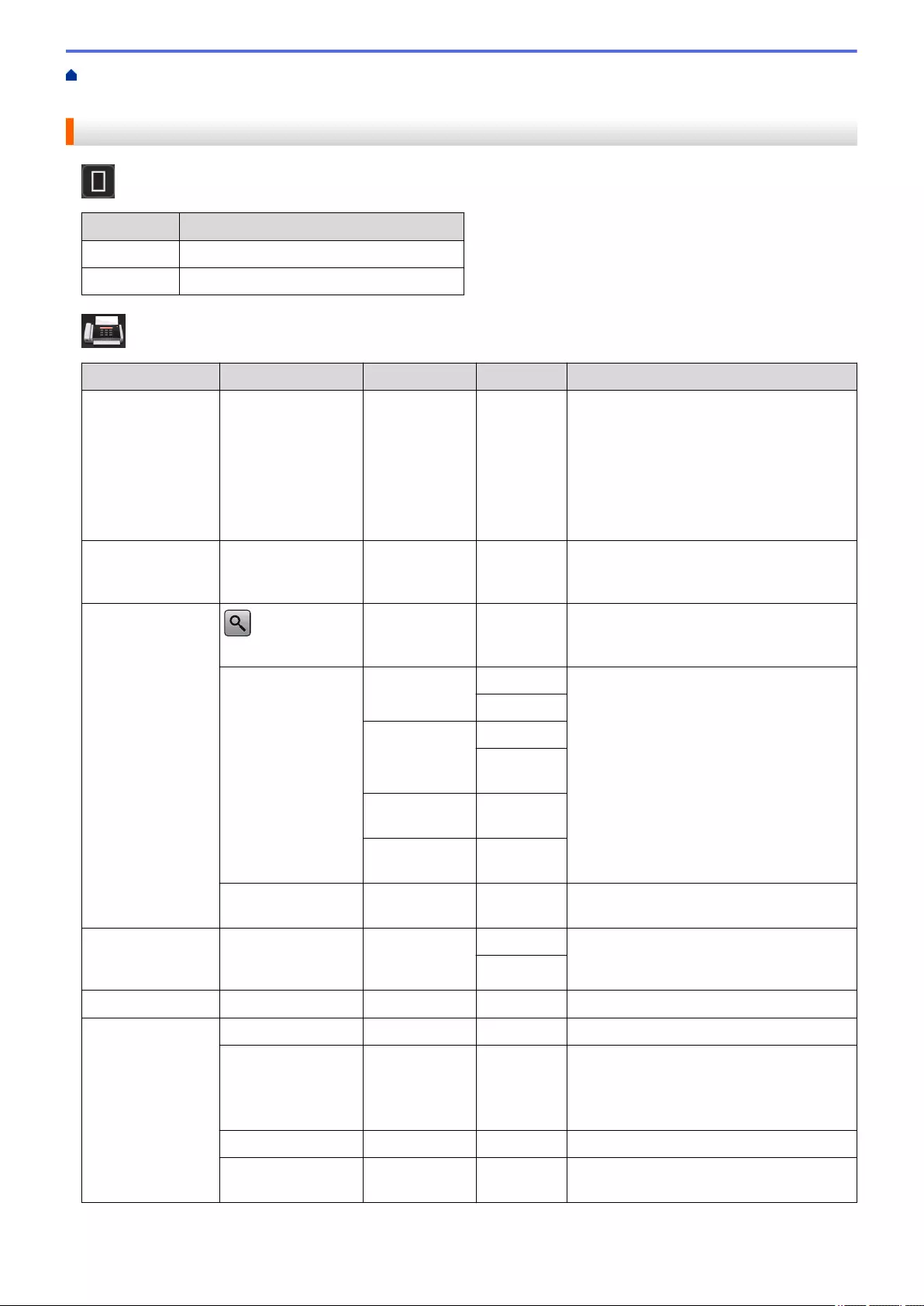
Home > Machine Settings > Change Machine Settings from the Control Panel > Settings and Features
Tables > Features Tables
Features Tables
[Toner]
Level 1 Descriptions
Toner Life View the approximate remaining toner life.
Test Print Print a test page.
[Fax] (When Fax Preview is Off)
Level 1 Level 2 Level 3 Level 4 Descriptions
Redial(Pause)- - - Redial the last number called. When you
are entering a fax or telephone number on
the Touchpanel, Redial changes to Pause
on the LCD. Press Pause when you need
a delay while dialing numbers, such as
access codes and credit card numbers.
You can also store a pause when you set
up addresses.
Hook - - - Press before dialing if you want to listen to
make sure a fax machine has answered,
and then press Fax Start.
Address Book
(Search:)
- - Search within the Address Book.
Edit Add New
Address
Name Store Address Book numbers, set up
Group numbers for Broadcasting, change
and delete Address Book numbers.
Address
Setup
Groups
Name
Add/
Delete
Change (Select
Address)
Delete (Select
Address)
(Select Address
Book)
Apply - Start sending a fax using the Address
Book.
Call History Outgoing Call (Select
Outgoing Call)
Apply Select a number from the Outgoing Call
history and then send a fax to it, add it to
the Address Book, or delete it.
Edit
Fax Start - - - Send a fax.
Options Fax Resolution - - Set the resolution for outgoing faxes.
2-sided Fax
(For automatic 2-
sided scanning
models)
- - Set the 2-sided scanning format.
Contrast - - Adjust the contrast.
Broadcasting Add Number Add
Number
Send the same fax message to more than
one fax number.
636
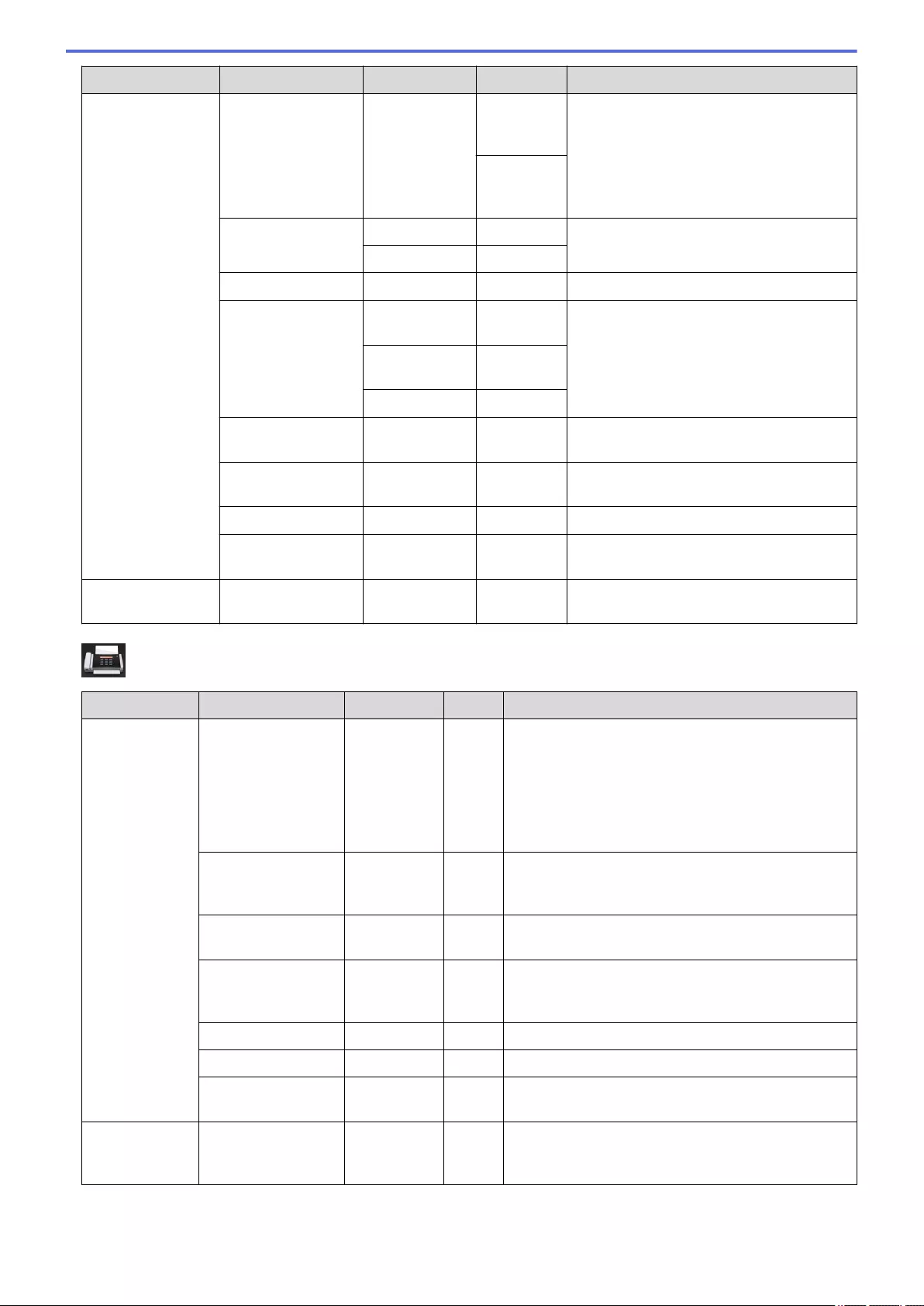
Level 1 Level 2 Level 3 Level 4 Descriptions
Options Broadcasting Add Number Add from
Address
book
Send the same fax message to more than
one fax number.
Search in
Address
book
Delayed Fax Delayed Fax - Set the time of day the delayed faxes will
be sent.
Set Time -
Real Time TX - - Send a fax without using the memory.
Coverpage Setup Coverpage
Setup
- Set the machine to automatically send a
cover page that you have pre-
programmed.
Coverpage
Message
-
Total Pages -
Overseas Mode - - Set to On if you have difficulty sending
faxes overseas.
Glass Scan Size - - Adjust the scan area of the scanner glass
to the size of the document.
Set New Default - - Save your settings as the default.
Factory Reset - - Restore all settings back to the factory
settings.
Save as
Shortcut
- - - Save the current settings as a shortcut.
[Fax] (When Fax Preview is On)
Level 1 Level 2 Level 3 Level 4 Descriptions
Sending
Fax(es)
Redial(Pause)- - Redial the last number called. When you are
entering a fax or telephone number on the
Touchpanel, Redial changes to Pause on the LCD.
Press Pause when you need a delay while dialing
numbers, such as access codes and credit card
numbers. You can also store a pause when you set
up addresses.
Hook - - Press before dialing if you want to listen to make
sure a fax machine has answered, and then press
Fax Start.
Address Book - - Select the address of the recipient from the address
book.
Call History - - Select a number from the Outgoing Call history and
then send a fax to it, add it to the Address Book, or
delete it.
Fax Start - - Send a fax.
Options - - Select your settings.
Save as
Shortcut
- - Save the current settings as a shortcut.
Received
Faxes
Print/Delete Print
All:New
Fax(es)
- Print the new received faxes.
637
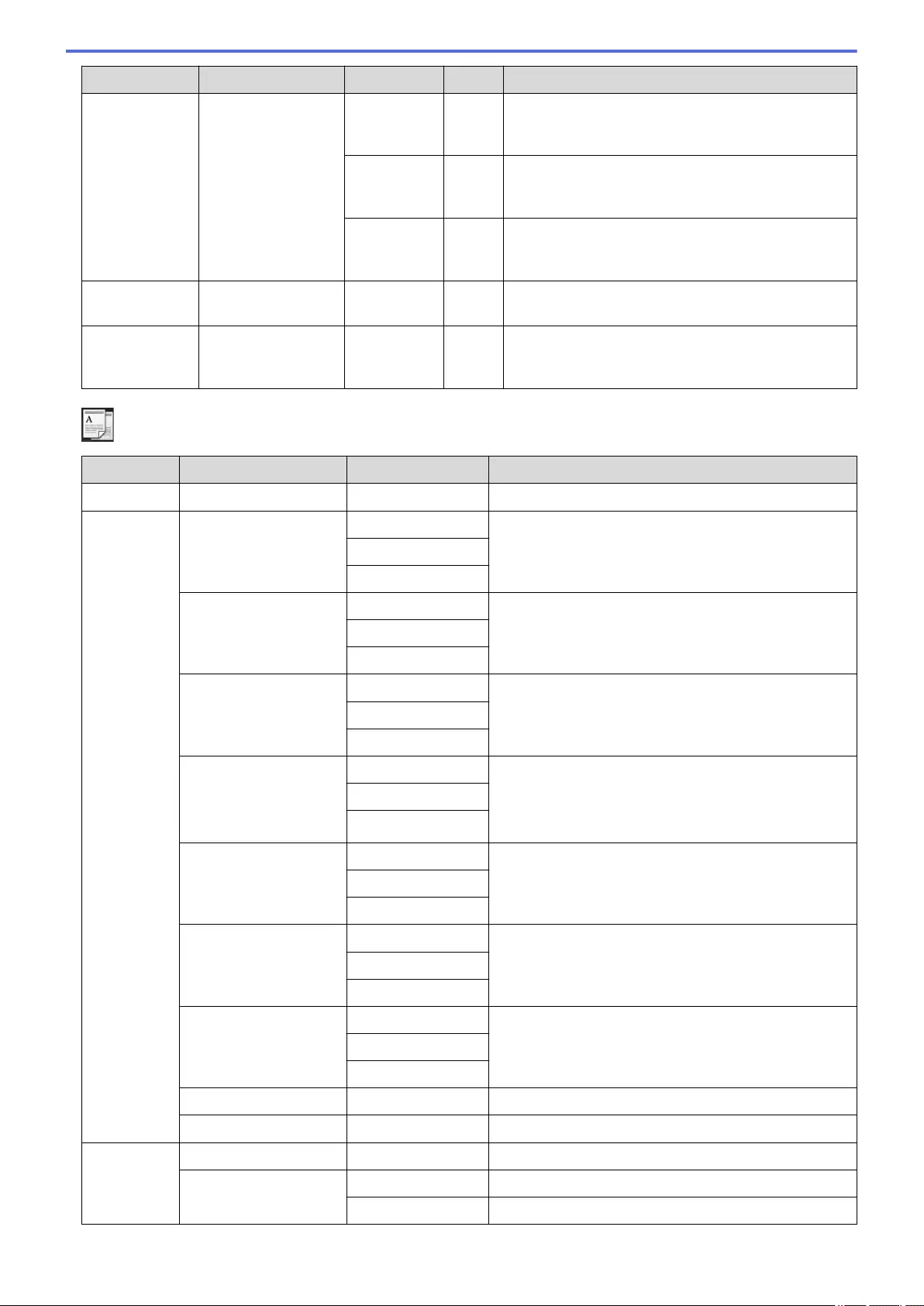
Level 1 Level 2 Level 3 Level 4 Descriptions
Received
Faxes
Print/Delete Print
All(Old
Faxes)
- Print the old received faxes.
Delete
All:New
Fax(es)
- Delete the new received faxes.
Delete
All(Old
Faxes)
- Delete the old received faxes.
Address Book - - - Select the address of the recipient from the address
book.
Call History - - - Select a number from the Outgoing Call history and
then send a fax to it, add it to the Address Book, or
delete it.
[Copy]
Level 1 Level 2 Level 3 Descriptions
Start - - Make a black and white or gray scale copy.
Quick Copy Receipt Start Set the preset copy settings of Receipt.
Quick Copy
Options
Normal Start Set the preset copy settings of Normal.
Quick Copy
Options
2in1(ID) Start Set the preset copy settings of 2in1(ID).
Quick Copy
Options
2in1 Start Set the preset copy settings of 2in1.
Quick Copy
Options
2sided(1⇒2) Start Set the preset copy settings of 2-sided(1⇒2).
Quick Copy
Options
2sided(2⇒2) Start Set the preset copy settings of 2-sided(2⇒2).
Quick Copy
Options
Paper Save Start Set the preset copy settings of Paper Save.
Quick Copy
Options
Start - Start Copying.
Options - Select your settings.
Options Quality - Select the Copy resolution for your document type.
Enlarge/Reduce 100% -
Enlarge Select an enlargement ratio for the next copy.
638
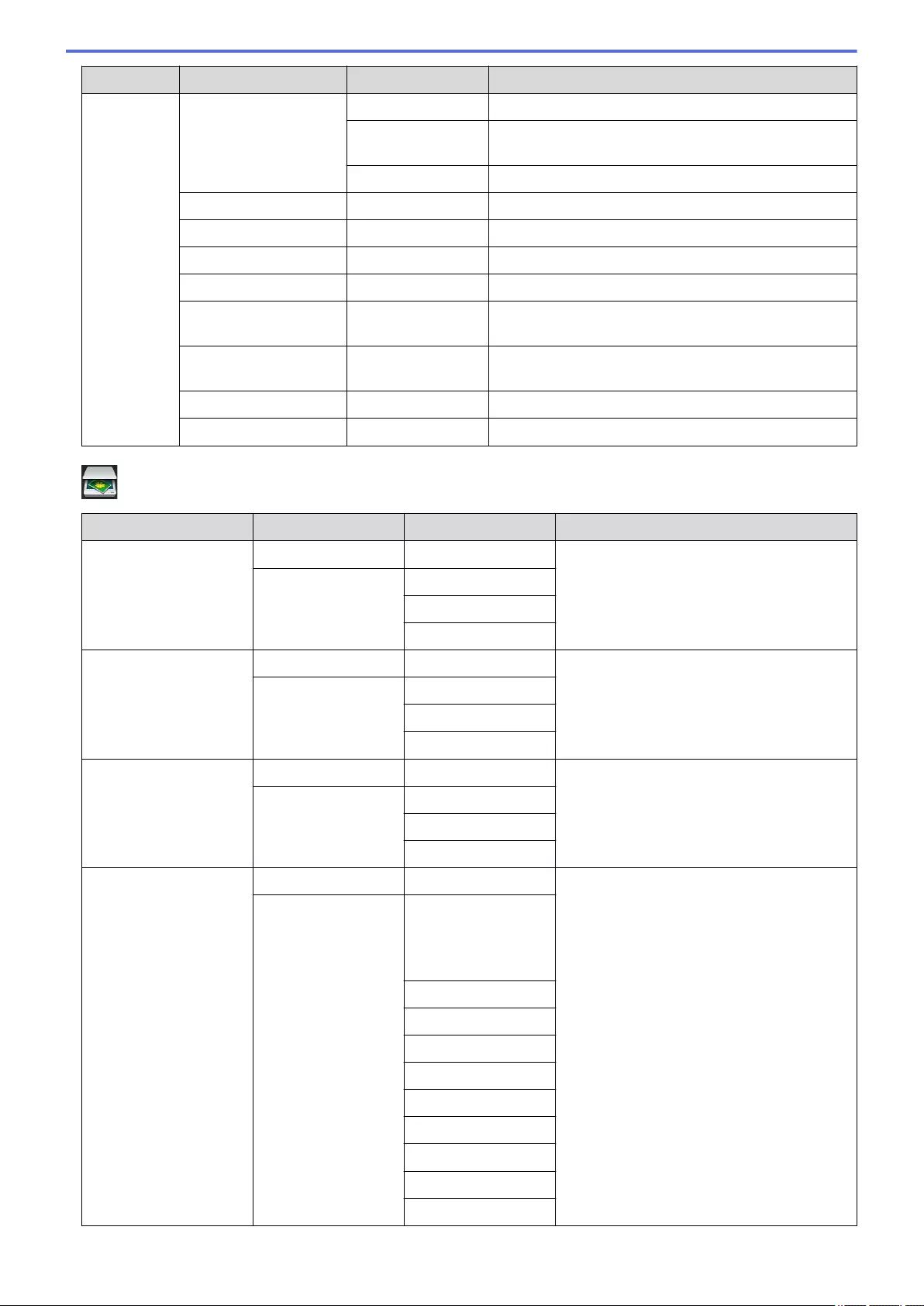
Level 1 Level 2 Level 3 Descriptions
Options Enlarge/Reduce Reduce Select a reduction ratio for the next copy.
Auto Adjusts the copy size to fit on the paper size you have
set.
Custom(25-400%) Enter an enlargement or reduction ratio.
Density - Adjust the density.
Contrast - Adjust the contrast.
Stack/Sort - Select to stack or sort multiple copies.
Page Layout - Make N in 1 and 2 in 1 ID copies.
2-sided Copy Layout Turn off or turn on 2-sided copying and select flip on
long edge or flip on short edge.
2-sided Copy Page
Layout
- Select a page layout option when you make 2-sided N
in 1 copies from a 2-sided document.
Tray Use - Select the tray that will be used.
Save as Shortcut - Save the current settings as a shortcut.
[Scan]
Level 1 Level 2 Level 3 Descriptions
to OCR Scan Actions - Convert your scanned document to an
editable text file.
(Select USB or PC) Options
Save as Shortcut
Start
to File Scan Actions - Scan documents and save them to a folder
on your computer.
(Select USB or PC) Options
Save as Shortcut
Start
to Image Scan Actions - Scan photos or graphics into your graphics
applications.
(Select USB or PC) Options
Save as Shortcut
Start
to USB Scan Actions - Scan documents to a USB Flash memory
drive.
Options 2-sided Scan
(For automatic 2-
sided scanning
models)
Scan Type
Resolution
File Type
Document Size
File Name
File Name Style
File Size
Brightness
Contrast
639
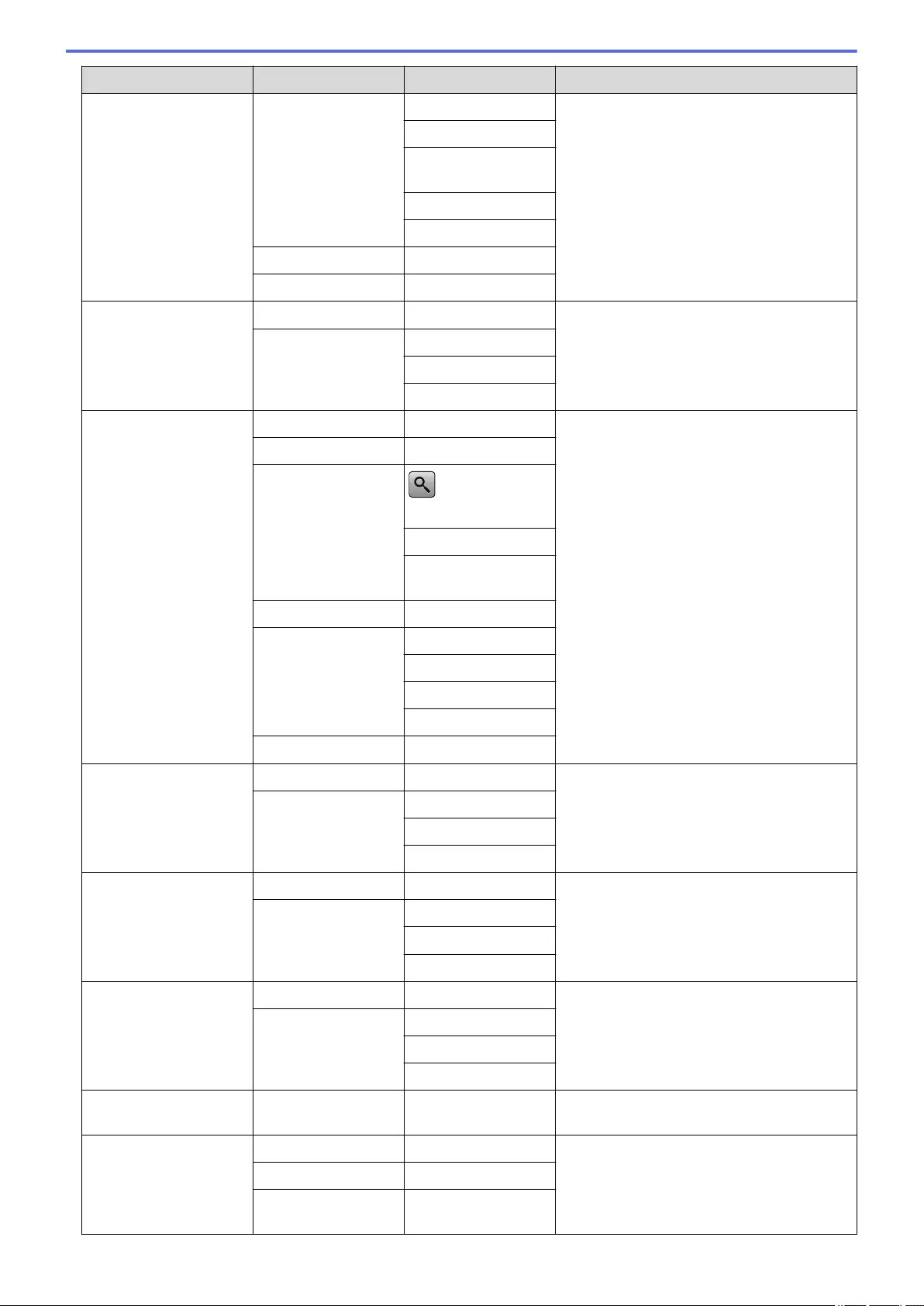
Level 1 Level 2 Level 3 Descriptions
to USB Options ADF Auto Deskew Scan documents to a USB Flash memory
drive.
Skip Blank Page
Remove
Background Color
Set New Default
Factory Reset
Save as Shortcut -
Start -
to E-mail Scan Actions - Send a scanned document as an email
attachment.
(Select USB or PC) Options
Save as Shortcut
Start
to E-mail Server Scan Actions - Scan a black and white or a color document
to your email server.
Cancel -
Address Book
(Search:)
Edit
(Select Address
Book)
Manual -
Next Destinations
Options
Save as Shortcut
Start
Destinations (Select Address)
to FTP/SFTP Scan Actions - Send scanned data via FTP/SFTP.
(Select Profile name) Options
Save as Shortcut
Start
to Network Scan Actions - Send scanned data to a CIFS server on your
local network or on the Internet.
(Select Profile name) Options
Save as Shortcut
Start
to SharePoint Scan Actions - Send scanned data via a SharePoint server.
(Select Profile name) Options
Save as Shortcut
Start
to Web - - Upload the scanned data to an Internet
service.
WS Scan
(Appears when you
install a Web Services
Scanner, which is
displayed in your
Scan - Scan data using the Web Service protocol.
Scan for E-mail -
Scan for Fax -
640
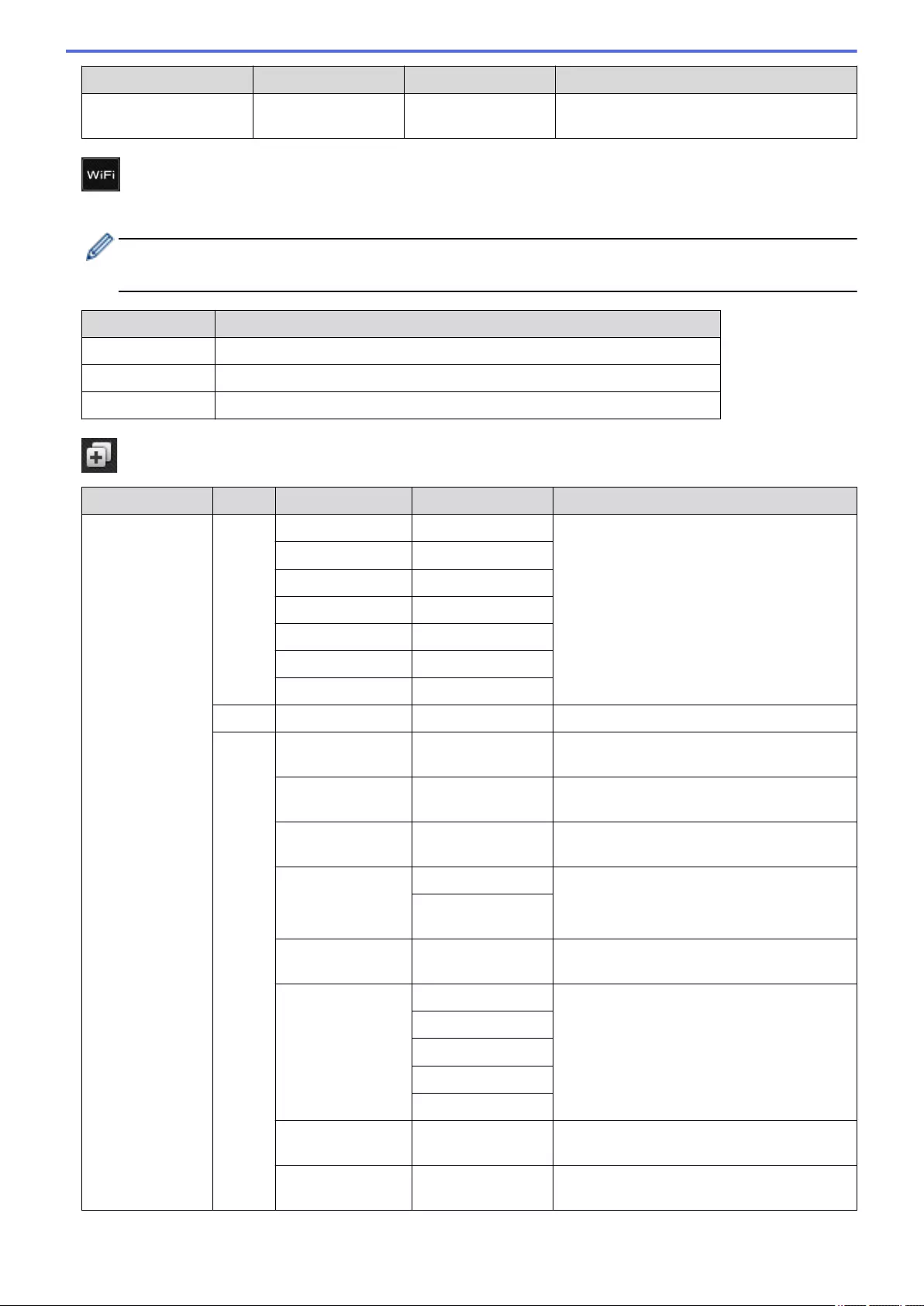
Level 1 Level 2 Level 3 Descriptions
computer's Network
explorer.)
Scan for Print Scan data using the Web Service protocol.-
(Wi-Fi® Setup)
For wireless network models
After the Wi-Fi® is set up, you cannot change the settings from your Home screen. Change the settings for
Wi-Fi® in the Settings screen.
Level 1 Descriptions
Setup Wizard Configure the wireless network settings using the setup wizard.
WLAN Assistant Configure your wireless network settings using the Brother CD-ROM.
WPS Configure your wireless network settings using the one-button push method.
[Shortcuts]
Level 1 Level 2 Level 3 Level 4 Descriptions
Add Shortcut Copy Receipt - Select the settings you want.
Normal -
2in1(ID) -
2in1 -
2-sided(1⇒2) -
2-sided(2⇒2) -
Paper Save -
Fax - - Select the settings you want.
Scan to File (Select PC) Scan a black and white or a color document
to your computer.
to OCR (Select PC) Convert your scanned document to an
editable text file.
to Image (Select PC) Scan a color picture into your graphics
application.
to USB Options Scan documents to a USB Flash memory
drive.
Save as
Shortcut
to E-mail (Select PC) Scan a black and white or a color document
into your email application.
to E-mail
Server
Scan Actions Scan a black and white or a color document
to your email server.
Address Book
Manual
Destinations
Next
to Network (Select Profile
name)
Send scanned data to a CIFS server on your
local network or on the Internet.
to FTP/SFTP (Select Profile
name)
Send scanned data via FTP/SFTP.
641
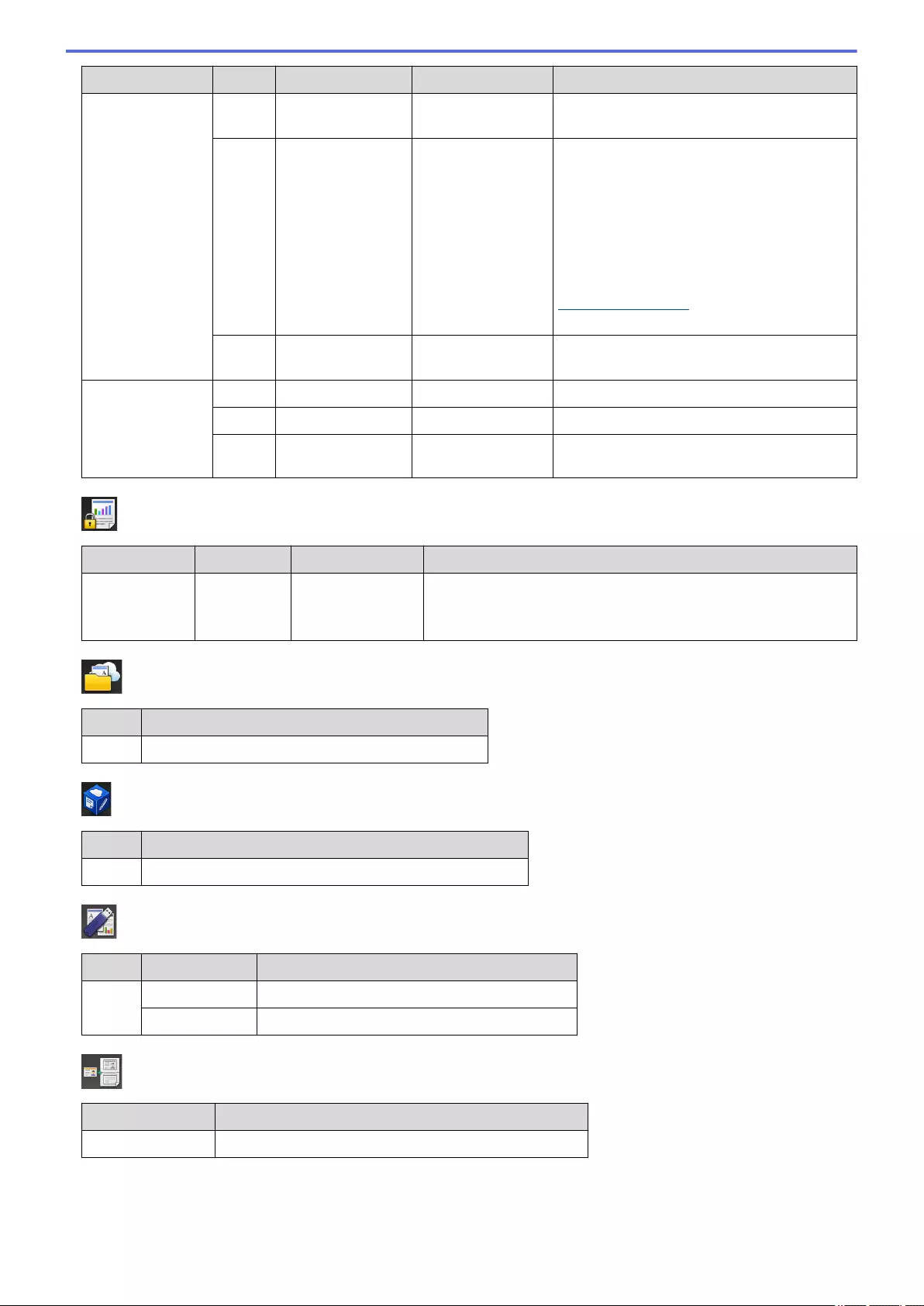
Level 1 Level 2 Level 3 Level 4 Descriptions
Add Shortcut Scan to SharePoint (Select Profile
name)
Send scanned data via a SharePoint server.
Web - - Connect the Brother machine to an Internet
service.
Web services may have been added and
service names may have been changed by
the provider since this document was
published.
Go to your model's Manuals page on the
Brother Solutions Center at
support.brother.com to download the Web
Connect Guide.
Apps - - Connect the Brother machine to the Brother
Apps service.
These lists
appears when
each Shortcut
name is pressed
for two seconds.
Rename - - Change the shortcut name.
Edit - - Change the shortcut settings.
Delete - - Delete the shortcut.
[Secure Print]
Level 1 Level 2 Level 3 Descriptions
Secure
Print
(Select User) (Select Secure
Print Job)
You can print data saved in the machine's memory when you
enter your four-digit password.
Active only when the machine has secure print data.
[Web]
Level 1 Descriptions
Web Connect the Brother machine to an Internet service.
[Apps]
Level 1 Descriptions
Apps Connect the Brother machine to the Brother Apps service.
[USB]
Level 1 Level 2 Descriptions
USB Scan to USB Scan documents to a USB Flash memory drive.
Direct Print Print the data directly from the USB flash drive.
[2 in 1 ID Copy]
Level 1 Descriptions
2 in 1 ID Copy Copy both sides of an identification card onto one page.
642

Home > Machine Settings > Change Machine Settings from Your Computer
Change Machine Settings from Your Computer
•Change Machine Settings Using Web Based Management
•Change the Machine Settings Using Remote Setup
•Where Can I Find My Brother Machine's Network Settings?
•Network Management Software and Utilities
644
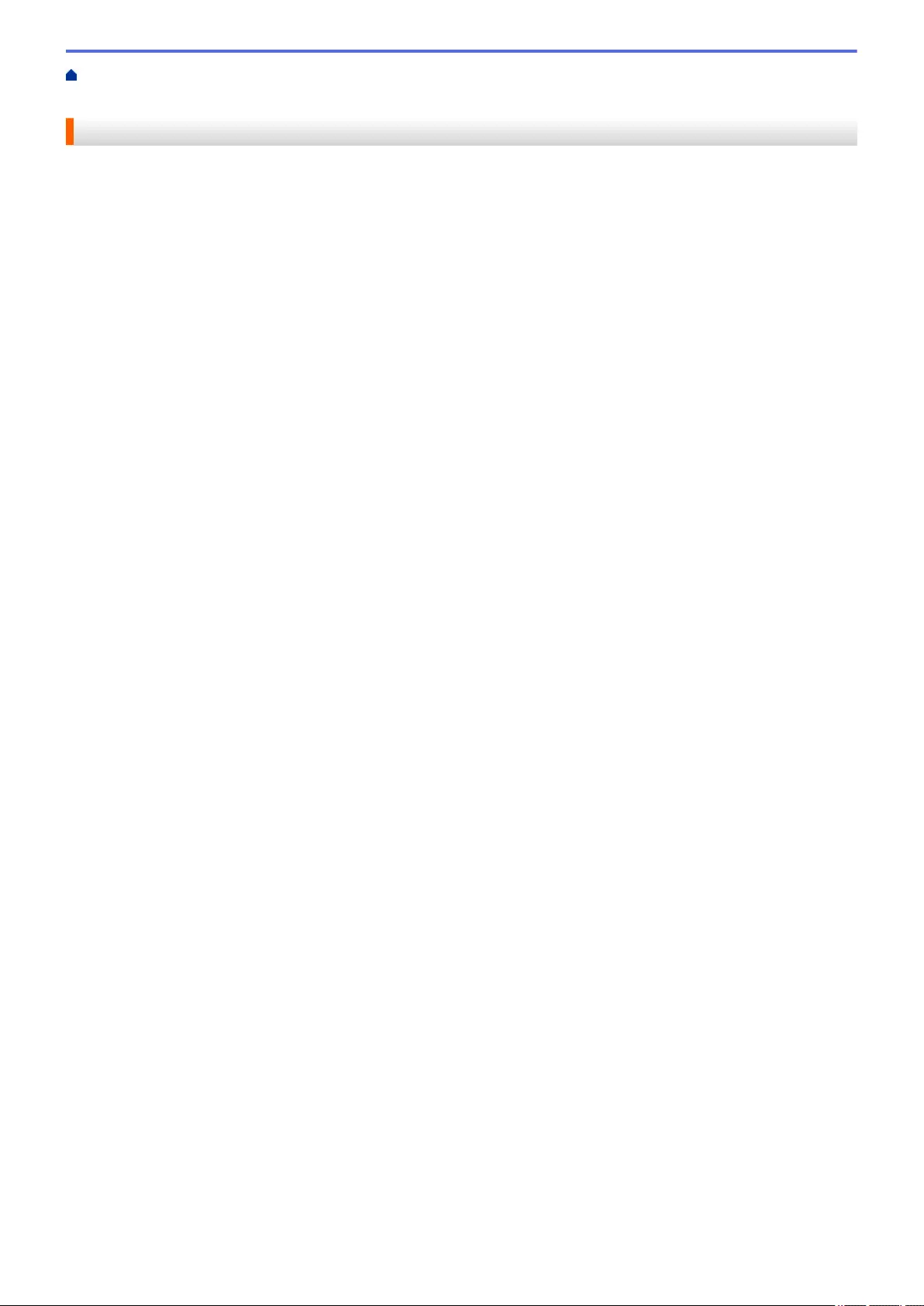
Home > Machine Settings > Change Machine Settings from Your Computer > Change Machine Settings
Using Web Based Management
Change Machine Settings Using Web Based Management
Web Based Management is a utility that uses a standard web browser to manage your machine using the Hyper
Text Transfer Protocol (HTTP) or Hyper Text Transfer Protocol over Secure Socket Layer (HTTPS).
•What is Web Based Management?
•Access Web Based Management
•Set a Login Password for Web Based Management
•Network Management Software and Utilities
645
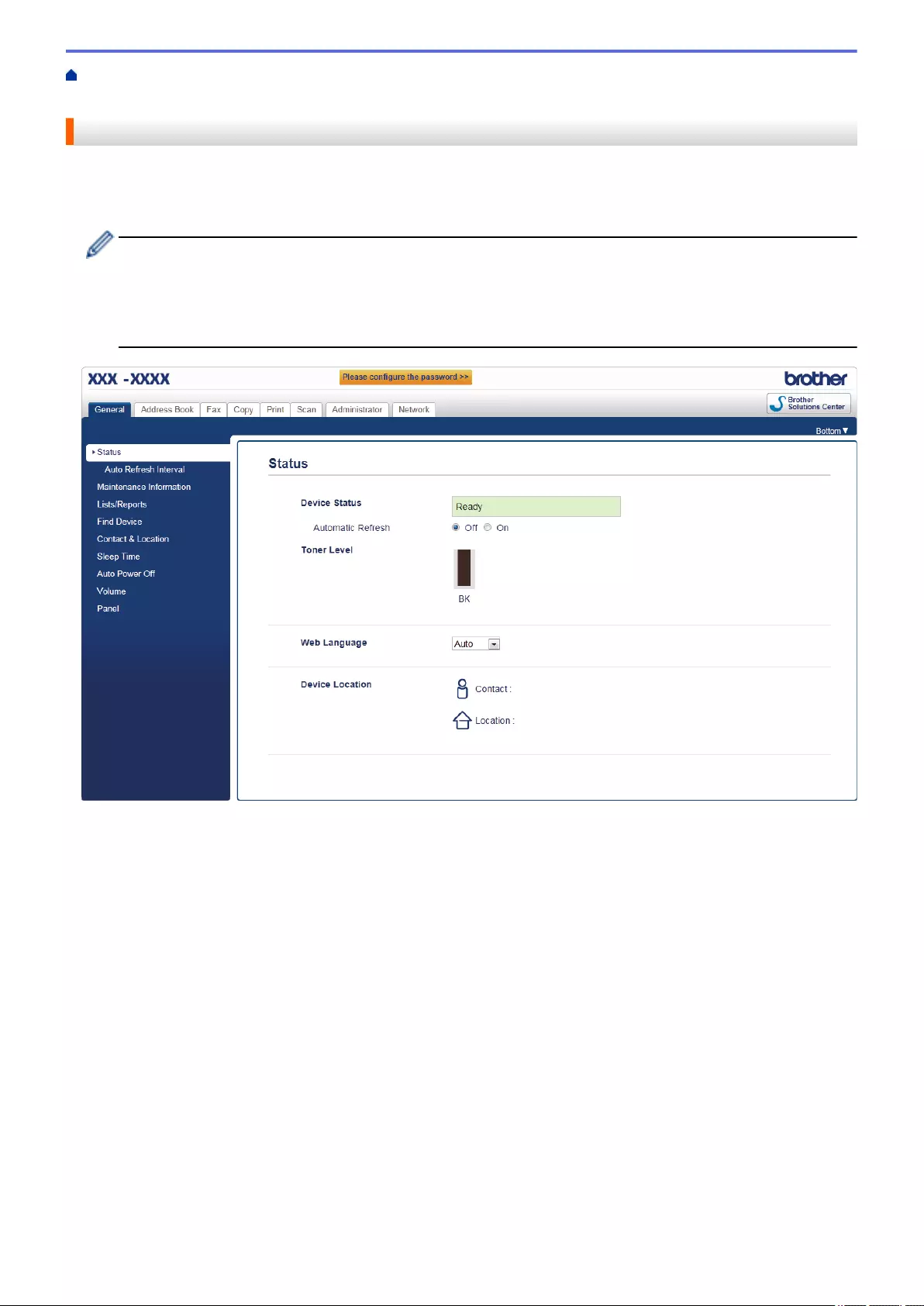
Home > Machine Settings > Change Machine Settings from Your Computer > Change Machine Settings
Using Web Based Management > What is Web Based Management?
What is Web Based Management?
Web Based Management is a utility that uses a standard web browser to manage your machine using the Hyper
Text Transfer Protocol (HTTP) or Hyper Text Transfer Protocol over Secure Socket Layer (HTTPS). Type your
machine's IP address into your web browser to access and change your print server settings.
• We recommend Microsoft Internet Explorer 8.0/10.0/11.0 for Windows, and Safari 8.0 for Mac. Make
sure that JavaScript and Cookies are always enabled in whichever browser you use. If you use different
web browser, make sure it is compatible with HTTP 1.0 and HTTP 1.1.
• You must use the TCP/IP protocol on your network and have a valid IP address programmed into the
print server and your computer.
• The actual screen may differ from the screen shown above.
• The following explanations are examples. The available functions vary according to the model.
General
Use this tab to confirm the current status of your Brother machine and to change basic settings, such as the
timer settings.
Address Book
Use this tab to edit your Brother machine's address book.
Fax
Use this tab to confirm and change the fax settings and to change the Internet fax (I-Fax) settings.
Copy
Use this tab to confirm and change the copy settings.
Print
Use this tab to confirm and change the print settings.
Scan
Use this tab to confirm and change the scan settings and to create Scan to FTP and Scan to Network profiles.
646
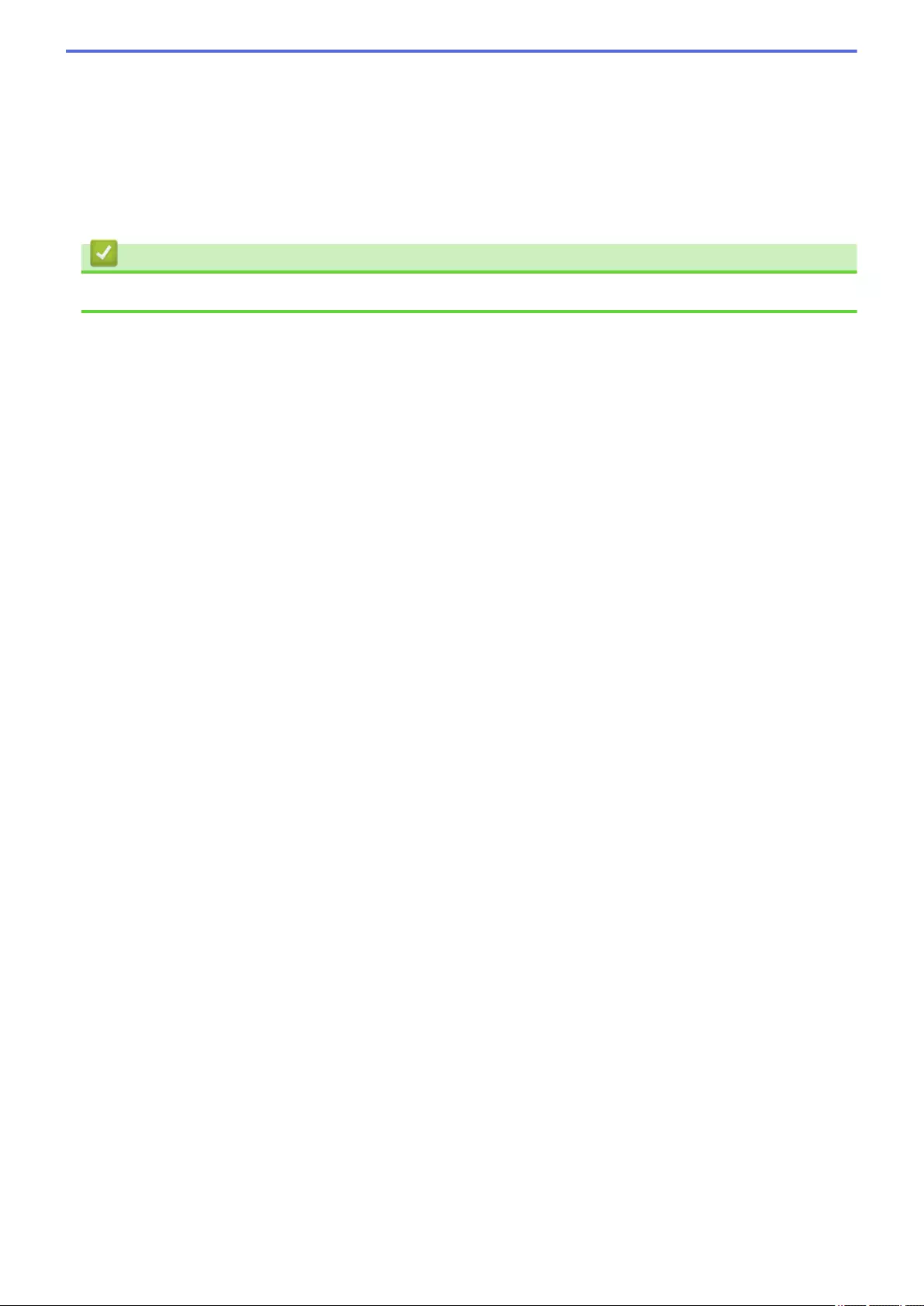
Administrator
Use this tab to set the Web Based Management password, reset various settings, and configure the function
settings that are mainly used by administrators. You can also use Secure Function Lock to restrict functions
according to the user.
Network
Use this tab to change the network settings, enable or disable the network protocols, and configure the
security and certificate settings.
Related Information
•Change Machine Settings Using Web Based Management
647
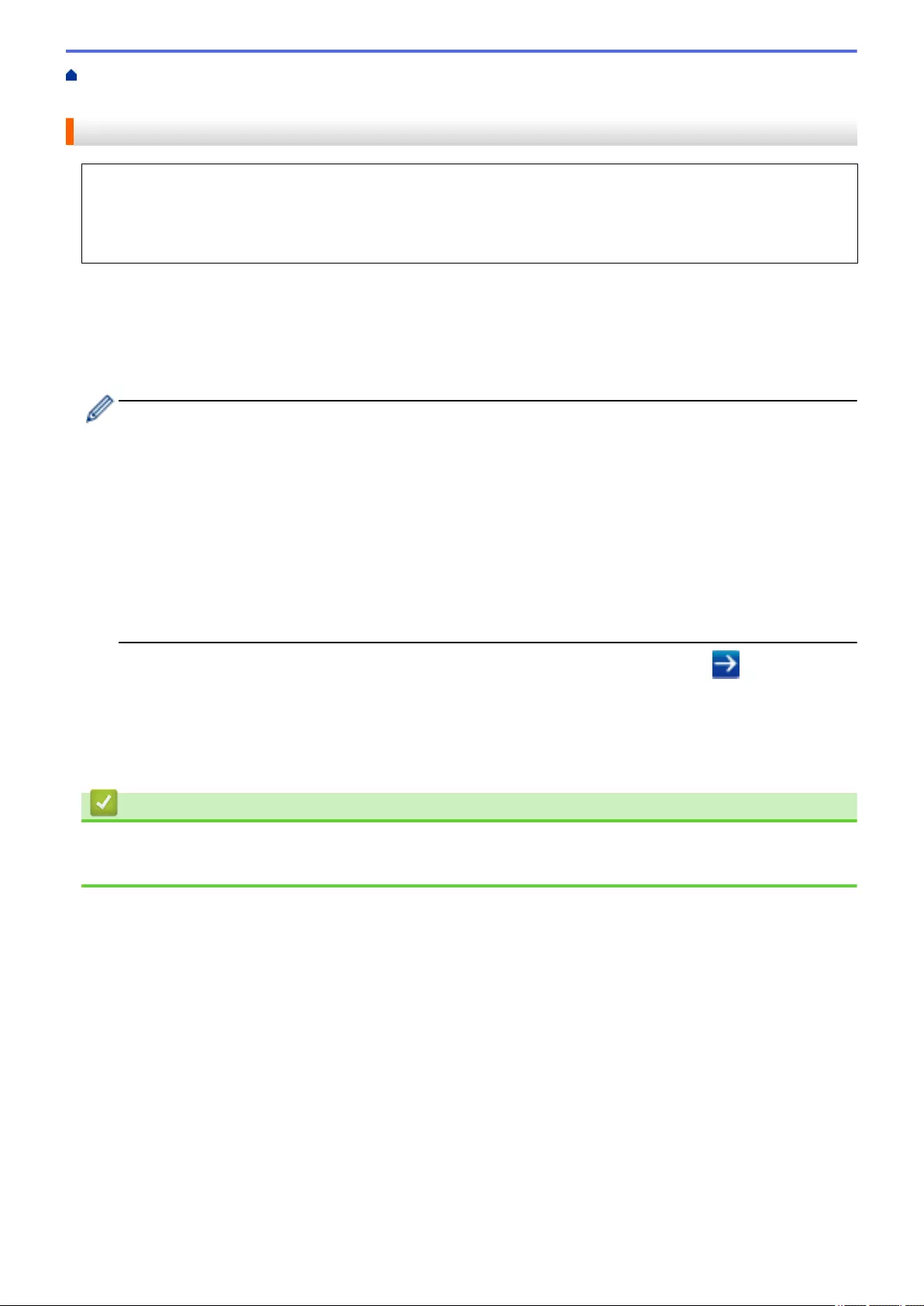
Home > Machine Settings > Change Machine Settings from Your Computer > Change Machine Settings
Using Web Based Management > Access Web Based Management
Access Web Based Management
• We recommend using the HTTPS security protocol when configuring settings using Web Based
Management.
• When you use HTTPS for Web Based Management configuration, your browser will display a warning
dialog box.
1. Start your web browser.
2. Type "http://machine's IP address" in your browser's address bar (where "machine's IP address" is the
machine's IP address).
For example:
http://192.168.1.2
• If you are using a Domain Name System or enable a NetBIOS name, you can type another name, such
as "SharedPrinter" instead of the IP address.
- For example:
http://SharedPrinter
If you enable a NetBIOS name, you can also use the node name.
- For example:
http://brnxxxxxxxxxxxx
The NetBIOS name can be found in the Network Configuration Report.
• For Mac, access Web Based Management by clicking the machine's icon on the Status Monitor
screen.
3. No password is required by default. Type a password if you have set one, and then click .
You can now change the print server settings.
If you change the protocol settings, you must restart the machine after clicking Submit to activate the
configuration.
Related Information
•Change Machine Settings Using Web Based Management
•Print the Network Configuration Report
648
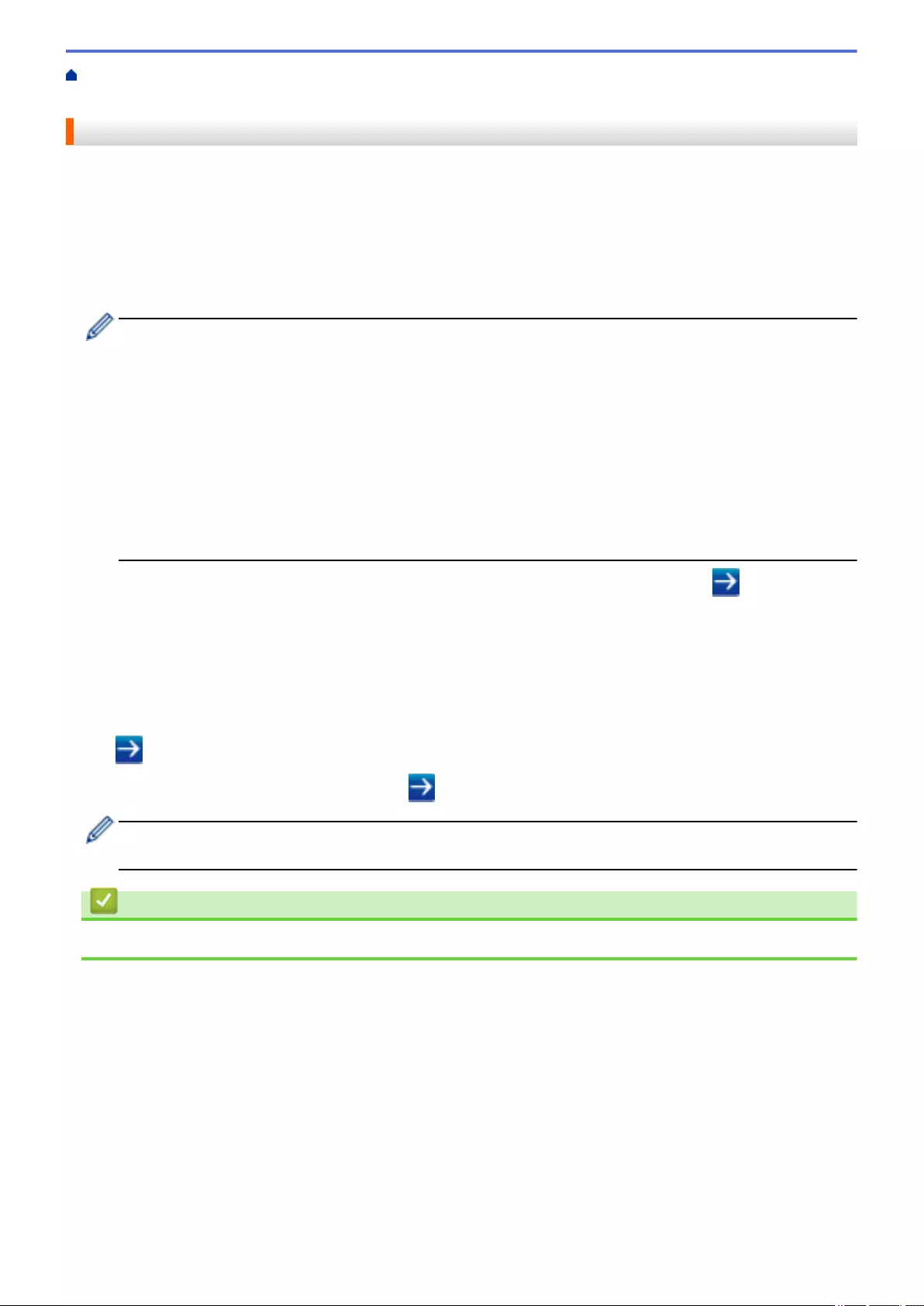
Home > Machine Settings > Change Machine Settings from Your Computer > Change Machine Settings
Using Web Based Management > Set a Login Password for Web Based Management
Set a Login Password for Web Based Management
We recommend setting a login password to prevent unauthorized access to Web Based Management.
1. Start your web browser.
2. Type "http://machine's IP address" in your browser's address bar (where "machine's IP address" is the
machine's IP address).
For example:
http://192.168.1.2
• If you are using a Domain Name System or enable a NetBIOS name, you can type another name, such
as "SharedPrinter" instead of the IP address.
- For example:
http://SharedPrinter
If you enable a NetBIOS name, you can also use the node name.
- For example:
http://brnxxxxxxxxxxxx
The NetBIOS name can be found in the Network Configuration Report.
• For Mac, access Web Based Management by clicking the machine's icon on the Status Monitor
screen.
3. No password is required by default. Type a password if you have set one, and then click .
4. Click Administrator.
5. Type the password you want to use in the Enter New Password field (8 to 32 characters).
6. Retype the password in the Confirm New Password field.
7. Click Submit.
In the future, every time you access Web Based Management, type the password in the Login field, and then
click .
After configuring the settings, log off by clicking .
If you have not previously set a login password, you can also set a password by clicking the Please
configure the password button on the machine's web page.
Related Information
•Change Machine Settings Using Web Based Management
649
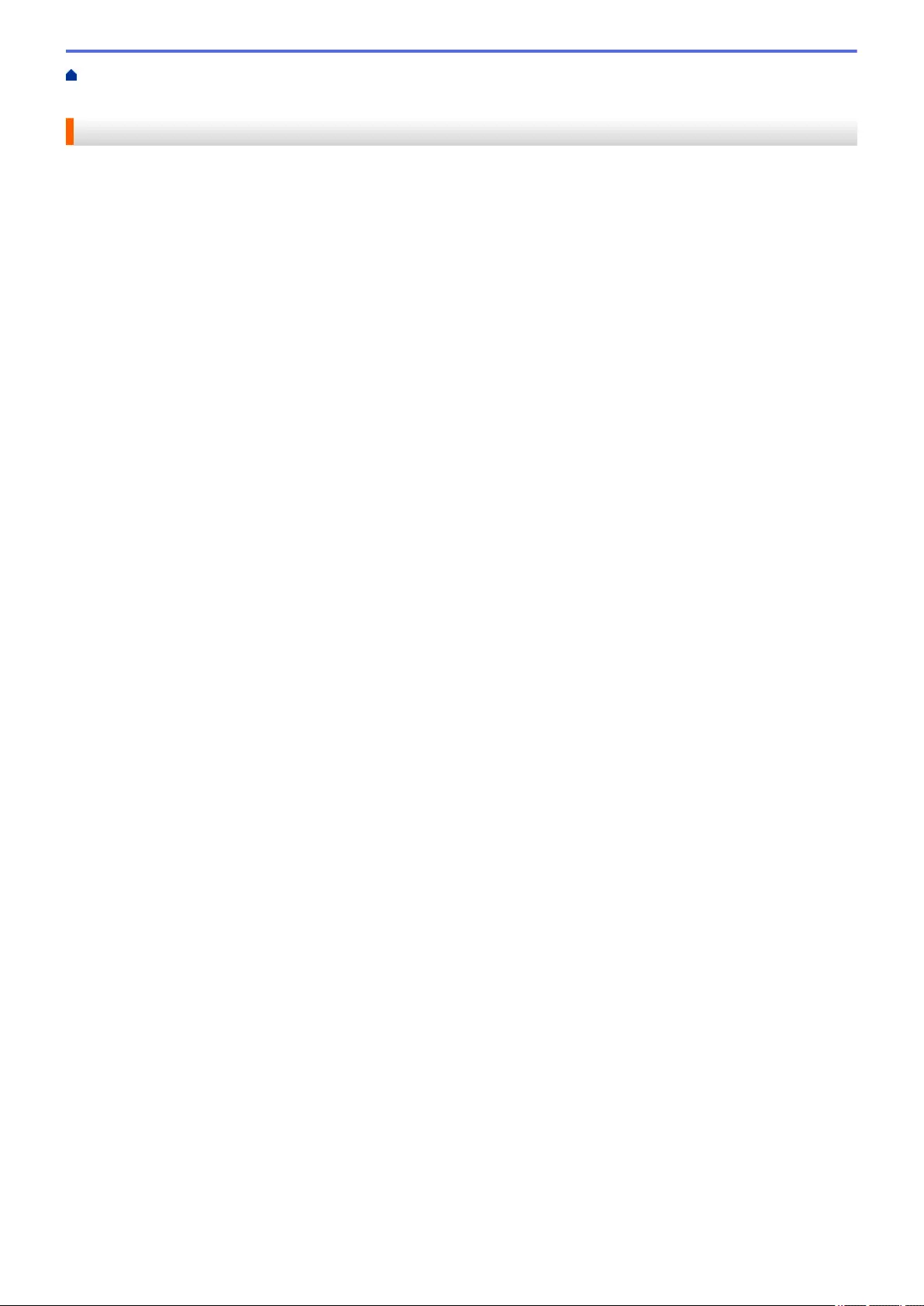
Home > Machine Settings > Change Machine Settings from Your Computer > Change the Machine Settings
Using Remote Setup
Change the Machine Settings Using Remote Setup
The Remote Setup program lets you configure many of your Brother machine's settings from your computer.
When you start Remote Setup, the settings on your Brother machine will be downloaded to your computer and
displayed on your screen. If you change the settings on your computer, you can upload them directly to the
machine.
•Remote Setup (Windows)
•Remote Setup (Mac)
650
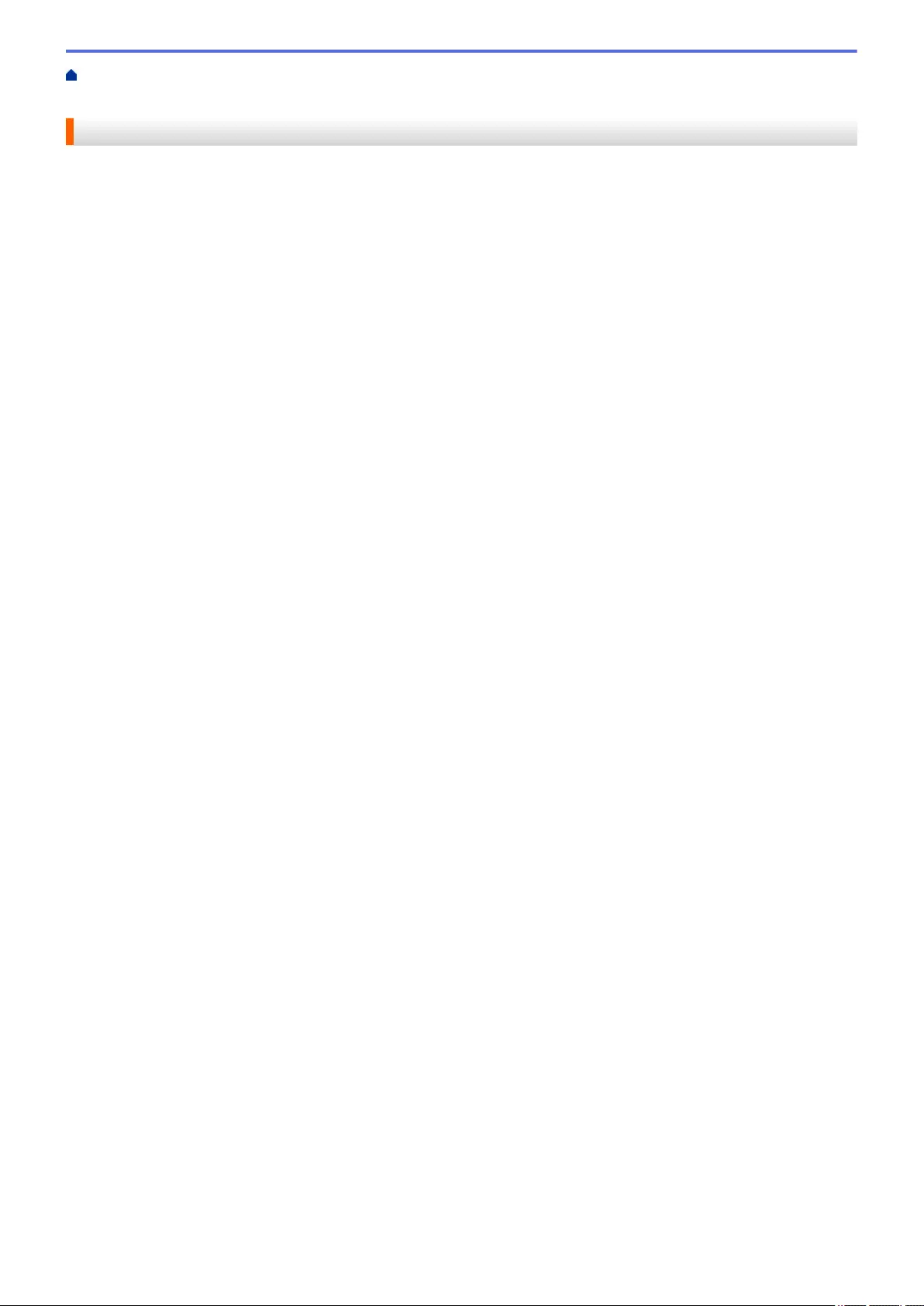
Home > Machine Settings > Change Machine Settings from Your Computer > Change the Machine Settings
Using Remote Setup > Remote Setup (Windows)
Remote Setup (Windows)
•Set Up the Brother Machine from Your Computer (Windows)
•Set Up the Brother Machine Using ControlCenter4 (Windows)
•Set Up Your Machine's Address Book Using ControlCenter4 (Windows)
651
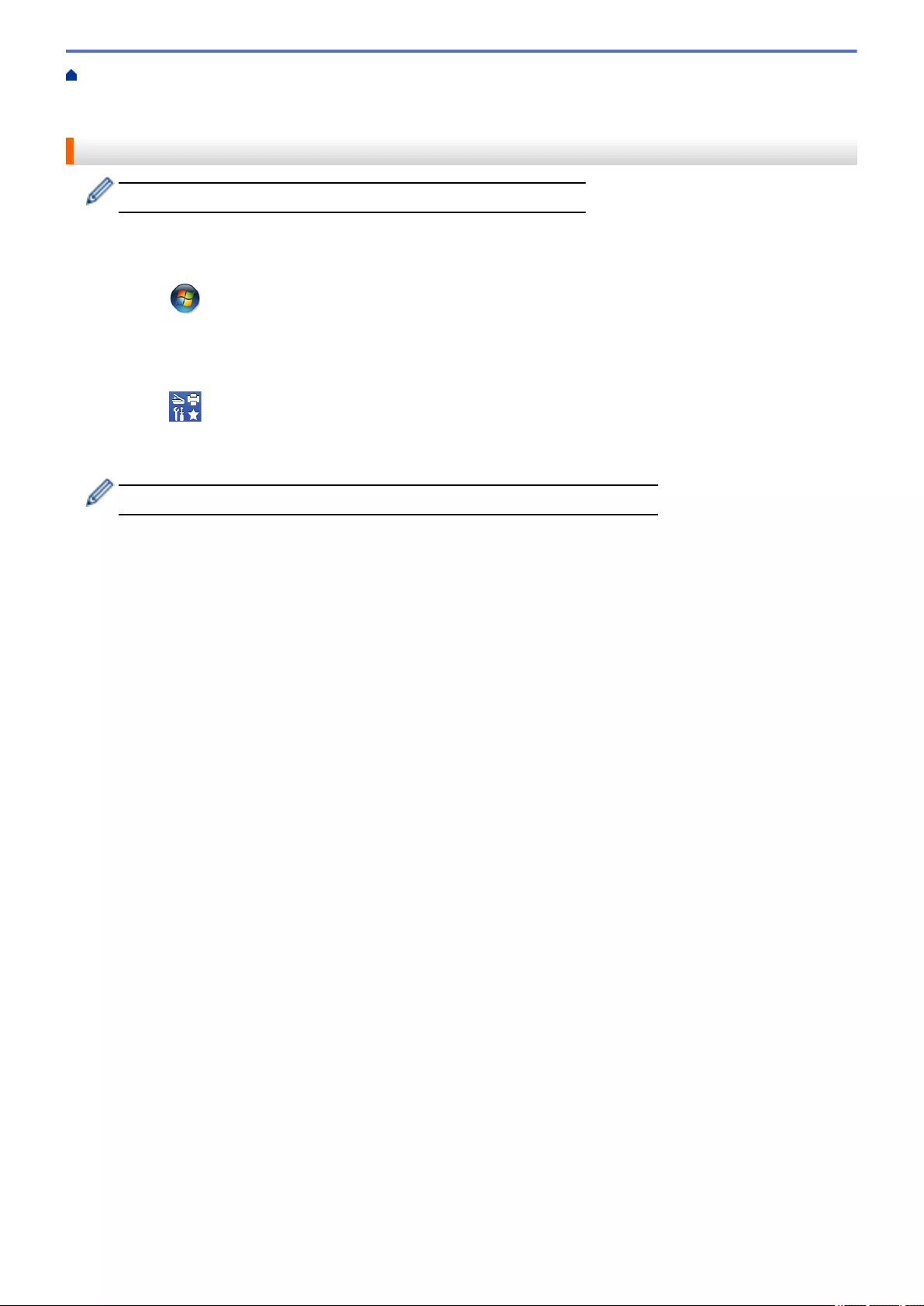
Home > Machine Settings > Change Machine Settings from Your Computer > Change the Machine Settings
Using Remote Setup > Remote Setup (Windows) > Set Up the Brother Machine from Your Computer
(Windows)
Set Up the Brother Machine from Your Computer (Windows)
If Secure Function Lock is set to On, you cannot use Remote Setup.
1. Do one of the following:
• (Windows XP, Windows Vista and Windows 7)
Click (Start) > All Programs > Brother > Brother Utilities.
Click the drop-down list and select your model name (if not already selected). Click Tools in the left
navigation bar, and then click Remote Setup.
• (Windows 8)
Click (Brother Utilities), and then click the drop-down list and select your model name (if not
already selected). Click Tools in the left navigation bar, and then click Remote Setup.
The Remote Setup Program window appears.
When your machine is connected via a Network, type the password if required.
2. Configure the settings as needed.
652
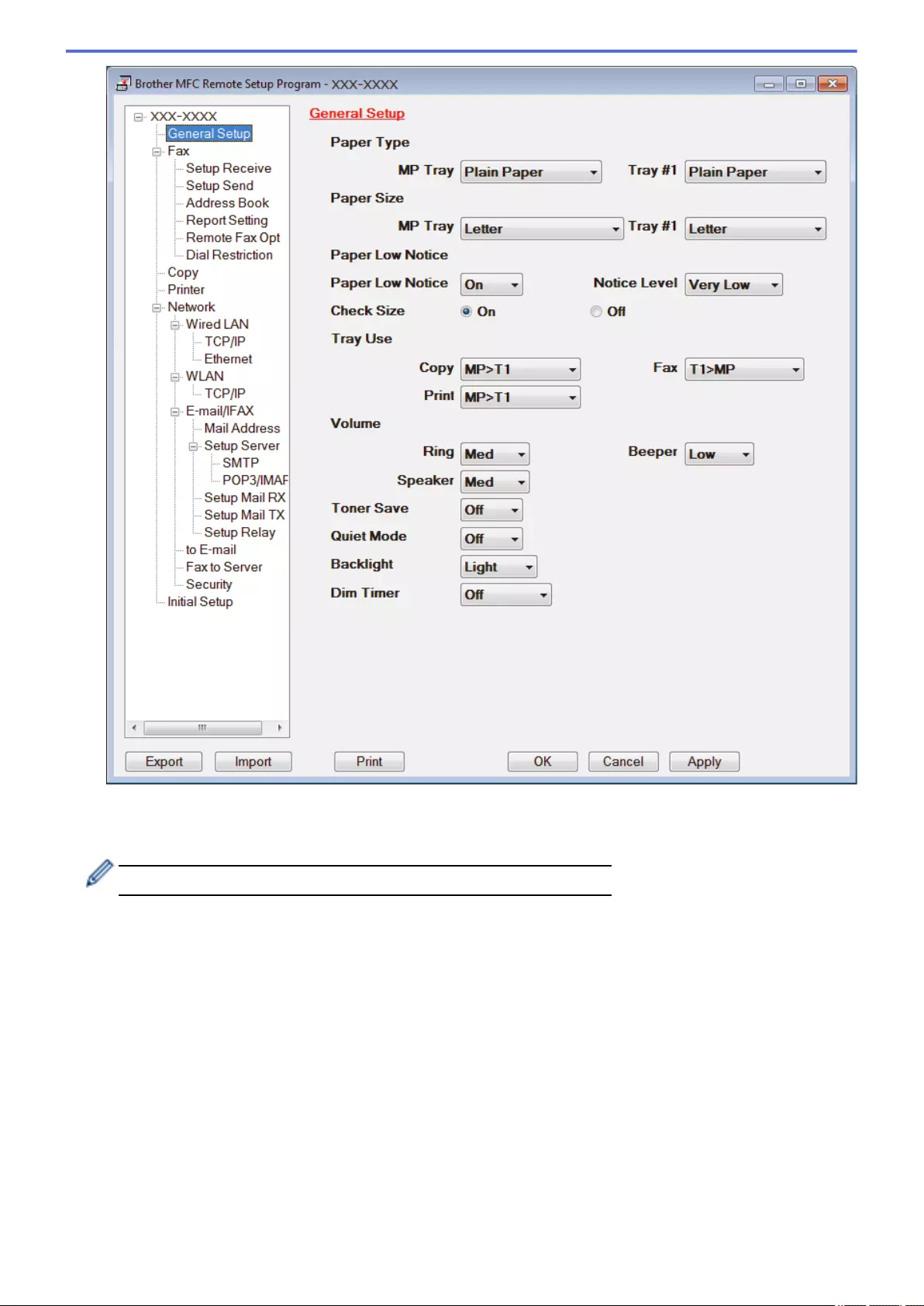
Export
Click to save the current configuration settings to a file.
Click Export to save your address book or all settings for your machine.
Import
Click to import a file and read its settings.
Print
Click to print the selected items on the machine. You cannot print the data until it is uploaded to the
machine. Click Apply to upload the new data to the machine, and then click Print.
OK
Click to start uploading data to the machine, and then exit the Remote Setup Program. If an error message
appears, confirm that your data is correct, and then click OK.
Cancel
Click to exit the Remote Setup Program without uploading data to the machine.
Apply
Click to upload data to the machine without exiting the Remote Setup Program.
653
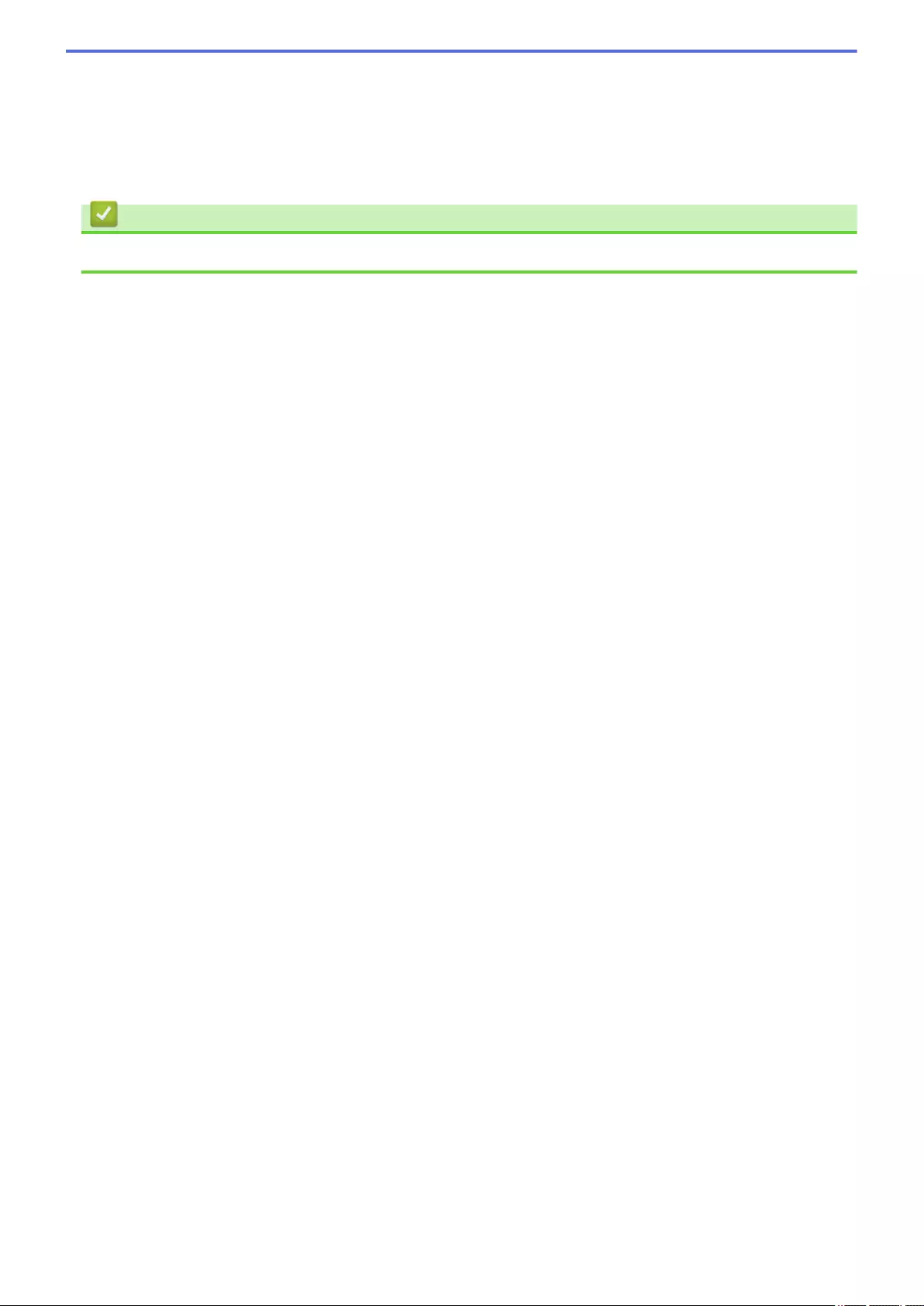
3. Click OK.
• If your computer is protected by a firewall and is unable to use Remote Setup, you may need to configure the
firewall settings to allow communication through port numbers 137 and 161.
• If you are using Windows Firewall and you installed the Brother software and drivers from the CD-ROM, the
necessary firewall settings have already been set.
Related Information
•Remote Setup (Windows)
654
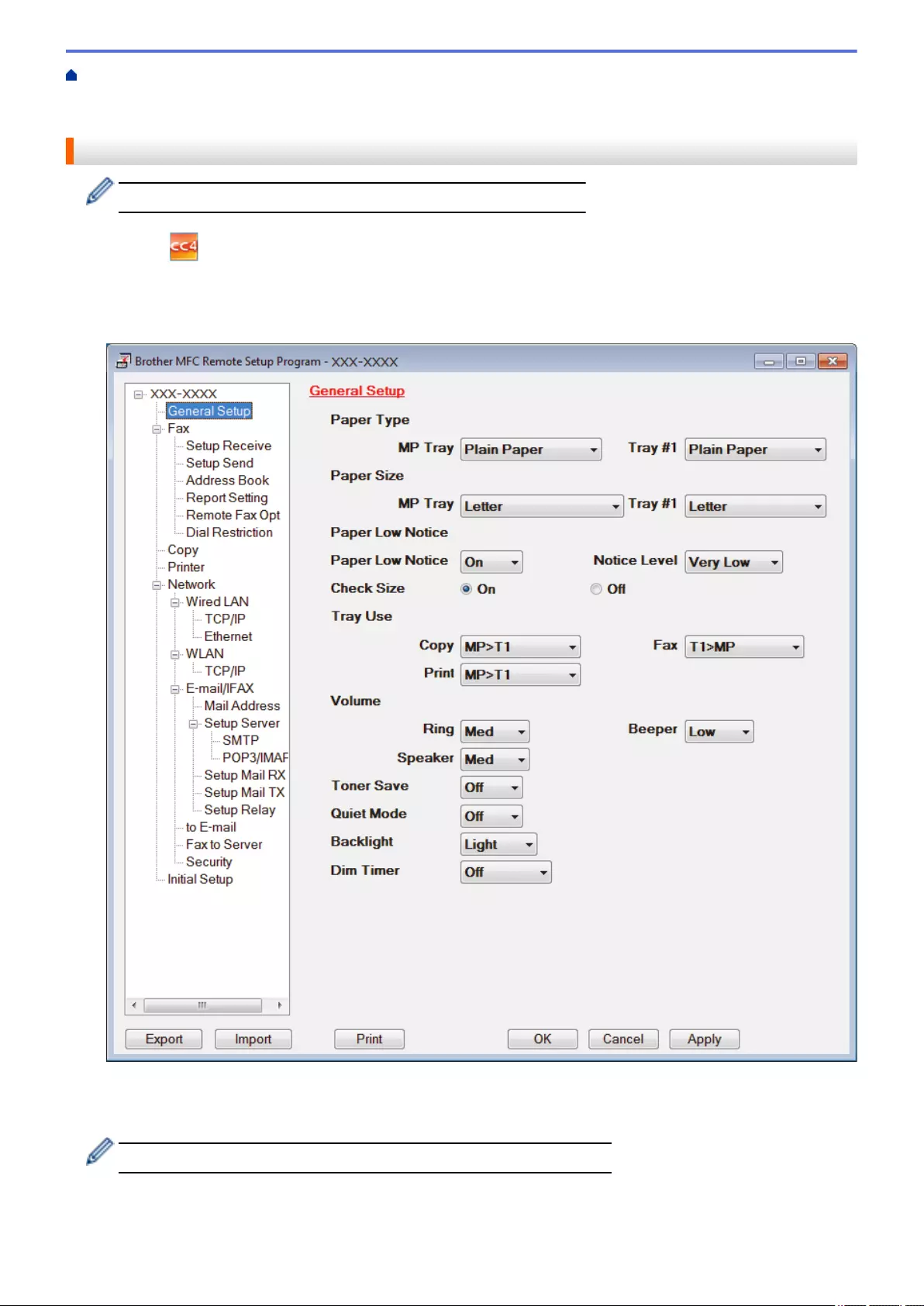
Home > Machine Settings > Change Machine Settings from Your Computer > Change the Machine Settings
Using Remote Setup > Remote Setup (Windows) > Set Up the Brother Machine Using ControlCenter4
(Windows)
Set Up the Brother Machine Using ControlCenter4 (Windows)
If Secure Function Lock is set to On, you cannot use Remote Setup.
1. Click the (ControlCenter4) icon in the task tray, and then click Open.
2. Click the Device Settings tab.
3. Click the Remote Setup button.
4. Configure the settings as needed.
Export
Click to save the current configuration settings to a file.
Click Export to save your address book or all settings for your machine.
Import
Click to import a file and read its settings.
655

Print
Click to print the selected items on the machine. You cannot print the data until it is uploaded to the
machine. Click Apply to upload the new data to the machine, and then click Print.
OK
Click to start uploading data to the machine, and then exit the Remote Setup Program. If an error message
appears, confirm that your data is correct, and then click OK.
Cancel
Click to exit the Remote Setup Program without uploading data to the machine.
Apply
Click to upload data to the machine without exiting the Remote Setup Program.
5. Click OK.
• If your computer is protected by a firewall and is unable to use Remote Setup, you may need to configure the
firewall settings to allow communication through port numbers 137 and 161.
• If you are using Windows Firewall and you installed the Brother software and drivers from the CD-ROM, the
necessary firewall settings have already been set.
Related Information
•ControlCenter4 (Windows)
•Remote Setup (Windows)
656
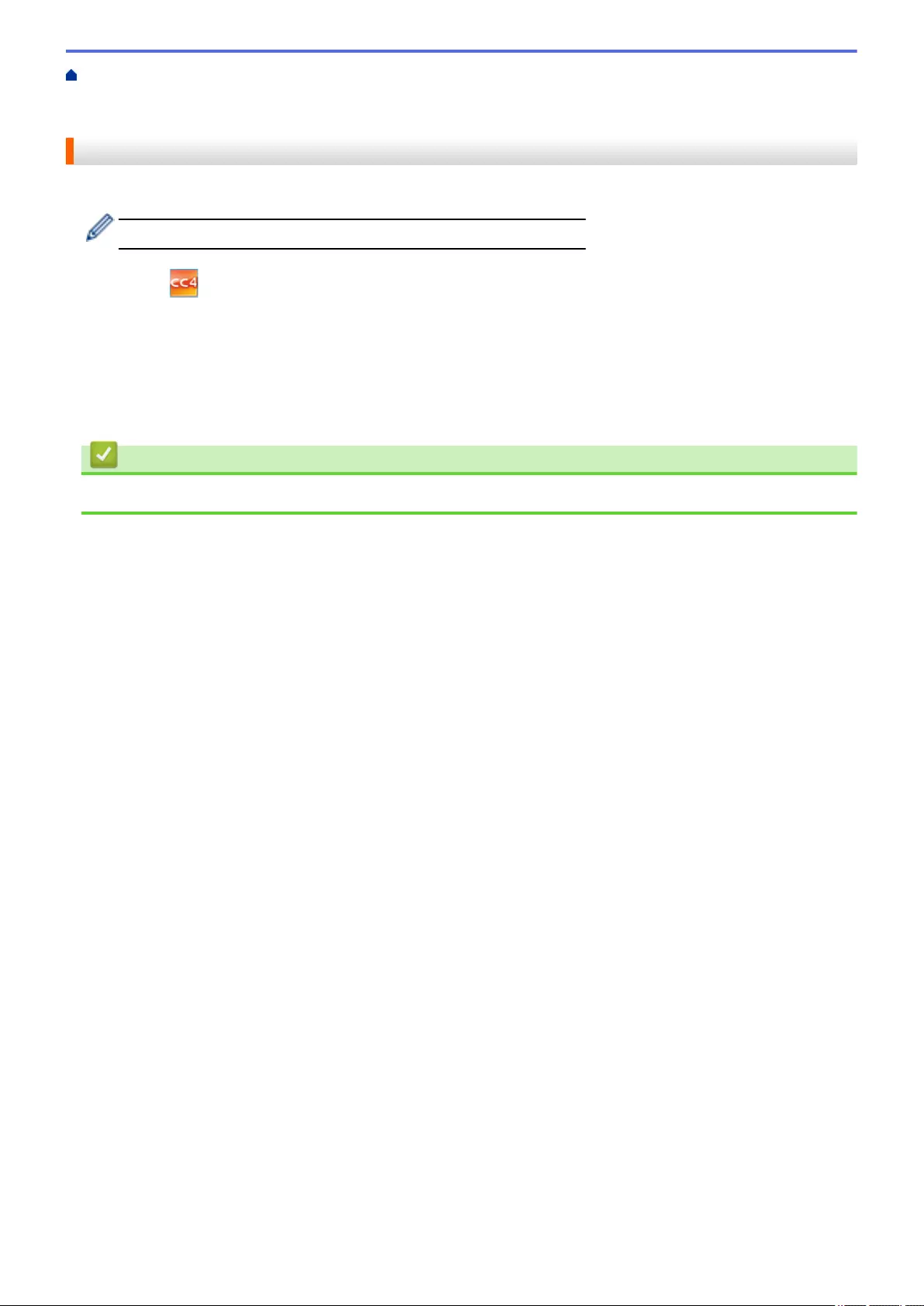
Home > Machine Settings > Change Machine Settings from Your Computer > Change the Machine Settings
Using Remote Setup > Remote Setup (Windows) > Set Up Your Machine's Address Book Using
ControlCenter4 (Windows)
Set Up Your Machine's Address Book Using ControlCenter4 (Windows)
Use Remote Setup through CC4 to add or change Address Book numbers on your computer.
If Secure Function Lock is set to On, you cannot use Remote Setup.
1. Click the (ControlCenter4) icon in the task tray, and then click Open.
2. Click the Device Settings tab.
3. Click the Address Book button.
The Address Book opens in a Remote Setup window.
4. Add or update the Address Book information as needed.
5. Click OK.
Related Information
•Remote Setup (Windows)
657
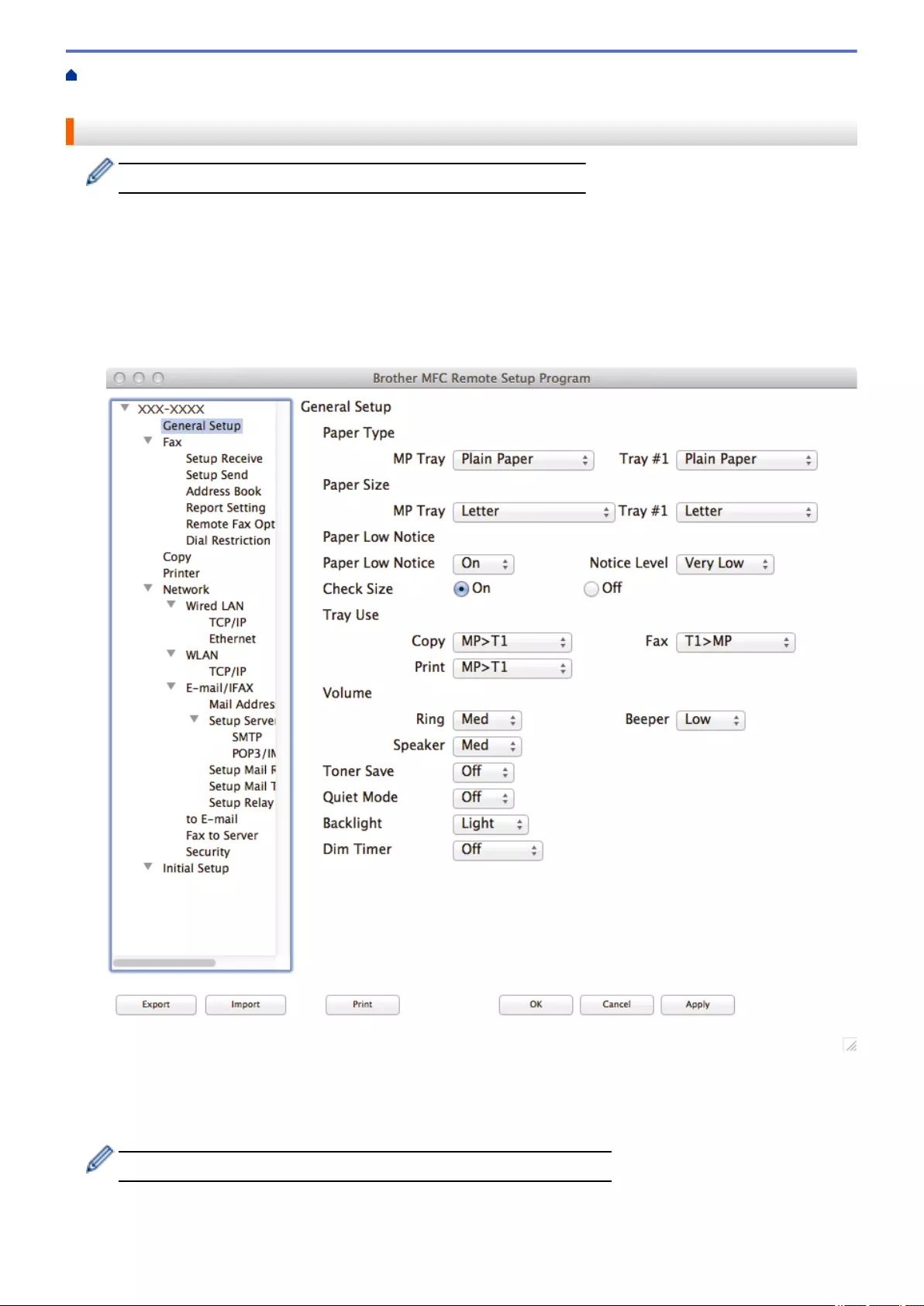
Home > Machine Settings > Change Machine Settings from Your Computer > Change the Machine Settings
Using Remote Setup > Remote Setup (Mac) > Set Up the Brother Machine Using ControlCenter2 (Mac)
Set Up the Brother Machine Using ControlCenter2 (Mac)
If Secure Function Lock is set to On, you cannot use Remote Setup.
1. In the Finder menu bar, click Go > Applications > Brother, and then double-click the
(ControlCenter) icon.
The ControlCenter2 screen appears.
2. Click the DEVICE SETTINGS tab.
3. Click the Remote Setup button.
The Remote Setup Program screen appears.
4. Configure the settings as needed.
Export
Click to save the current configuration settings to a file.
Click Export to save your address book or all settings for your machine.
659
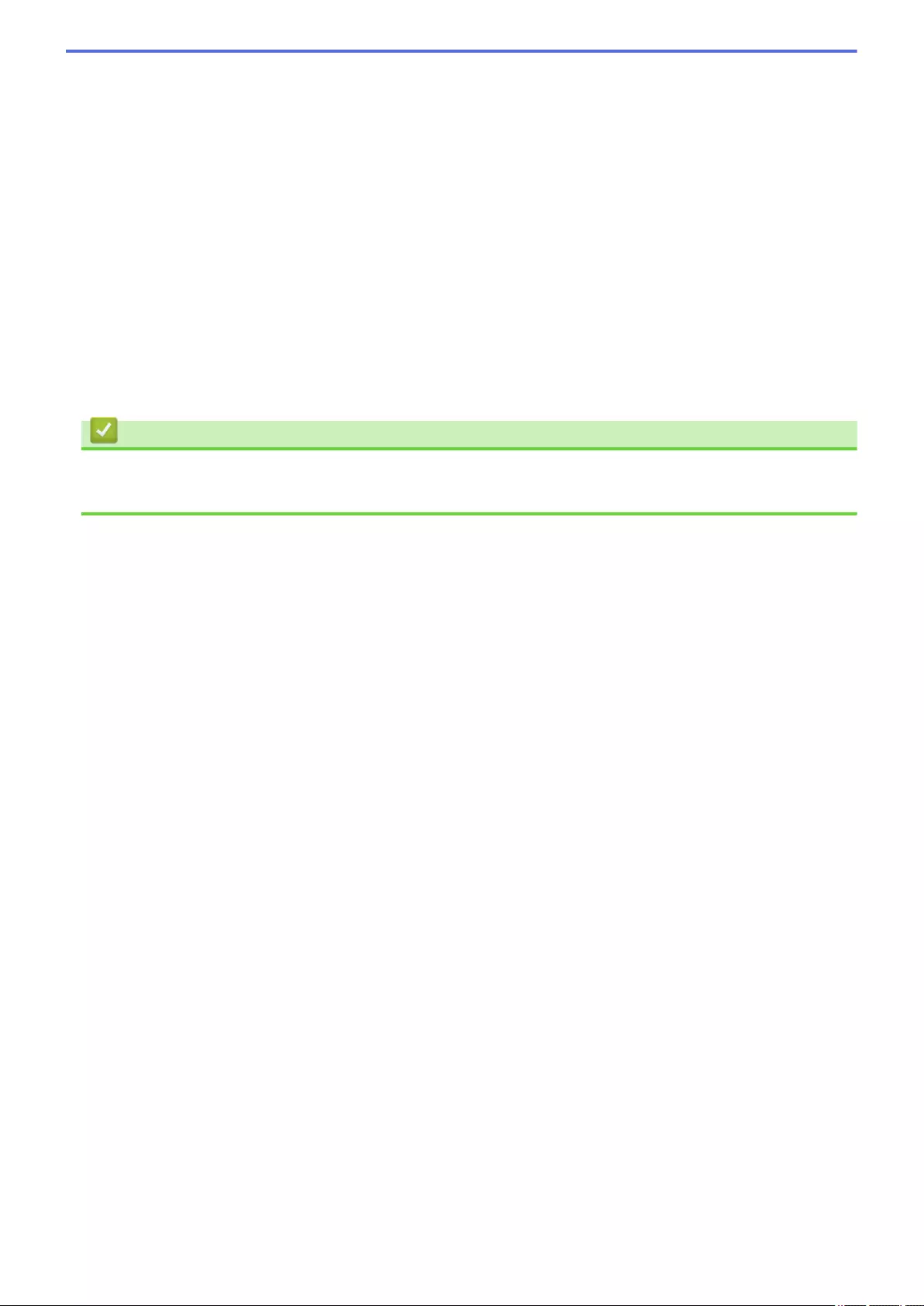
Import
Click to import a file and read its settings.
Print
Click to print the selected items on the machine. You cannot print the data until it is uploaded to the
machine. Click Apply to upload the new data to the machine, and then click Print.
OK
Click to start uploading data to the machine, and then exit the Remote Setup Program. If an error message
appears, enter the correct data again, and then click OK.
Cancel
Click to exit the Remote Setup Program without uploading data to the machine.
Apply
Click to upload data to the machine without exiting the Remote Setup Program.
5. When finished, click OK.
Related Information
•ControlCenter2 (Mac)
•Remote Setup (Mac)
660

Home > Machine Settings > Change Machine Settings from Your Computer > Change the Machine Settings
Using Remote Setup > Remote Setup (Mac) > Set Up Your Machine's Address Book Using ControlCenter2
(Mac)
Set Up Your Machine's Address Book Using ControlCenter2 (Mac)
Use Remote Setup through ControlCenter2 to add or change Address Book numbers on your computer.
If Secure Function Lock is set to On, you cannot use Remote Setup.
1. In the Finder menu bar, click Go > Applications > Brother, and then double-click the
(ControlCenter) icon.
The ControlCenter2 screen appears.
2. Click the DEVICE SETTINGS tab.
3. Click the Address Book button.
The Address Book opens in a Remote Setup window.
4. Add or update the Address Book information as needed.
5. When finished, click OK.
Related Information
•Remote Setup (Mac)
661
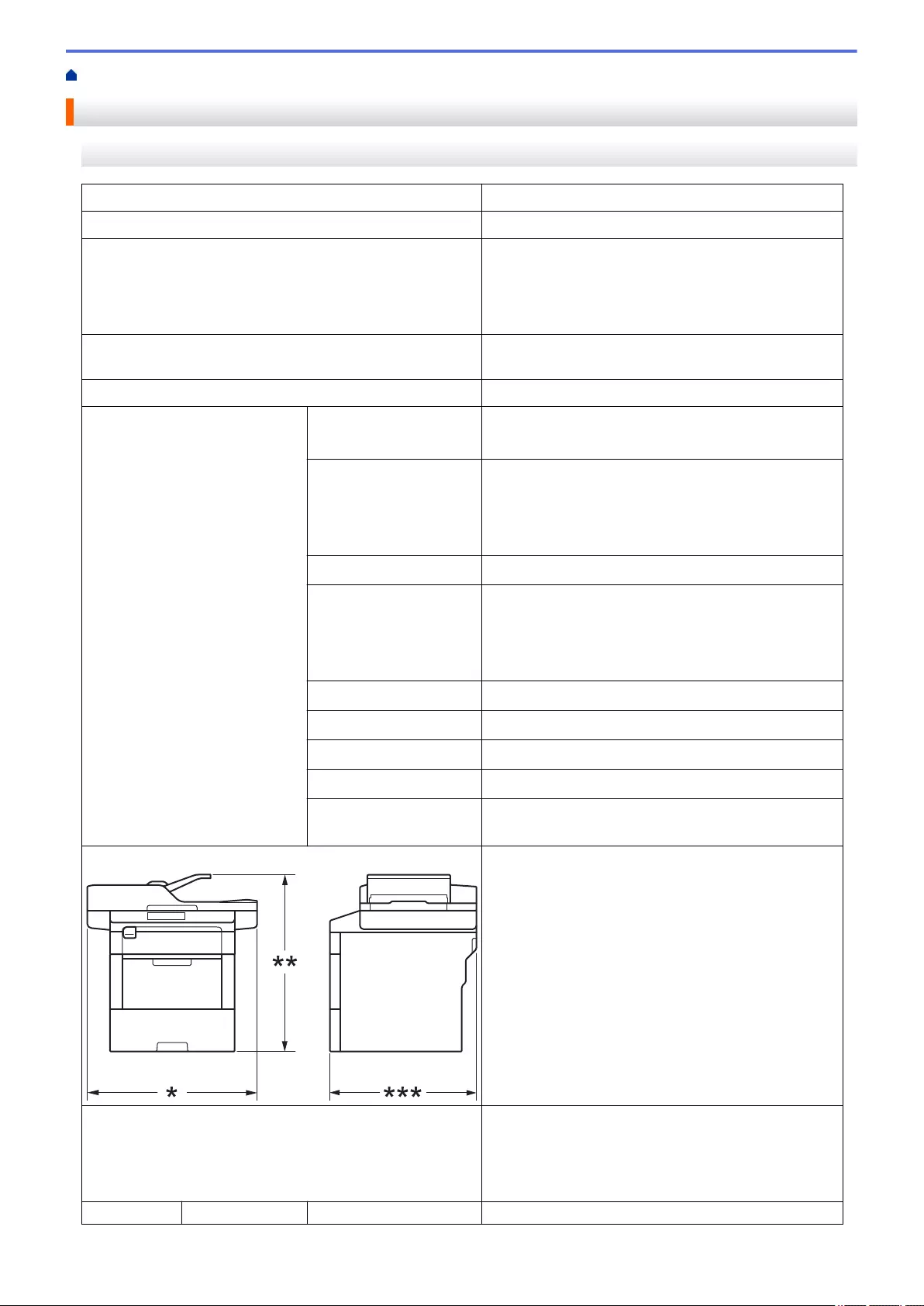
Home > Appendix > Specifications
Specifications
General Specifications
Printer Type • Laser
Print Method • Electrophotographic Laser Printer
Memory Capacity • (MFC-L6750DW)
512 MB
• (MFC-L6900DW)
1 GB
LCD (liquid crystal display) • 4.85 in. (123.2 mm) TFT Color Touchscreen LCD 1
Power Source • 110 to 120 V AC 50/60Hz
Power Consumption
(Average)
Peak 2• Approximately 1,368 W
Printing 2• (MFC-L6750DW)
Approximately 680 W at 77 °F (25 °C)
• (MFC-L6900DW)
Approximately 730 W at 77 °F (25 °C)
Printing (Quiet Mode) 2 • Approximately 375 W at 77 °F (25 °C)
Copying 2 • (MFC-L6750DW)
Approximately 680 W at 77 °F (25 °C)
• (MFC-L6900DW)
Approximately 730 W at 77 °F (25 °C)
Copying (Quiet Mode) 2 • Approximately 375 W at 77 °F (25 °C)
Ready 2• Approximately 36 W at 77 °F (25 °C)
Sleep 2• Approximately 8.9 W
Deep Sleep 2• Approximately 1.8 W
Power Off 2 3 4• Approximately 0.03 W
Dimensions Unit: in. (mm)
•* 19.5 (495)
** 20.4 (518)
*** 16.8 (427)
Weights (with supplies) • (MFC-L6750DW)
41.4 lb (18.8 kg)
• (MFC-L6900DW)
41.9 lb (19.0 kg)
Noise Level Sound Pressure Printing • (MFC-L6750DW)
663
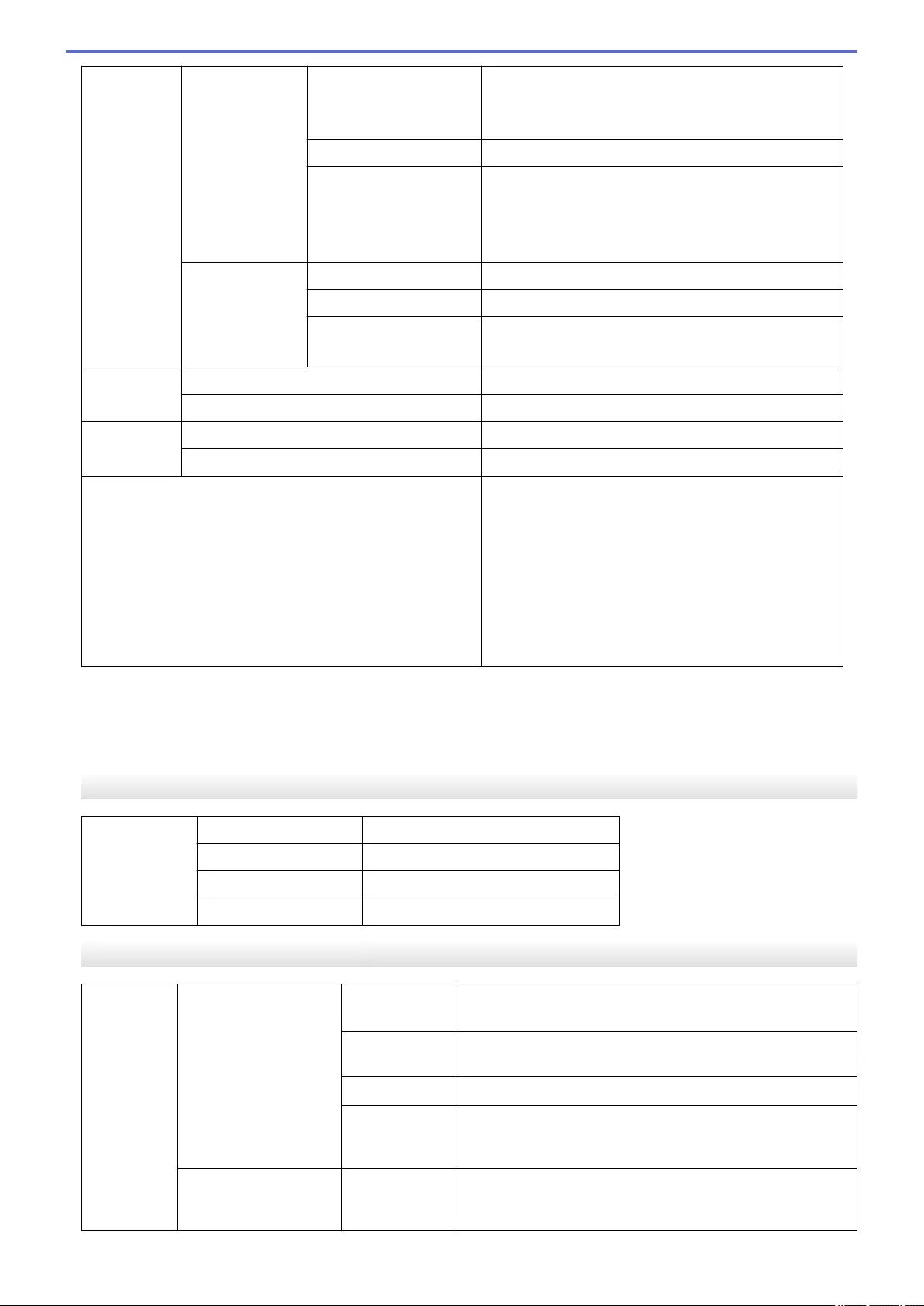
Noise Level Sound Pressure LpAm = 55 dB (A)
• (MFC-L6900DW)
LpAm = 57 dB (A)
Ready • LpAm = 35.0 dB (A)
Printing
(Quiet Mode)
• (MFC-L6750DW)
LpAm = 52 dB (A)
• (MFC-L6900DW)
LpAm = 53 dB (A)
Sound Power Printing • LWAd = 6.76 B (A)
Ready • LWAd = 4.80 B (A)
Printing
(Quiet Mode)
• LWAd = 6.47 B (A)
Temperature Operating • 50 to 90 °F (10 to 32 °C)
Storage • 32 to 104 °F (0 to 40 °C)
Humidity Operating • 20 to 80% (without condensation)
Storage • 35 to 85% (without condensation)
ADF (automatic document feeder) • (MFC-L6750DW)
Up to 70 sheets
• (MFC-L6900DW)
Up to 80 sheets
For best results we recommend:
• Temperature: 68 to 86 °F (20 to 30 °C)
• Humidity: 50 to 70%
• Paper: 20 lb (80 g/m2)
1Measured diagonally
2USB connections to computer
3Measured according to IEC 62301 Edition 2.0.
4Power consumption varies slightly depending on the usage environment.
Document Size Specification
Document Size ADF Width • 4.1 to 8.5 in. (105 to 215.9 mm)
ADF Length • 5.8 to 14.0 in. (147.3 to 355.6 mm)
Scanner Glass Width • Maximum 8.5 in. (215.9 mm)
Scanner Glass Length • Maximum 14 in. (355.6 mm)
Print Media Specifications
Paper Input Paper Tray
(Standard)
Paper Type • Plain Paper, Letterhead, Colored Paper, Thin Paper,
Recycled Paper, Thick Paper 1
Paper Size • A4, Letter, A5, A5 (Long Edge), A6, Executive, Legal,
Folio, Mexico Legal, India Legal
Paper Weight • 16 to 32 lb (60 to 120 g/m2)
Maximum
Paper
Capacity
• Up to 520 sheets of 20 lb (80 g/m2) Plain Paper
Multi-purpose tray
(MP tray)
Paper Type • Plain Paper, Letterhead, Colored Paper, Thin Paper,
Thick Paper, Thicker Paper, Recycled Paper, Bond,
Label, Envelope, Env.Thin, Env.Thick
664
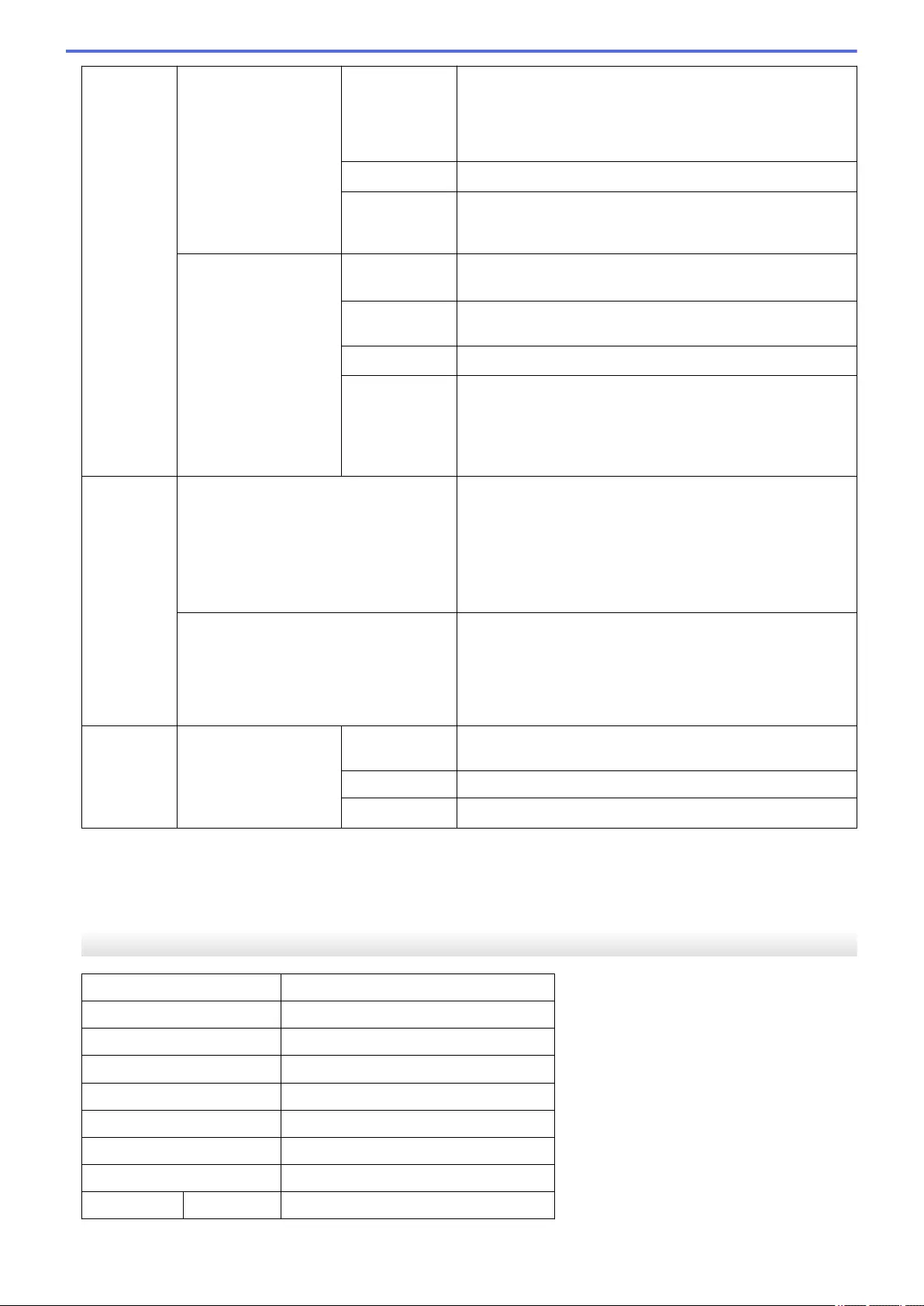
Paper Input Multi-purpose tray
(MP tray)
Paper Size • Width:
3 to 8.5 in. (76.2 to 215.9 mm)
• Length:
5 to 14 in. (127 to 355.6 mm)
Paper Weight • 16 to 53 lb (60 to 200 g/m2)
Maximum
Paper
Capacity
• Up to 50 sheets of 20 lb (80 g/m2) Plain Paper
Envelope: 10 envelopes up to 0.4 in. (10 mm) thick
Paper Tray 2, 3
(Optional) 2
Paper Type • Plain Paper, Letterhead, Colored Paper, Thin Paper,
Recycled Paper, Thick Paper 1
Paper Size • A4, Letter, A5, Executive, Legal, Folio, Mexico Legal,
India Legal
Paper Weight • 16 to 32 lb (60 to 120 g/m2)
Maximum
Paper
Capacity
• (LT-5505)
Up to 250 sheets of 20 lb (80 g/m2) Plain Paper
• (LT-6505)
Up to 520 sheets of 20 lb (80 g/m2) Plain Paper
Paper
Output 3
Face Down Output Tray • (MFC-L6750DW)
Up to 150 Sheets of 20 lb (80 g/m2) Plain Paper (face
down delivery to the face down output paper tray)
• (MFC-L6900DW)
Up to 250 Sheets of 20 lb (80 g/m2) Plain Paper (face
down delivery to the face down output paper tray)
Face Up Output Tray • (MFC-L6750DW)
One sheet (face up delivery to the face up output tray)
• (MFC-L6900DW)
Up to 10 sheets (face up delivery to the face up output
tray)
2-sided Automatic 2-sided
Printing
Paper Type • Plain Paper, Letterhead, Colored Paper, Thin Paper,
Recycled Paper
Paper Size • Letter, Legal, Mexico Legal, India Legal, Folio
Paper Weight • 16 to 28 lb (60 to 105 g/m2)
1Open the back cover (face up output tray) before printing to let the printed paper exit onto the face up output tray.
2You can install up to two Lower Trays.
3For labels, we recommend removing the printed sheets from the output paper tray immediately after they exit the machine to avoid the
possibility of smudging.
Fax Specifications
Compatibility • ITU-T Super Group 3
Coding System • MH / MR / MMR / JBIG
Modem Speed • 33,600 bps (with Automatic Fallback)
2-sided Print Receiving • Yes
Automatic 2-sided Sending • Yes (from ADF)
Scanning Width • Maximum 8.19 in. (208 mm)
Printing Width • Maximum 8.19 in. (208 mm)
Gray Scale • 8bit / 256 levels
Resolution Horizontal • 203 dpi
665
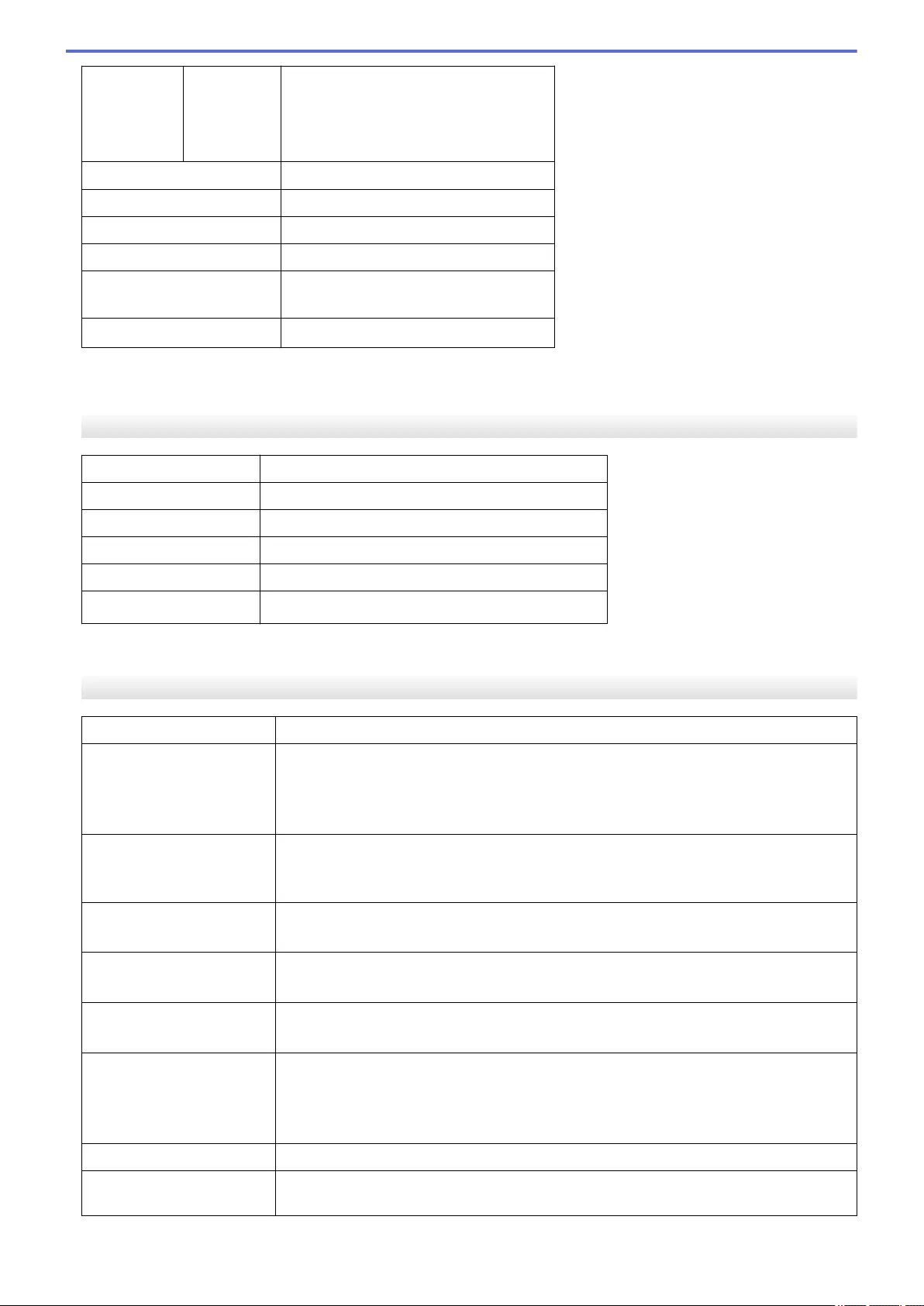
Resolution Vertical • Standard: 98 dpi
• Fine: 196 dpi
• Super fine: 392 dpi
• Photo: 196 dpi
Address Book • 300 Locations
Groups • Up to 20
Broadcasting • 350 Locations
Automatic Redial • 1 time at 5 minutes intervals
Memory Transmission • Up to 500 pages 1
Out of Paper Reception • Up to 500 pages 1
1‘Pages’ refers to the ‘ITU-T Test Chart #1’ (a typical business letter, Standard resolution, JBIG code). Specifications and printed materials
are subject to change without prior notice.
Copy Specification
Copy Width • Maximum 8.27 in. (210 mm)
Automatic 2-sided Copy • Yes (from ADF)
Multiple Copies • Sorts/Stacks up to 99 pages
Enlarge/Reduce • 25 to 400% (in increments of 1%)
Resolution • Maximum 1200 x 600 dpi
First Copy Out Time 1 •Less than 9.5 seconds at 73.4 °F (23 °C) / 115 V
1From Ready Mode and standard tray
Scanner Specifications
Color / Black • Yes / Yes
TWAIN Compliant • Yes
(Windows XP 32 bit SP3 / Windows XP 64 bit SP2 / Windows Vista / Windows 7 /
Windows 8 / Windows 8.1)
(OS X v10.8.5 / 10.9.x / 10.10.x)
WIA Compliant • Yes
(Windows XP 32 bit SP3 / Windows XP 64 bit SP2 / Windows Vista / Windows 7 /
Windows 8 / Windows 8.1)
ICA Compliant • Yes
(OS X v10.8.5 / 10.9.x / 10.10.x)
Color Depth • 48 bit color Processing (Input)
• 24 bit color Processing (Output)
Gray Scale • 16 bit color Processing (Input)
• 8 bit color Processing (Output)
Resolution 1 • Up to 19200 × 19200 dpi (interpolated)
• Up to 1200 x 1200 dpi (from Scanner Glass)
• Up to 600 x 600 dpi (from ADF)
Scanning Width • Maximum 8.27 in. (210 mm)
Automatic 2-sided
Scanning
• Yes (from ADF)
666
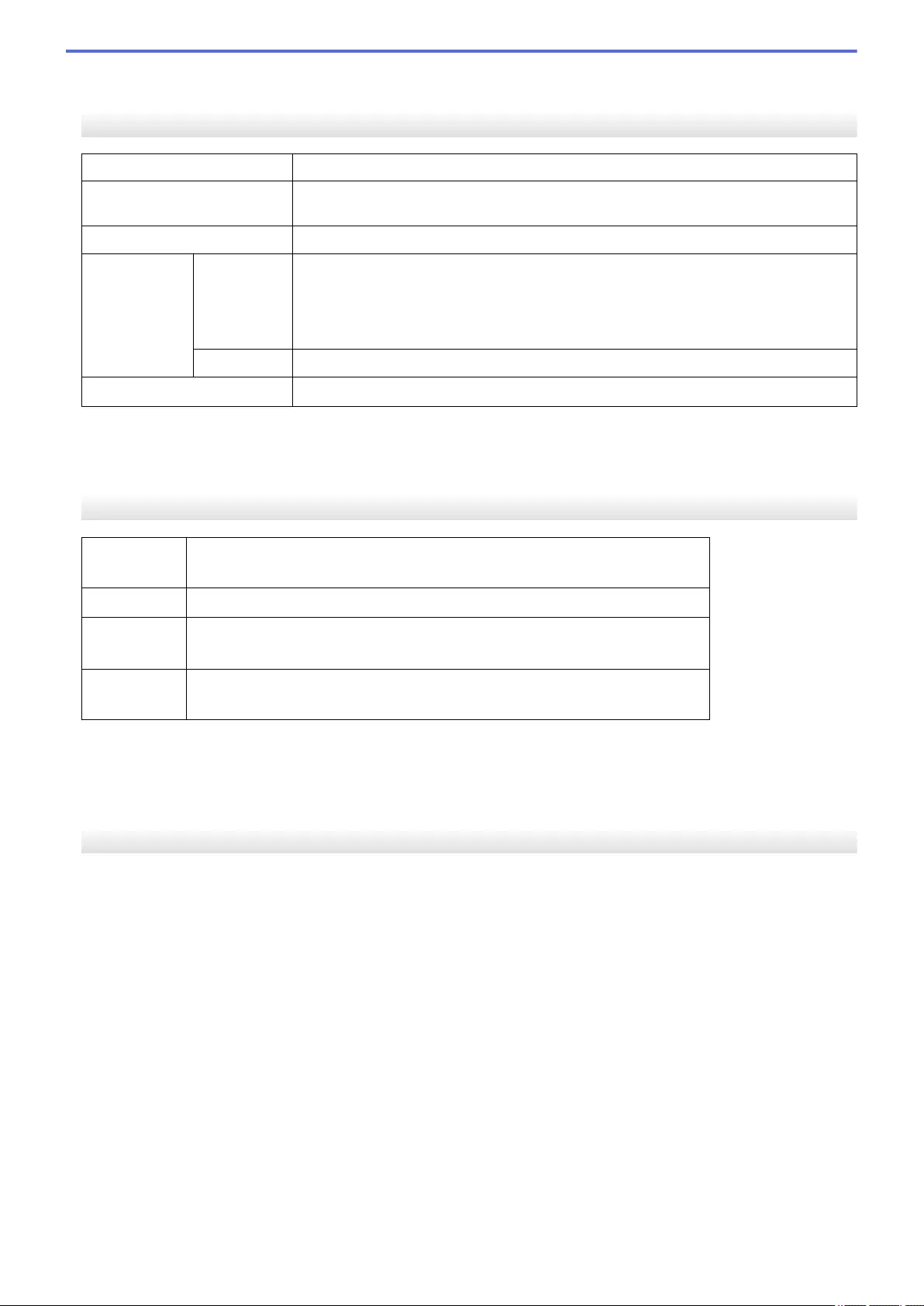
1Maximum 1200 × 1200 dpi scanning with the WIA driver in Windows XP, Windows Vista, Windows 7, Windows 8 and Windows 8.1
(resolution up to 19200 × 19200 dpi can be selected by using the scanner utility)
Printer Specifications
Automatic 2-sided Print • Yes
Emulation • PCL6, BR-Script3, IBM Proprinter XL, Epson FX-850, PDF version1.7, XPS
version 1.0
Resolution • Up to 1200 x 1200 dpi
Print Speed 1 21-sided print • (MFC-L6750DW)
Up to 48 pages/minute (Letter size)
• (MFC-L6900DW)
Up to 52 pages/minute (Letter size)
2-sided Print • Up to 24 sides/minute (Up to 12 sheets/minute) (Letter or A4 size)
First Print Time 3• Less than 7.5 seconds at 73.4 °F (23 °C) / 115 V
1The print speed may change depending on the type of document you print.
2Print speed may be slower when the machine is connected by wireless LAN.
3From Ready mode and standard tray
Interfaces Specifications
USB 1 2 • Hi-Speed USB 2.0
Use a USB 2.0 interface cable that is no more than 6 feet (2.0 meters) long.
LAN • 10Base-T / 100Base-TX /1000Base-T 3 4
Wireless LAN • IEEE 802.11b/g/n (Infrastructure/Ad-hoc Mode)
IEEE 802.11g/n (Wi-Fi Direct™)
NFC • (MFC-L6900DW)
Yes
1Your machine has a USB 2.0 Hi-Speed interface. The machine can also be connected to a computer that has a USB 1.1 interface.
2Third party USB ports are not supported.
3Use a straight-through Category 5 (or greater) twisted-pair cable.
4If you connect the machine to a Gigabit network, use network devices and cables that comply with the 1000BASE-T specification.
Supported Protocols and Security Features
Ethernet
10Base-T/100Base-TX/1000Base-T
Wireless LAN
IEEE 802.11b/g/n (Infrastructure Mode/Ad-hoc Mode), IEEE 802.11g/n (Wi-Fi Direct)
Protocols (IPv4)
ARP, RARP, BOOTP, DHCP, APIPA(Auto IP), WINS/NetBIOS name resolution, DNS Resolver, mDNS, LLMNR
responder, LPR/LPD, Custom Raw Port/Port9100, POP3, SMTP Client, IPP/IPPS, FTP Client and Server,
CIFS Client, TELNET Server, SNMPv1/v2c/v3, HTTP/HTTPS server, TFTP client and server, ICMP, Web
Services (Print/Scan), SNTP Client, LDAP, IMAP4
Protocols (IPv6)
NDP, RA, DNS resolver, mDNS, LLMNR responder, LPR/LPD, Custom Raw Port/Port9100, IPP/IPPS, POP3,
SMTP Client, FTP Client and Server, CIFS Client, TELNET Server, SNMPv1/v2c, HTTP/HTTPS server, TFTP
client and server, ICMPv6, SNTP Client, LDAP, Web Services (Print/Scan), IMAP4
667
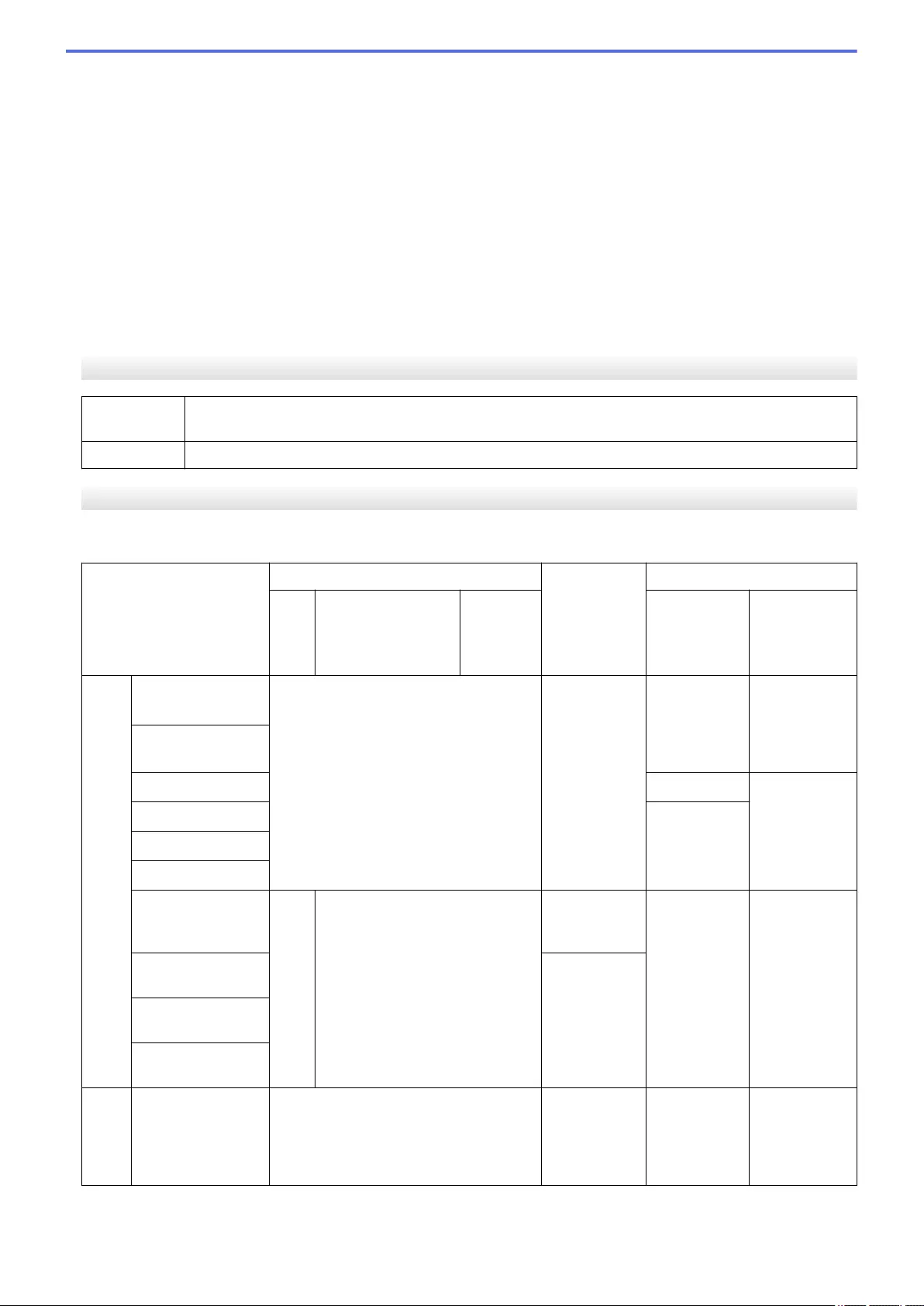
Network Security (Wired)
APOP, SMTP-AUTH, SSL/TLS (IPPS, HTTPS, SMTP, POP3, IMAP4), SNMP v3 802.1x (EAP-MD5, EAP-
FAST, PEAP, EAP-TLS, EAP-TTLS), Kerberos, IPSec
Network Security (Wireless)
APOP, SMTP-AUTH, SSL/TLS (IPPS, HTTPS, SMTP, POP3, IMAP4), SNMP v3, 802.1x (LEAP, EAP-FAST,
PEAP, EAP-TLS, EAP-TTLS), Kerberos, IPSec
Wireless Network Security
WEP 64/128 bit, WPA-PSK (TKIP/AES), WPA2-PSK (AES)
Wireless Certification
Wi-Fi Certification Mark License (WPA™/WPA2™ - Enterprise, Personal), Wi-Fi Protected Setup (WPS)
Identifier Mark License, Wi-Fi CERTIFIED Wi-Fi Direct
Direct Print Feature Specifications
Compatibility • PDF version1.7, JPEG, Exif+JPEG, PRN (created by own printer driver), TIFF (scanned by
Brother models), XPS version 1.0
Interface • USB direct interface : Front x 1, Rear x 1(MFC-L6900DW)
Computer Requirements Specifications
Supported Operating Systems And Software Functions
Computer Platform &
Operating System
Version
PC Interface Processor Hard Disk Space to Install
USB
1
10Base-T /
100Base-TX /
1000Base-T
(Ethernet)
Wireless
802.11b/g/
n
For Drivers For
Applications
(including
Drivers)
Wind
ows
Oper
ating
Syste
m
Windows XP Home
2 3
Printing
PC Fax 4
Scanning
32 bit (x86)
(SP3) or 64 bit
(x64)(SP2)
processor
150 MB 500 MB
Windows XP
Professional 2 3
Windows Vista 2 3 500 MB 1.2 GB
Windows 7 2 3 650 MB
Windows 8 2 3
Windows 8.1 2 3
Windows Server
2008
N/A Printing 32 bit (x86) or
64 bit (x64)
processor
50 MB N/A
Windows Server
2008 R2
64 bit (x64)
processor
Windows Server
2012
Windows Server
2012 R2
Mac
Oper
ating
Syste
m
OS X v10.8.5
OS X v10.9.x
OS X v10.10.x
Printing
PC-Fax (Send) 4
Scanning
Intel®
Processor
80 MB 400 MB
1Third party USB ports are not supported.
2For WIA, 1200x1200 resolution. Brother Scanner Utility enables resolutions up to 19200 x 19200 dpi.
668
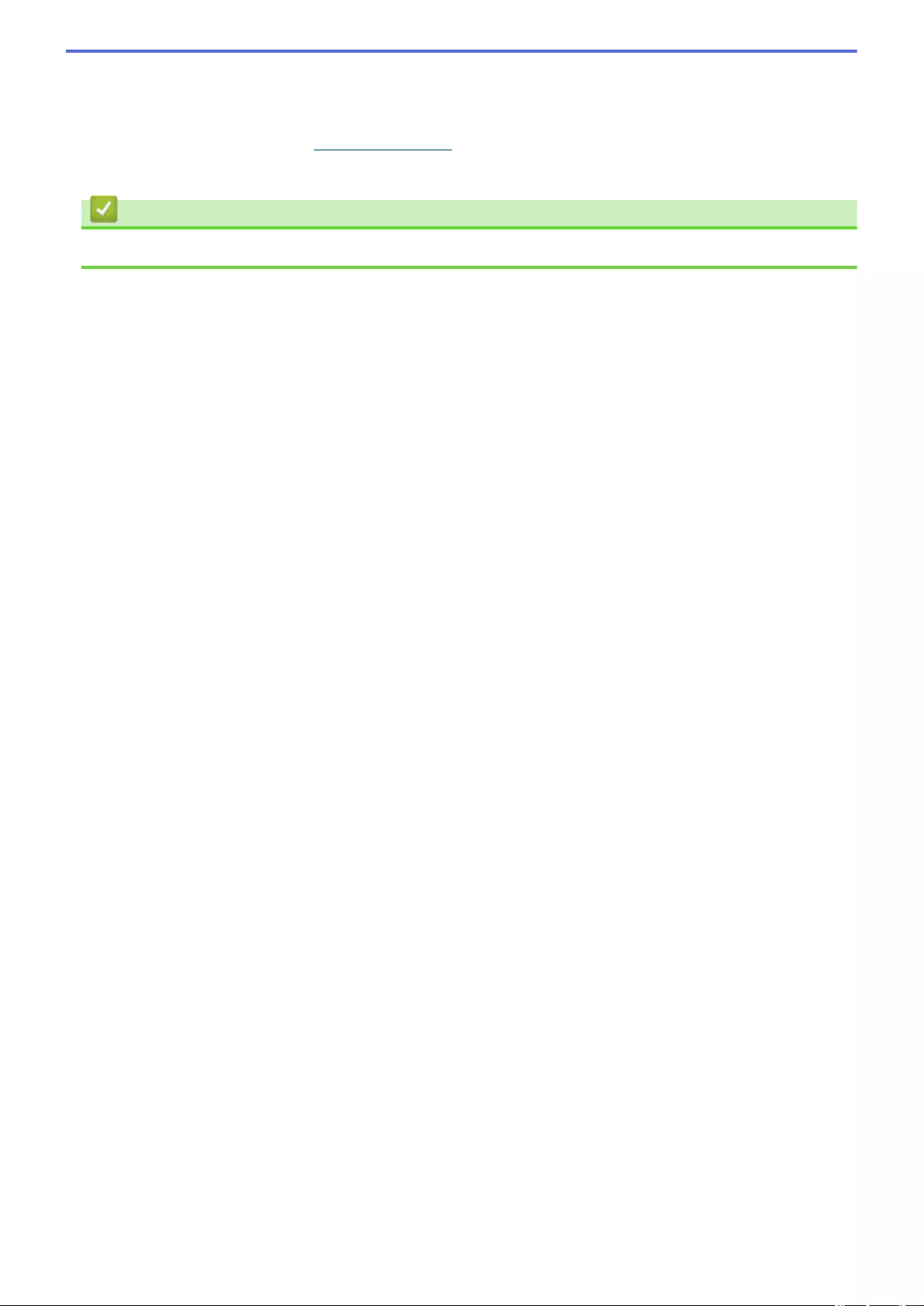
3PaperPort™ 14SE supports Windows XP Home (SP3 or greater), XP Professional 32-bit (SP3 or greater),Windows Vista (SP2 or greater),
Windows 7, Windows8 and Windows 8.1
4PC-Fax supports black and white only.
For the latest driver updates, visit support.brother.com.
All trademarks, brand and product names are the property of their respective companies.
Related Information
•Appendix
669
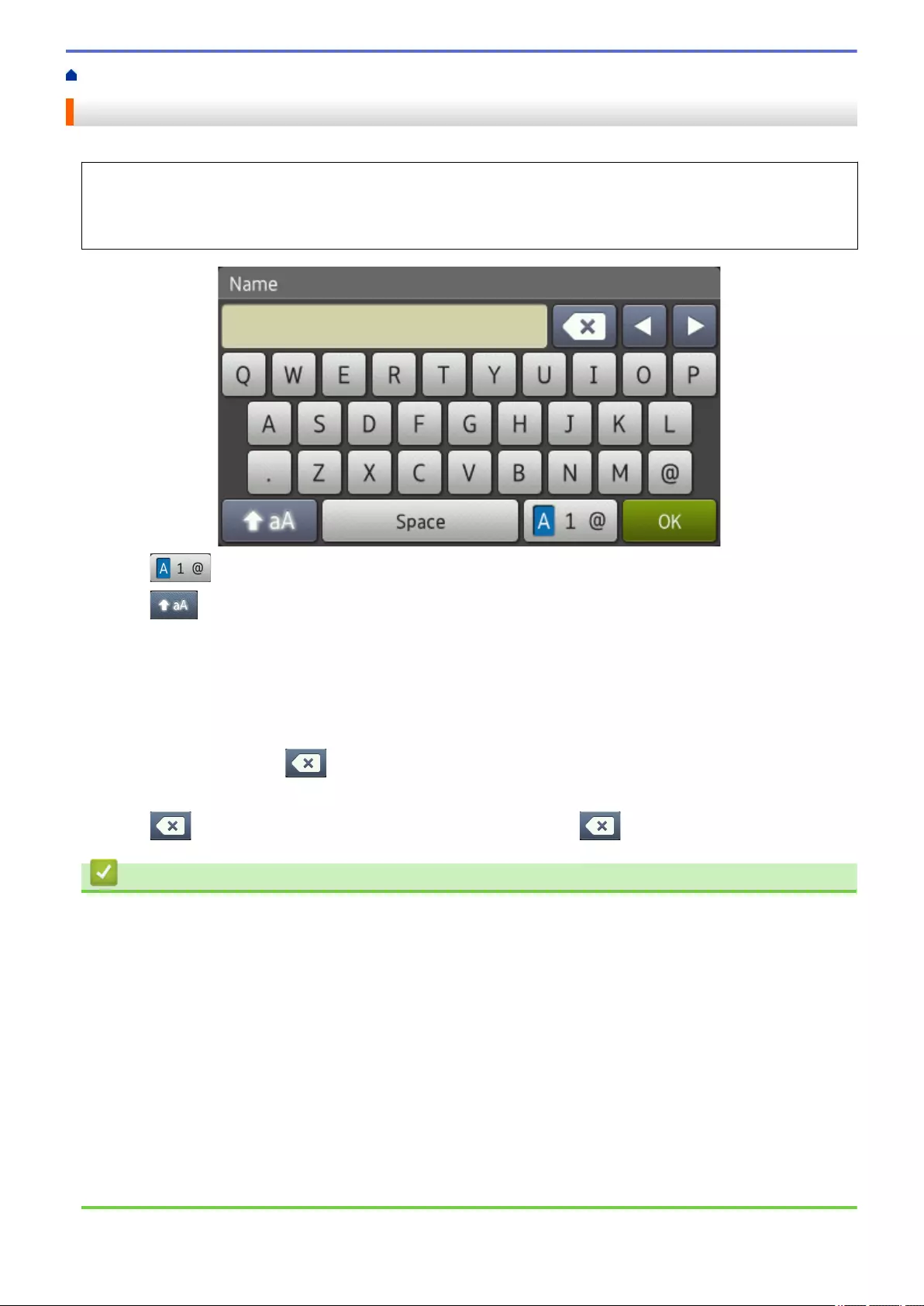
Home > Appendix > How to Enter Text on Your Brother Machine
How to Enter Text on Your Brother Machine
• When you must enter text on your Brother machine, a keyboard appears on the LCD.
• The characters that are available may differ depending on your country.
• The keyboard layout may differ depending on the operation you perform.
• Press to cycle between letters, numbers and special characters.
• Press to cycle between lowercase and uppercase letters.
• To move the cursor to the left or right, press d or c.
Inserting spaces
• To enter a space, press [Space] or c.
Making corrections
• If you entered a character incorrectly and want to change it, press d or c to move the cursor to the incorrect
character, and then press . Enter the correct character.
• To insert a character, press d or c to move the cursor to the correct place, and then enter the character.
• Press for each character you want to erase, or press and hold to erase all the characters.
Related Information
•Appendix
•Send Scanned Data to an Email Server
•Upload Scanned Data to an FTP Server
•Set Your Station ID
•Store Fax Numbers
•Configure Your Machine for a Wireless Network in Ad-Hoc Mode Using an Existing SSID
•Configure Your Machine for a Wireless Network Using the Machine's Control Panel Setup Wizard
•Configure Your Machine for a Wireless Network in Ad-Hoc Mode Using a New SSID
•Configure Your Machine for a Wireless Network When the SSID Is Not Broadcast
•Send an Internet Fax (I-Fax)
•Forward Received Email and Fax Messages
•Relay Broadcast from Your Brother Machine
670
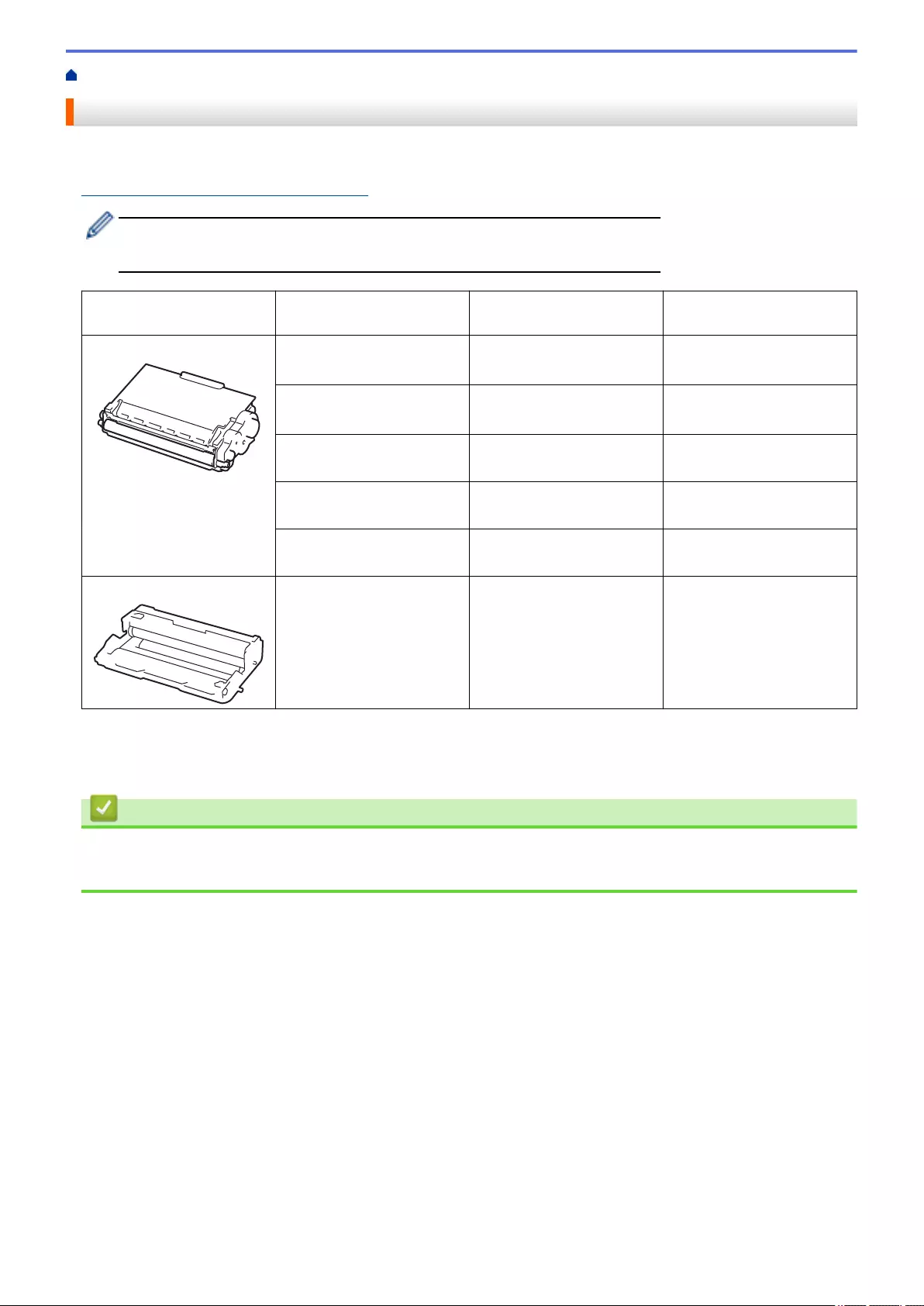
Home > Appendix > Supplies
Supplies
When the time comes to replace supplies, such as the toner or drum, an error message will appear on your
machine's control panel or in the Status Monitor. For more information about the supplies for your machine, visit
http://www.brother.com/original/index.html or contact your local Brother dealer.
• The toner cartridge and drum unit are two separate parts.
• The toner cartridge number will vary depending on your country and region.
Supply Supply order No. Approximate life (page
yield)
Applicable Models
Toner Cartridge Standard Toner: TN-820 Approximately 3,000 pages
1 (Letter or A4 page)
MFC-L6750DW/
MFC-L6900DW
High Yield Toner: TN-850 Approximately 8,000 pages
1 (Letter or A4 page)
MFC-L6750DW/
MFC-L6900DW
Super High Yield Toner:
TN-880
Approximately 12,000
pages 1 (Letter or A4 page)
MFC-L6750DW/
MFC-L6900DW
Ultra High Yield Toner:
TN-890
Approximately 20,000
pages 1 (Letter or A4 page)
MFC-L6900DW
Starter Toner: supplied
with your machine
Approximately 12,000
pages 1 (Letter or A4 page)
MFC-L6750DW/
MFC-L6900DW
Drum Unit DR-890 Approximately 50,000
pages 2
MFC-L6750DW/
MFC-L6900DW
1Approximate cartridge yield is declared in accordance with ISO/IEC 19752.
2Approximately 50,000 pages based on 3 pages per job and 30,000 pages based on 1 page per job [A4/letter simplex pages]. The number
of pages may be affected due to a variety of factors including but not limited to media type and media size.
Related Information
•Appendix
•Replace Supplies
671
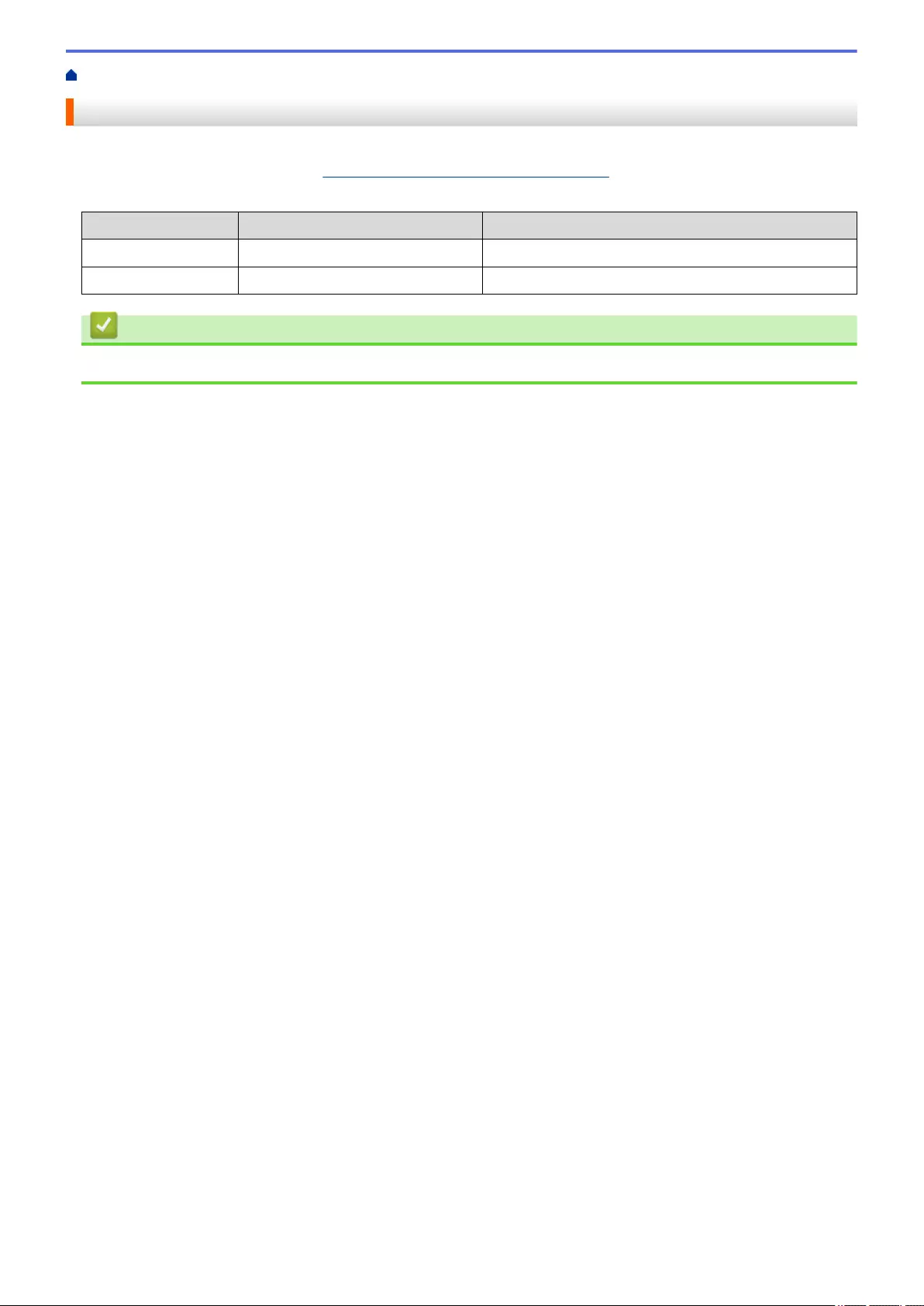
Home > Appendix > Accessories
Accessories
Availability of accessories may vary depending on your country or region. For more information about the
accessories for your machine, visit http://www.brother.com/original/index.html or contact your Brother dealer or
Brother Customer Service.
Order No. Item Applicable Models
LT-5505 Lower Tray (250 sheets) All models
LT-6505 Lower Tray (520 sheets) All models
Related Information
•Appendix
672
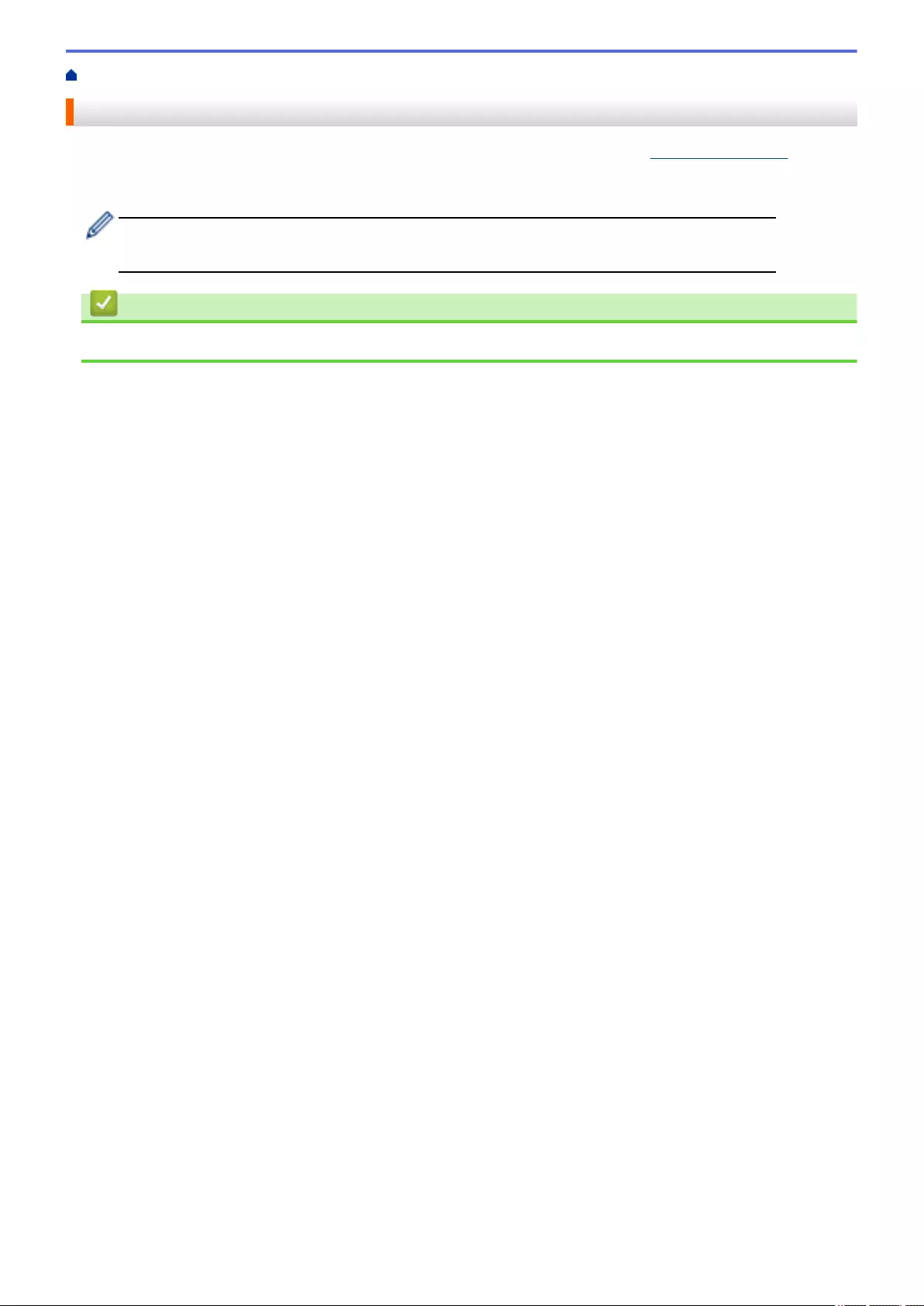
Home > Appendix > Brother Numbers > FAQs (Frequently Asked Questions)
FAQs (Frequently Asked Questions)
For more information on your Brother machine, visit the Brother support website at support.brother.com. For
additional help and tips, go to your model’s FAQs & Troubleshooting page; for the latest drivers and software,
go to your model’s Downloads page.
• Check here for Brother driver updates.
• To keep your machine’s performance up-to-date, check here for the latest firmware upgrade.
Related Information
•Brother Numbers
674
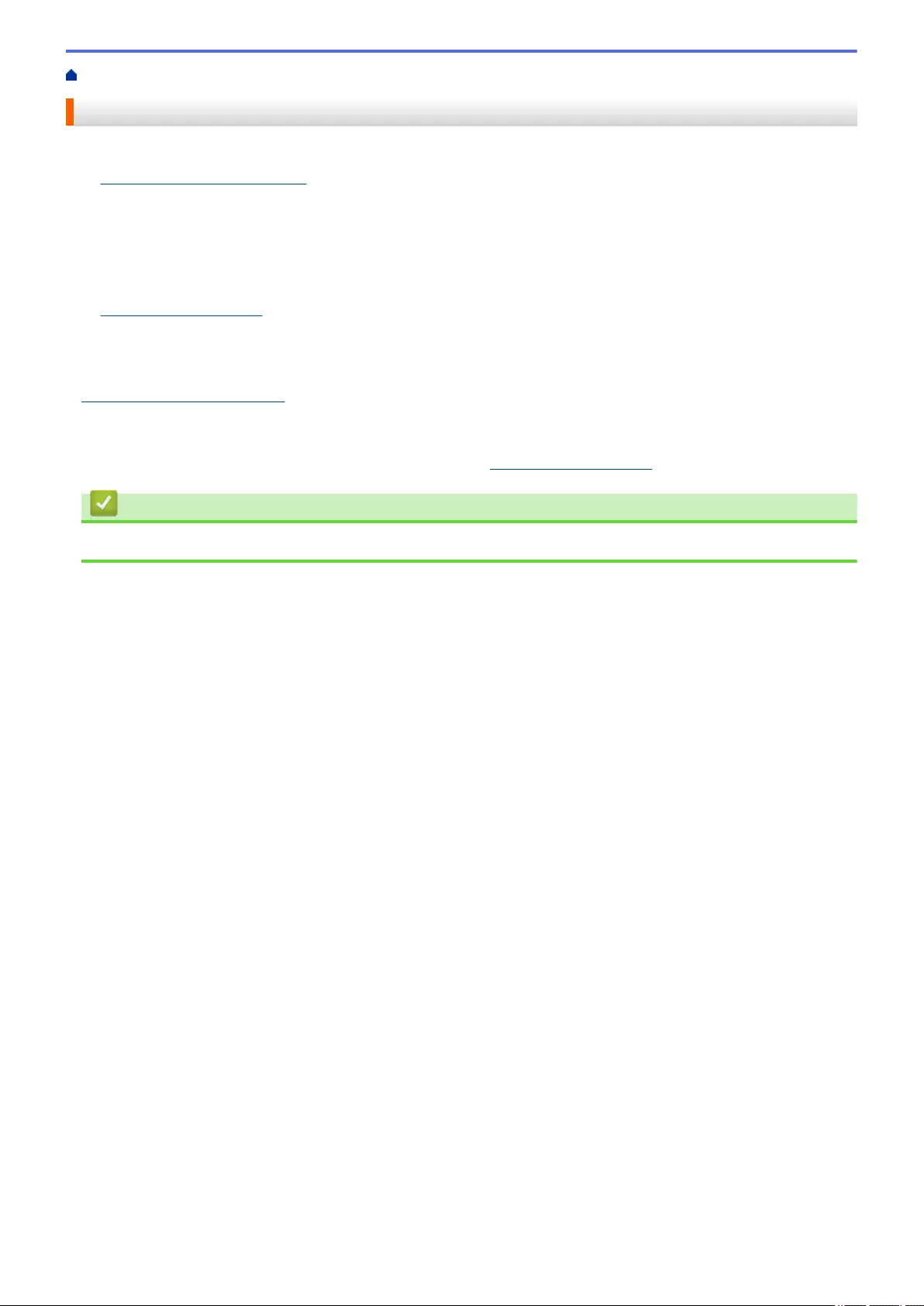
Home > Appendix > Brother Numbers > For Customer Service
For Customer Service
In USA:
www.brother-usa.com/support (Self-Service/Email/Chat)
1-877-BROTHER (1-877-276-8437)
1-901-379-1215 (assistance via fax)
1-877-268-9575 (test your fax sending and fax receiving operations)
In Canada:
www.brother.ca/support (Self-Service Videos, Email, Chat, Facebook and Twitter Help)
Service Center Locator (USA only)
For the location of a Brother authorized service center, call 1-877-BROTHER (1-877-276-8437) or visit
www.brother-usa.com/service.
Service Center Locations (Canada only)
For the location of a Brother authorized service center, visit www.brother.ca/support.
Related Information
•Brother Numbers
675
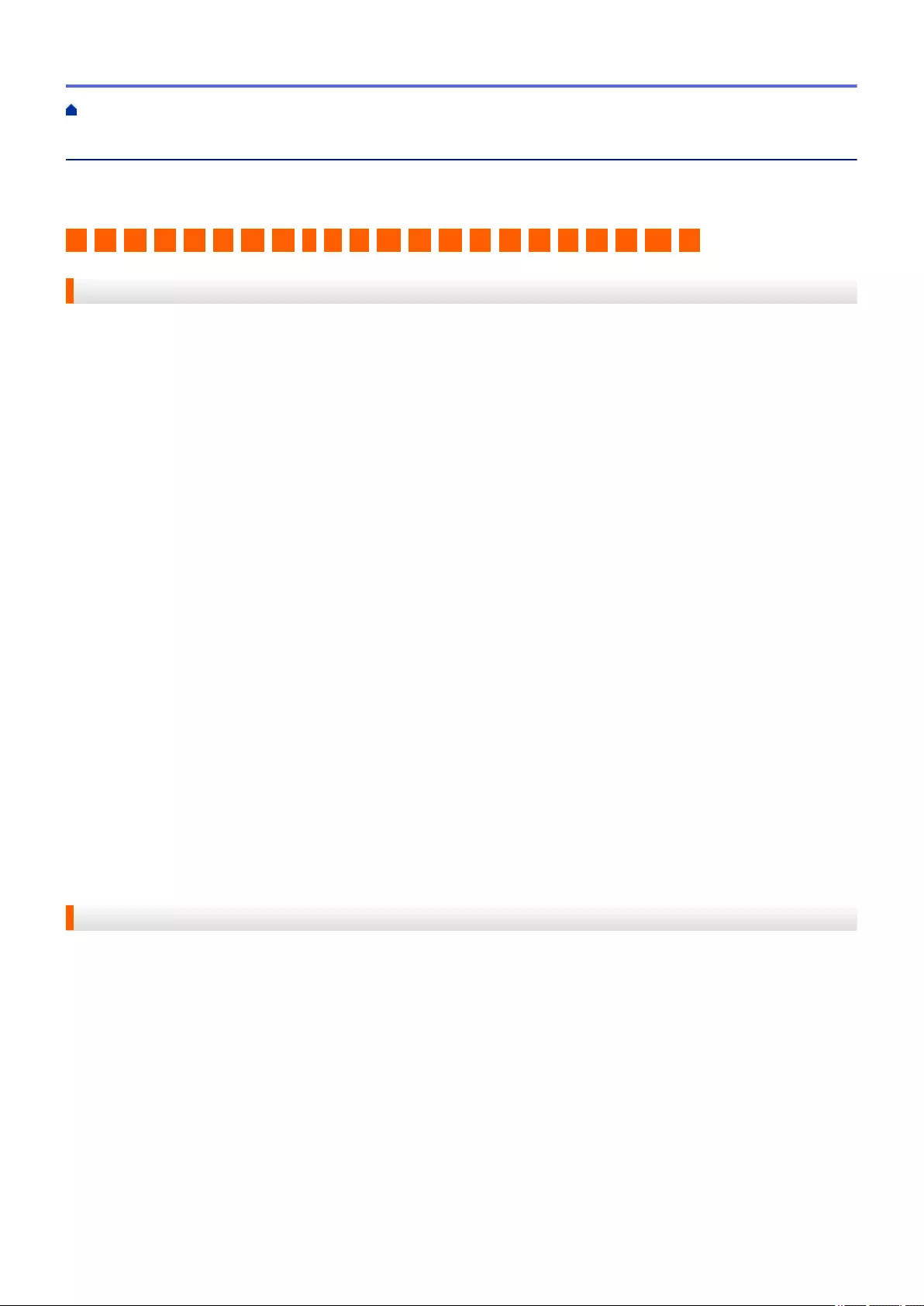
Glossary
This is a comprehensive list of features and terms that appear in Brother manuals. Availability of these features
depends on the model you purchased.
A B C D E F G H I J L M N O P R S T U V W X
A
•Active Directory Authentication
•Ad-Hoc Mode
•Address Book
•Address Book List
•ADF (Automatic Document Feeder)
•AES
•APIPA
•APOP
•ARP
•Authentication
•Auto Reduction
•Automatic Fax Transmission
•Automatic Redial
B
•Backup Print
•Beeper Volume
•BOOTP
•BRAdmin Light (Windows)
•BRAdmin Professional (Windows)
•Broadcasting
Home > Glossary
676
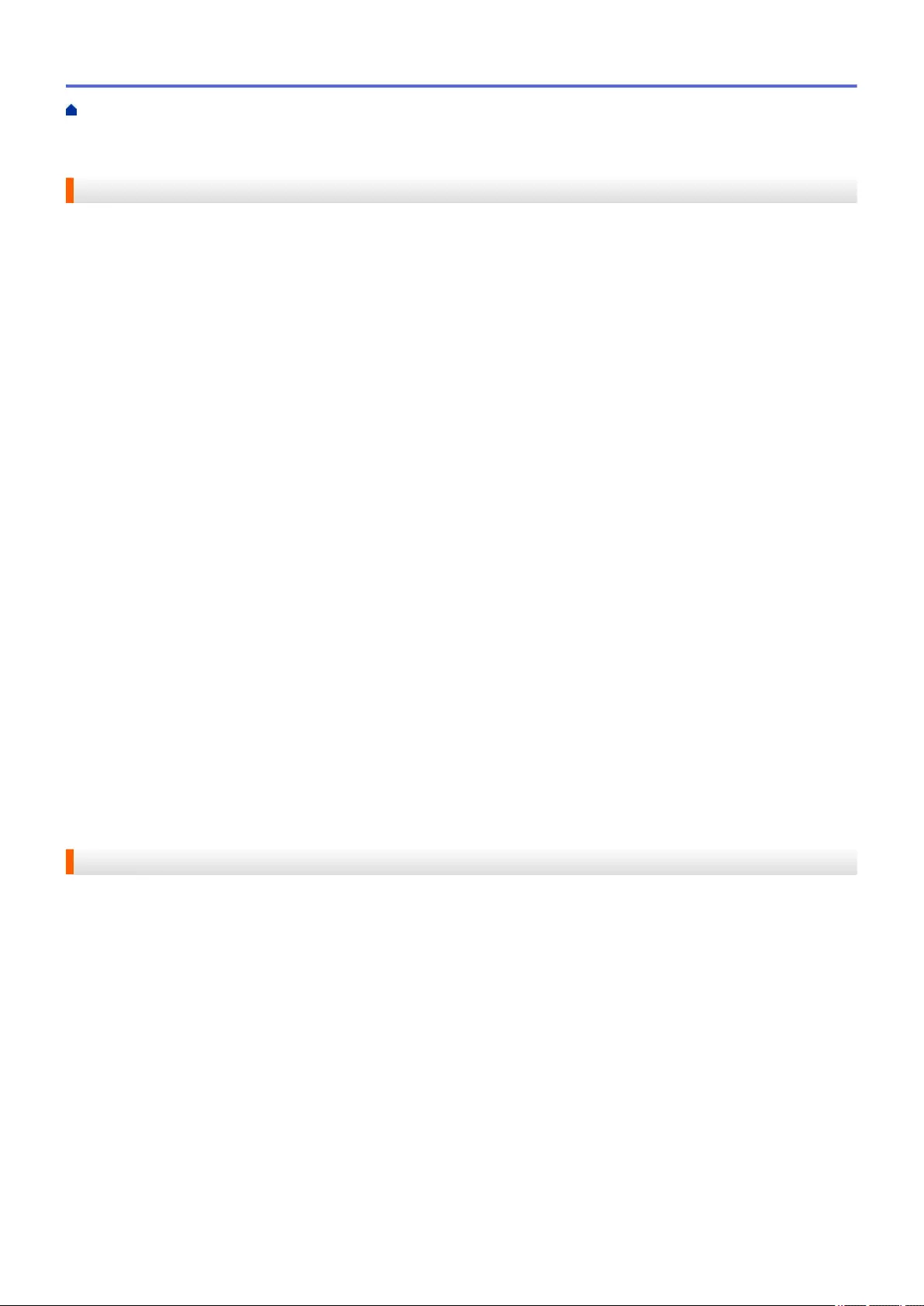
•BRPrint Auditor (Windows)
C
•CA
•CA Certificate
•Caller ID
•Cancel Job
•Certificate
•Channels
•CIFS
•CNG Tones
•Coding Method
•Communication Error (or Comm. Error)
•Compatibility Group
•Contrast
•CSR
•Custom Raw Port
D
•Delayed Fax
•Density
•DHCP
•Digital Signature
•Distinctive Ring
•DNS Client
•DNS Server
•Driver Deployment Wizard
Home > Glossary
677

•Dual Access
E
•Easy Receive
•ECM (Error Correction Mode)
•Encryption
•Extension Telephone
•External Telephone
F
•F/T Ring Time
•Fax Forwarding
•Fax Journal
•Fax Receive Code (Fax/Tel Mode Only)
•Fax Storage
•Fax Tones
•Fax/Tel
•Fine Resolution
•FTP
G
•Gateway
•Gray Scale
•Group Number
H
•HTTP (Web Server)
•HTTPS
Home > Glossary
678
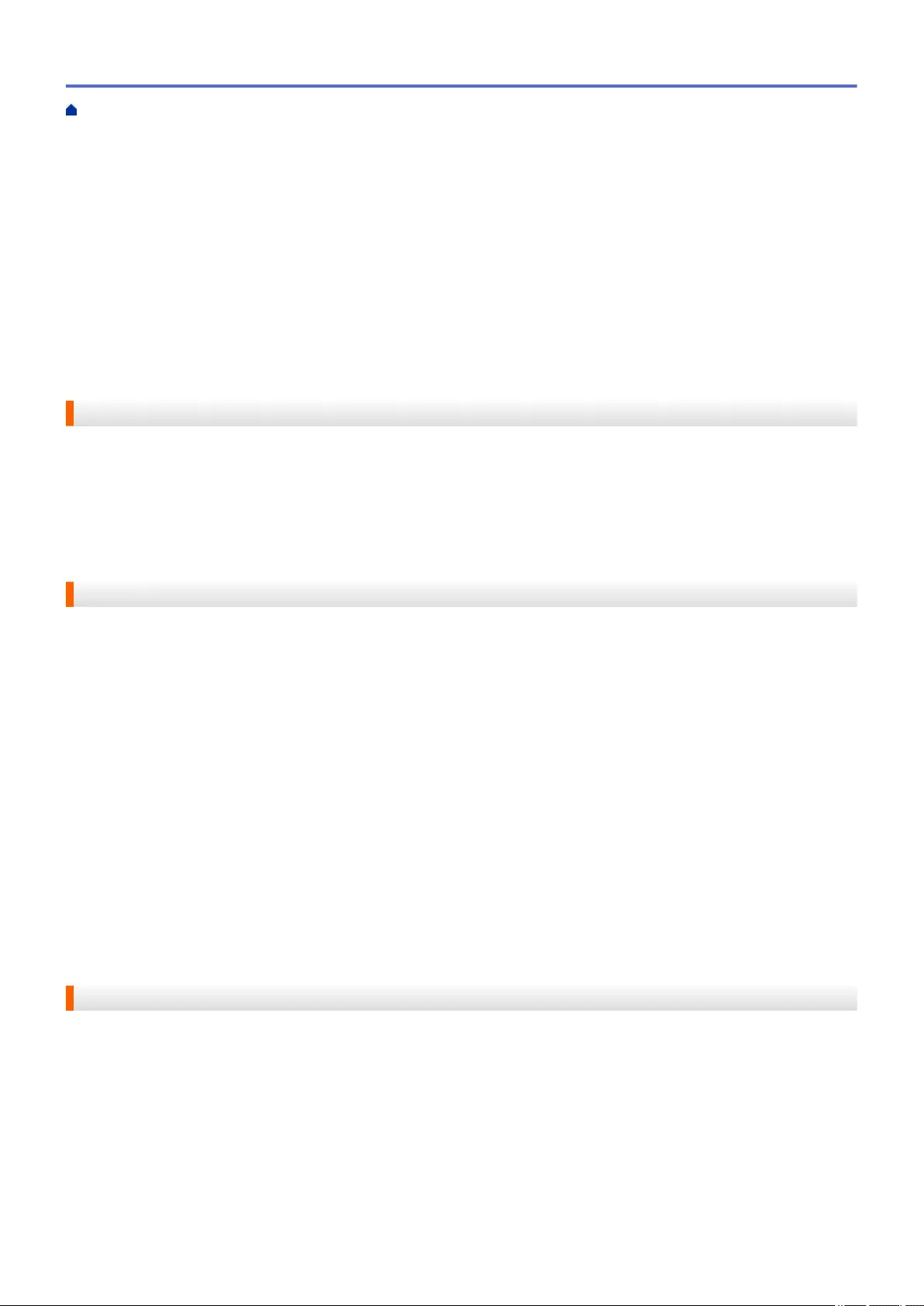
•Network Connection Repair Tool
•Network Key
•Network PC-FAX
•Network Remote Setup
•Network Shared Printing
•Node Name
O
•Open System
•Out of Paper Reception
•Overseas Mode
P
•Paging
•Pause
•PEAP
•Peer-to-Peer
•Photo resolution (B&W only)
•Protocols
•Public Key Cryptosystem
•Pulse
R
•RARP
•Real Time Transmission
•Remaining Jobs
•Remote Access Code
•Remote Retrieval Access
Home > Glossary
680
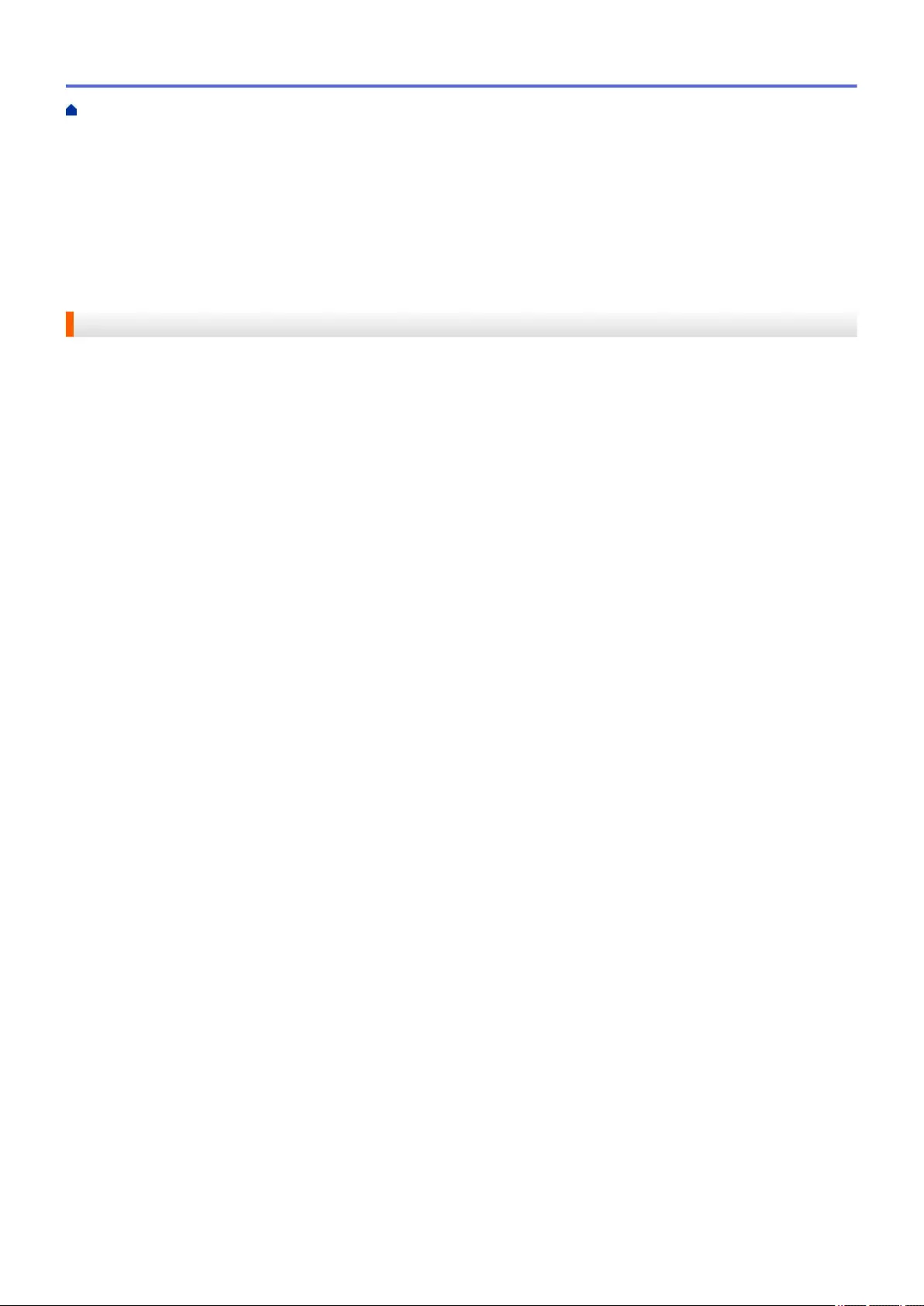
•Remote Setup
•Resolution
•Ring Delay
•Ring Volume
S
•Scan to Email Server
•Scanning
•Search
•Secure Function Lock 3.0
•Settings Tables
•Shared Key Cryptosystem
•SMTP Client
•SMTP over SSL
•SMTP-AUTH
•SNMP
•SNMPv3
•SNTP
•SSID
•SSL/TLS
•Standard resolution
•Station ID
•Status Monitor
•Store Print Log to Network
•Subnet Mask
•Super Fine resolution (B&W only)
Home > Glossary
681
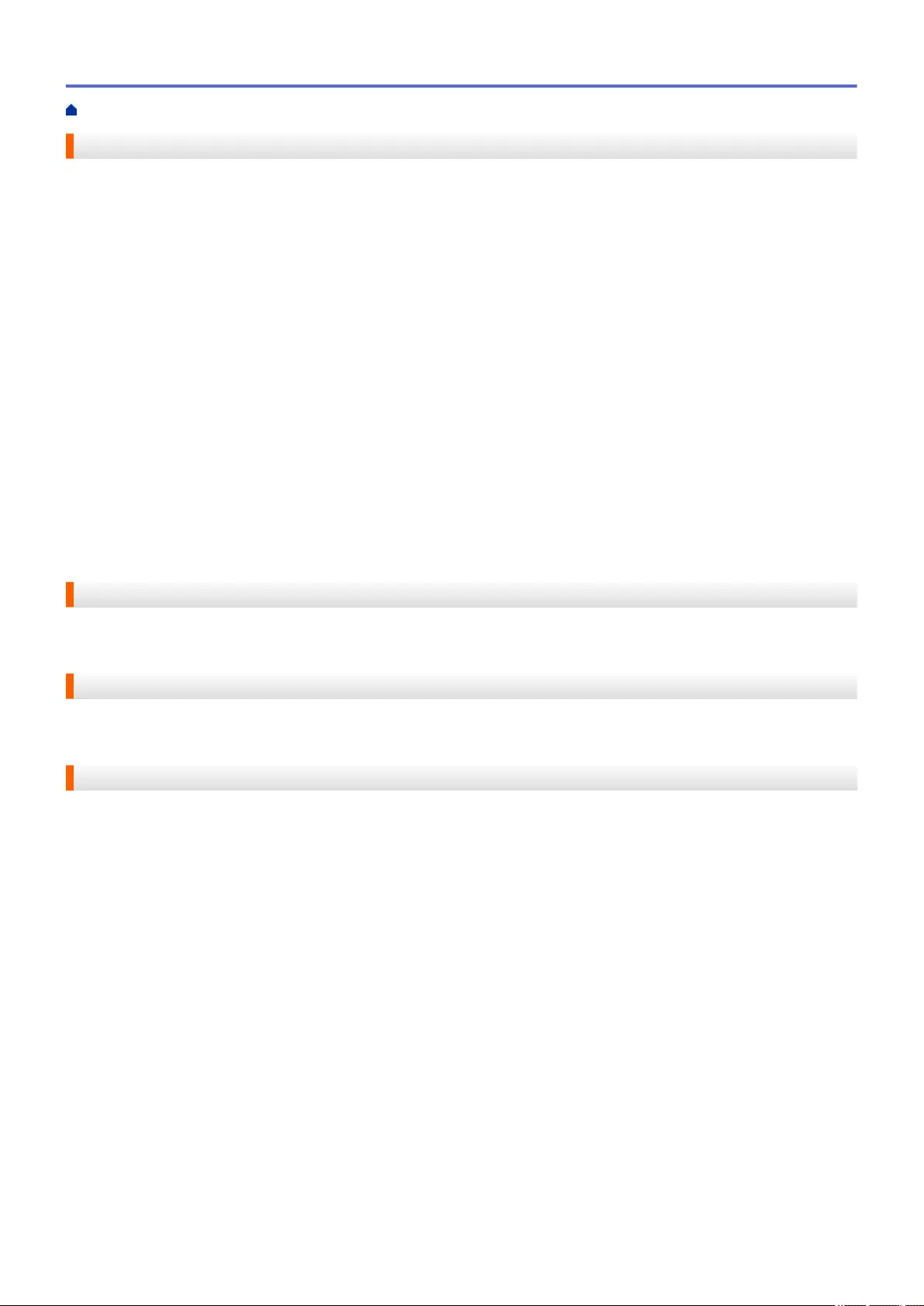
T
•TAD (Telephone Answering Device)
•TCP/IP
•Telephone Answer Code (Fax/Tel Mode only)
•TELNET
•Temporary Settings
•TKIP
•Tone
•Transmission
•Transmission Verification Report
U
•User Settings List
V
•Vertical Pairing
W
•Web Based Management
•Web Services
•WEP
•Wi-Fi Direct®
•WINS
•WINS Server
•WLAN Report
•WPA-PSK/WPA2-PSK Authentication Method
•WPS
Home > Glossary
682
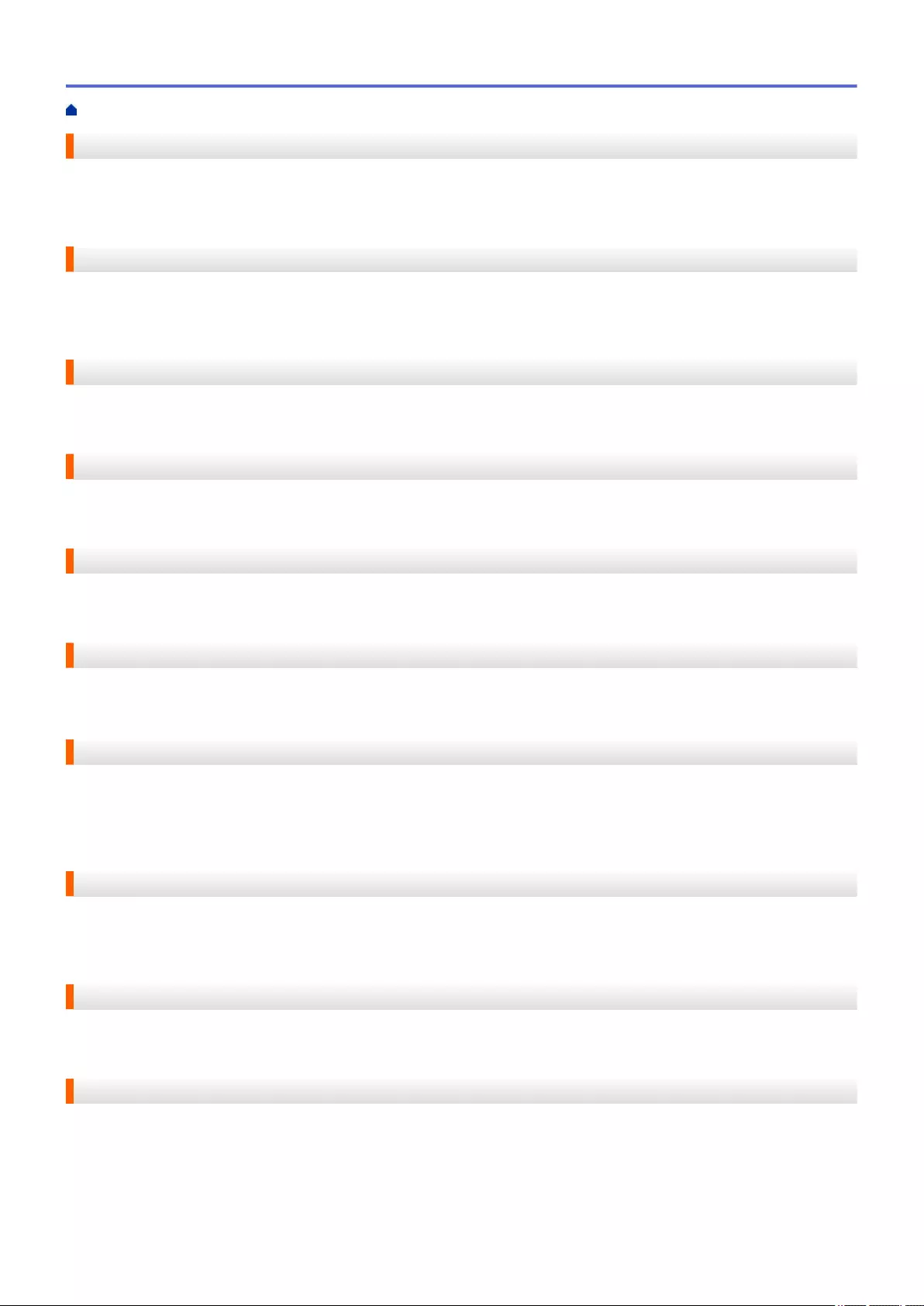
Active Directory Authentication
Active Directory Authentication restricts the use of the Brother machine. You cannot use your machine until you
log on to the machine using a user ID and password.
Ad-Hoc Mode
The mode of operation in a wireless network, in which all devices (machines and computers) are connected
without an access point/router.
Address Book
Names and numbers you have stored for easy dialing.
Address Book List
A listing of names and numbers stored in the Address Book memory, in alphabetical order.
ADF (Automatic Document Feeder)
The document can be placed in the ADF and scanned one page at a time automatically.
AES
Advanced Encryption Standard (AES) is the Wi-Fi®-authorized strong encryption standard.
APIPA
If you do not assign an IP address manually or automatically (using a DHCP, BOOTP, or RARP server), the
Automatic Private IP Addressing (APIPA) protocol will automatically assign an IP address from the range
169.254.1.0 to 169.254.254.255.
APOP
Authenticated Post Office Protocol (APOP) expands POP3 (the Internet receiving protocol) to include an
authentication method that encrypts the password when the client receives email.
ARP
Address Resolution Protocol (ARP) performs mapping of an IP address to a MAC address in a TCP/IP network.
Authentication
Most wireless networks use some kind of security settings. These security settings define the authentication (how
the device identifies itself to the network) and encryption (how the data is encrypted as it is sent on the network).
If you do not correctly specify these options when you are configuring your Brother wireless machine, it will not
be able to connect to the wireless network. Therefore, care must be taken when configuring these options.
Home > Glossary
684

Authentication Methods for a Personal Wireless Network
A personal wireless network is a small network (such as a home wireless network) without IEEE 802.1x
support.
• Open system
Wireless devices are allowed to access the network without any authentication.
• Shared key
A secret pre-determined key is shared by all devices that will access the wireless network. The Brother
wireless machine uses the WEP key as the pre-determined key.
• WPA-PSK/WPA2-PSK
Enables a Wi-Fi Protected Access® Pre-shared key (WPA-PSK/WPA2-PSK), which enables the Brother
wireless machine to associate with access points using TKIP for WPA-PSK or AES for WPA-PSK and
WPA2-PSK (WPA-Personal).
Authentication Methods for an Enterprise Wireless Network
An enterprise wireless network is a large network, for example using your machine in a business enterprise
wireless network, with IEEE 802.1x support. If you configure your machine in an IEEE 802.1x supported
wireless network, you can use the following authentication methods.
• LEAP
• EAP-FAST
• PEAP
• EAP-TTLS
• EAP-TLS
The authentication methods above use the user ID less than 64 characters and a password of less than 32
characters in length.
Auto Reduction
Reduces the size of incoming faxes.
Automatic Fax Transmission
Sending a fax without picking up the handset of the external telephone or pressing Hook.
Automatic Redial
A feature that enables your machine to redial the last fax number after five minutes if the fax did not go through
because the line was busy.
Backup Print
Your machine prints a copy of every fax that is received and stored in memory. This is a safety feature so you will
not lose messages during a power failure.
Beeper Volume
Volume setting for the sound when you press a button or make an error.
Home > Glossary
685
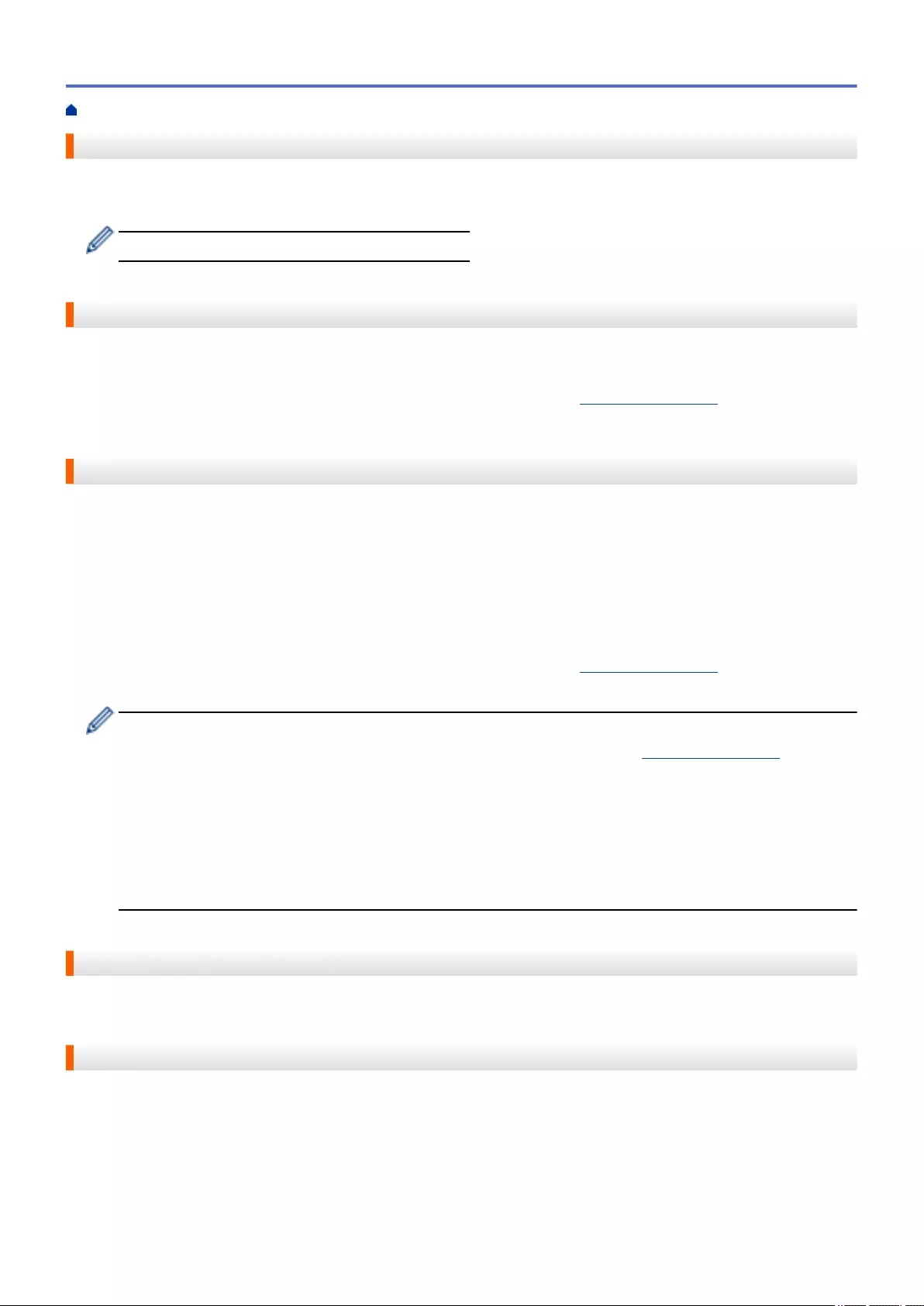
BOOTP
The Bootstrap Protocol (BOOTP) is a network protocol used by a network client to obtain an IP Address from a
configuration server.
To use BOOTP, contact your network administrator.
BRAdmin Light (Windows)
BRAdmin Light is a utility for the initial setup of Brother network-connected devices. This utility can search for
Brother products on your network, view the status and configure the basic network settings, such as IP address.
Go to your model's Downloads page on the Brother Solutions Center at support.brother.com to download
BRAdmin Light.
BRAdmin Professional (Windows)
BRAdmin Professional is a utility for more advanced management of network-connected Brother devices. This
utility can search for Brother products on your network and view the device status from an easy-to-read Windows
Explorer-style screen that changes color to identify the status of each device. You can configure network and
device settings, and update device firmware from a Windows computer on your LAN. BRAdmin Professional can
also log activity of Brother devices on your network and export the log data in an HTML, CSV, TXT, or SQL
format. For users who want to monitor locally-connected machines, install the Print Auditor Client software on the
client computer. This utility allows you to use BRAdmin Professional to monitor machines that are connected to a
client computer via the USB interface.
Go to your model's Downloads page on the Brother Solutions Center at support.brother.com to download the
software.
• This utility is available only for Windows.
• Go to your model's Downloads page on the Brother Solutions Center at support.brother.com to
download the latest version of Brother's BRAdmin Professional utility.
• Node name: The node name appears in the current BRAdmin Professional window. The default node
name is "BRNxxxxxxxxxxxx" for a wired network or "BRWxxxxxxxxxxxx" for a wireless network (where
"xxxxxxxxxxxx" is your machine's MAC Address / Ethernet address).
• If you are using Windows Firewall, or the firewall function of an anti-spyware or antivirus application,
temporarily disable them. When you are sure you can print, configure the software settings following the
instructions.
Broadcasting
The ability to send the same fax message to more than one location.
BRPrint Auditor (Windows)
Brother's BRPrint Auditor software brings the monitoring power of Brother network management tools to locally-
connected machines. This utility allows a client computer to collect usage and status information from your
Brother machine connected via the parallel or USB interface. The BRPrint Auditor can then pass this information
to another computer running BRAdmin Professional on the network. This allows the administrator to check items,
such as page counts, toner and drum status, and the firmware version. In addition to reporting to Brother network
management applications, this utility can email the usage and status information directly to a predefined email
address in a CSV or XML file format (SMTP Mail support required). The BRPrint Auditor utility also supports
email notification for reporting warning and error conditions.
Home > Glossary
686
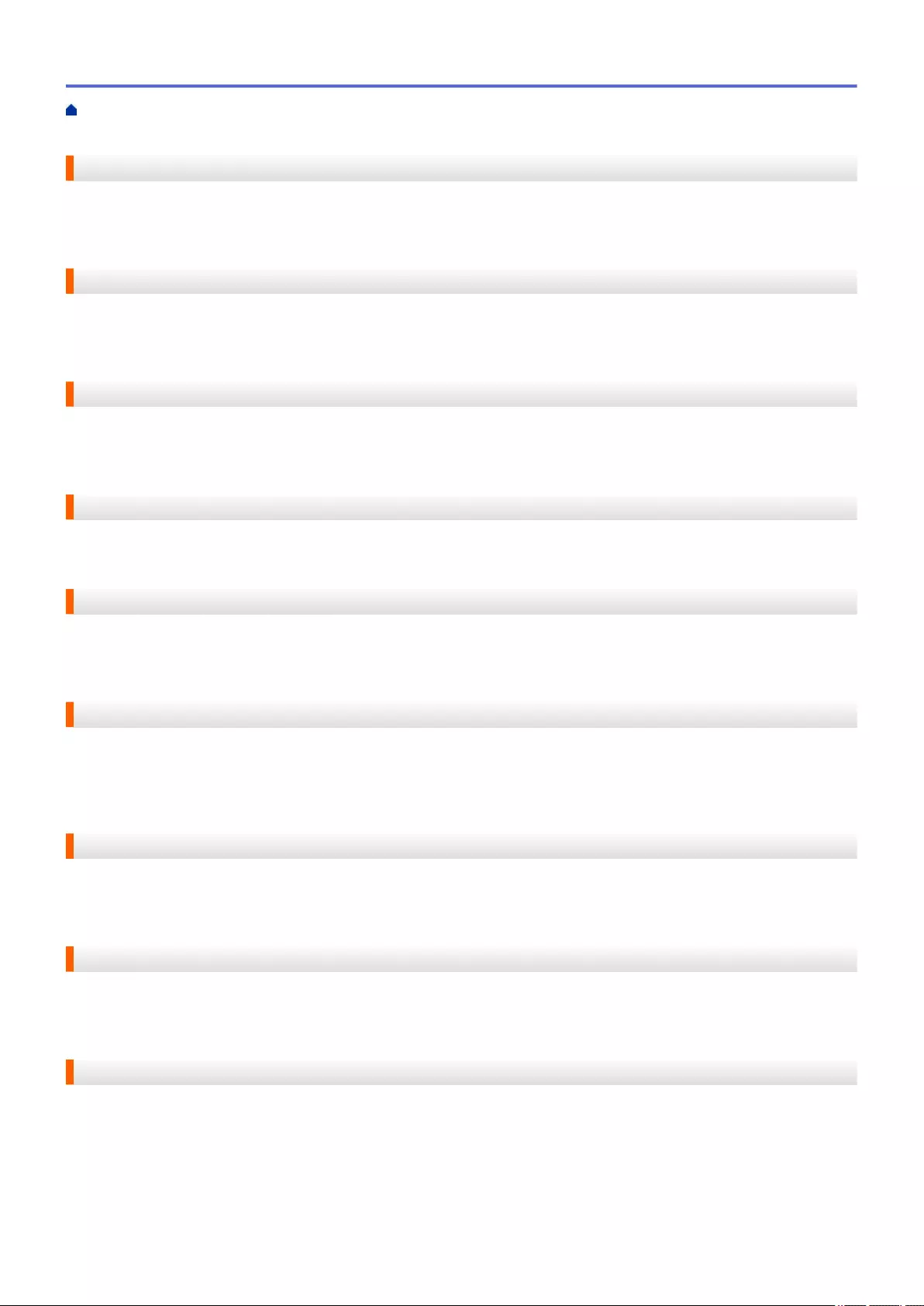
CA
A Certificate Authority (CA) is an entity that issues digital certificates (especially X.509 certificates) and vouches
for the binding between the data items in a certificate.
CA Certificate
A CA Certificate is the certification that identifies the CA itself and owns its private key. A CA Certificate verifies a
certificate issued by the CA.
Caller ID
A service purchased from the telephone company that lets you see the number (or name) of the party calling
you.
Cancel Job
Cancels a programmed print job and clears it from the machine’s memory.
Certificate
A Certificate is the information that binds together a public key with an identity. The certificate can be used to
verify that a public key belongs to an individual. The format is defined by the X.509 standard.
Channels
Wireless networks use channels. Each wireless channel is on a different frequency. There are up to 14 different
channels that can be used when using a wireless network. However, in many countries the number of channels
available is restricted.
CIFS
The Common Internet File System (CIFS) is the standard way that computer users share files and printers in
Windows.
CNG Tones
The special tones (beeps) sent by fax machines during automatic transmission to tell the receiving machine that
a fax machine is calling.
Coding Method
Method of coding the information contained in the document. All fax machines must use a minimum standard of
Modified Huffman (MH). Your machine is capable of greater compression methods, Modified Read (MR),
Modified Modified Read (MMR) and JBIG, if the receiving machine has the same capability.
Home > Glossary
687
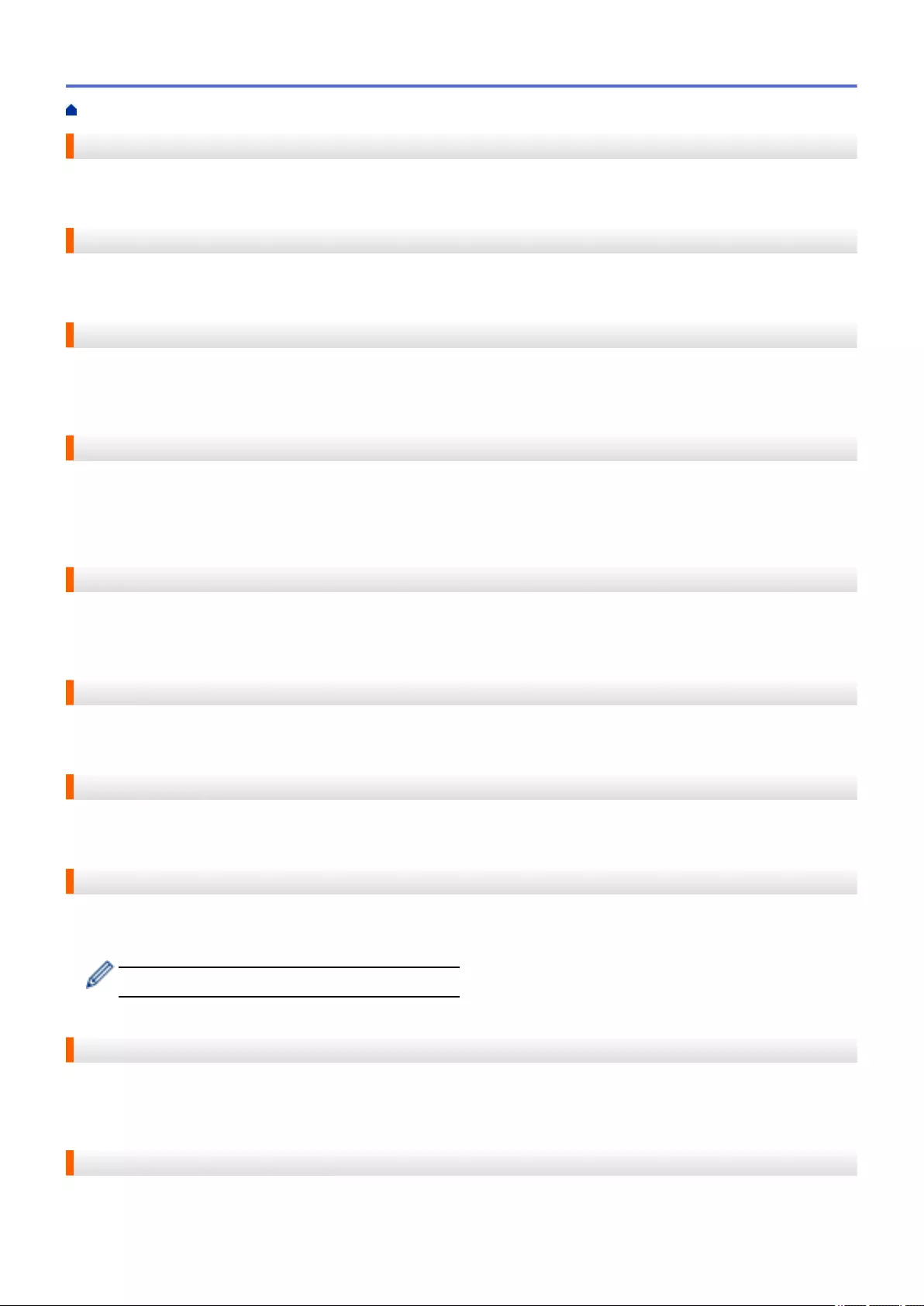
Communication Error (or Comm. Error)
An error during fax sending or receiving, usually caused by line noise or static.
Compatibility Group
The ability of one fax unit to communicate with another. Compatibility is assured between ITU-T Groups.
Contrast
Setting to compensate for dark or light documents, by making faxes or copies of dark documents lighter and light
documents darker.
CSR
A Certificate Signing Request (CSR) is a message sent from an applicant to a Certificate Authority (CA) to apply
for issue of a certificate. The CSR contains information identifying the applicant, the public key generated by the
applicant and the digital signature of the applicant.
Custom Raw Port
Custom raw port is a commonly used printing protocol on a TCP/IP network that enables interactive data
transmission. Default is Port 9100.
Delayed Fax
Sends your fax at a specified later time that day.
Density
Changing the Density makes the whole image lighter or darker.
DHCP
The Dynamic Host Configuration Protocol (DHCP) is a network protocol that is used to configure network devices
so that they can communicate on an IP Network.
To use DHCP, contact your network administrator.
Digital Signature
A Digital Signature is a value computed with a cryptographic algorithm and appended to a data object in such a
way that any recipient of the data can use the signature to verify the data's origin and integrity.
Distinctive Ring
This feature is available only in the USA and Canada.
Home > Glossary
688
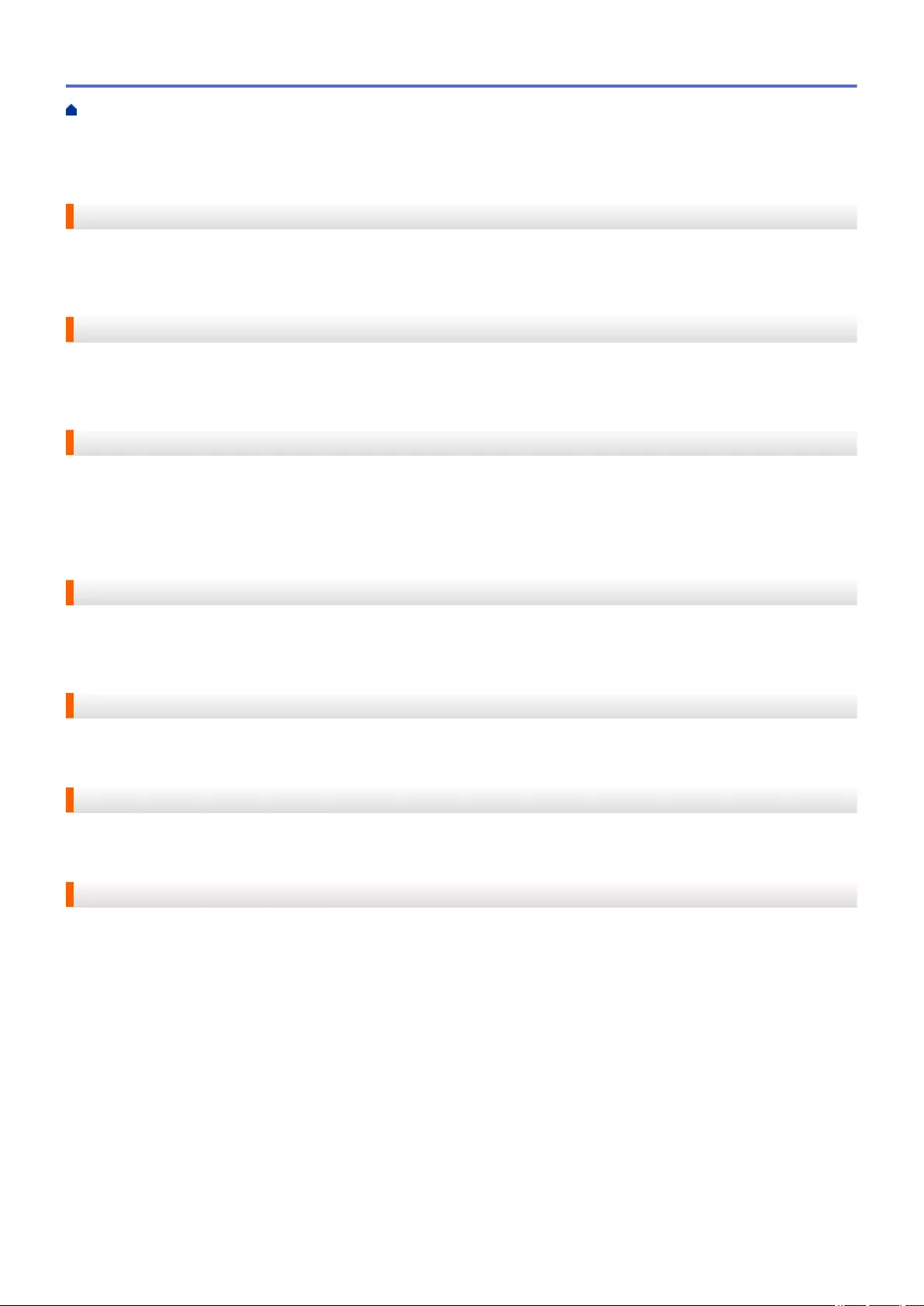
A subscriber service purchased from the telephone company that gives you another telephone number on an
existing telephone line. The Brother machine uses the new number to simulate a dedicated fax line.
DNS Client
The Brother print server supports the Domain Name System (DNS) client feature. This feature allows the print
server to communicate with other devices using its DNS name.
DNS Server
The Domain Name System (DNS) is a technology to manage the names of web sites and internet domains. A
DNS server allows your computer to find its IP address automatically.
Driver Deployment Wizard
Brother's Installation CD-ROM includes the Windows printer driver and Brother network port driver (LPR and
NetBIOS). If an administrator installs the printer driver and port driver using this application, the administrator can
save the file to the file server or send the file by email to users. Then, each user just clicks that file to have the
printer driver, port driver, IP address, etc. automatically copied to their computer.
Dual Access
Your machine can scan outgoing faxes or scheduled jobs into memory at the same time it is sending a fax or
receiving or printing an incoming fax.
Easy Receive
Enables your machine to respond to CNG tones if you interrupt a fax call by answering it.
ECM (Error Correction Mode)
Detects errors during fax transmission and resends the pages of the fax that had an error.
Encryption
Most wireless networks use some kind of security settings. These security settings define the authentication (how
the device identifies itself to the network) and encryption (how the data is encrypted as it is sent on the network).
If you do not correctly specify these options when you are configuring your Brother wireless machine, it will not
be able to connect to the wireless network. Therefore, care must be taken when configuring these options.
Encryption Methods for a Personal Wireless Network
A personal wireless network is a small network (such as a home wireless network) without IEEE 802.1x
support.
• None
No encryption method is used.
• WEP
When using Wired Equivalent Privacy (WEP) the data is transmitted and received with a secured key.
• TKIP
Home > Glossary
689
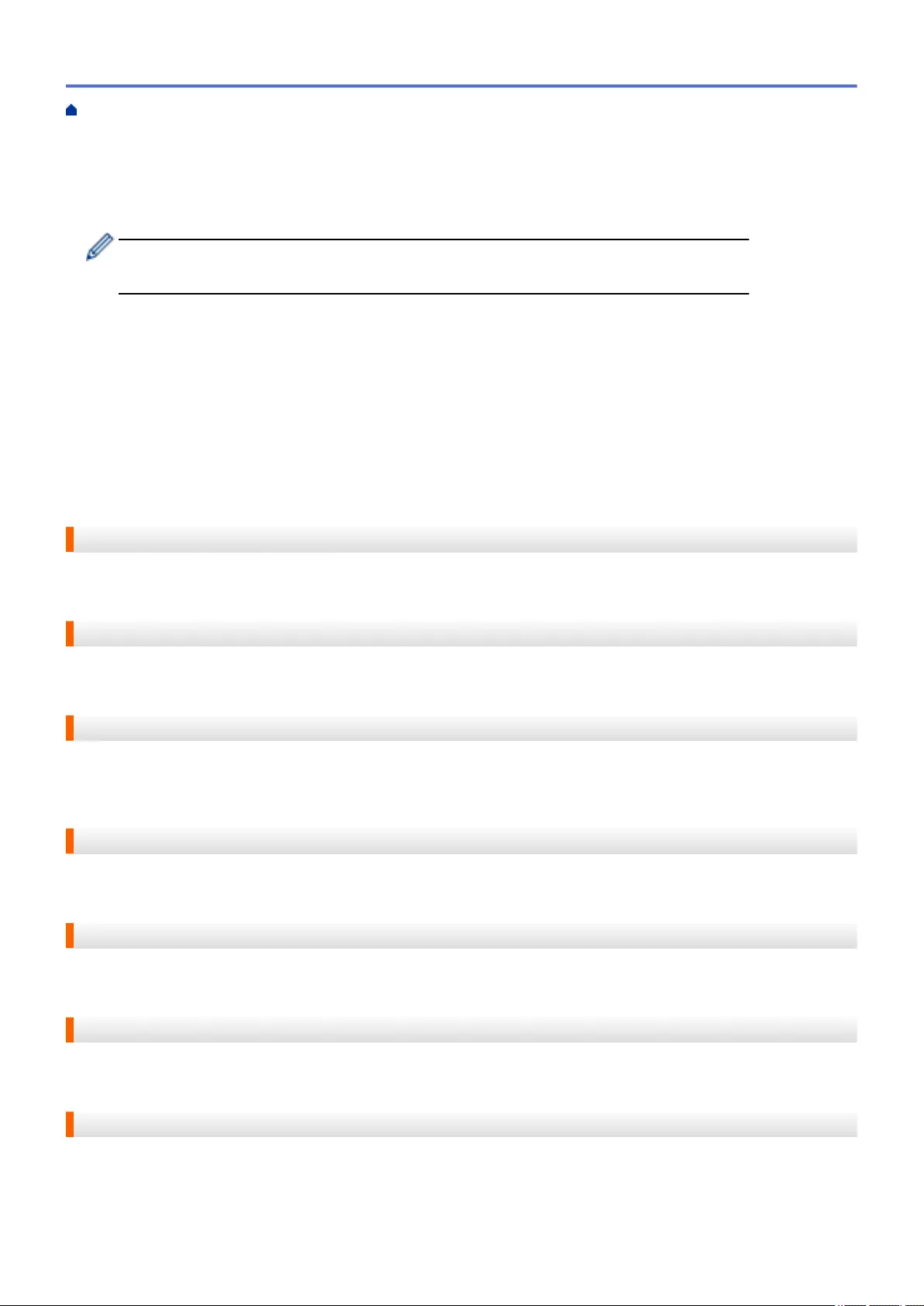
Temporal Key Integrity Protocol (TKIP) provides per-packet key mixing a message integrity check and
rekeying mechanism.
• AES
Advanced Encryption Standard (AES) provides stronger data protection using a symmetric-key encryption.
• IEEE 802.11n does not support either WEP or TKIP as an encryption method.
• To connect to your wireless network using IEEE 802.11n, we recommend selecting AES.
Encryption Methods for an Enterprise Wireless Network
An enterprise wireless network is a large network, for example using your machine in a business enterprise
wireless network, with IEEE 802.1x support. If you configure your machine in an IEEE 802.1x supported
wireless network, you can use the following encryption methods.
• TKIP
• AES
• CKIP
The original key Integrity Protocol for LEAP by Cisco Systems, Inc.
Extension Telephone
A telephone on the fax number that is plugged into a separate telephone wall jack.
External Telephone
A telephone that is plugged into the EXT jack of your machine.
F/T Ring Time
The length of time that the Brother machine pseudo/double-rings (when the Receive Mode setting is Fax/Tel) to
notify you to pick up a voice call that it answered.
Fax Forwarding
Sends a fax received into the memory to another pre-programmed fax number.
Fax Journal
Lists information about the last 200 incoming and outgoing faxes. TX means Transmit. RX means Receive.
Fax Receive Code (Fax/Tel Mode Only)
Press this code (*51) when you answer a fax call on an extension or external telephone.
Fax Storage
You can store faxes in the memory.
Home > Glossary
690
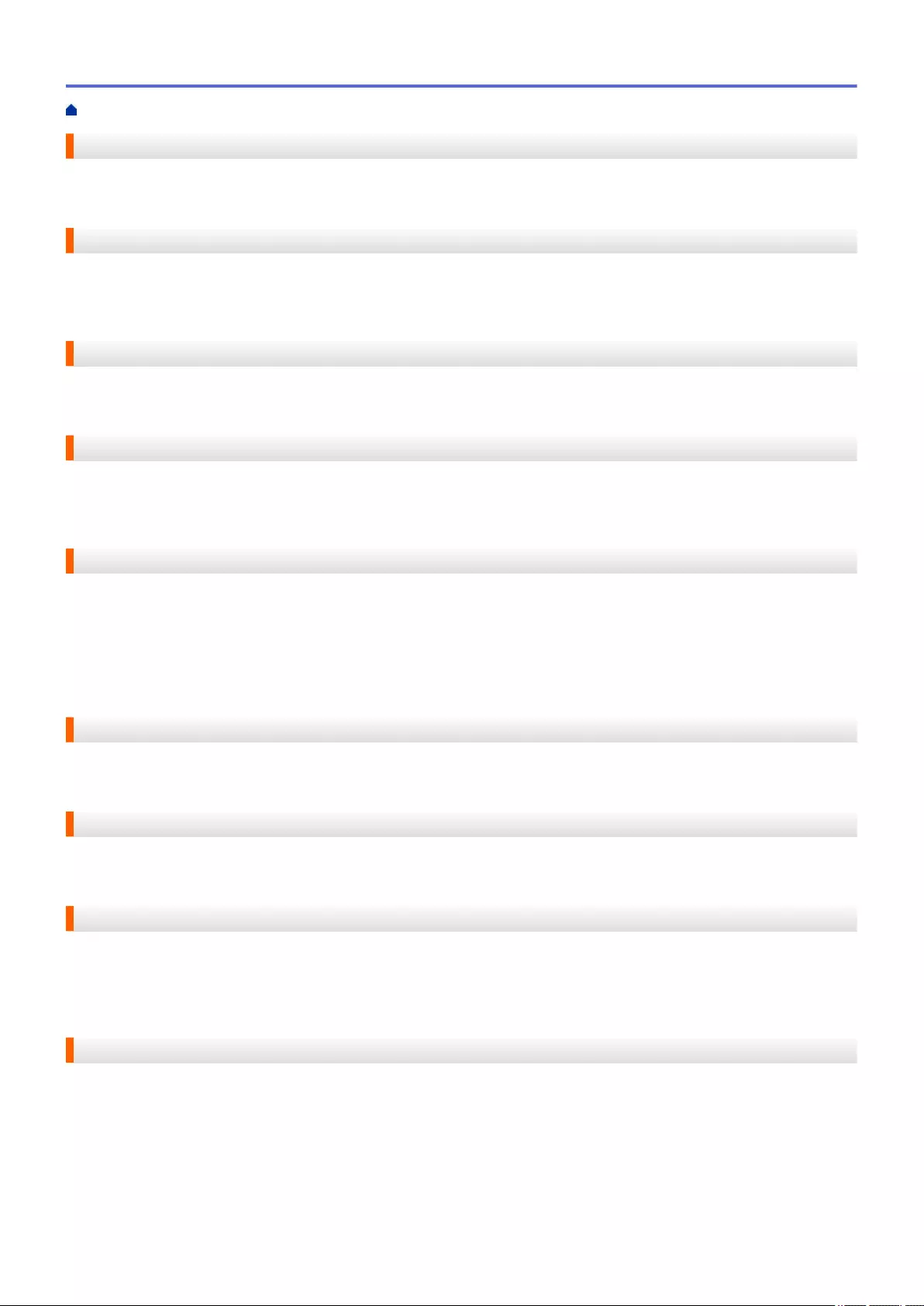
Fax Tones
The signals sent by sending and receiving fax machines while communicating information.
Fax/Tel
You can receive faxes and telephone calls. Do not use this mode if you are using a telephone answering device
(TAD).
Fine Resolution
Resolution is 203 × 196 dpi. It is used for small print and graphs.
FTP
The File Transfer Protocol (FTP) allows the Brother machine to scan black and white or color documents directly
to an FTP server located locally on your network or on the Internet.
Gateway
A gateway is a network point that acts as an entrance to another network and sends data transmitted via the
network to an exact destination. The router knows where to direct data that arrives at the gateway. If a
destination is located on an external network, the router transmits data to the external network. If your network
communicates with other networks, you may need to configure the Gateway IP address. If you do not know the
Gateway IP address, then contact your Network Administrator.
Gray Scale
The shades of gray available for copying and faxing photographs.
Group Number
A combination of Address Book numbers that are stored in Address Book for Broadcasting.
HTTP (Web Server)
Hypertext Transfer Protocol (HTTP) is used to transmit the data between a web server and a web browser. The
Brother print server is equipped with a built-in web server that allows you to monitor its status or change some of
its configuration settings using a web browser.
HTTPS
HTTPS (HTTP over SSL/TLS) is the version of the Hypertext Transfer Protocol (HTTP) that uses SSL/TLS so
that web content is transferred and displayed securely.
Home > Glossary
691
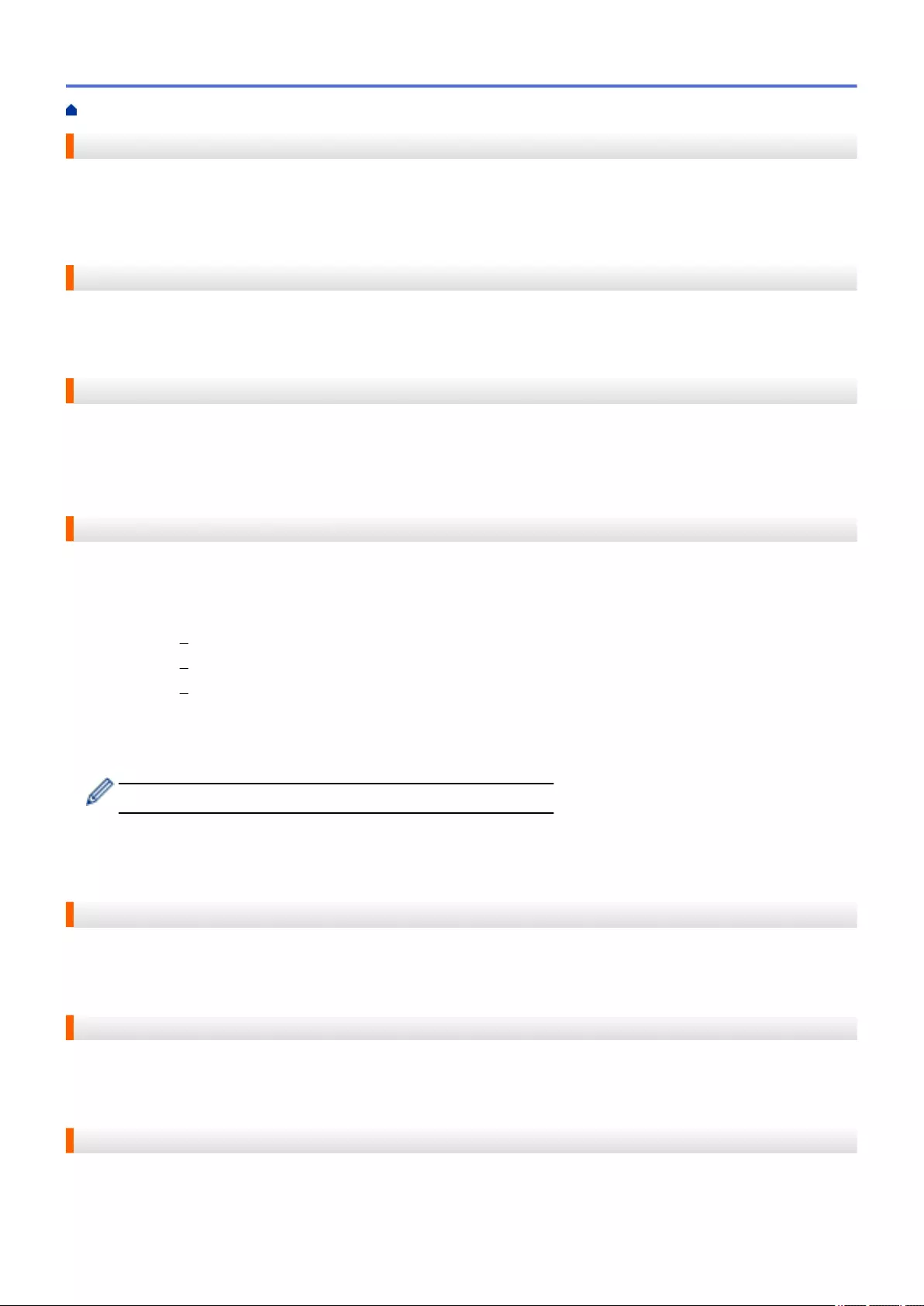
IEEE 802.1x
IEEE 802.1x is a networking authentication standard used to connect to a wired or wireless LAN. It restricts
connections which are not authentic and only users authenticated by a central authority are allowed to be
connected.
Infrastructure Mode
The mode of operation in a wireless network, in which all devices (machines and computers) are connected via
an access point/router.
Internet Fax
Internet Fax (I-Fax) allows you to send and receive fax documents using the Internet as the transport
mechanism.
Before using this feature, configure the necessary machine's settings using the machine's control panel.
IP Address
An Internet Protocol (IP) address is a series of numbers that identifies each device connected to a network. An
IP address consists of four numbers separated by dots. Each number is between 0 and 255.
Example: In a small network, you would normally change the final number.
192.168.1.1
192.168.1.2
192.168.1.3
How the IP address is assigned to your print server:
If you have a DHCP/BOOTP/RARP server in your network, the print server will automatically obtain its IP
address from that server.
On smaller networks, the DHCP server may also be the Router.
If you do not have a DHCP/BOOTP/RARP server, the Automatic Private IP Addressing (APIPA) protocol will
automatically assign an IP address from the range 169.254.1.0 to 169.254.254.255.
IPP
The Internet Printing Protocol (IPP Version 1.0) allows you to print documents directly to any accessible machine
via the Internet.
IPPS
IPPS (Internet Printing Protocol) is the printing protocol that uses SSL. IPPS is used to send and receive printing
data and manage printing devices.
IPsec
IPsec is an optional security feature of the IP protocol that provides authentication and encryption services.
Home > Glossary
692
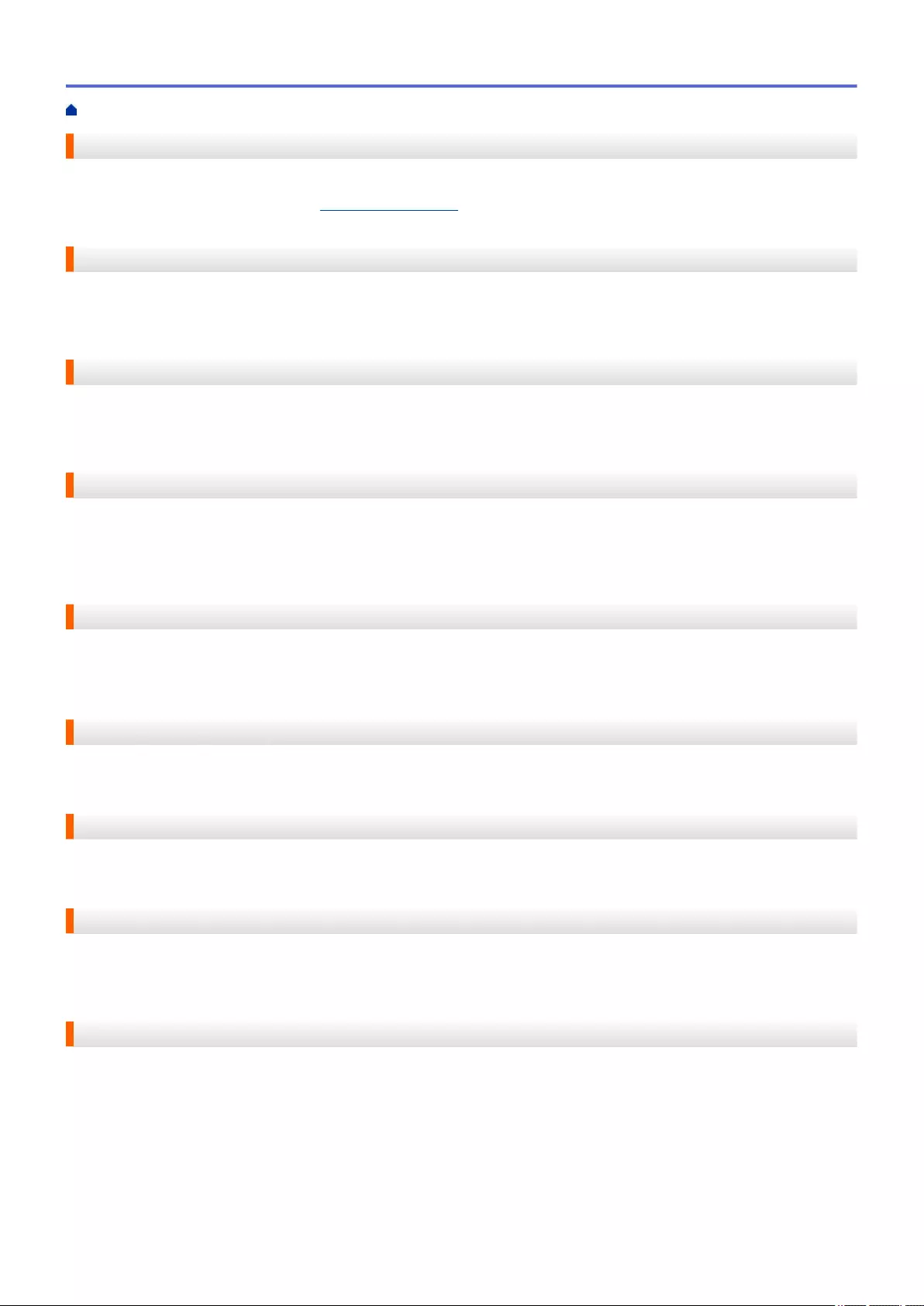
IPv6
IPv6 is the next generation Internet protocol. For more information on the IPv6 protocol, go to your model's page
on the Brother Solutions Center at support.brother.com.
Journal Period
The pre-programmed time period between automatically printed Fax Journal Reports. You can print the Fax
Journal on demand without interrupting the cycle.
LEAP
Lightweight Extensible Authentication Protocol (LEAP) is a proprietary EAP method developed by Cisco
Systems, Inc. that uses a user ID and password for authentication. LEAP is used in wireless networks.
LLMNR
The Link-Local Multicast Name Resolution (LLMNR) protocol resolves the names of neighboring computers, if
the network does not have a Domain Name System (DNS) server. The LLMNR Responder feature works in both
the IPv4 or IPv6 environment when using Windows Vista or greater.
LPD
Line Printer Daemon (LPD or LPR) protocol is a commonly-used printing protocol on a TCP/IP network, mainly
for UNIX®-based operating systems.
LPR
Line Printer Daemon (LPR or LPD) protocol is a commonly-used printing protocol on a TCP/IP network.
MAC Address
The MAC Address (Ethernet Address) is a unique number assigned for the machine's network interface.
Manual Fax
When you press Hook to hear the receiving fax machine answer before you press Fax Start to begin
transmission.
MDN
The Message Disposition Notification (MDN) field of the control panel menu requests the status of the Internet
Fax/-mail message after delivery through the Simple Mail Transfer Protocol (SMTP) transport system.
Once the message has arrived at the receiver, this data is used when the machine or user reads or prints the
received Internet Fax or Email.
For example, if the message is opened for reading or is printed, the receiver sends back a notification to the
original sending machine or user.
Home > Glossary
693
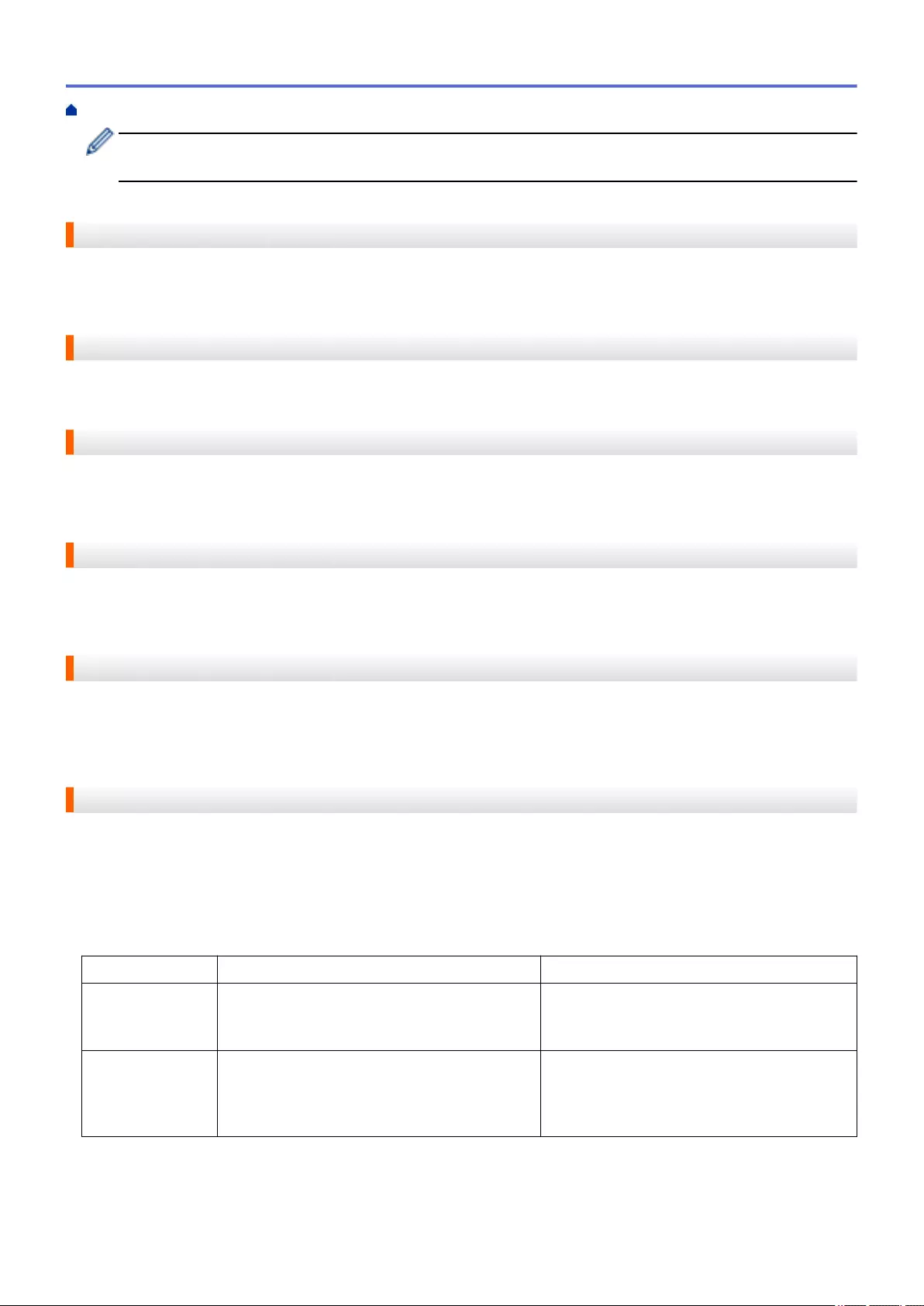
The receiver must support the MDN field to be able to send a notification report, otherwise the request will
be ignored.
mDNS
Multicase DNS (mDNS) allows the Brother print server to configure itself to work in an OS X Simple Network
Configuration system automatically.
Memory Receive
Receives faxes into the machine's memory when the machine is out of paper.
NetBIOS Name Resolution
Network Basic Input/Output System (NetBIOS) name resolution enables you to obtain the IP address of the other
device using its NetBIOS name during the network connection.
Network Configuration Report
The Network Configuration Report prints a report listing the current network configuration, including the network
print server settings.
Network Connection Repair Tool
The Network Connection Repair Tool is a program Brother provides to correct the driver's settings so that they
match the machine's network settings. To use the Network Connection Repair Tool, ask your network
administrator.
Network Key
The Network Key is a password, which is used when the data is encrypted or decrypted. The Network Key is also
described as the Password, Security Key, or Encryption Key. The table shows the number of characters of the
key to use for each setting.
Open system/Shared key with WEP
This key is a 64-bit or a 128-bit value that must be entered in an ASCII or hexadecimal format.
ASCII Hexadecimal
64 (40) bit Uses five text characters.
For example, "WSLAN" (case-sensitive).
Uses 10 digits of hexadecimal data.
For example, "71f2234aba" (not case-
sensitive).
128 (104) bit Uses 13 text characters.
For example, "Wirelesscomms" (case-
sensitive).
Uses 26 digits of hexadecimal data.
For example,
"71f2234ab56cd709e5412aa2ba" (not case-
sensitive).
WPA-PSK/WPA2-PSK and TKIP or AES
Uses a Pre-Shared Key (PSK) that is eight or more characters in length, up to a maximum of 63 characters.
Home > Glossary
694
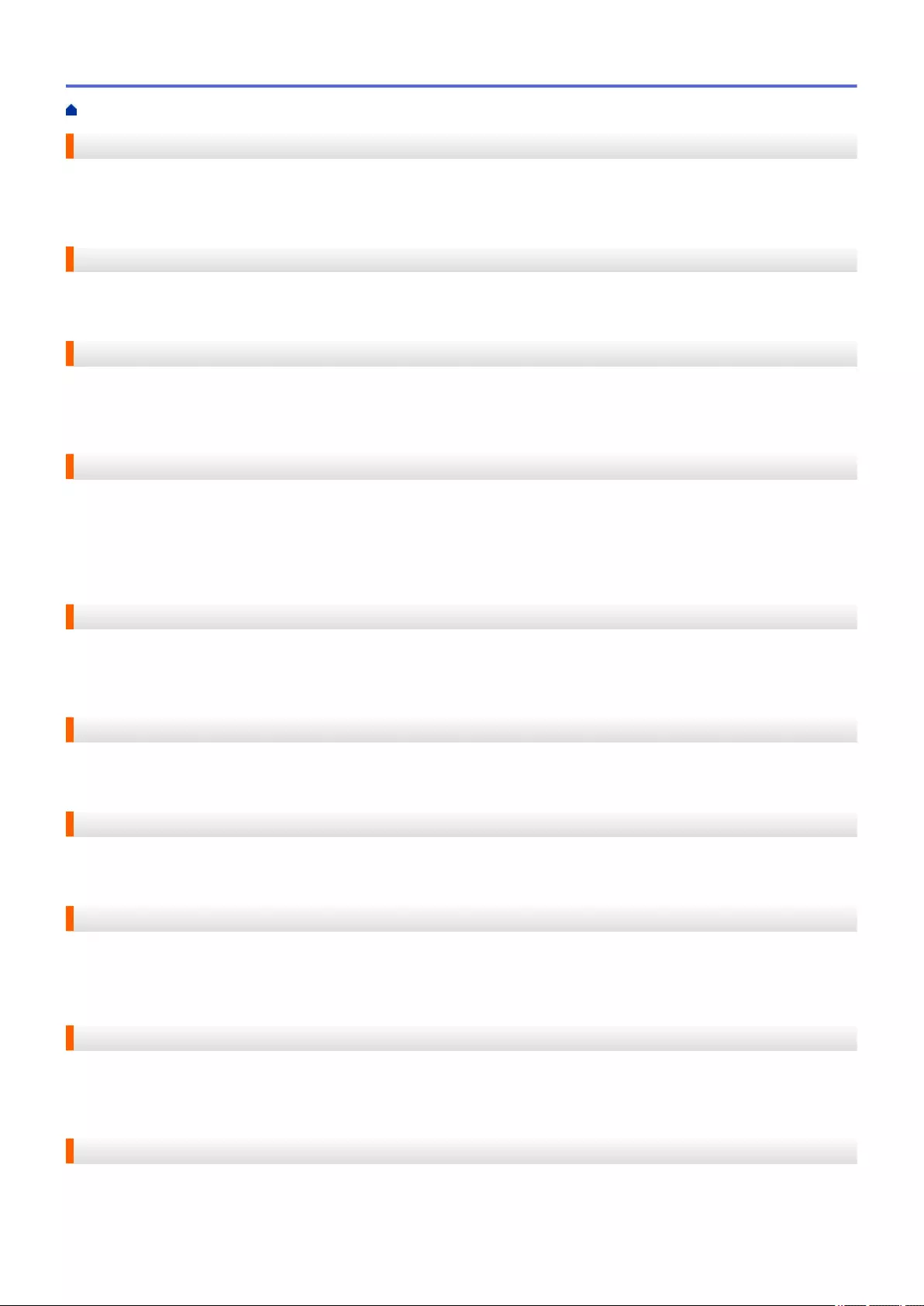
Network PC-FAX
Use Network PC-FAX to send a file from your computer as a fax. Windows users can also receive faxes via PC-
FAX.
Network Remote Setup
The Remote Setup software allows you to configure network settings from either a Windows or Mac computer.
Network Shared Printing
Network Shared Printing is a type of printing in a network shared environment. In a network shared environment,
each computer sends data via a server or print server.
Node Name
The Node Name is a machine name on the network. This name is often referred to as a NetBIOS name; it will be
the name that is registered by the WINS server on your network. Brother recommends the name
"BRNxxxxxxxxxxxx" for a wired network or "BRWxxxxxxxxxxxx" for a wireless network (where "xxxxxxxxxxxx" is
your machine's MAC address / ethernet address.)
Open System
Open System is one of the network authentication methods. Under open system authentication, any wireless
devices are allowed to access the network without requiring a WEP key.
Out of Paper Reception
Receives faxes into the machine's memory when the machine is out of paper.
Overseas Mode
Makes temporary changes to the fax tones to accommodate noise and static on overseas telephone lines.
Paging
This feature is available only in the USA and Canada.
This feature enables your machine to call your cell phone or pager when a fax is received into its memory.
Pause
Allows you to place a delay in the dialing sequence while you are dialing or while you are storing Address Book
numbers. Press Pause on the LCD as many times as needed for longer pauses.
PEAP
Protected Extensible Authentication Protocol (PEAP) is a version of EAP method developed by Cisco Systems,
Inc., Microsoft Corporation and RSA Security. PEAP creates an encrypted Secure Sockets Layer (SSL)/
Home > Glossary
695
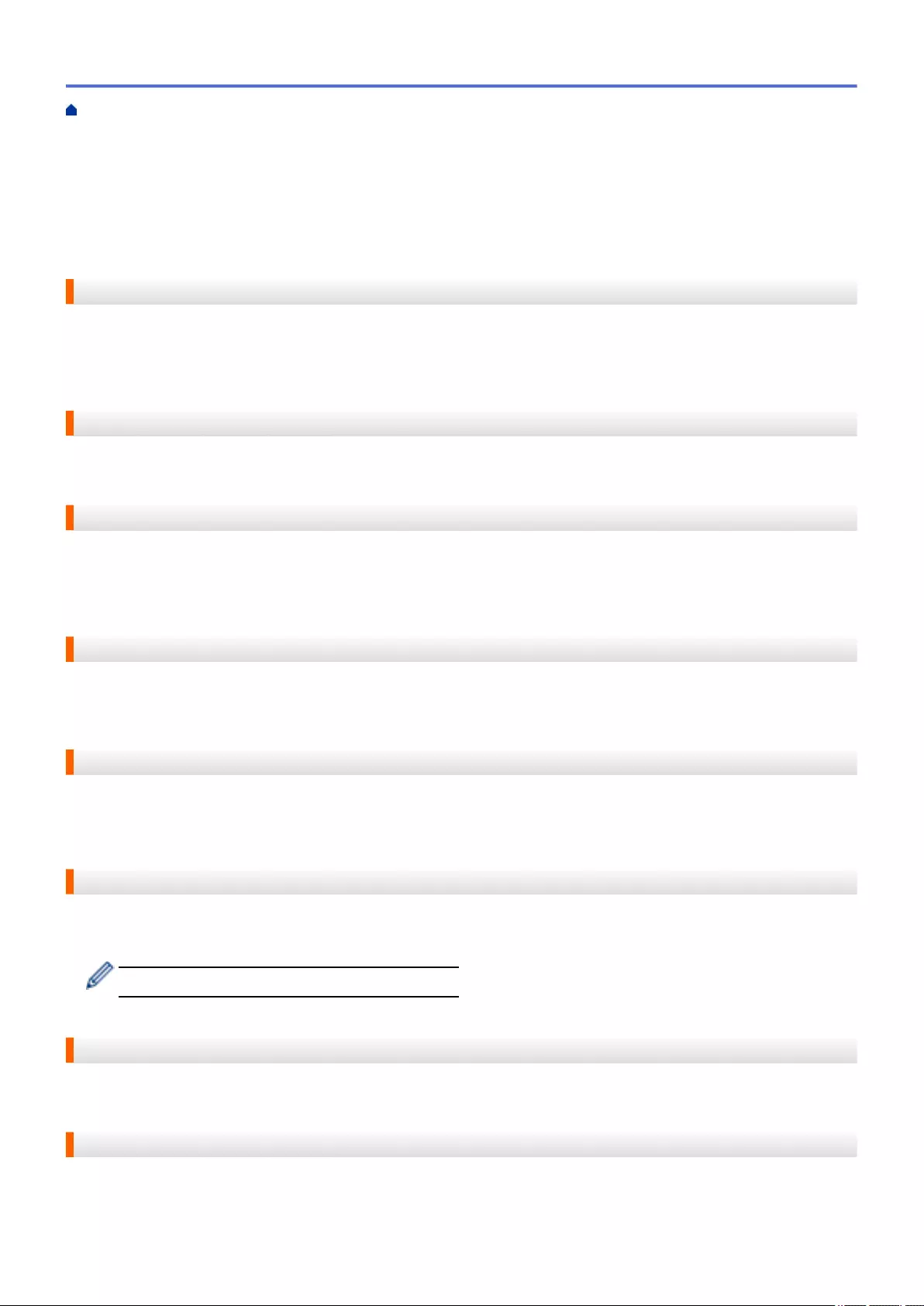
Transport Layer Security (TLS) tunnel between a client and an authentication server, for sending a user ID and
password. PEAP provides mutual authentication between the server and the client.
The Brother machine supports the following inner authentications:
• PEAP/MS-CHAPv2
• PEAP/GTC
Peer-to-Peer
Peer-to-Peer is a type of printing in a peer-to-peer environment. In a peer-to-peer environment, each computer
sends and receives data directly to and from each device. There is no central server controlling access or
machine sharing.
Photo resolution (B&W only)
A resolution setting that uses varying shades of gray for the best representation of photographs.
Protocols
Protocols are the standardized sets of rules for transmitting data on a network. Protocols allow users to gain
access to network-connected resources. The print server used on your Brother machine supports the
Transmission Control Protocol/Internet Protocol (TCP/IP) protocol.
Public Key Cryptosystem
A Public Key Cryptosystem is a modern branch of cryptography in which the algorithms employ a pair of keys (a
public key and a private key) and use a different component of the pair for different steps of the algorithm.
Pulse
This feature is not available in some countries.
A form of rotary dialing on a telephone line.
RARP
Reverse Address Resolution Protocol (RARP) finds the logical address for a machine that knows only its physical
address.
To use RARP, contact your network administrator.
Real Time Transmission
When memory is full, you can send faxes in real time.
Remaining Jobs
You can check which programmed fax jobs are waiting in the memory and cancel the jobs individually.
Home > Glossary
696

Remote Access Code
Your own four-digit code (– – –*) that allows you to call and access your machine from a remote location.
Remote Retrieval Access
The ability to access your machine remotely from a touch tone telephone.
Remote Setup
The Remote Setup program lets you configure many machine and network settings from a computer application.
When you start this application, the settings on your machine will be downloaded automatically to your computer
and displayed on your computer screen. If you change the settings, you can upload them directly to the machine.
Resolution
The number of vertical and horizontal lines per inch.
Ring Delay
The number of rings before the machine answers in Fax Only and Fax/Tel modes.
Ring Volume
Volume setting for the machine’s ring.
Scan to Email Server
The Scan to Email Server feature lets you scan a black and white or color document and send it directly to an
email address from the machine.
Scanning
The process of sending an electronic image of a paper document into your computer.
Search
An alphabetical electronic listing of stored Address Book and Group numbers.
Secure Function Lock 3.0
Secure Function Lock 3.0 increases security by restricting the use of functions.
Settings Tables
At-a-glance instructions that show all the settings and options that are available for setting up your machine.
Home > Glossary
697
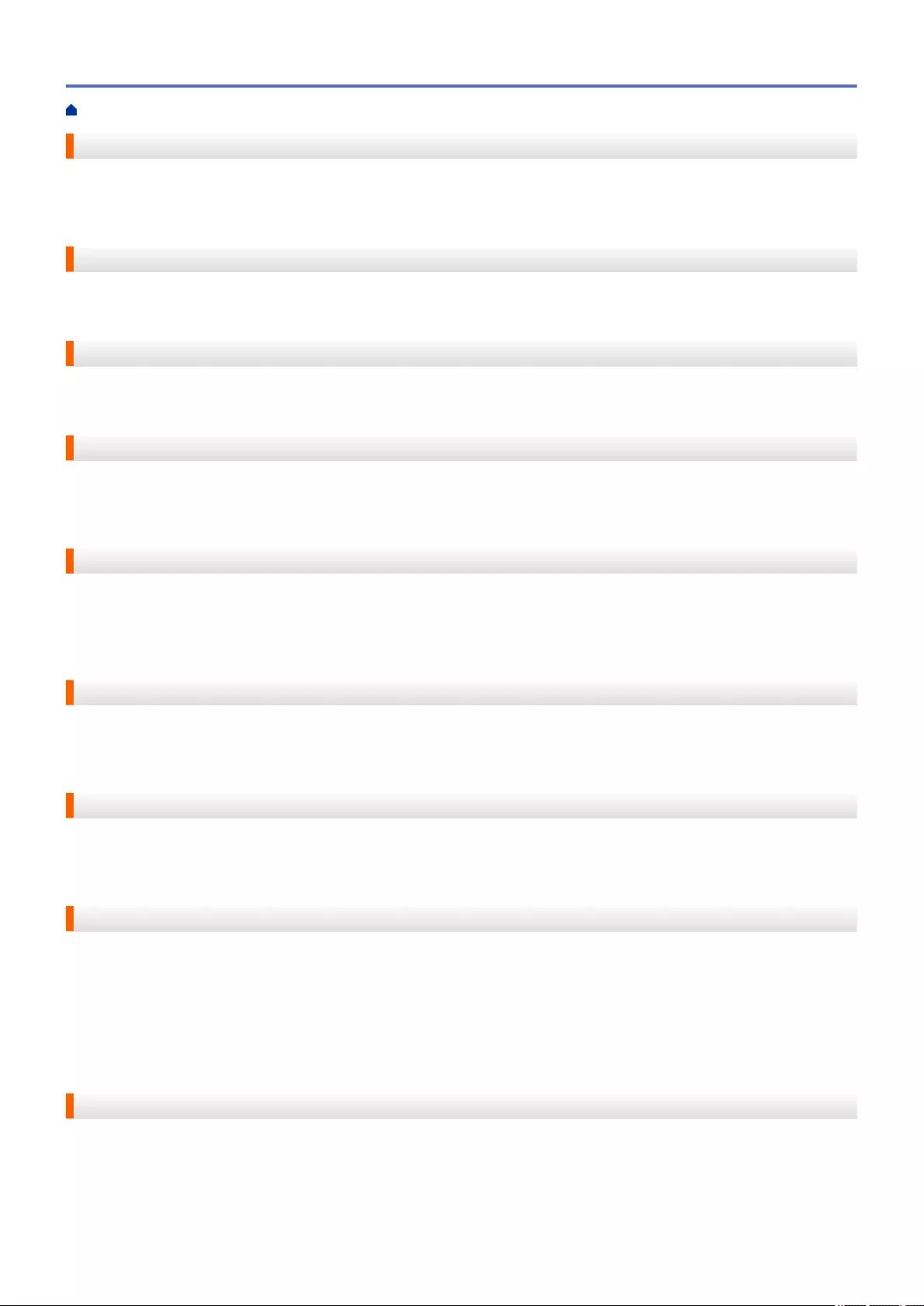
Shared Key Cryptosystem
A Shared Key Cryptosystem is a branch of cryptography involving algorithms that use the same key for two
different steps of the algorithm (such as encryption and decryption).
SMTP Client
Simple Mail Transfer Protocol (SMTP) client is used to send emails via the Internet or Intranet.
SMTP over SSL
SMTP over SSL feature enables sending encrypted email using SSL.
SMTP-AUTH
SMTP Authentication (SMTP-AUTH) expands SMTP (the Internet email sending protocol) to include an
authentication method that ensures the true identity of the sender is known.
SNMP
The Simple Network Management Protocol (SNMP) is used to manage network devices including computers,
routers and Brother network-ready machines. The Brother print server supports SNMPv1, SNMPv2c and
SNMPv3.
SNMPv3
Simple Network Management Protocol version 3 (SNMPv3) provides user authentication and data encryption to
manage network devices securely.
SNTP
The Simple Network Time Protocol (SNTP) is used to synchronize computer clocks on a TCP/IP network. You
can configure the SNTP settings using Web Based Management.
SSID
Each wireless network has its own unique network name and it is technically referred to as a Service Set
Identifier (SSID). The SSID is a 32-byte or less value and is assigned to the access point. The wireless network
devices you want to associate to the wireless network should match the access point. The access point and
wireless network devices regularly send wireless packets (referred to as beacons), which contain the SSID
information. When your wireless network device receives a beacon, you can identify the wireless network that is
close enough for the radio waves to reach your device.
SSL/TLS
Secure Socket Layer (SSL) or Transport Layer Security (TLS) is an effective method of protecting data that is
sent over a local or wide area network. SSL/TLS works by encrypting data, such as a print job, sent over a
network, so anyone trying to capture it will not be able to read it .
SSL/TLS can be configured on both wired and wireless networks and will work with other forms of security
including WPA keys and firewalls.
Home > Glossary
698
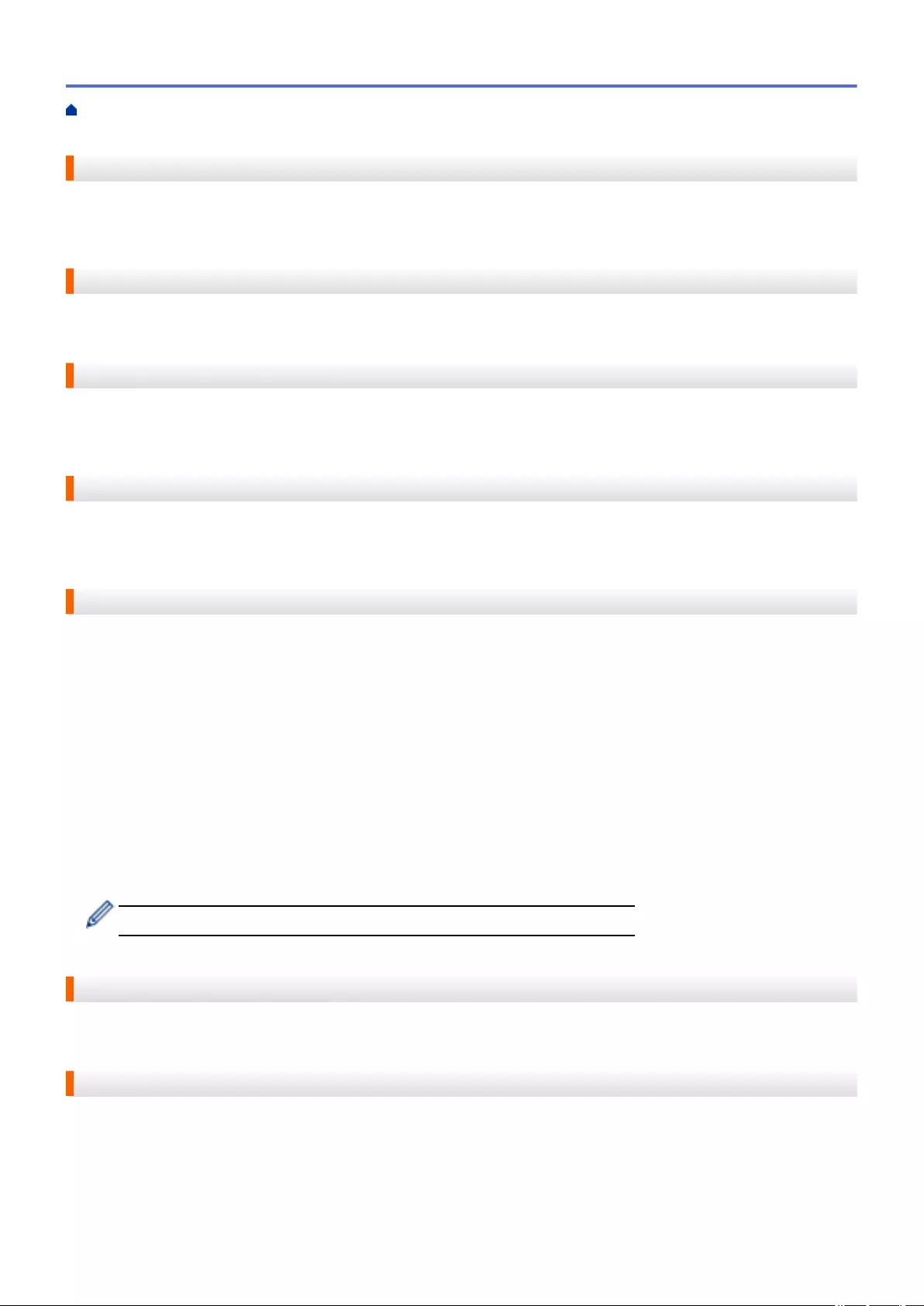
Standard resolution
203 × 98 dpi (black and white). 203 × 196 dpi (color). It is used for regular sized text and the quickest
transmission.
Station ID
The stored information that appears on the top of faxed pages. It includes the sender’s name and fax number.
Status Monitor
The Status Monitor utility is a configurable utility to monitor the status of one or more devices, allowing you to get
immediate notification when there is a problem, for example, when the machine runs out of paper or jams.
Store Print Log to Network
The Store Print Log to Network feature allows you to save the print log file from your Brother machine to a
network server using CIFS.
Subnet Mask
A subnet mask allows you to identify which part of an IP address is used as the network address and which part
is used as the host address.
In the following example, the last segment of the IP address is known as the host address and the first three
segments are the network address.
Example: Computer 1 can talk to Computer 2
• Computer 1
IP Address: 192.168.1.2
Subnet Mask: 255.255.255.0
• Computer 2
IP Address: 192.168.1.3
Subnet Mask: 255.255.255.0
0 denotes that there is no limit to communication at this part of the address.
Super Fine resolution (B&W only)
203 × 392 dpi. Best for very small print and line art.
TAD (Telephone Answering Device)
You can connect an external device or answering machine to the EXT. jack of your machine.
Home > Glossary
699
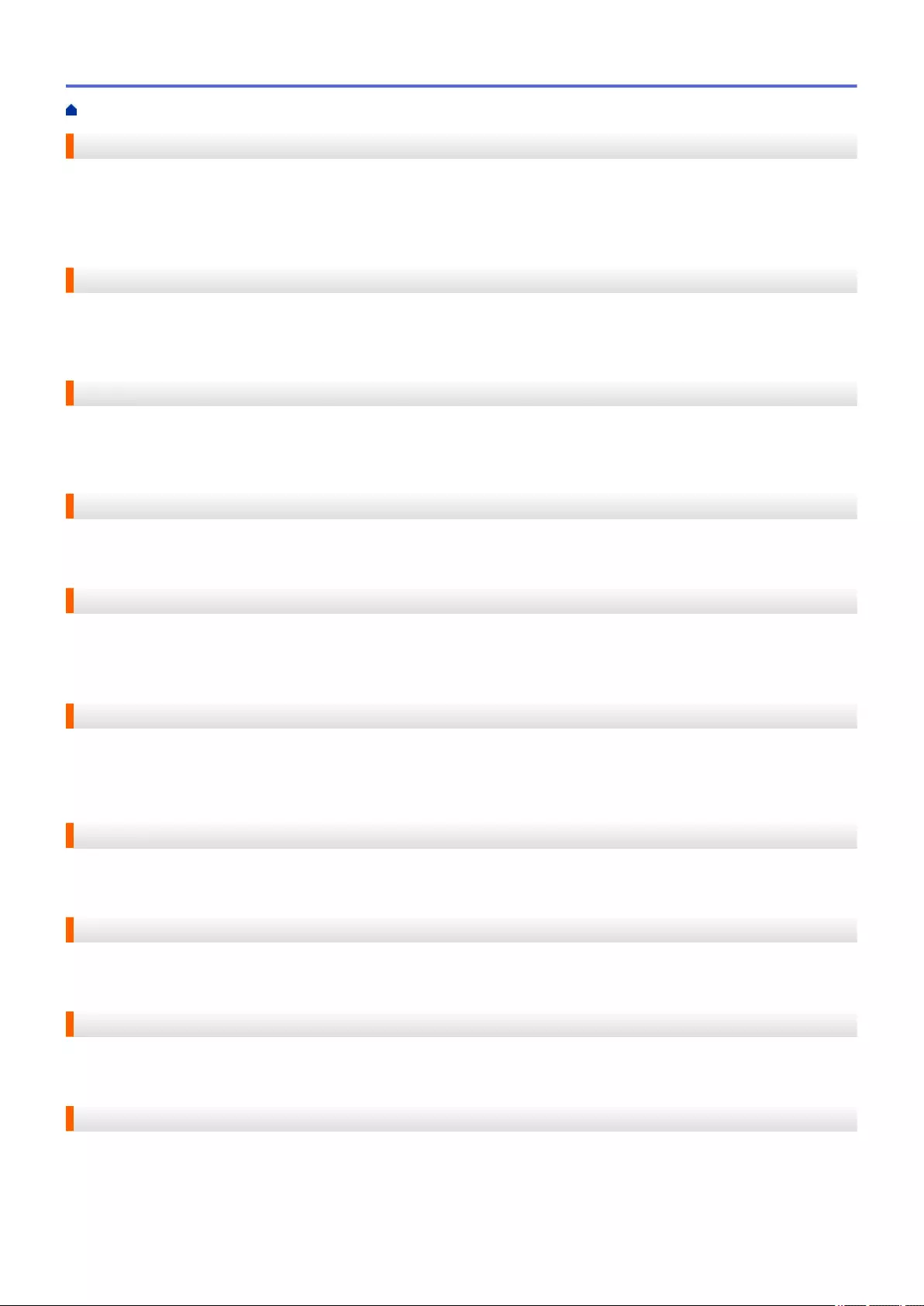
TCP/IP
Transmission Control Protocol/Internet Protocol (TCP/IP) is the most popular set of protocols used for
communication, such as Internet and email. This protocol can be used in almost all operating systems, including
Windows, Windows Server, OS X and Linux®.
Telephone Answer Code (Fax/Tel Mode only)
When the machine answers a voice call, it pseudo/double-rings. You can pick up at an extension telephone by
pressing this code (#51).
TELNET
The TELNET protocol allows you to control the remote network devices on a TCP/IP network from your
computer.
Temporary Settings
You can choose certain options for each fax transmission and copy without changing the default settings.
TKIP
Temporal Key Integrity Protocol (TKIP) is one of the encryption methods adopted by WPA™ to be used in a
wireless network. TKIP provides per-packet key mixing, a message integrity check and rekeying mechanism.
Tone
This feature is not available in some countries.
A form of dialing on the telephone line used for Touch Tone telephones.
Transmission
The process of sending faxes over the telephone lines from your machine to the receiving fax machine.
Transmission Verification Report
A report for each transmission, that shows its date, time and number.
User Settings List
A printed report that shows the current settings of the machine.
Vertical Pairing
Vertical Pairing is a technology for Windows that allows your Vertical Pairing-supported wireless machine to
connect to your Infrastructure network using the PIN Method of Wi-Fi Protected Setup™ and the Web Services
feature. It also enables printer driver installation from the printer icon in the Add a device screen.
Home > Glossary
700
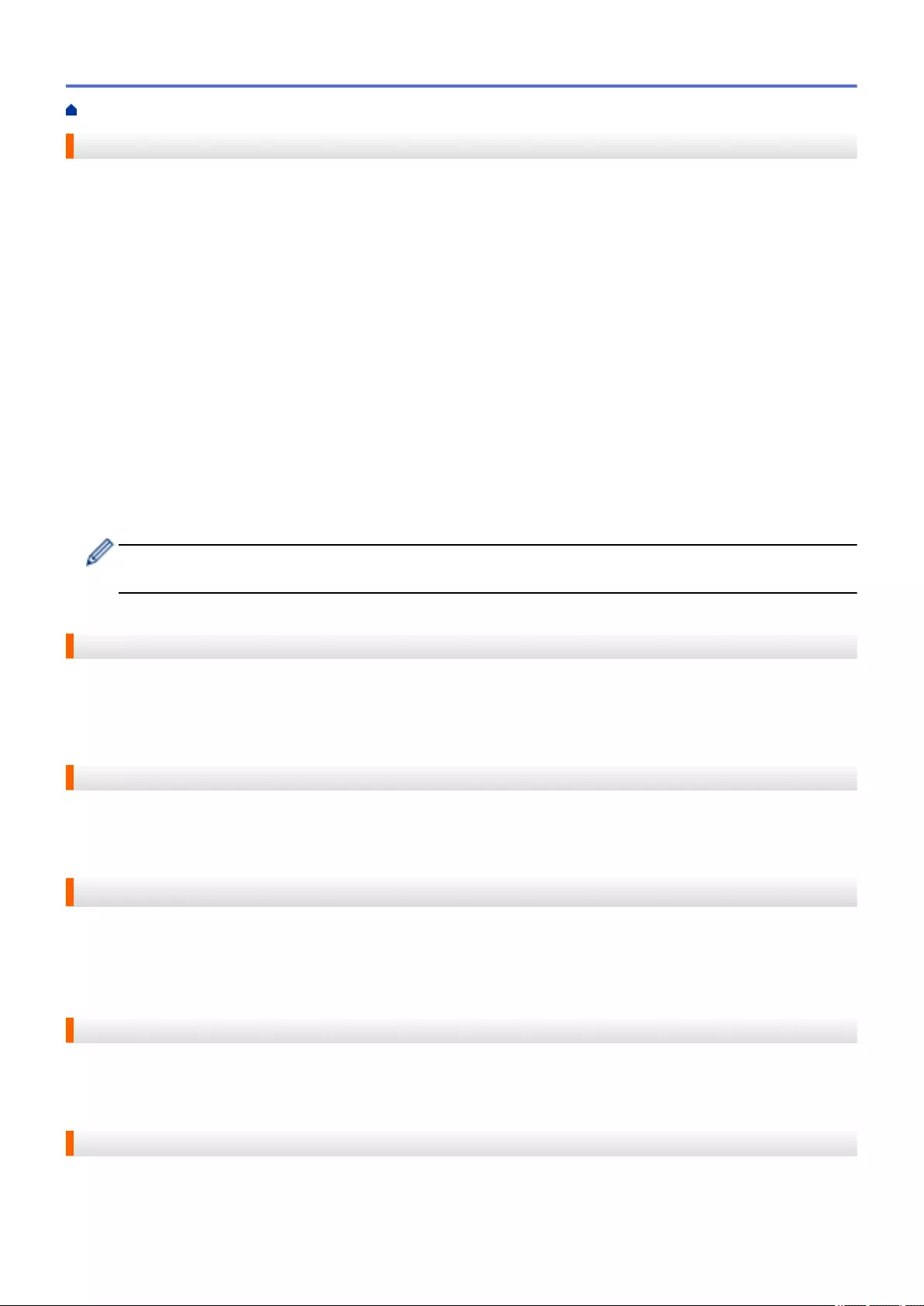
Web Based Management
A standard Web Browser can be used to manage your machine using the Hyper Text Transfer Protocol (HTTP)
or Hyper Text Transfer Protocol over Secure Socket Layer (HTTPS). You can perform the function listed or get
the following information from a machine on your network using a web browser:
• Machine status information
• Change Fax configuration items, such as General Setup, Address Book settings and Remote Fax (MFC
models)
• Change network settings, such as TCP/IP information
• Configure Gigabit Ethernet and Jumbo Frame
• Configure Secure Function Lock
• Configure Store Print Log to Network
• Configure Scan to FTP
• Configure Scan to Network
• Configure LDAP (available for certain models)
• Software version information of the machine and print server
• Change network and machine configuration details
In order to use Web Based Management, you must use the TCP/IP protocol on your network and have a
valid IP address programmed into the print server and your computer.
Web Services
The Web Services protocol enables Windows Vista, Windows 7, or Windows 8 users to install the drivers used
for printing and scanning by using the machine icon in the Network folder. Web Services also lets you check the
current status of the machine from your computer.
WEP
Wired Equivalent Privacy (WEP) is one of the encryption methods used in a wireless network. When using WEP,
the data is transmitted and received with a secure key.
Wi-Fi Direct®
Wi-Fi Direct is one of the wireless configuration methods developed by the Wi-Fi Alliance®. This type of
connection is a Wi-Fi® standard that allows devices to connect with each other without a wireless access point,
using secured method.
WINS
Windows Internet Name Service (WINS) is an information-providing service for NetBIOS name resolution. It
consolidates an IP address and a NetBIOS name that is in the local network.
WINS Server
Windows Internet Name Service (WINS) Server maps IP addresses to computer names (NetBIOS names) in a
Windows network.
Home > Glossary
701

WLAN Report
The WLAN Report prints your machine’s wireless status report. If the wireless connection fails, check the error
code on the printed report.
WPA-PSK/WPA2-PSK Authentication Method
WPA-PSK/WPA2-PSK authentication method enables a Wi-Fi Protected Access® Pre-shared key (WPA-PSK/
WPA2-PSK), which enables the Brother wireless machine to associate with access points using TKIP for WPA-
PSK or AES for WPA-PSK and WPA2-PSK (WPA-Personal).
WPS
Wi-Fi Protected Setup™ (WPS) is a standard that allows the setup of secured wireless networks. WPS was
created by the Wi-Fi Alliance® in 2007.
Xmit Report (Transmission Verification Report)
A listing for each transmission, that shows its date, time and number.
Home > Glossary
702
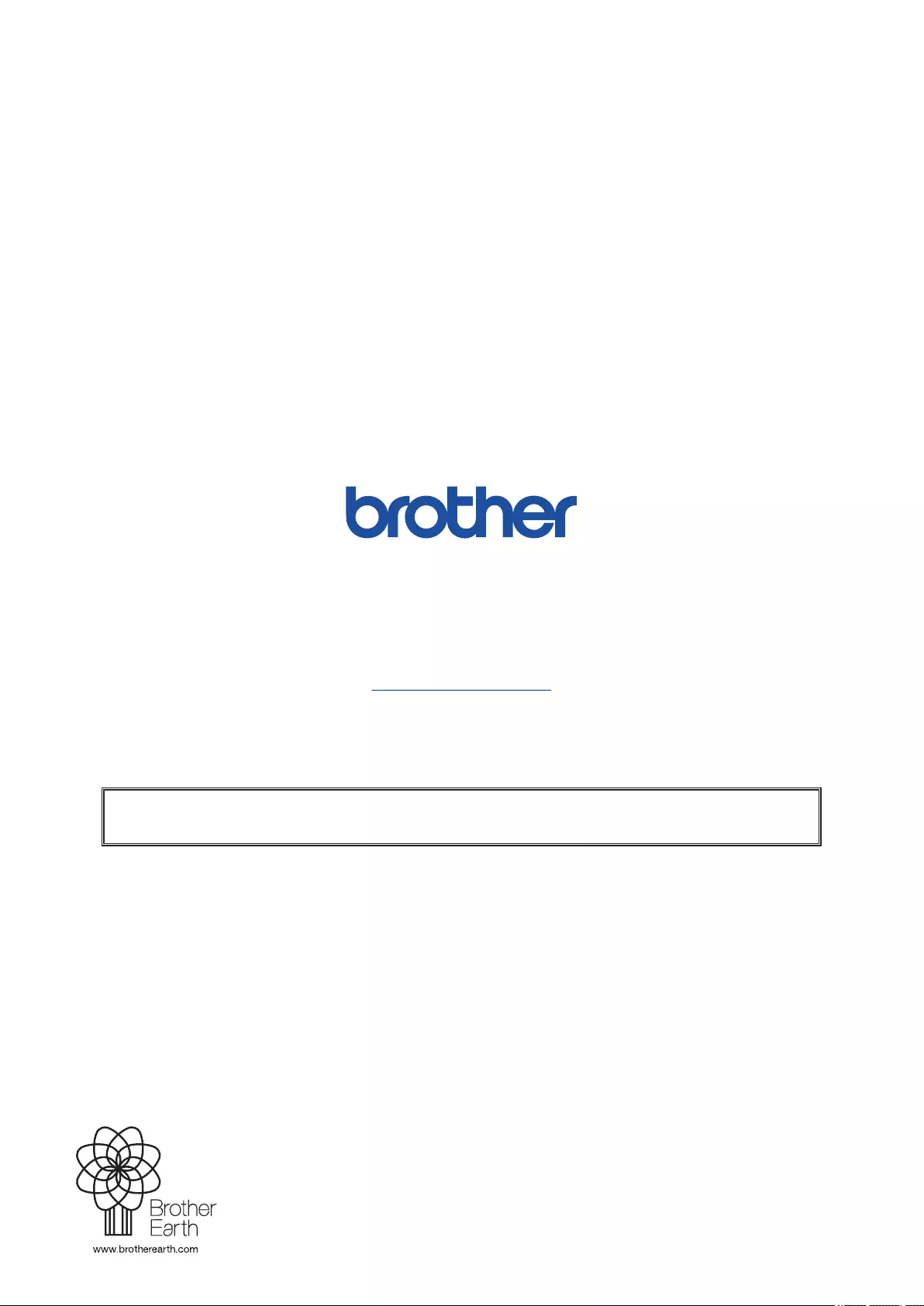
Brother International Corporation
200 Crossing Boulevard
P.O. Box 6911
Bridgewater, NJ 08807-0911 USA
Brother International Corporation (Canada) Ltd.
1 rue Hôtel de Ville,
Dollard-des-Ormeaux, QC, Canada H9B 3H6
Visit us on the World Wide Web
www.brother.com
These machines are approved for use in the country of purchase only. Local Brother companies or
their dealers will support only machines purchased in their own countries.
USA/CAN
Version B
























































